My most current blog entry:
Entries in Thai Buddhist Wat (13)
Rural Thai Temple Loi Kratong Celebration
 Saturday, December 26, 2020 at 2:05PM
Saturday, December 26, 2020 at 2:05PM  A young couple setting their kratong to float into Klong Ha (canal 5). Loi Kratong is a wonderful occasion in Thailand . . . everyone participates.
A young couple setting their kratong to float into Klong Ha (canal 5). Loi Kratong is a wonderful occasion in Thailand . . . everyone participates. Driving home from an evening of testing at my local drag strip, I noticed many cars parked near the rural canalside Buddhist temple. So I stopped to take a look.
Driving home from an evening of testing at my local drag strip, I noticed many cars parked near the rural canalside Buddhist temple. So I stopped to take a look. I parked and walked across a narrow bridge toward the lights in the distance.
I parked and walked across a narrow bridge toward the lights in the distance. I entered the temple grounds through a 'side entrance' . . . lots of motorcycles parked.
I entered the temple grounds through a 'side entrance' . . . lots of motorcycles parked. Although it was a festival, a trampoline was the only amusement here for the kids in this rural location.
Although it was a festival, a trampoline was the only amusement here for the kids in this rural location. Once inside, I joined the crowd of rural Thai folks enjoying the evening out.
Once inside, I joined the crowd of rural Thai folks enjoying the evening out. And what the people had come for was to stroll about the temple grounds eating various Thai treats, watching presentations and dancing on a stage, meet with the Buddhist monks for blessings, make a donation to the temple, to purchase or make their own kratong, and to launch their kratong into the klong (canal).
And what the people had come for was to stroll about the temple grounds eating various Thai treats, watching presentations and dancing on a stage, meet with the Buddhist monks for blessings, make a donation to the temple, to purchase or make their own kratong, and to launch their kratong into the klong (canal). There were rows and rows of food stalls set up for the evening.
There were rows and rows of food stalls set up for the evening. As always in Thailand, were was every imaginable delicious thing to eat on sale . . . readymade dinner packs . . . .
As always in Thailand, were was every imaginable delicious thing to eat on sale . . . readymade dinner packs . . . . What would a festival be without deep fried frog?
What would a festival be without deep fried frog? The deep-fried bug snack stall was doing a brisk business.
The deep-fried bug snack stall was doing a brisk business. The fried bug stall had two kinds of grasshoppers: these 'type A' grasshoppers, and . . .
The fried bug stall had two kinds of grasshoppers: these 'type A' grasshoppers, and . . . . . . and these 'type B' grasshoppers. Take your pick.
. . . and these 'type B' grasshoppers. Take your pick. If you were looking to munch on something a little more crunchy, there were the deep-fried june bugs on offer in green and black.
If you were looking to munch on something a little more crunchy, there were the deep-fried june bugs on offer in green and black. If crispy bugs weren't to your liking, there was also the chewy option: deep-fried and highly spiced grubs. Mmmmmmm!
If crispy bugs weren't to your liking, there was also the chewy option: deep-fried and highly spiced grubs. Mmmmmmm! For this festival, the food stalls had been erected in and among the temple buildings and large Buddha statuary.
For this festival, the food stalls had been erected in and among the temple buildings and large Buddha statuary. At the base of this Buddha statue many local ladies were crafting kratongs for purchase to benefit the temple.
At the base of this Buddha statue many local ladies were crafting kratongs for purchase to benefit the temple. An onsite workshop of kratong production.
An onsite workshop of kratong production. I purchased one of these kratongs made with a banana stalk base. "A krathong is traditionally a small floating container fashioned of leaves which is made to hold a small portion of goods like a traditional Thai dish (such as hor mok) or dessert. The traditional krathong used for floating at the festival are made from a slice of a banana tree trunk or a spider lilly plant. Modern krathongs are more often made of bread or Styrofoam. A bread krathong will disintegrate after a few days and can be eaten by fish. Banana stalk krathongs are also biodegradable, but Styrofoam krathongs are increasingly banned, as they pollute rivers and oceans." (**) There were NO kratongs for sale at this temple with Styrofoam bases . . . I was very happy to see that.
I purchased one of these kratongs made with a banana stalk base. "A krathong is traditionally a small floating container fashioned of leaves which is made to hold a small portion of goods like a traditional Thai dish (such as hor mok) or dessert. The traditional krathong used for floating at the festival are made from a slice of a banana tree trunk or a spider lilly plant. Modern krathongs are more often made of bread or Styrofoam. A bread krathong will disintegrate after a few days and can be eaten by fish. Banana stalk krathongs are also biodegradable, but Styrofoam krathongs are increasingly banned, as they pollute rivers and oceans." (**) There were NO kratongs for sale at this temple with Styrofoam bases . . . I was very happy to see that. In addition to having kratongs for sale, there was a "Best Kratong" contest! Here are a few of the entrants:
In addition to having kratongs for sale, there was a "Best Kratong" contest! Here are a few of the entrants: This entry in the "Best Kratong Contest" was very beautiful.
This entry in the "Best Kratong Contest" was very beautiful. My favorite to win the contest: the COVID-19-themed kratong. Yes, let's send the virus down the river along with our best wishes for a better life in the future.
My favorite to win the contest: the COVID-19-themed kratong. Yes, let's send the virus down the river along with our best wishes for a better life in the future. The families would eventually wait their turn to enter a temple structure to pay respect to the Buddha.
The families would eventually wait their turn to enter a temple structure to pay respect to the Buddha. Buddhism is a living "religion" in Thailand. Families carry out ancient rituals still today.
Buddhism is a living "religion" in Thailand. Families carry out ancient rituals still today. Small donations are placed on these bushes like leaves. Sweet.
Small donations are placed on these bushes like leaves. Sweet. Just wandering around the wat to enjoy the Buddha imagery.
Just wandering around the wat to enjoy the Buddha imagery. The 'Wat festival' is not only a celebration of Loi Krathong and a fund raising event for the temple, it is also a community event. A stage is set up for local rural folk to share cultural and artistic expression, like this troupe of elderly traditional Thai dancers.
The 'Wat festival' is not only a celebration of Loi Krathong and a fund raising event for the temple, it is also a community event. A stage is set up for local rural folk to share cultural and artistic expression, like this troupe of elderly traditional Thai dancers. The traditional Thai dance group being publicly acknowledged and praised.
The traditional Thai dance group being publicly acknowledged and praised.  Community leaders and event organizers acknowledged by the area political leader.
Community leaders and event organizers acknowledged by the area political leader. I took my new kratong (float) toward the canal to launch it and was met with throngs of people now entering the Wat for the festival and launching their own kratongs. Notice everybody eating some delicious Thai snack or other.
I took my new kratong (float) toward the canal to launch it and was met with throngs of people now entering the Wat for the festival and launching their own kratongs. Notice everybody eating some delicious Thai snack or other. I arrived at the canal as the crowds poured in across the bridge.
I arrived at the canal as the crowds poured in across the bridge. A nice family photo just before launching their individual krathongs.
A nice family photo just before launching their individual krathongs. I pressed myself into this human mass to launch my own kratong, express my hopes for the coming year, and send respect to the Buddha.
I pressed myself into this human mass to launch my own kratong, express my hopes for the coming year, and send respect to the Buddha. Such a wonderful sight: a whole community collectively floating away the bad from last year and the hopes for the coming year.
Such a wonderful sight: a whole community collectively floating away the bad from last year and the hopes for the coming year. And one giant krathong for the entire community and Wat.
And one giant krathong for the entire community and Wat. The whole scene brightly lit up in fantastic colorful neon arrays.
The whole scene brightly lit up in fantastic colorful neon arrays. Reflect light on Klong 5. Magic.
Reflect light on Klong 5. Magic. Extraordinary reflection!
Extraordinary reflection! When I left I crossed back over the bridge and saw this amazing scene!
When I left I crossed back over the bridge and saw this amazing scene! Looking across the canal to the other side, I noticed just as many people there crowding to float their kratongs.
Looking across the canal to the other side, I noticed just as many people there crowding to float their kratongs. Looking back under the bridge to the Wat side of the canal . . . many, many people out joining in an ancient Thai cultural tradition.
Looking back under the bridge to the Wat side of the canal . . . many, many people out joining in an ancient Thai cultural tradition. My last look back at the the rural Loi Krathong festival . . . way out in a dark Thai farmland night.
My last look back at the the rural Loi Krathong festival . . . way out in a dark Thai farmland night.First Post-Lockdown Jaunt: Two Days in Rural Khao Yai!
 Wednesday, June 3, 2020 at 2:18PM
Wednesday, June 3, 2020 at 2:18PM 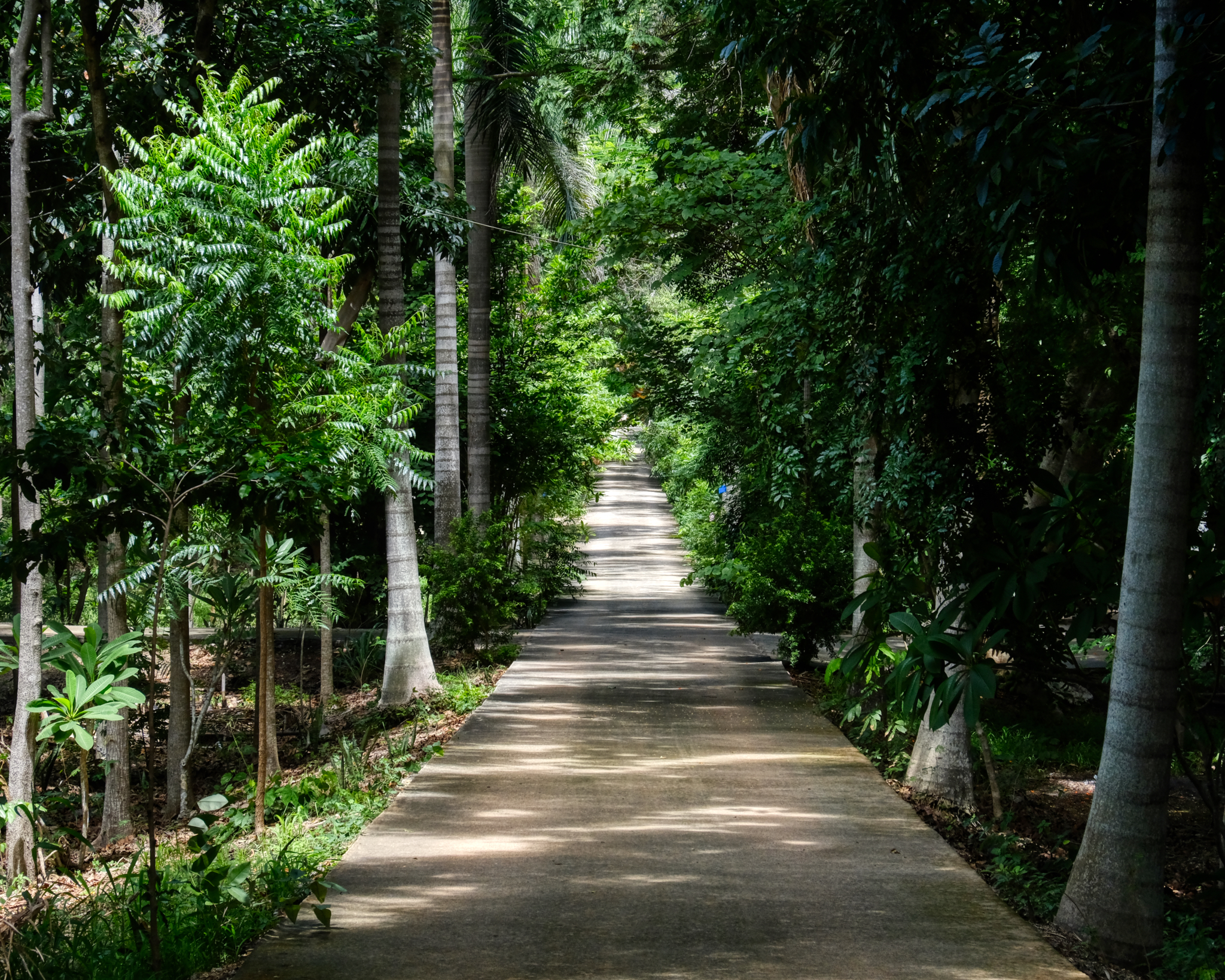
Khao Yai (literally, "large mountain" in the Thai language) is a region of Thailand about a three hour drive northeast of Bangkok. It is thought of as an area with a national park, mountains, and nature, although the mountains are really just tall hills. There is a lot to see in this part of rural Thailand . . . and one very special temple: Wat PA Phrom Prathan (last half of this entry).
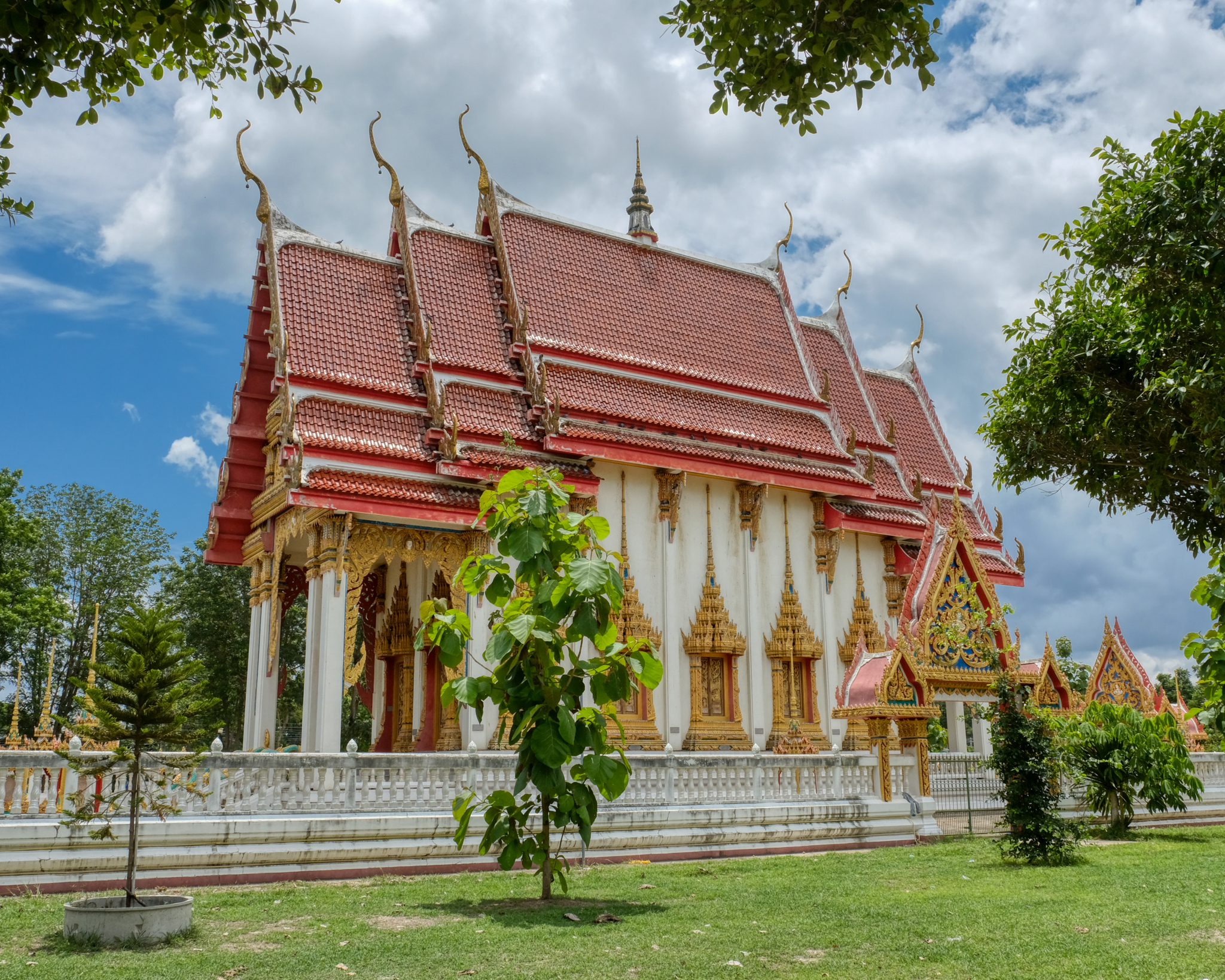 While my wife played golf with her golfing gang, I escaped to the small back roads. There are always Buddhist temples (wats) every 4-5 kilometers along almost every road in Thailand.
While my wife played golf with her golfing gang, I escaped to the small back roads. There are always Buddhist temples (wats) every 4-5 kilometers along almost every road in Thailand.
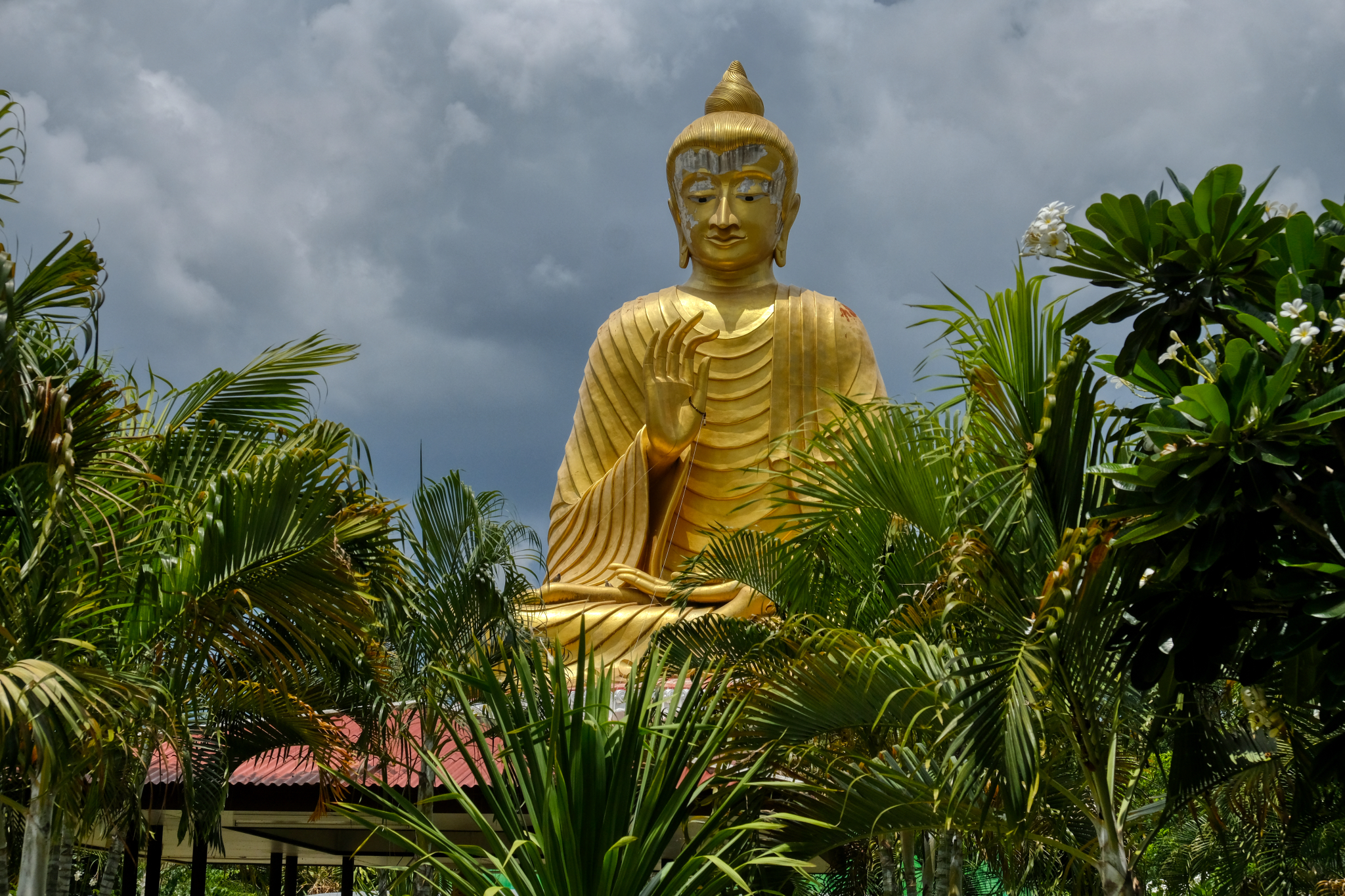 I stopped in at many of these roadside wats and walked around and took a few photos. I have lived in Thailand for a very long time and have been in literally many hundreds of these Thai wats.
I stopped in at many of these roadside wats and walked around and took a few photos. I have lived in Thailand for a very long time and have been in literally many hundreds of these Thai wats.
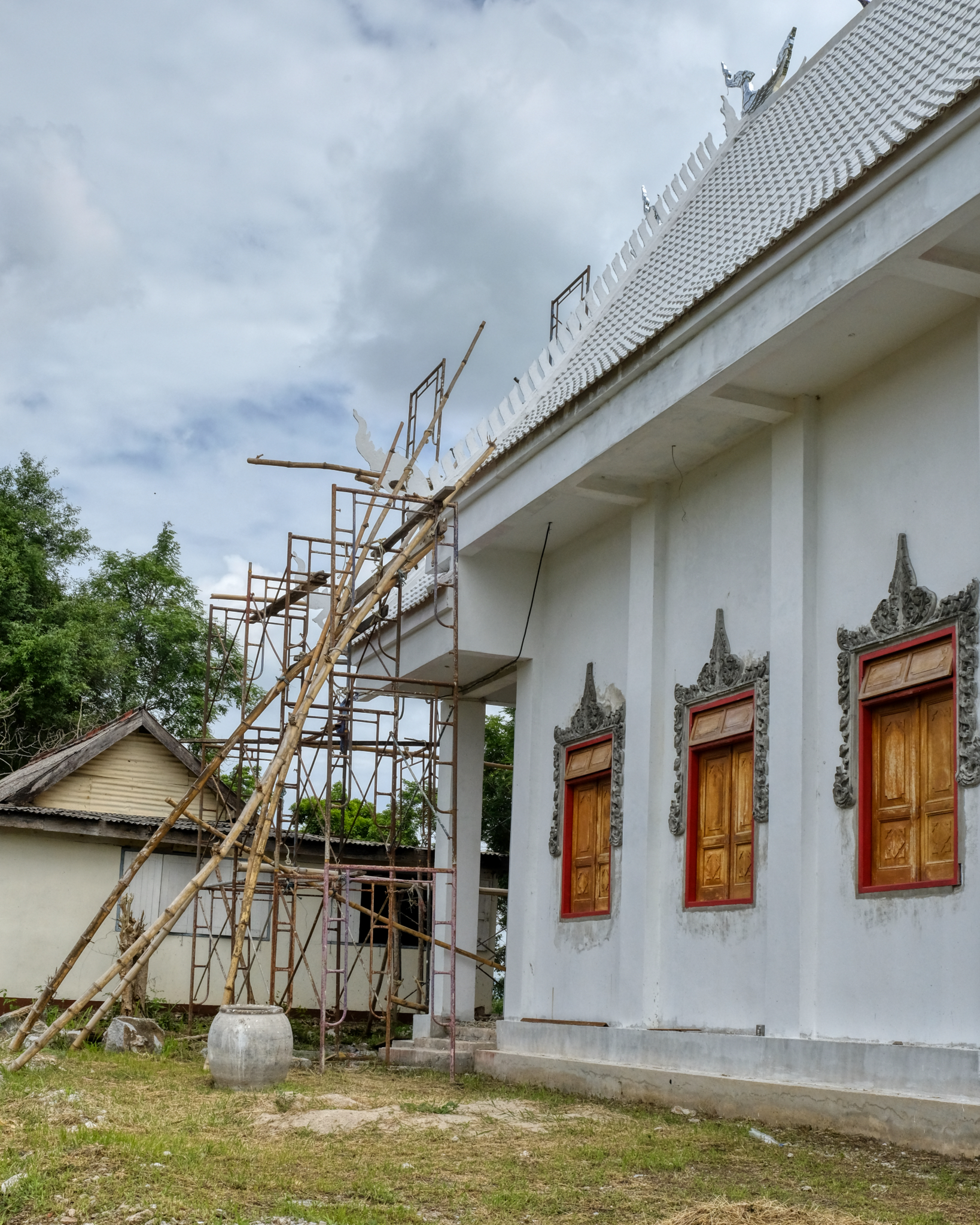 Rural Thai wats can be very similar, but there are always surprises and idiosyncrasies. This wat was in the process of building a new temple building.
Rural Thai wats can be very similar, but there are always surprises and idiosyncrasies. This wat was in the process of building a new temple building.
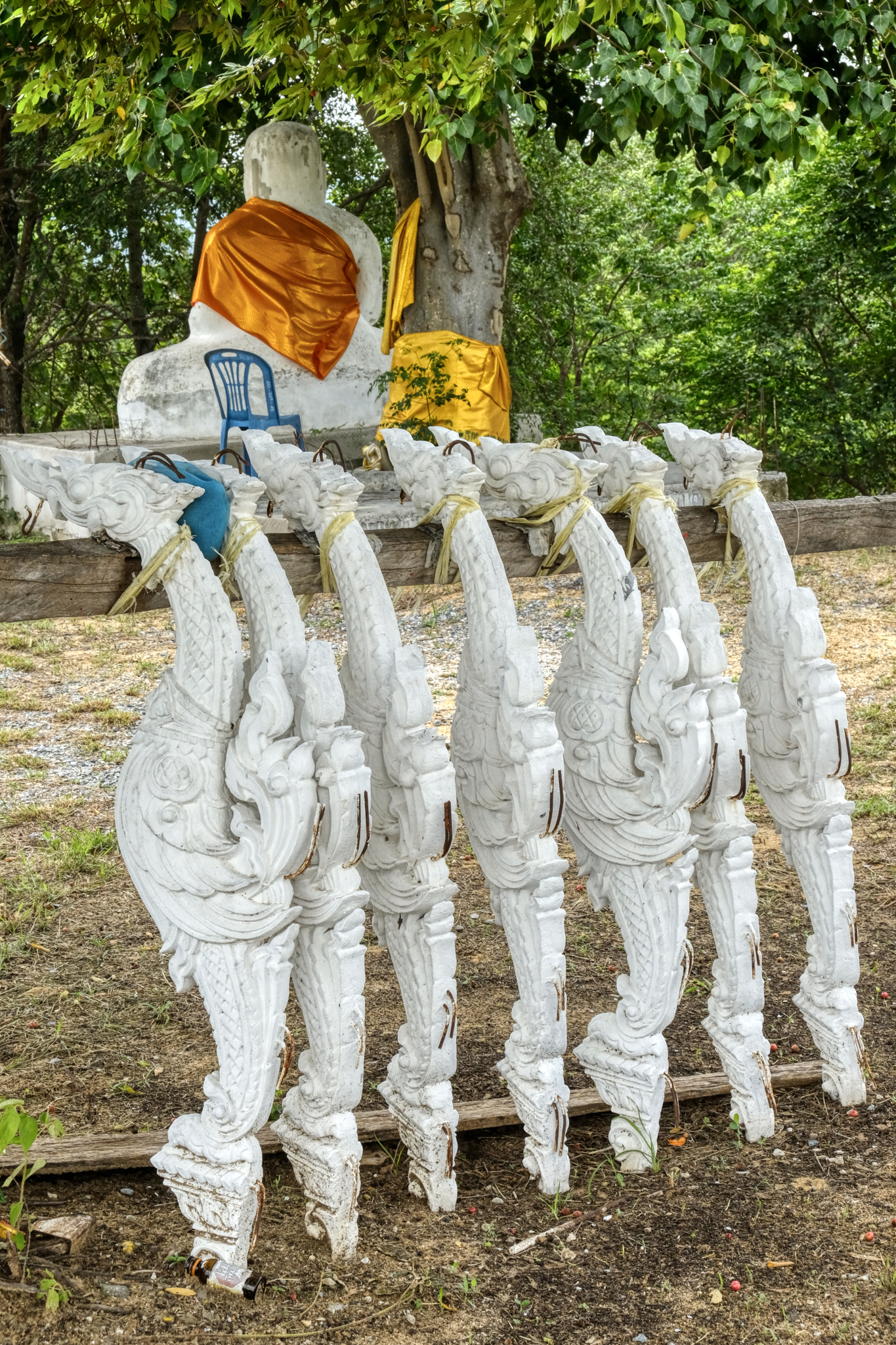 Pre cast decor waiting too be added to the exterior of the new wat structure.
Pre cast decor waiting too be added to the exterior of the new wat structure.
 This Buddha image was very unusual for Thailand! It seems more Japanese . . .
This Buddha image was very unusual for Thailand! It seems more Japanese . . .
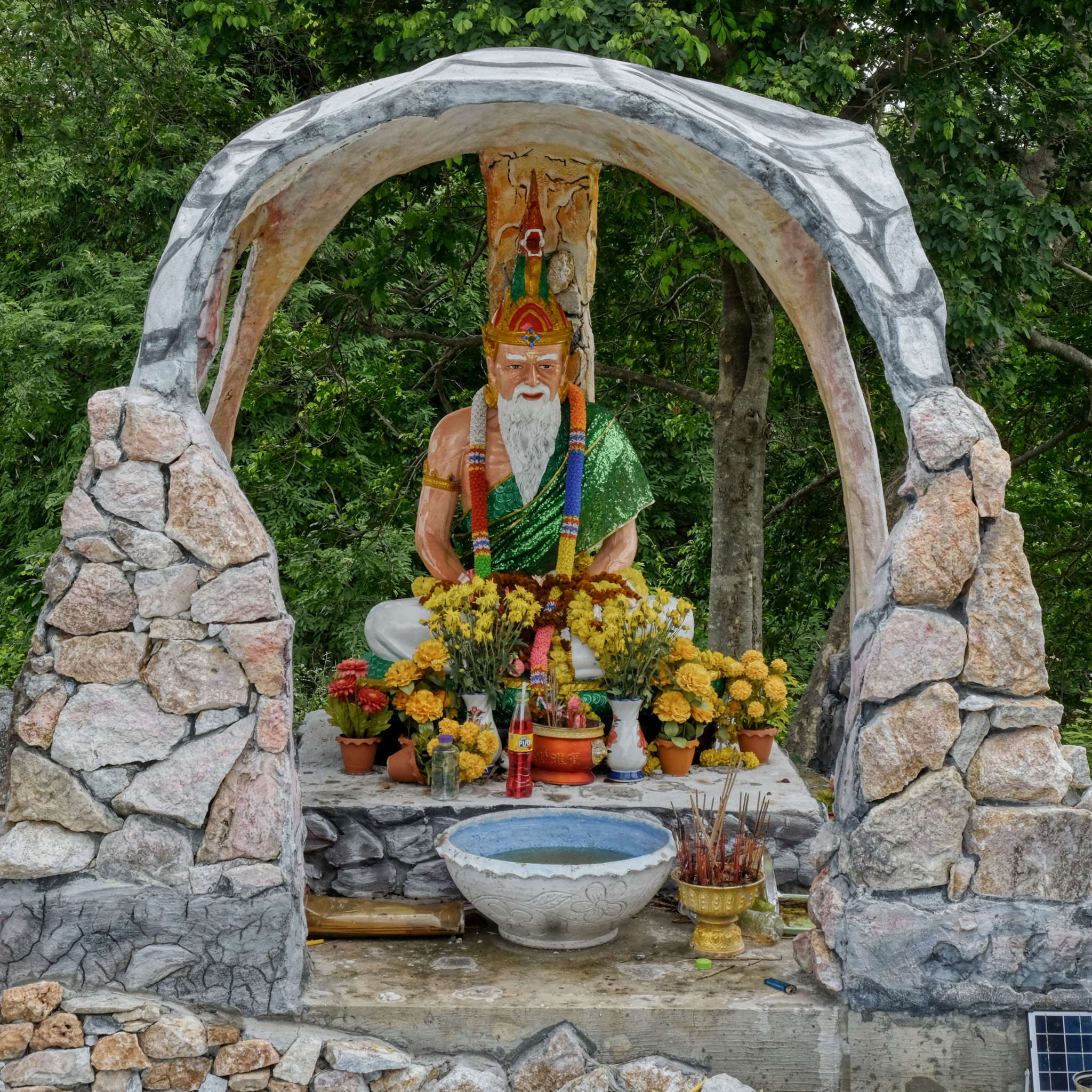 You have to remember that what is found inside a Buddhist temple was put there by the donors, not necessarily by monks who live there. This is a grotto dedicated to a Hindu guru. It is not uncommon to see Hindu gods and iconography in Thai wats.
You have to remember that what is found inside a Buddhist temple was put there by the donors, not necessarily by monks who live there. This is a grotto dedicated to a Hindu guru. It is not uncommon to see Hindu gods and iconography in Thai wats.
 Having been a sponsor of the construction of a wat myself, I am always excited to see a new wat being built . . . I especially enjoy the interiors . . . . a wonderfully naive Buddha statue awaiting a gold leaf covering, I assume.
Having been a sponsor of the construction of a wat myself, I am always excited to see a new wat being built . . . I especially enjoy the interiors . . . . a wonderfully naive Buddha statue awaiting a gold leaf covering, I assume.
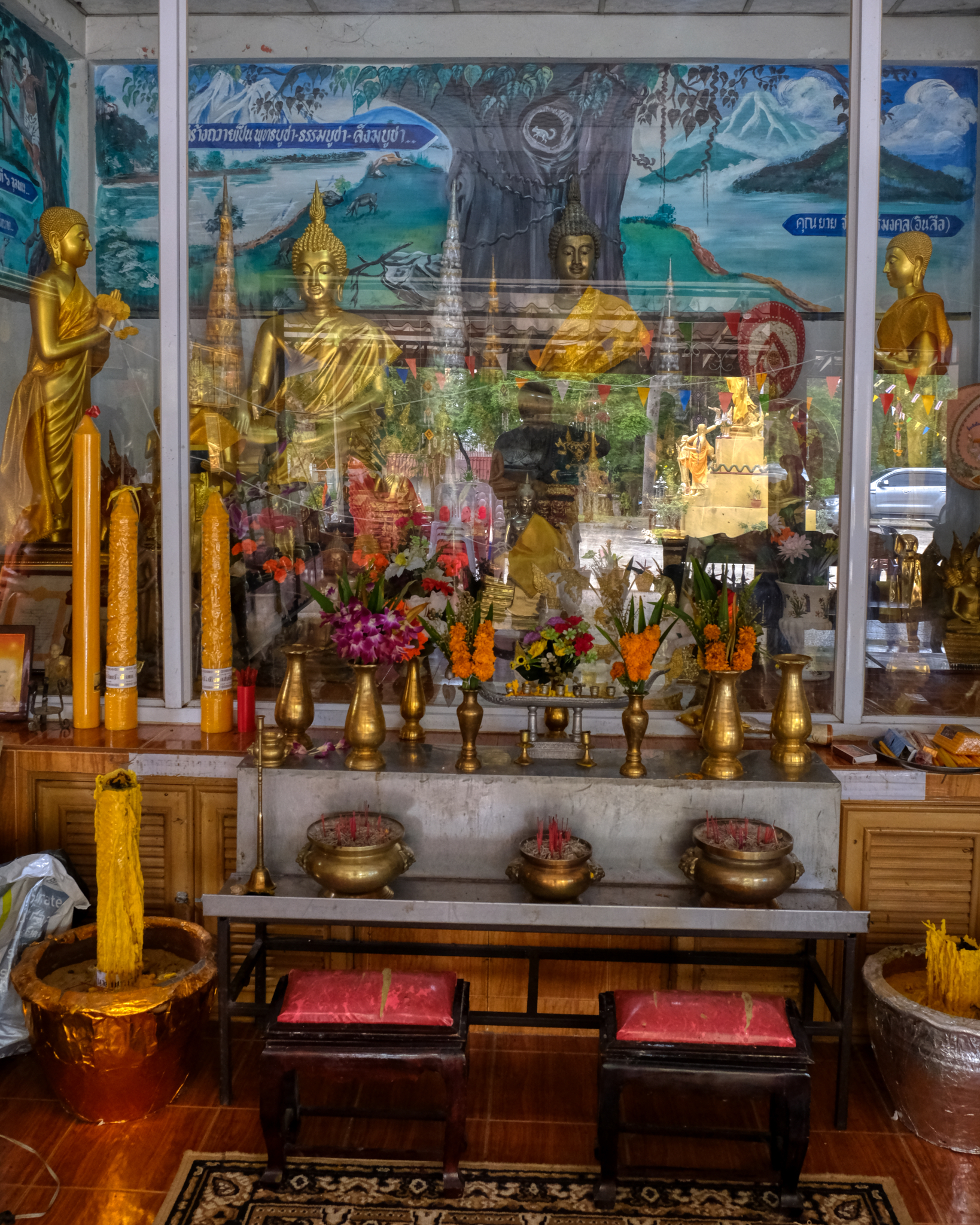 The wat did not have a proper temple building. This is the altar the new building will replace . . . just a covered portico.
The wat did not have a proper temple building. This is the altar the new building will replace . . . just a covered portico.
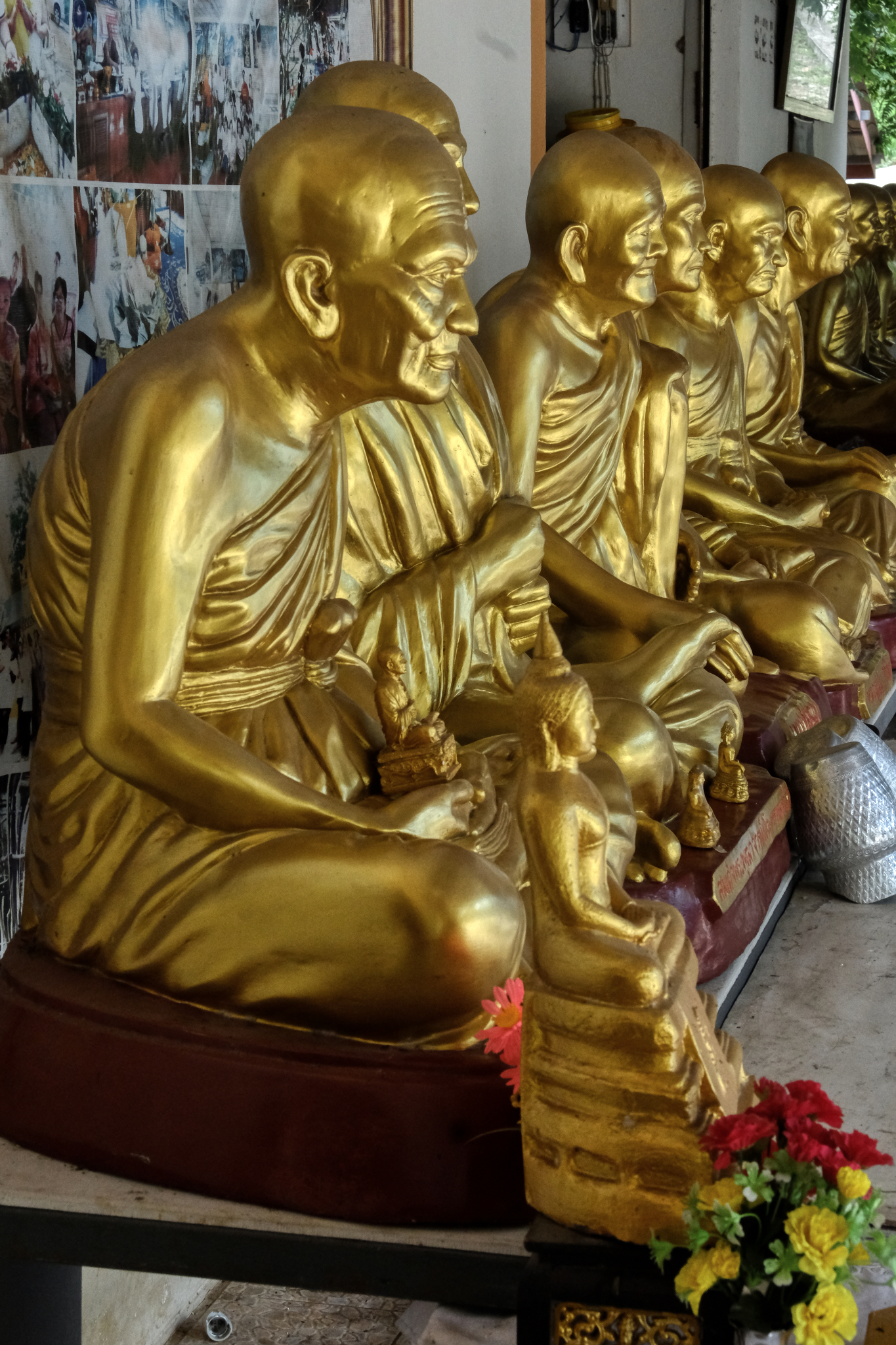 This wat had a line of gilded revered monk statues. Very powerful: These Guys Made It All The Way And You Can Too!
This wat had a line of gilded revered monk statues. Very powerful: These Guys Made It All The Way And You Can Too!
 There are non-Buddhist, but old spiritual practices to be found in Thai Buddhist temples. These are for use in a numerological system for fortune telling. Beautifully weathered.
There are non-Buddhist, but old spiritual practices to be found in Thai Buddhist temples. These are for use in a numerological system for fortune telling. Beautifully weathered.
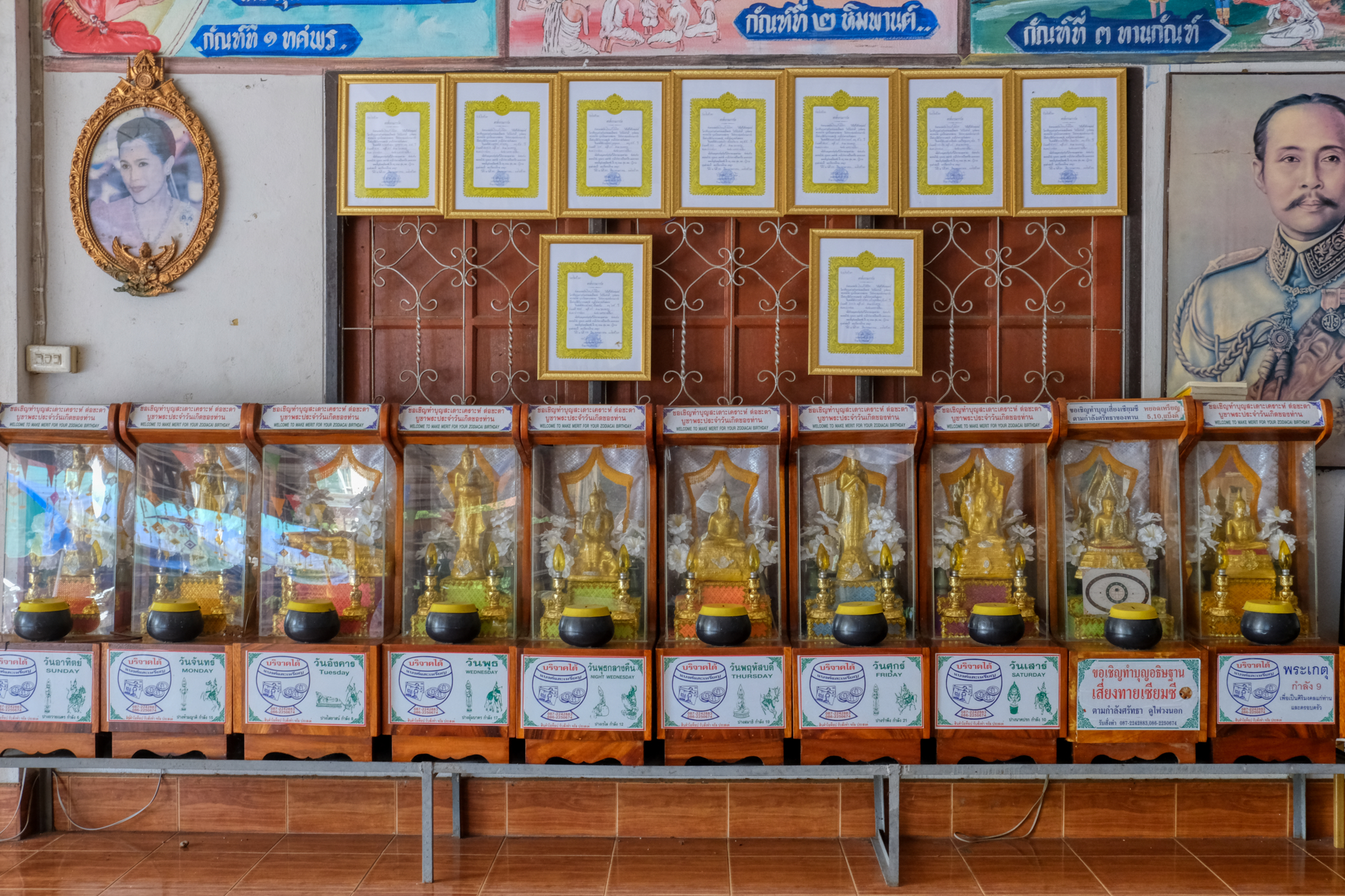 "Welcome to make merit for your Zodiacal Birthday" . . . . and a little something for the days of the week too!
"Welcome to make merit for your Zodiacal Birthday" . . . . and a little something for the days of the week too!
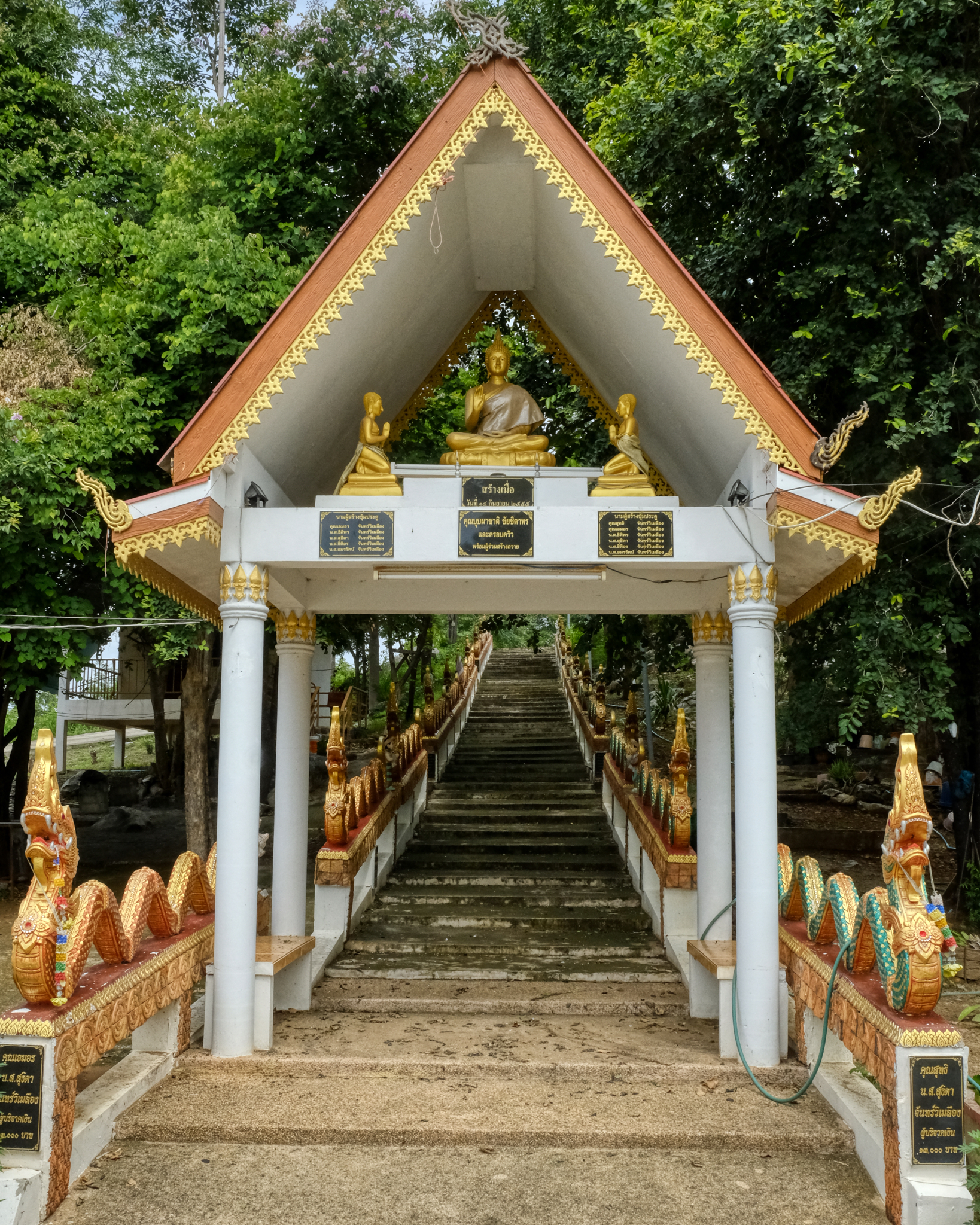 The hillside wat had a beautiful staircase up to the new wat location.
The hillside wat had a beautiful staircase up to the new wat location.
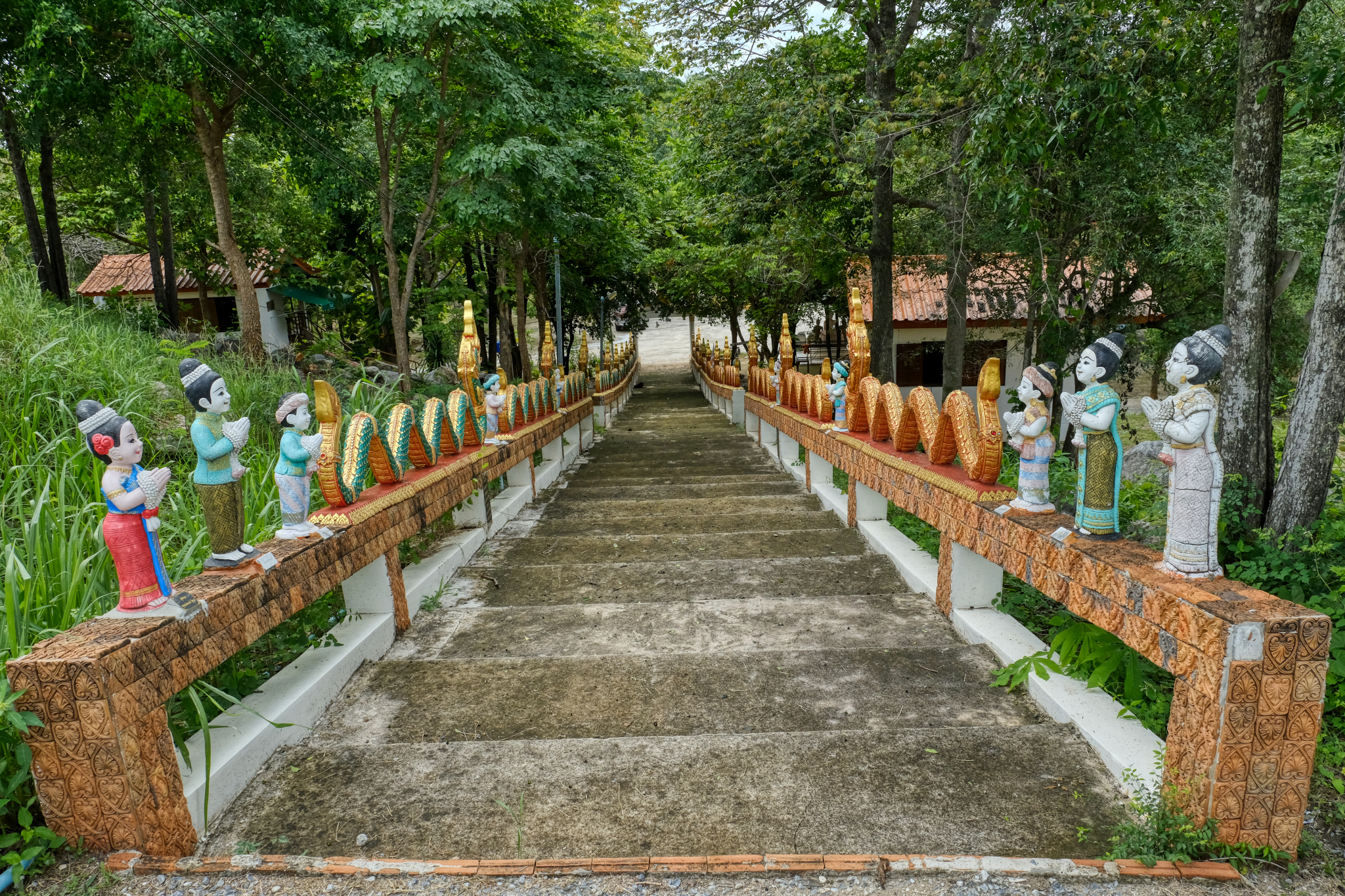 The same staircase looking down.
The same staircase looking down.
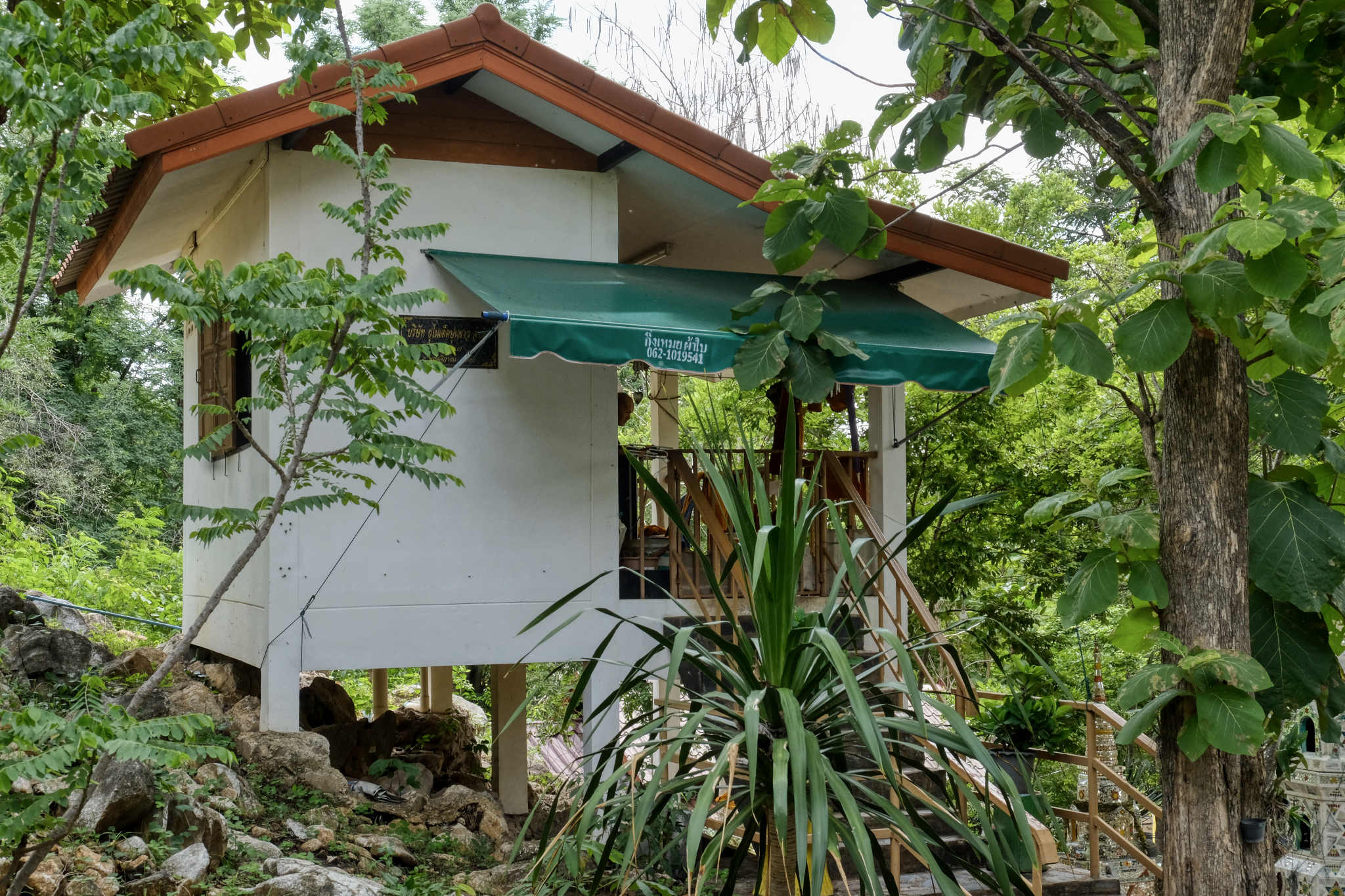 The monks live in a variety of accommodation: sometimes they have their own 'hut' or cabin, like this one. Sometimes these can be very nice, and sometimes very austere dormitories.
The monks live in a variety of accommodation: sometimes they have their own 'hut' or cabin, like this one. Sometimes these can be very nice, and sometimes very austere dormitories.
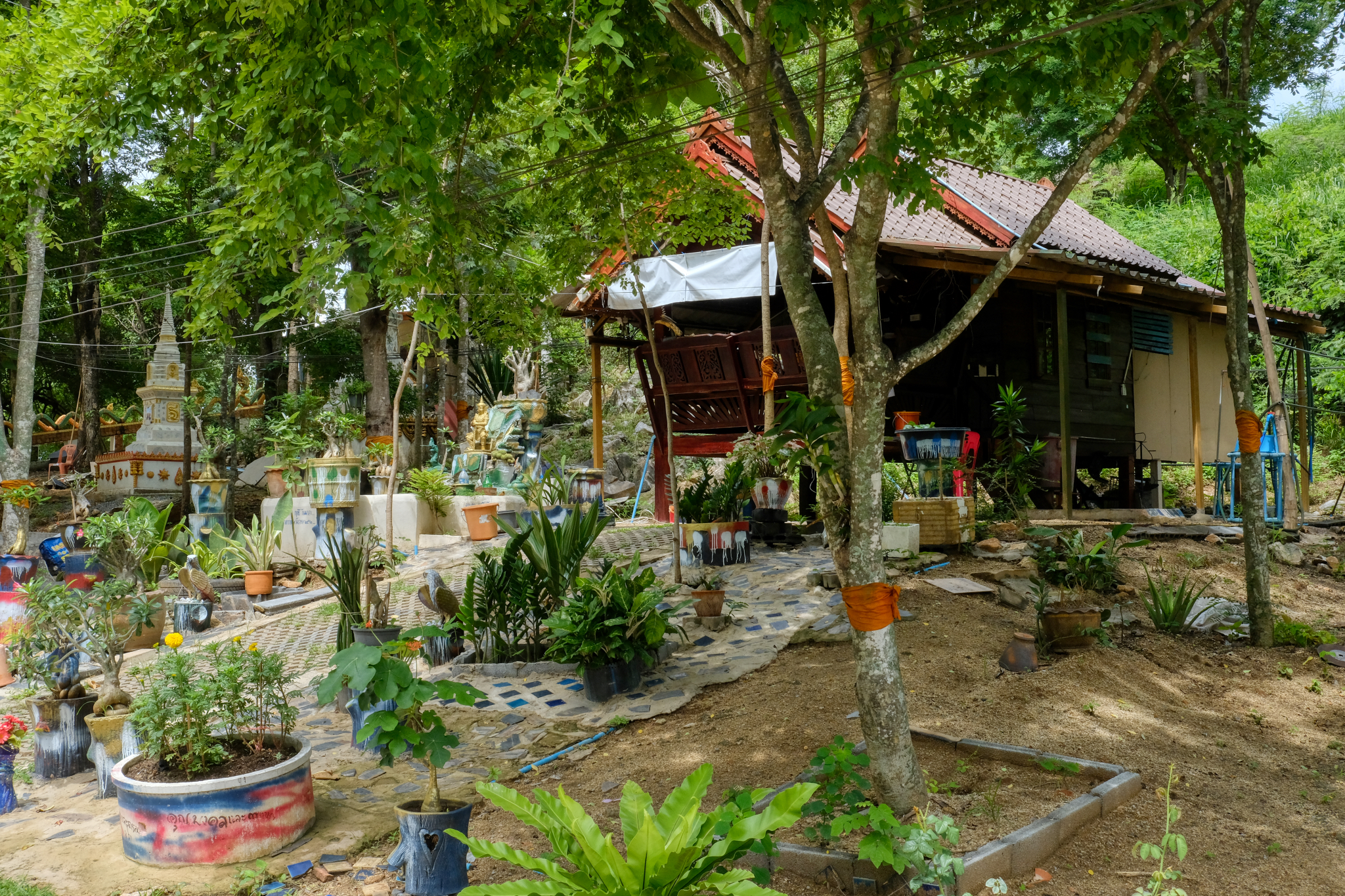 This monk keeps an interesting and cluttered front yard!
This monk keeps an interesting and cluttered front yard!
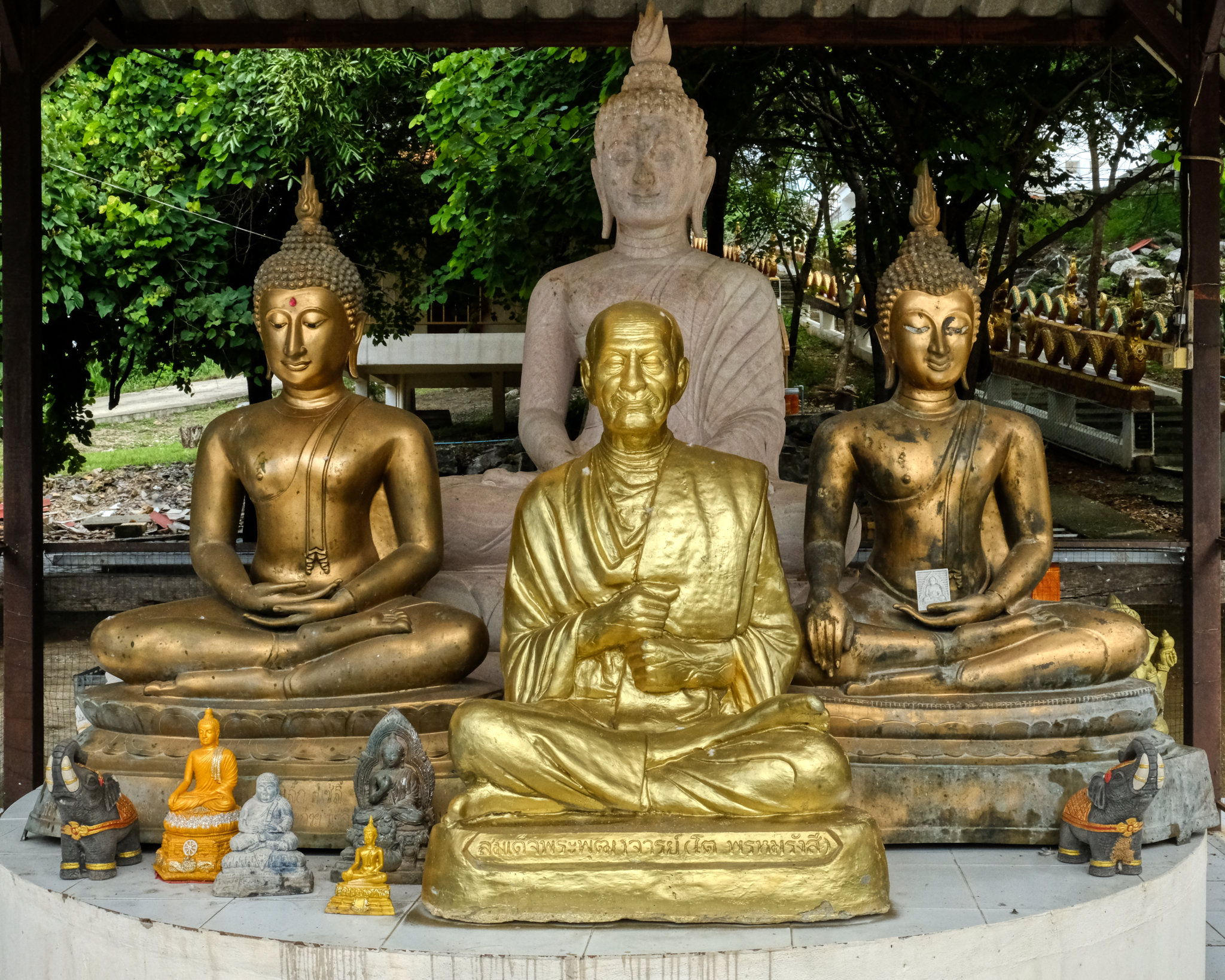 I found this wonderful altar in a sala out in a wooded area of the wat.
I found this wonderful altar in a sala out in a wooded area of the wat.
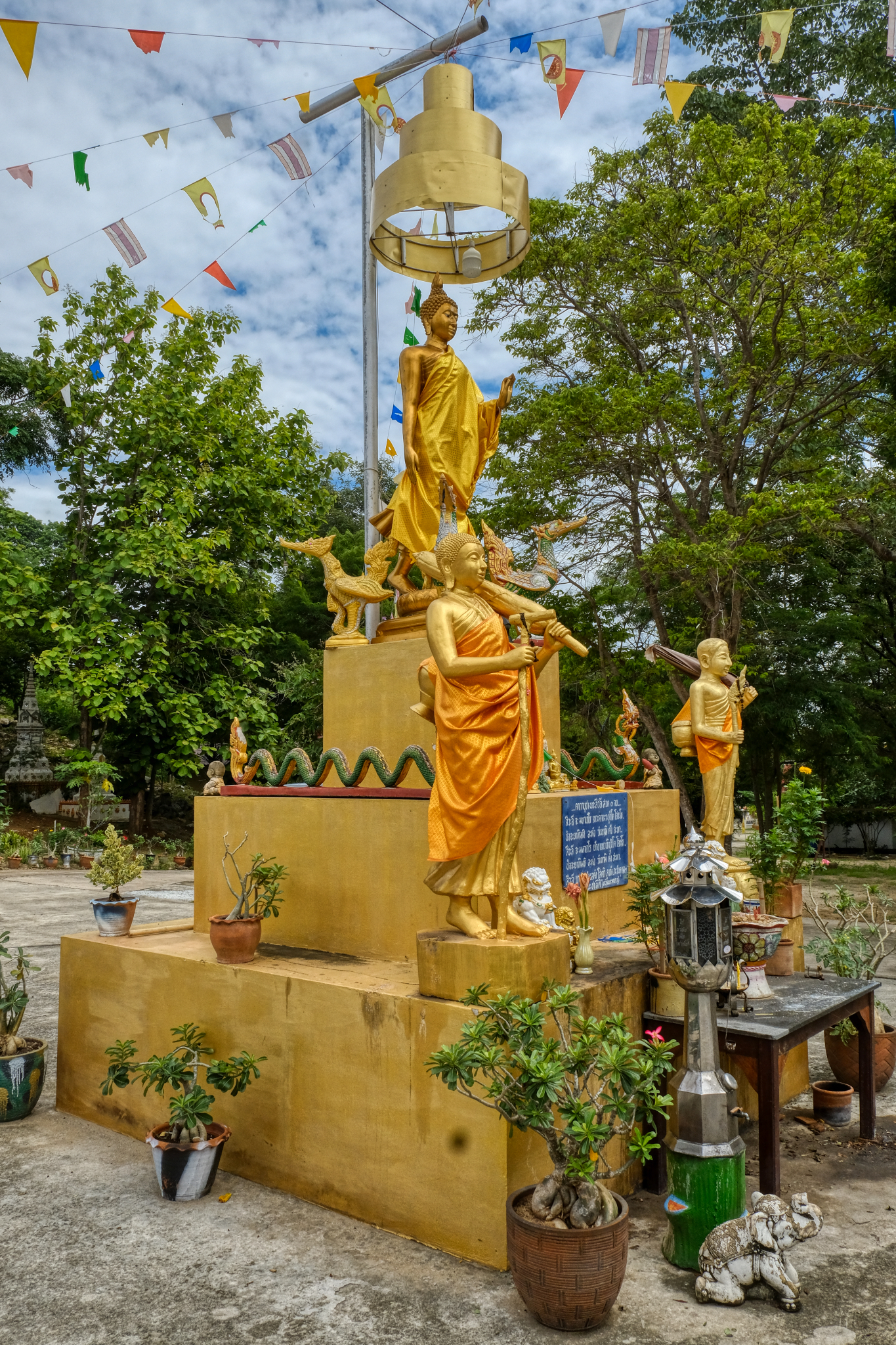 There always some amazing things to see on the grounds of Thai Buddhist wats!
There always some amazing things to see on the grounds of Thai Buddhist wats!
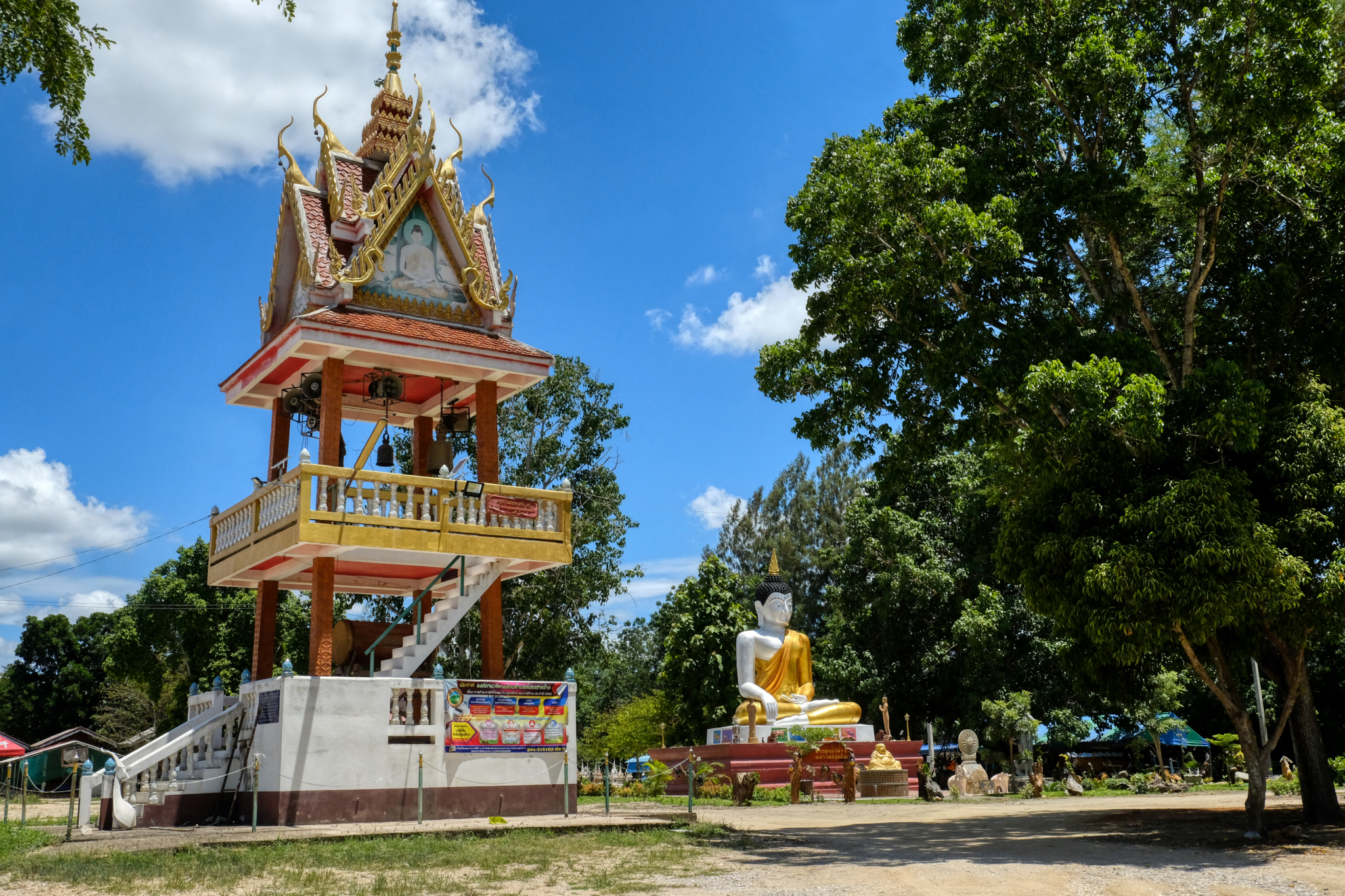 At another wat along a country lane . . . a bell and drum tower and very large outdoor Buddha.
At another wat along a country lane . . . a bell and drum tower and very large outdoor Buddha.
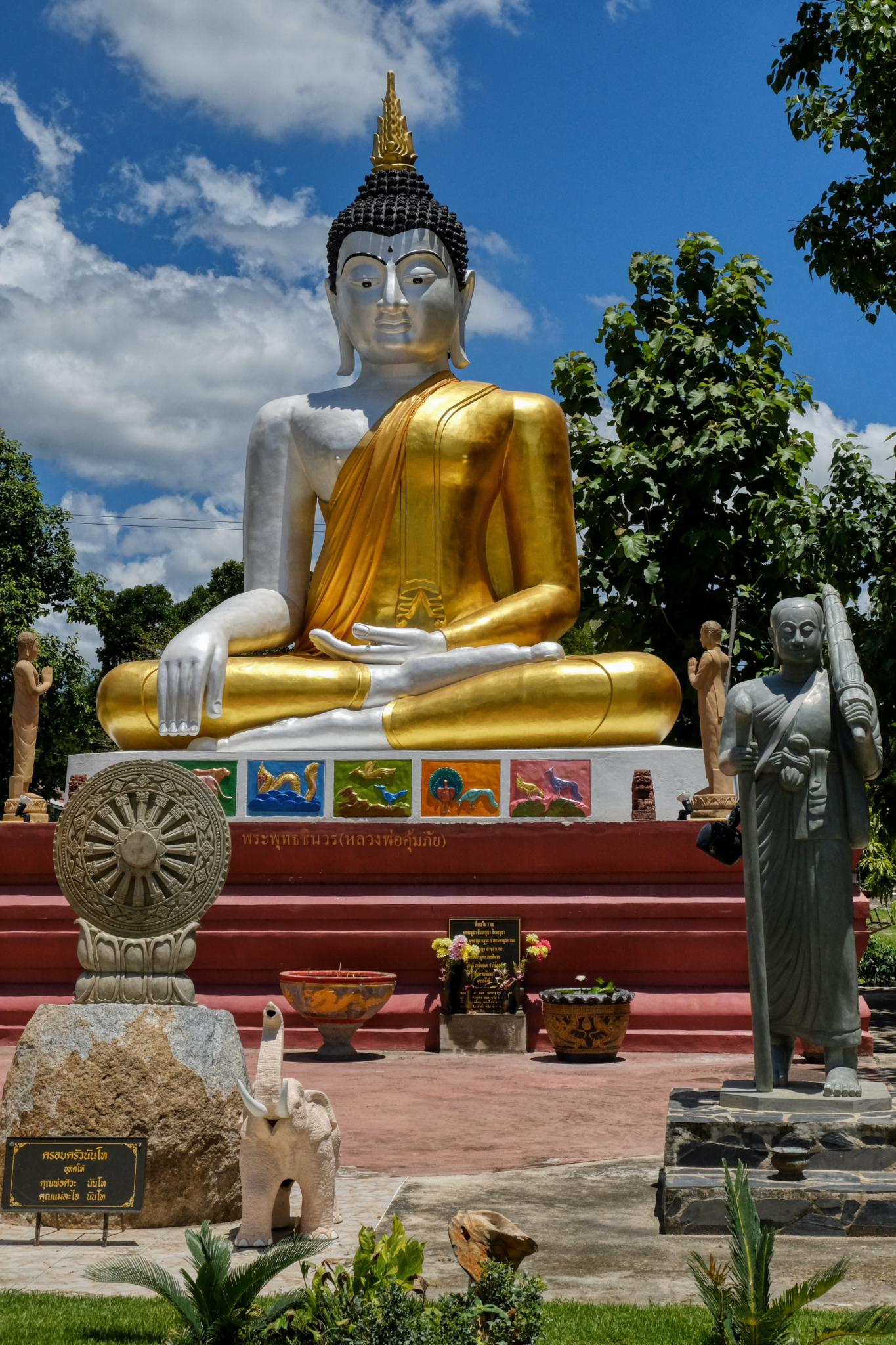 Such a serious-looking Buddha . . .
Such a serious-looking Buddha . . .
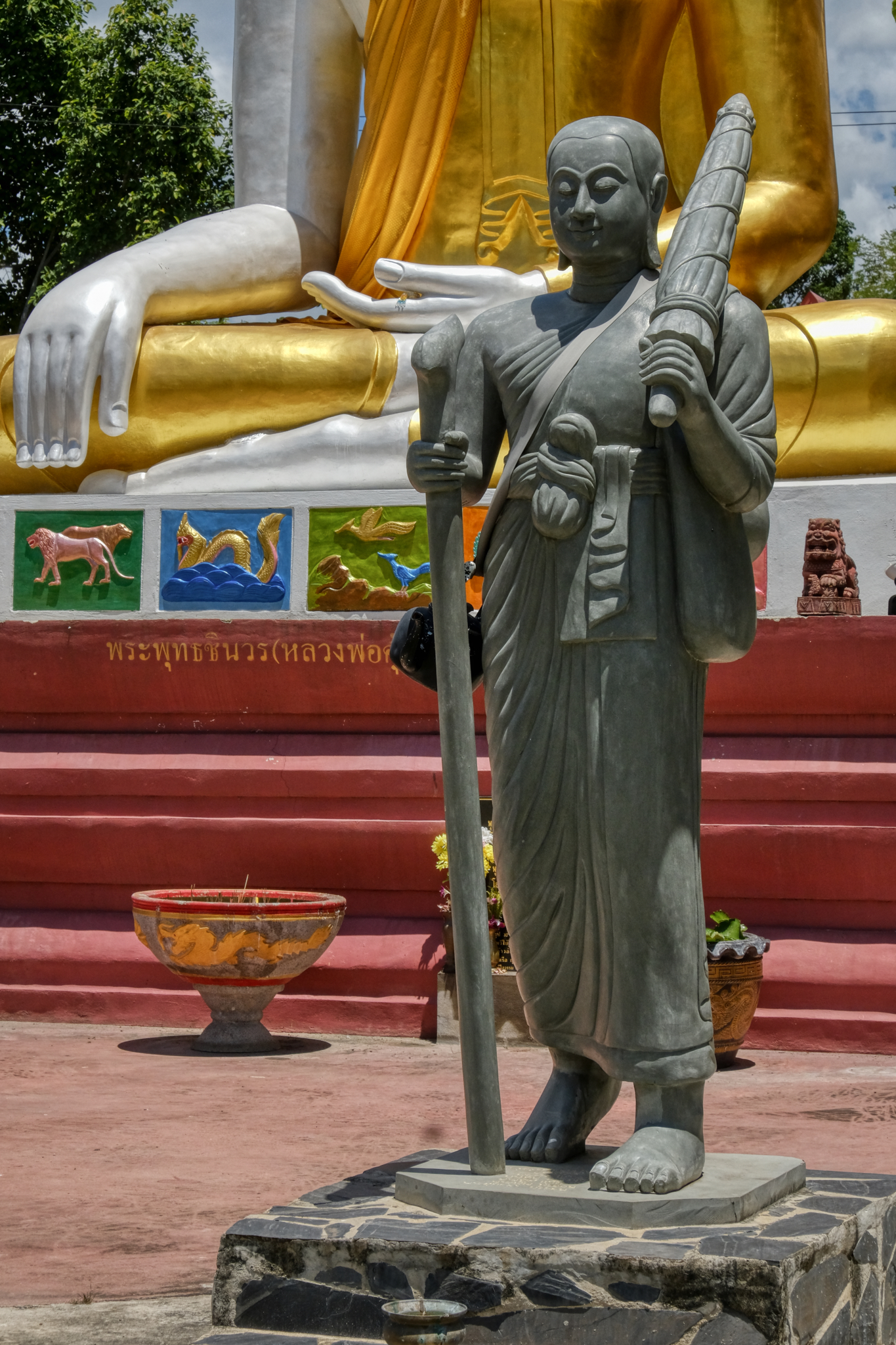 I loved this statue of the Buddha as a wondering monk . . . which he was.
I loved this statue of the Buddha as a wondering monk . . . which he was.
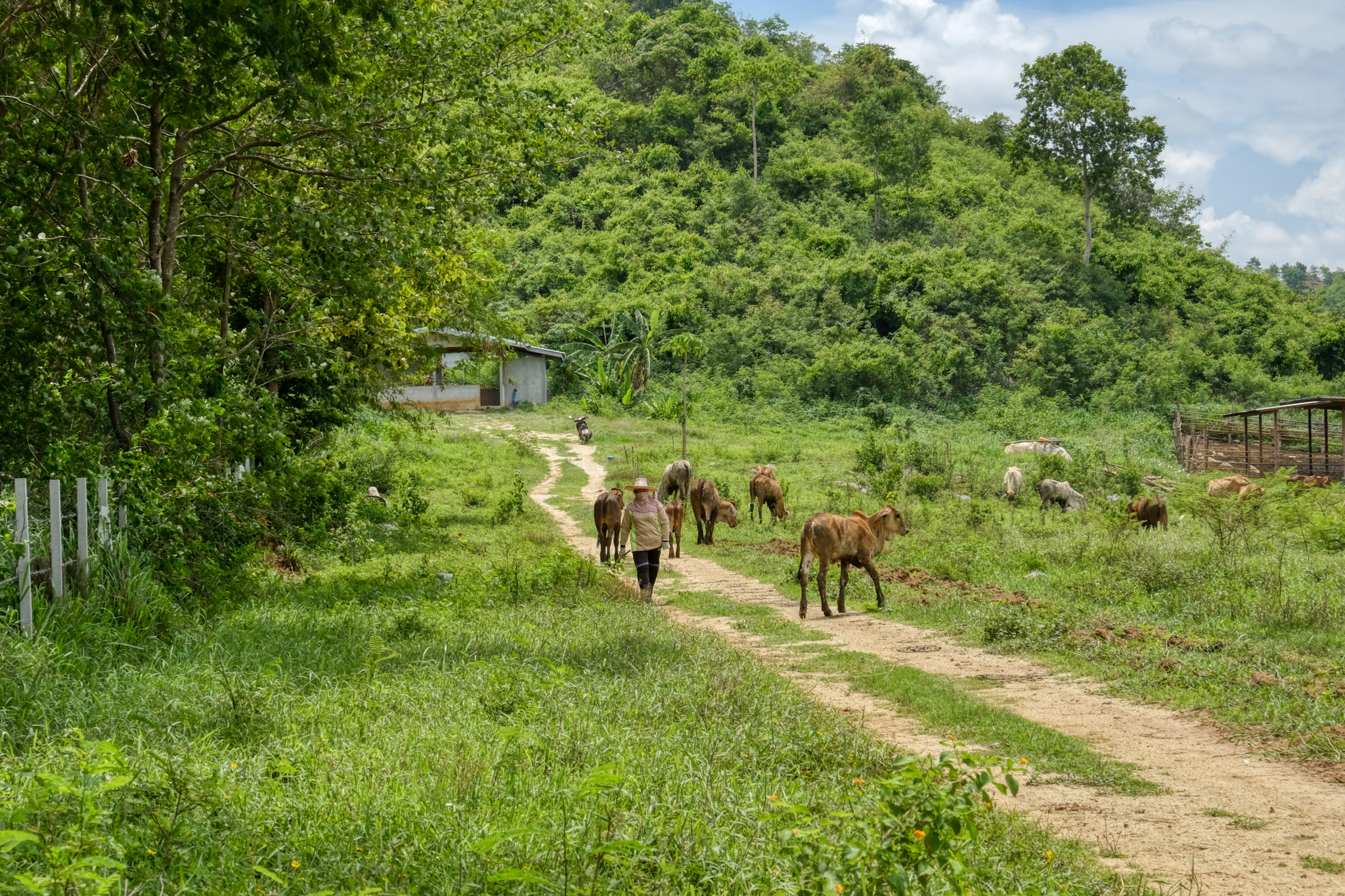 Sometimes my small rural lanes would come to a dead-end . . . as it did here in a farmers field.
Sometimes my small rural lanes would come to a dead-end . . . as it did here in a farmers field.
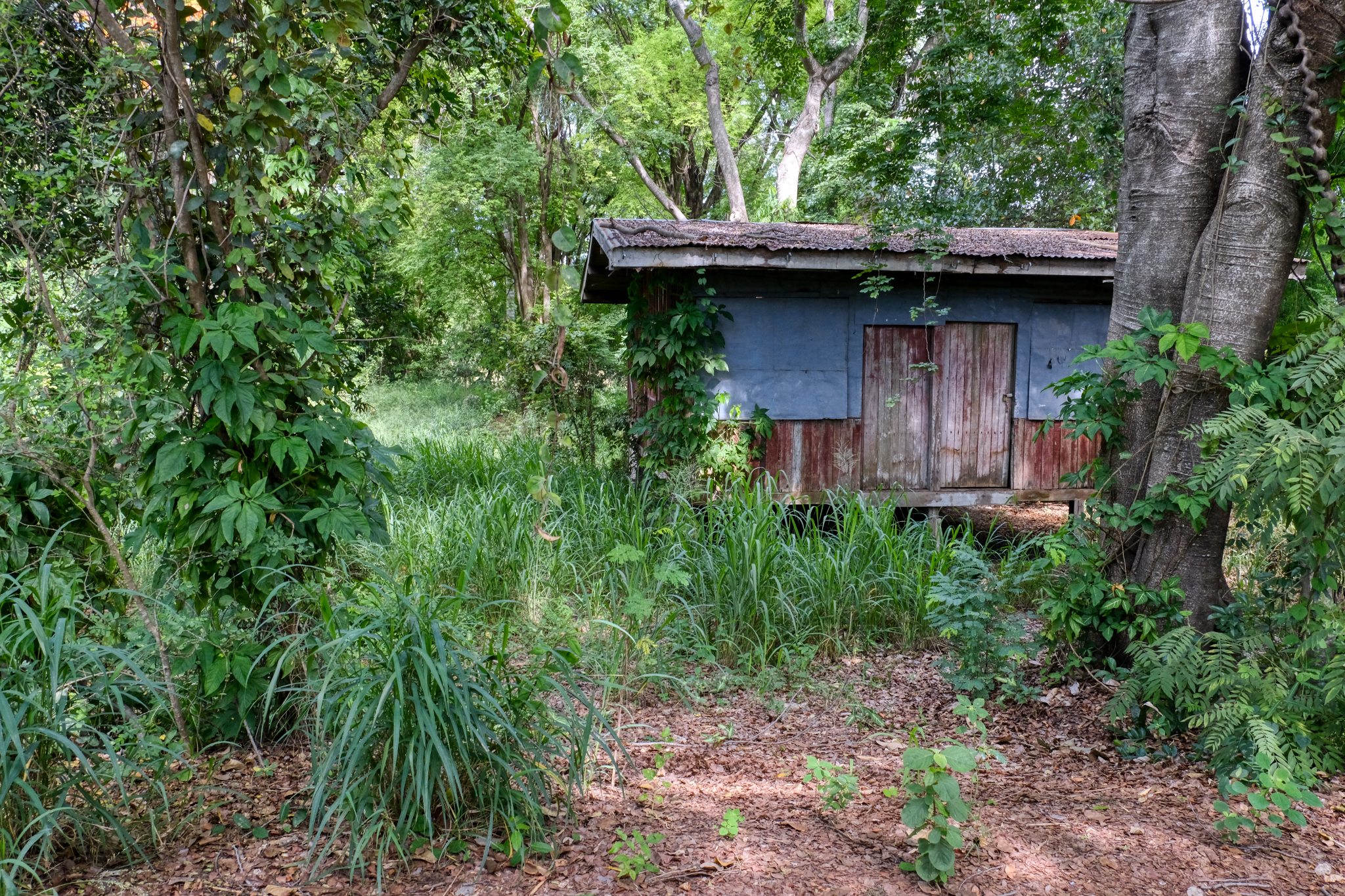 Many small work sheds dot the agricultural landscape in this part of Thailand.
Many small work sheds dot the agricultural landscape in this part of Thailand.
 It was a beautiful day to be out rambling in the Thai countryside.
It was a beautiful day to be out rambling in the Thai countryside.
 I stumbled upon this big greenhouse operation raising roses. Big agribusiness out in the deep forest.
I stumbled upon this big greenhouse operation raising roses. Big agribusiness out in the deep forest.
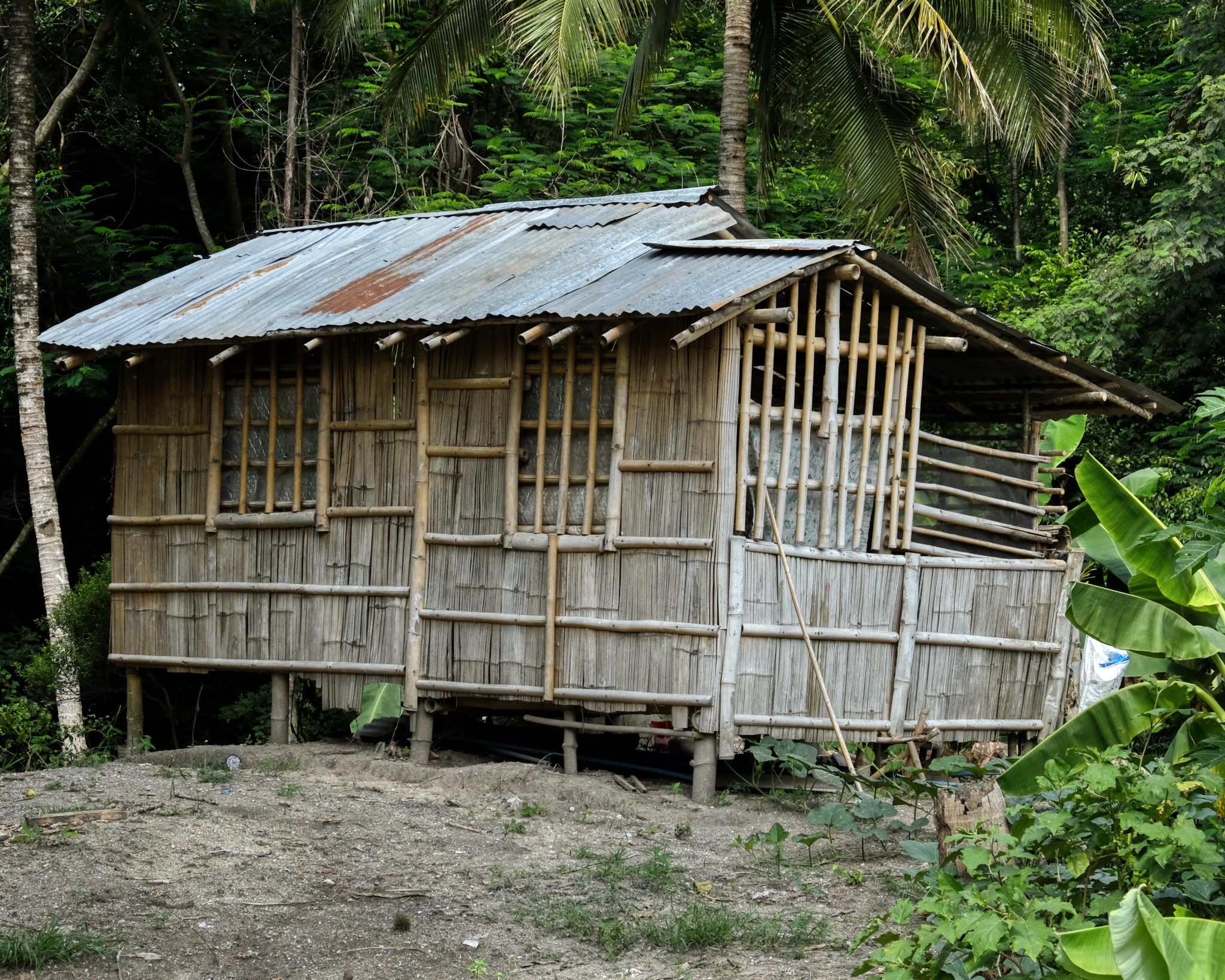 A bamboo pump house.
A bamboo pump house.
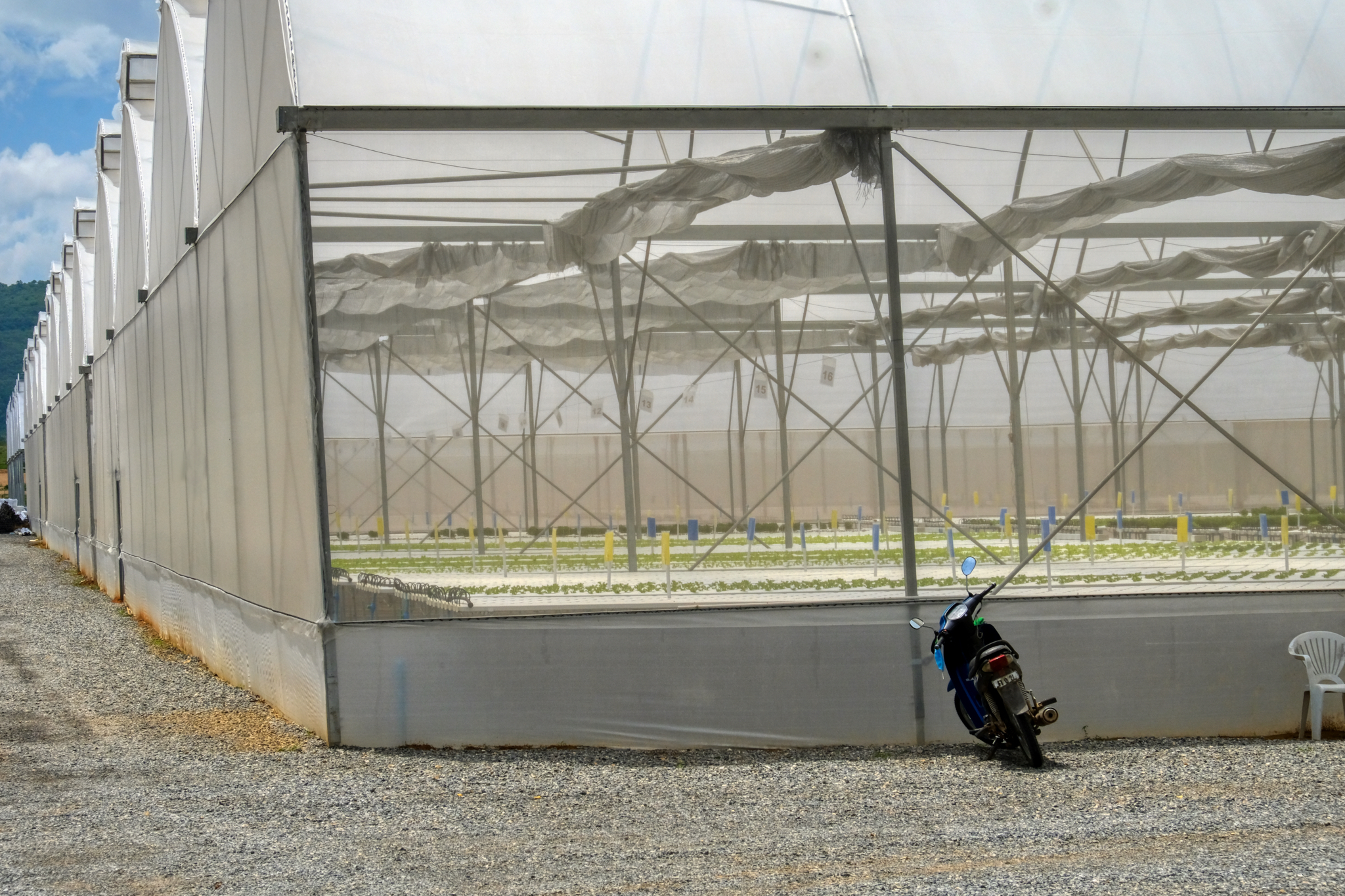 More rural agribusiness . . . lettuce.
More rural agribusiness . . . lettuce.
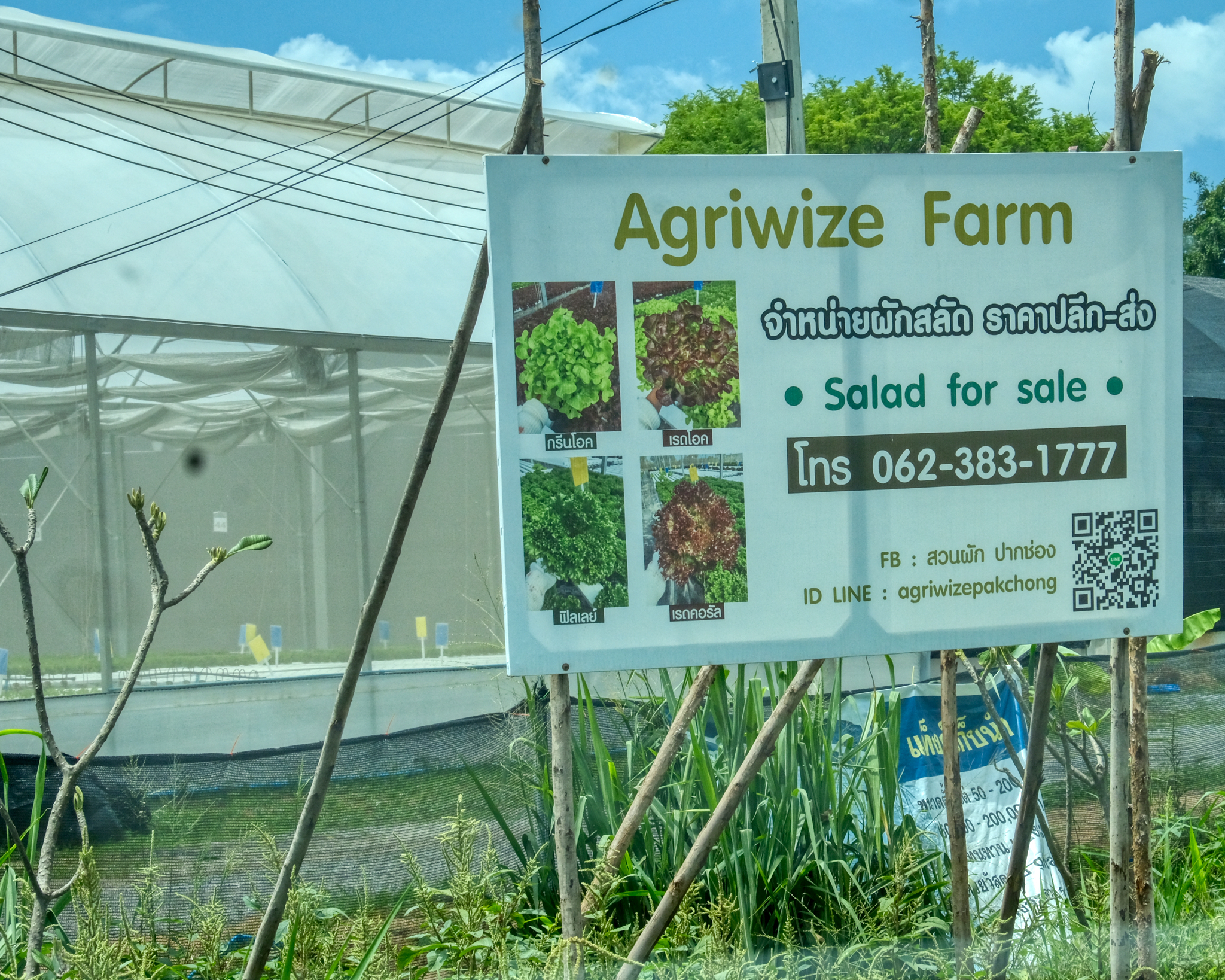 Being only 3 hours to a city of 13 million people, this kind of big agribusiness was to be expected.
Being only 3 hours to a city of 13 million people, this kind of big agribusiness was to be expected.
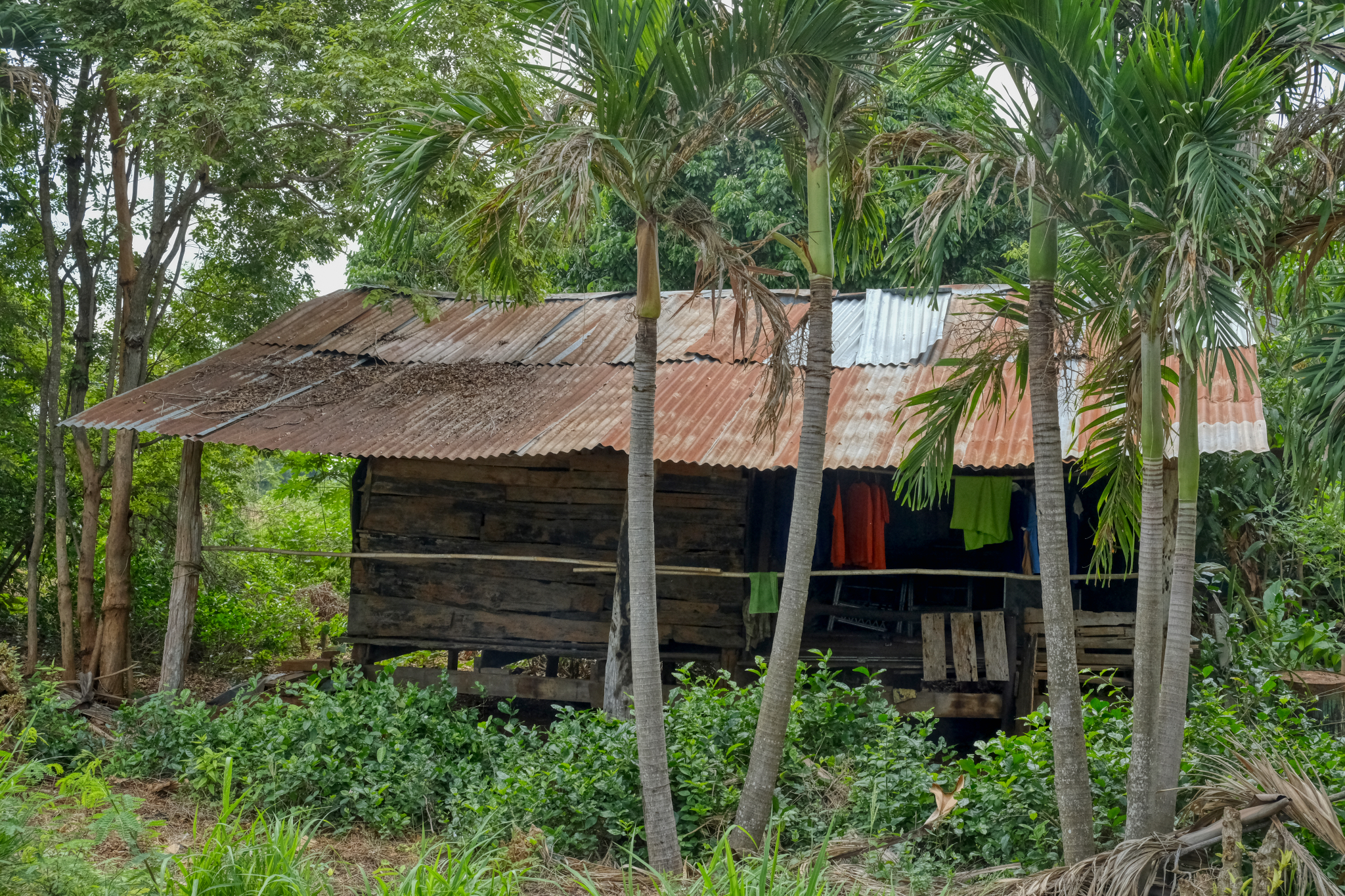 This old teakwood shack was occupied . . . rural splendor?
This old teakwood shack was occupied . . . rural splendor?
-----------------------------------------------------------------------------------------------------------------
WAT PA PHROM PRATHAN
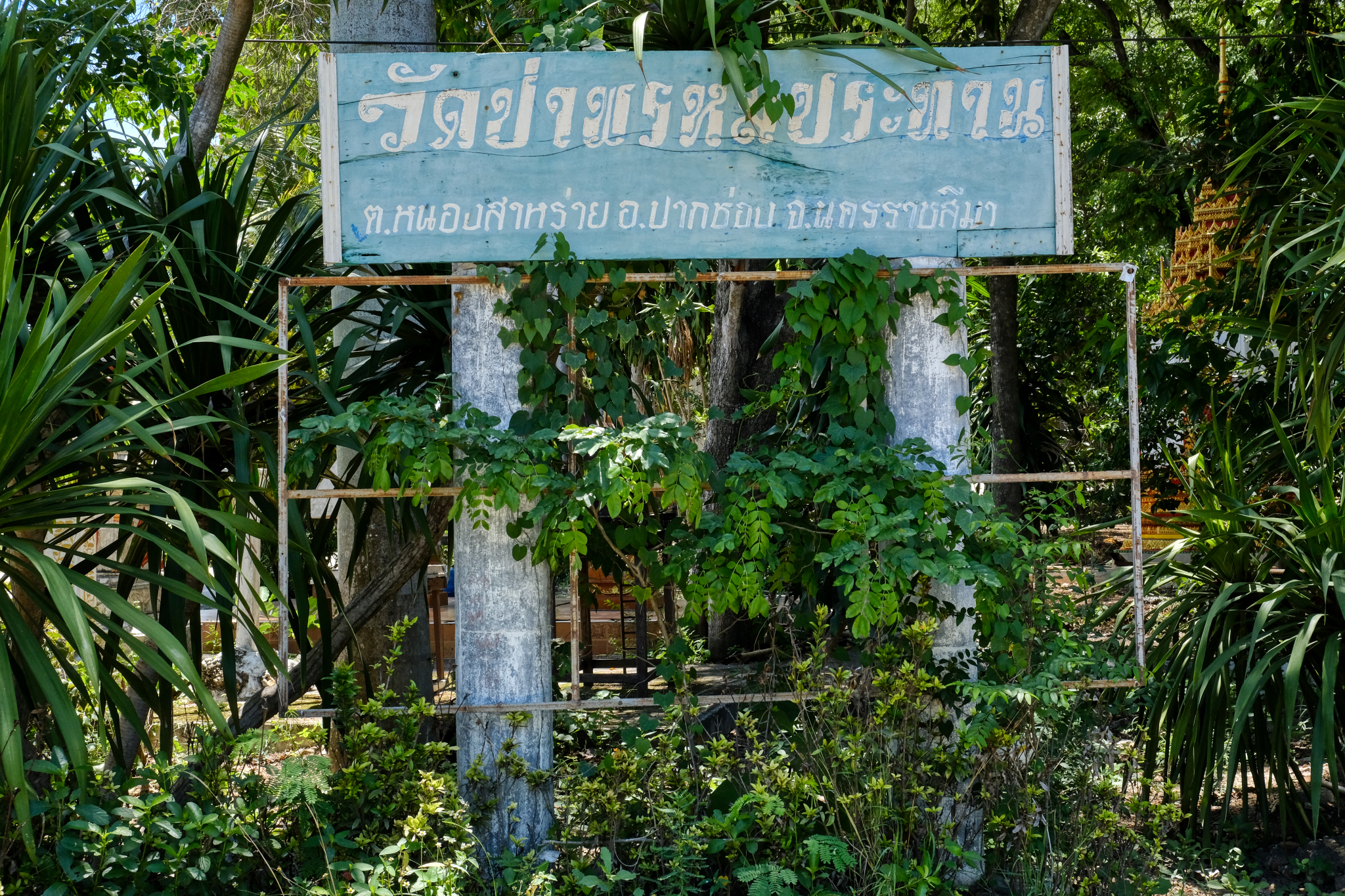 This small sign caught my eye . . . It must be a wat . . .
This small sign caught my eye . . . It must be a wat . . .
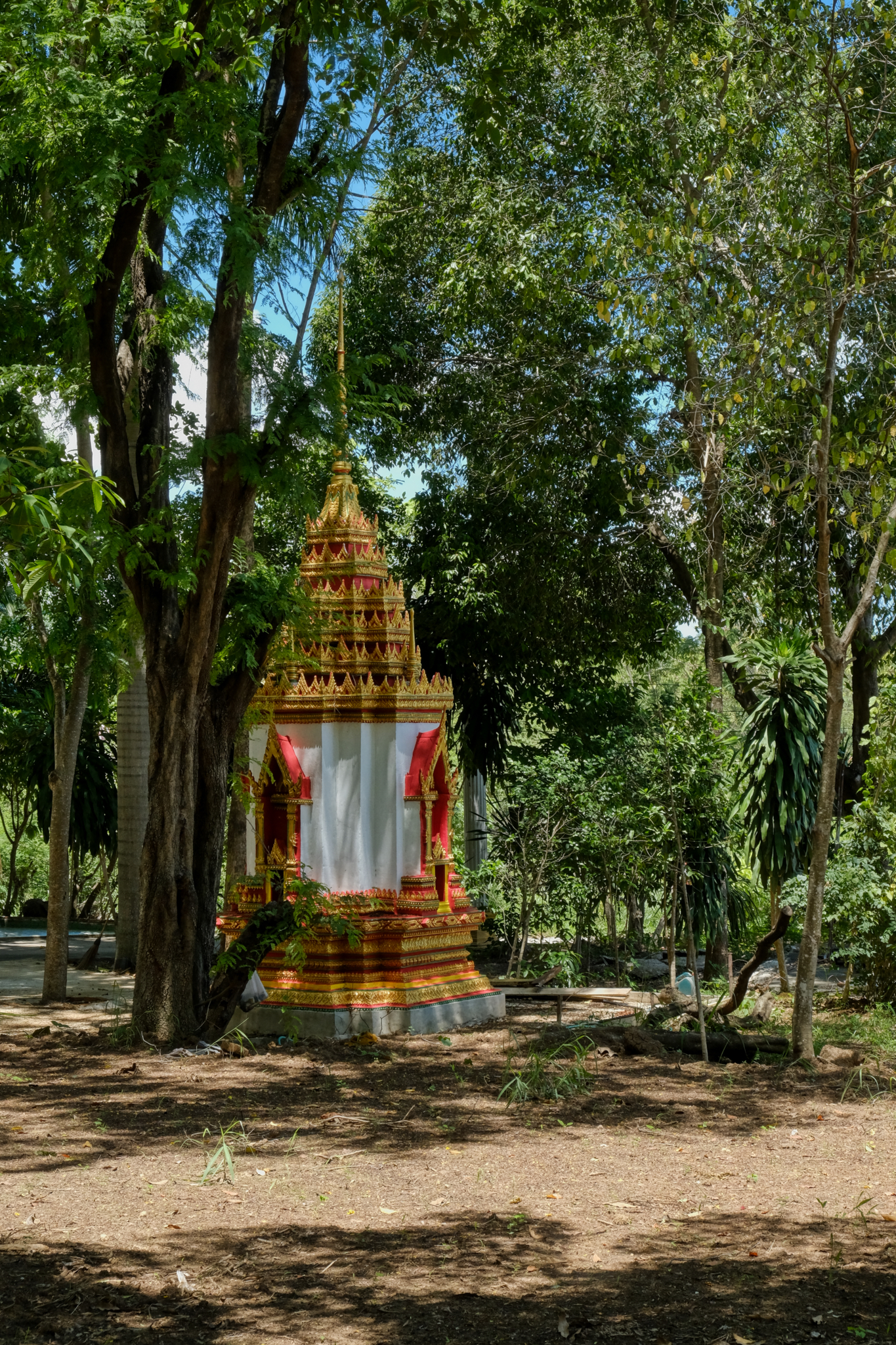 While driving into the wat grounds I did not notice anything unusual at first.
While driving into the wat grounds I did not notice anything unusual at first.
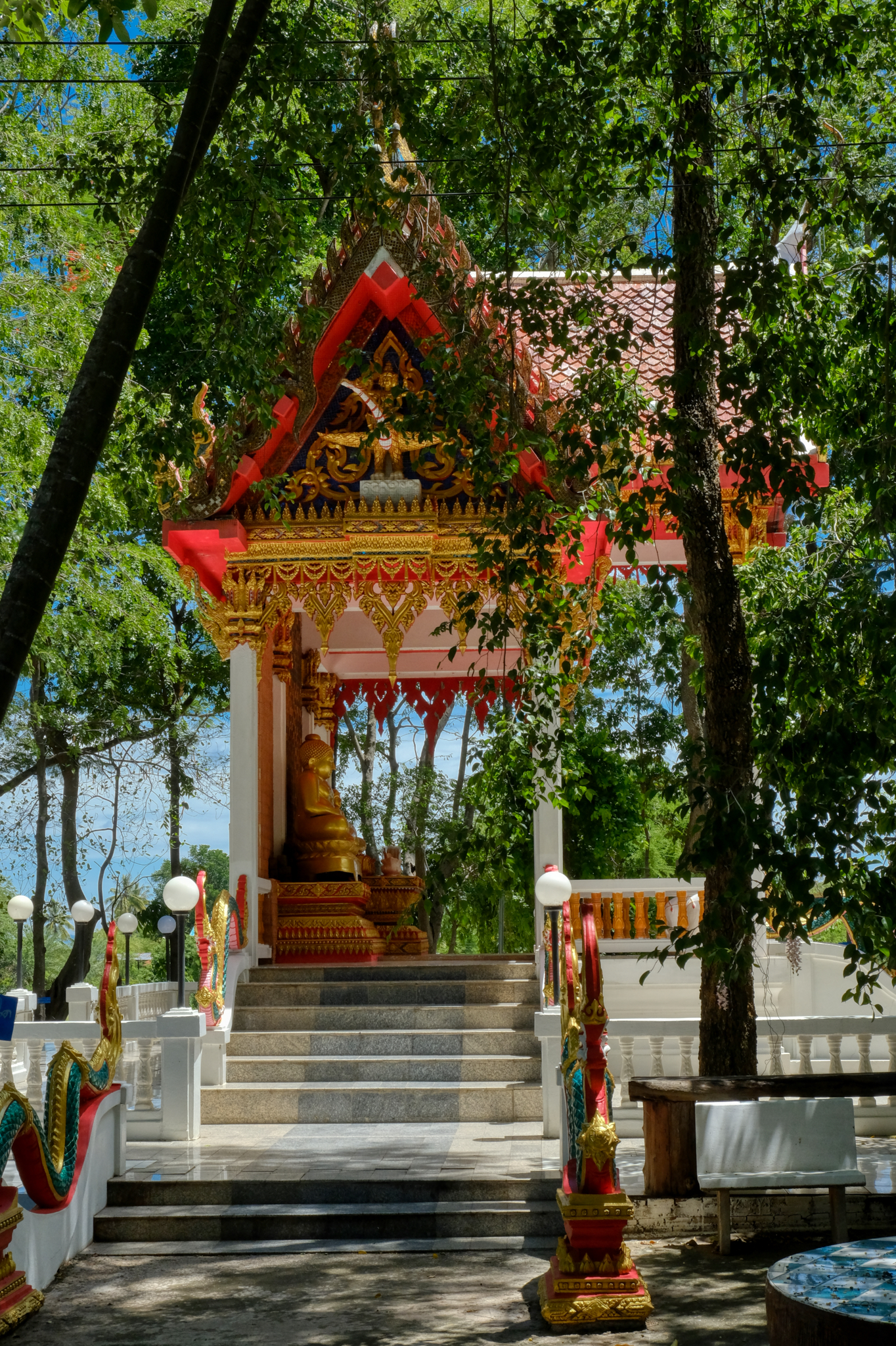 For such a deeply rural wat in a forested area, the salas and monuments seemed especially wonderful.
For such a deeply rural wat in a forested area, the salas and monuments seemed especially wonderful.
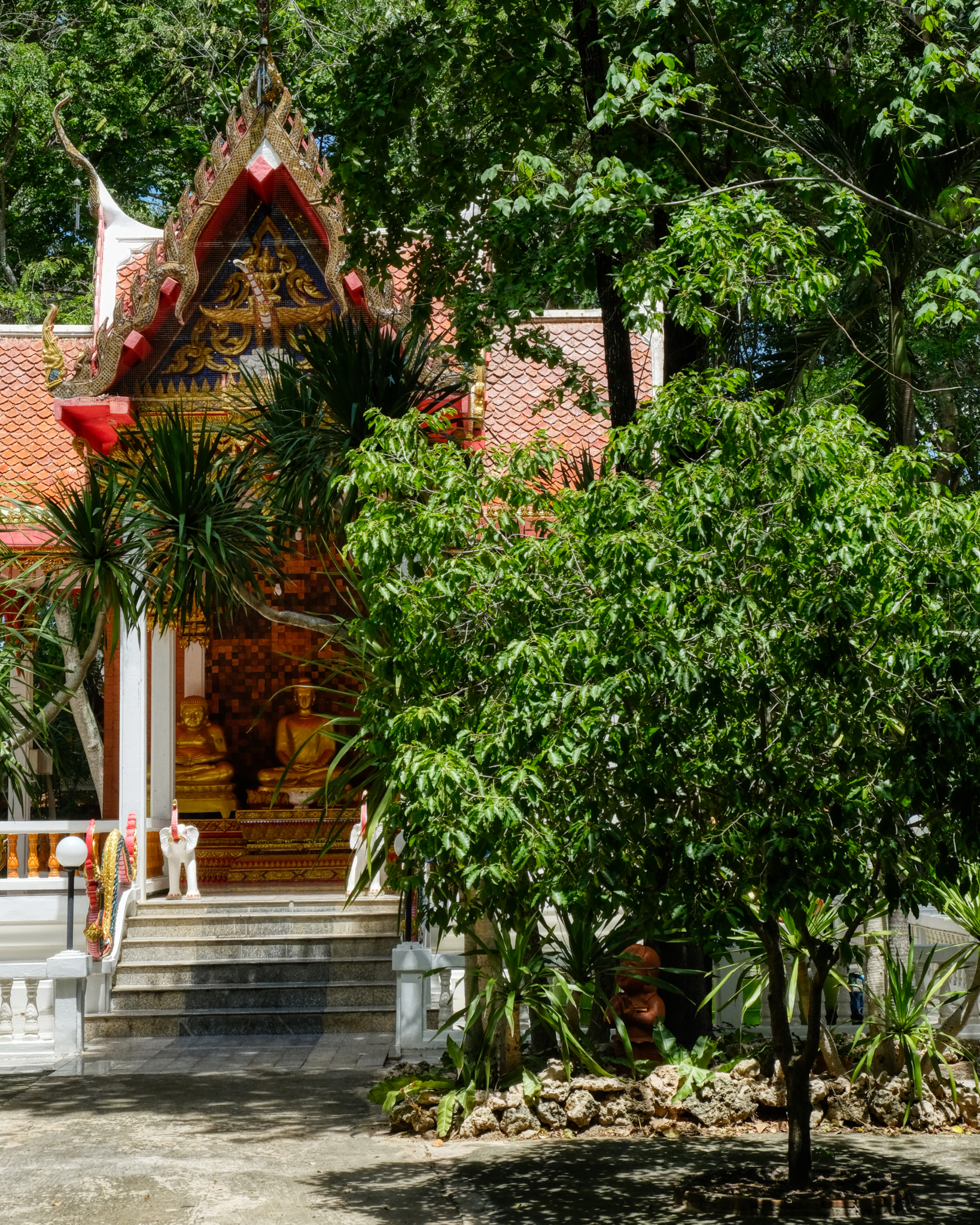 Such a wonderful Buddha sala . . .
Such a wonderful Buddha sala . . .
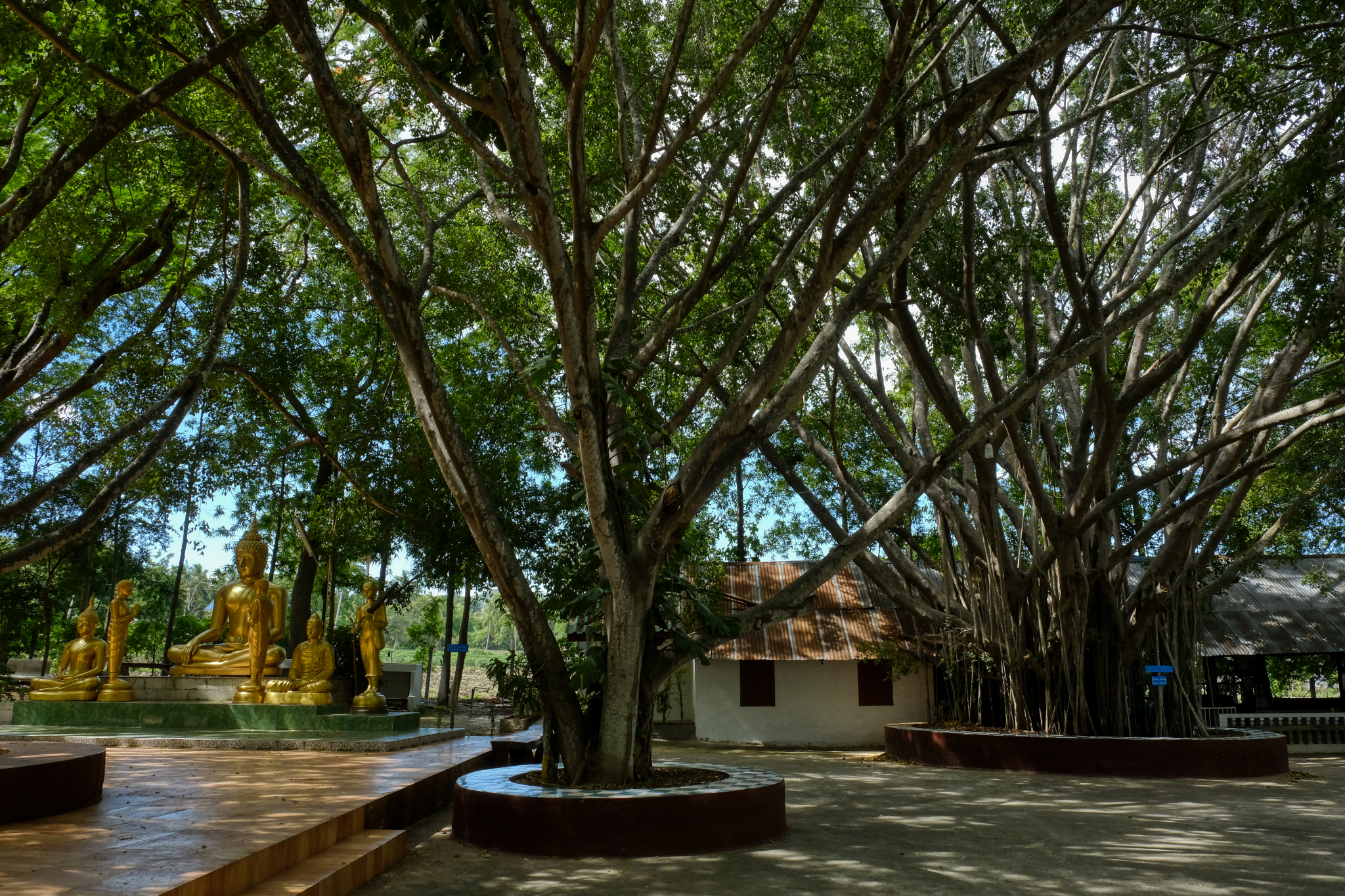 I found a place to park and as I stepped out of the car this is what I saw! Remarkable!
I found a place to park and as I stepped out of the car this is what I saw! Remarkable!
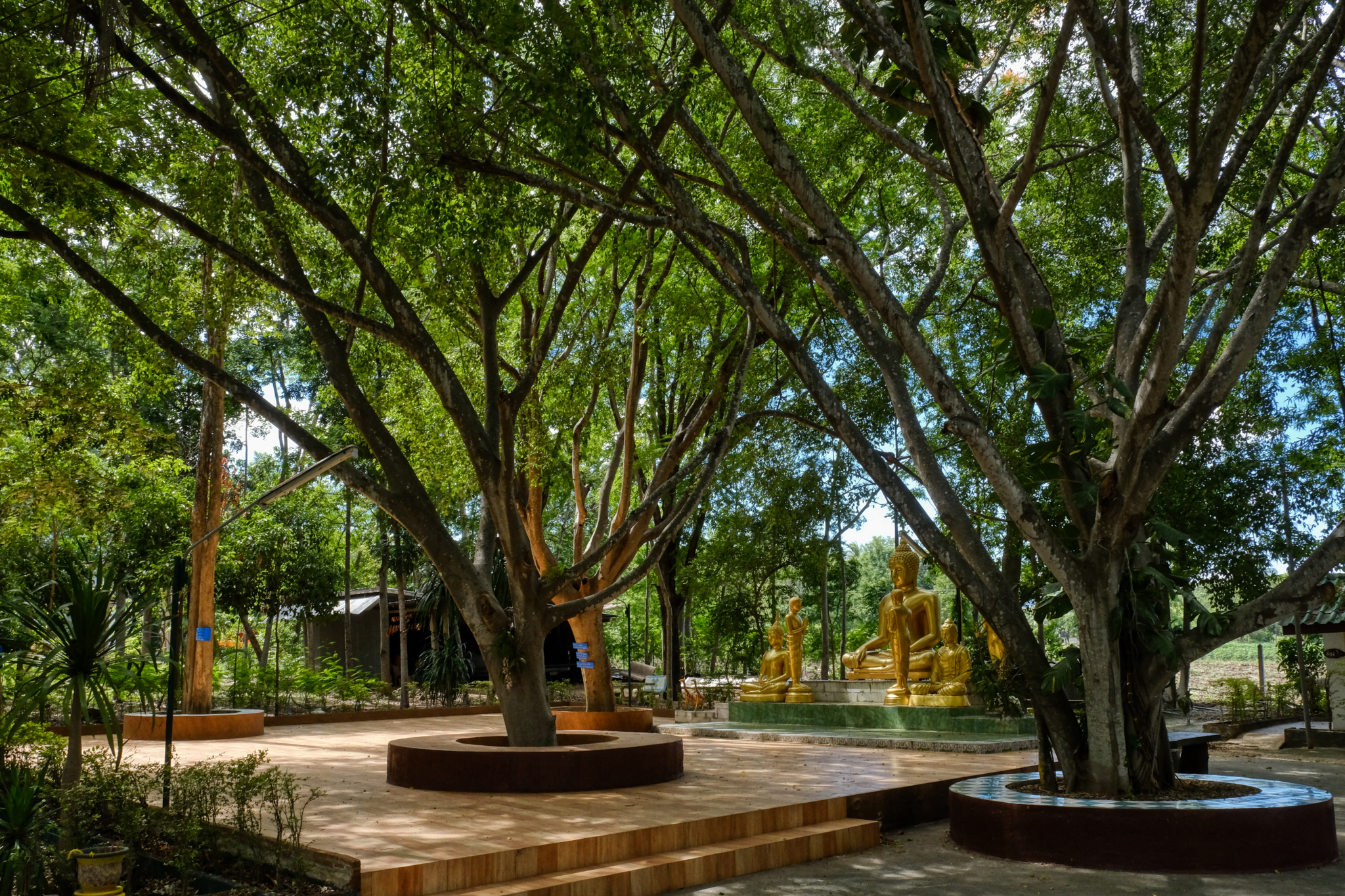 There was a powerful spiritual presence in this place.
There was a powerful spiritual presence in this place.
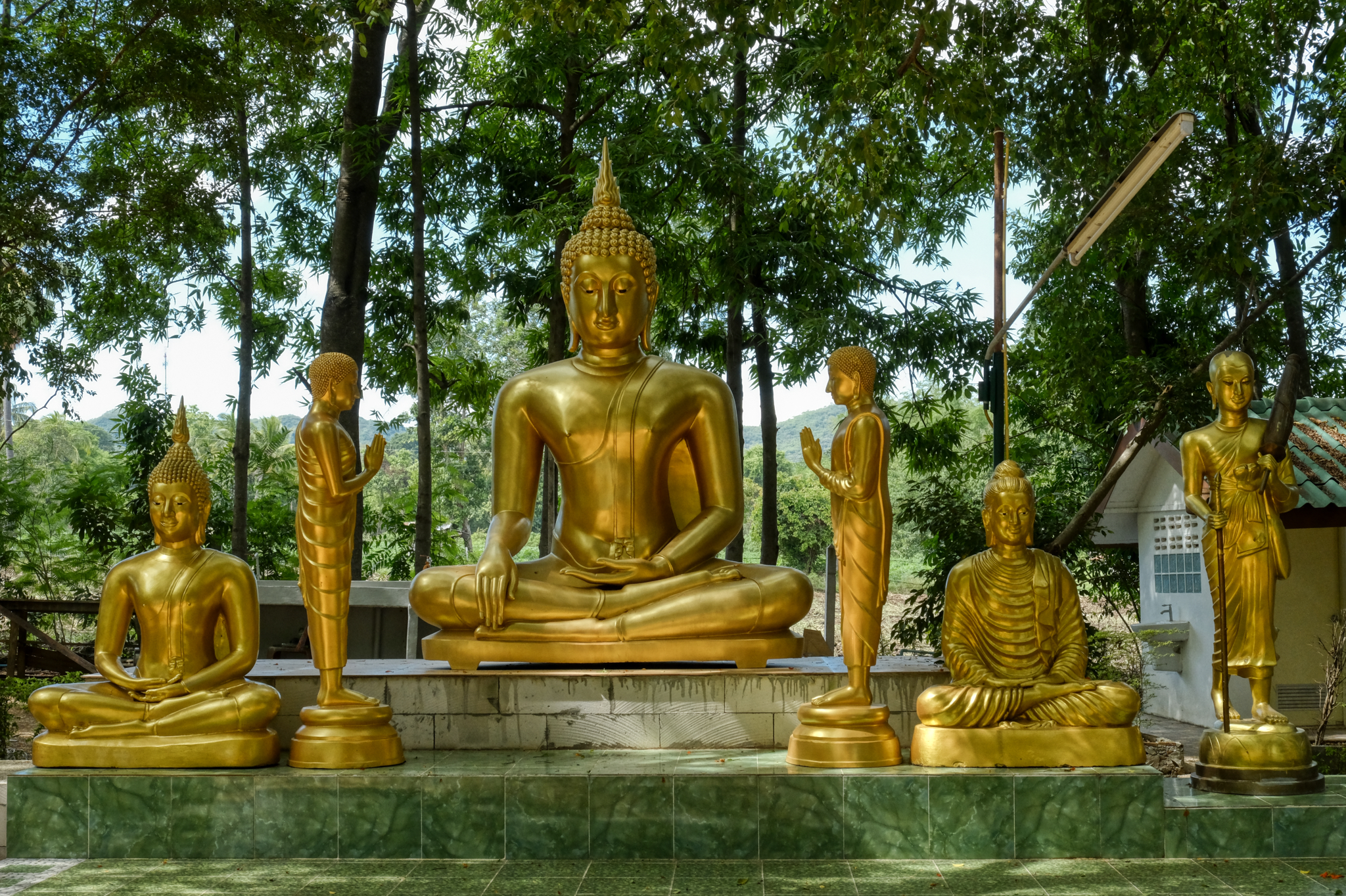 I sat here for quite awhile . . . and lost myself . . .
I sat here for quite awhile . . . and lost myself . . .
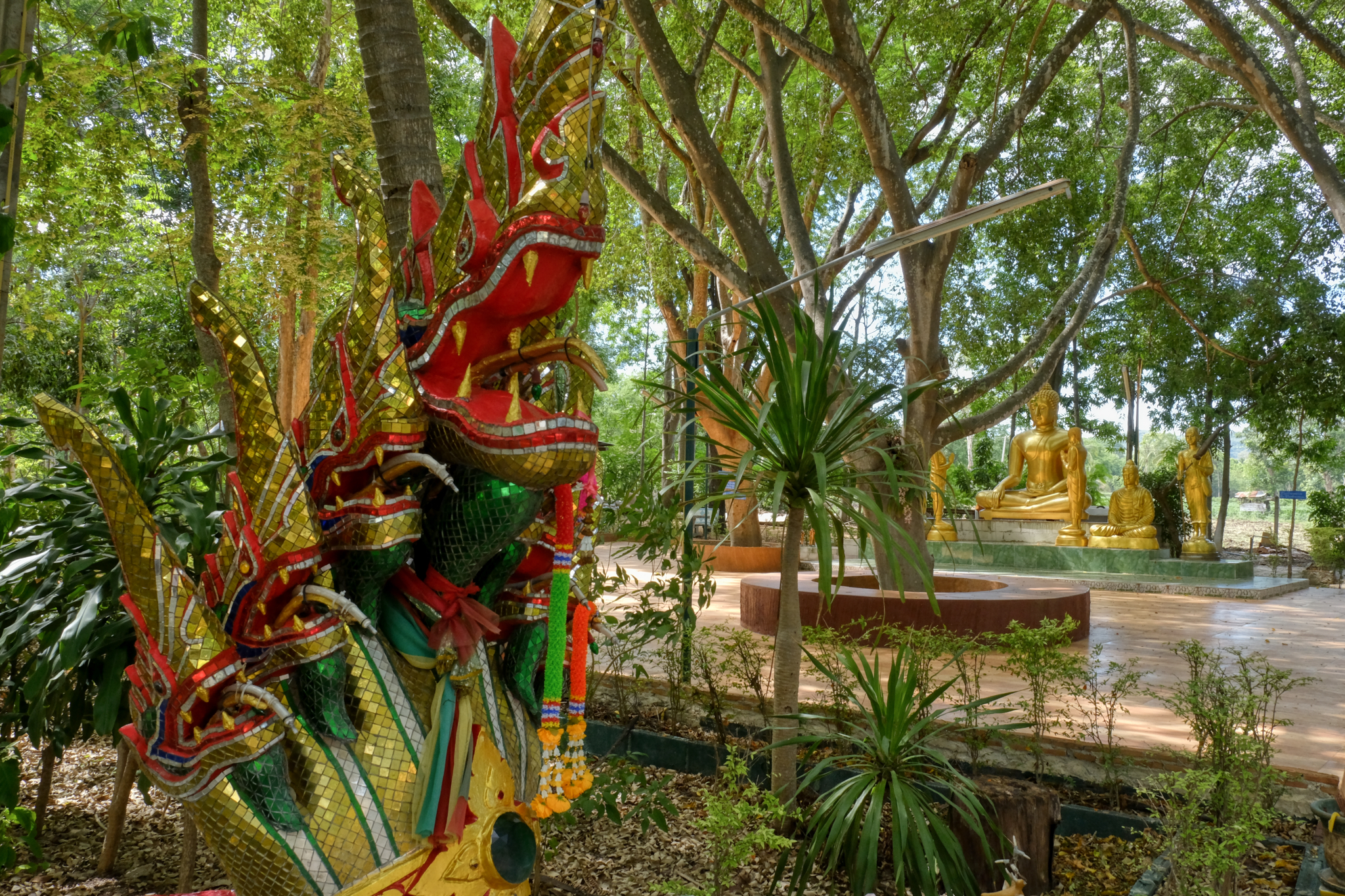 After sitting . . . I went for a walk to appreciate the spiritual environment I had fortunately found.
After sitting . . . I went for a walk to appreciate the spiritual environment I had fortunately found.
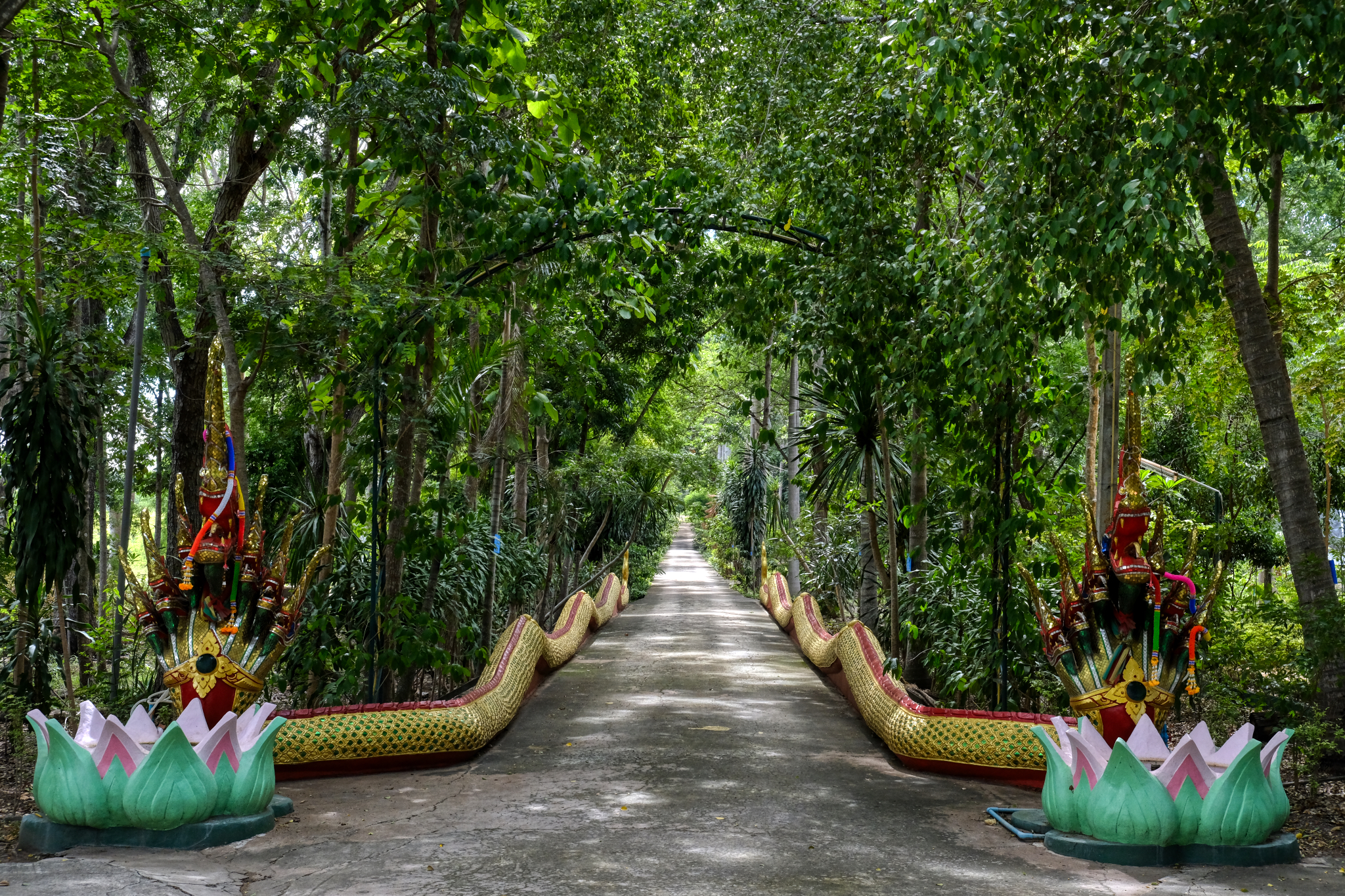 When I spotted this inviting road, I had to find out what was up there . . .
When I spotted this inviting road, I had to find out what was up there . . .
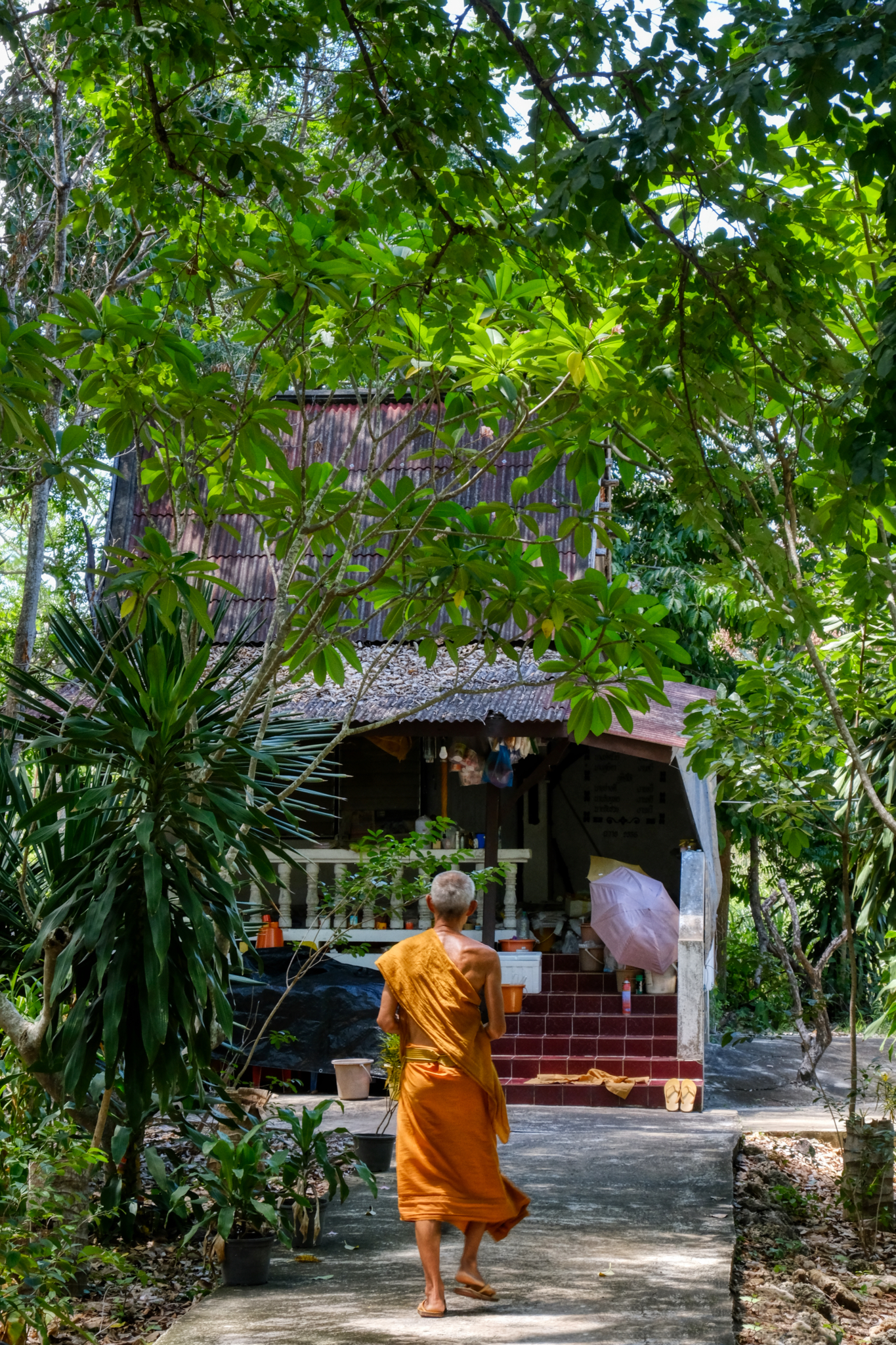 What I found at first were several very sweet monks' houses set in the trees.
What I found at first were several very sweet monks' houses set in the trees.
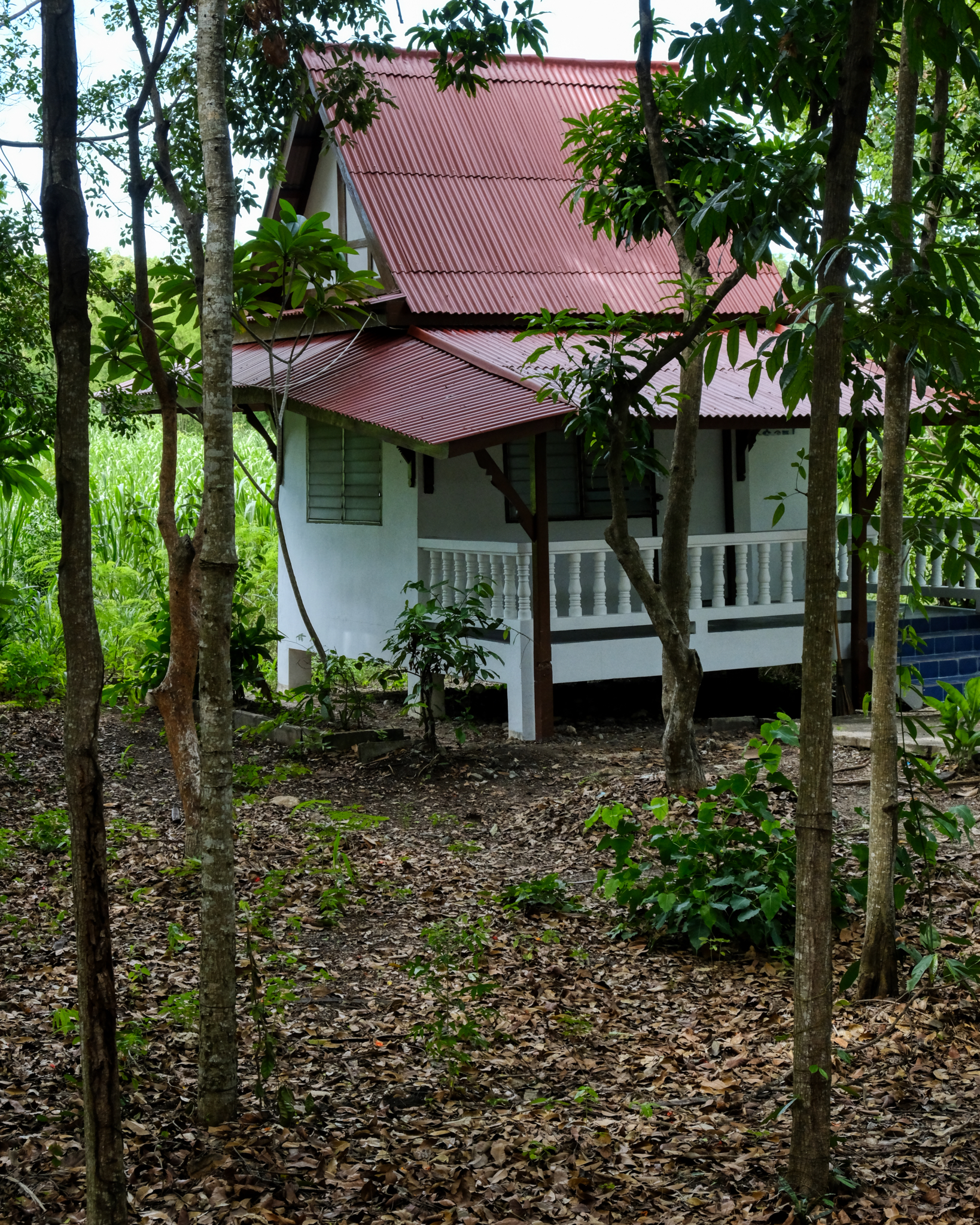 A simple, but attractive, monks quarters.
A simple, but attractive, monks quarters.
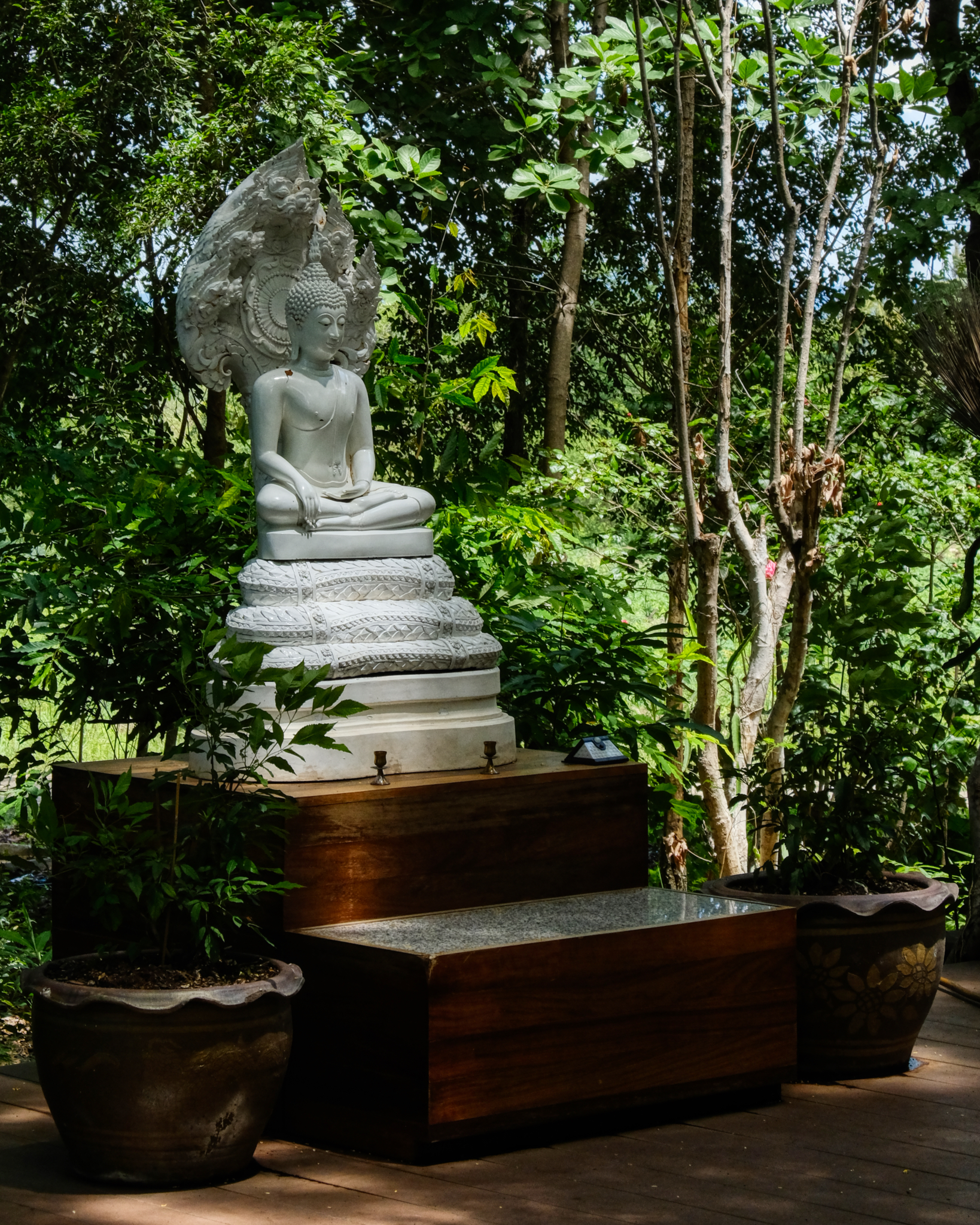 This remarkable Buddha was outside one of the modest monk's quarters.
This remarkable Buddha was outside one of the modest monk's quarters.
 My long walk up the hill was rewarded with this view of a new wat building nearing completion. A brand new Thai Buddhist Temple, Wat PA Phrom Prathan.
My long walk up the hill was rewarded with this view of a new wat building nearing completion. A brand new Thai Buddhist Temple, Wat PA Phrom Prathan.
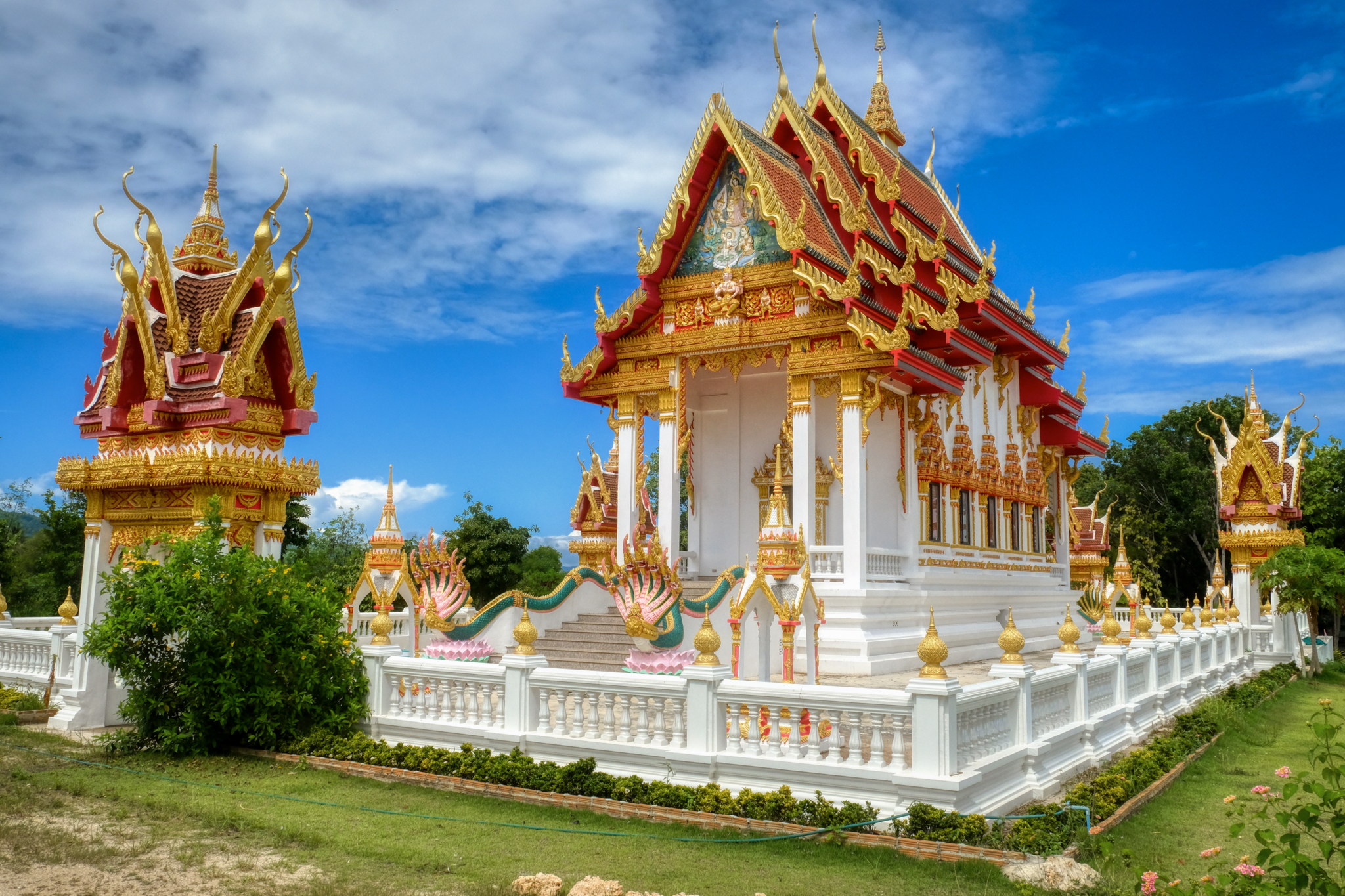 The new wat sat high on a hill over the valley. I walked around the site several times marveling at its fresh, pristine beauty.
The new wat sat high on a hill over the valley. I walked around the site several times marveling at its fresh, pristine beauty.
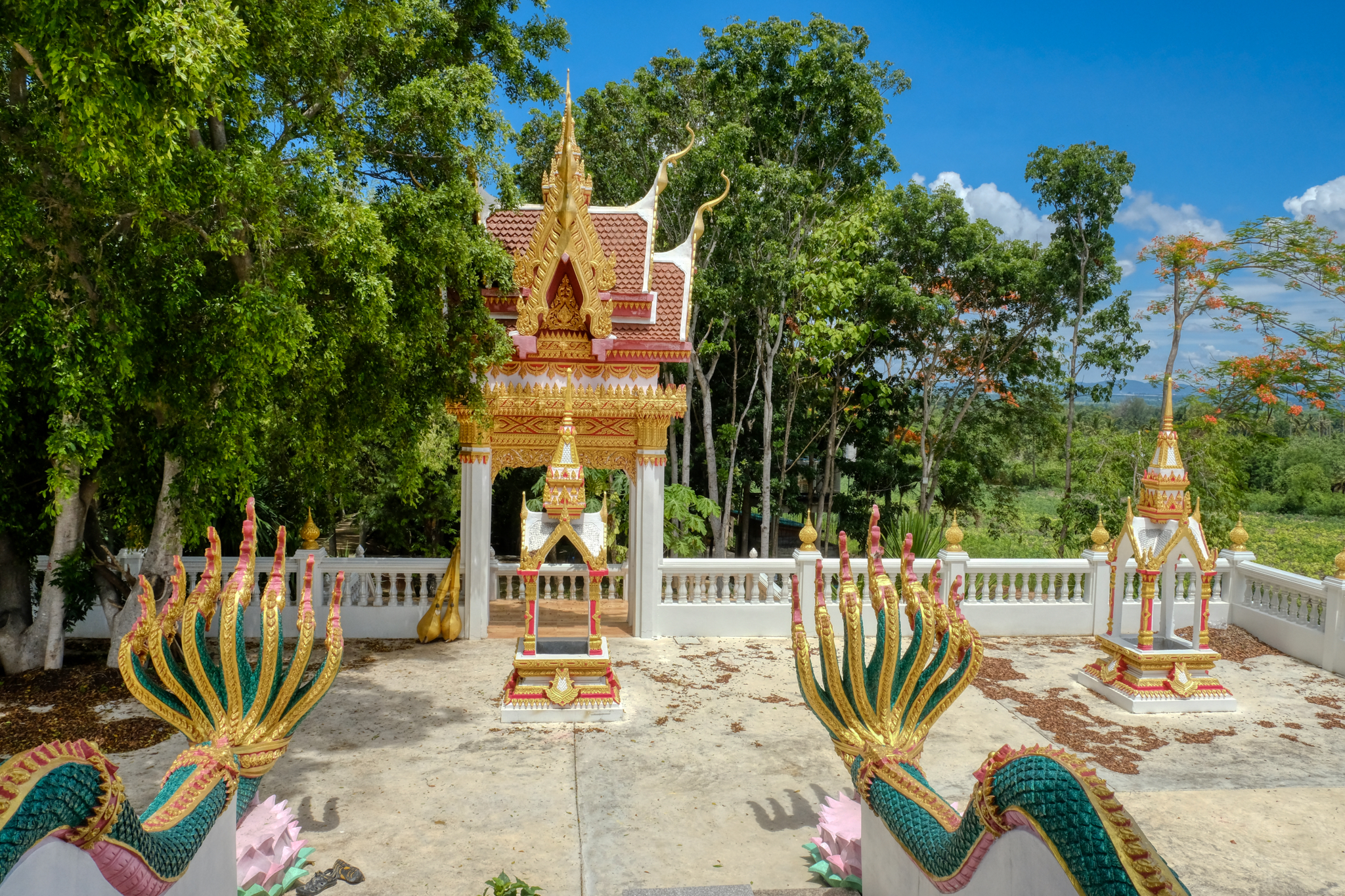 I noticed that the inner spaces of the wat were not swept or tiled . . . I knew this meant that they had not officially moved in . . . they were still working on it. The door was ajar, so I peaked in . . .
I noticed that the inner spaces of the wat were not swept or tiled . . . I knew this meant that they had not officially moved in . . . they were still working on it. The door was ajar, so I peaked in . . .
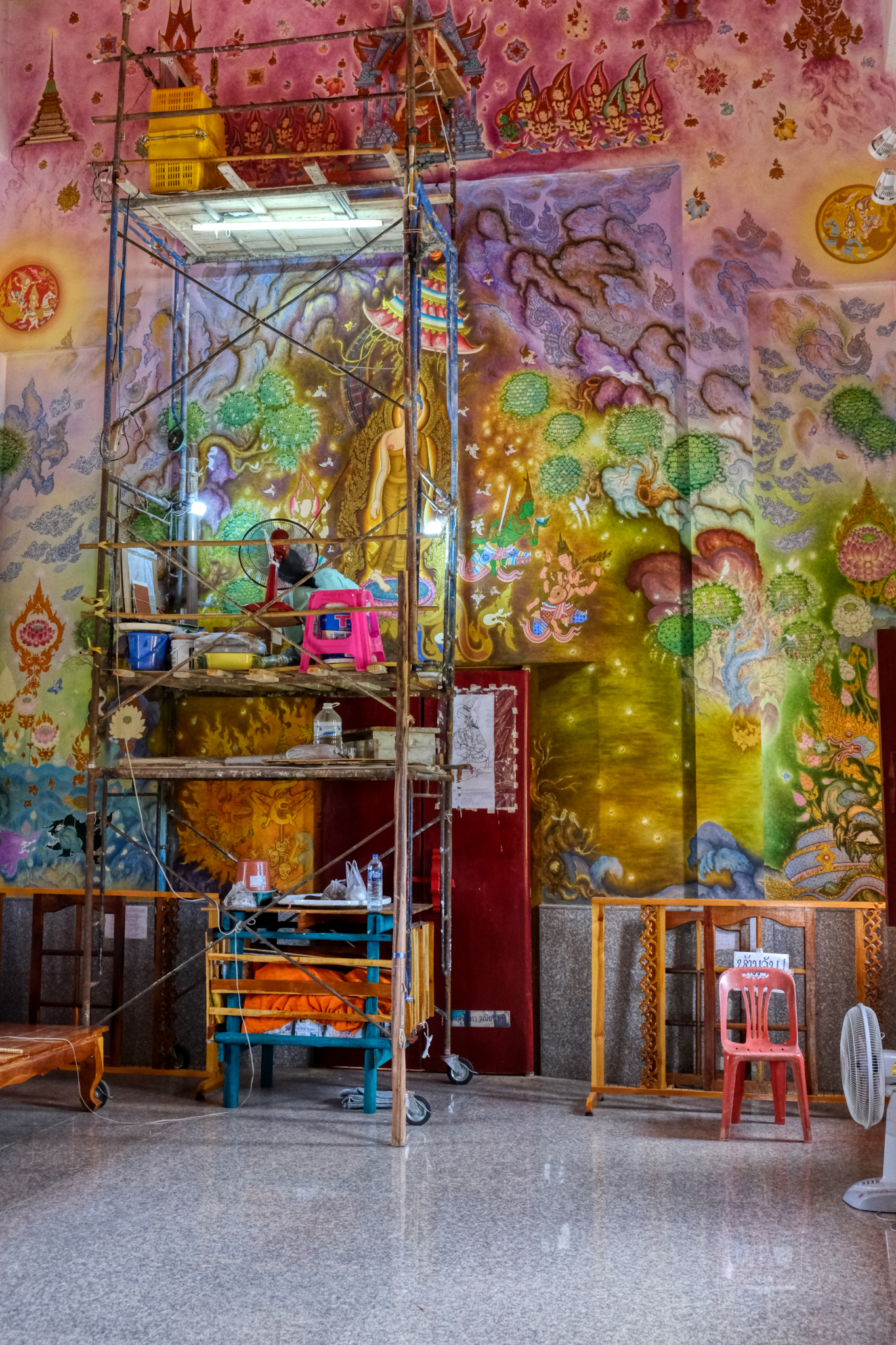 And this is what I saw when I opened the door . . . an artist on scaffolding painting an amazing mural on the far wall. WOW!
And this is what I saw when I opened the door . . . an artist on scaffolding painting an amazing mural on the far wall. WOW!
 The artist at work.
The artist at work.
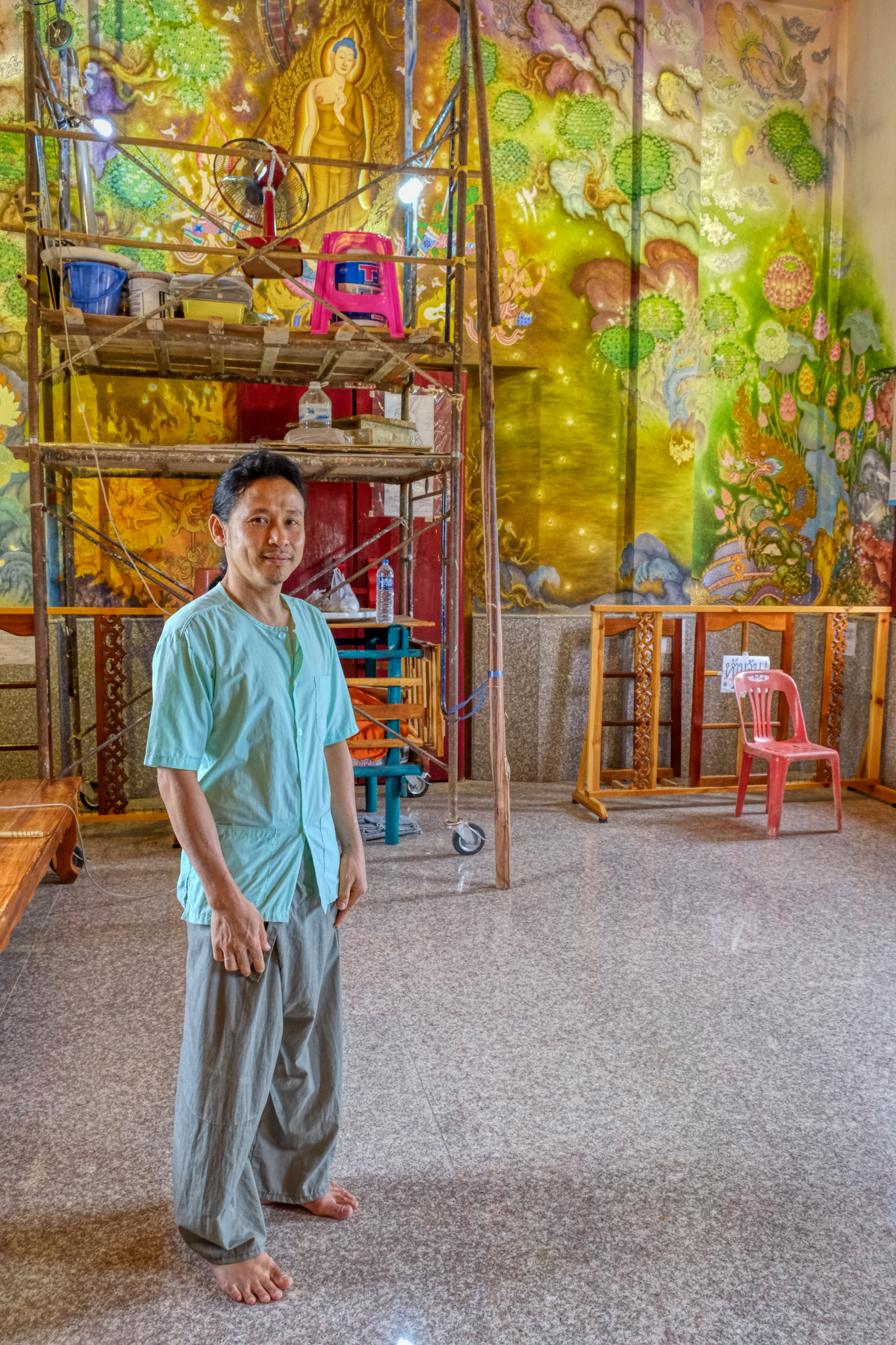 The artist came down off the scaffolding to offer me some water. I declined as I had my own. We chatted for a while. He said he had been working on that wall for three years already and that there were two or three more years left to finish the rest of the interior.
The artist came down off the scaffolding to offer me some water. I declined as I had my own. We chatted for a while. He said he had been working on that wall for three years already and that there were two or three more years left to finish the rest of the interior.
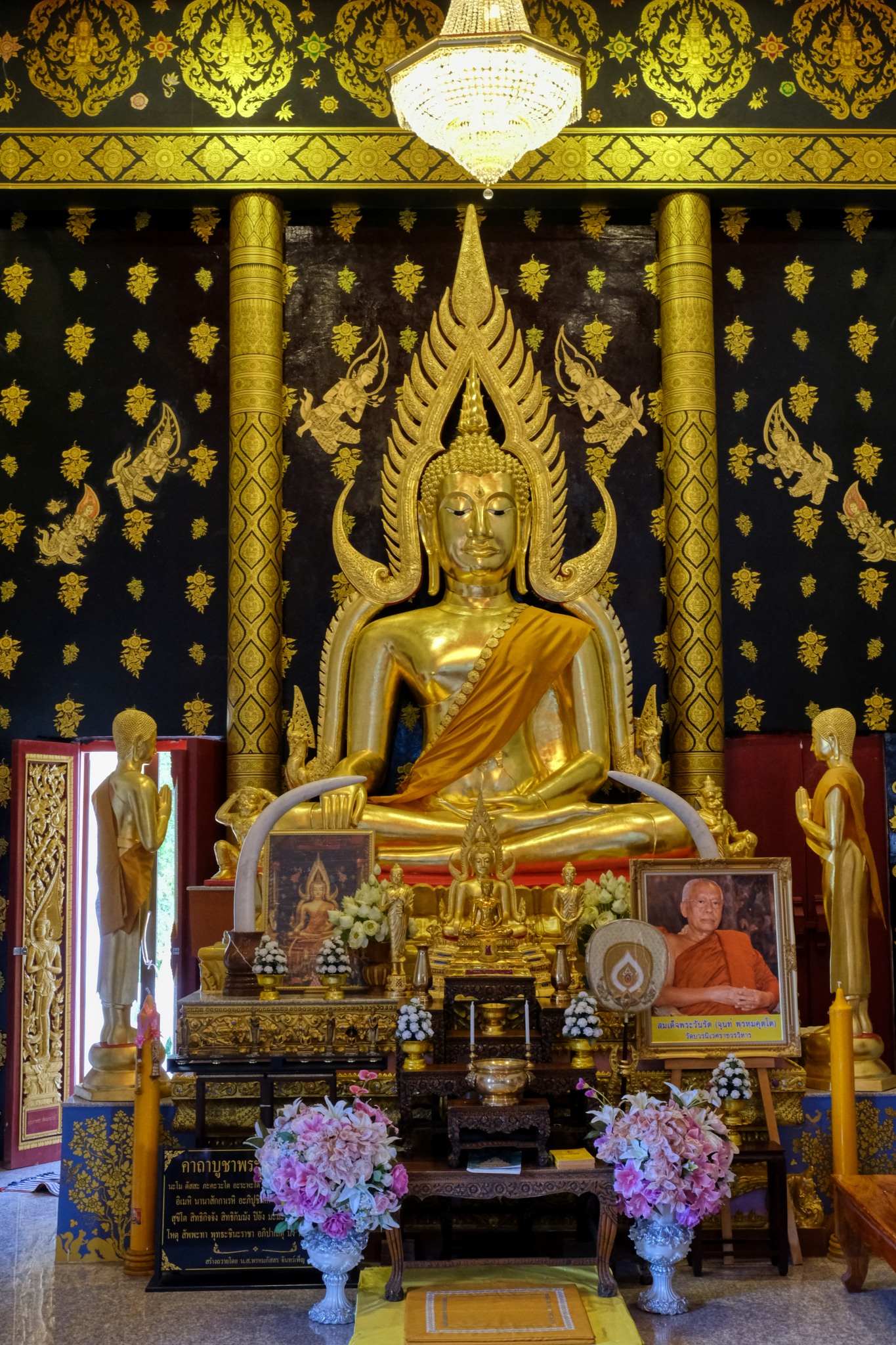 This altar faced the wall he was currently painting. He said that this wall only took six months to paint.
This altar faced the wall he was currently painting. He said that this wall only took six months to paint.
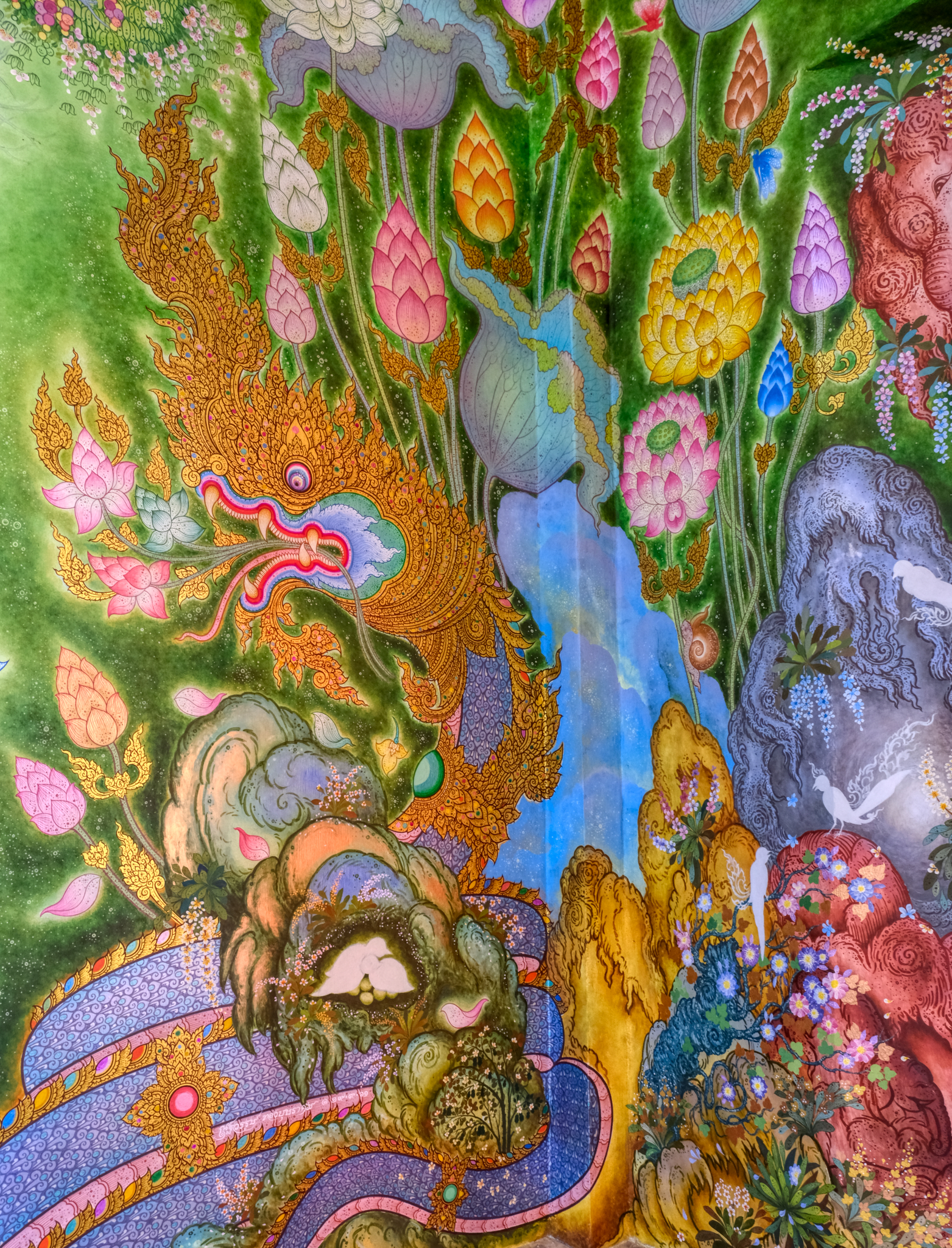 The artist's work and workmanship were masterful.
The artist's work and workmanship were masterful.
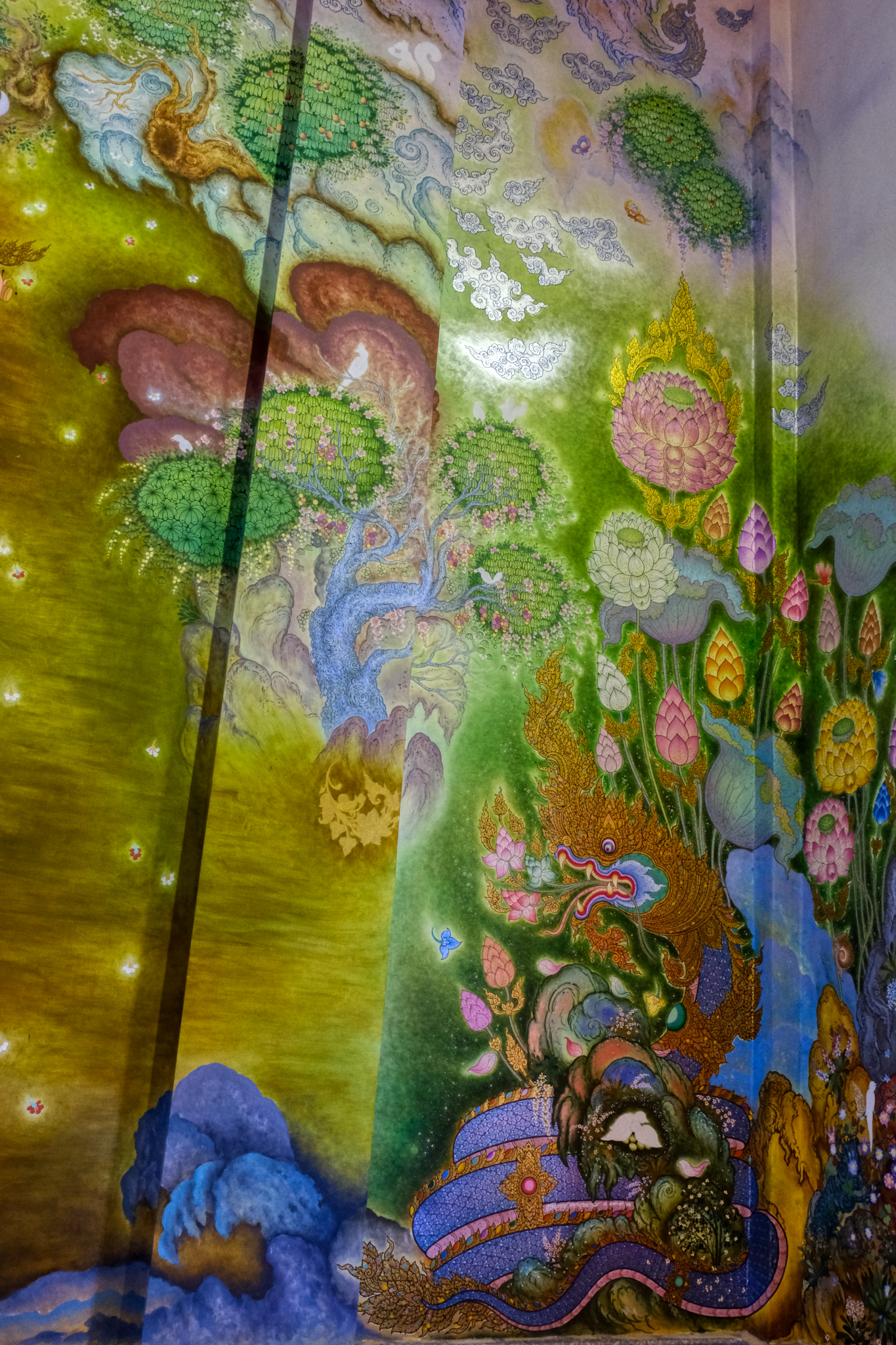 The huge mural depicted Buddhist and Thai iconography, as well as scenes from the life of the Buddha Gotama.
The huge mural depicted Buddhist and Thai iconography, as well as scenes from the life of the Buddha Gotama.
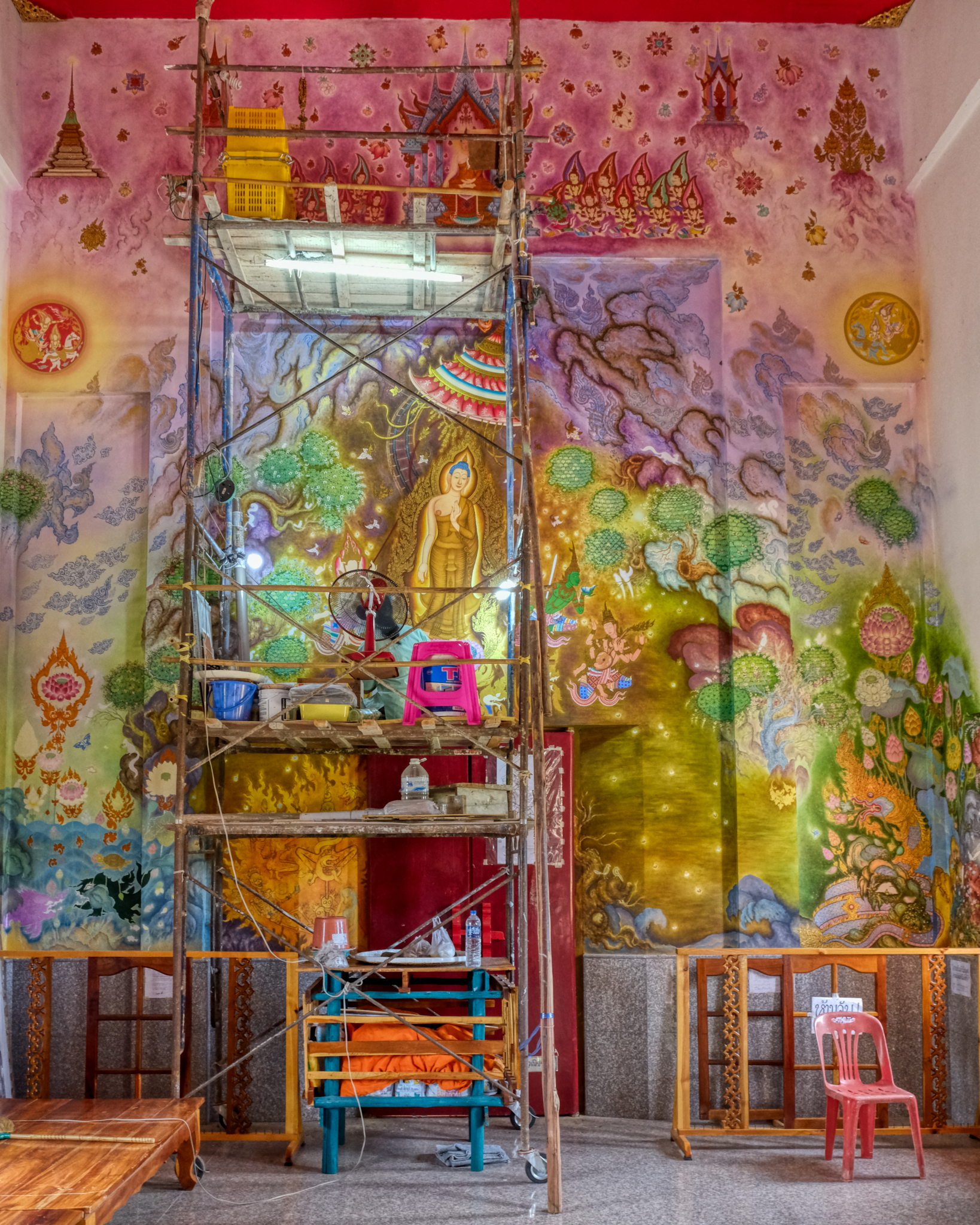 After we spoke he climbed back up to his platform and resumed painting. I sat watching him paint for quite awhile.
After we spoke he climbed back up to his platform and resumed painting. I sat watching him paint for quite awhile.
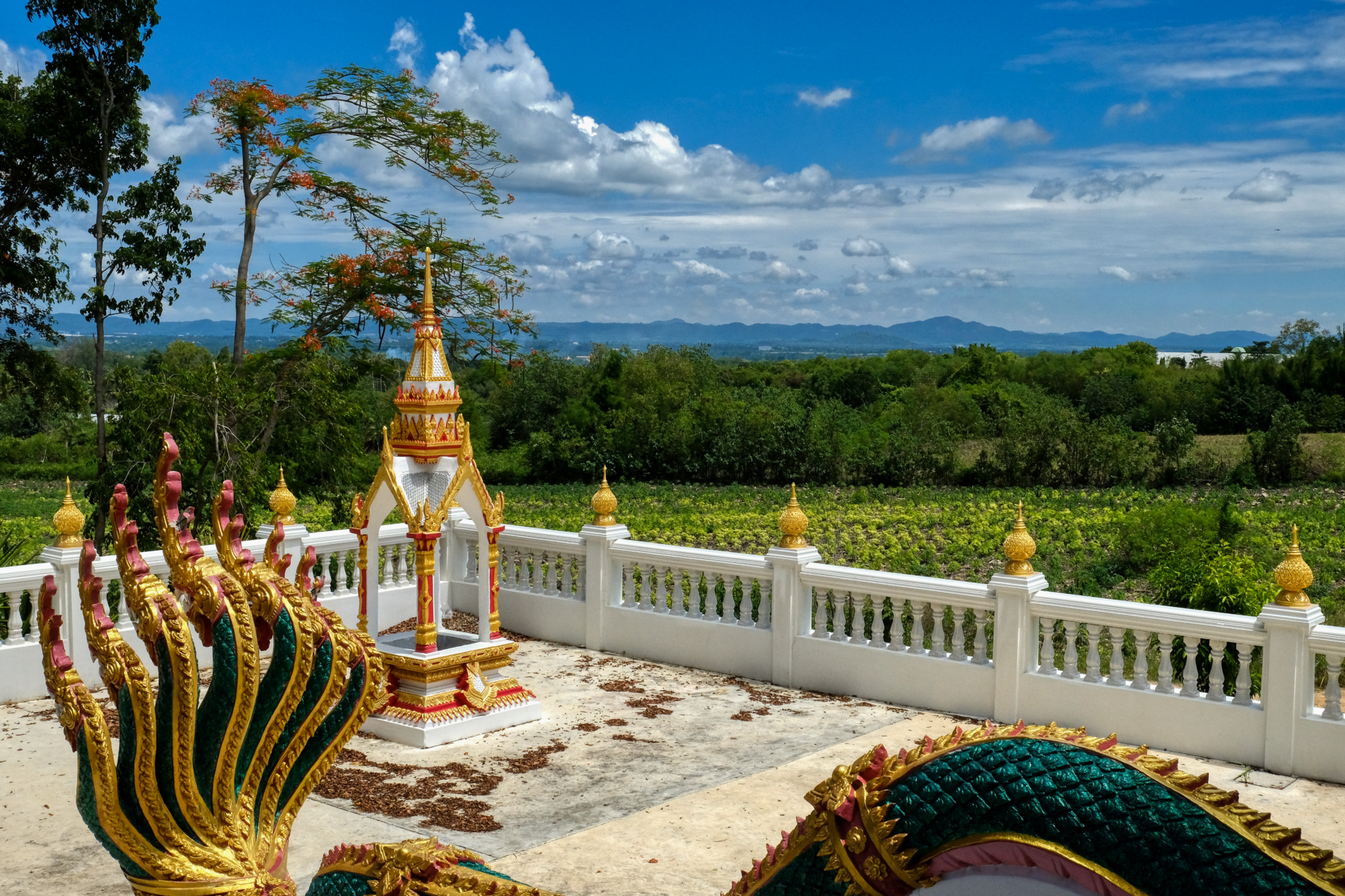 Standing outside the new wat enjoying the hilltop view out over the agricultural landscape of Khao Yai.
Standing outside the new wat enjoying the hilltop view out over the agricultural landscape of Khao Yai.
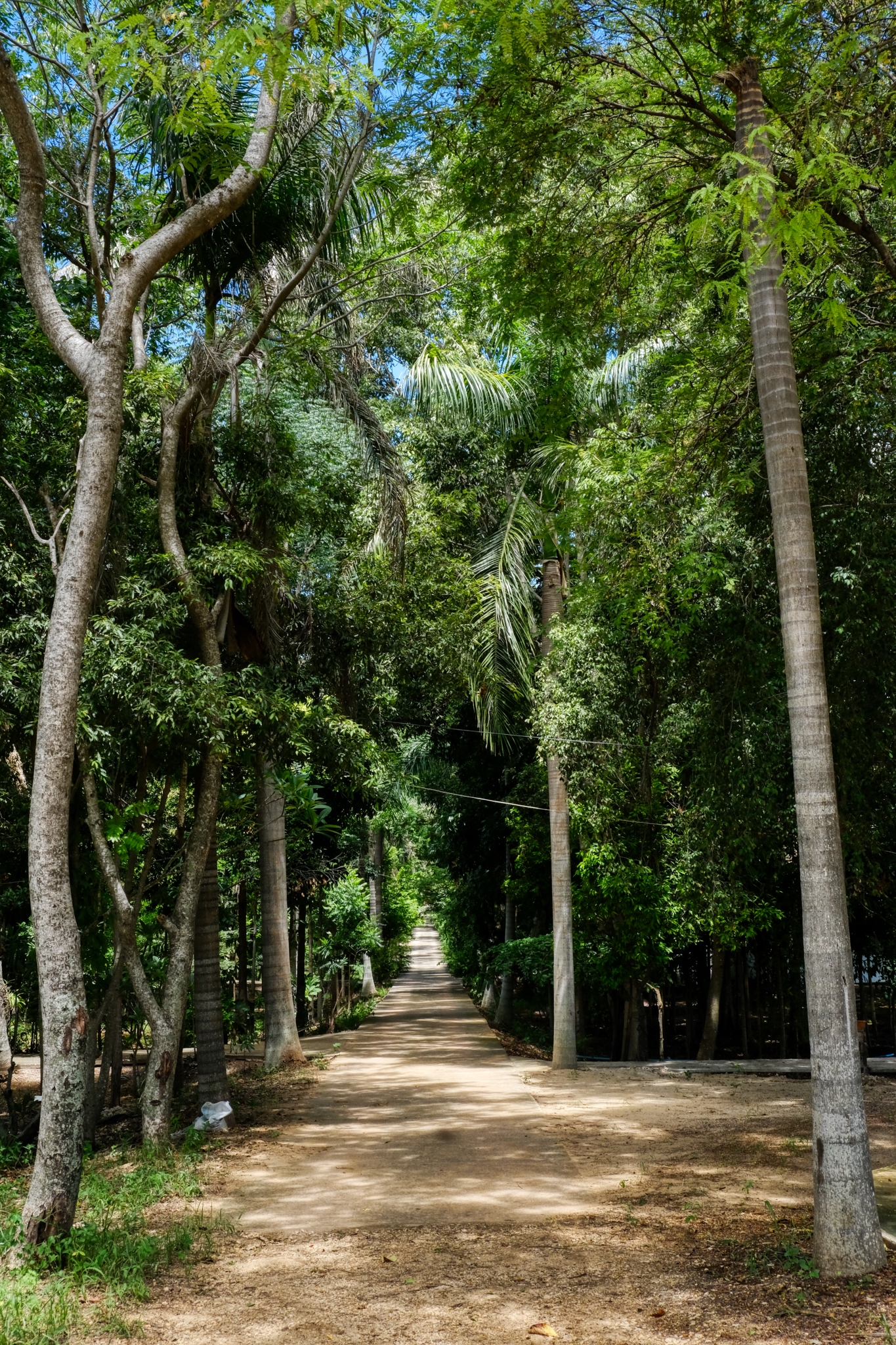 I walked back down the wooded land past the many monks cabins.
I walked back down the wooded land past the many monks cabins.
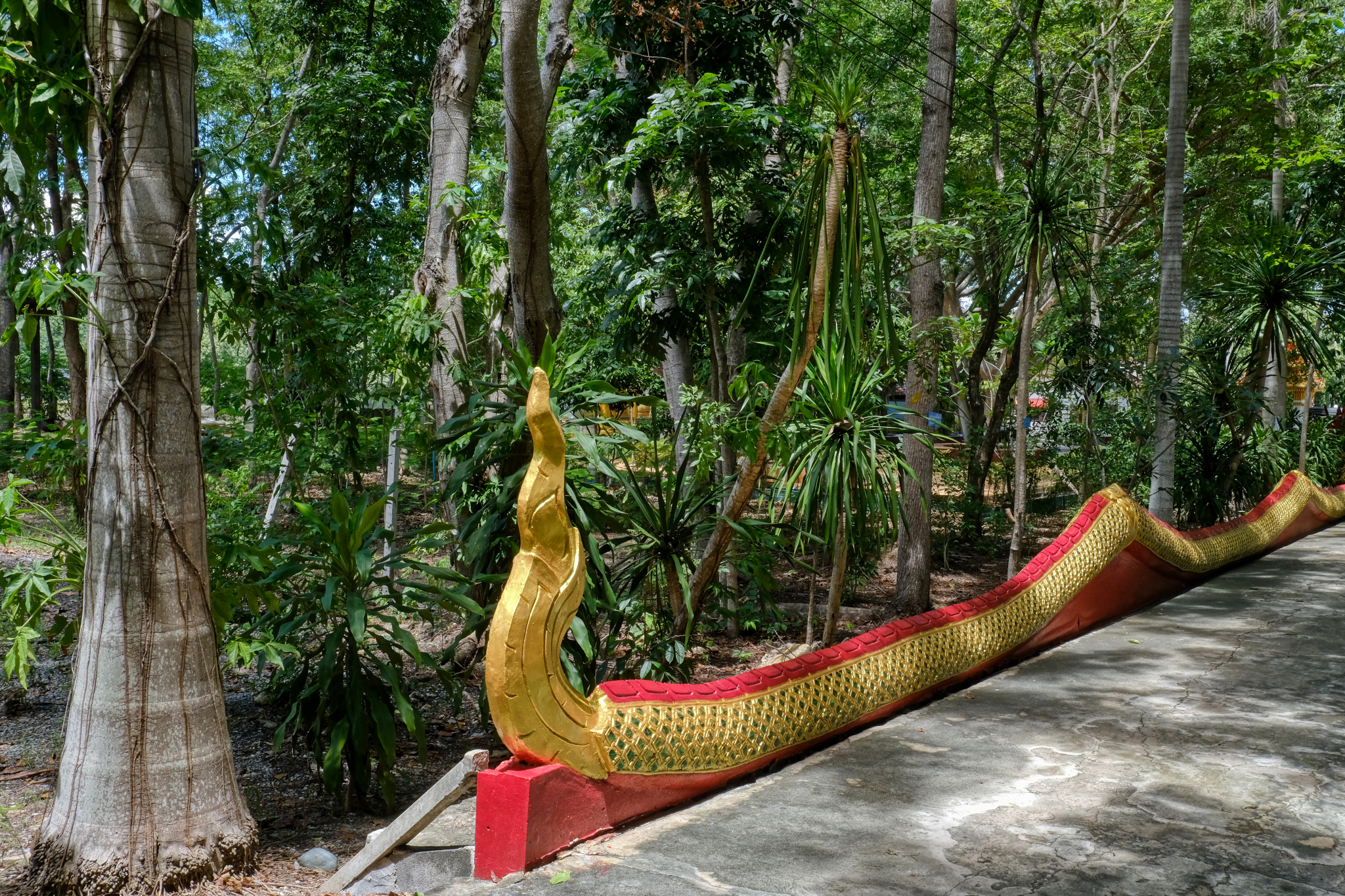 On the way back down I stopped at the tail of the many-headed dragon-snake that had welcomed me when I started up the hill.
On the way back down I stopped at the tail of the many-headed dragon-snake that had welcomed me when I started up the hill.
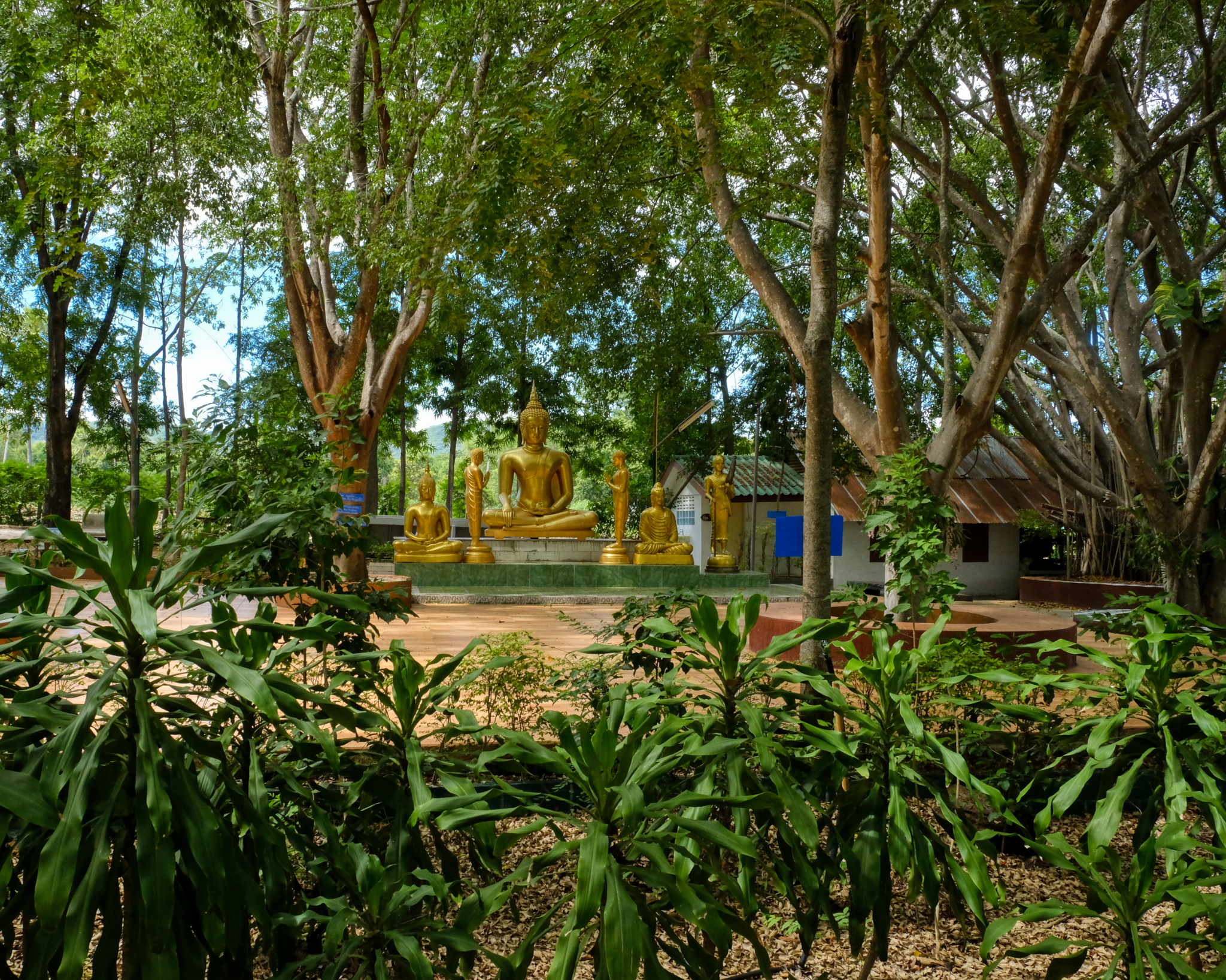 Back where I started, at the tree sheltered Buddha altar.
Back where I started, at the tree sheltered Buddha altar.
 Extraordinary 'bodi' trees at this wat.
Extraordinary 'bodi' trees at this wat.
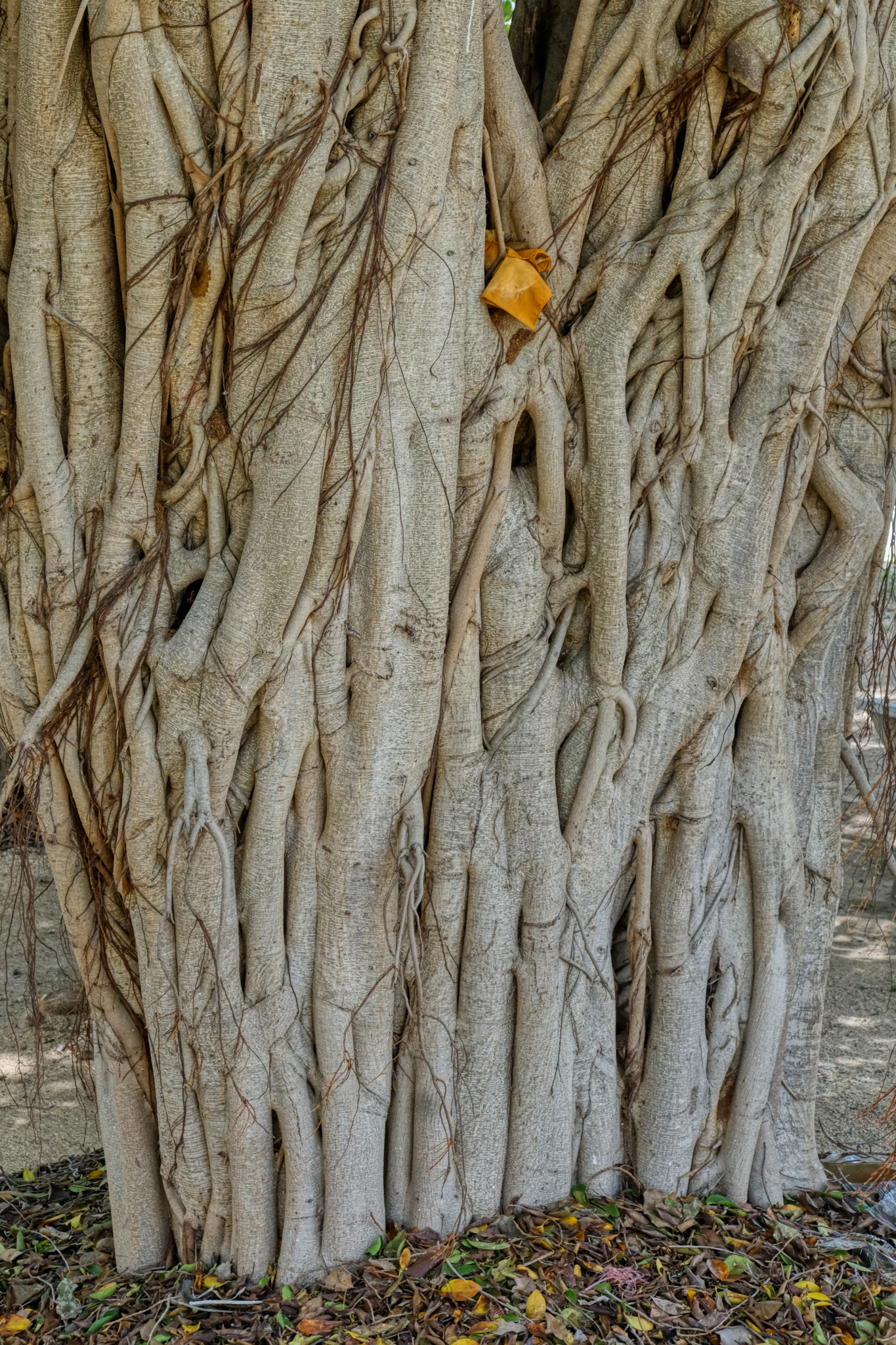 These trees!!!
These trees!!!
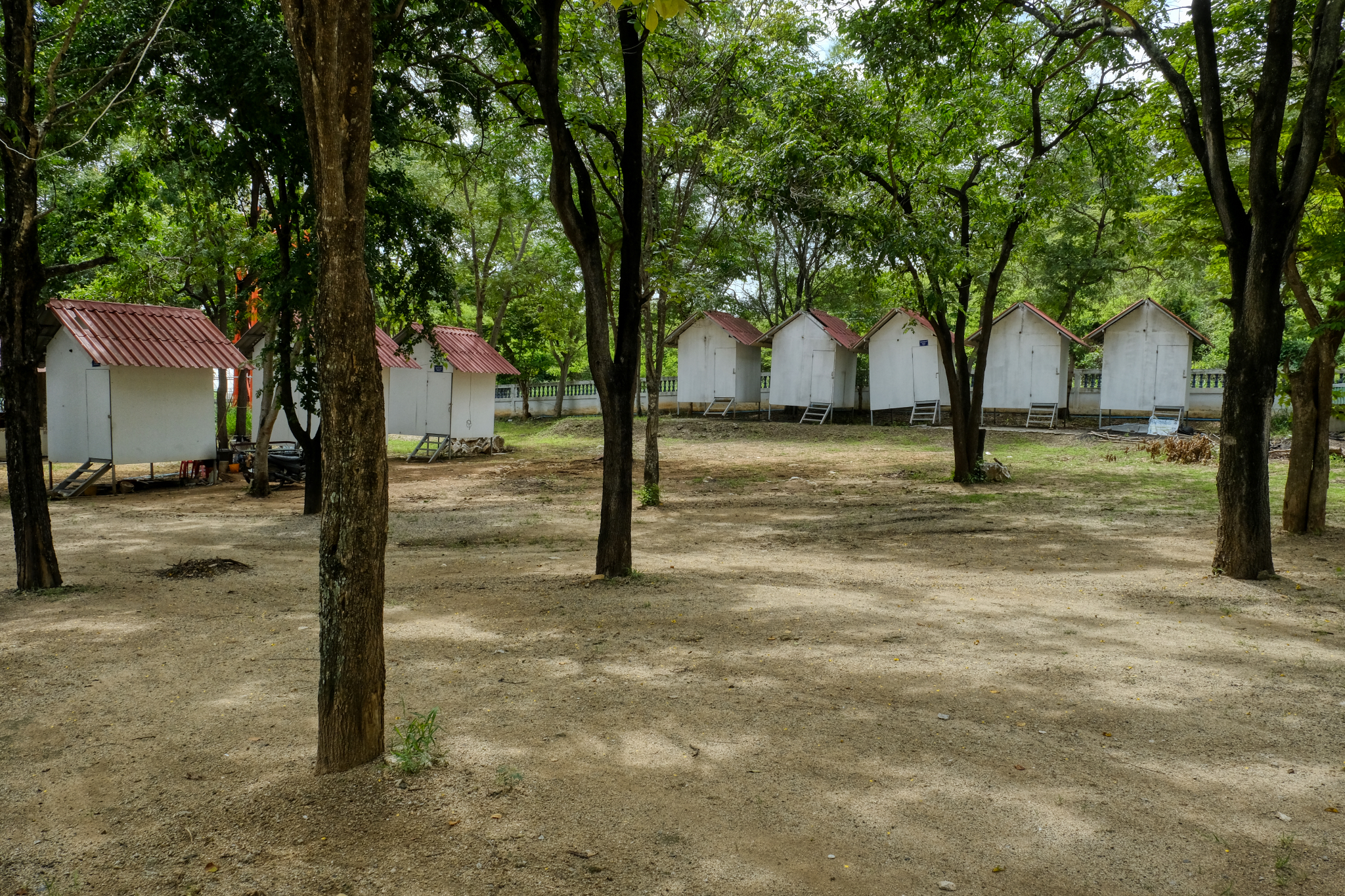 I strolled around the rest of the temple grounds and came upon these monks' cells. I assume this was a wat that took in novice/new monks and trained them here. Very austere . . .
I strolled around the rest of the temple grounds and came upon these monks' cells. I assume this was a wat that took in novice/new monks and trained them here. Very austere . . .
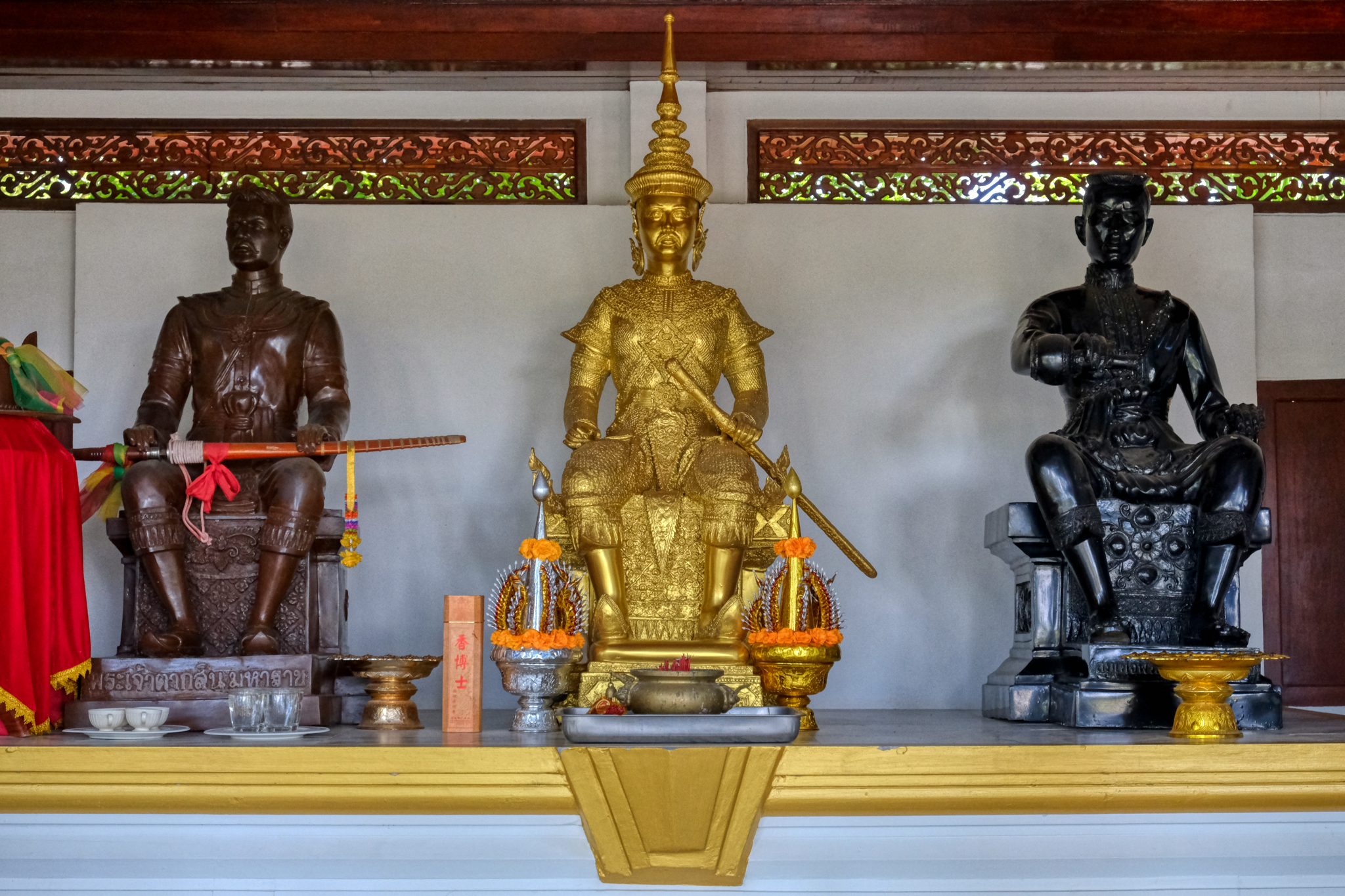 Someone had built a very nice sala with statues of three ancient Thai Kings. Sweet.
Someone had built a very nice sala with statues of three ancient Thai Kings. Sweet.
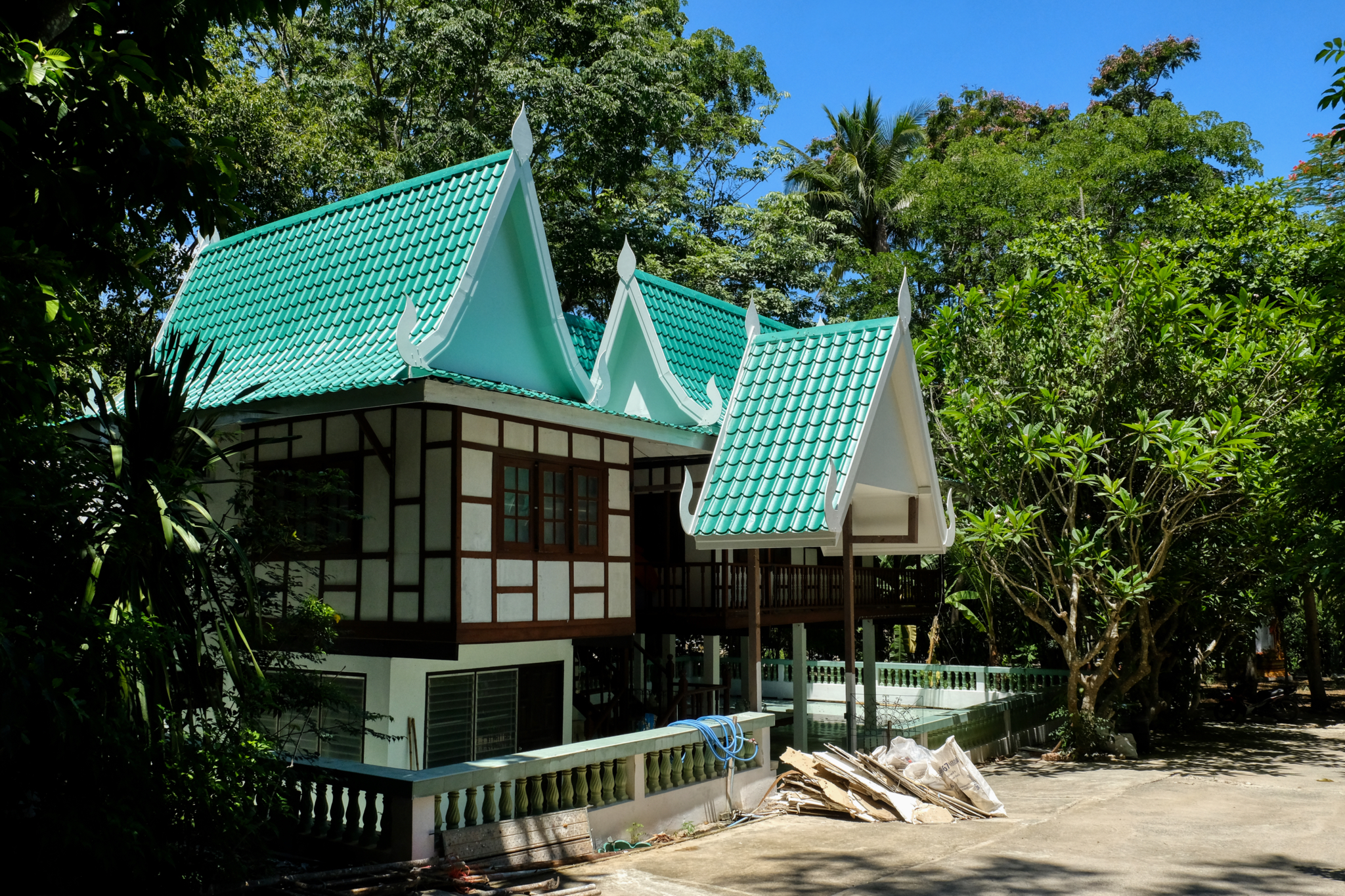 What I assumed to be the head Abbot's house getting the finishing touches on a new roof.
What I assumed to be the head Abbot's house getting the finishing touches on a new roof.
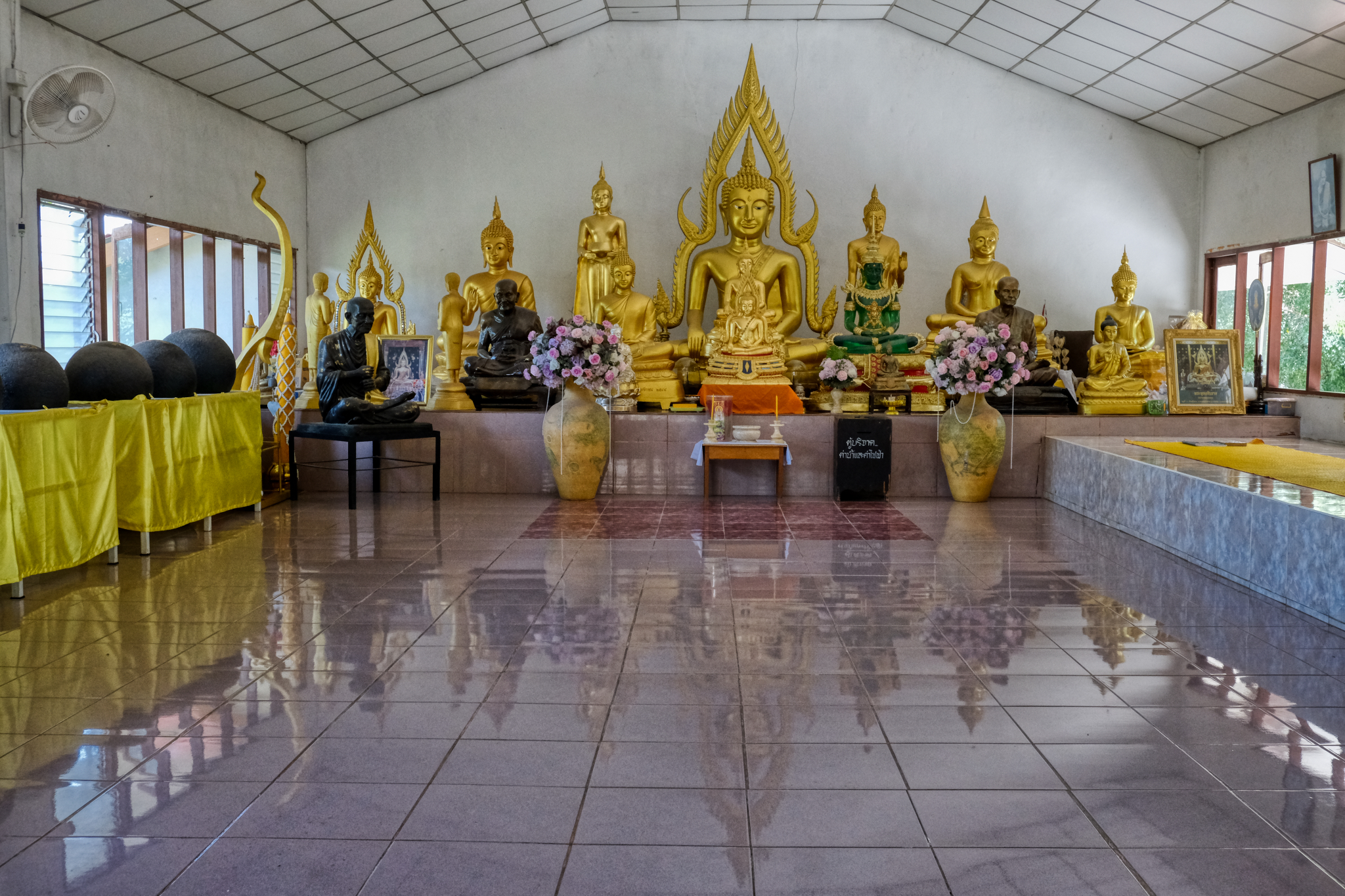 The current main hall where the monks daily meet to meditate and chant. The door was open and I went in. I had been looking for the donation box and I found it here. I left a substantial donation toward the construction and maintenance of this wonderful place.
The current main hall where the monks daily meet to meditate and chant. The door was open and I went in. I had been looking for the donation box and I found it here. I left a substantial donation toward the construction and maintenance of this wonderful place.
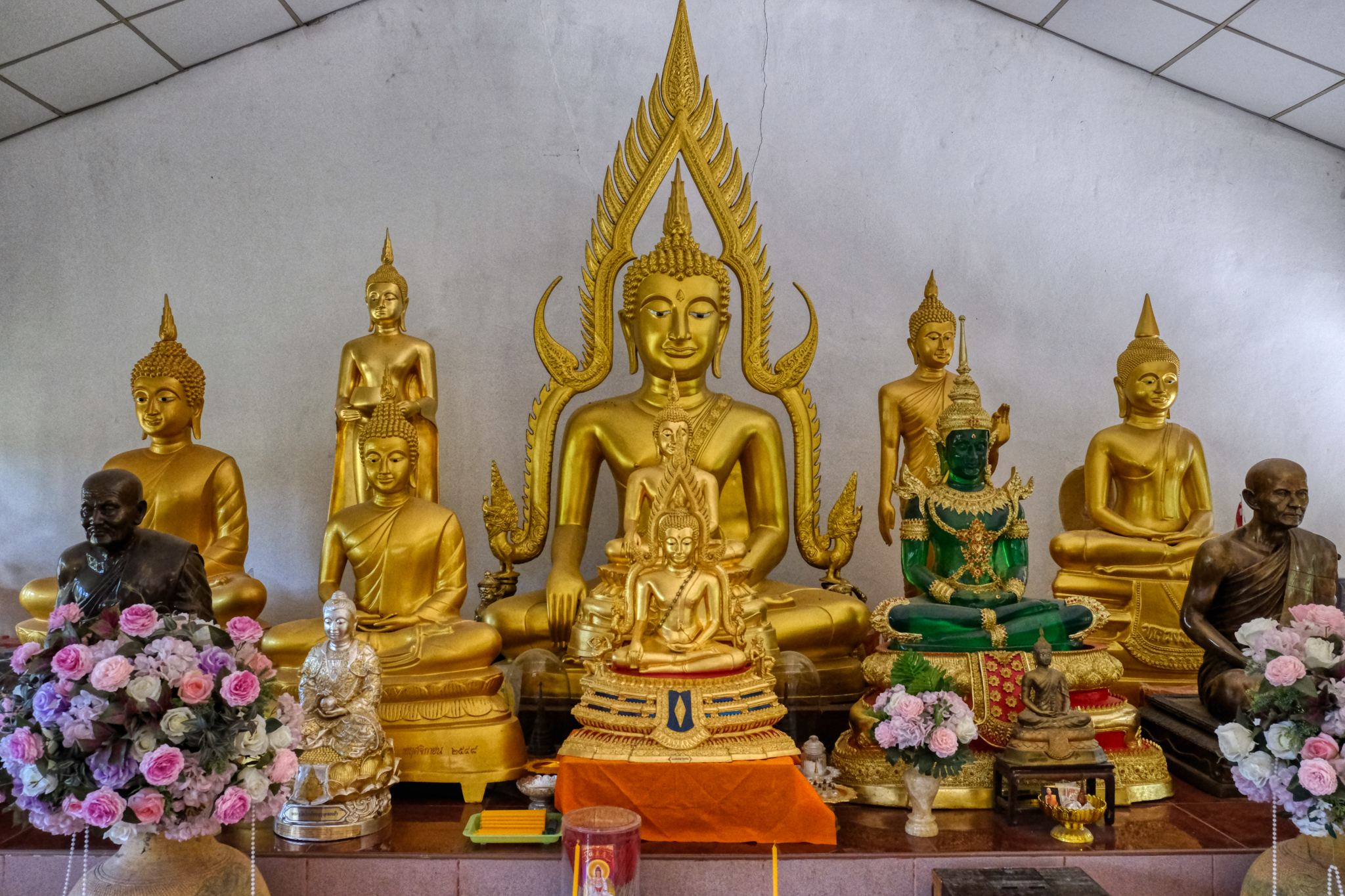 I left this wat after many hours exploring its beauty and spirituality.
I left this wat after many hours exploring its beauty and spirituality.
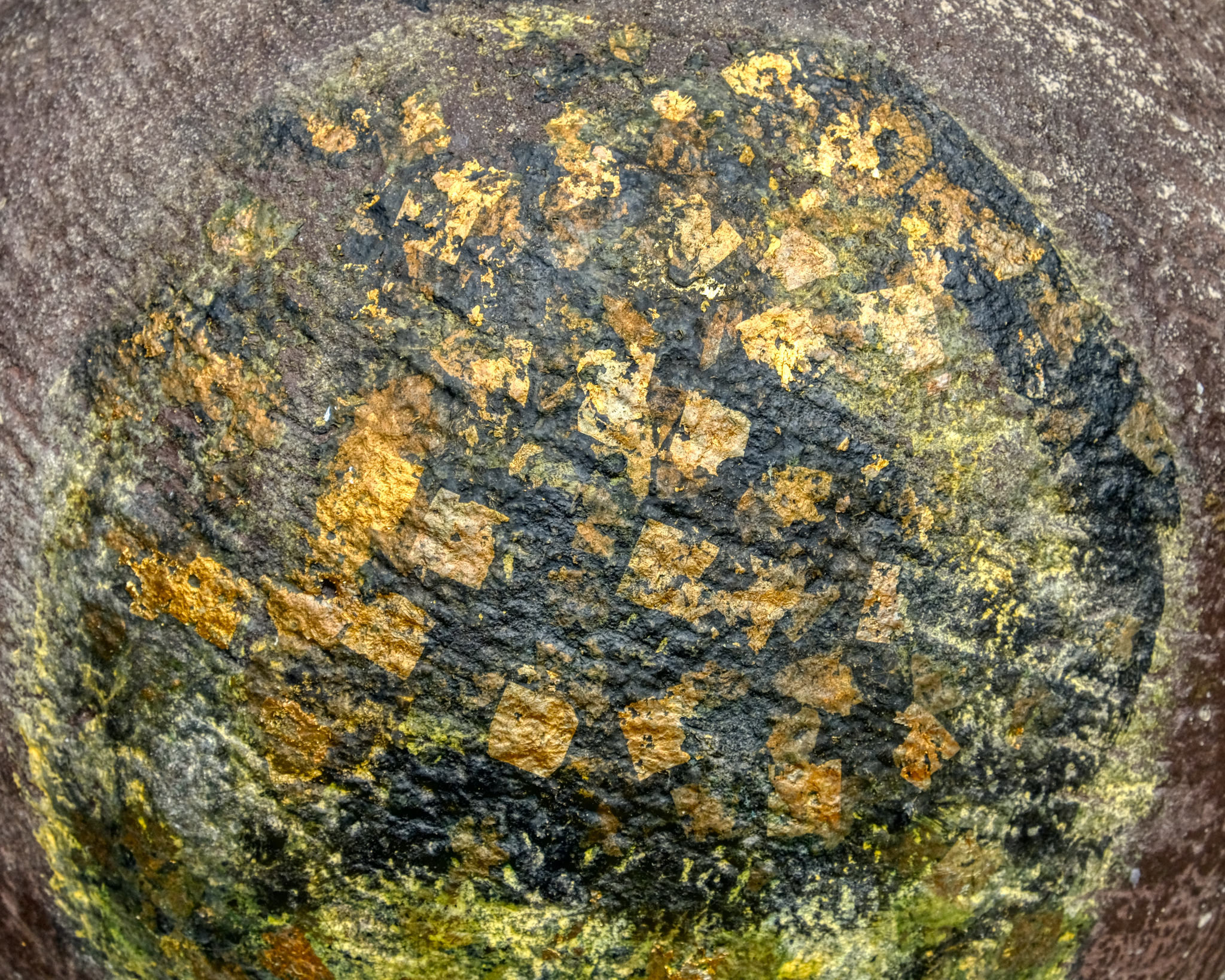
Visitors From Abroad . . . Another Hua Hin Area Ramble!
 Wednesday, March 25, 2020 at 5:15PM
Wednesday, March 25, 2020 at 5:15PM All in a day . . . all within 20 miles . . .
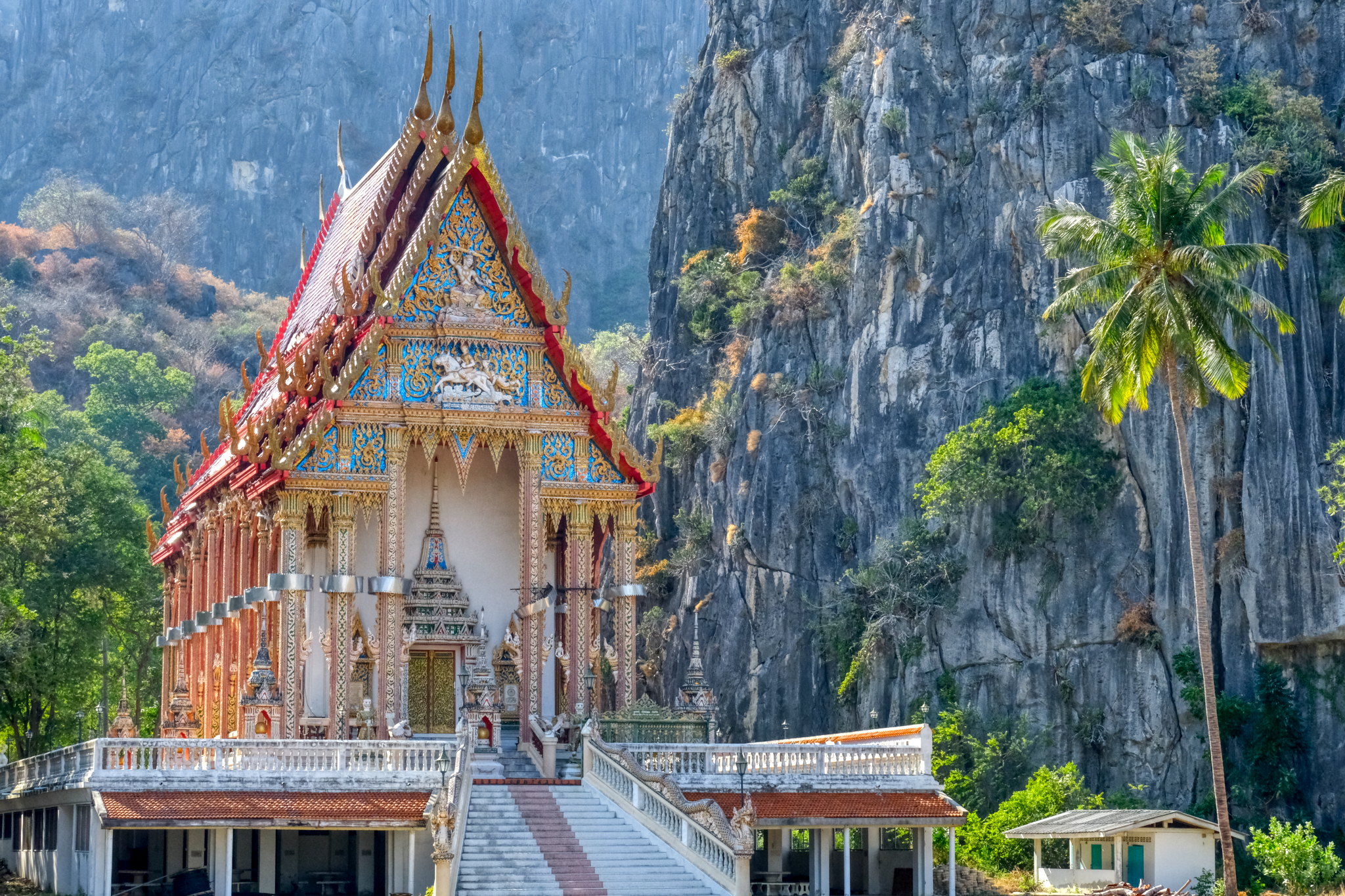 It's always great to have visitors from abroad come to Thailand . . . I get to take day trips out and about . . . usually to places I have never been, so we can explore together.
It's always great to have visitors from abroad come to Thailand . . . I get to take day trips out and about . . . usually to places I have never been, so we can explore together.
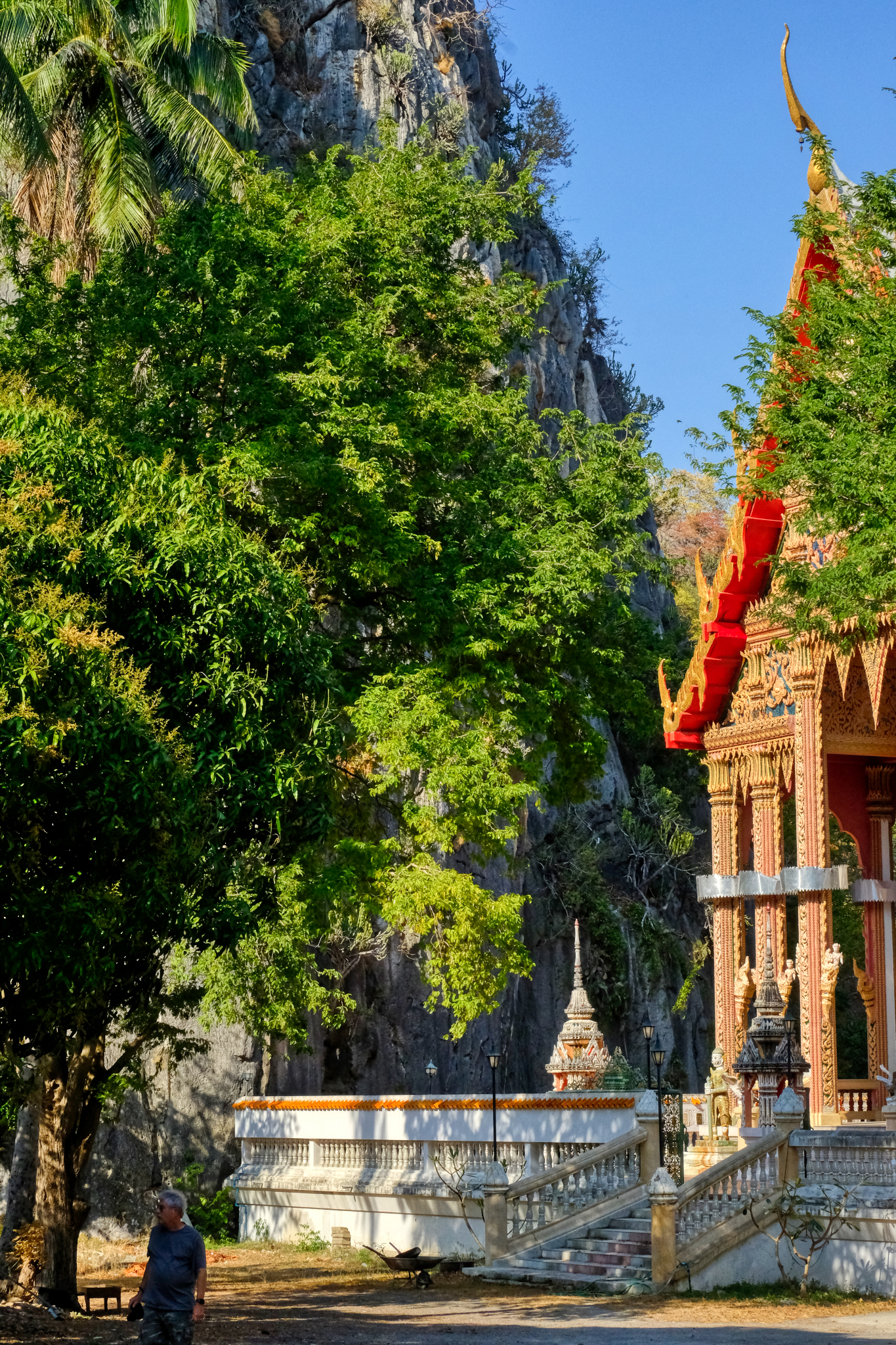 This Buddhist temple (wat) up against steep cliffs is one of my favorites. I pass it often when I am down Hua Hin way . . . but decided to stop and take a look again. Glad we did.
This Buddhist temple (wat) up against steep cliffs is one of my favorites. I pass it often when I am down Hua Hin way . . . but decided to stop and take a look again. Glad we did.

Such a lovely wat . . . looks like they are going to assemble a new giant Buddha image soon.
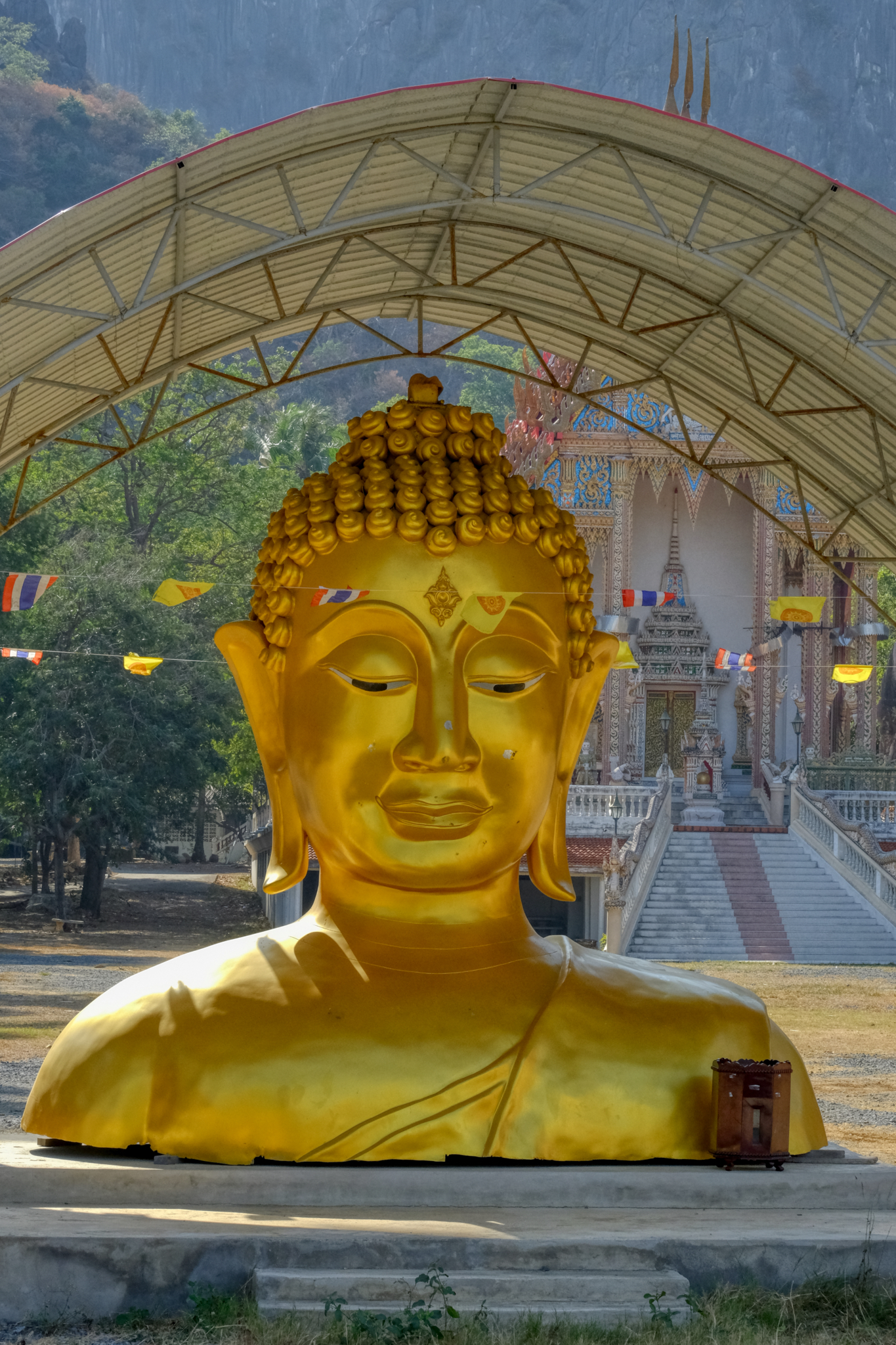
Beautiful workmanship . . . .
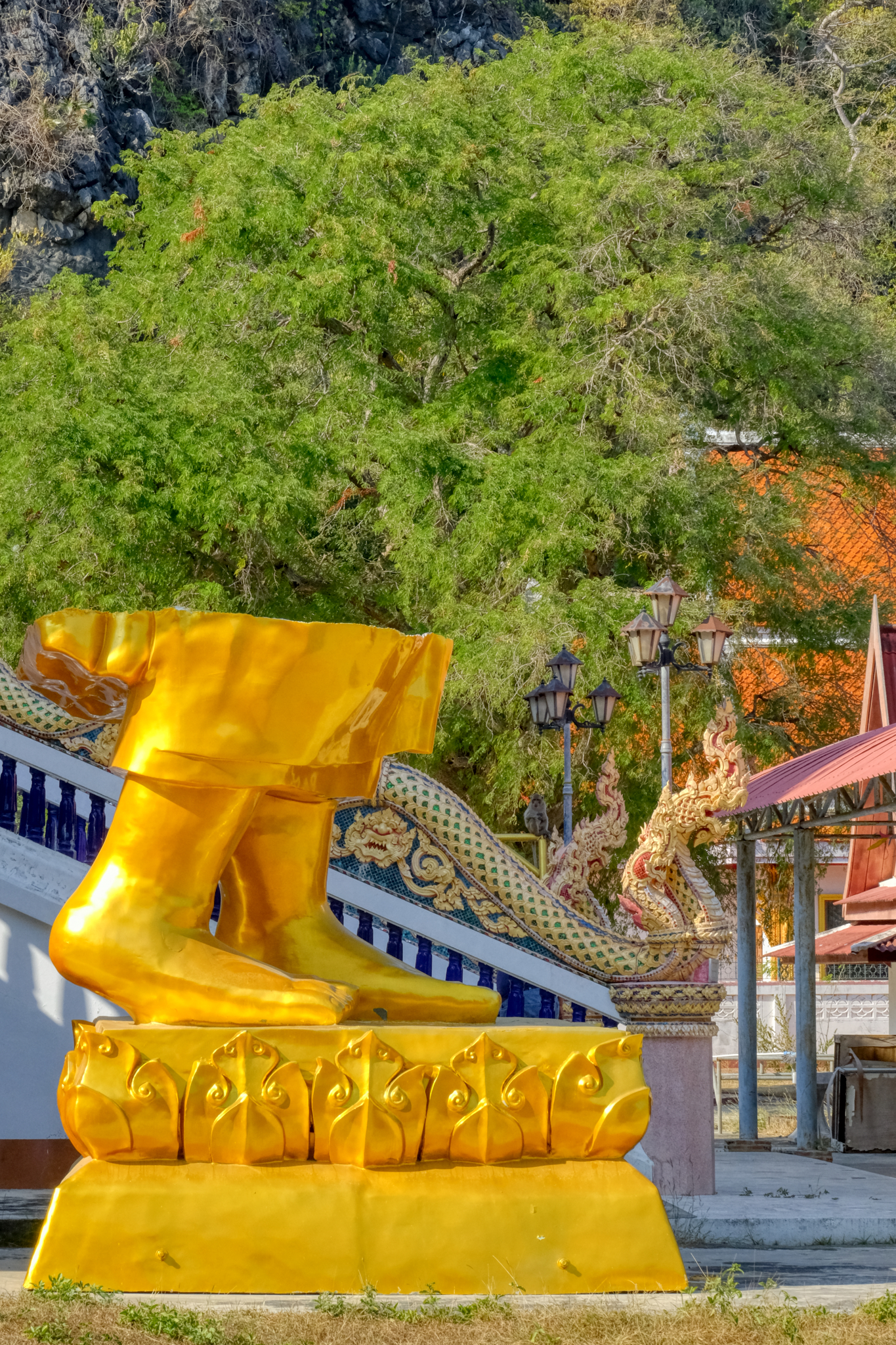
Ah! Looks like a standing Buddha image going up.
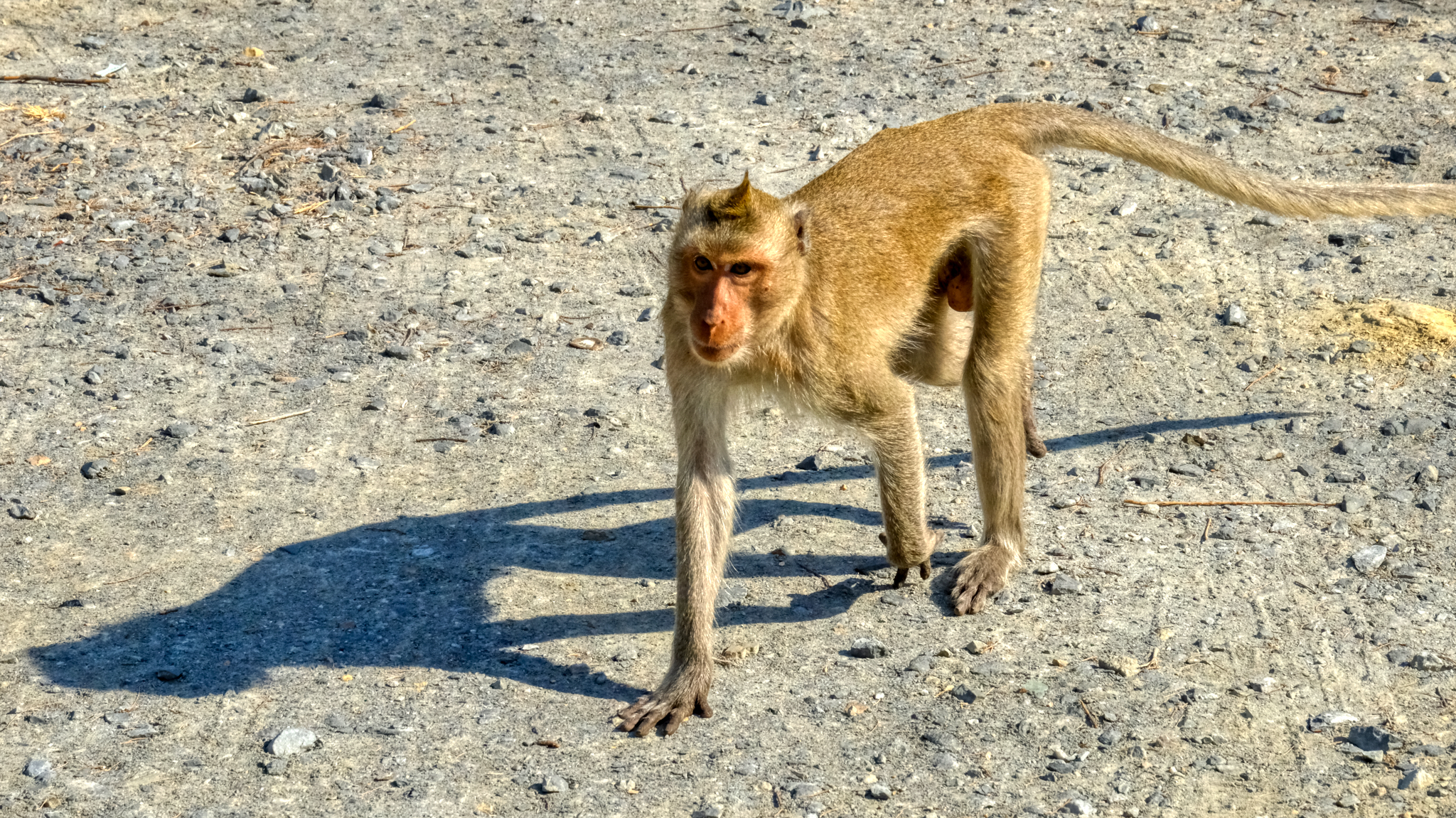 This such an interesting wat . . . lots to see here . . . including a pack of very curious monkeys.
This such an interesting wat . . . lots to see here . . . including a pack of very curious monkeys.
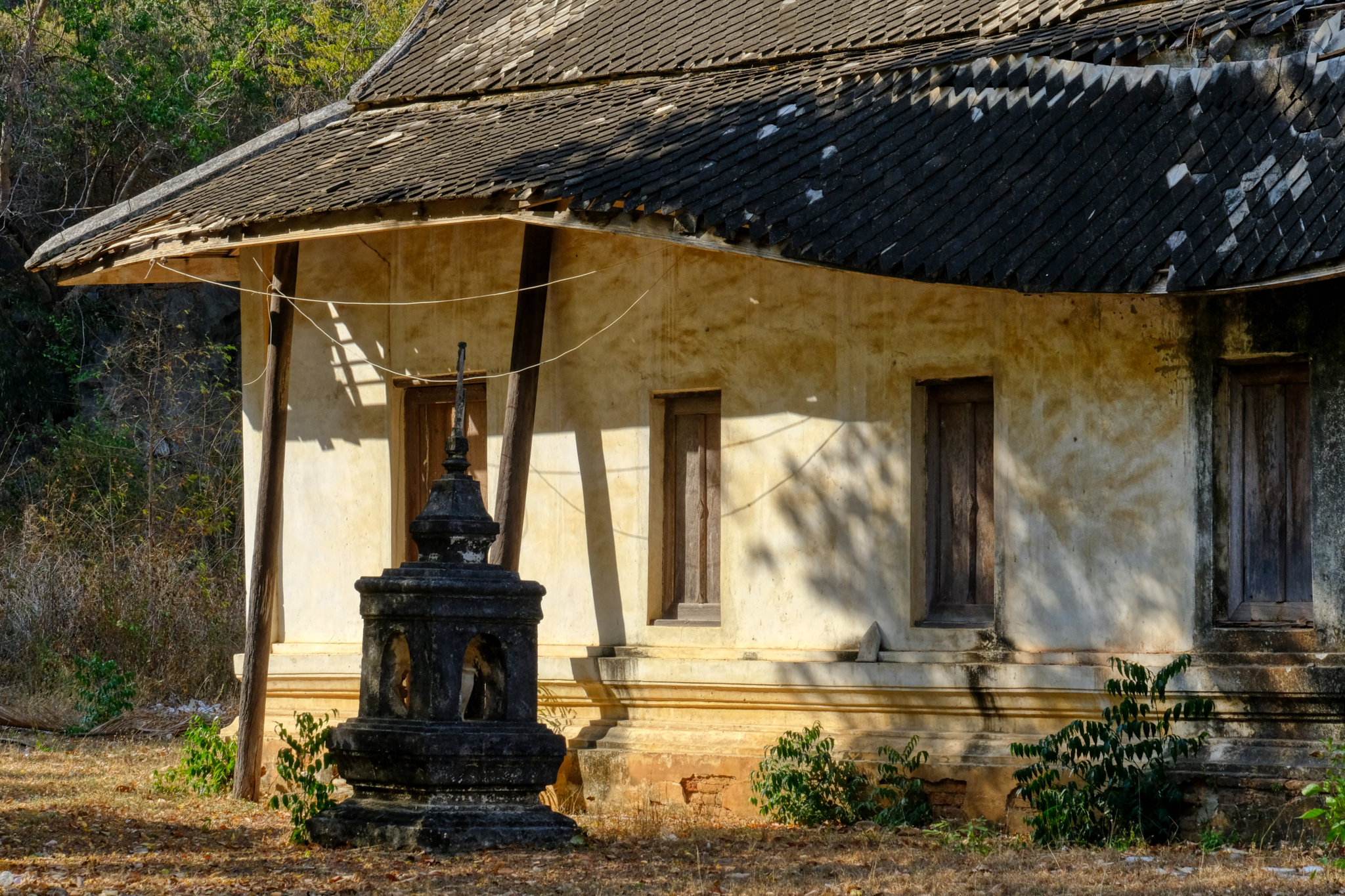 As is often the case at Thai wats, the new buildings are built in front of the older, perhaps original temple structures.
As is often the case at Thai wats, the new buildings are built in front of the older, perhaps original temple structures.
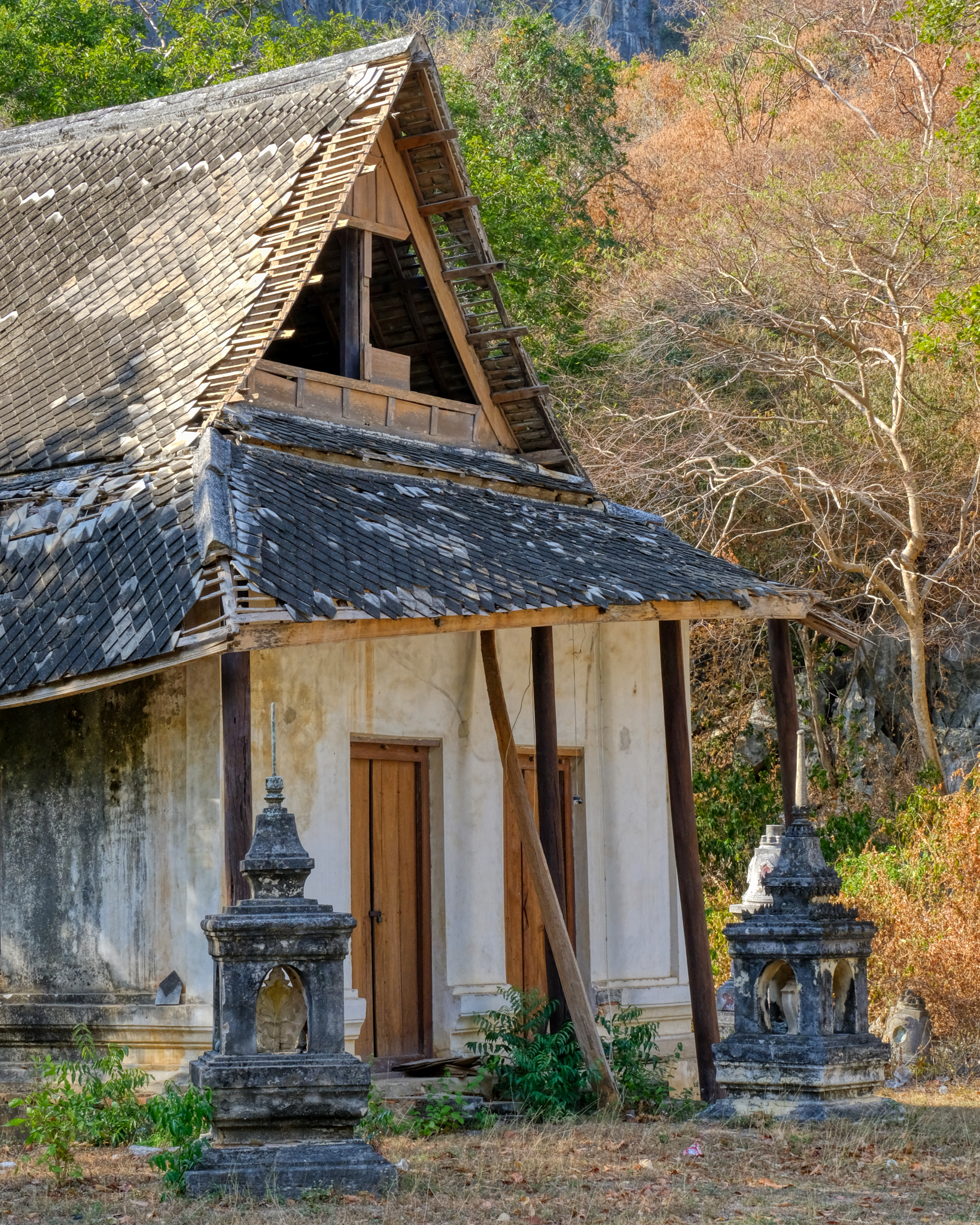 The patina!
The patina!
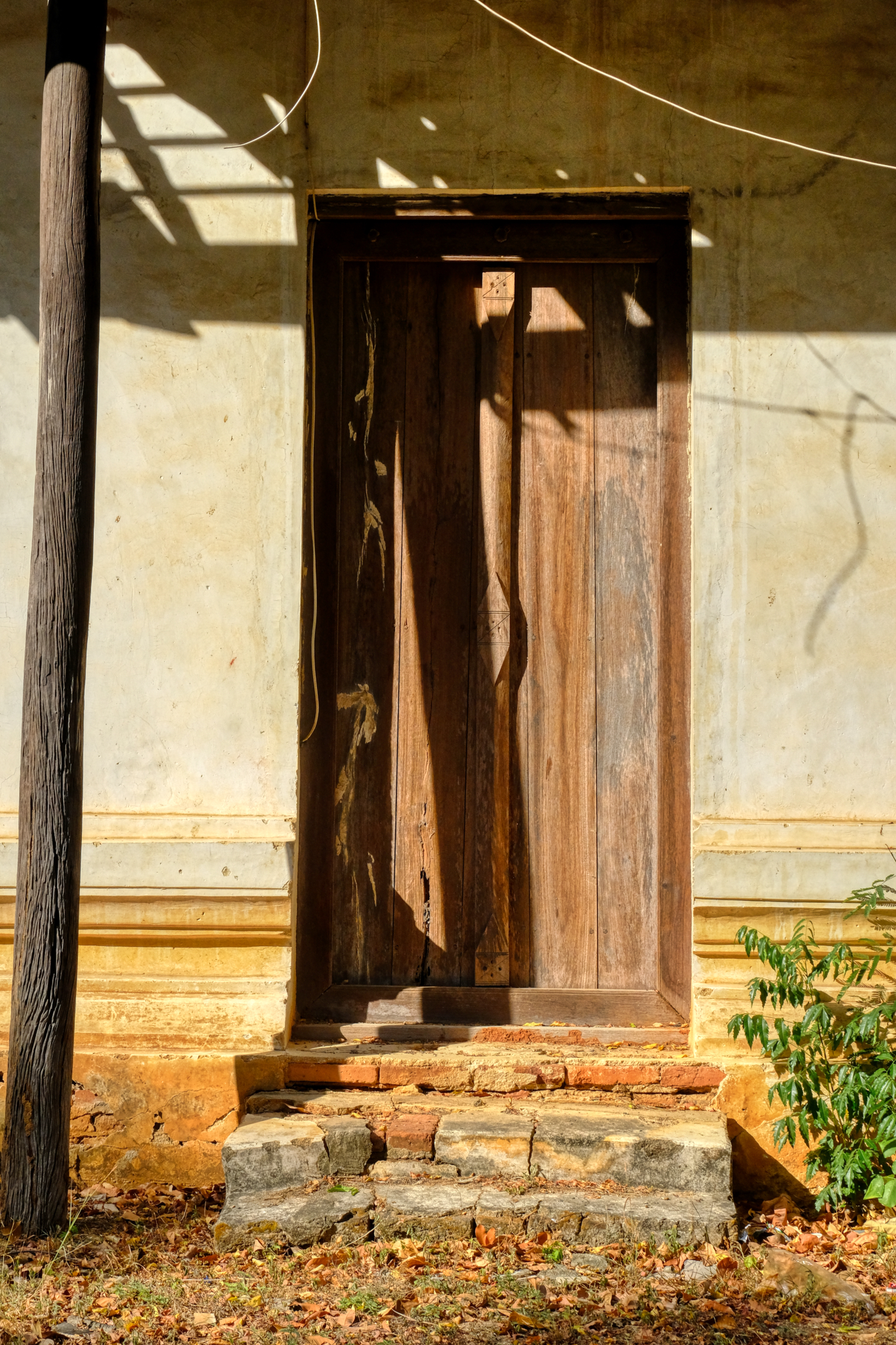 Lovely textures in the filtered afternoon light.
Lovely textures in the filtered afternoon light.
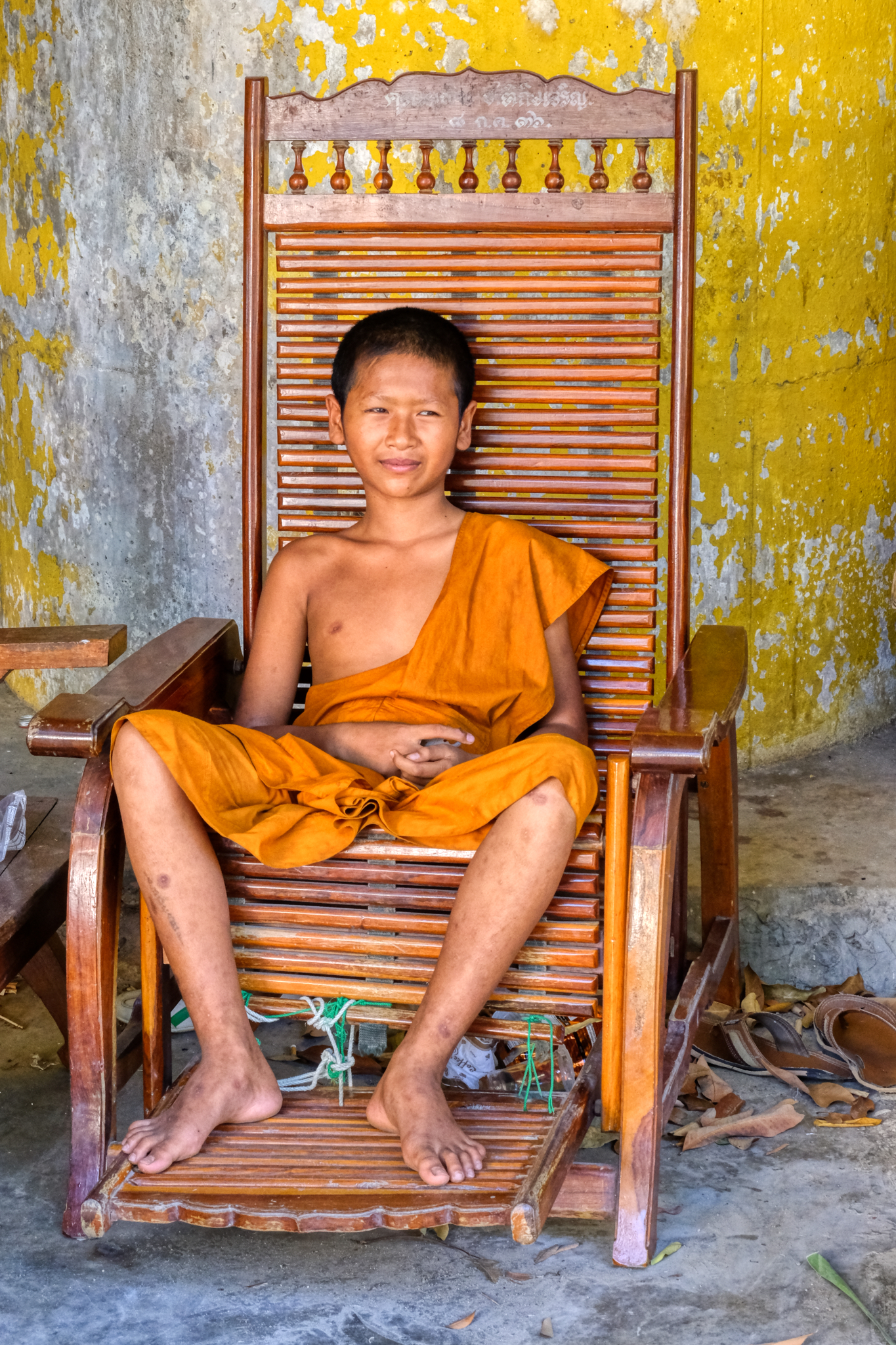 I was surprised to see this young monk! There weren't any other monks at this wat. He kindly gave me permission for so photos. I made sure he saw me put money in the donation box.
I was surprised to see this young monk! There weren't any other monks at this wat. He kindly gave me permission for so photos. I made sure he saw me put money in the donation box.
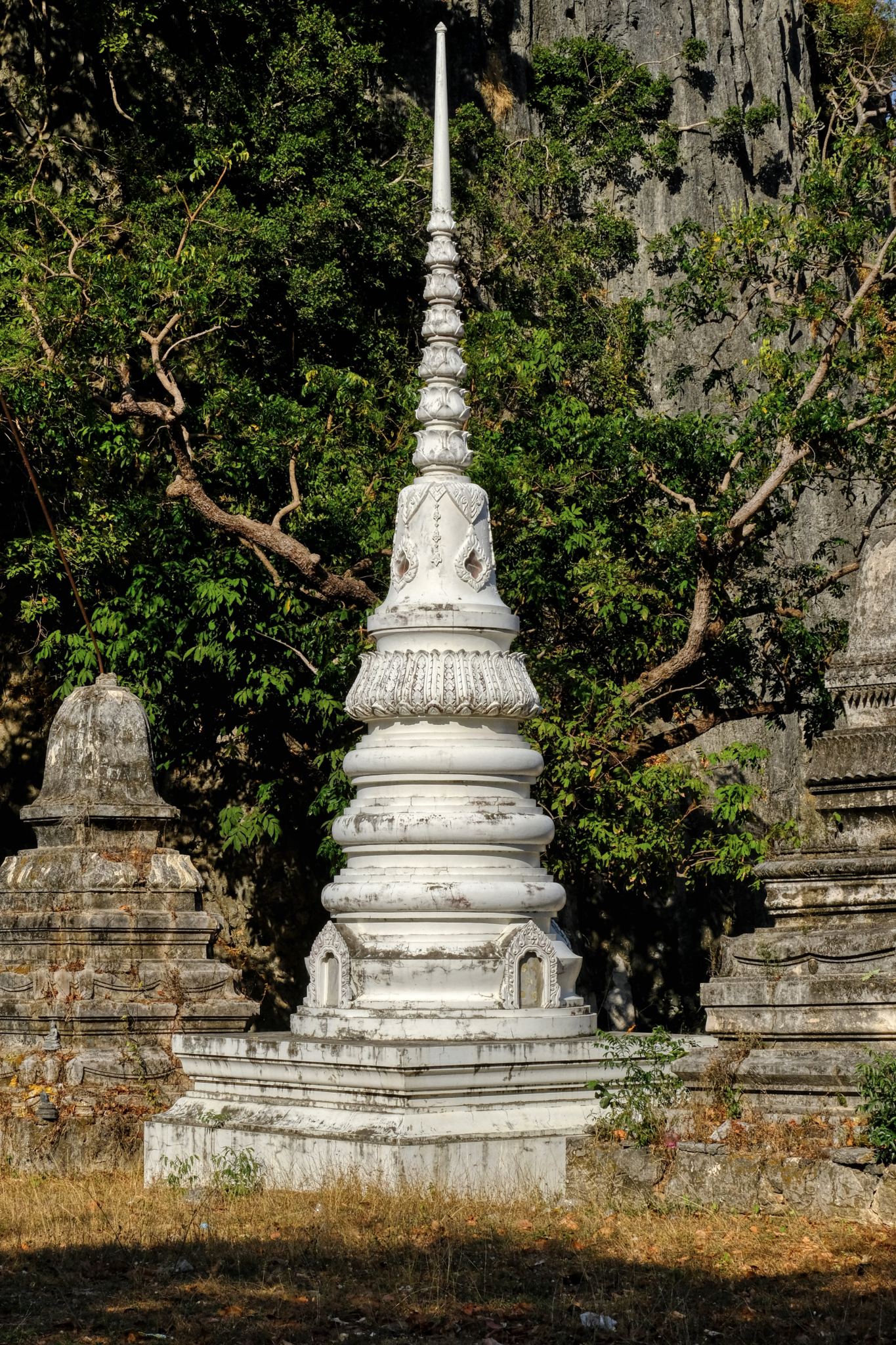 A large, old chedi on the temple grounds. Perhaps a previous revered head monk's final resting place.
A large, old chedi on the temple grounds. Perhaps a previous revered head monk's final resting place.
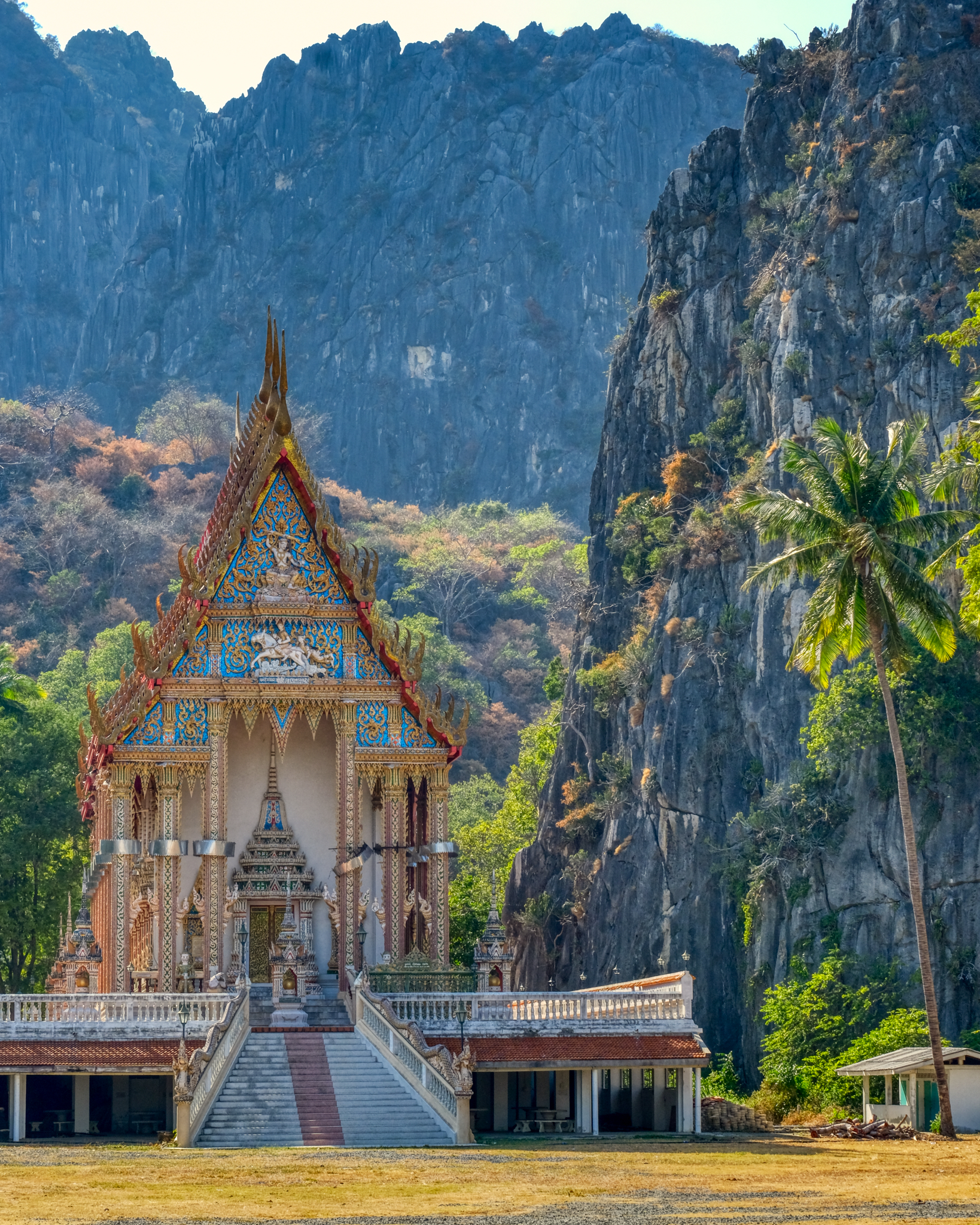 One last look at this fantastic cliff side wat.
One last look at this fantastic cliff side wat.
----------------------------------------------------------------
Wat Huai Sai Tai Temple
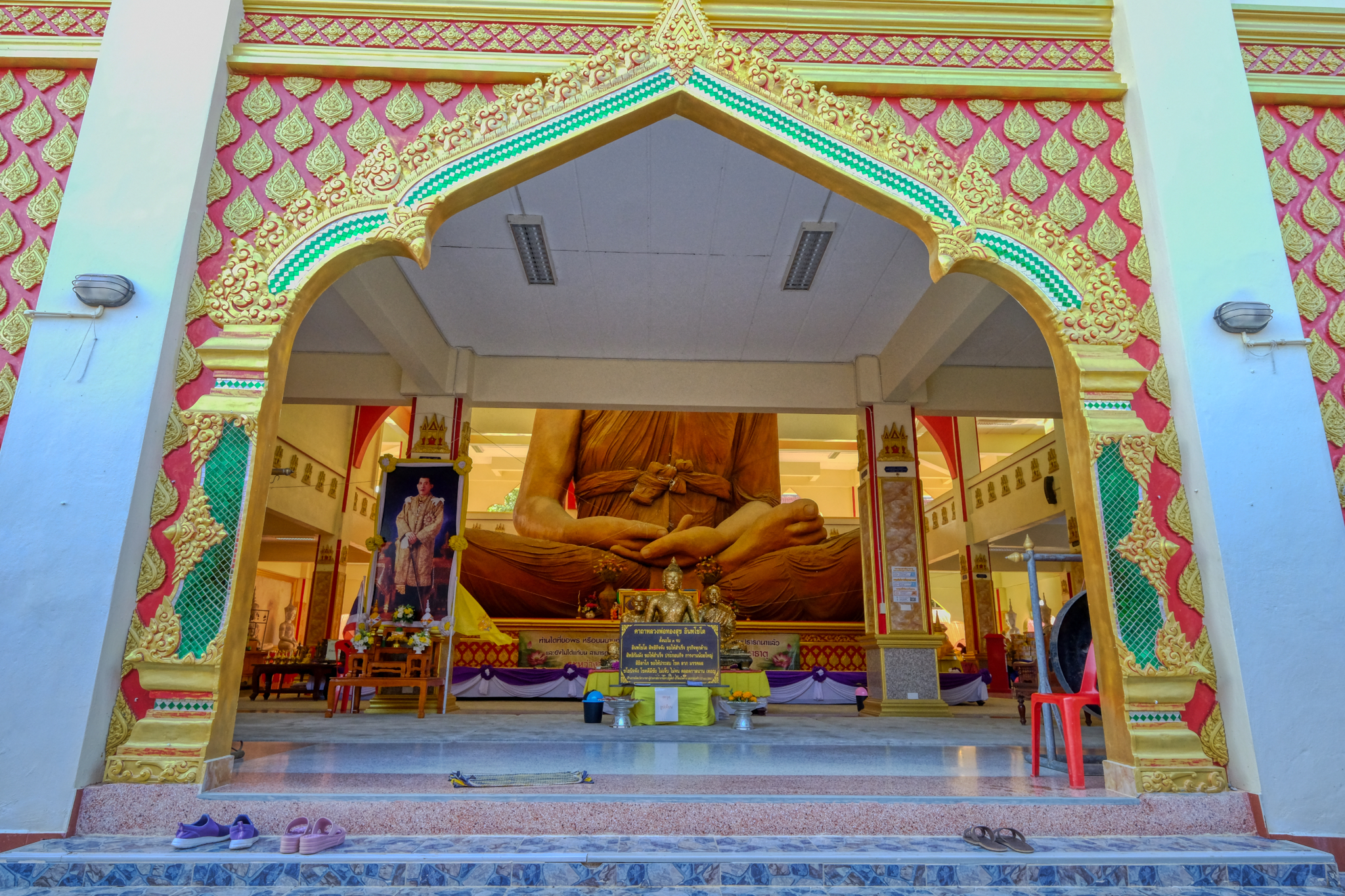 On the way back from our hilltop chedi, I wanted to stop and show my friend the Colossus of Hua Hin at Wat Hui Sai Tai!
On the way back from our hilltop chedi, I wanted to stop and show my friend the Colossus of Hua Hin at Wat Hui Sai Tai!
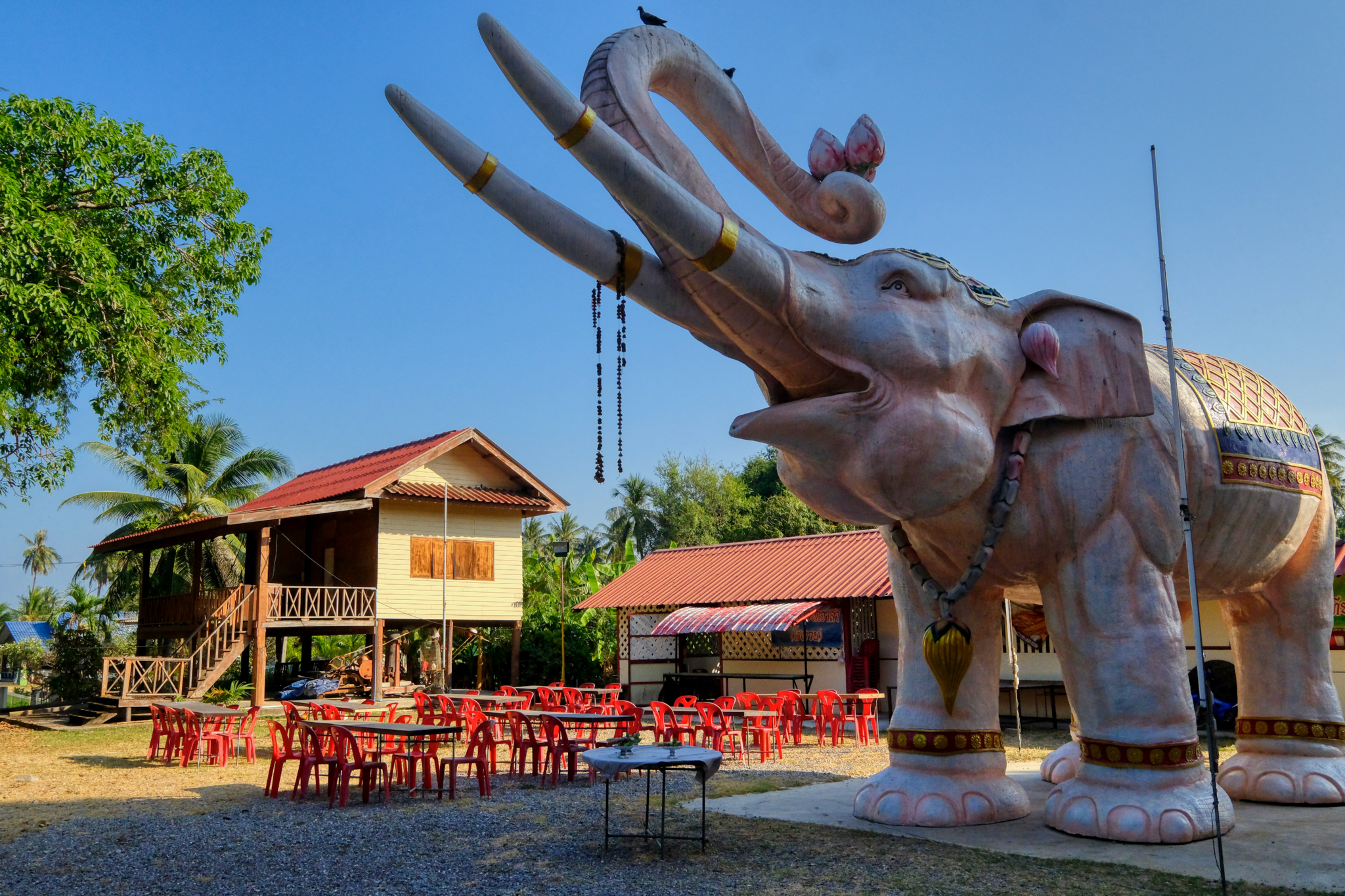 Such a lovely and strange place . . .
Such a lovely and strange place . . .
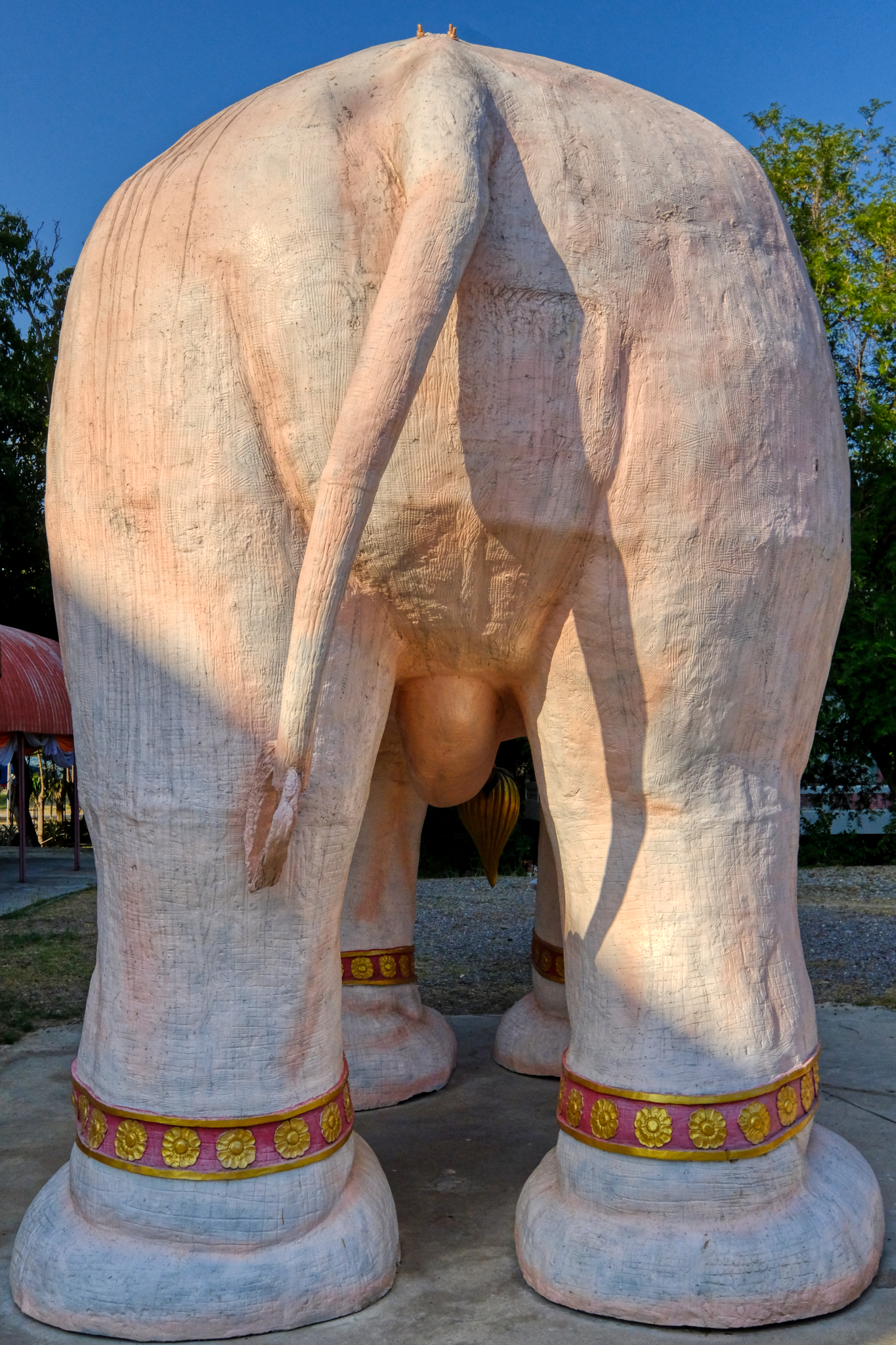 Yep . . . a cement elephant's butt.
Yep . . . a cement elephant's butt.
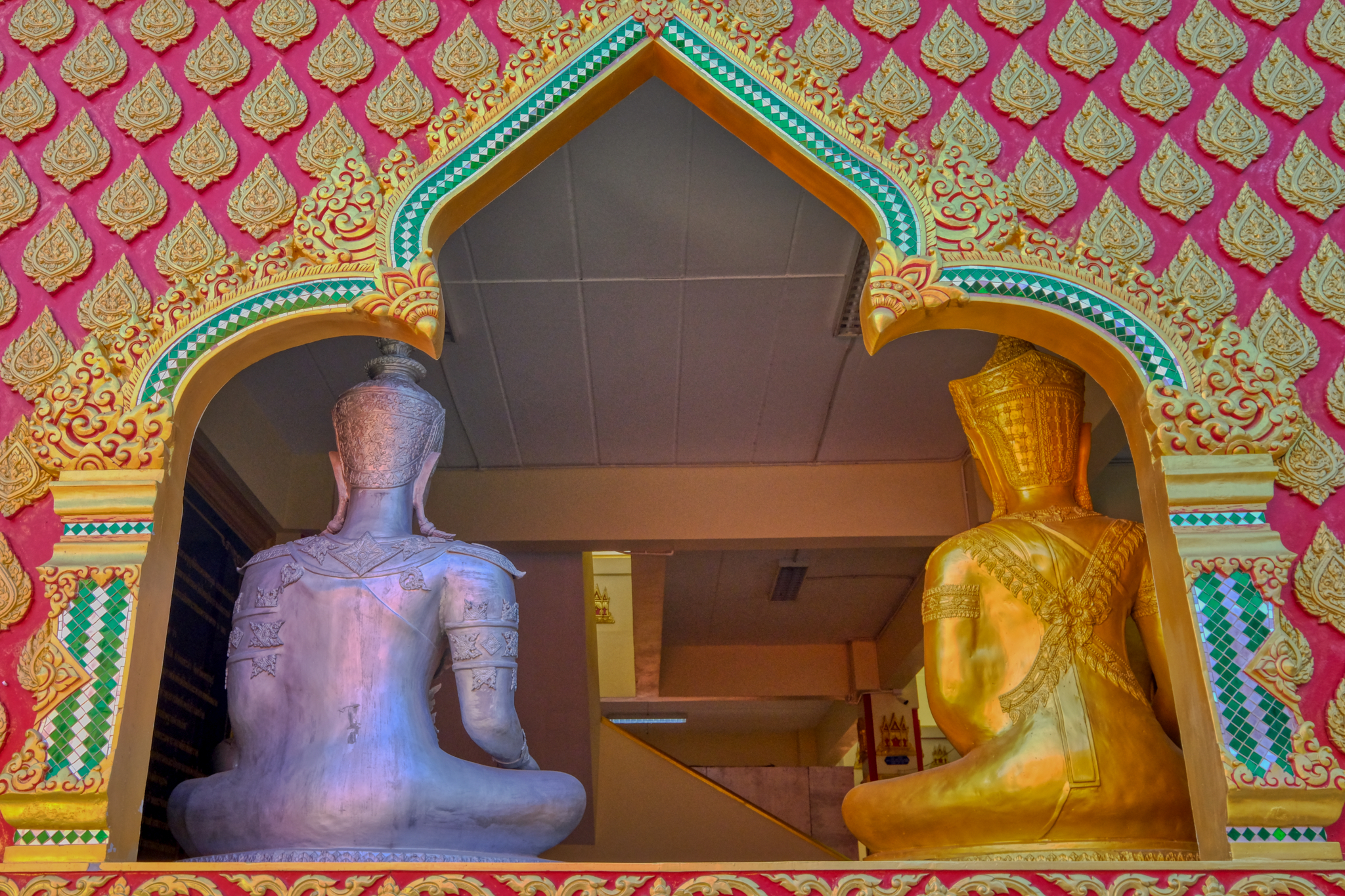 The spaces and surfaces around the outside of the temple were beautifully decorated.
The spaces and surfaces around the outside of the temple were beautifully decorated.
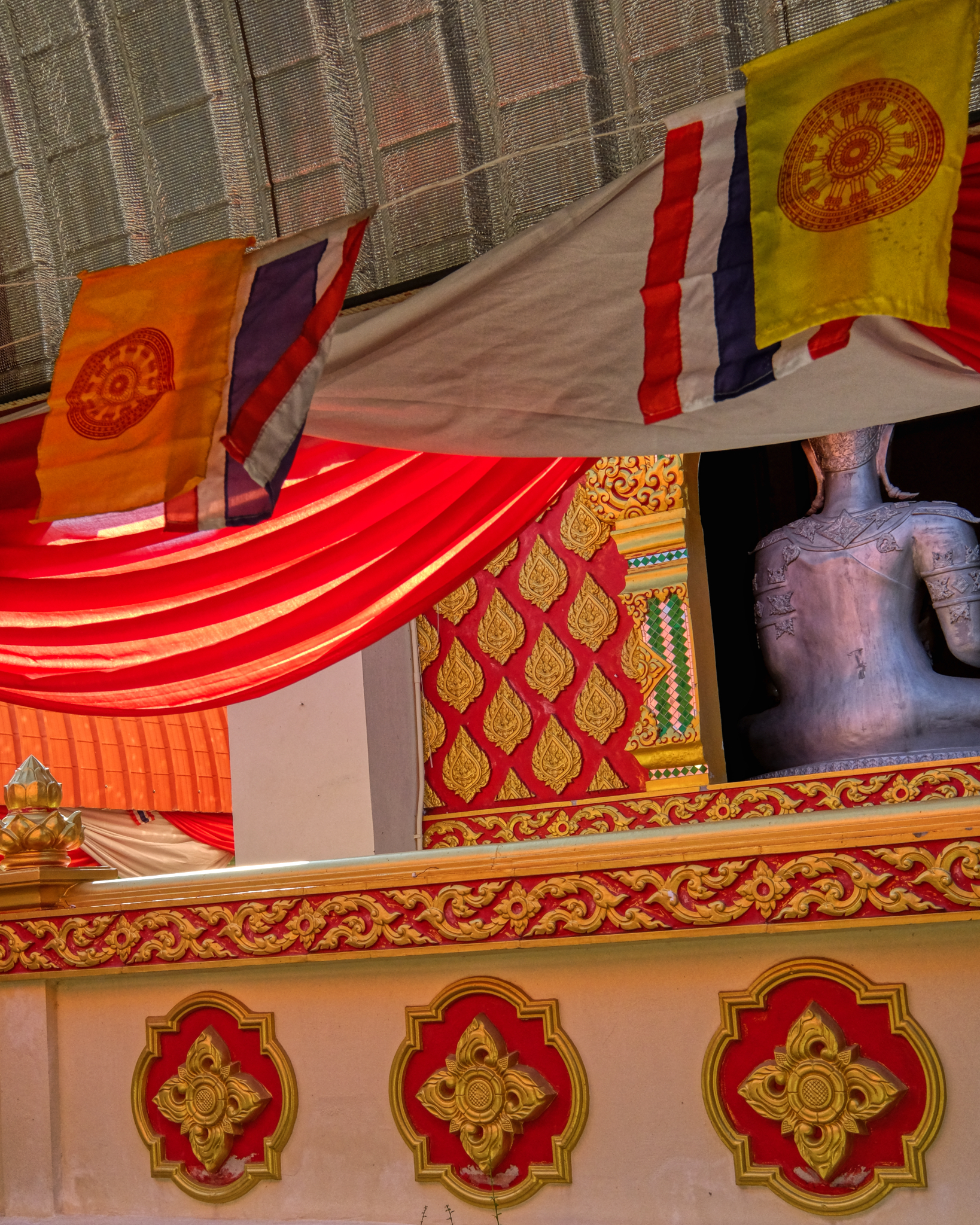 The exterior details were aesthetically very pleasing.
The exterior details were aesthetically very pleasing.
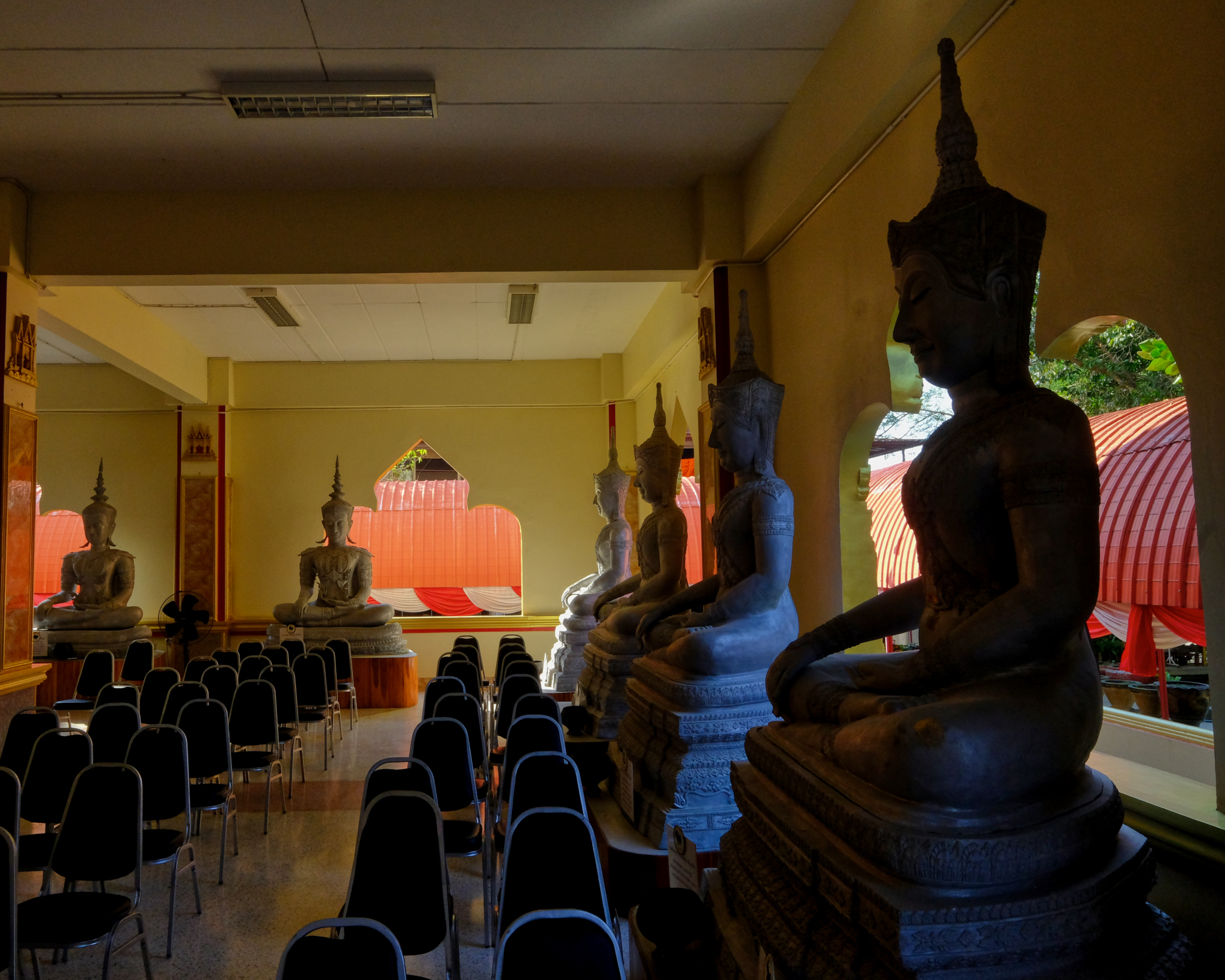 Of course, we had not come to just admire the exterior decor . . . it was what was inside that attracted us . . .
Of course, we had not come to just admire the exterior decor . . . it was what was inside that attracted us . . .
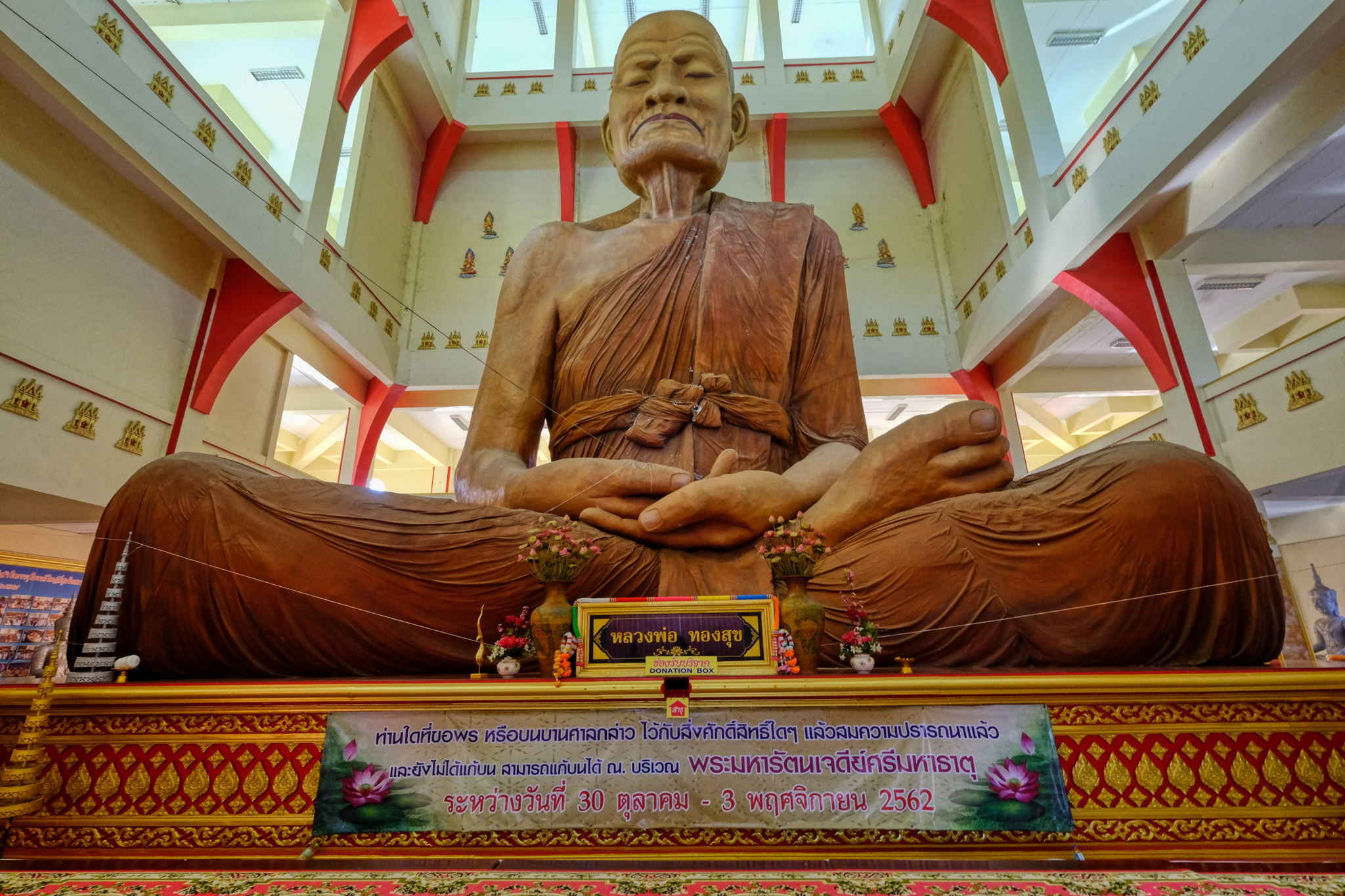 What attracted us was the colossal statue of the venerated monk, Luong Phor Thongsuk!
What attracted us was the colossal statue of the venerated monk, Luong Phor Thongsuk!
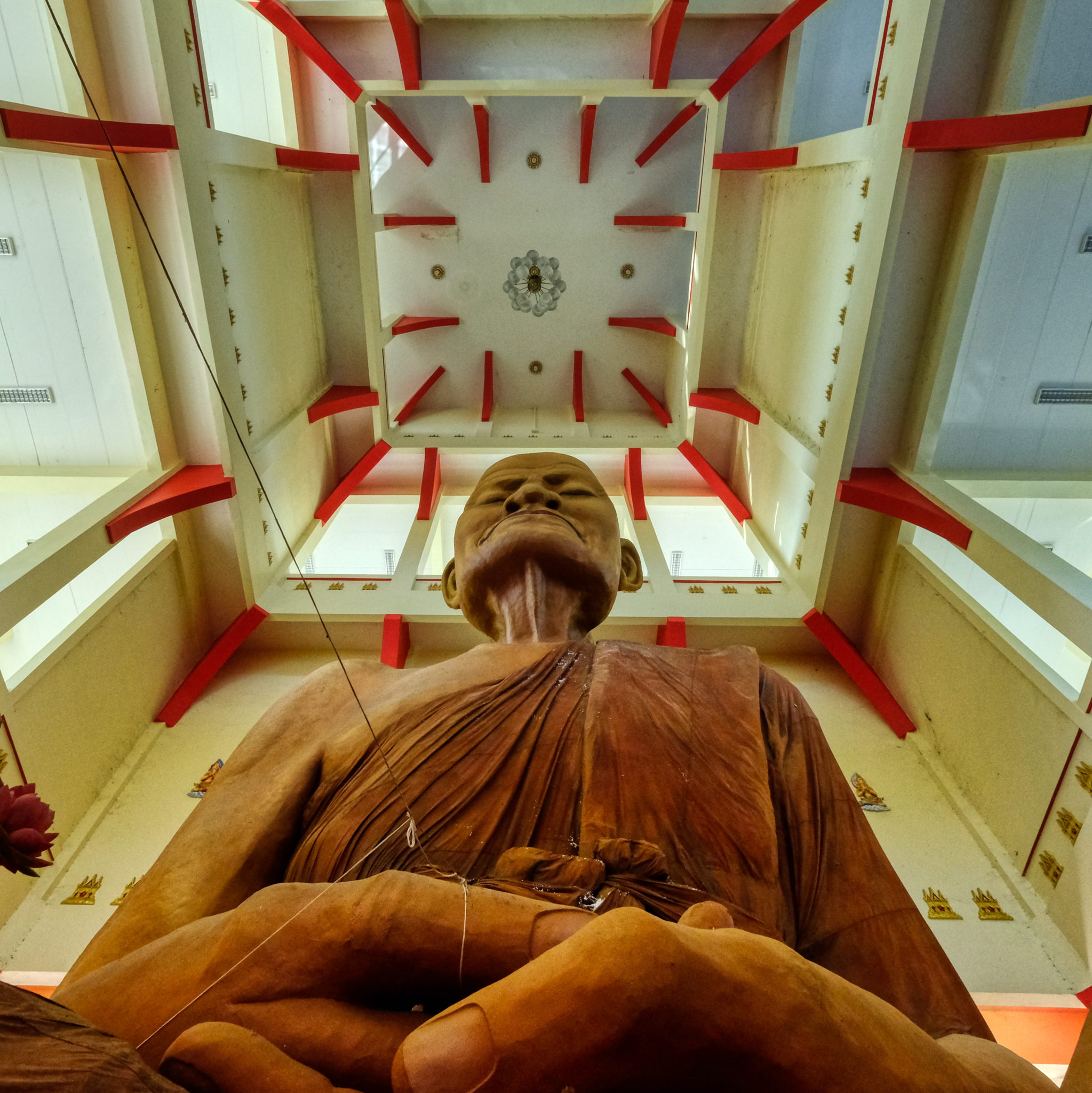 The giant Luang Phor Thongsuk in all his revered glory.
The giant Luang Phor Thongsuk in all his revered glory.
 The scale of this statue is incredible!
The scale of this statue is incredible!
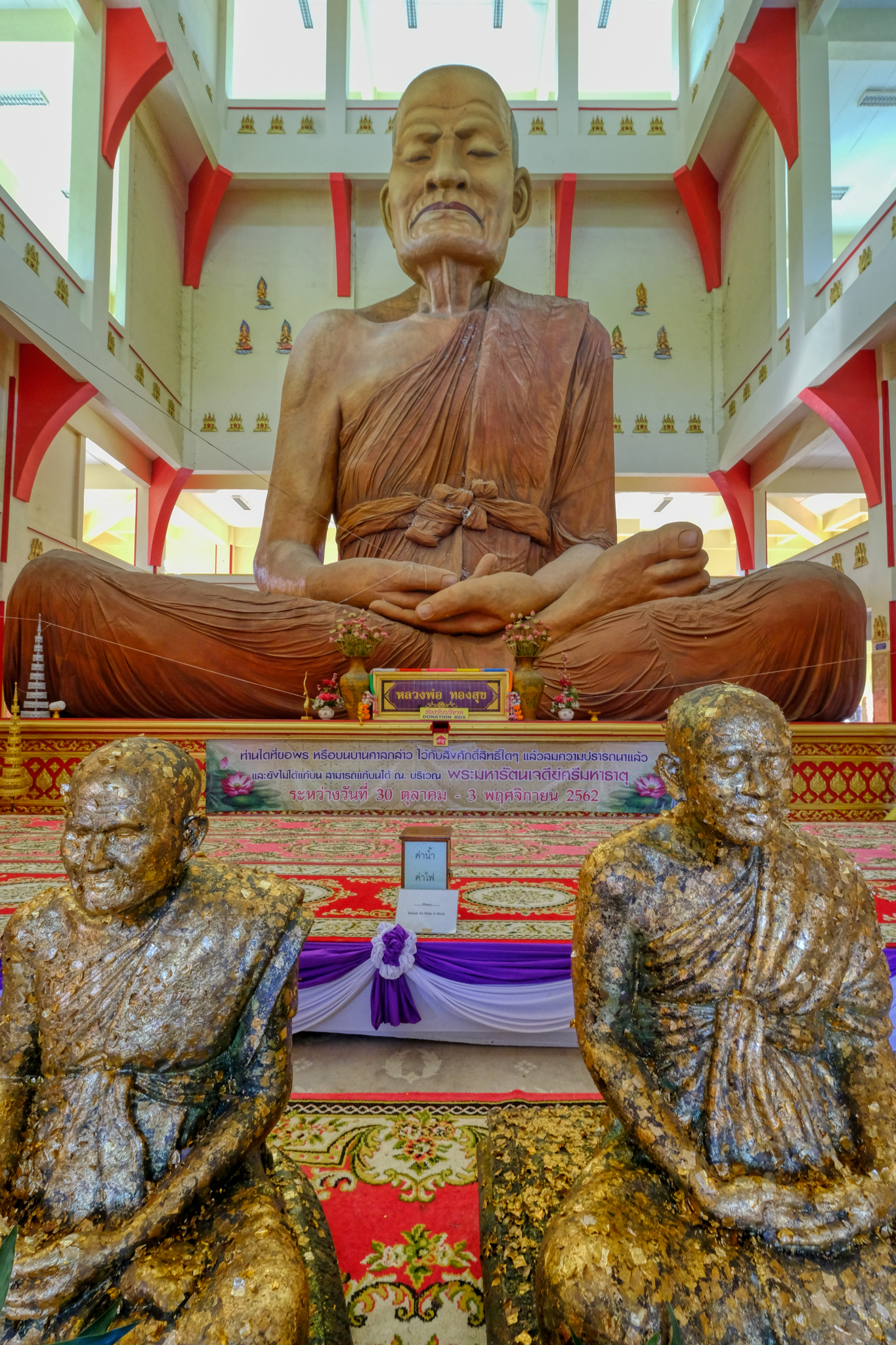 During our short visit here, many people came to pay their respects.
During our short visit here, many people came to pay their respects.
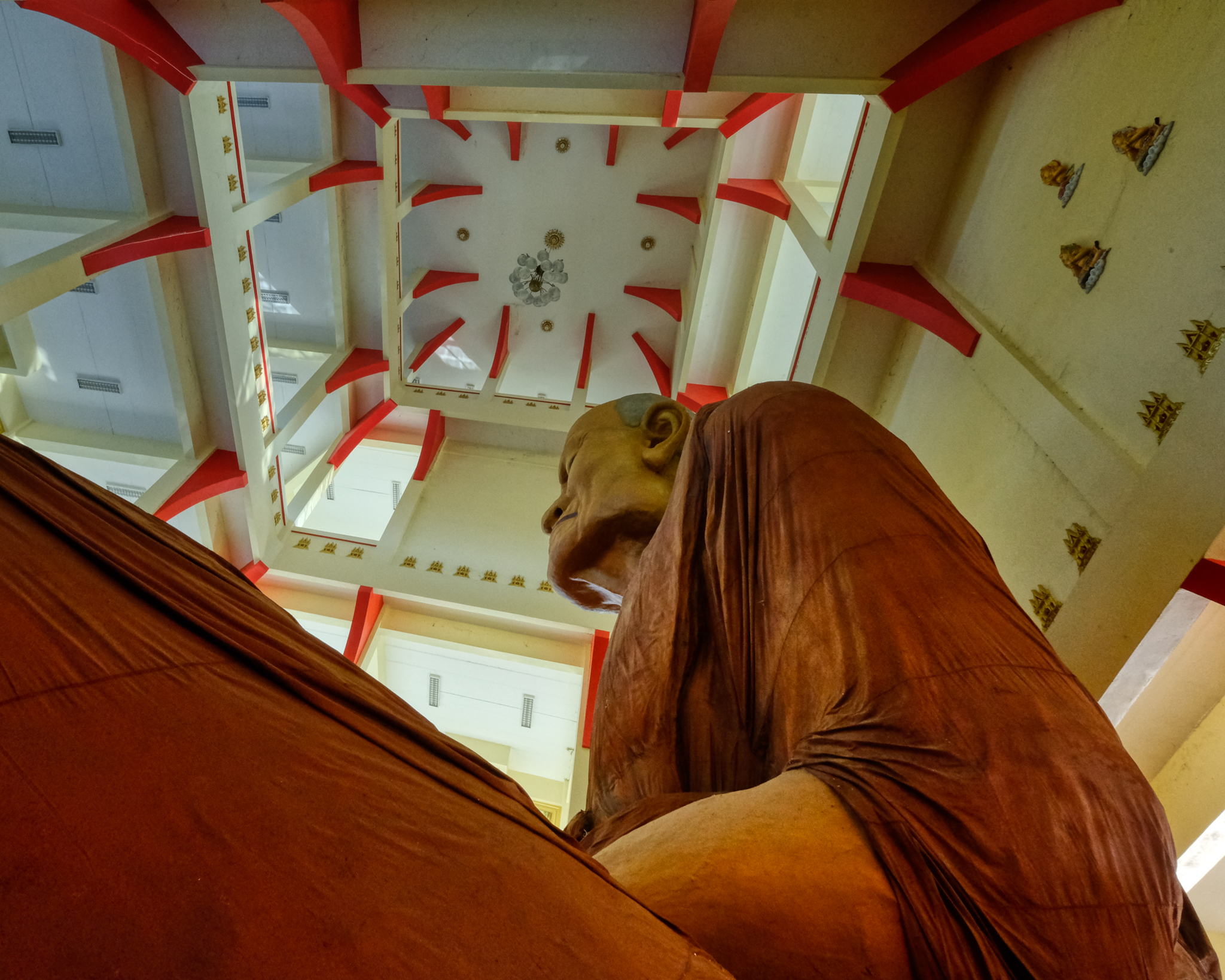 Our last look at the colossus!
Our last look at the colossus!
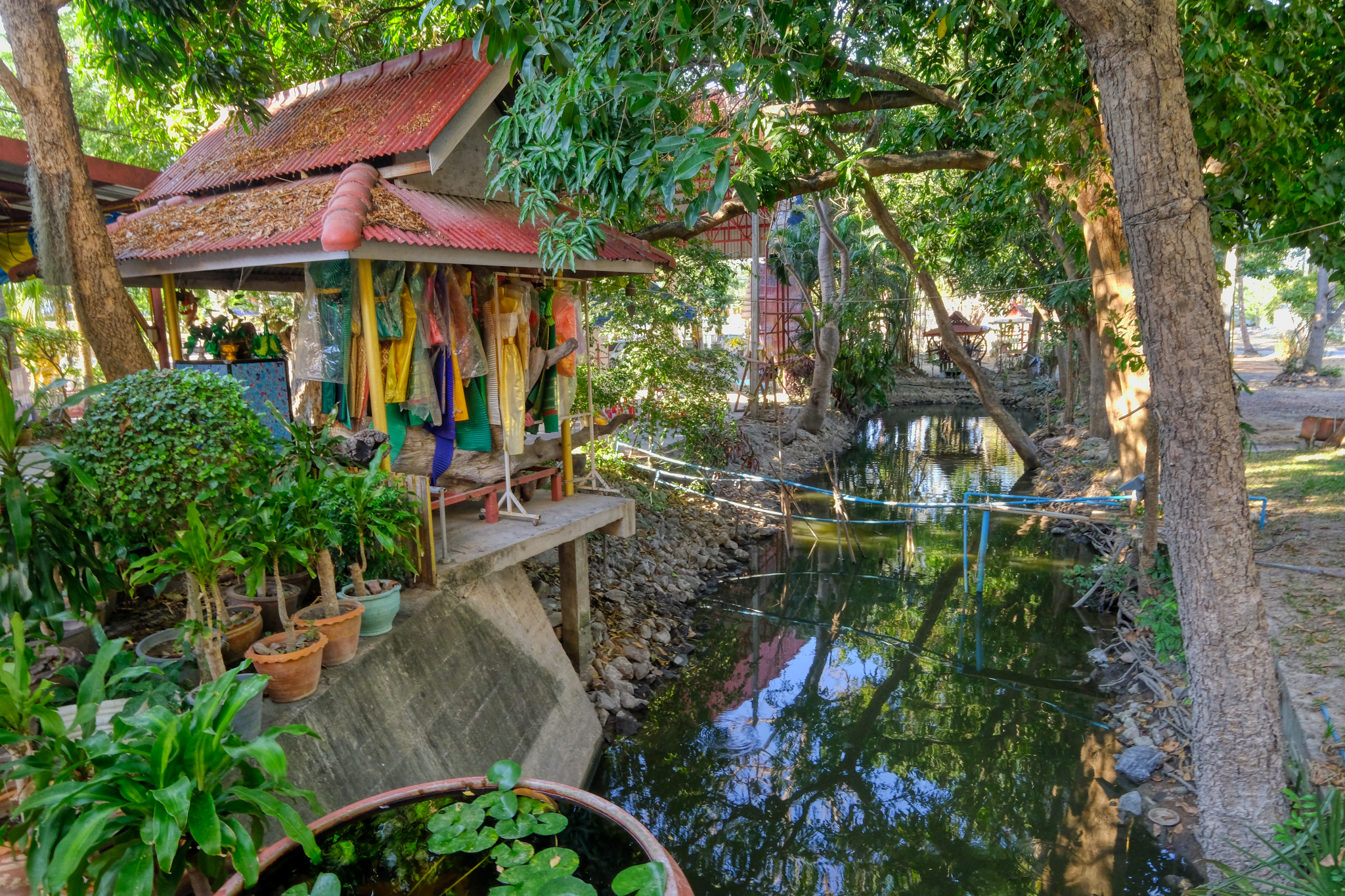 A marvelous spirit house on the grounds of Wat Hui Sai Tai.
A marvelous spirit house on the grounds of Wat Hui Sai Tai.
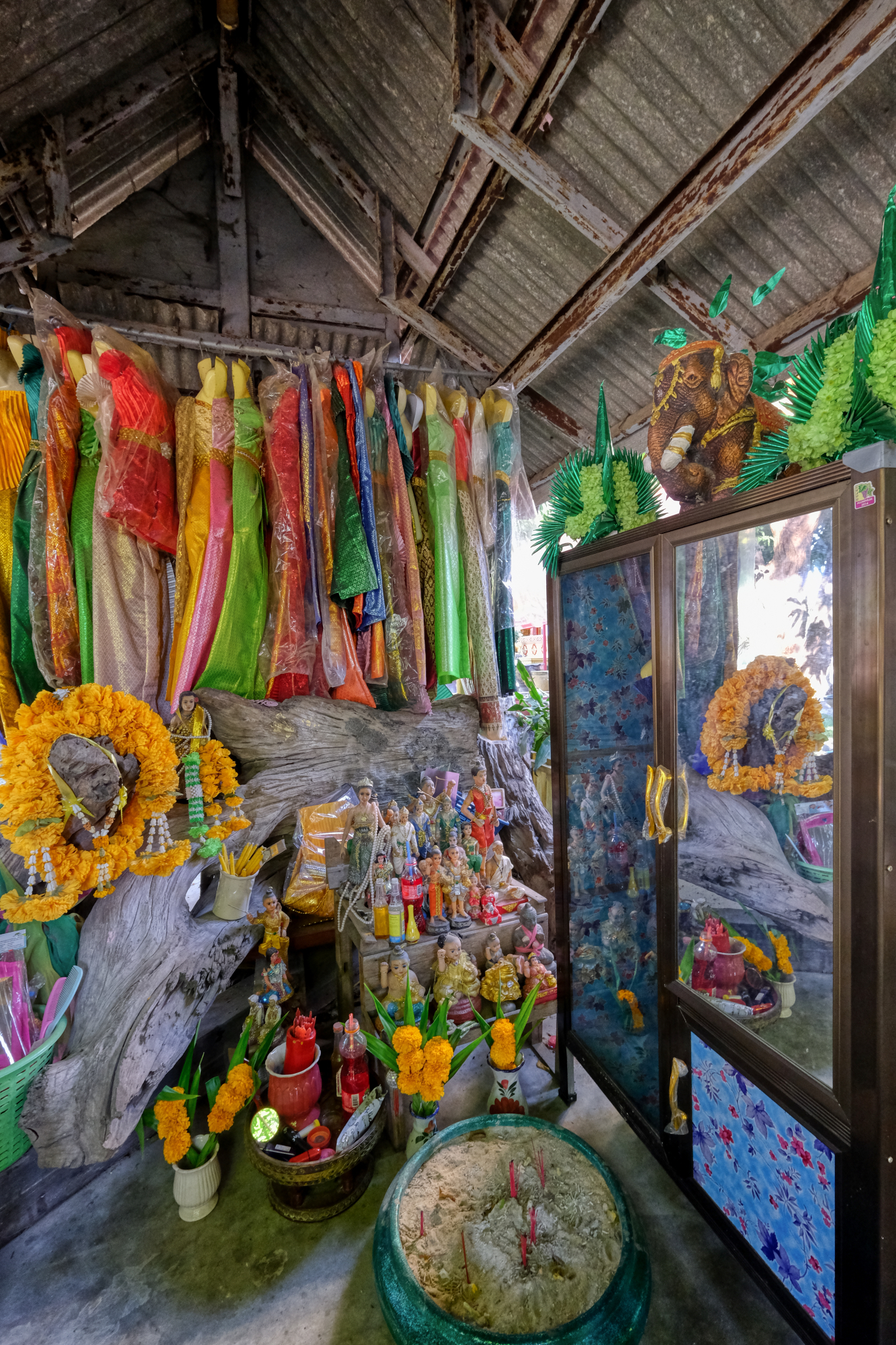 The inside of the wat spirit house . . . very well tended by the pilgrims.
The inside of the wat spirit house . . . very well tended by the pilgrims.
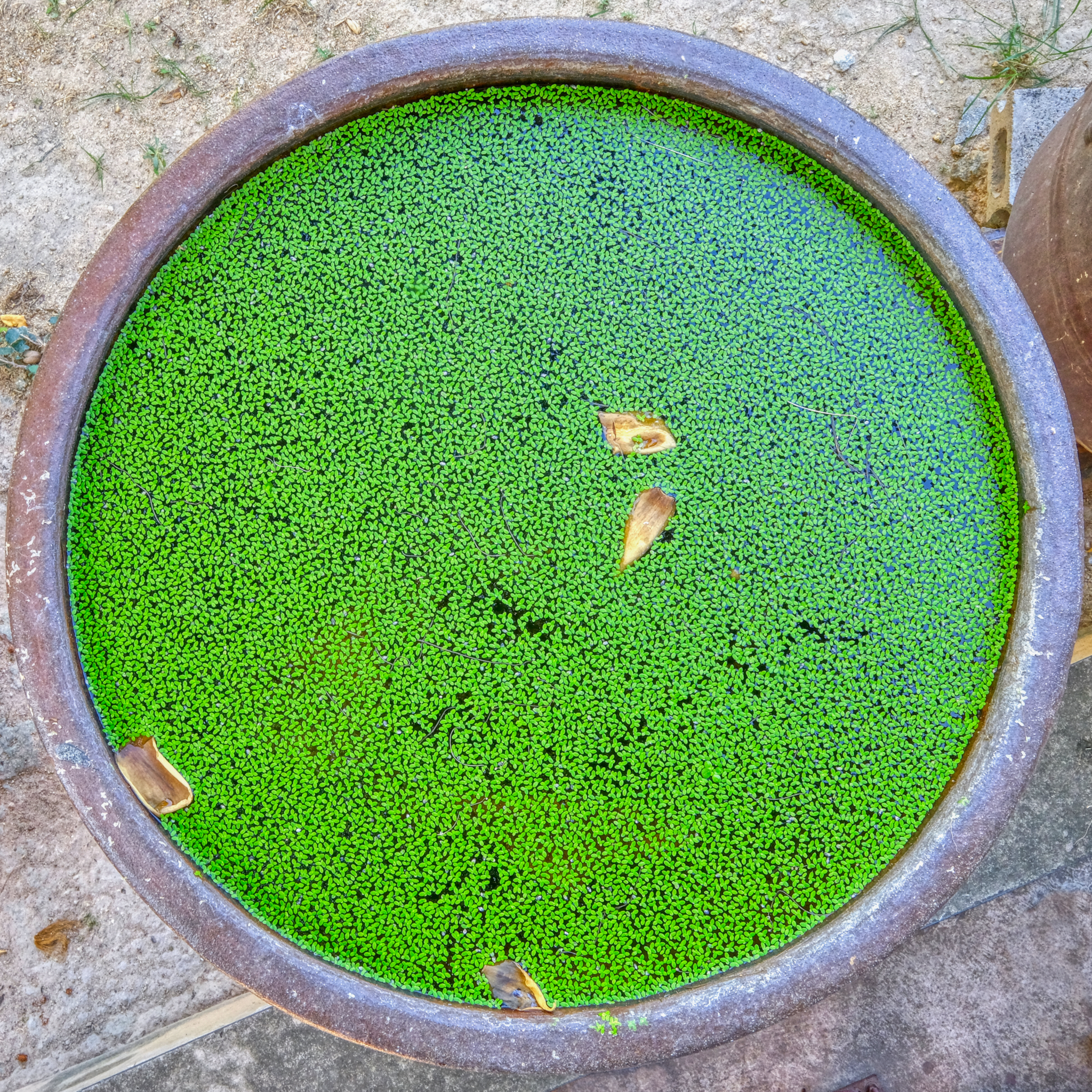 Beauty everywhere we pointed our cameras . . .
Beauty everywhere we pointed our cameras . . .
-----------------------------------------------------
An Old Fishing Village
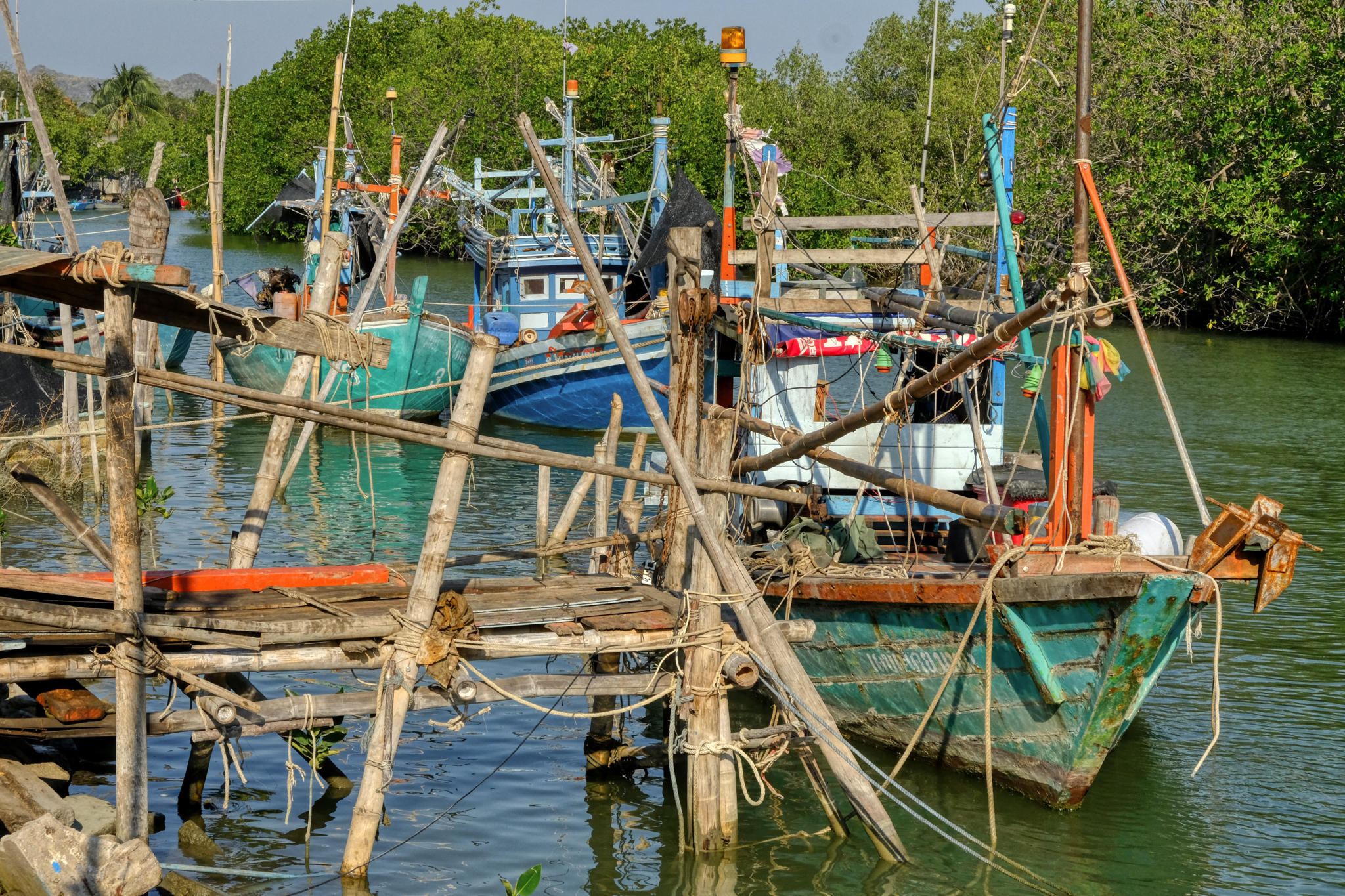 We headed up the road to our next destination, a beach about 20km away . . . but a quick glance on the GPS map showed a small village on an inlet . . . maybe a fishing village? YES!
We headed up the road to our next destination, a beach about 20km away . . . but a quick glance on the GPS map showed a small village on an inlet . . . maybe a fishing village? YES!
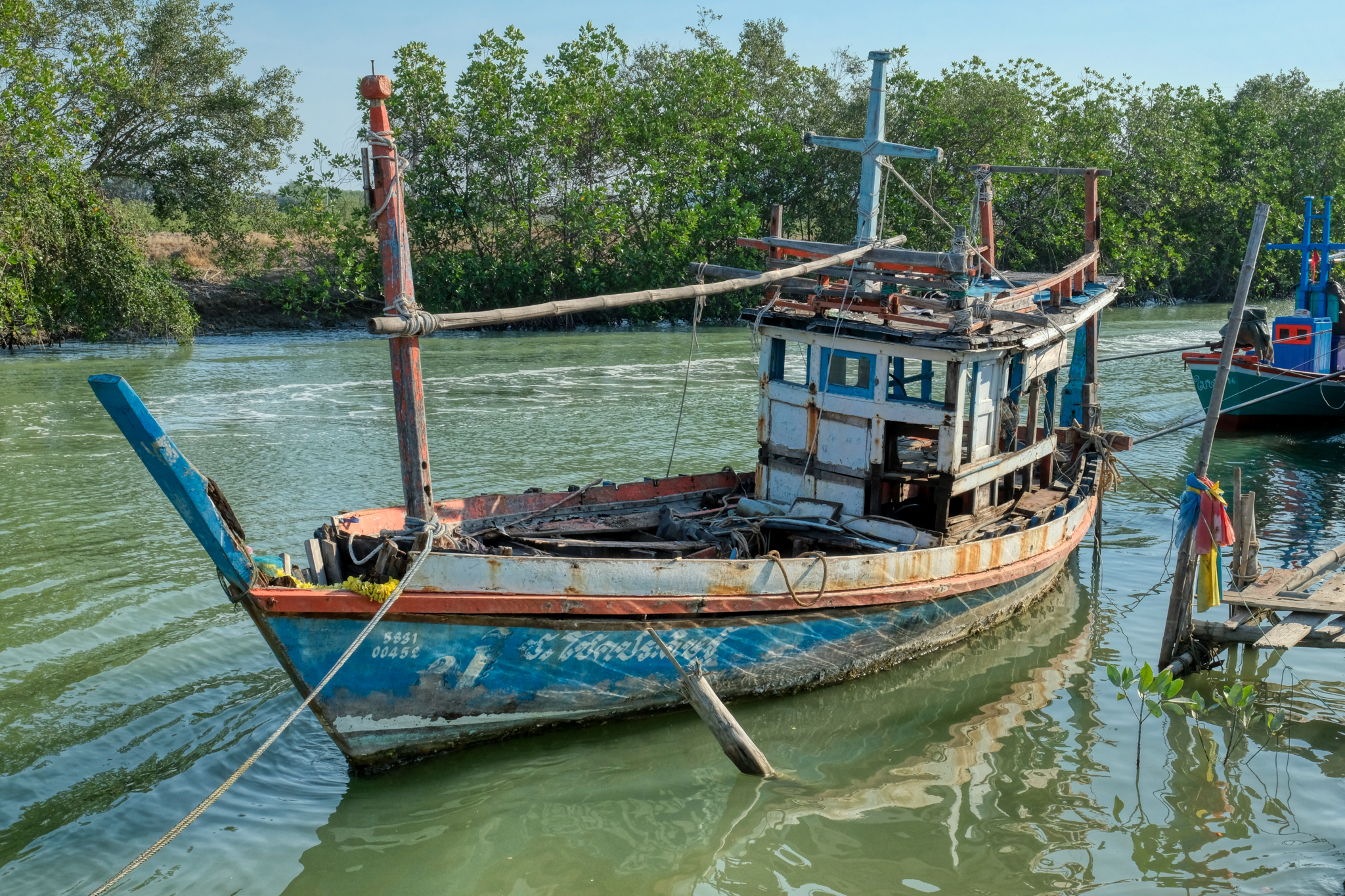 It was a very old fishing village . . . with a few very photogenic derelict old boats still dockside.
It was a very old fishing village . . . with a few very photogenic derelict old boats still dockside.
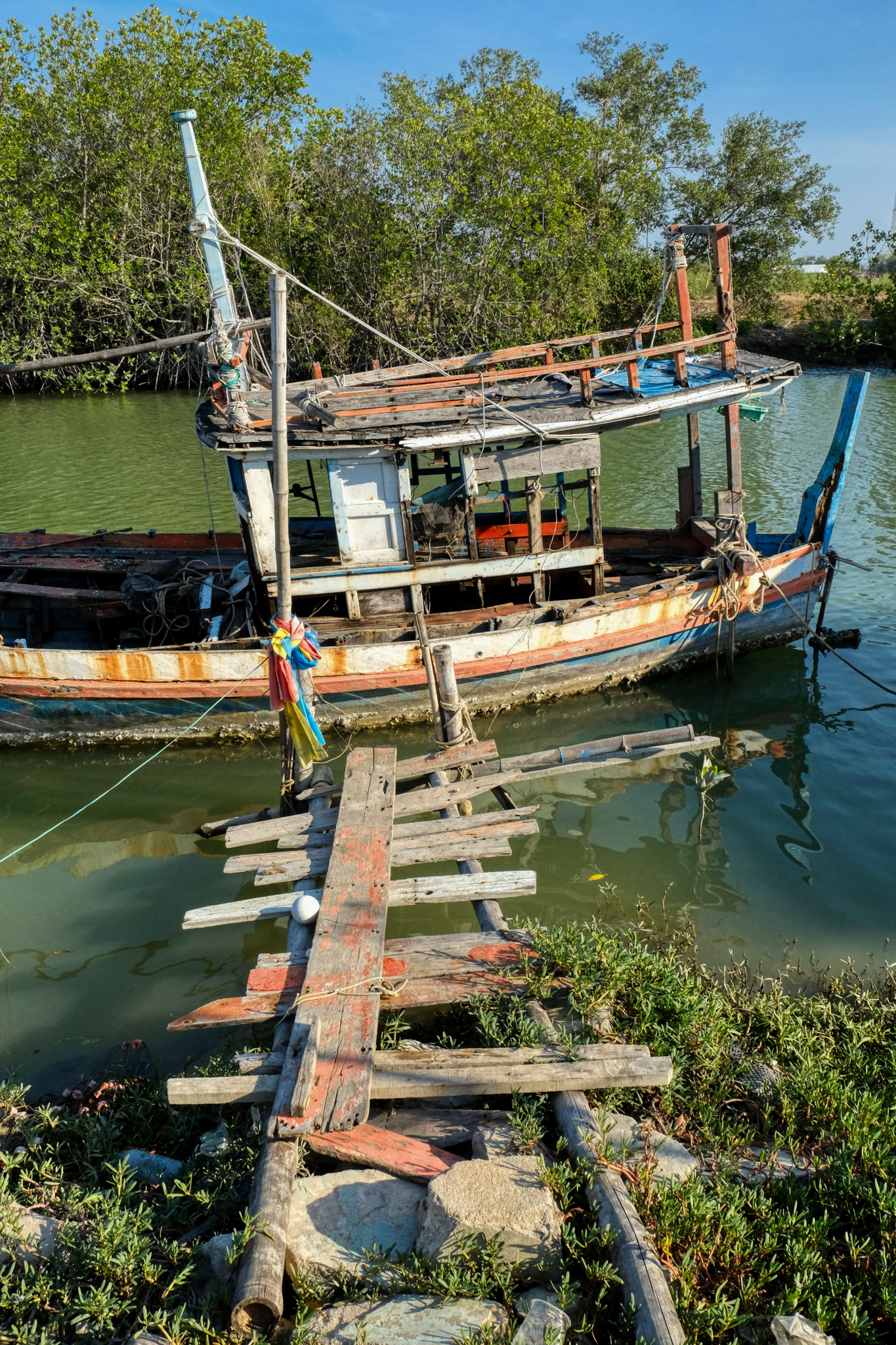 Did I say "old boat and old pier"? I meant to say "dilapidated pier and ghost ship"!
Did I say "old boat and old pier"? I meant to say "dilapidated pier and ghost ship"!
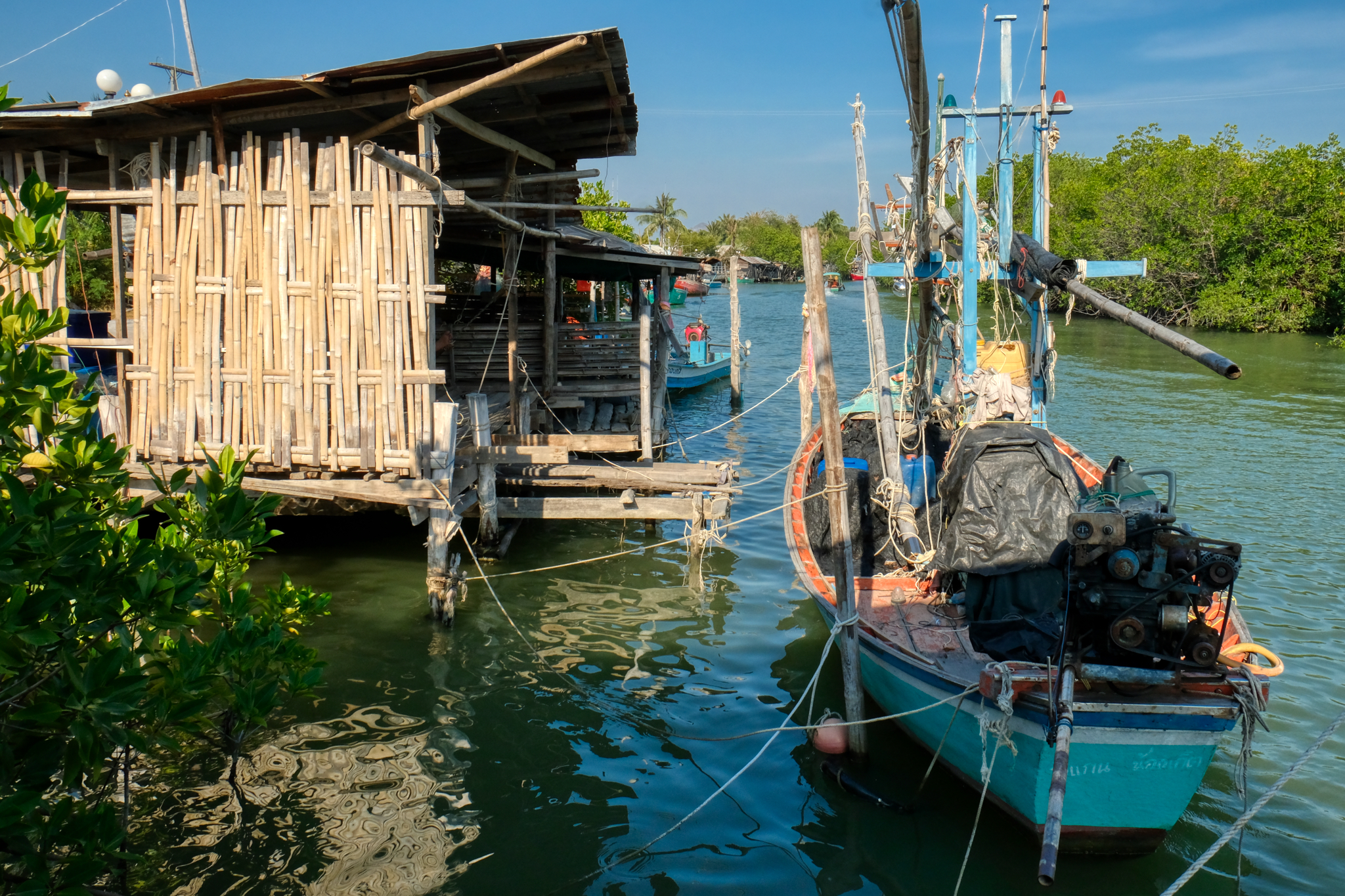 There were newer and older parts of this fishing village.
There were newer and older parts of this fishing village.
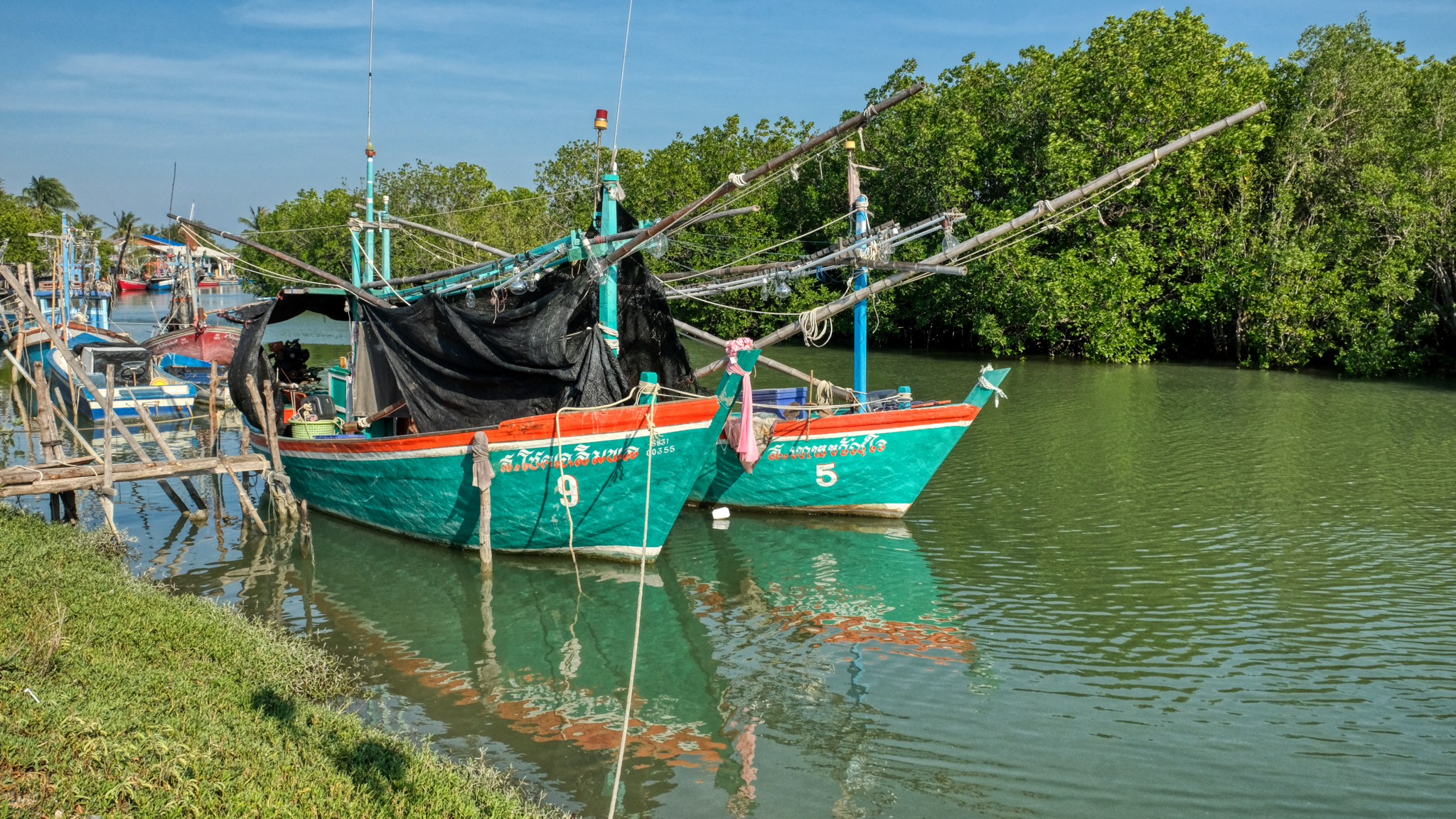 The village was very quiet this afternoon. These boats are rigged to catch squid . . . at night.
The village was very quiet this afternoon. These boats are rigged to catch squid . . . at night.
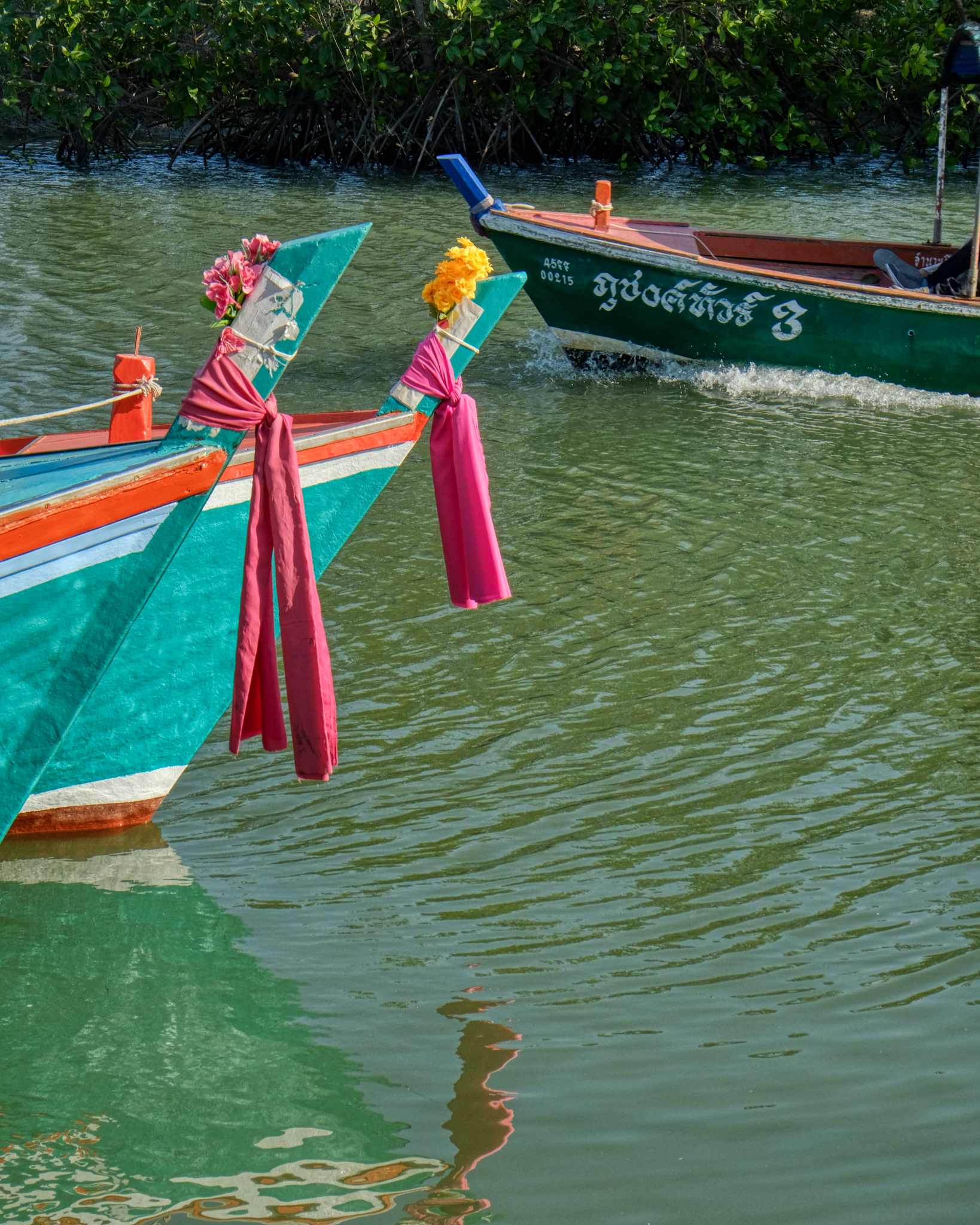 I love how the Thai fishermen decorate their boats . . . with these colorful votive blessings.
I love how the Thai fishermen decorate their boats . . . with these colorful votive blessings.
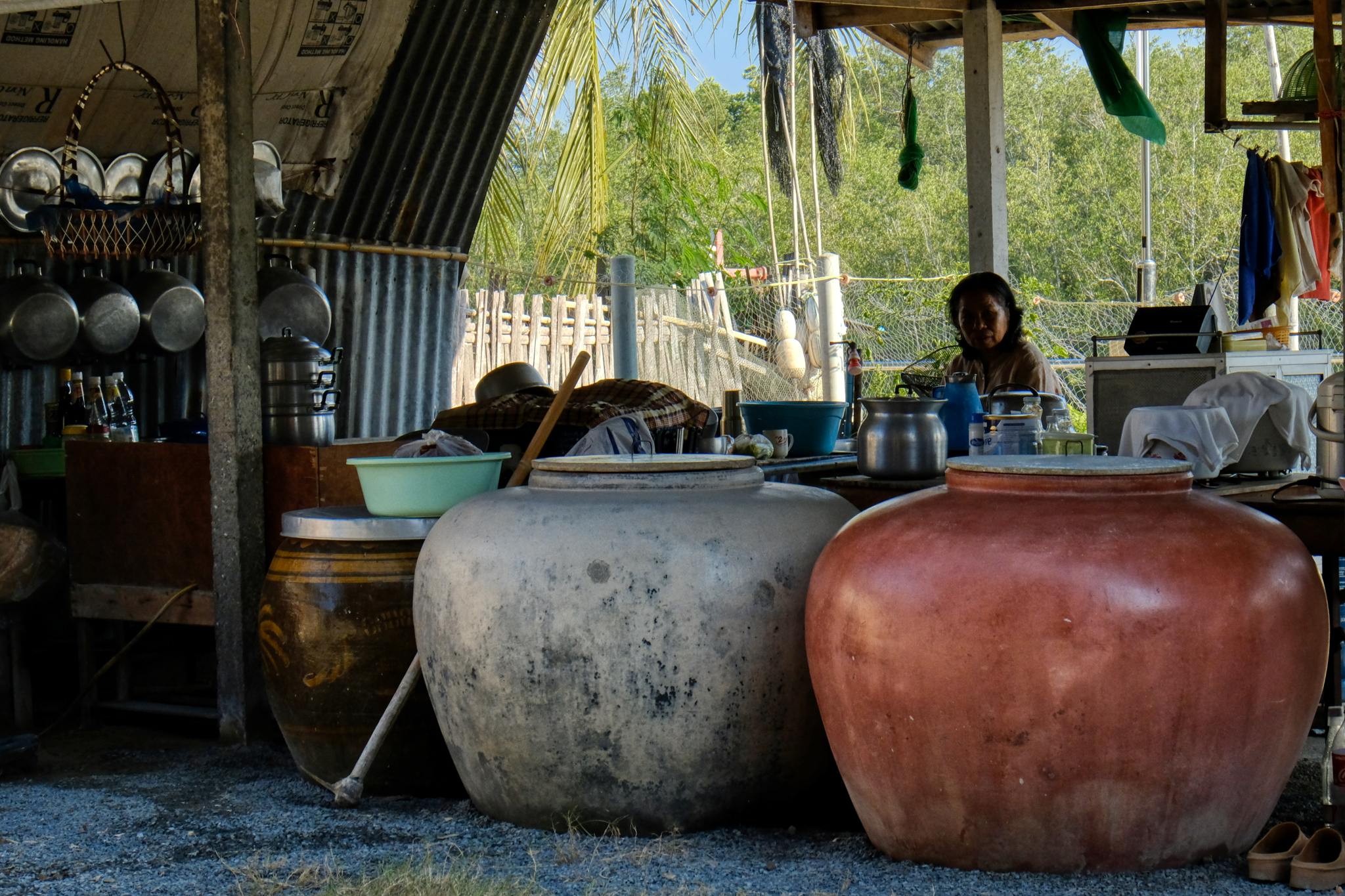 A village restaurateur. The large pots catch and hold rainwater.
A village restaurateur. The large pots catch and hold rainwater.
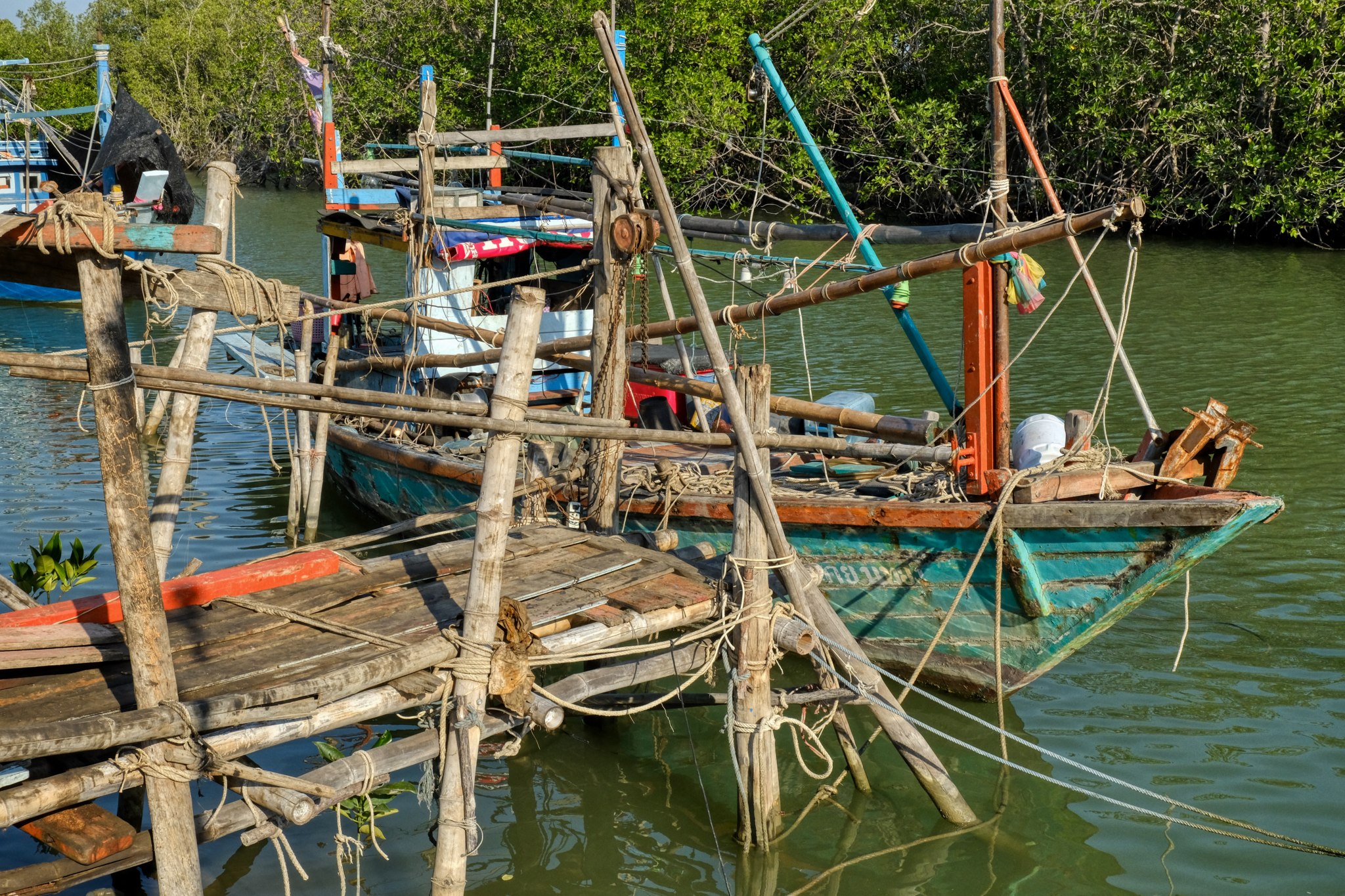 Such rich and complex images to capture here!
Such rich and complex images to capture here!
 We saw this catch of the day in one of the fishermen's sheds.
We saw this catch of the day in one of the fishermen's sheds.
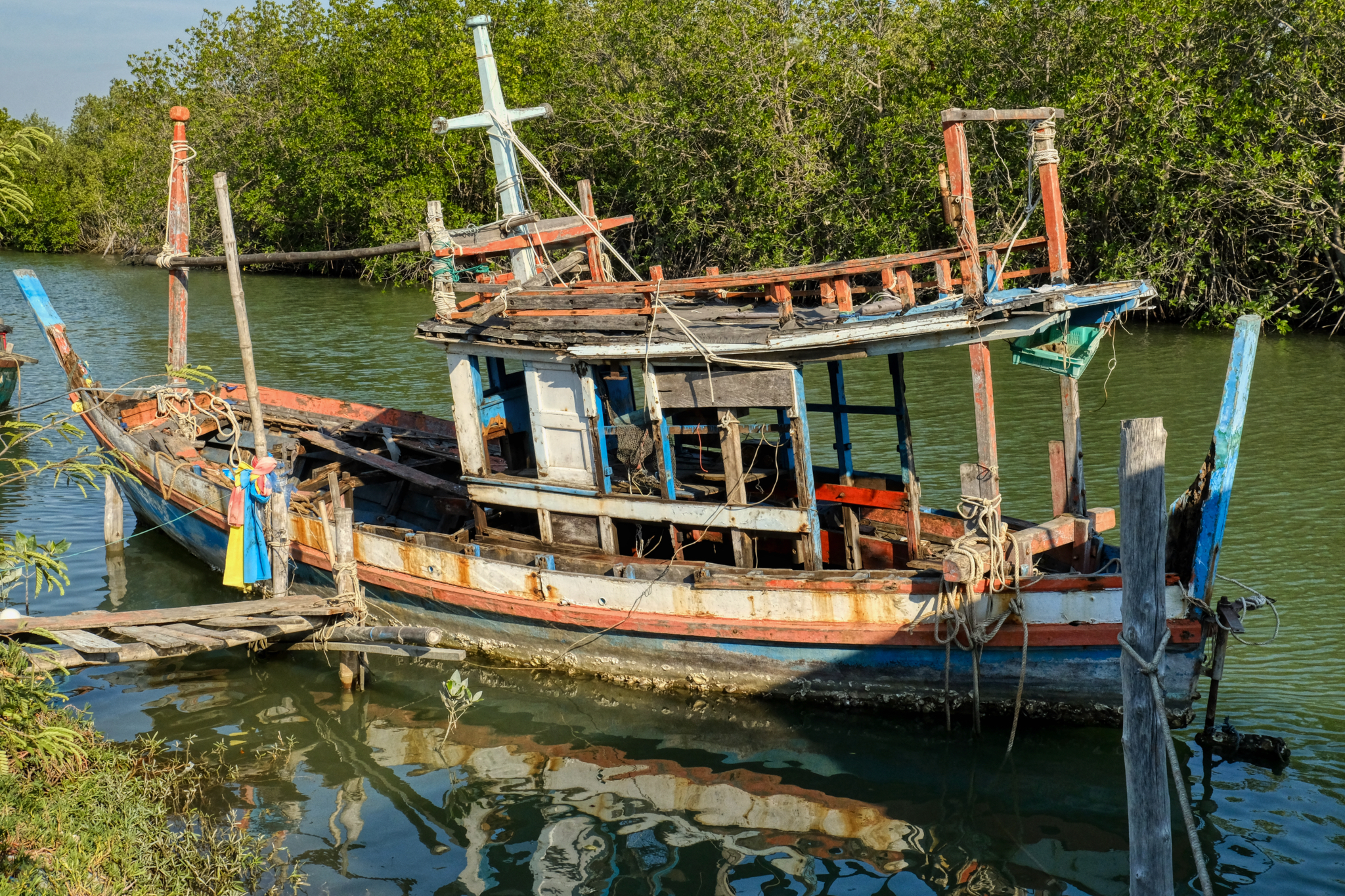 We could have stayed all day here . . . just taking photos . . . but there were other adventures in store for us on that day.
We could have stayed all day here . . . just taking photos . . . but there were other adventures in store for us on that day.
-------------------------------------------------
A Mangrove Forest Swamp Park
 Our next stop was the beautifully developed, and very educational, Pran Buri Forest Park and Nature Reserve.
Our next stop was the beautifully developed, and very educational, Pran Buri Forest Park and Nature Reserve.
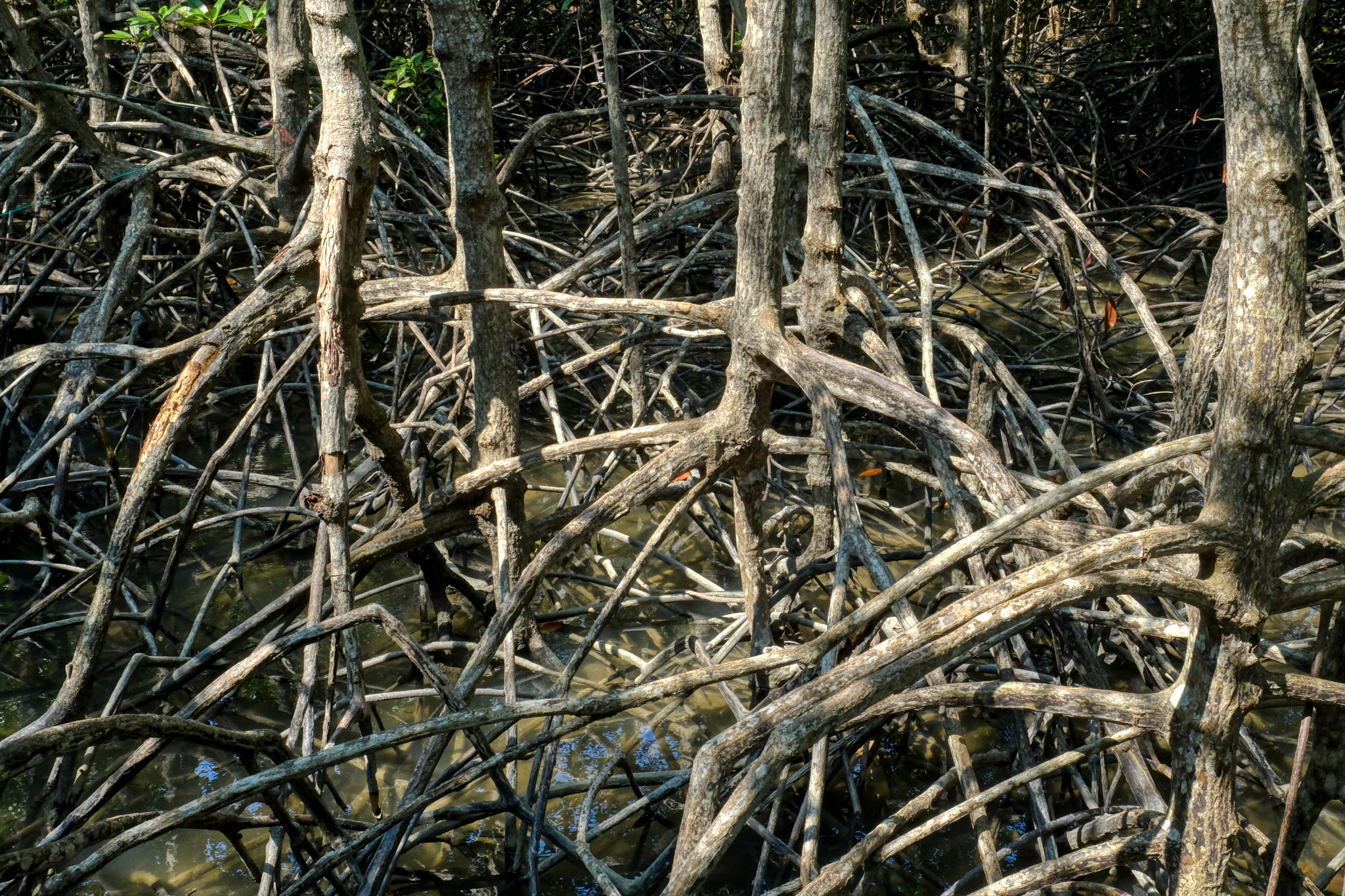 Mangrove forests are completely unique ecological environments.
Mangrove forests are completely unique ecological environments.
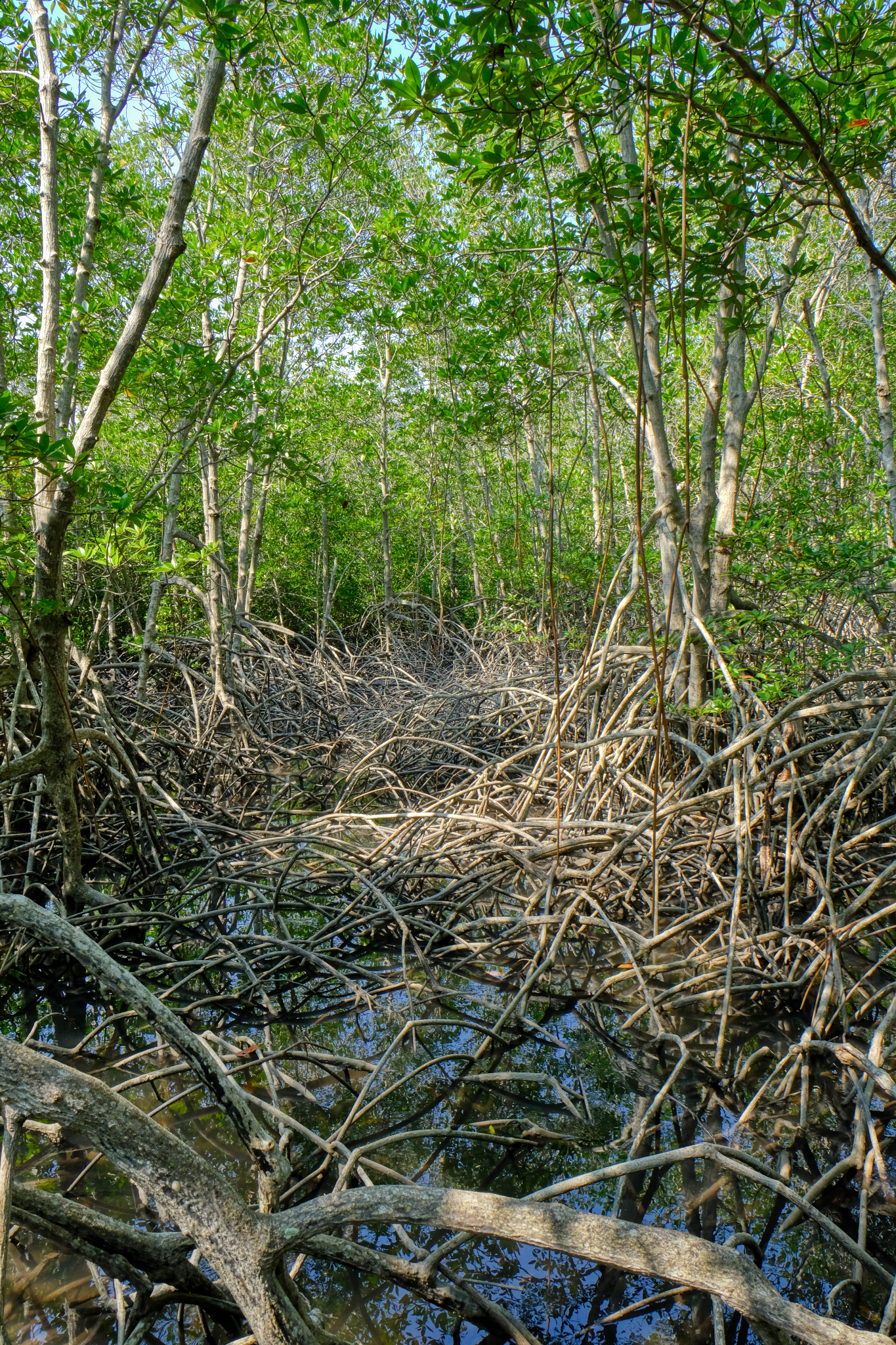 Mangroves grow in salt water estuarial swamps.
Mangroves grow in salt water estuarial swamps.
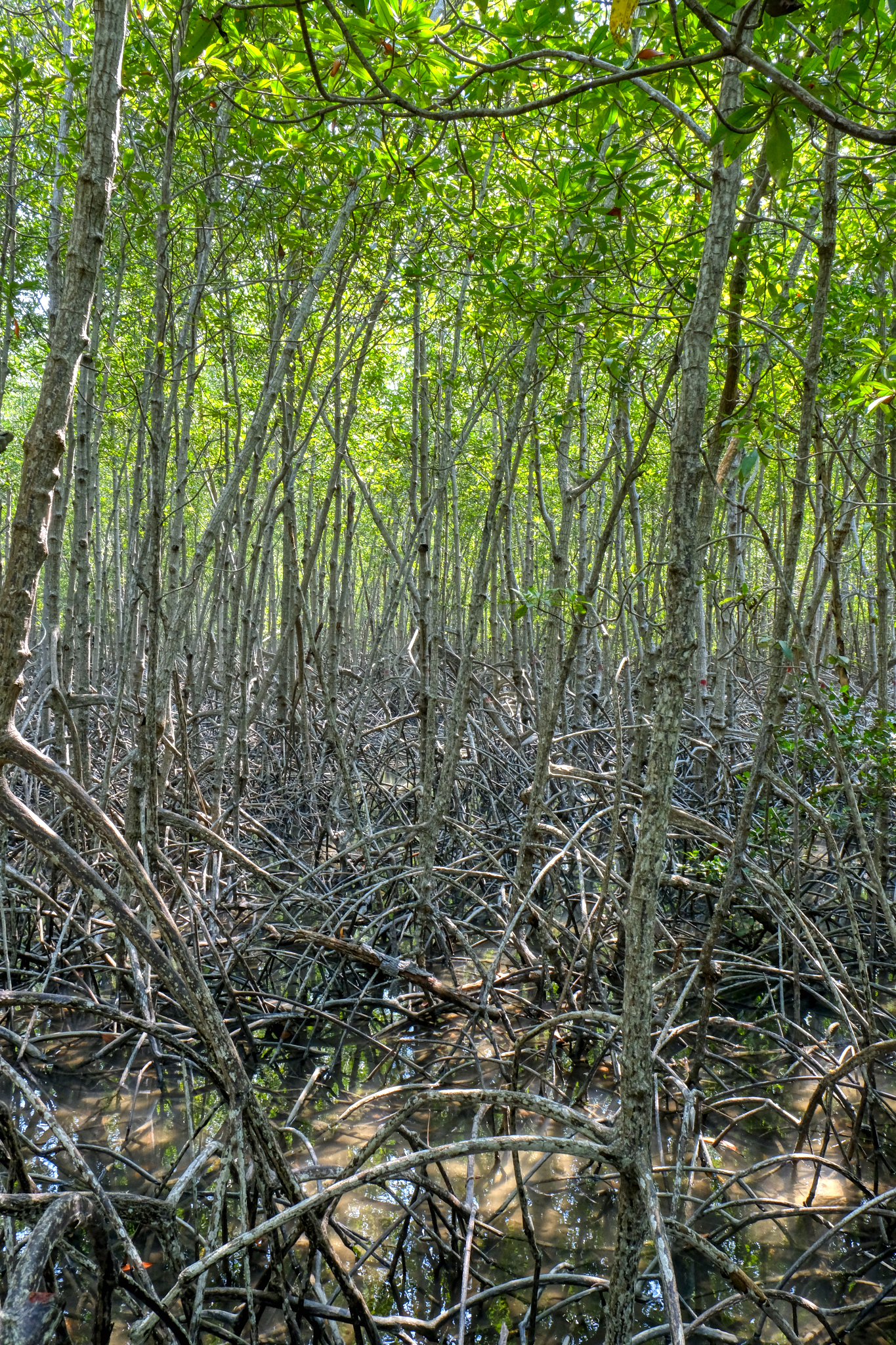 A phantasmagoria of twisted and gnarled complexity. Wonderful Nature.
A phantasmagoria of twisted and gnarled complexity. Wonderful Nature.
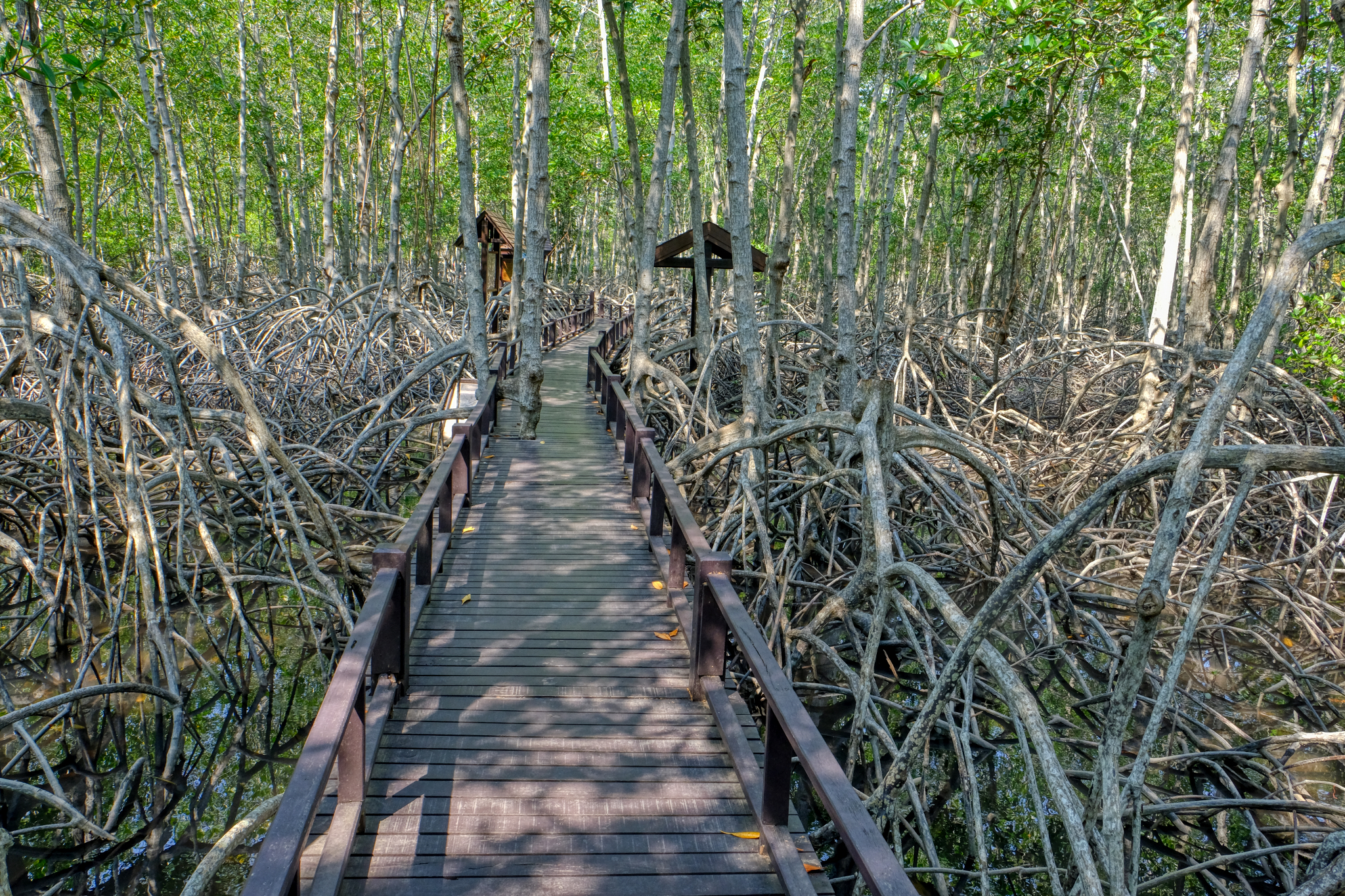 The park positioned bulletin boards (in Thai and English) along the way with informative graphics.
The park positioned bulletin boards (in Thai and English) along the way with informative graphics.
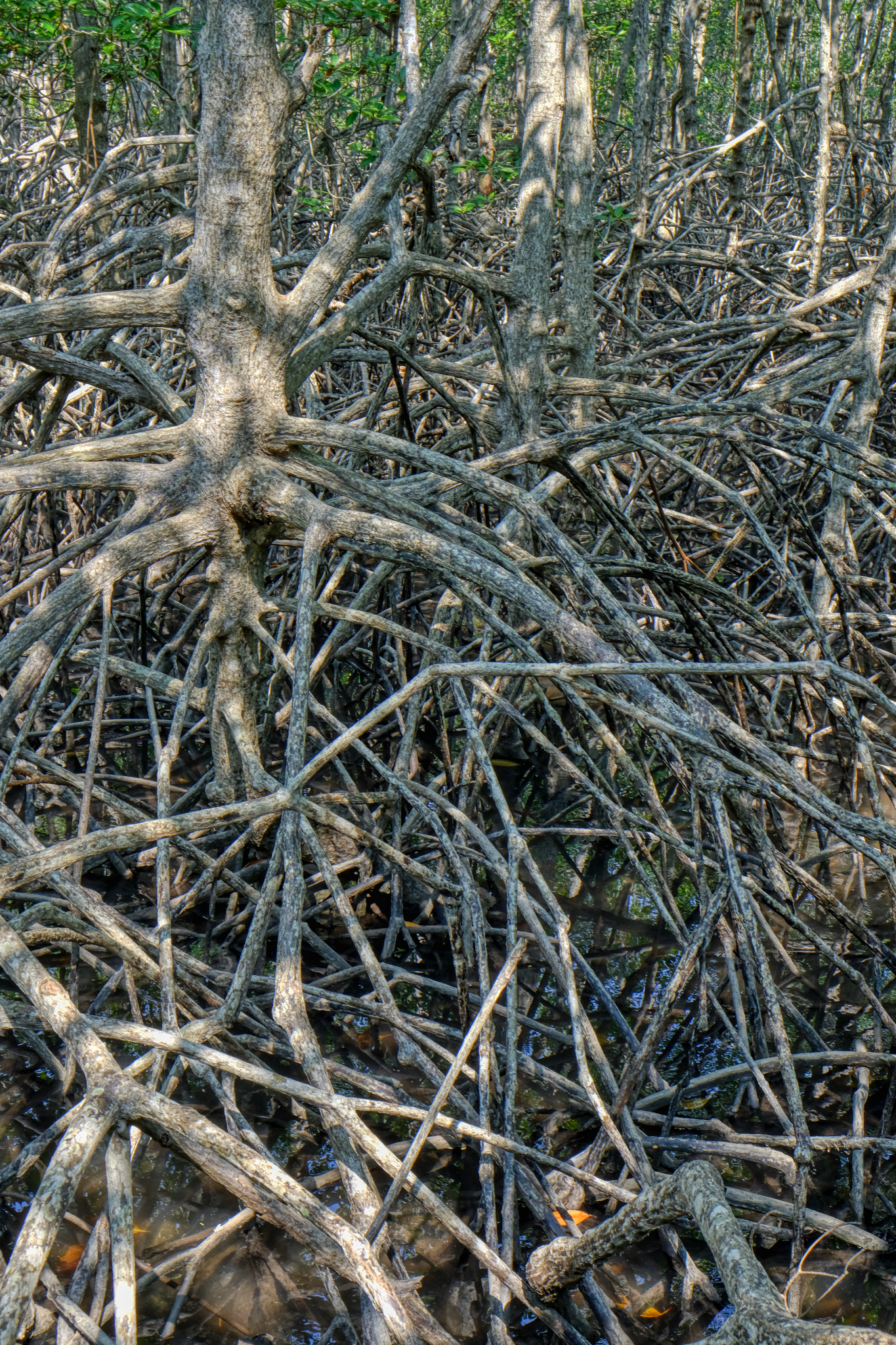 Mangrove roots grow in the transition between wet (at high tide) and exposed to the air (at low tide). The mangrove grows in salt water but has the ability to filter out the salt and deposit it on the root 'knees' to be dissolved off when the tide comes in. Amazing.
Mangrove roots grow in the transition between wet (at high tide) and exposed to the air (at low tide). The mangrove grows in salt water but has the ability to filter out the salt and deposit it on the root 'knees' to be dissolved off when the tide comes in. Amazing.
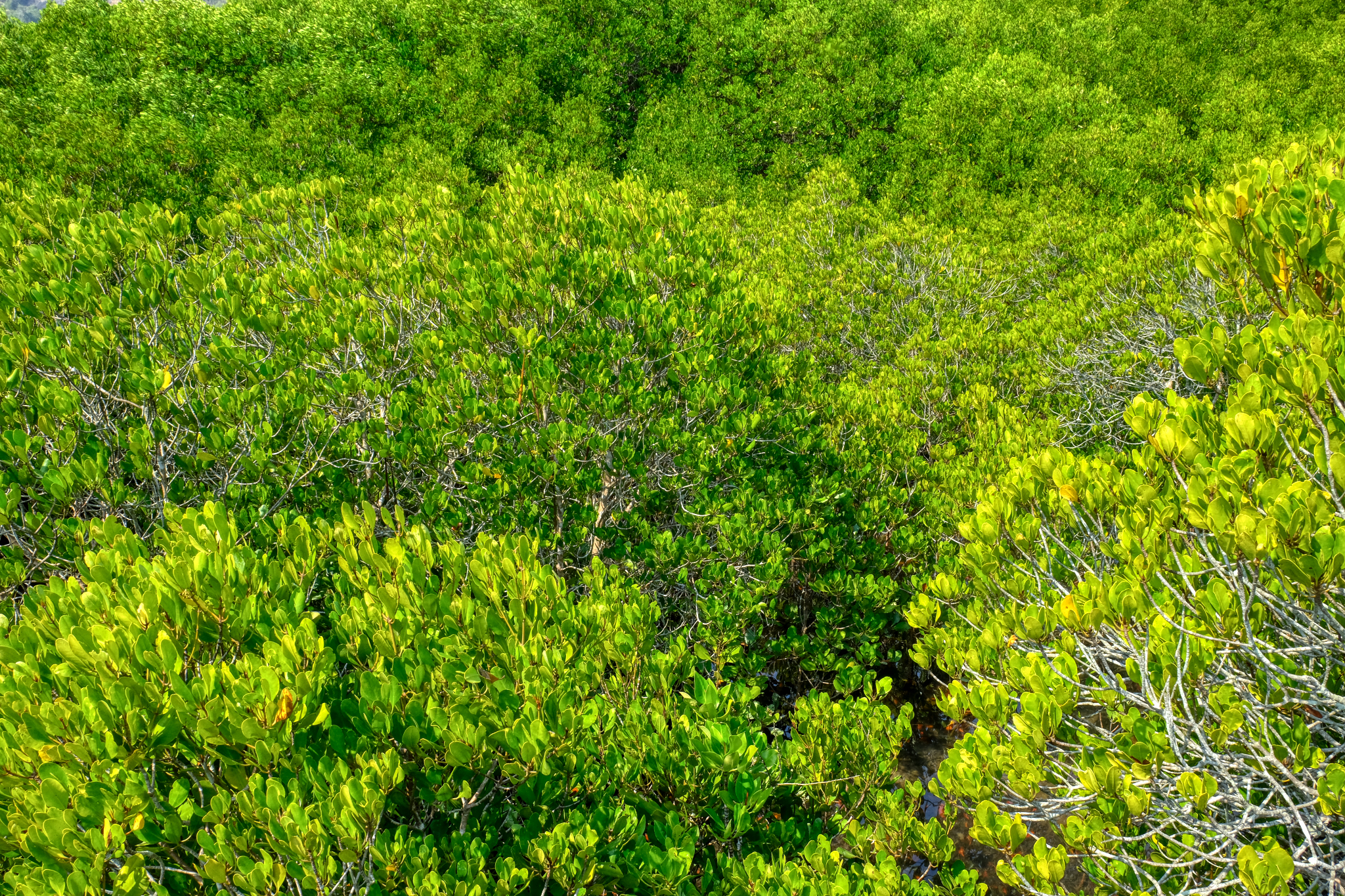 The park managers built a tall tower so that the mangrove forest could be seen from above.
The park managers built a tall tower so that the mangrove forest could be seen from above.
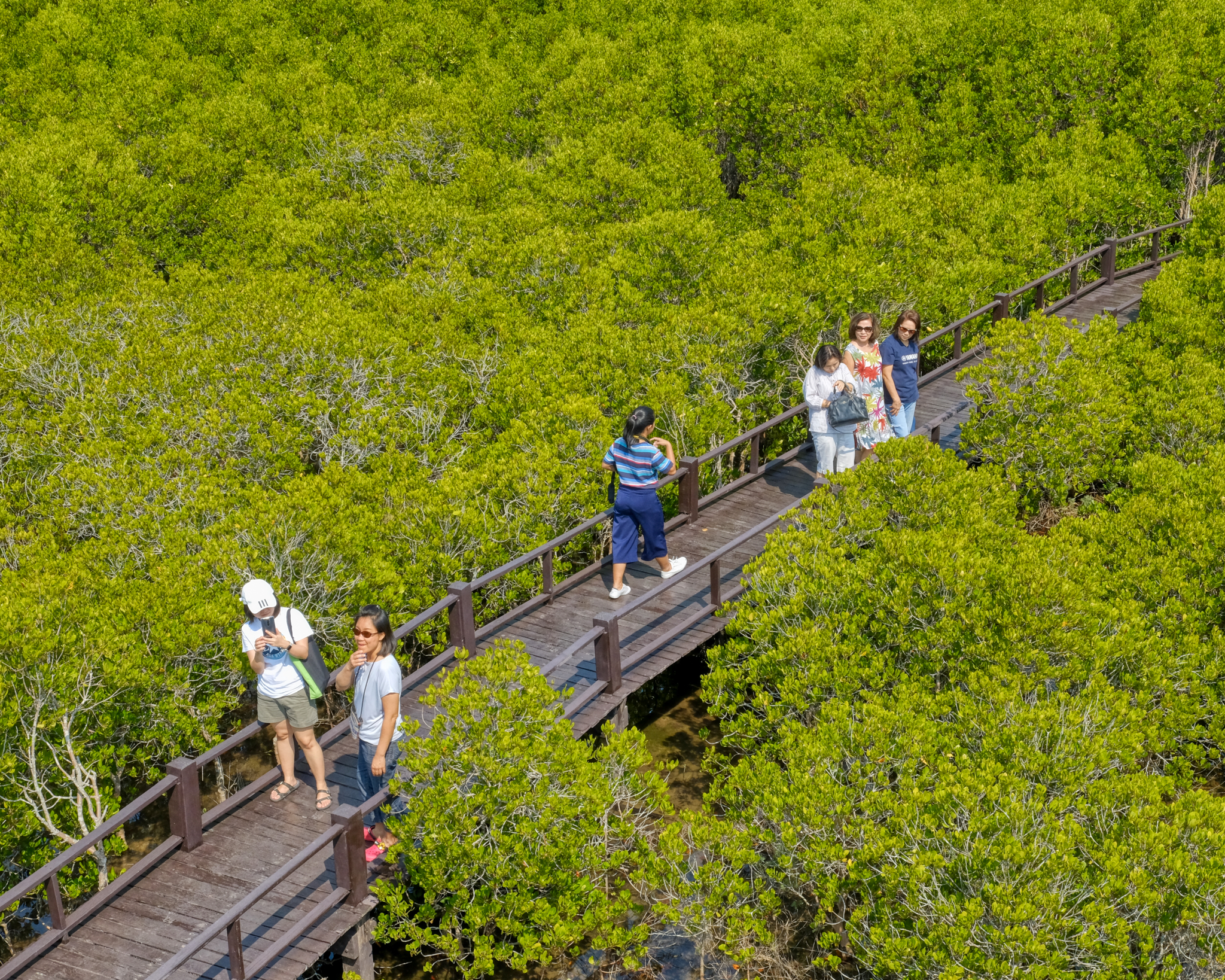 It was New Years' Eve, so there were quite a few day trippers from nearby Hua Hin.
It was New Years' Eve, so there were quite a few day trippers from nearby Hua Hin.
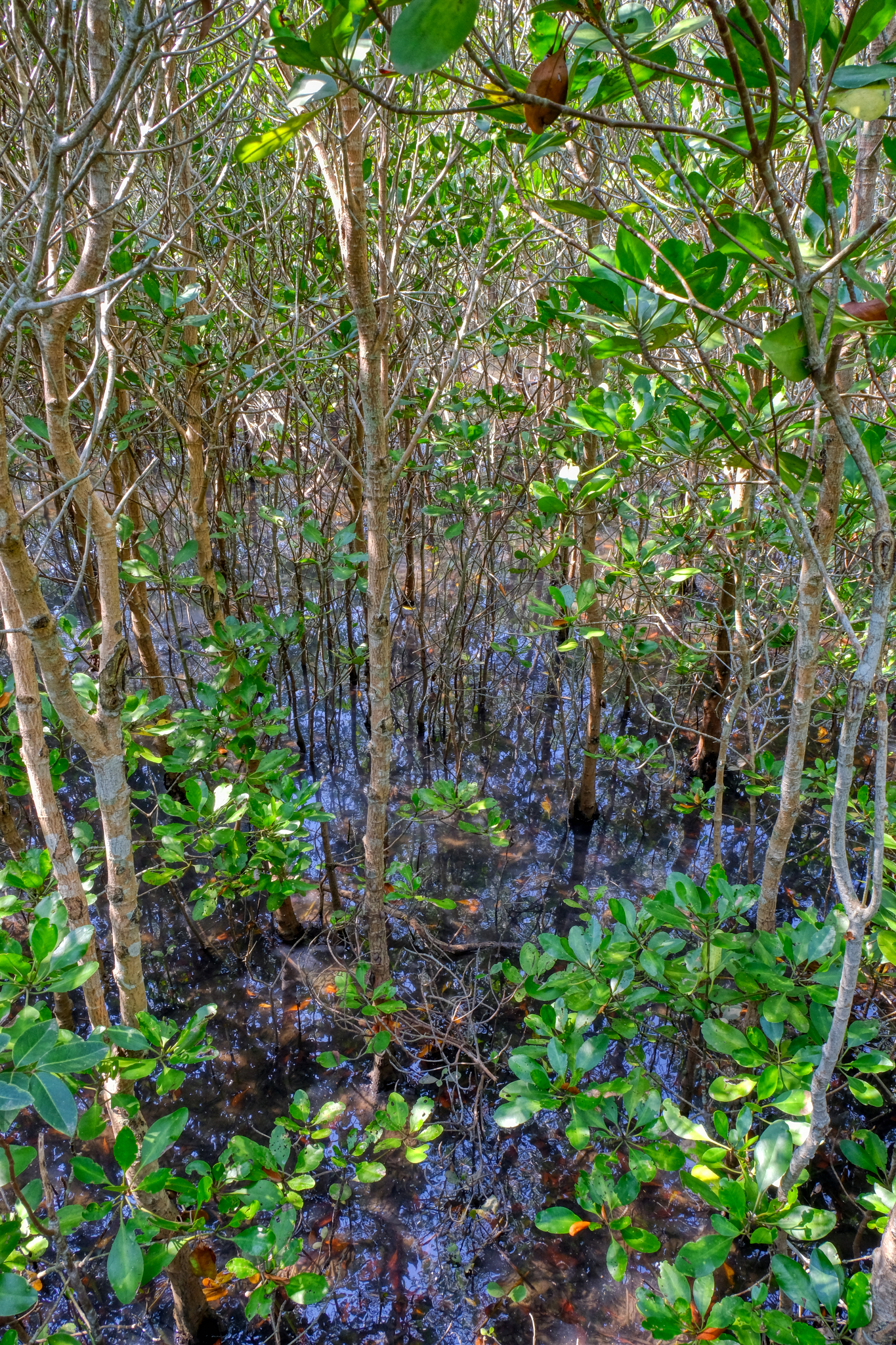 We wandered on along the elevated walkway. There seemed to be a change in the nature of the trees in the swamp.
We wandered on along the elevated walkway. There seemed to be a change in the nature of the trees in the swamp.
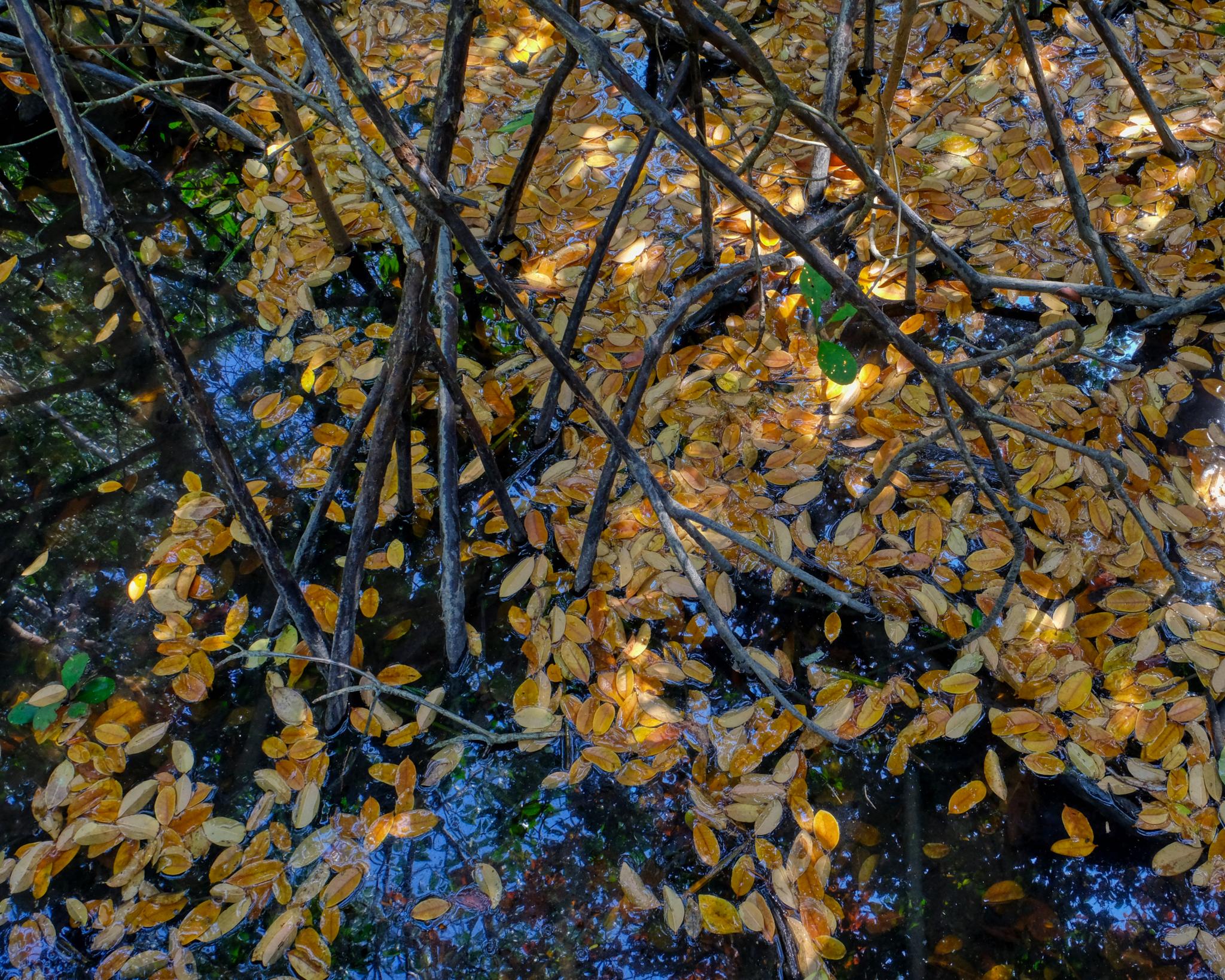 "Autumn" colors in the swamp. A blue sky reflected in the brackish waters.
"Autumn" colors in the swamp. A blue sky reflected in the brackish waters.
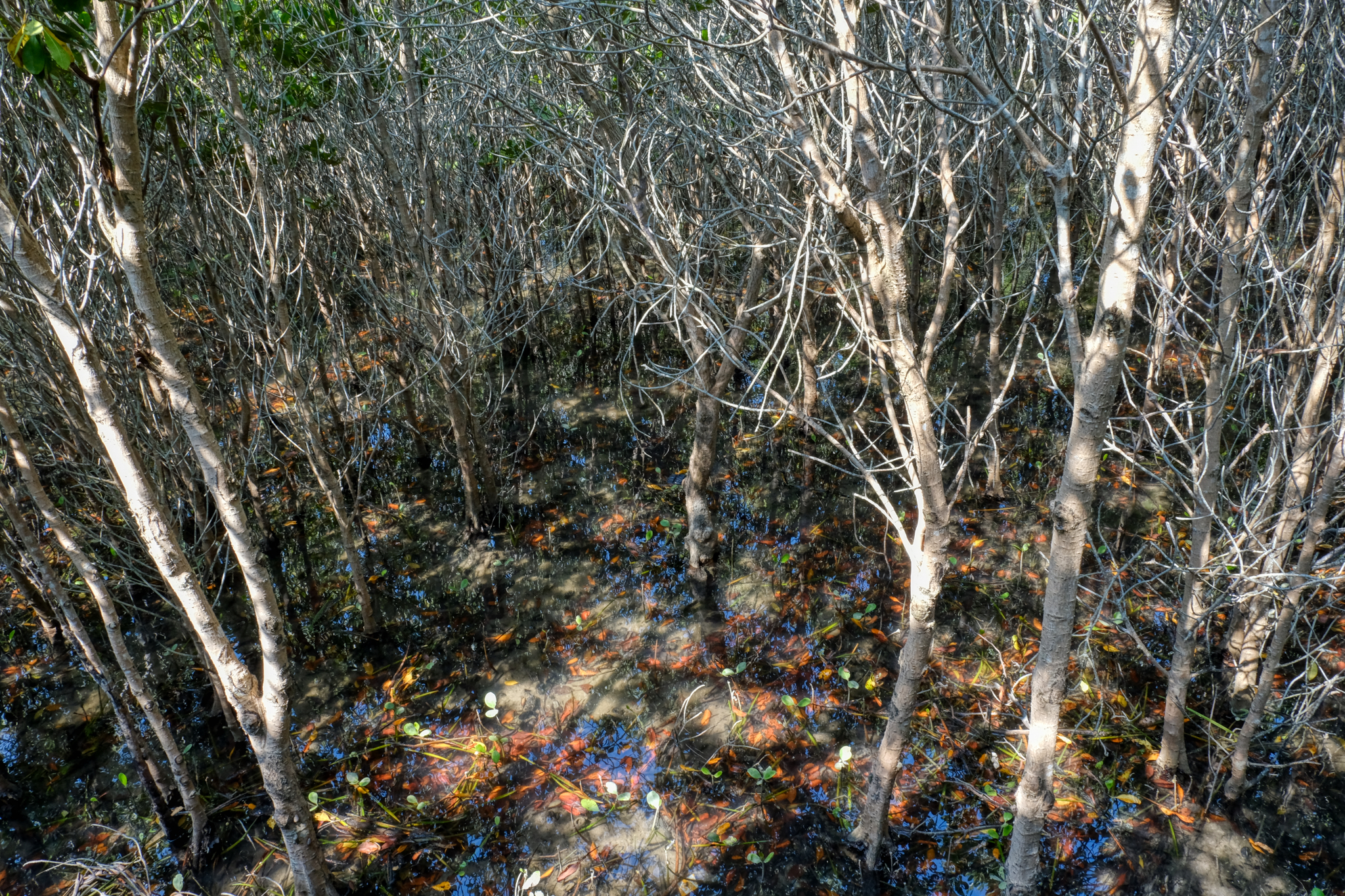 Beautiful complicated light on the complicated forest . . . truly marvelous.
Beautiful complicated light on the complicated forest . . . truly marvelous.
 We walked on into a stand of densely packed trees . . . not mangrove, but growing in the salty water.
We walked on into a stand of densely packed trees . . . not mangrove, but growing in the salty water.
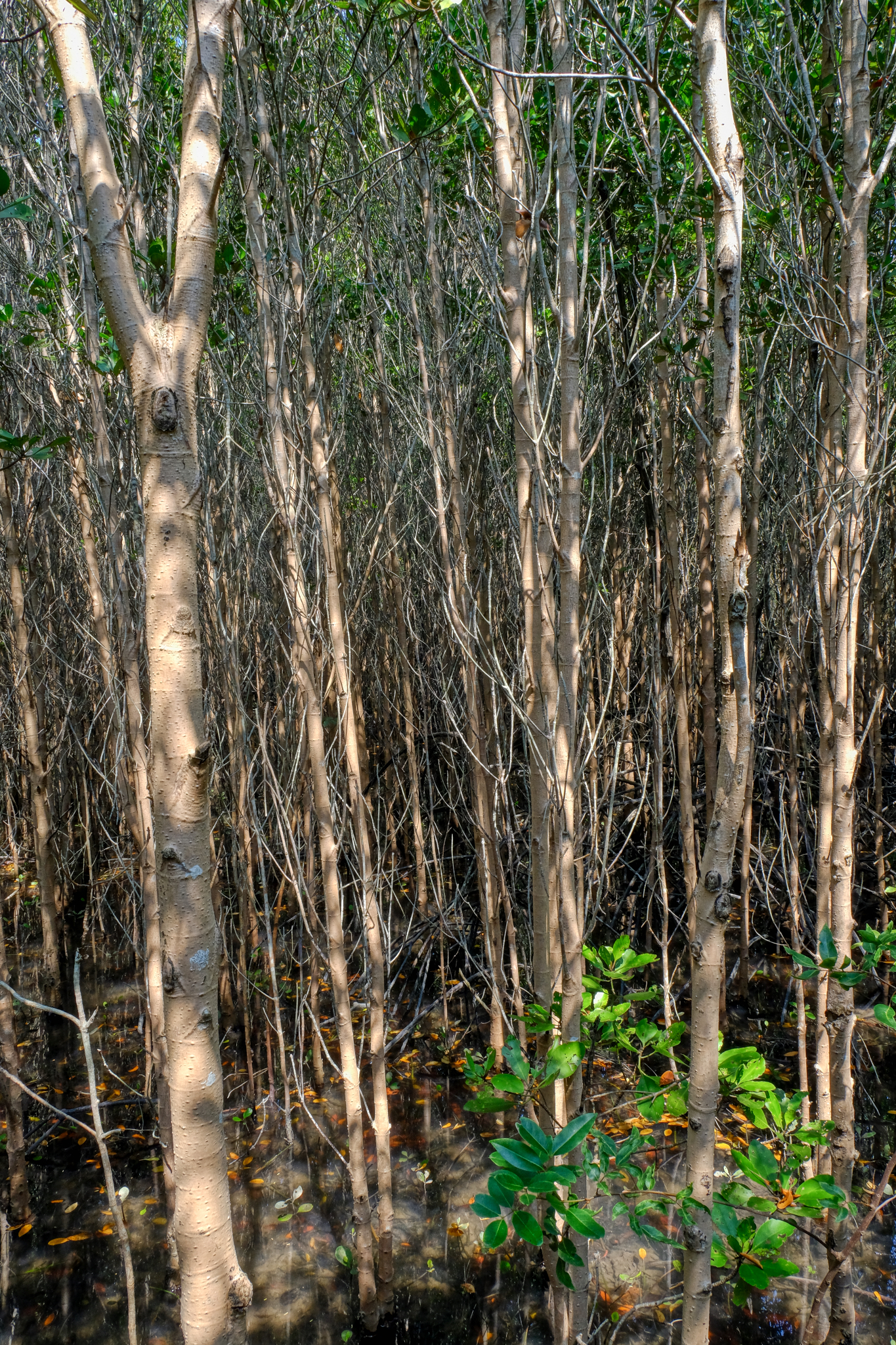 Ever-changing scenes . . .
Ever-changing scenes . . .
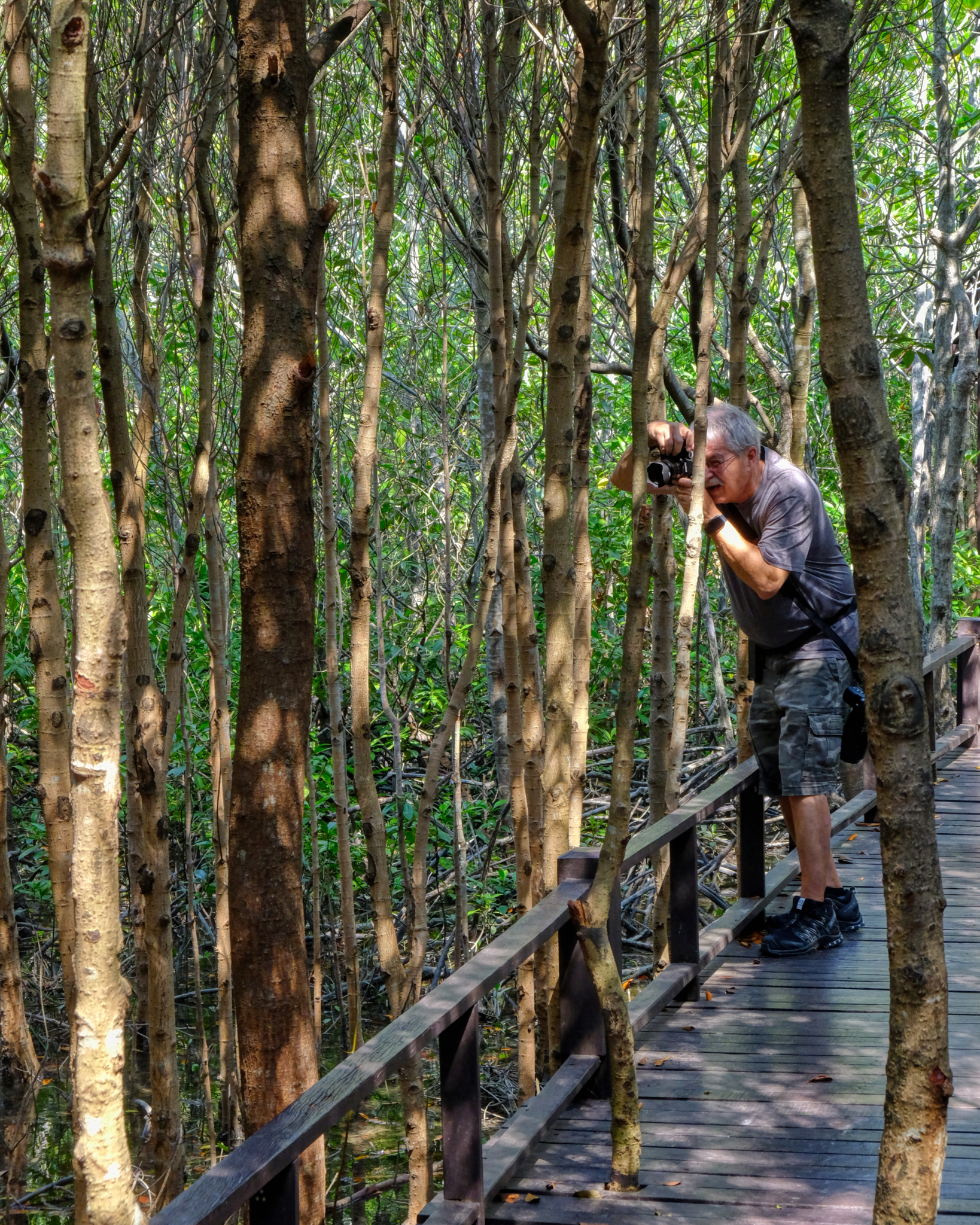 My friend enjoying the photographic opportunities.
My friend enjoying the photographic opportunities.
 I do not know how these particular trees shed the salt.
I do not know how these particular trees shed the salt.
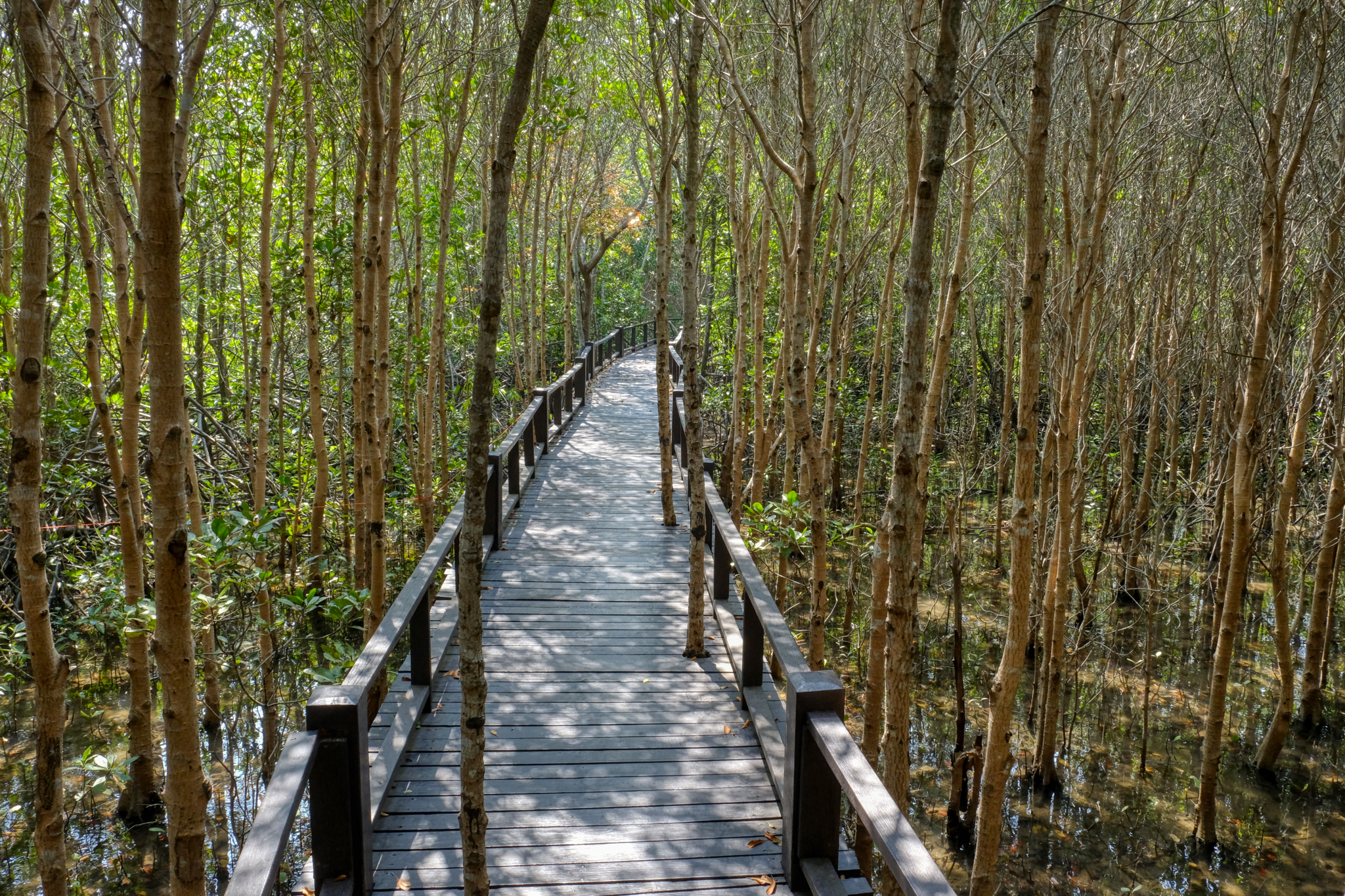 On we walked through a forest of thin trees growing in the saltwater marsh.
On we walked through a forest of thin trees growing in the saltwater marsh.
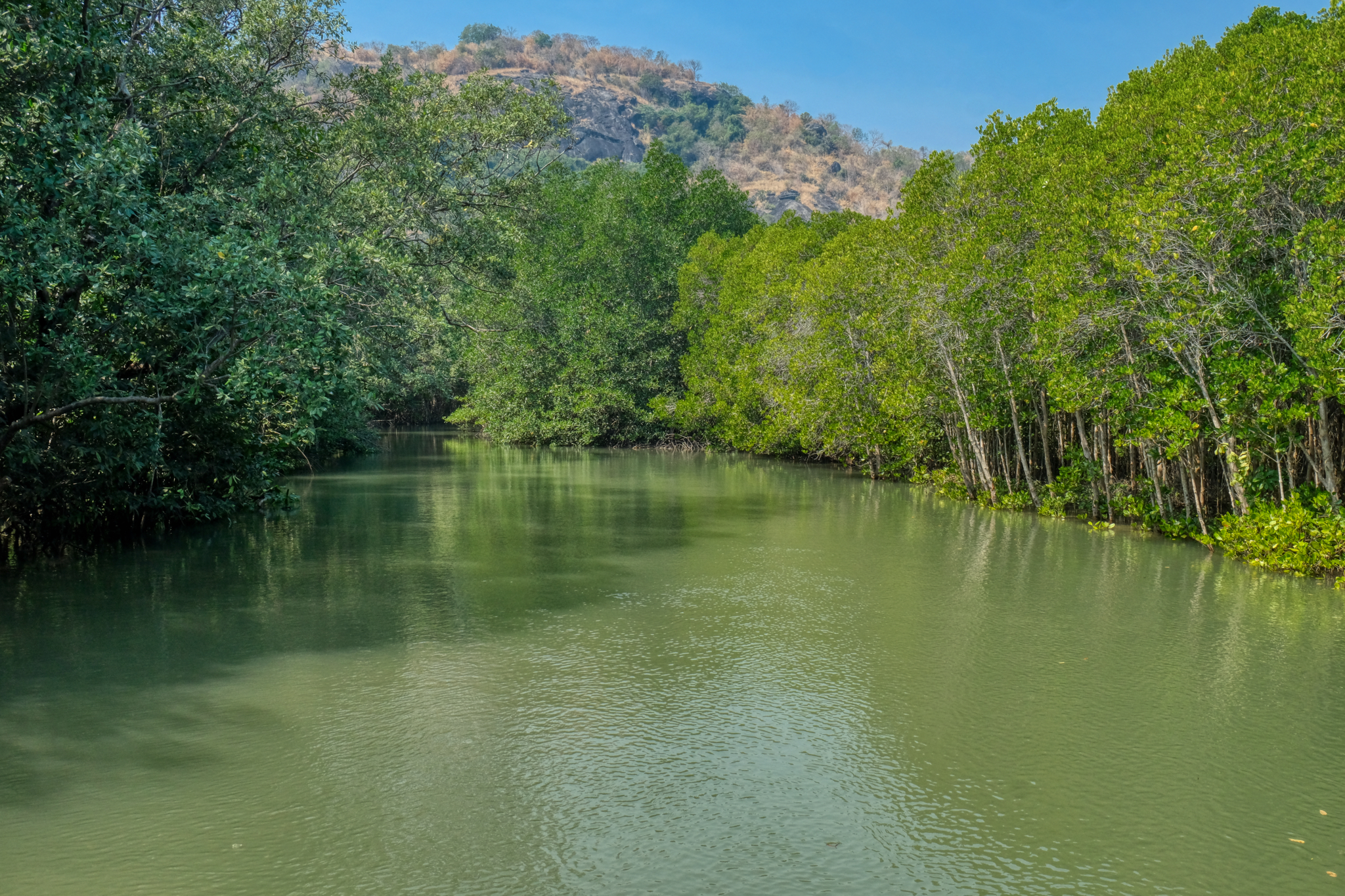 We came to a saltwater inlet. There was a pier offering boat rides, but there was a line of people waiting. We walked on . . . more [visual] adventures in store.
We came to a saltwater inlet. There was a pier offering boat rides, but there was a line of people waiting. We walked on . . . more [visual] adventures in store.
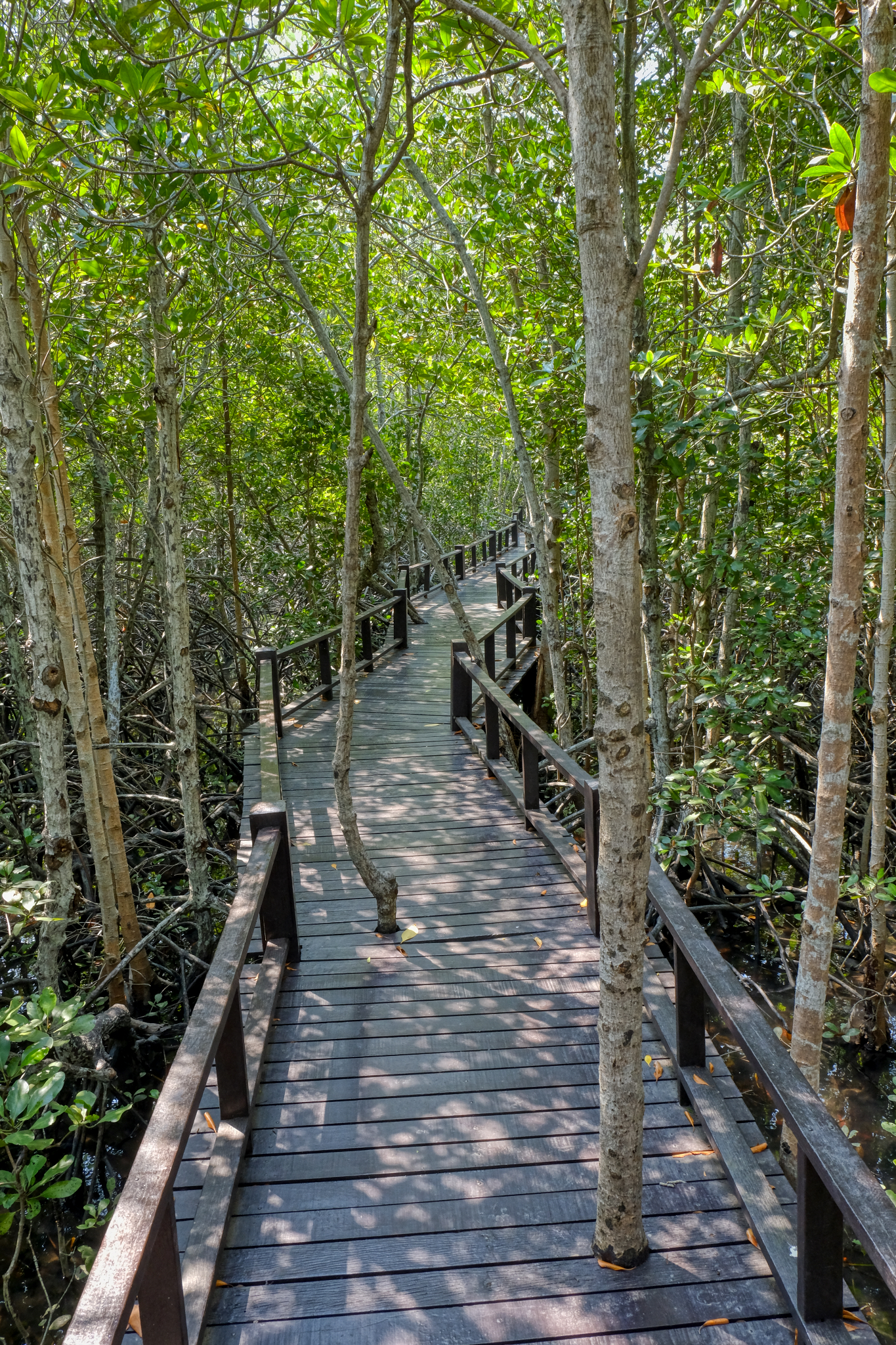 We walked the rest of the 2km walkway loop to the car . . .
We walked the rest of the 2km walkway loop to the car . . .
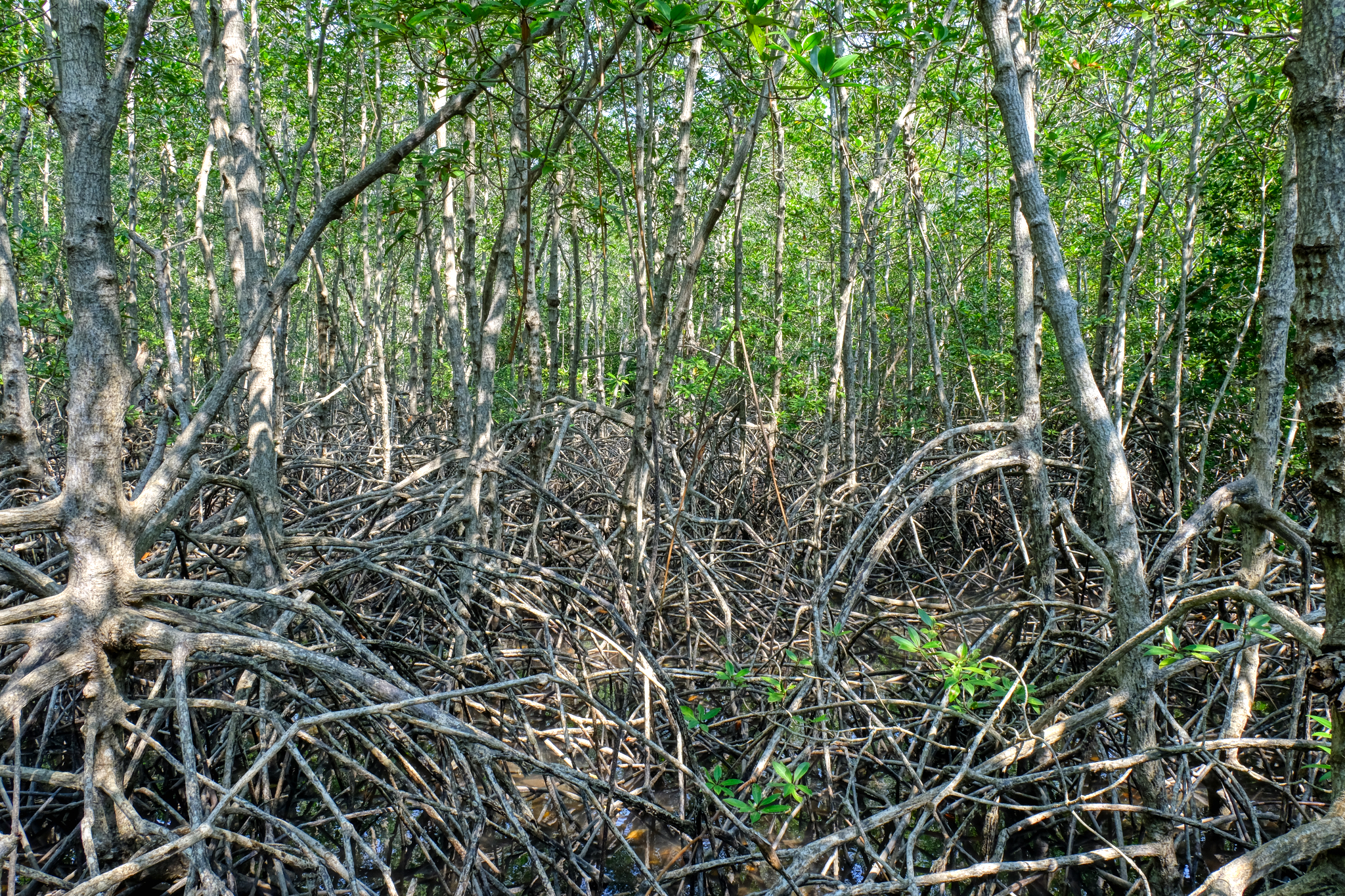 . . . and back through the tangled web of the mangrove knees.
. . . and back through the tangled web of the mangrove knees.
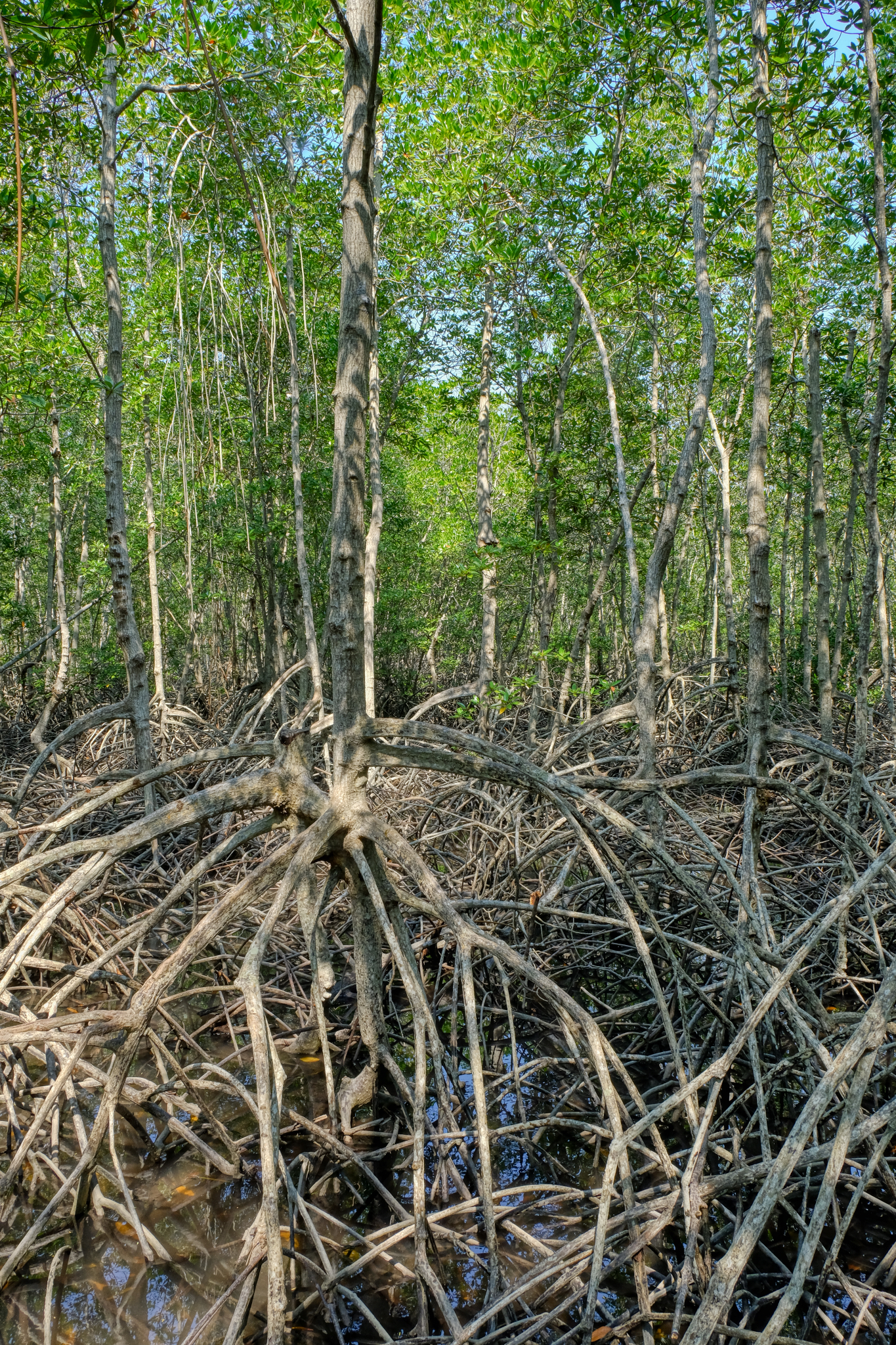 We spent a wonderful couple of hours being amazed by this fantastic environment . . and taking photographs to our hearts content.
We spent a wonderful couple of hours being amazed by this fantastic environment . . and taking photographs to our hearts content.
-----------------------------------------------------
A Fishing Port Village
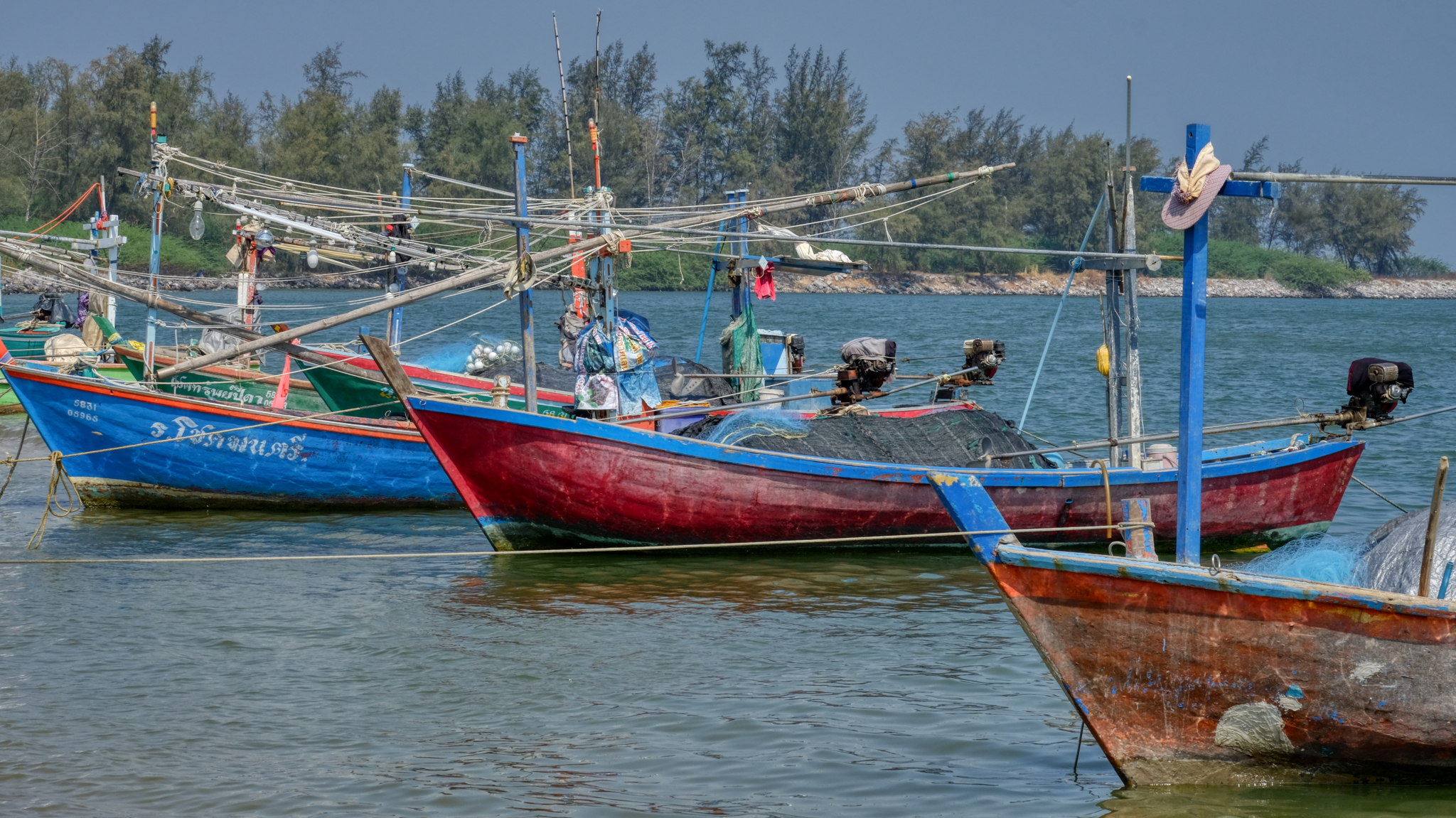 About a mile away from the mangrove forest park was another small fishing port.
About a mile away from the mangrove forest park was another small fishing port.
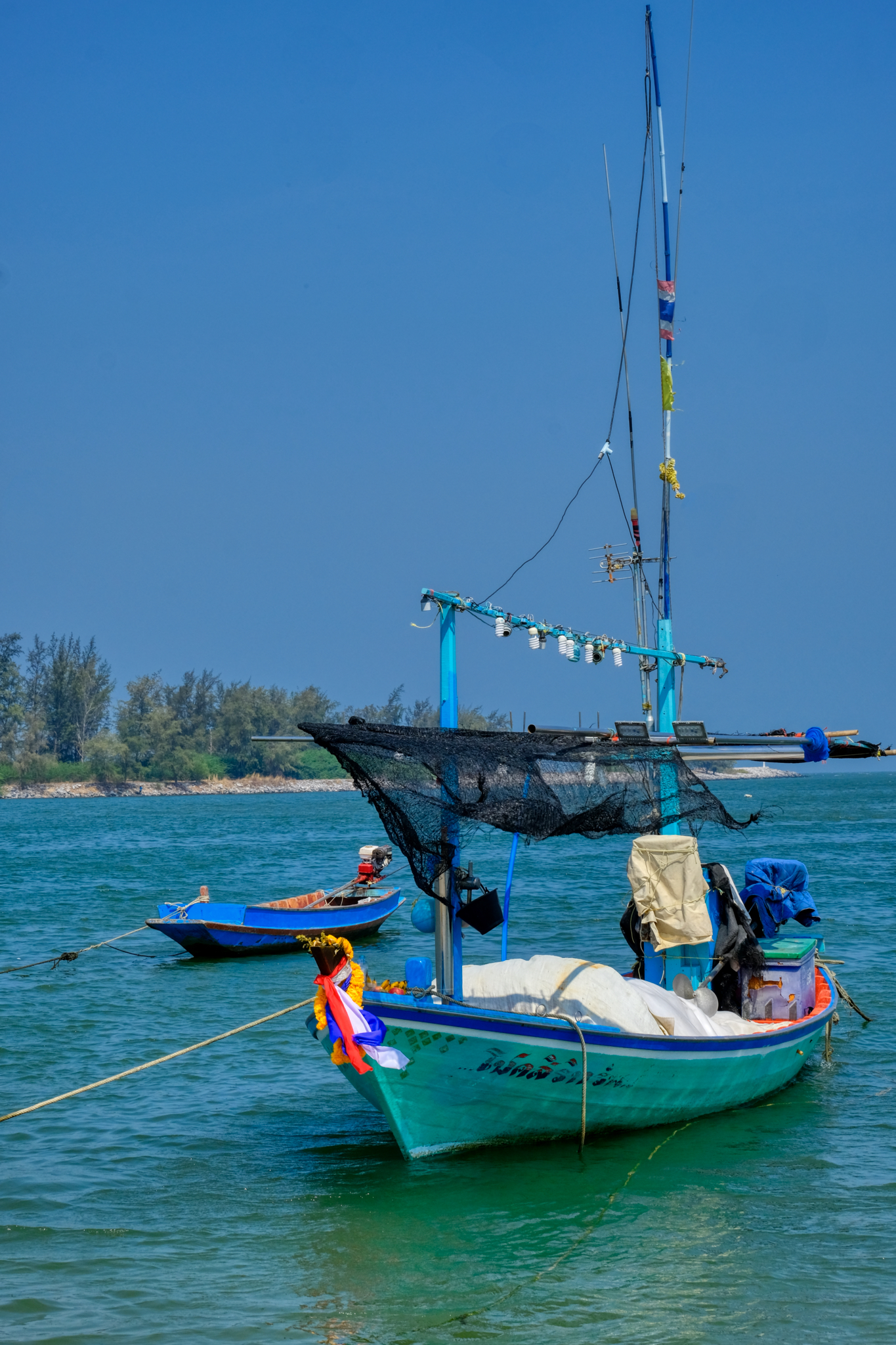 A beautiful day with colorful boats . . . what's not to like?
A beautiful day with colorful boats . . . what's not to like?
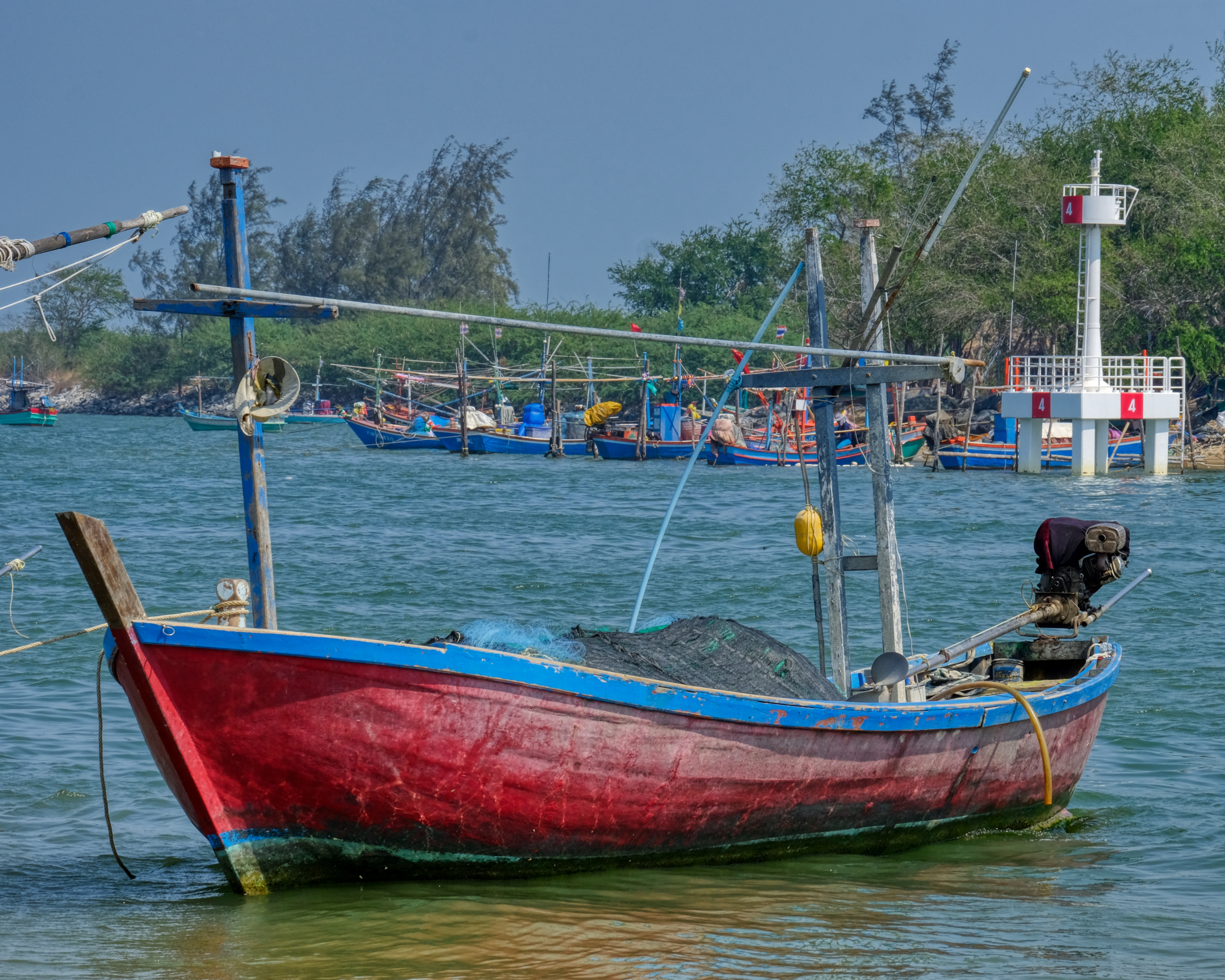 Small squid boats and large 'company boats" . . .
Small squid boats and large 'company boats" . . .
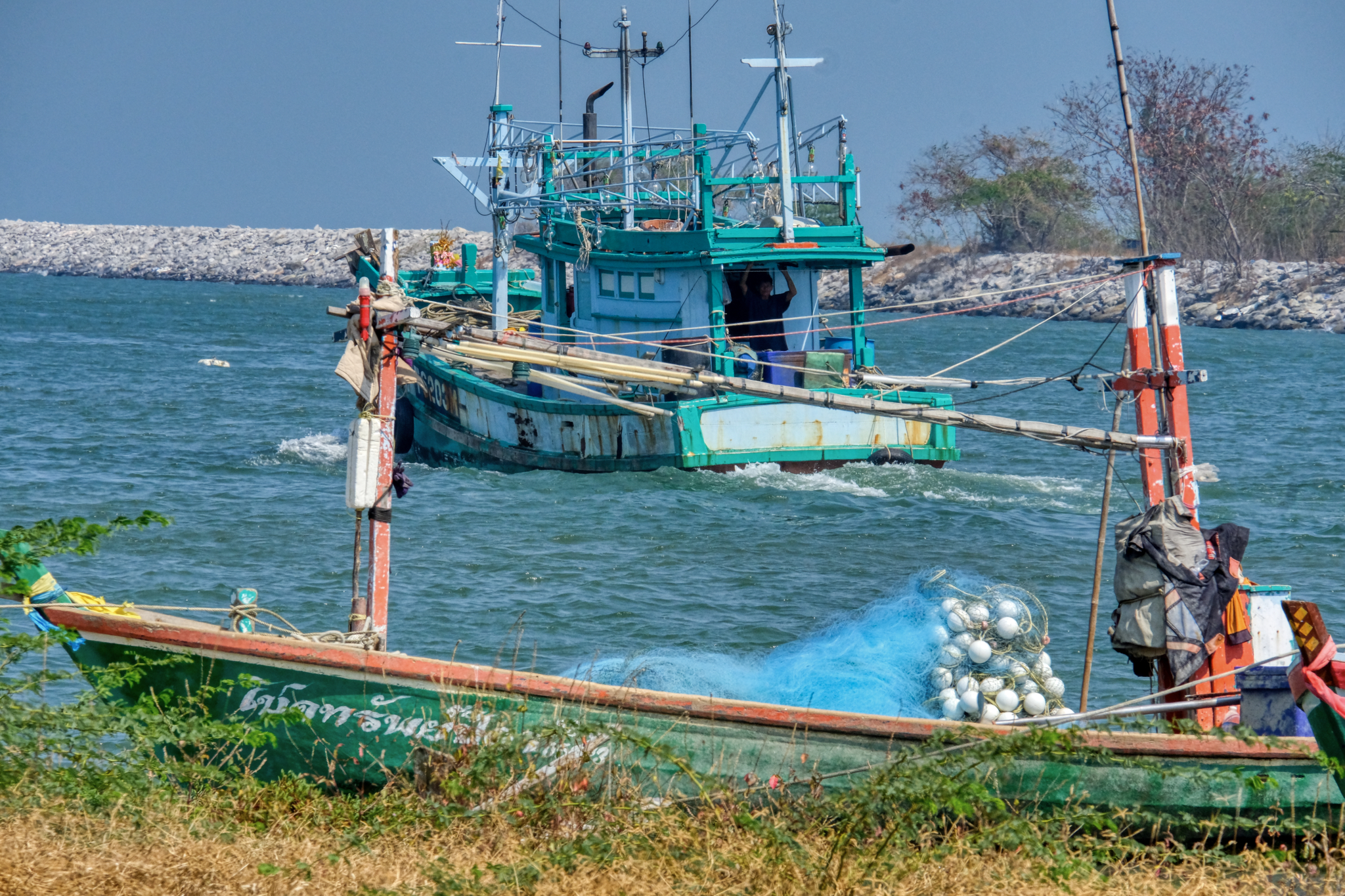 A 'company boat' heading out early for night squidding . . . they must be going far out into the Gulf of Thailand.
A 'company boat' heading out early for night squidding . . . they must be going far out into the Gulf of Thailand.
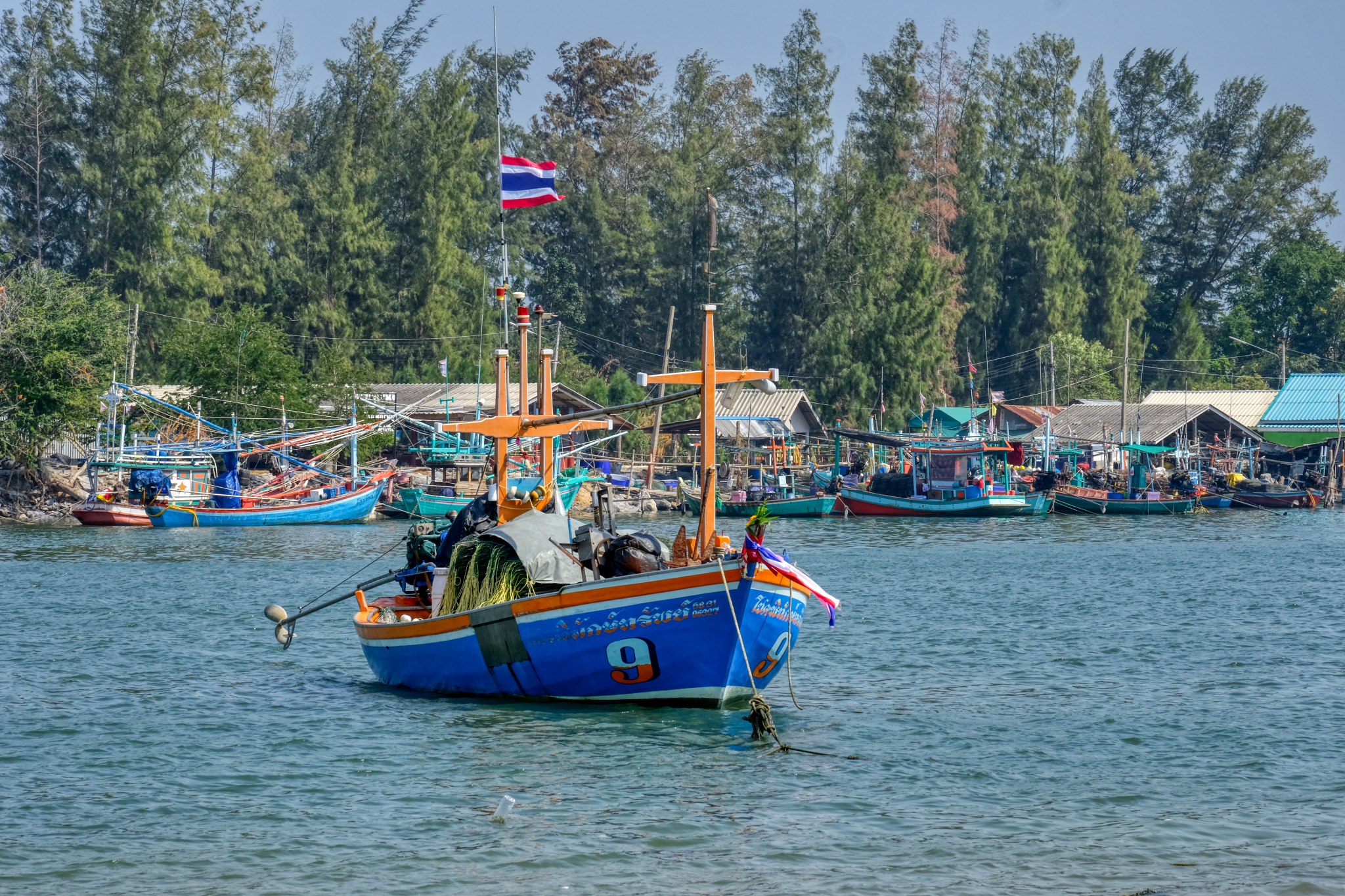 A busy Thai commercial fishing port.
A busy Thai commercial fishing port.
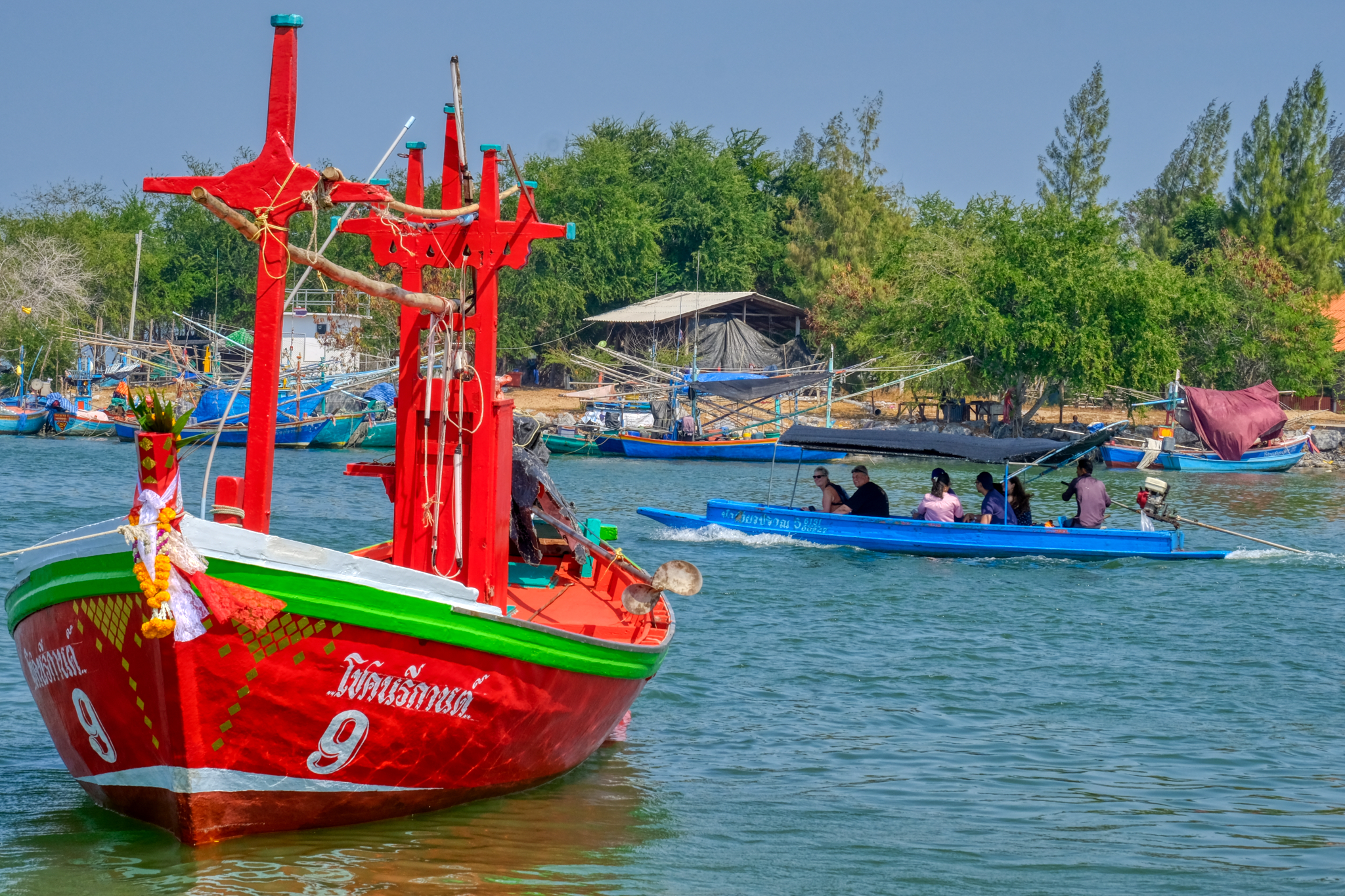 Yep . . . a tourist tour boat! This is actually the tourist boat from the mangrove forest park nearby . . . we all waved at each other.
Yep . . . a tourist tour boat! This is actually the tourist boat from the mangrove forest park nearby . . . we all waved at each other.
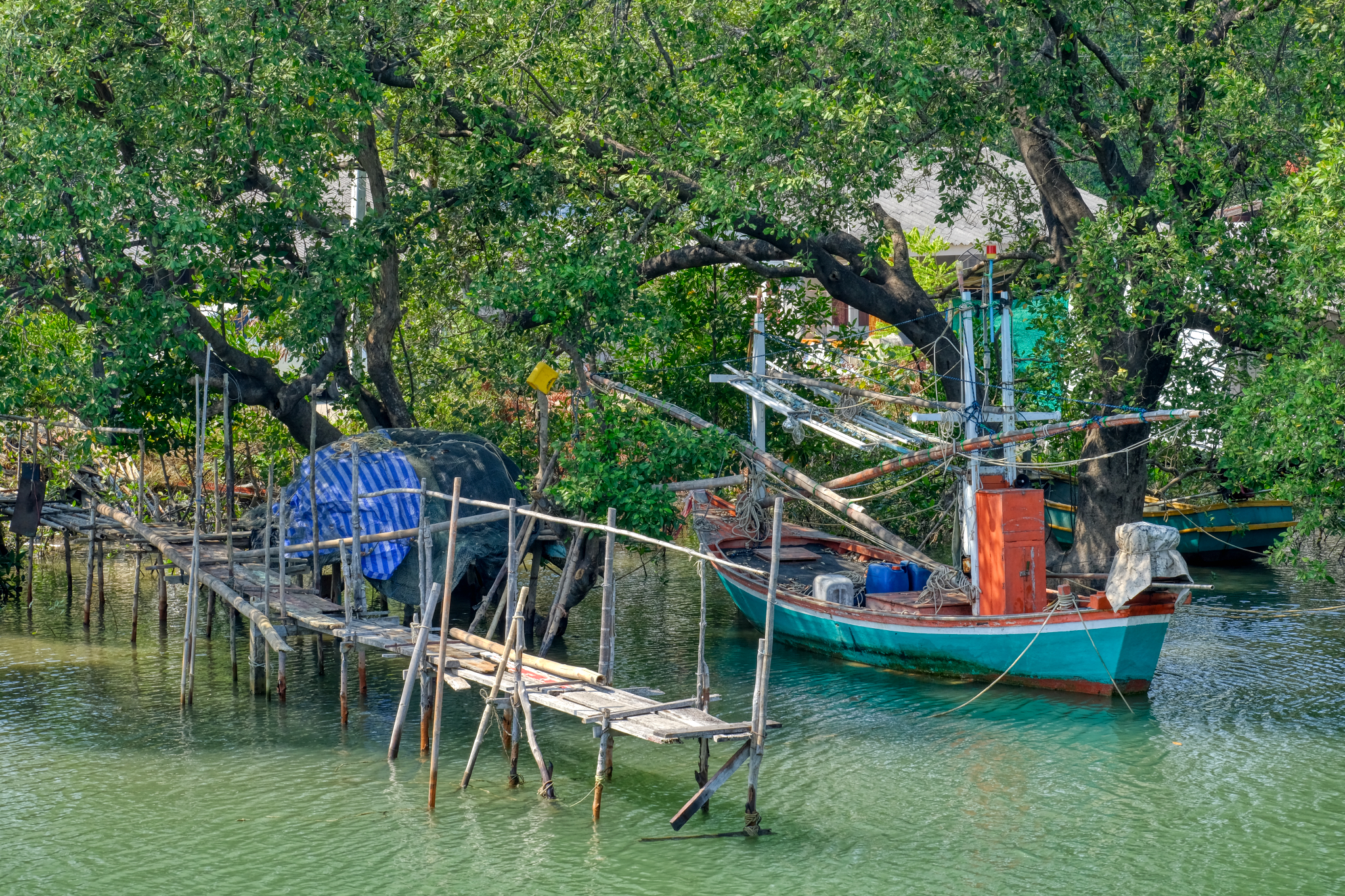 We walked along the road near the fishing port and came across a picturesque little slough.
We walked along the road near the fishing port and came across a picturesque little slough.
 Life along the slough.
Life along the slough.
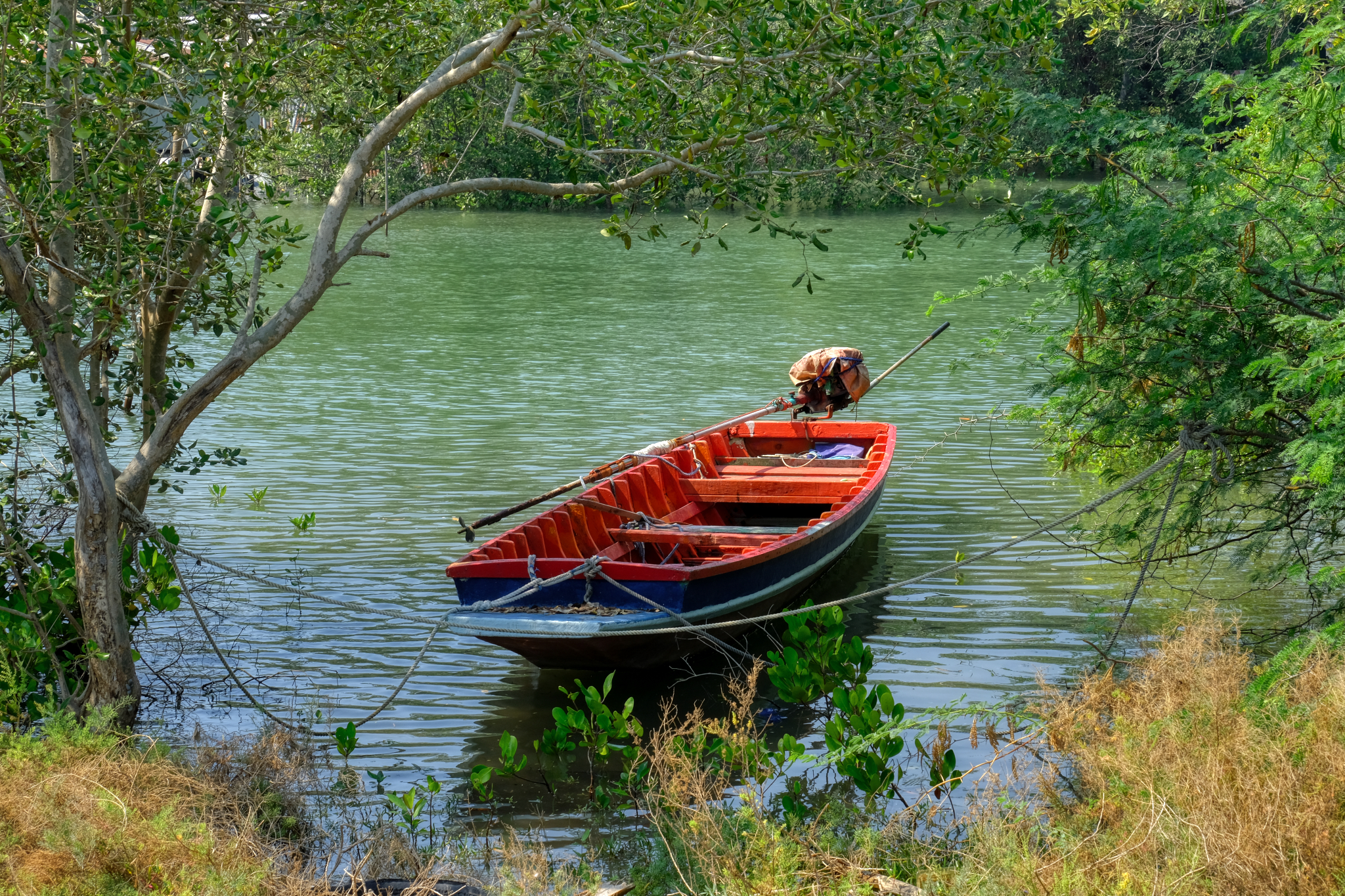 Picturesque . . . indeed!
Picturesque . . . indeed!
---------------------------------------------------------
Happy New Year 2020 From Hua Hin Thailand!!!
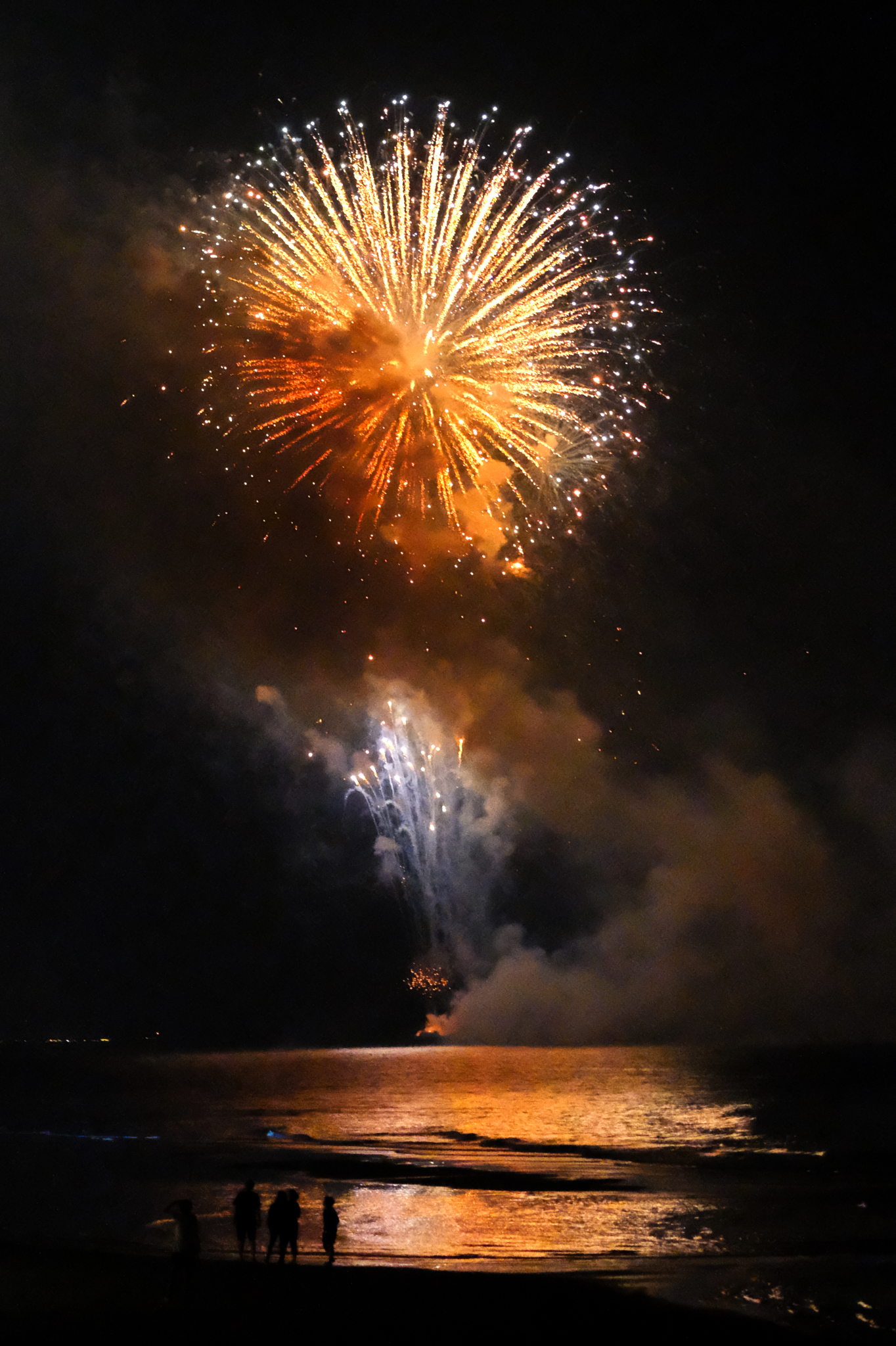 We went out to dinner at our usual favorite restaurant . . . . but we were not satisfied with the meal . . . it was a buffet, not the usual excellent food from the menu. Afterward we went to a friend's beach house . . . then out on to the beach for the BIG fireworks display.
We went out to dinner at our usual favorite restaurant . . . . but we were not satisfied with the meal . . . it was a buffet, not the usual excellent food from the menu. Afterward we went to a friend's beach house . . . then out on to the beach for the BIG fireworks display.
 Down along the beach . . . fantastic fireworks display for 20-25 minutes.
Down along the beach . . . fantastic fireworks display for 20-25 minutes.
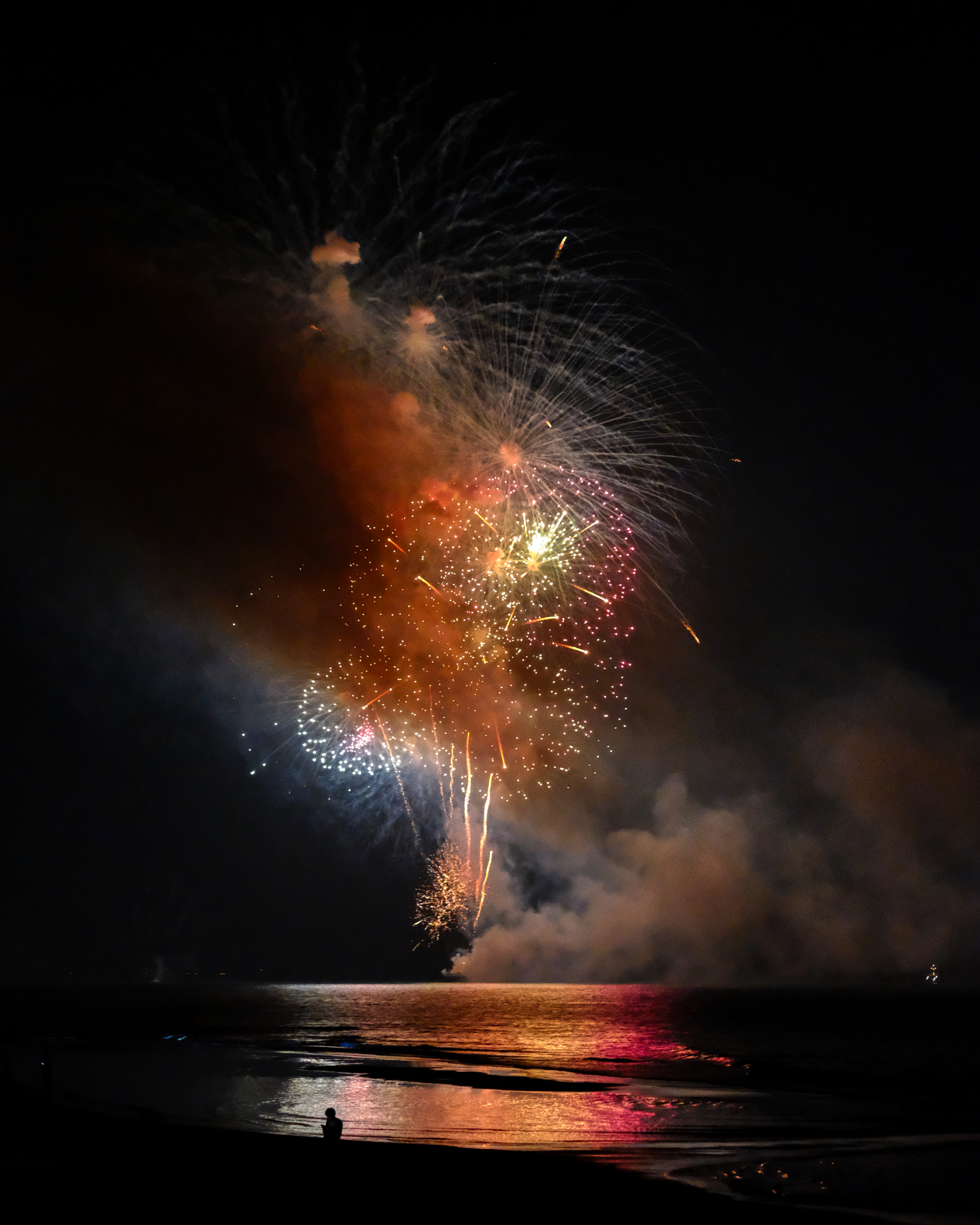 Fireworks across the bay . . .
Fireworks across the bay . . .
 Once I figured out my camera settings . . .
Once I figured out my camera settings . . .
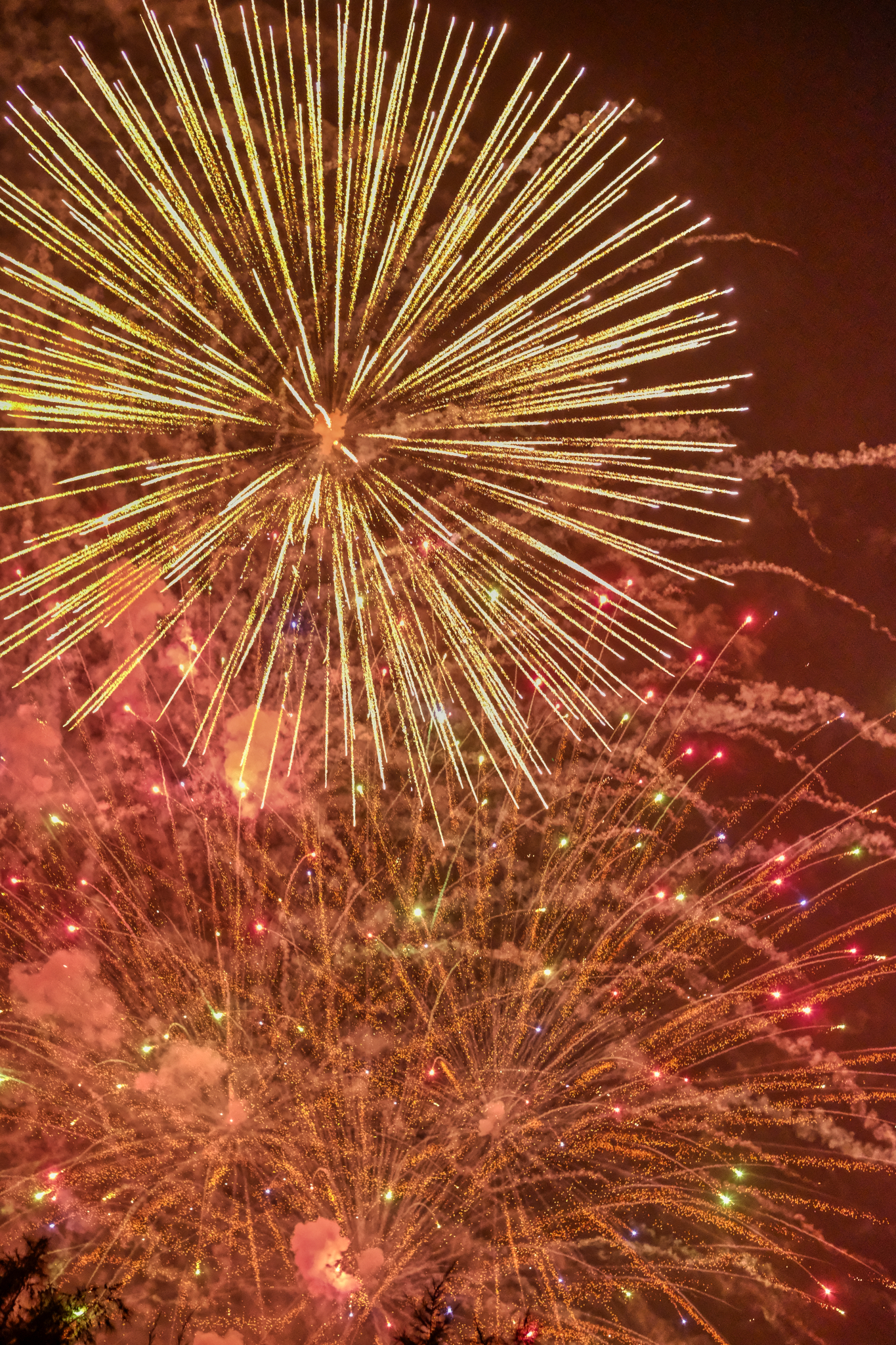 Right overhead!
Right overhead!
 I hope you all had a New Years' Eve as colorful and interesting as I did!
I hope you all had a New Years' Eve as colorful and interesting as I did!
YES! All in a day! All within 20 miles!
A New Years Eve Ramble Near Hua Hin, Thailand
 Friday, March 20, 2020 at 2:05PM
Friday, March 20, 2020 at 2:05PM 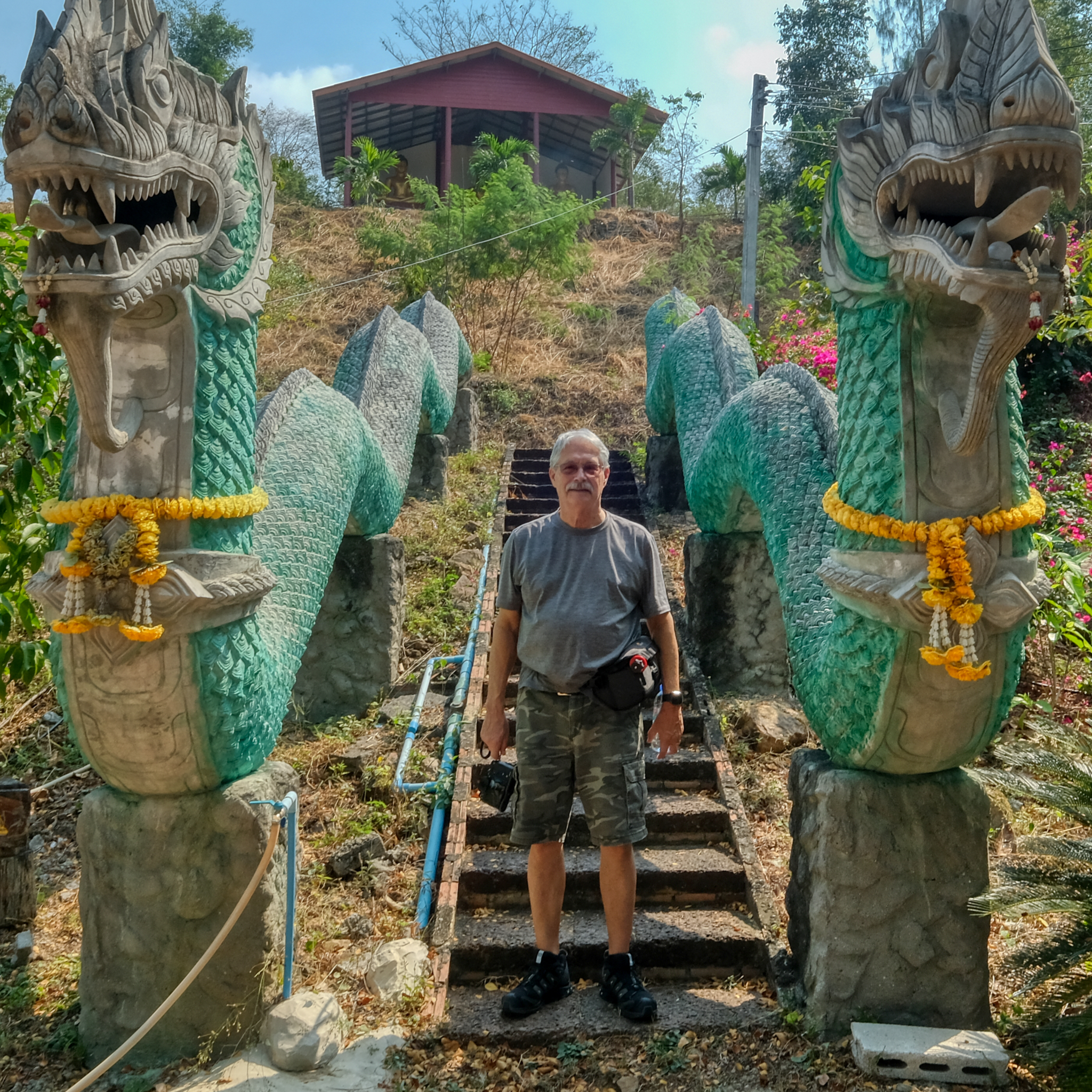 My visiting friend (of 45 years) on the verge of a long climb!
My visiting friend (of 45 years) on the verge of a long climb! A long way up to the chedi.
A long way up to the chedi. 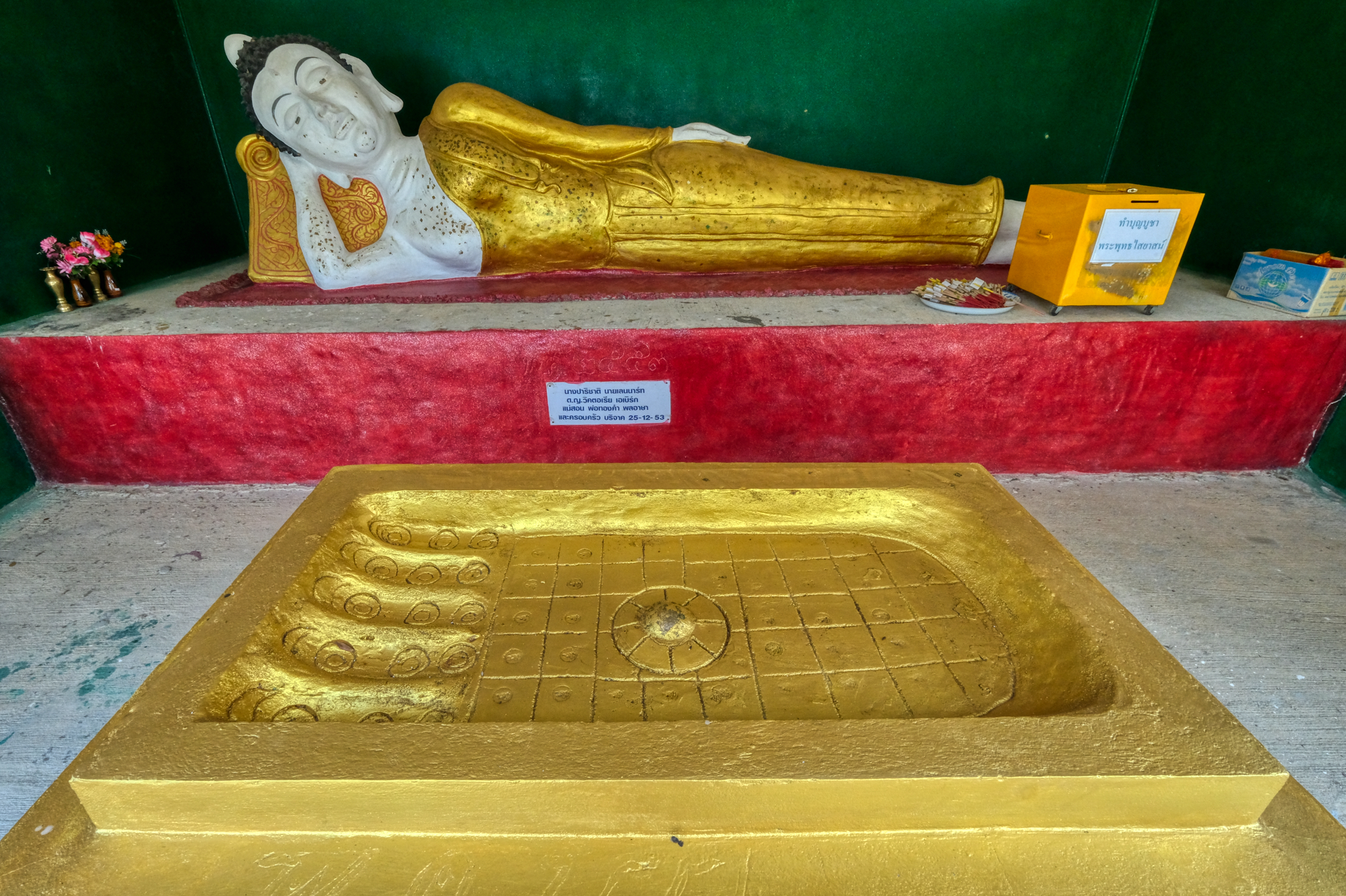 A beautiful shrine with a reclining Buddha on the way up . . .
A beautiful shrine with a reclining Buddha on the way up . . . 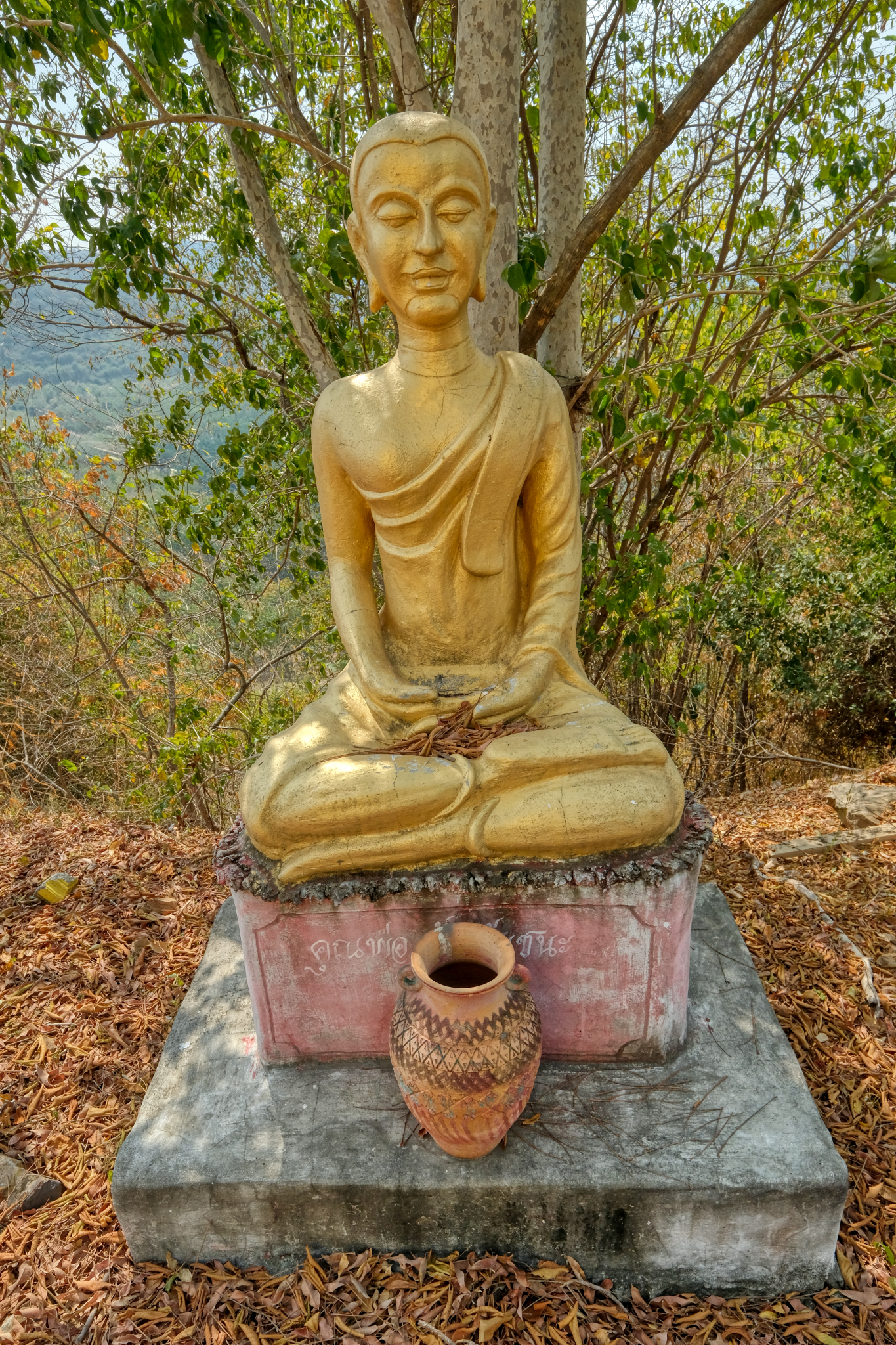 This 'naive art' Buddha image was very heartwarming.
This 'naive art' Buddha image was very heartwarming.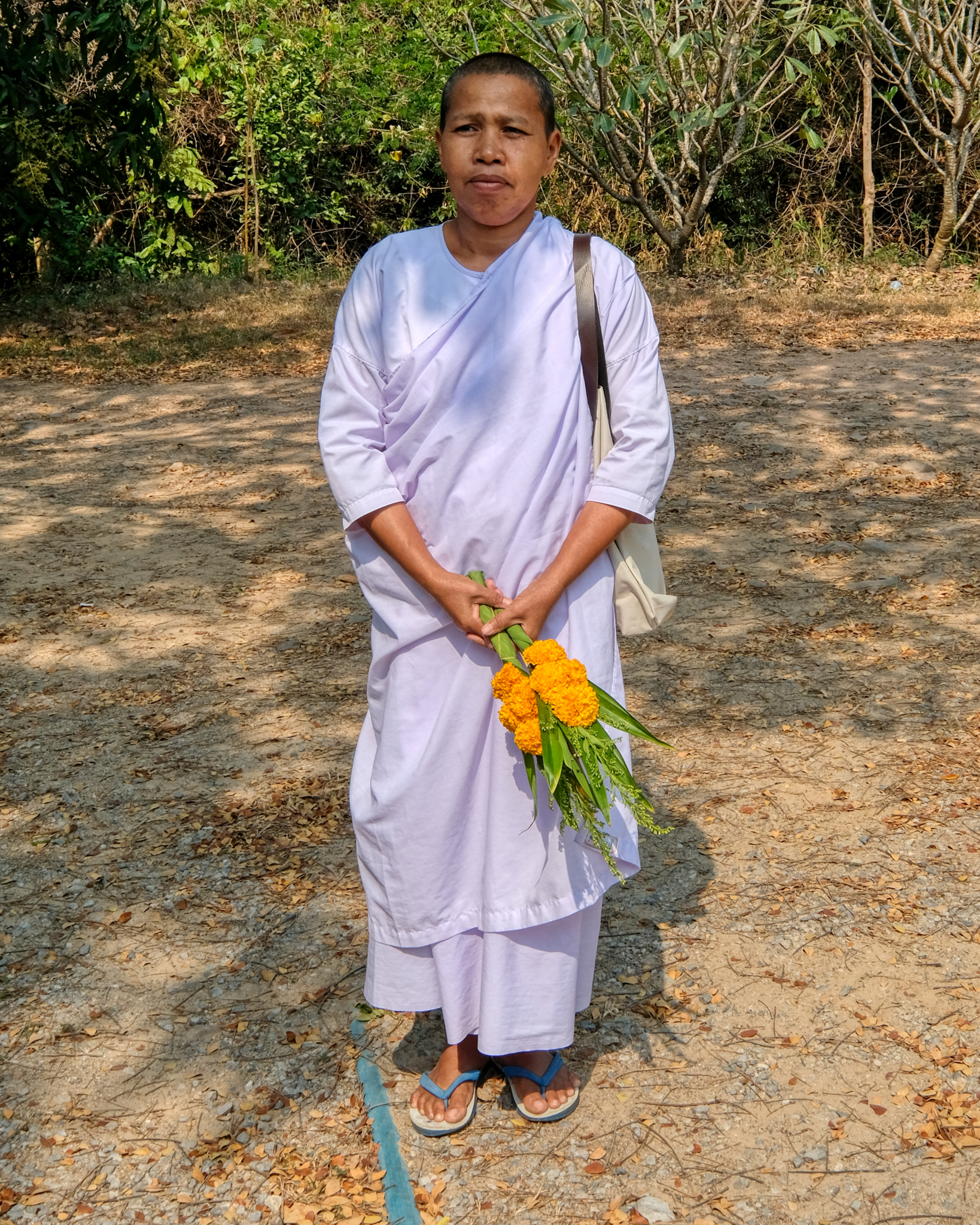 This Buddhist 'nun' followed us around for the afternoon. She is a kind of security guard. Good idea . . . there are some very beautiful and rare Buddha statues in the golden chedi (known as a 'stupa' in other Buddhist trditions and countries).
This Buddhist 'nun' followed us around for the afternoon. She is a kind of security guard. Good idea . . . there are some very beautiful and rare Buddha statues in the golden chedi (known as a 'stupa' in other Buddhist trditions and countries).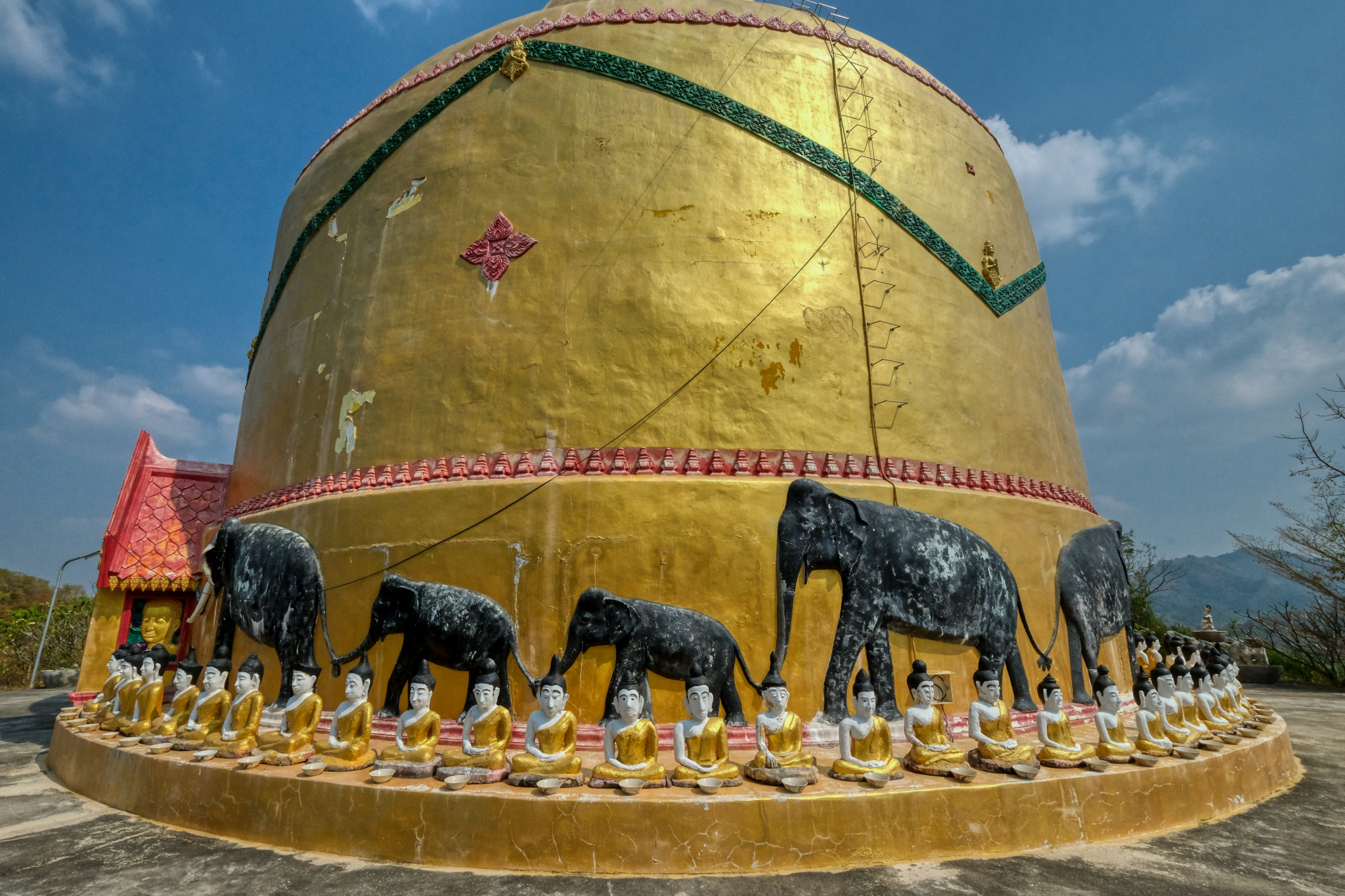 This is what I had taken my friend to see . . . and for me, to see again.
This is what I had taken my friend to see . . . and for me, to see again.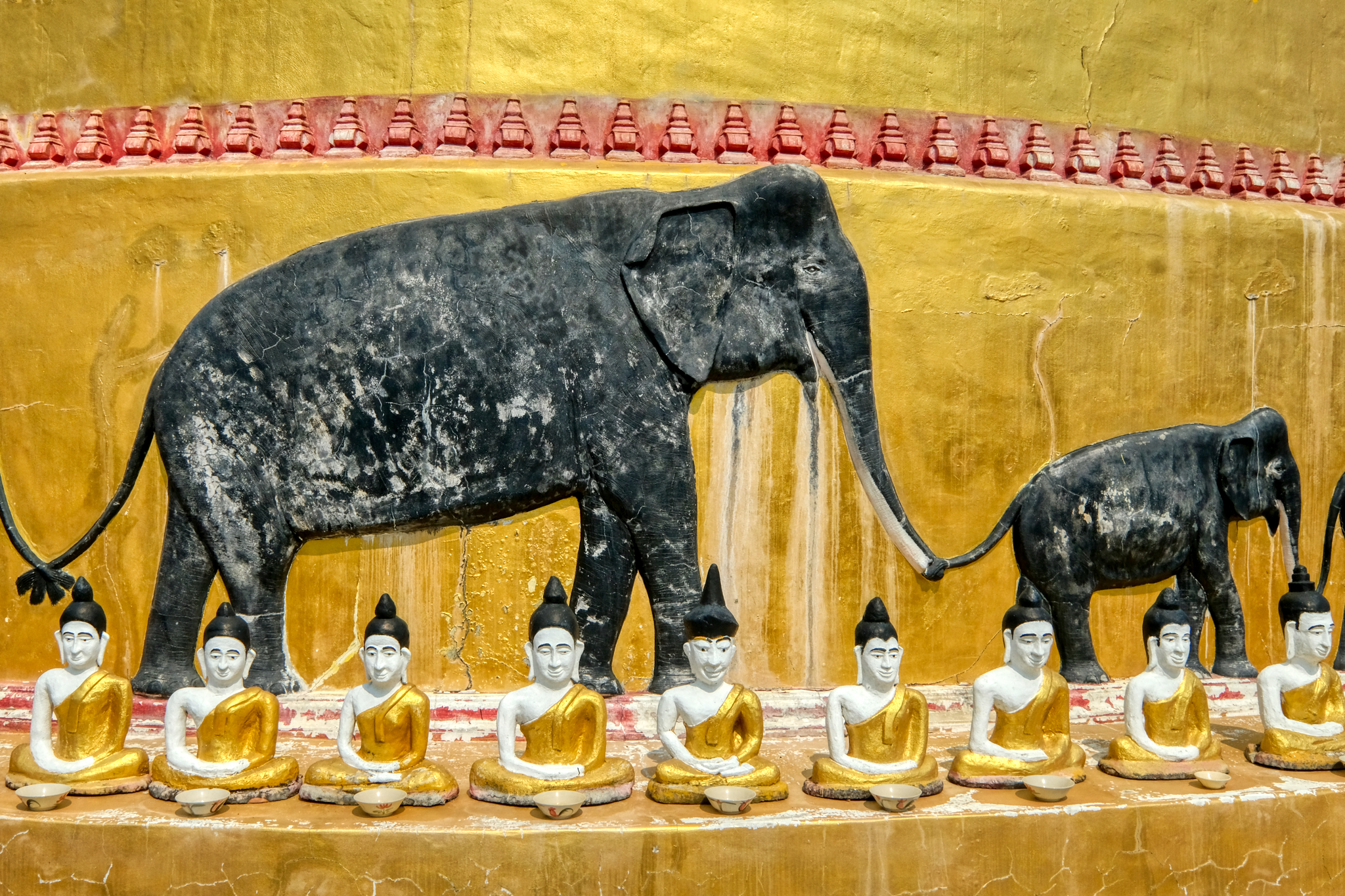 More fascinating, and individualistic, naive art Buddha images. As interesting as the outside of the chedi was, it is the inside that brought me back!
More fascinating, and individualistic, naive art Buddha images. As interesting as the outside of the chedi was, it is the inside that brought me back!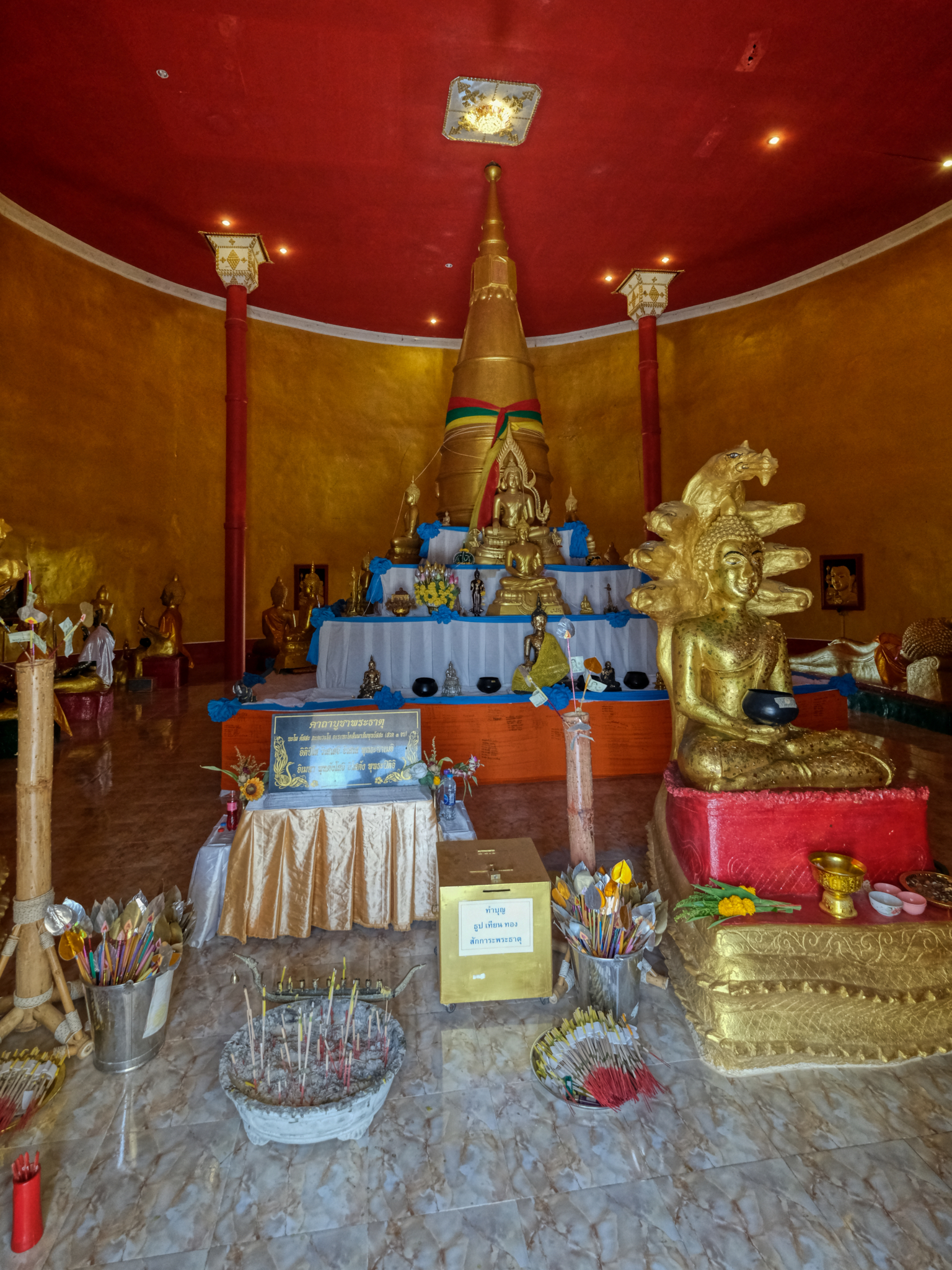 Looking into the chedi interior from the front door. WOW!
Looking into the chedi interior from the front door. WOW!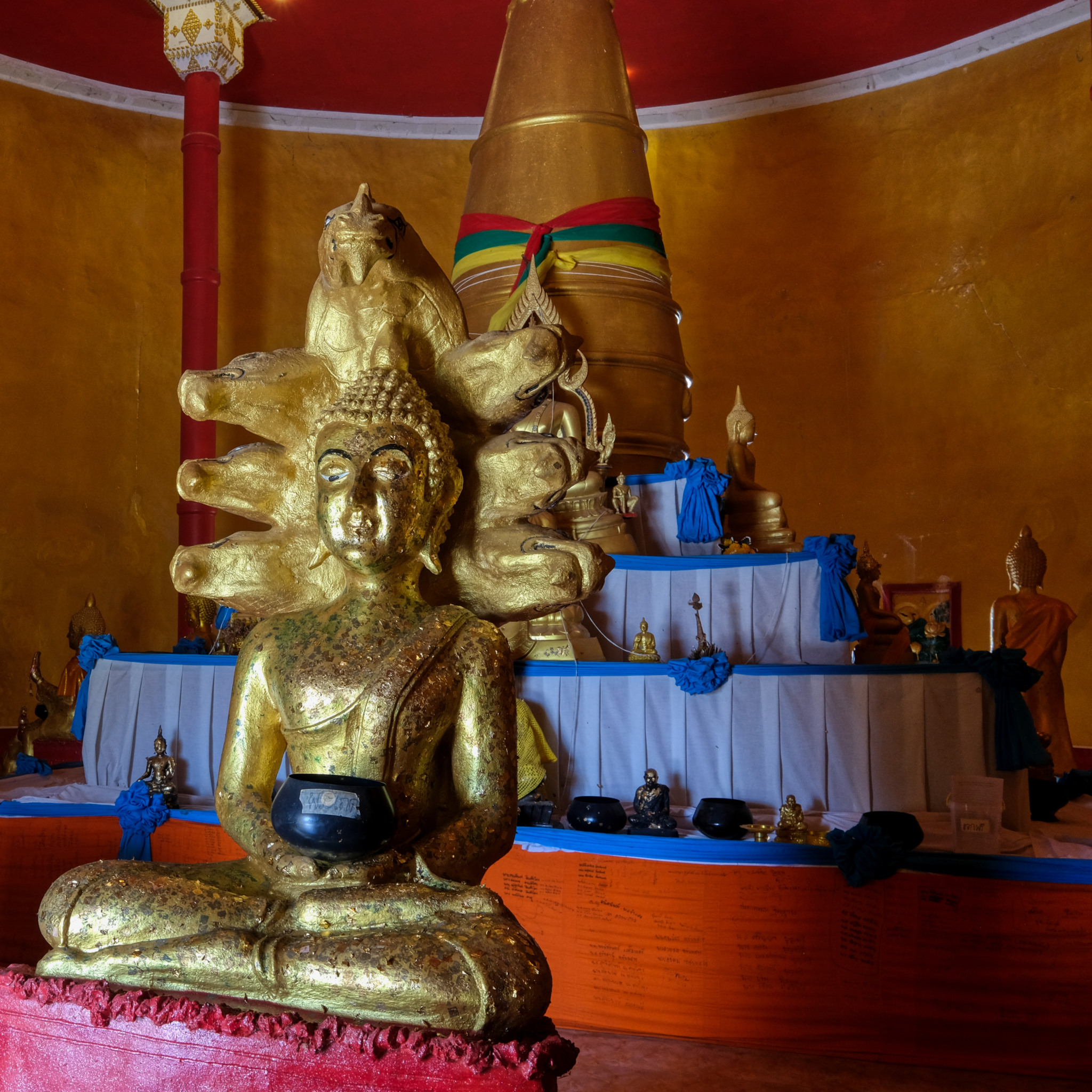 The light was so scrumptious, the images so serene . . .
The light was so scrumptious, the images so serene . . .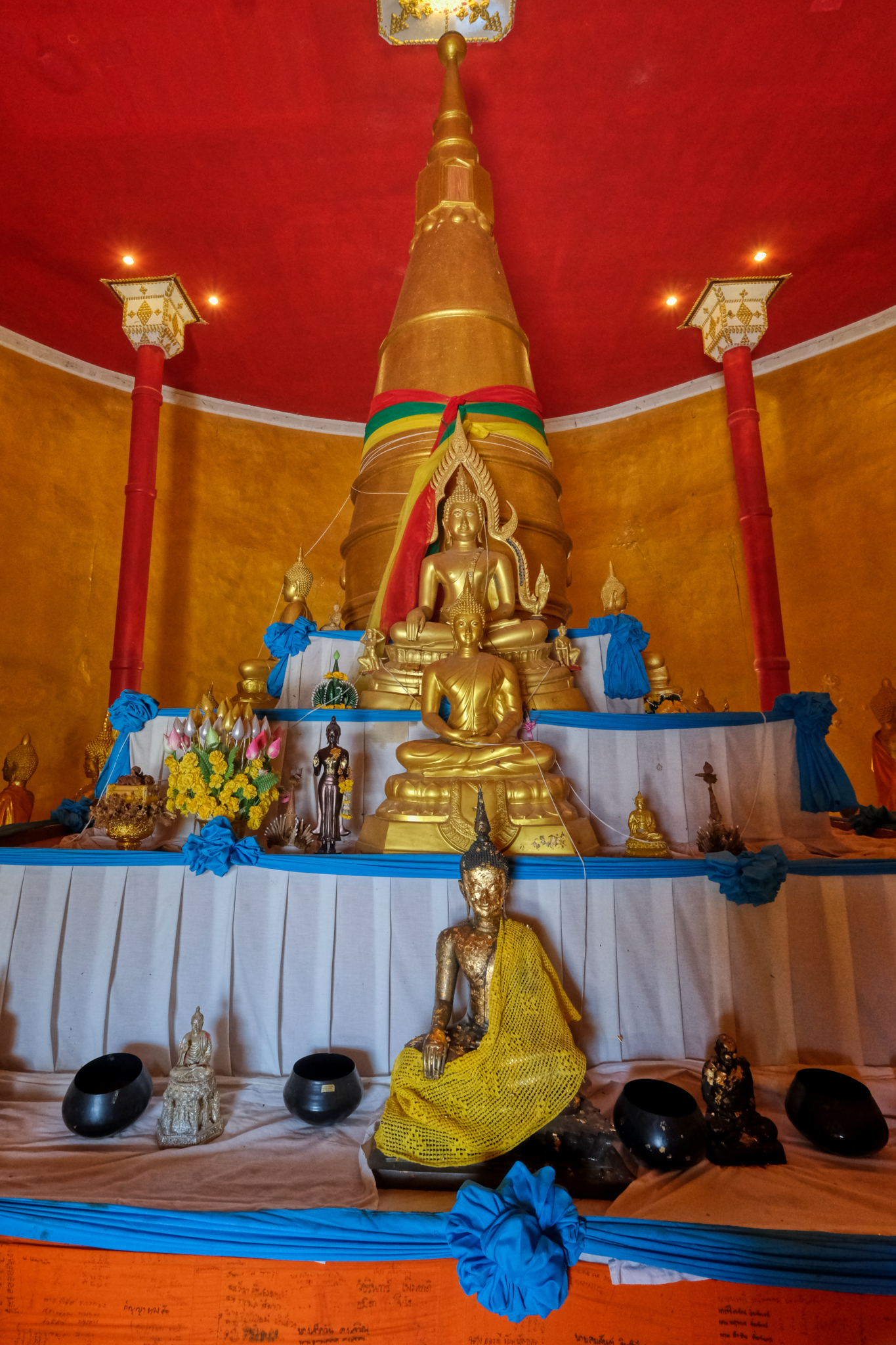 The front of the entry altar. The big interior in its marvelously bright colors.
The front of the entry altar. The big interior in its marvelously bright colors.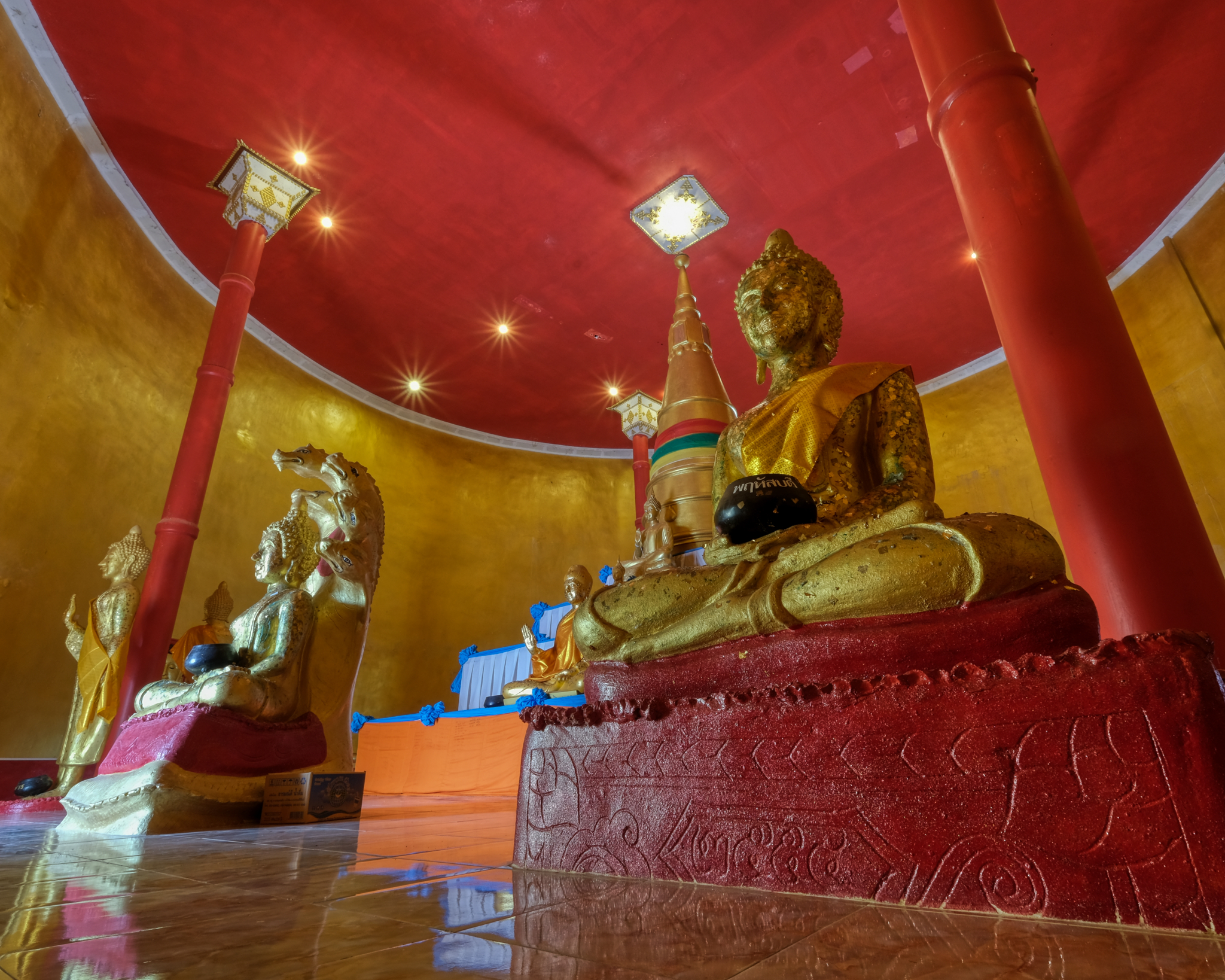 My camera on a small tripod . . . so many superb images to capture.
My camera on a small tripod . . . so many superb images to capture.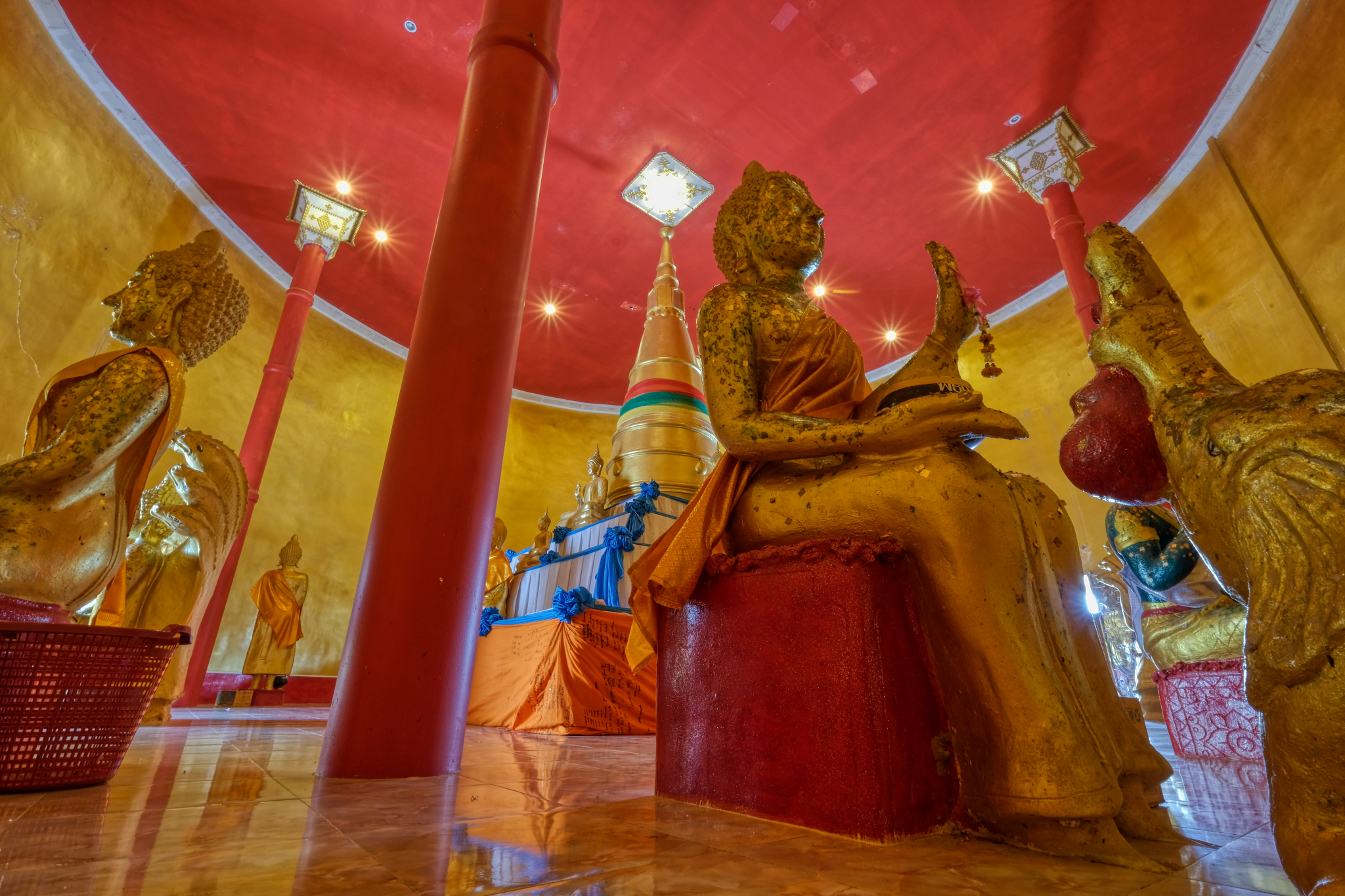
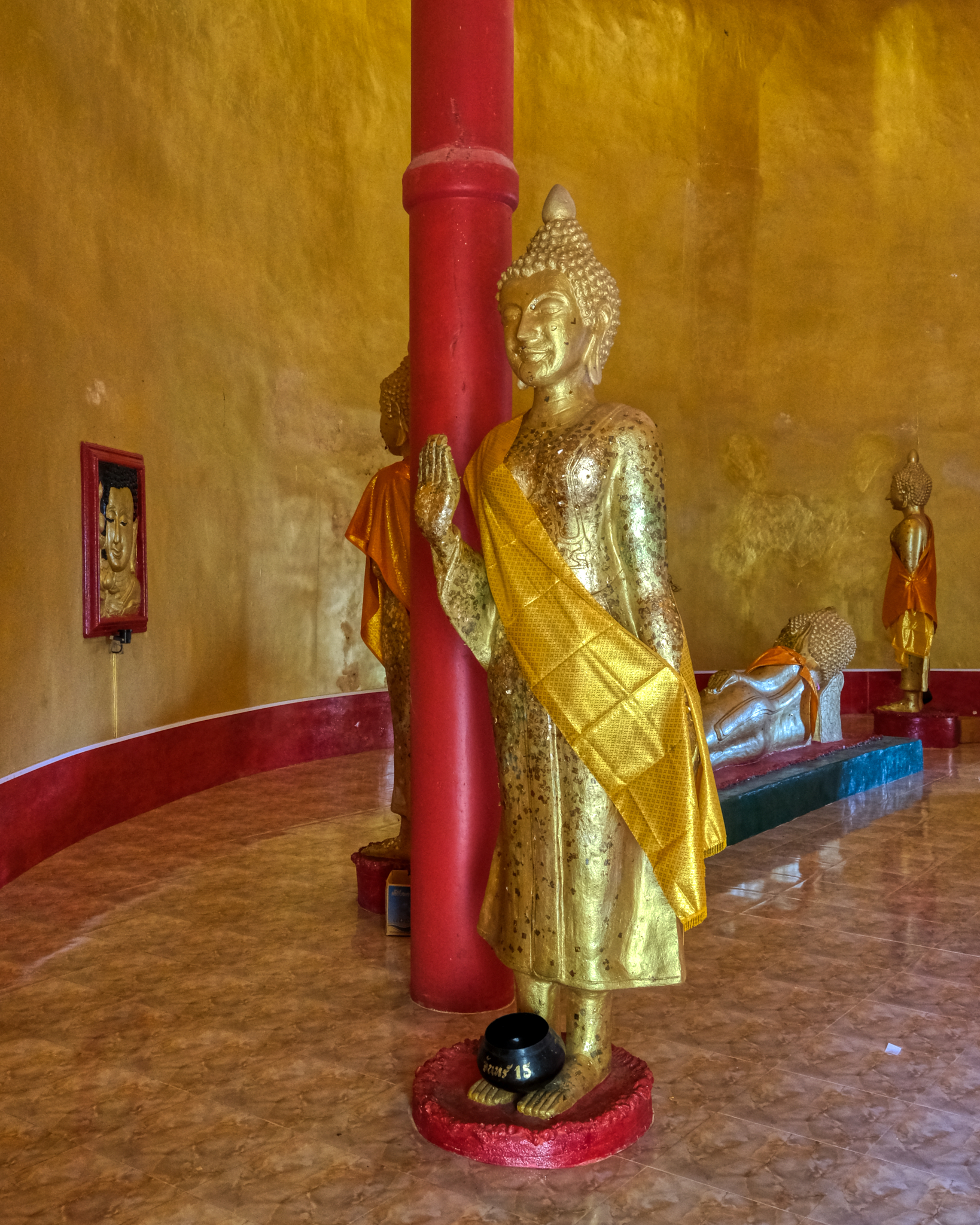 Holding Back The River of samsaric temptation.
Holding Back The River of samsaric temptation. Beautiful spiritual space of Buddhanature.
Beautiful spiritual space of Buddhanature.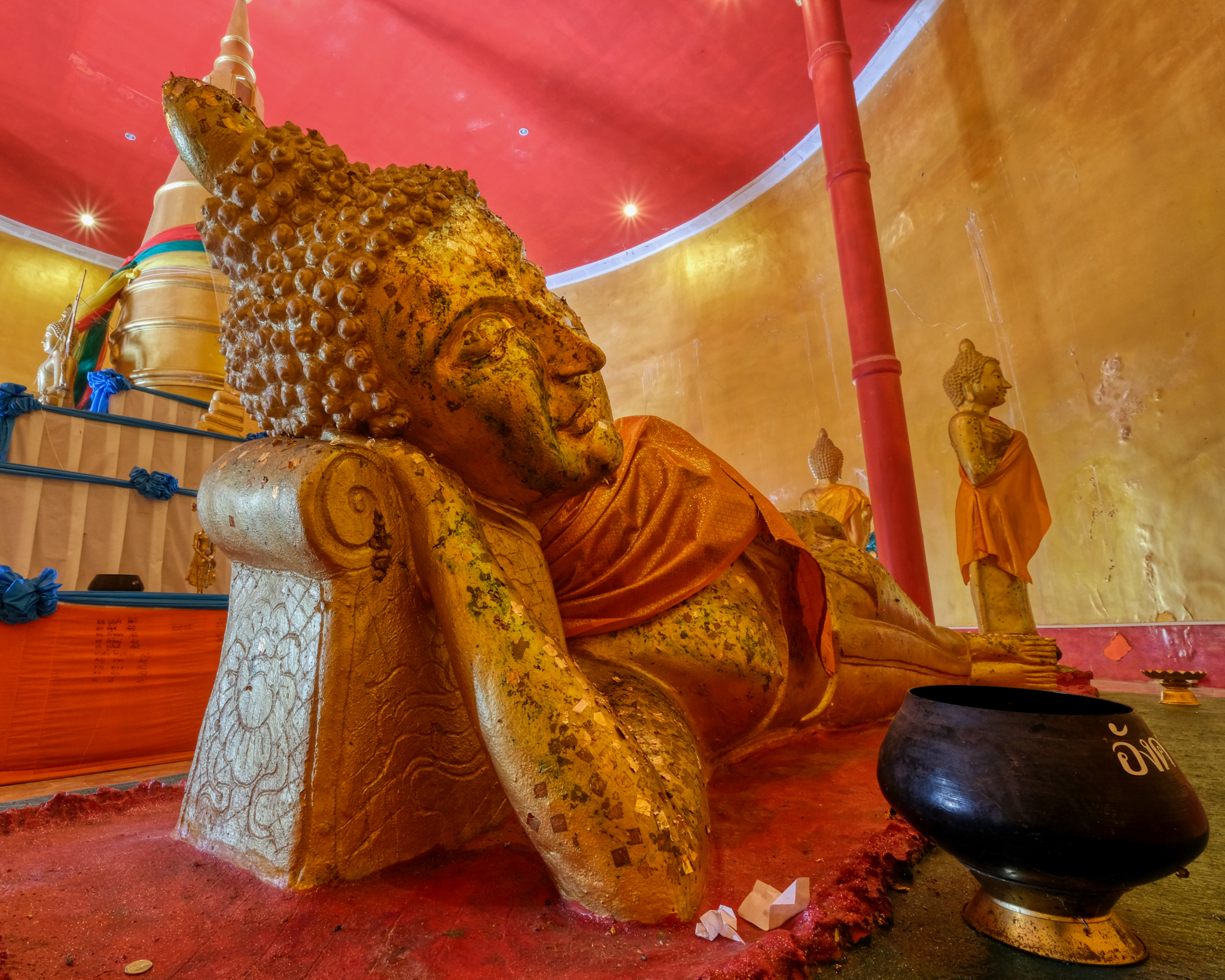 A Reclining Buddha . . . this posture represents the mahāparinabbāna: the Buddha's final state of enlightenment before his death!
A Reclining Buddha . . . this posture represents the mahāparinabbāna: the Buddha's final state of enlightenment before his death!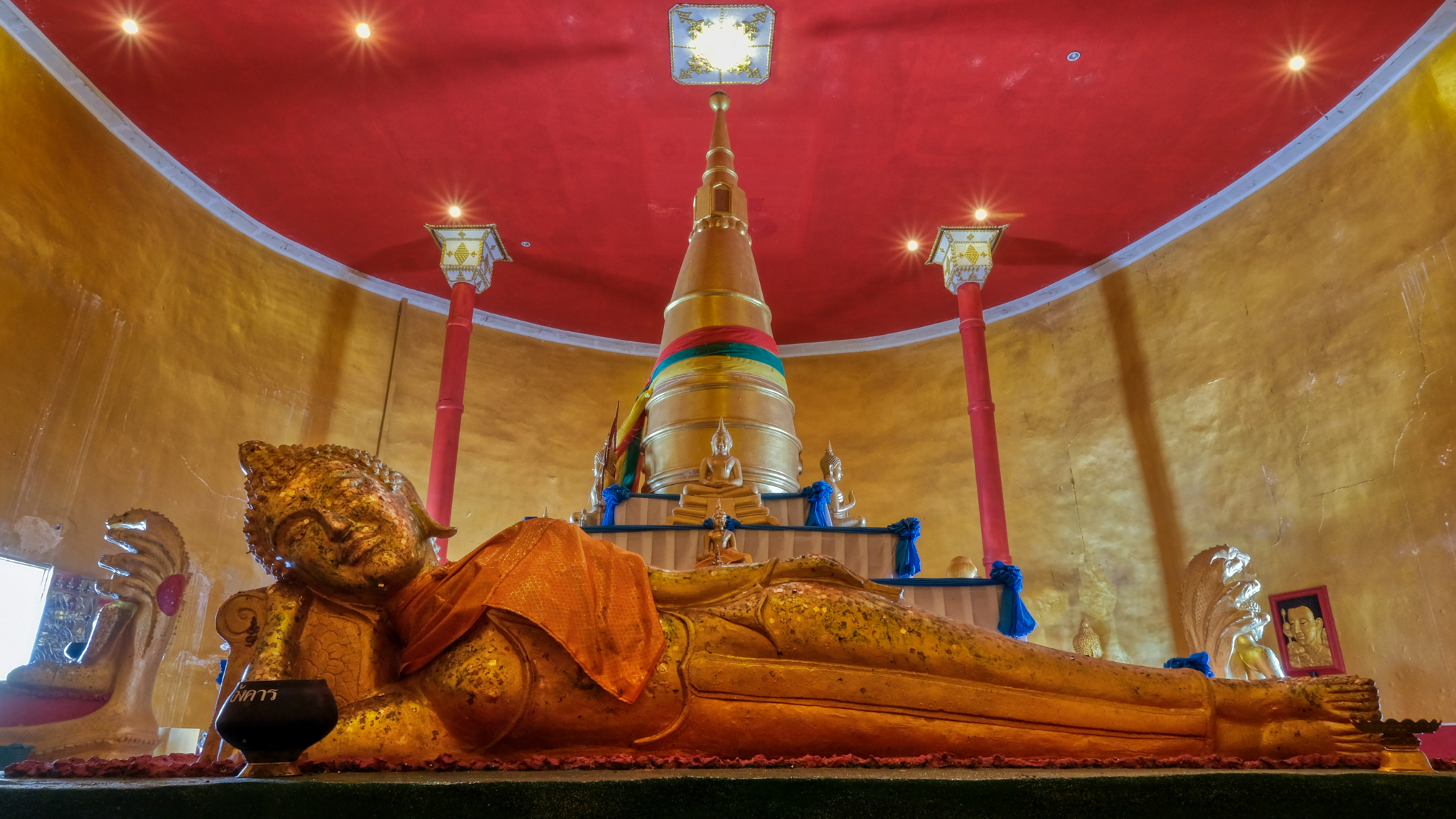 The last time I was in this chedi I did not have a lens wide enough to take this photo. I'm very glad I came back, and would have come back even without a camera. This chedi has become a favorite spiritual pilgrimage site for me.
The last time I was in this chedi I did not have a lens wide enough to take this photo. I'm very glad I came back, and would have come back even without a camera. This chedi has become a favorite spiritual pilgrimage site for me. Each side of the central interior chedi presents a different compositional arrangement. Notice our nun and another pilgrim on the right.
Each side of the central interior chedi presents a different compositional arrangement. Notice our nun and another pilgrim on the right.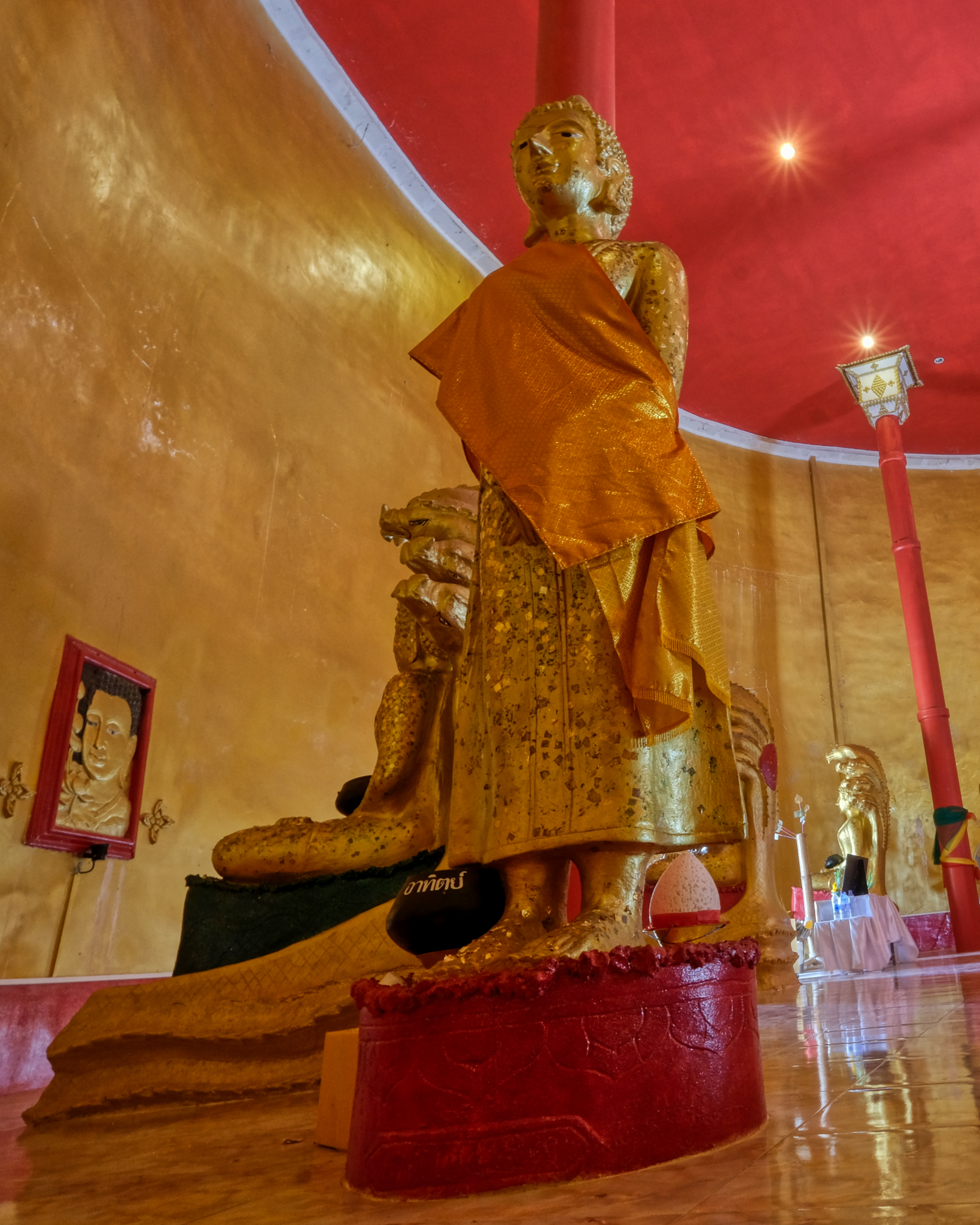 Move a few feet and see another striking composition . . .
Move a few feet and see another striking composition . . .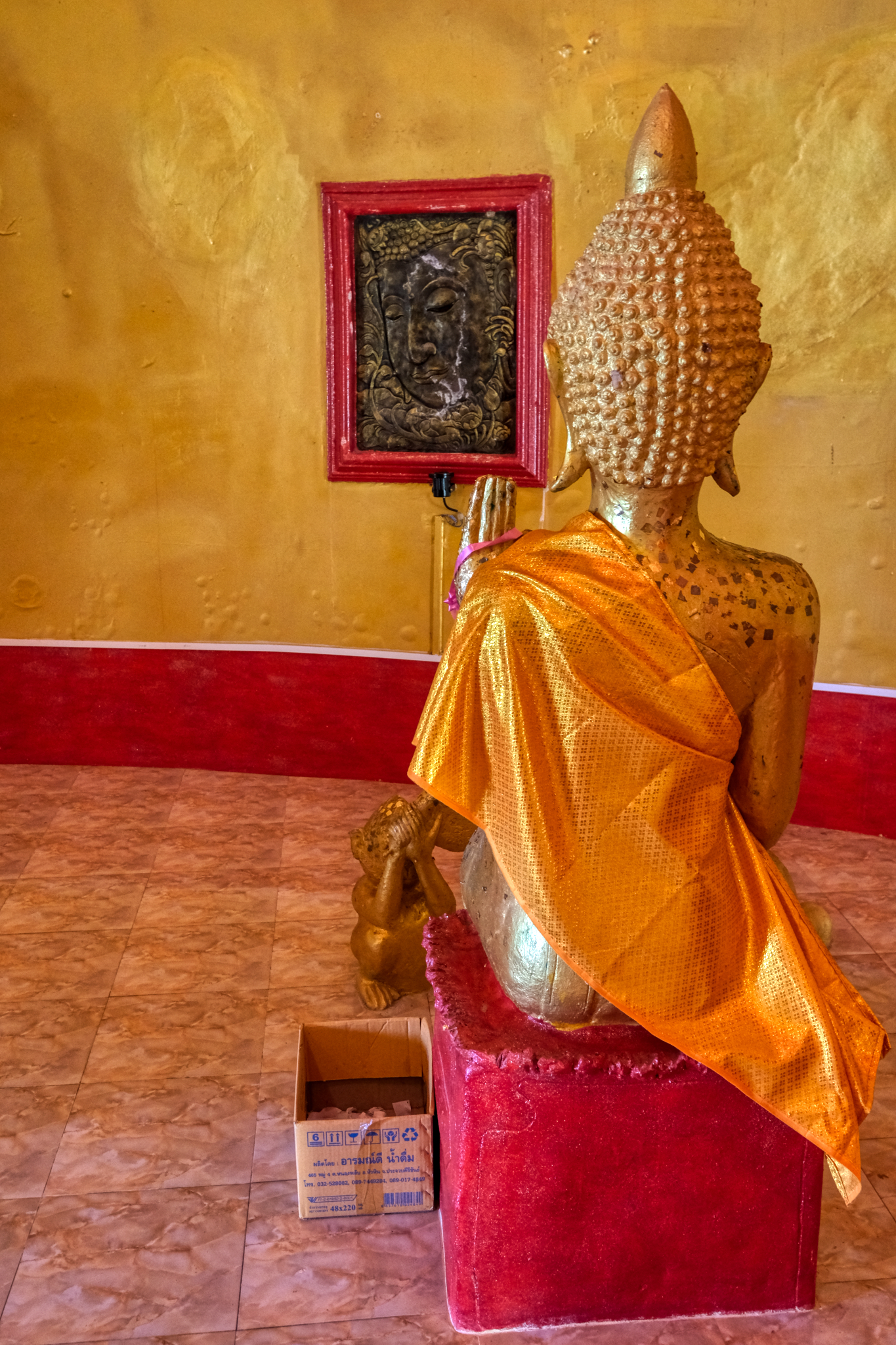 Not all of the statuary represents the Buddha. Some, like this one, are of bikkus, followers of the Buddha captured in a moment of listening to the dharma.
Not all of the statuary represents the Buddha. Some, like this one, are of bikkus, followers of the Buddha captured in a moment of listening to the dharma.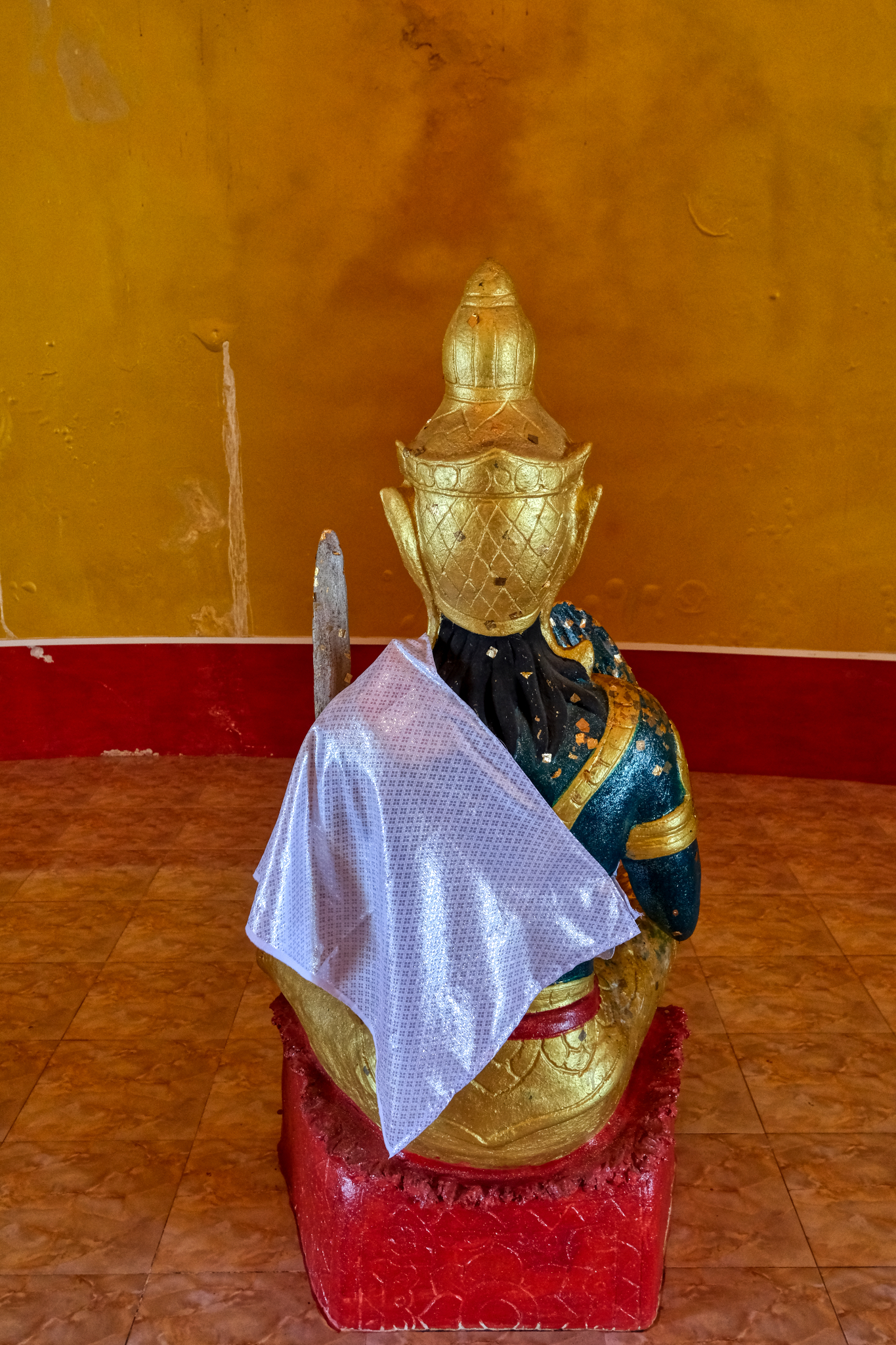 A bikku.
A bikku.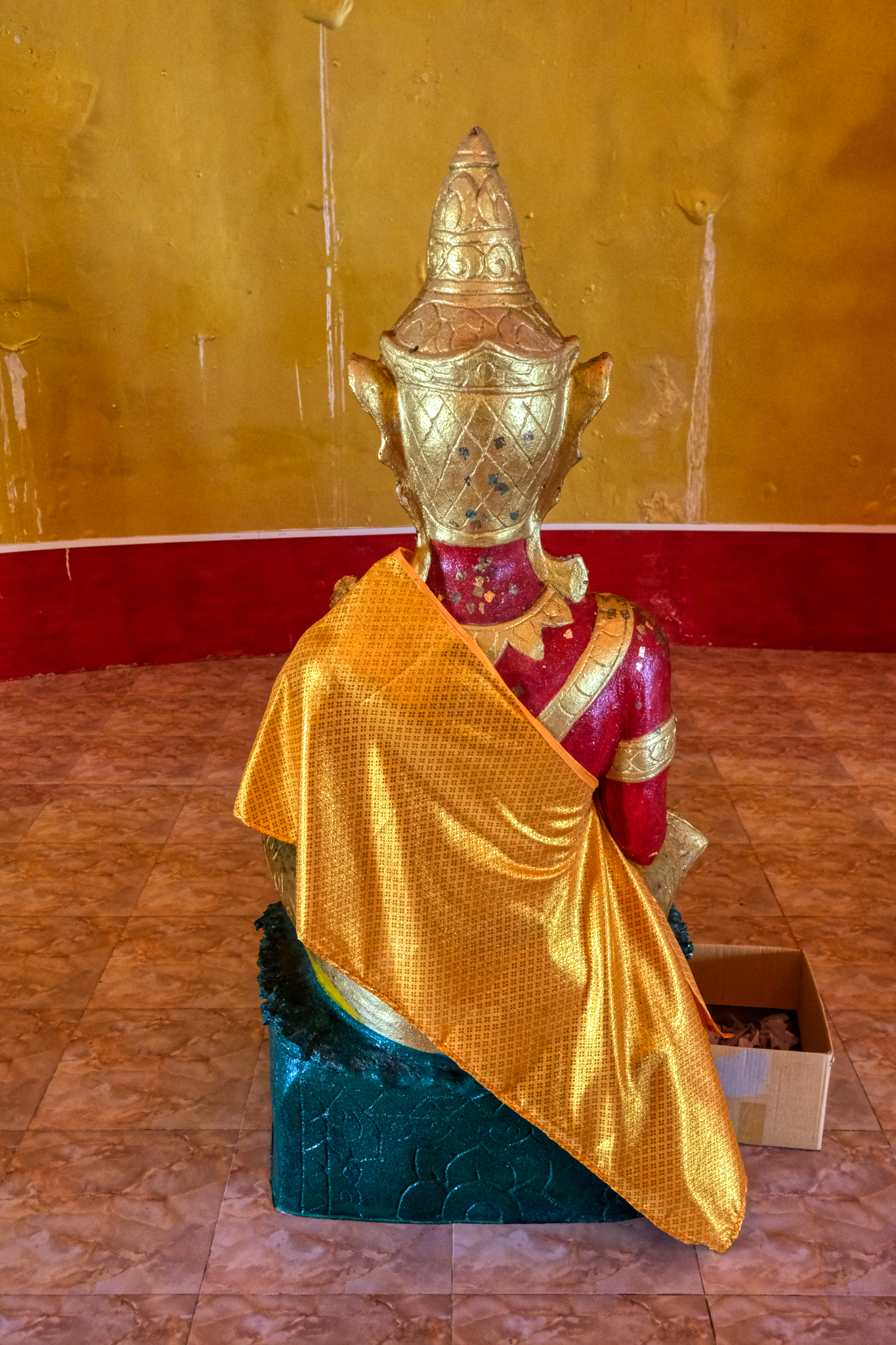 A bikku. The cardboard box is for the paper fold left over after a visitor has laid a piece of gold leaf on the statue in reverence.
A bikku. The cardboard box is for the paper fold left over after a visitor has laid a piece of gold leaf on the statue in reverence.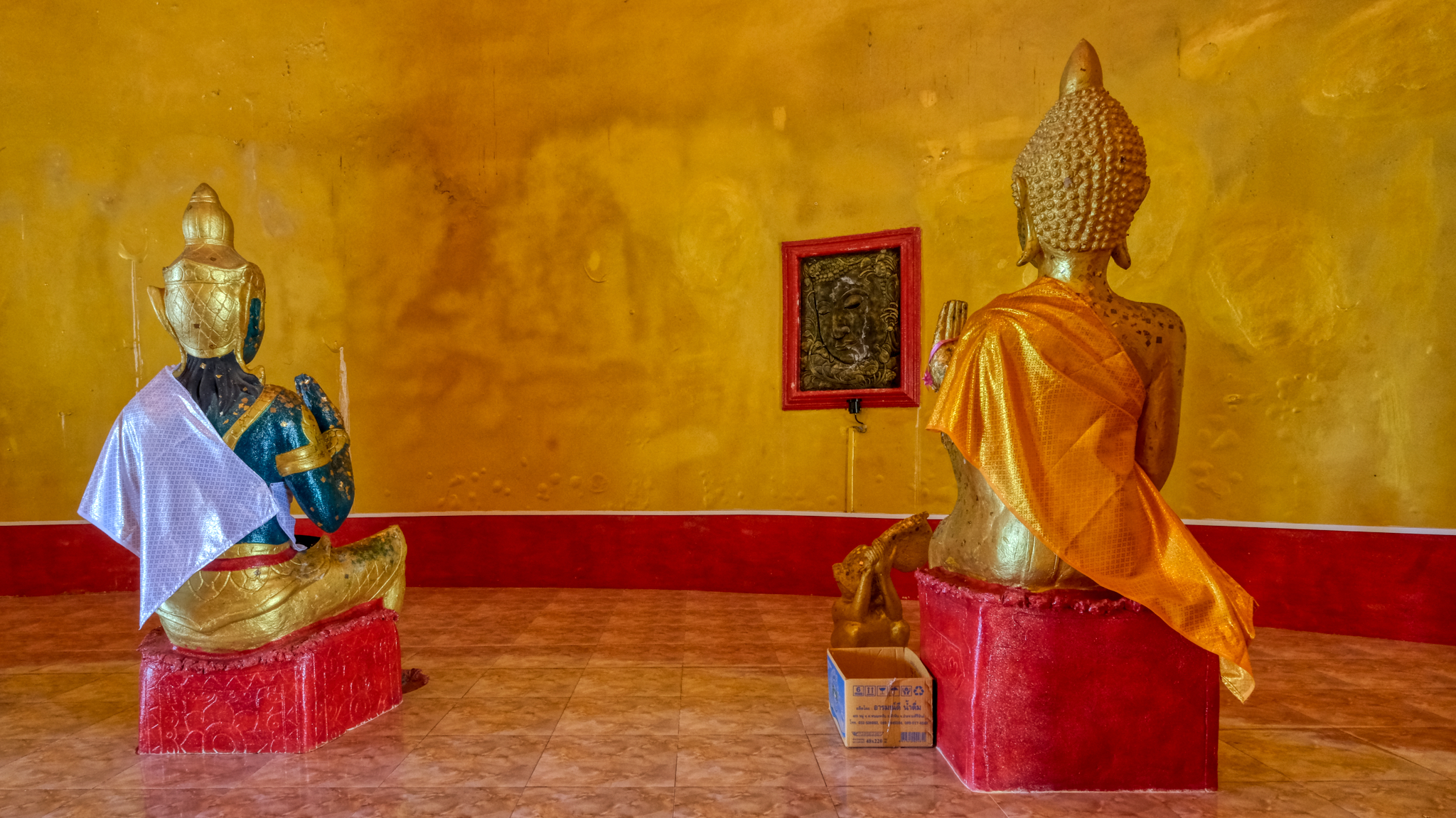 There is something so compelling about these dressed statues.
There is something so compelling about these dressed statues.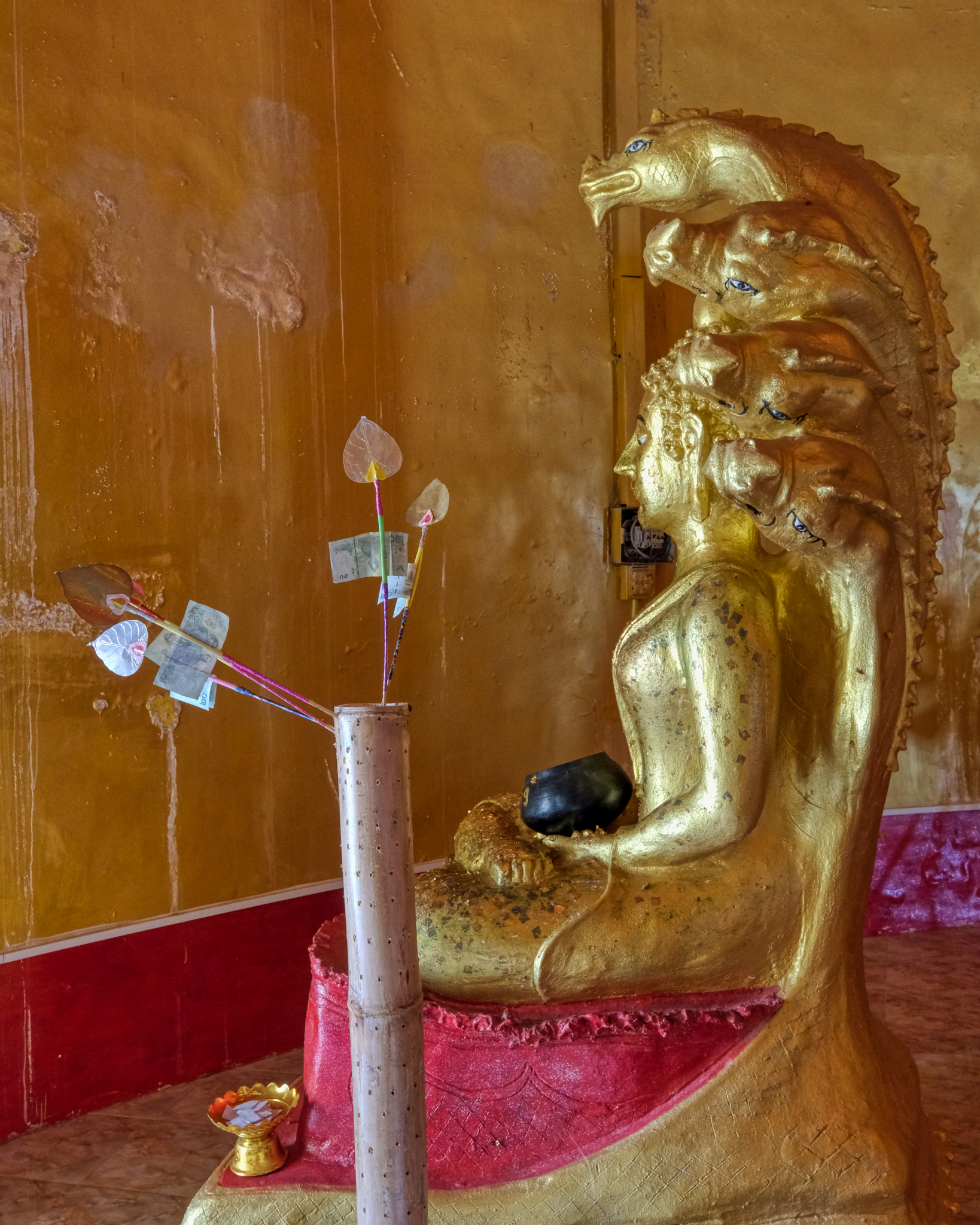 Every few feet . . . another image to never forget . . .
Every few feet . . . another image to never forget . . .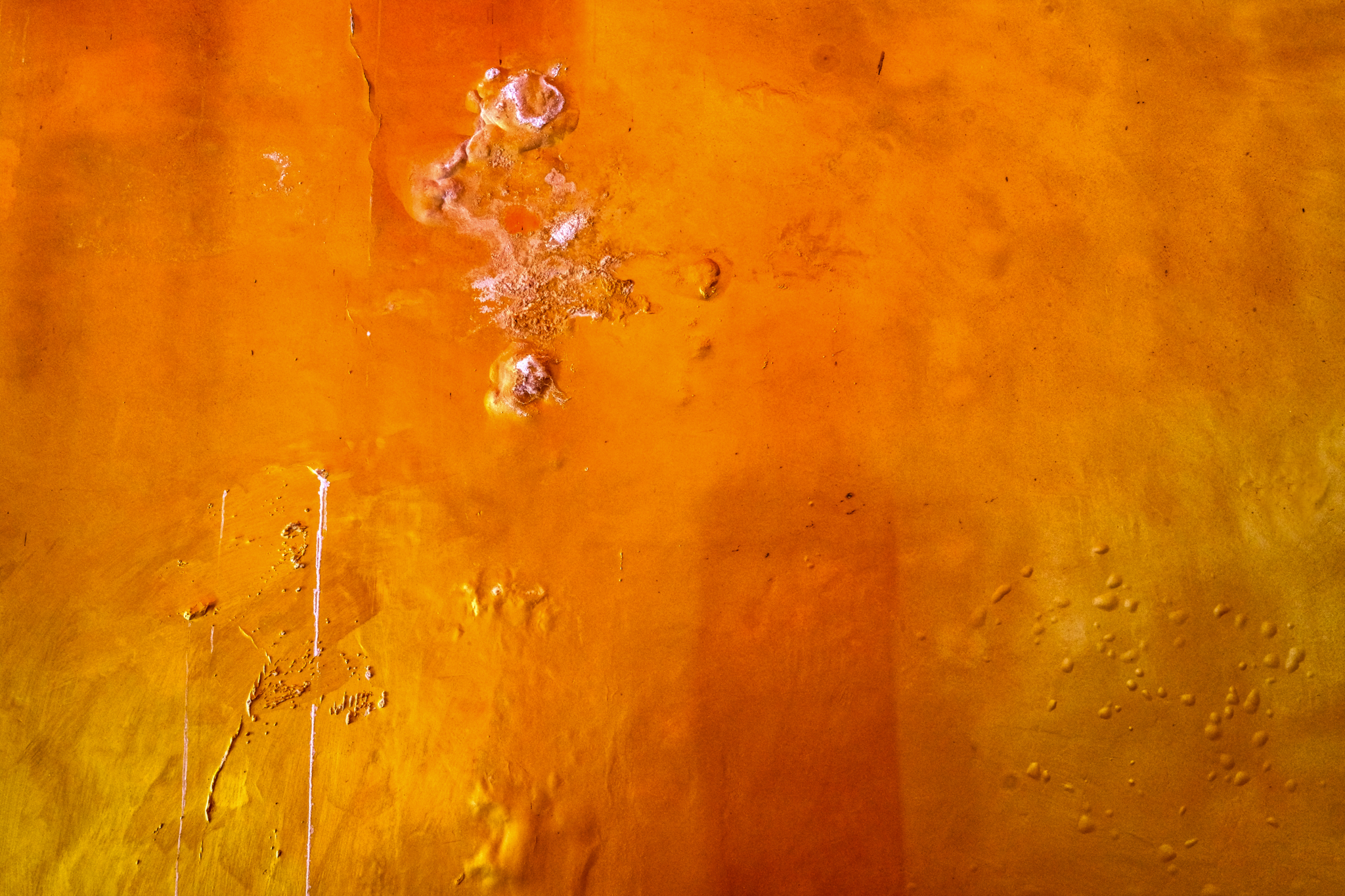 The walls themselves were a thing of wonder.
The walls themselves were a thing of wonder.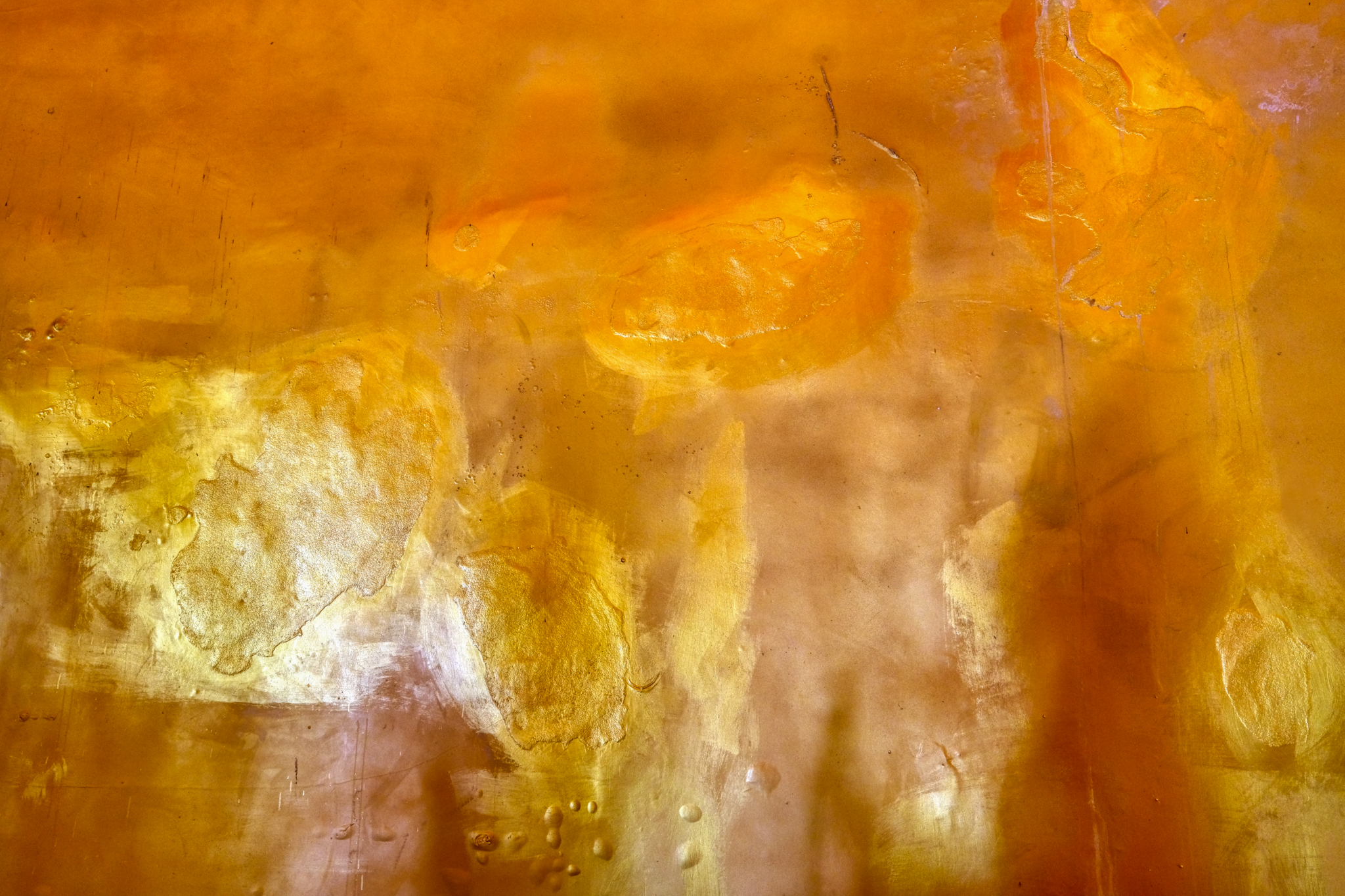 I am very nearly moved to tears by these walls . . . the color, the play of light, the human touch, the honesty.
I am very nearly moved to tears by these walls . . . the color, the play of light, the human touch, the honesty.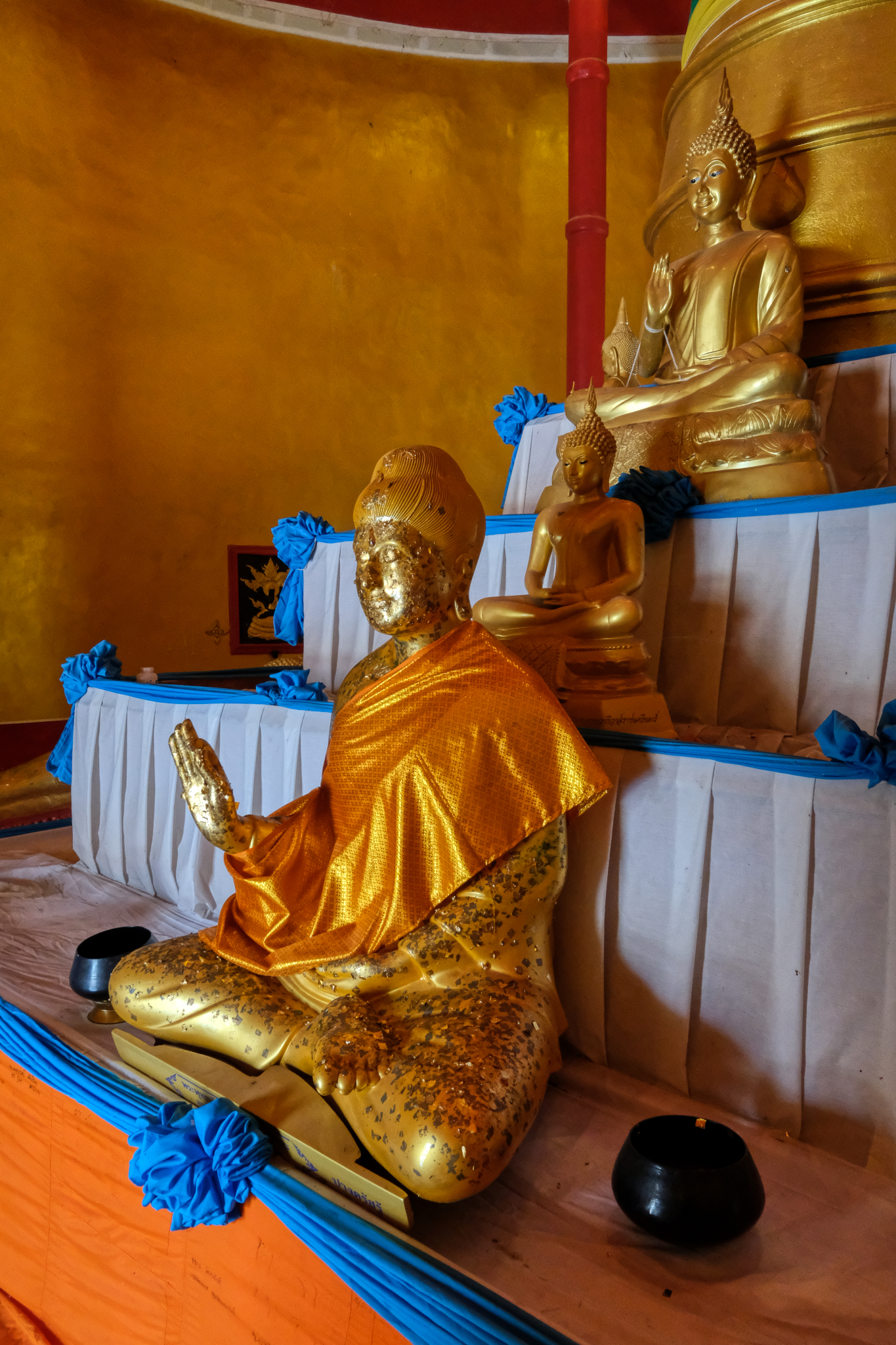 An altar facing an opposite door and sunlight.
An altar facing an opposite door and sunlight.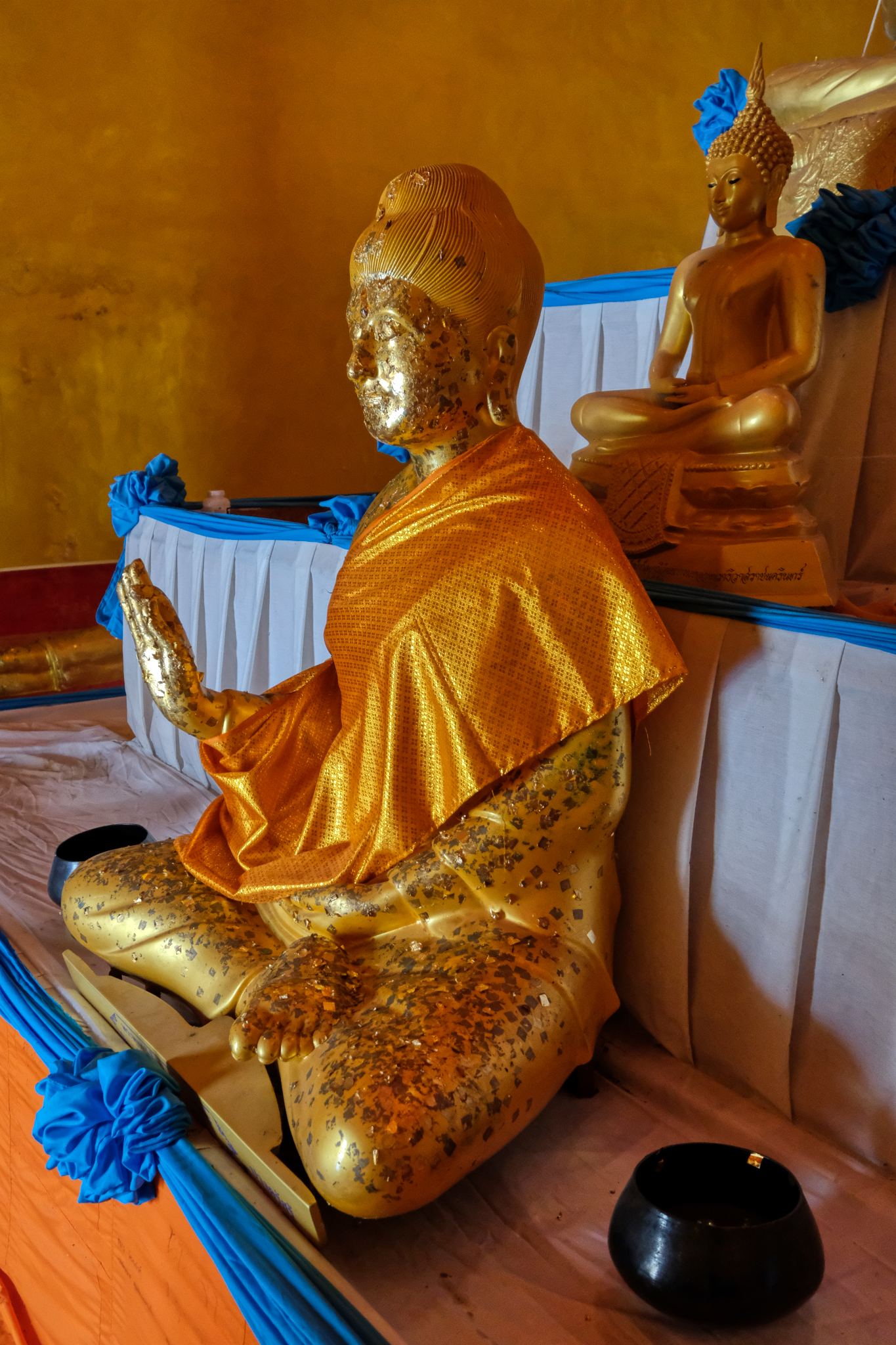 This Buddha statue in the Fearlessness (Abhāya mudrā) pose.
This Buddha statue in the Fearlessness (Abhāya mudrā) pose.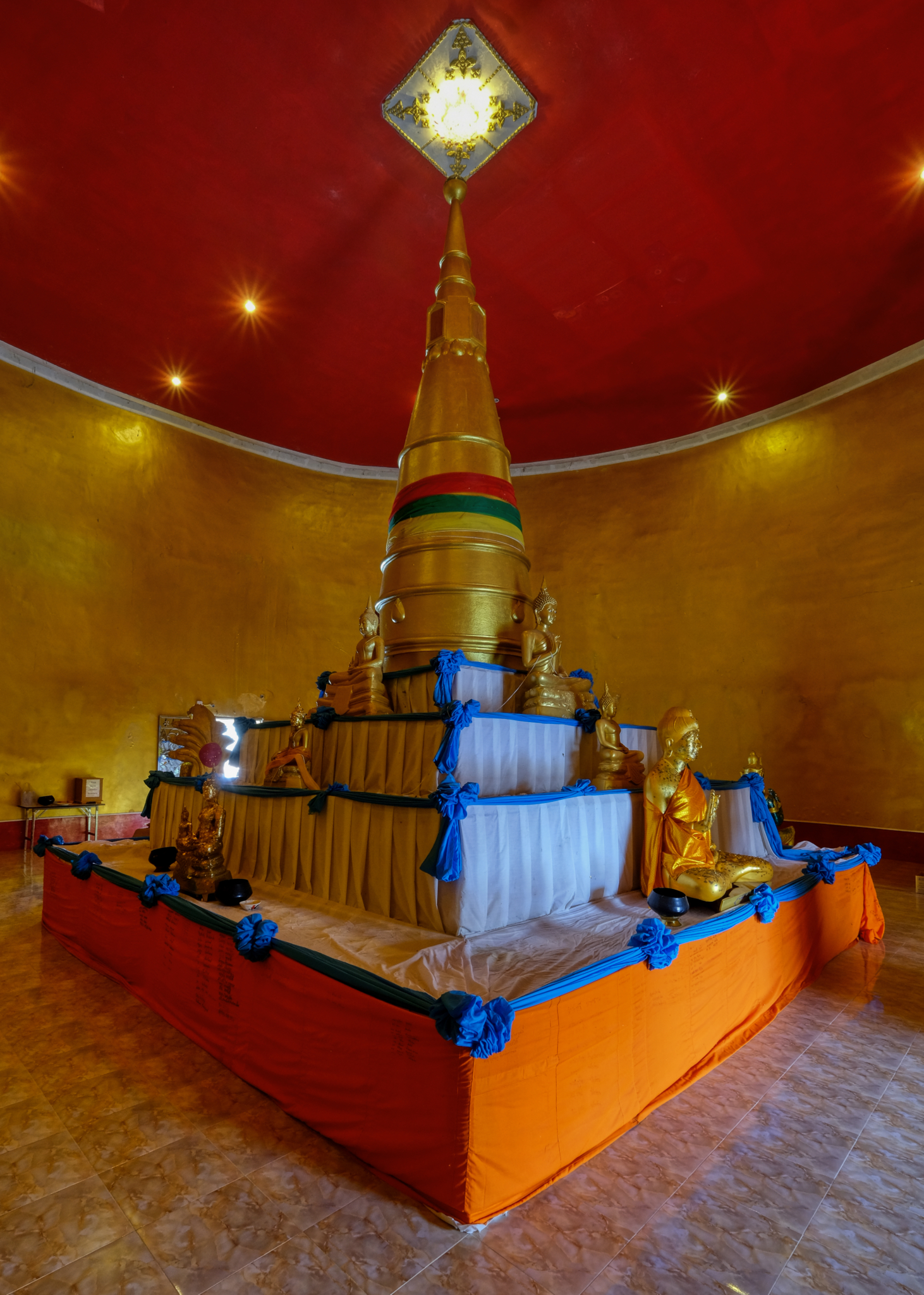 The chedi within the larger chedi.
The chedi within the larger chedi.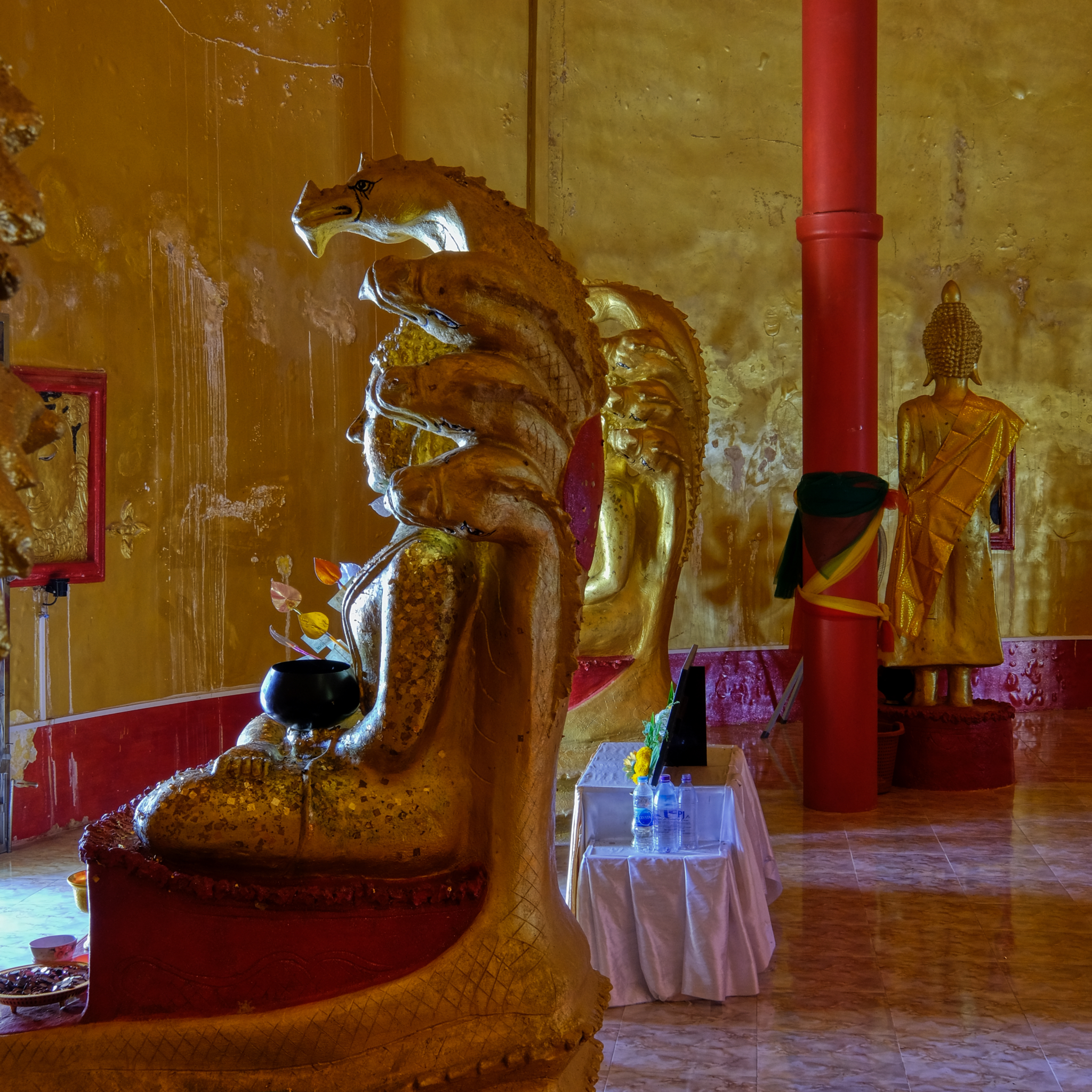 In some locations the light on the figures and on the wall came together in fantastic ways!
In some locations the light on the figures and on the wall came together in fantastic ways!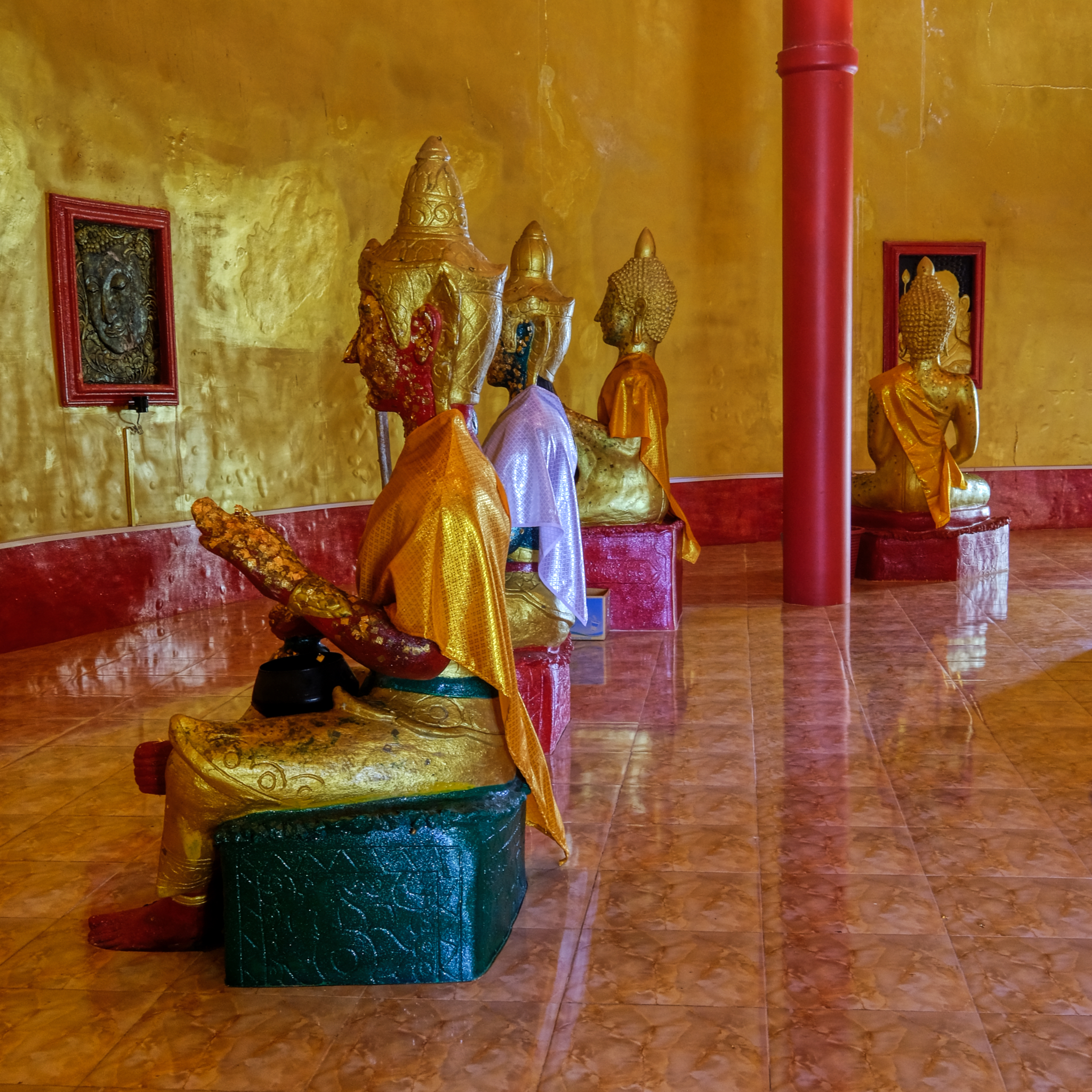 Phenomenal light and color and shapes . . . .
Phenomenal light and color and shapes . . . .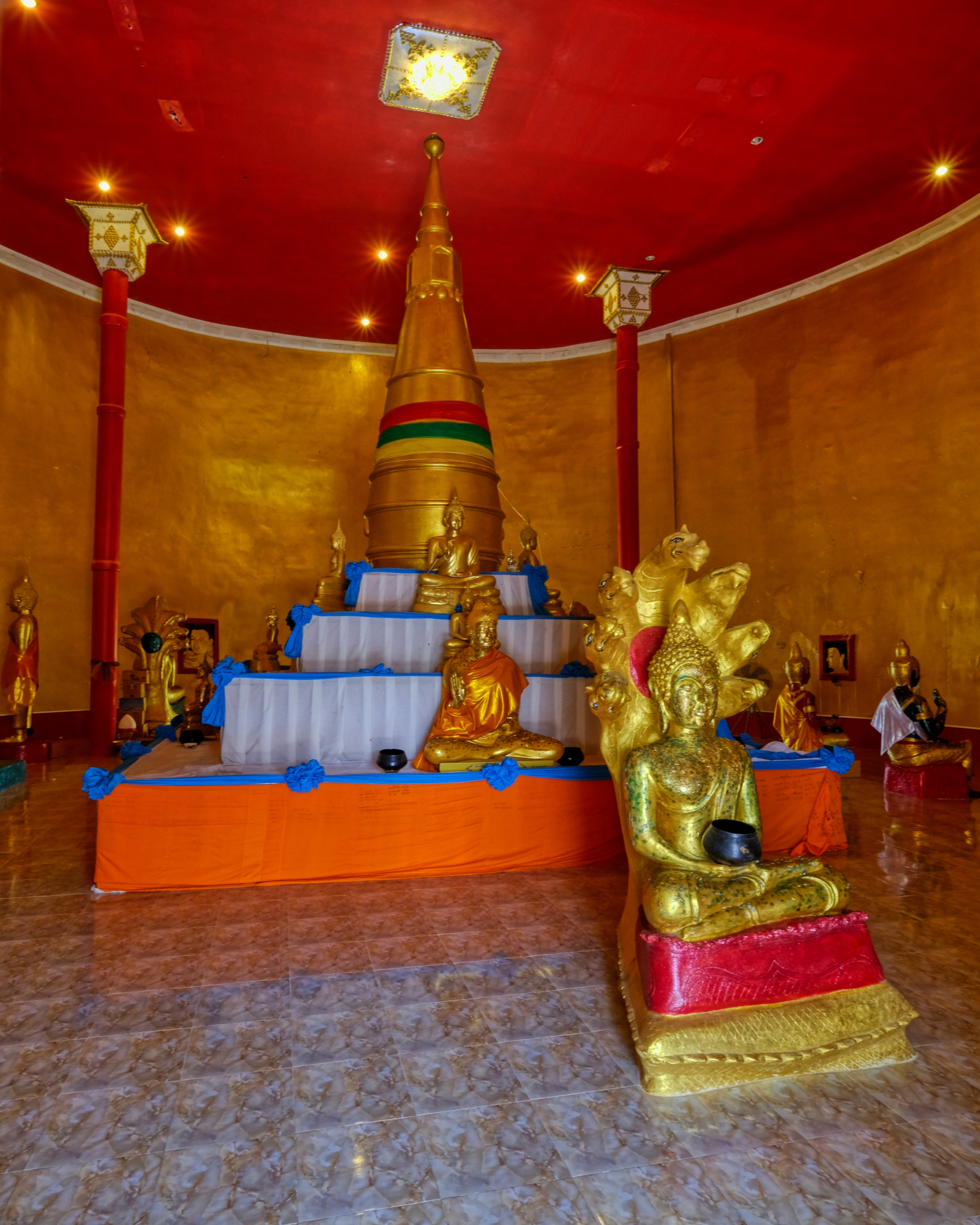 Although the Buddha figures seem sparse in this photo it seemed FULL of them.
Although the Buddha figures seem sparse in this photo it seemed FULL of them.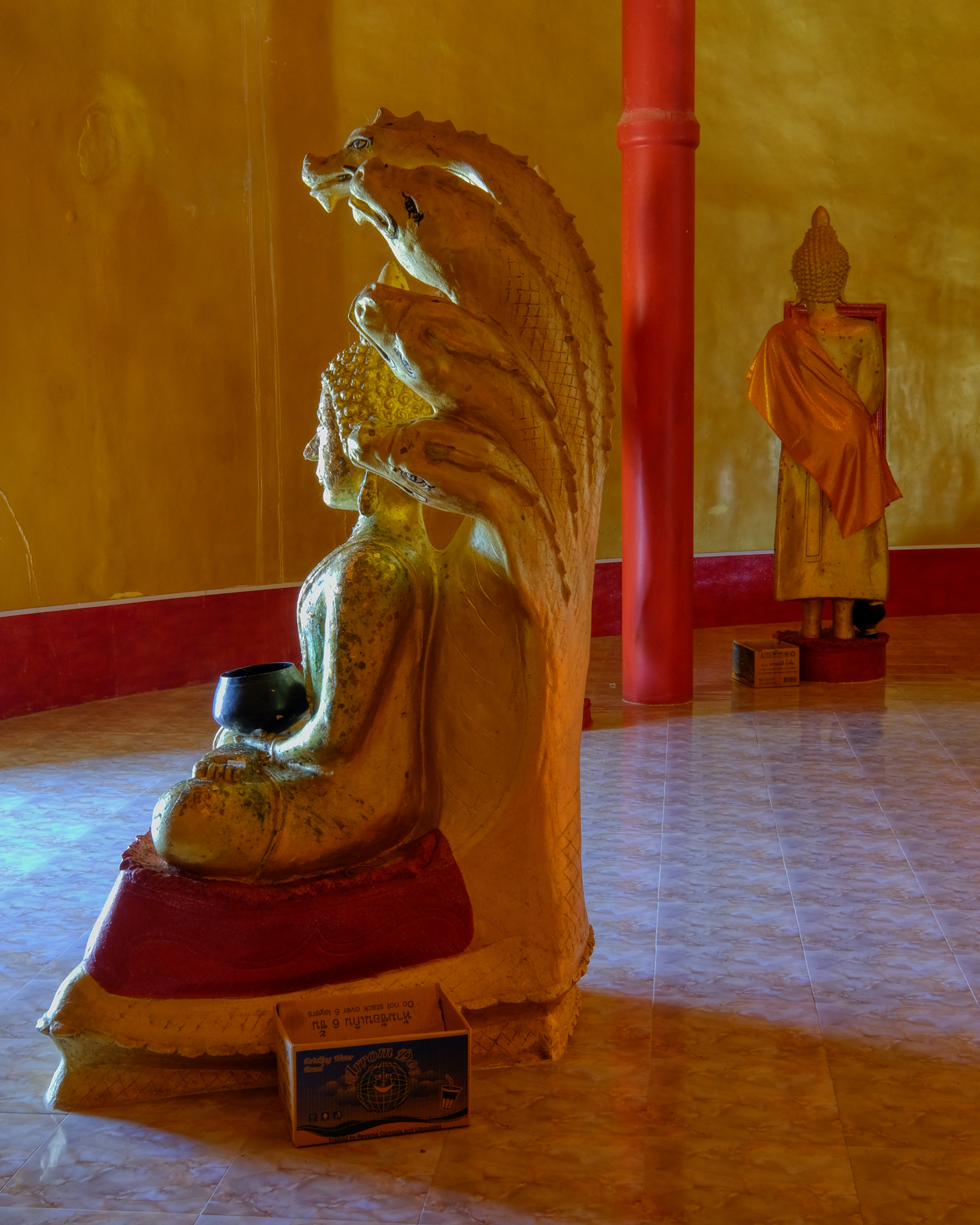 I did not know when to stop taking photos. I took a break and made merit at each Buddha image with gold leaf and reverent wais.
I did not know when to stop taking photos. I took a break and made merit at each Buddha image with gold leaf and reverent wais.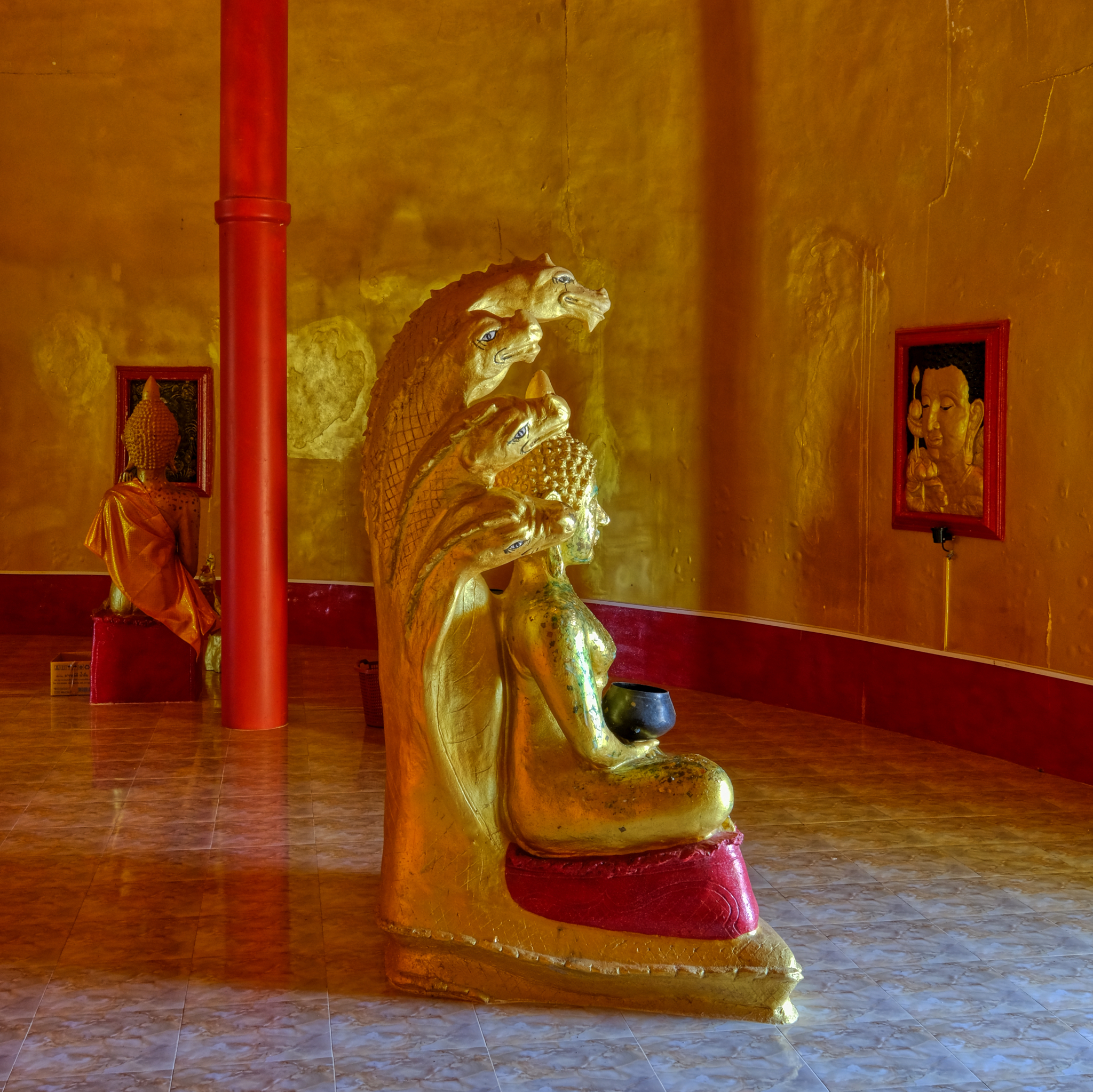 I became aware that as the sun outside brightened and dimmed, so did the lighting effects in the interior. Fantastic!
I became aware that as the sun outside brightened and dimmed, so did the lighting effects in the interior. Fantastic!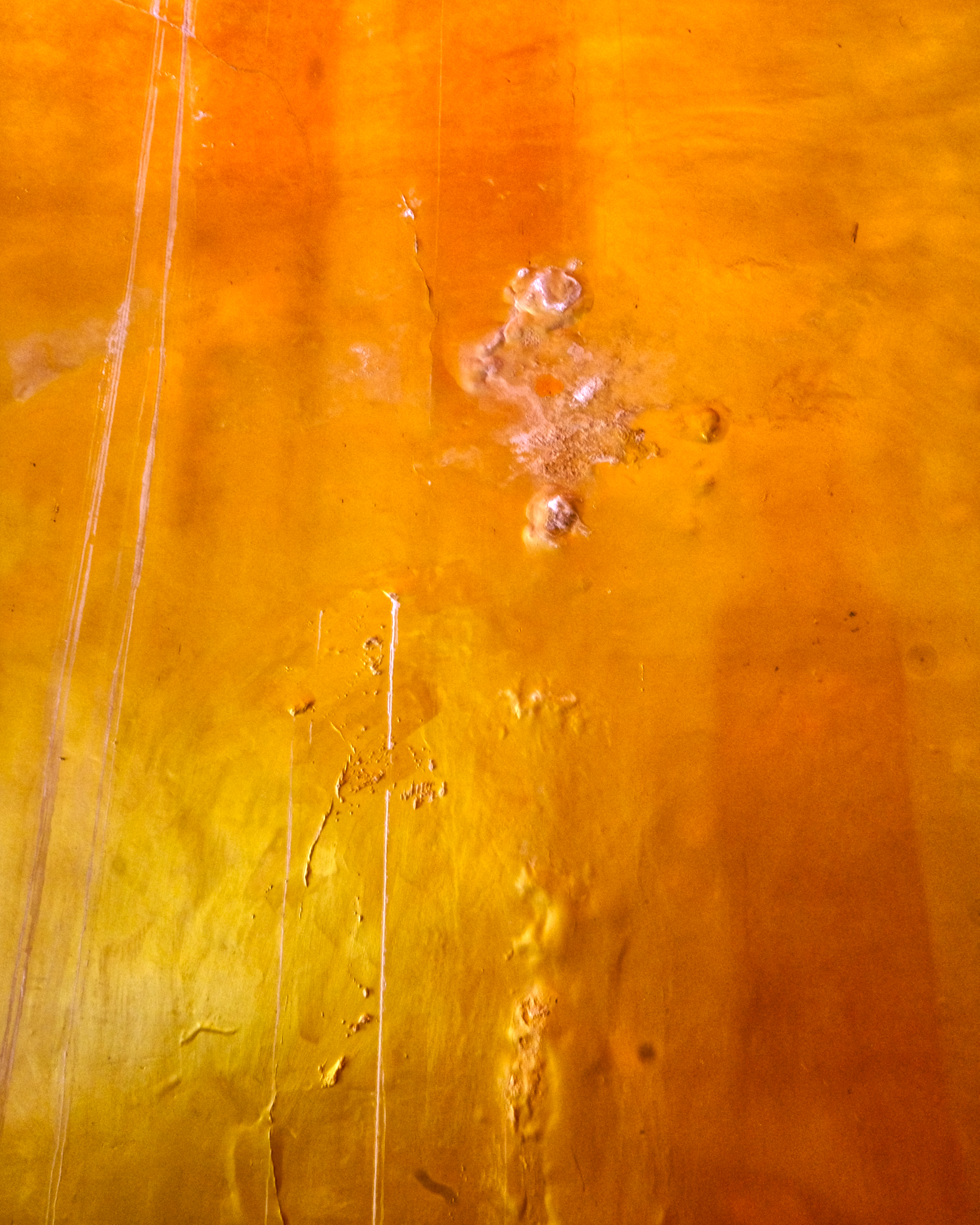 We spent several hours inside this remarkable chedi. So captivated by everything . . . standing staring at the walls in absolute wonder.
We spent several hours inside this remarkable chedi. So captivated by everything . . . standing staring at the walls in absolute wonder.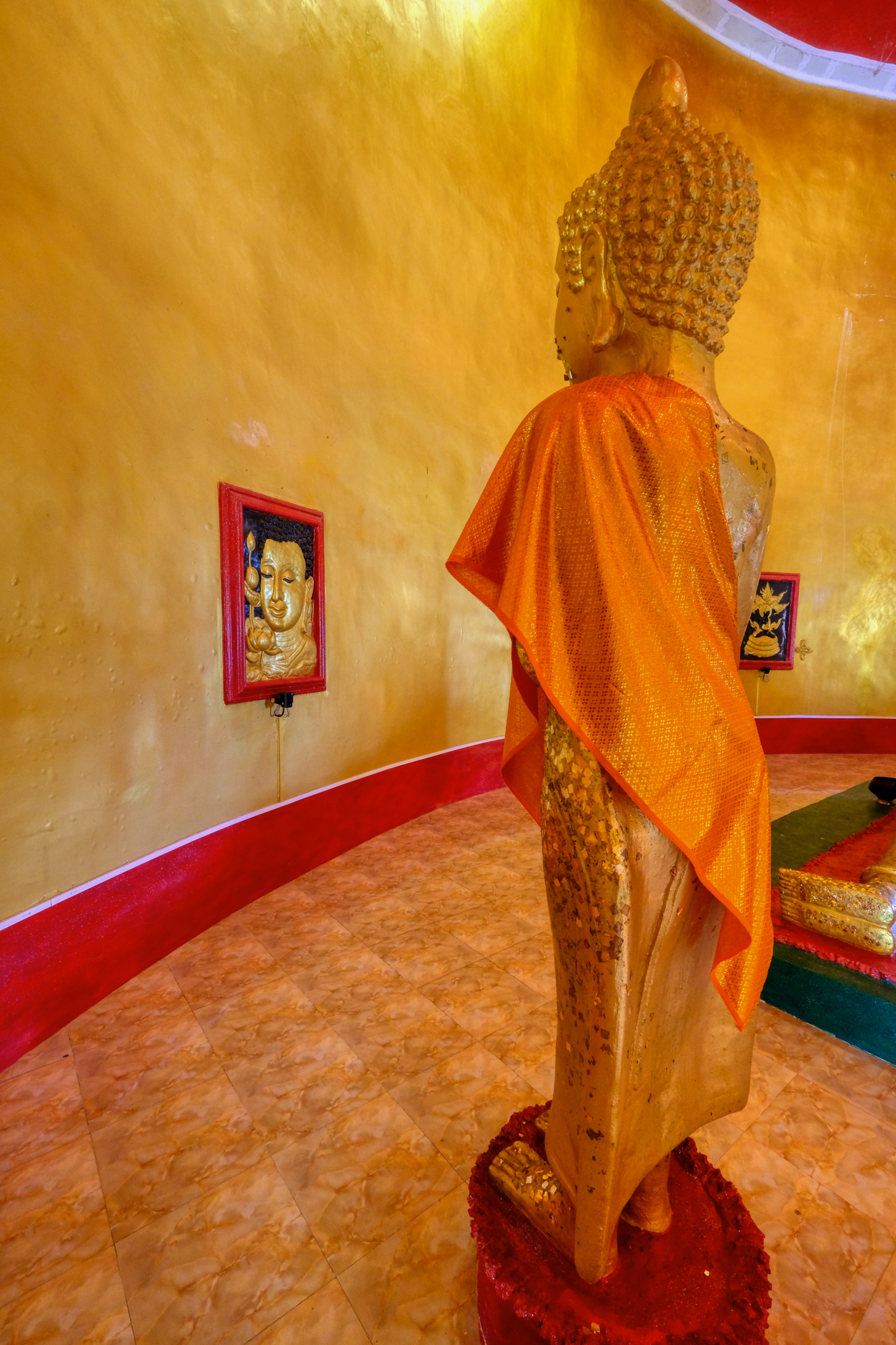 We had to leave . . . reluctantly. We had a whole day ahead of us and many adventures to have.
We had to leave . . . reluctantly. We had a whole day ahead of us and many adventures to have.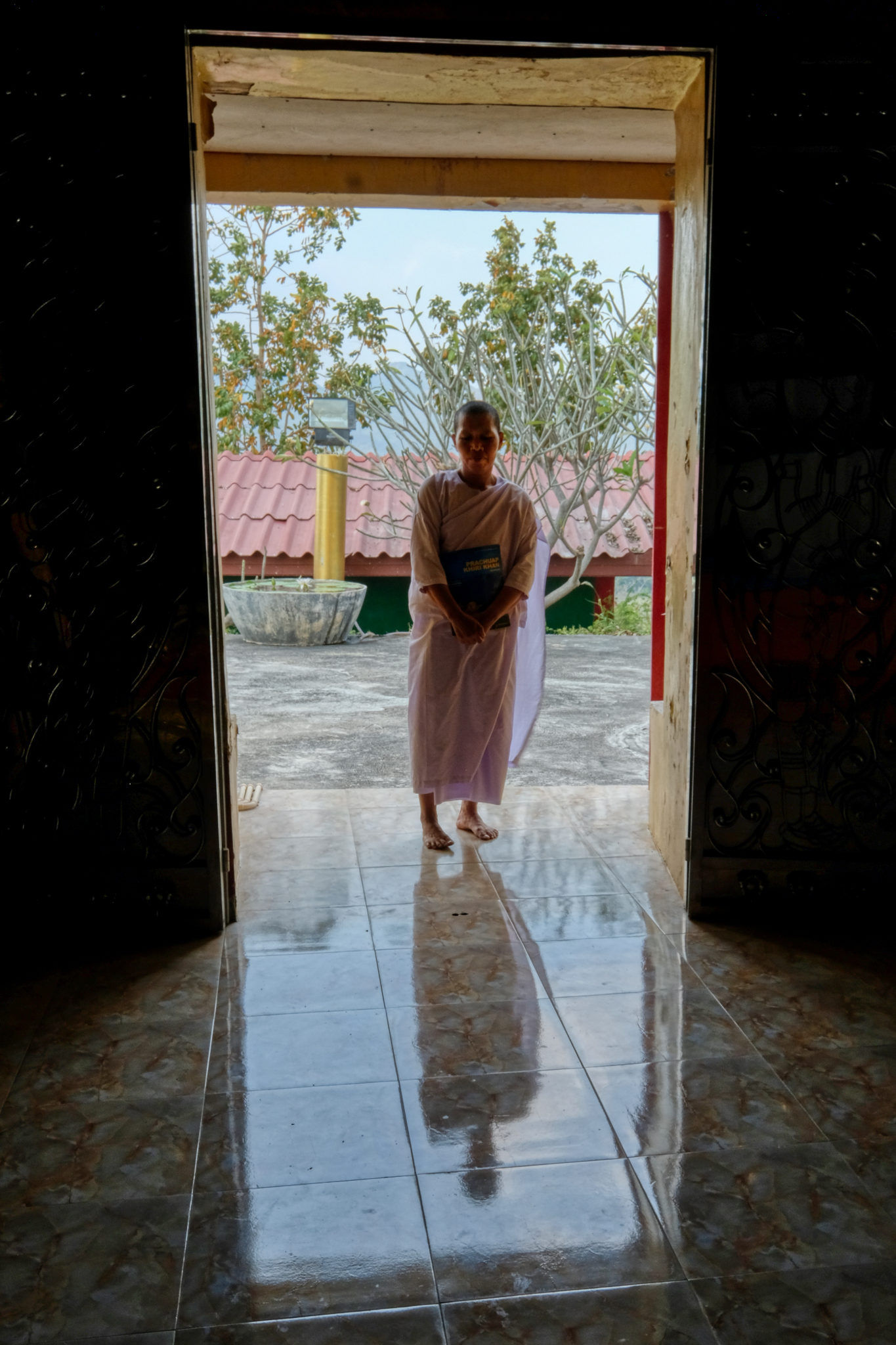 We at last left the chedi to the nun to have on her own in solitude.
We at last left the chedi to the nun to have on her own in solitude.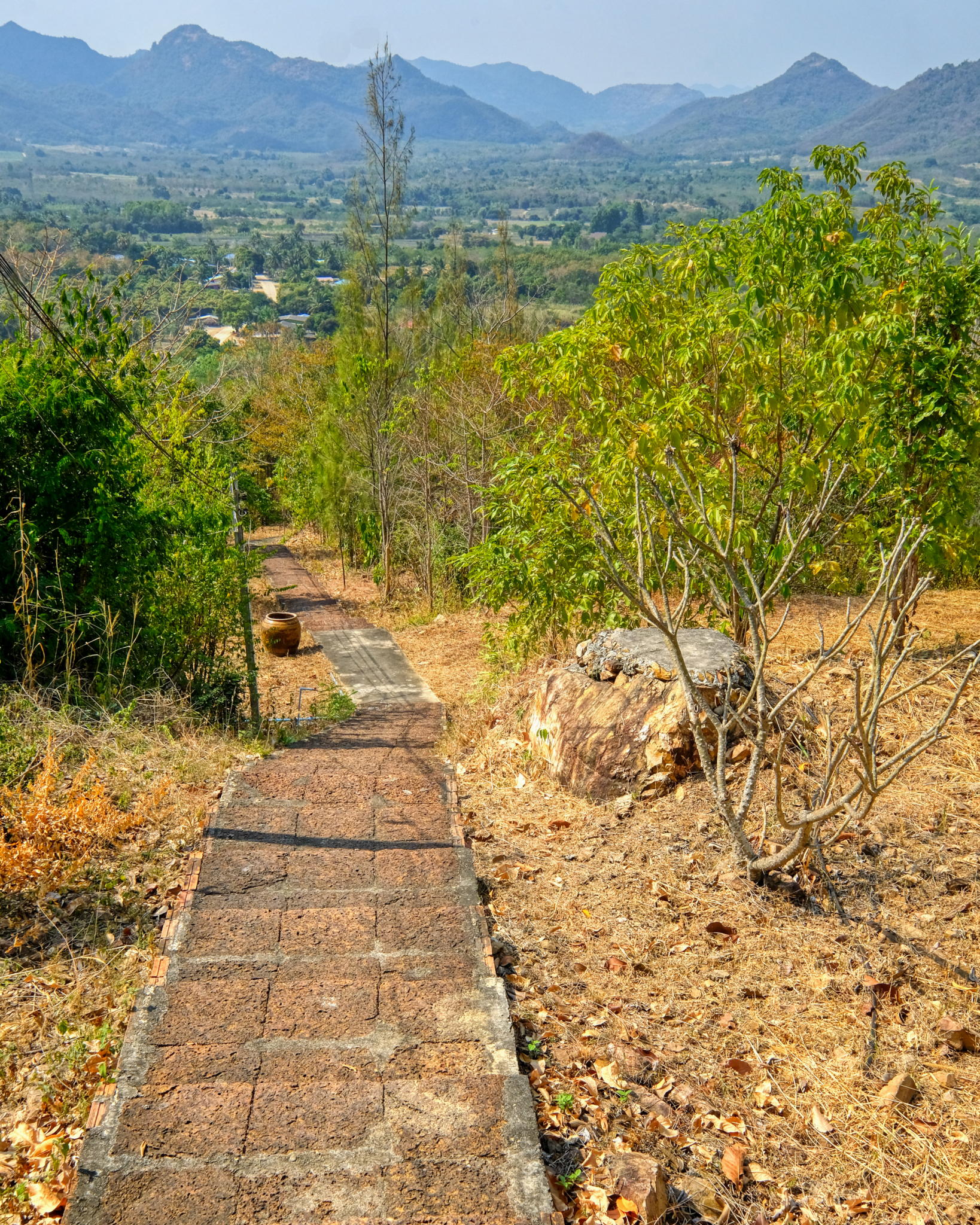 The chedi sits high on a hilltop with a wide view. This is a very rural location west of Hua Hin.
The chedi sits high on a hilltop with a wide view. This is a very rural location west of Hua Hin.Samut Songkhran & Amphawa Village - A Good Day Out and About in Thailand
 Sunday, May 26, 2019 at 2:16PM
Sunday, May 26, 2019 at 2:16PM 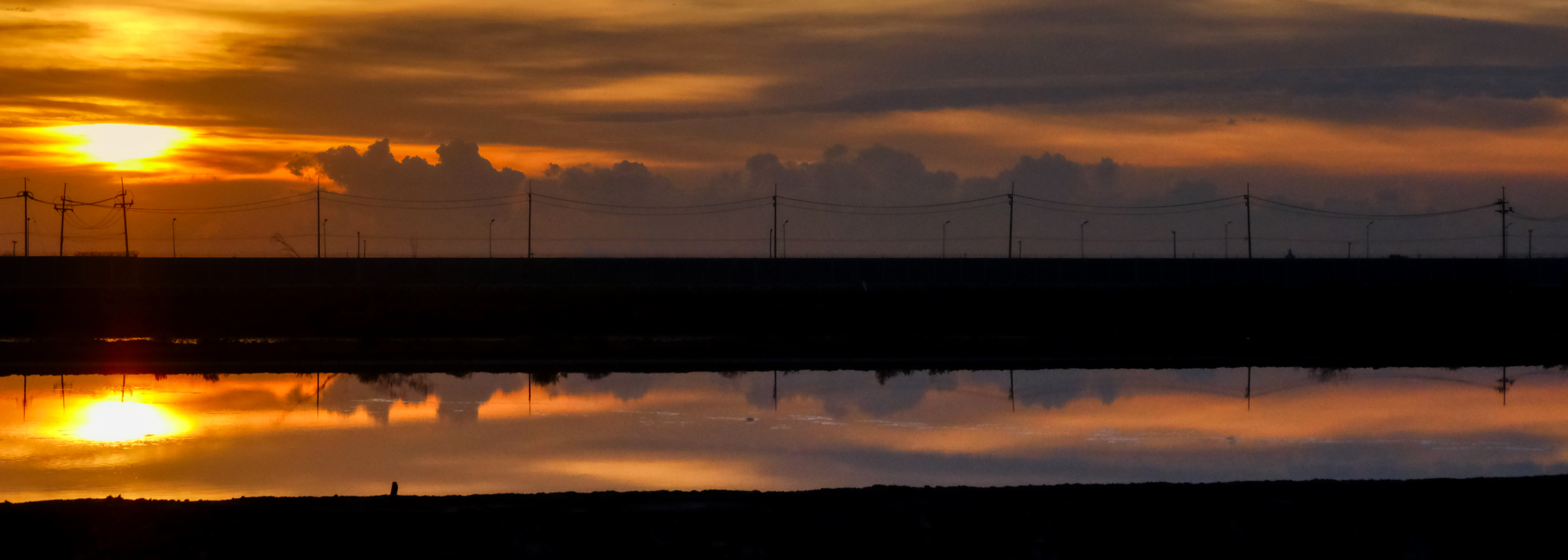 Up and out the door at 4:30am to catch the sun rise over the salt pans of Samut Songkhran with a couple of buddies . . . and for a day of photography.
Up and out the door at 4:30am to catch the sun rise over the salt pans of Samut Songkhran with a couple of buddies . . . and for a day of photography.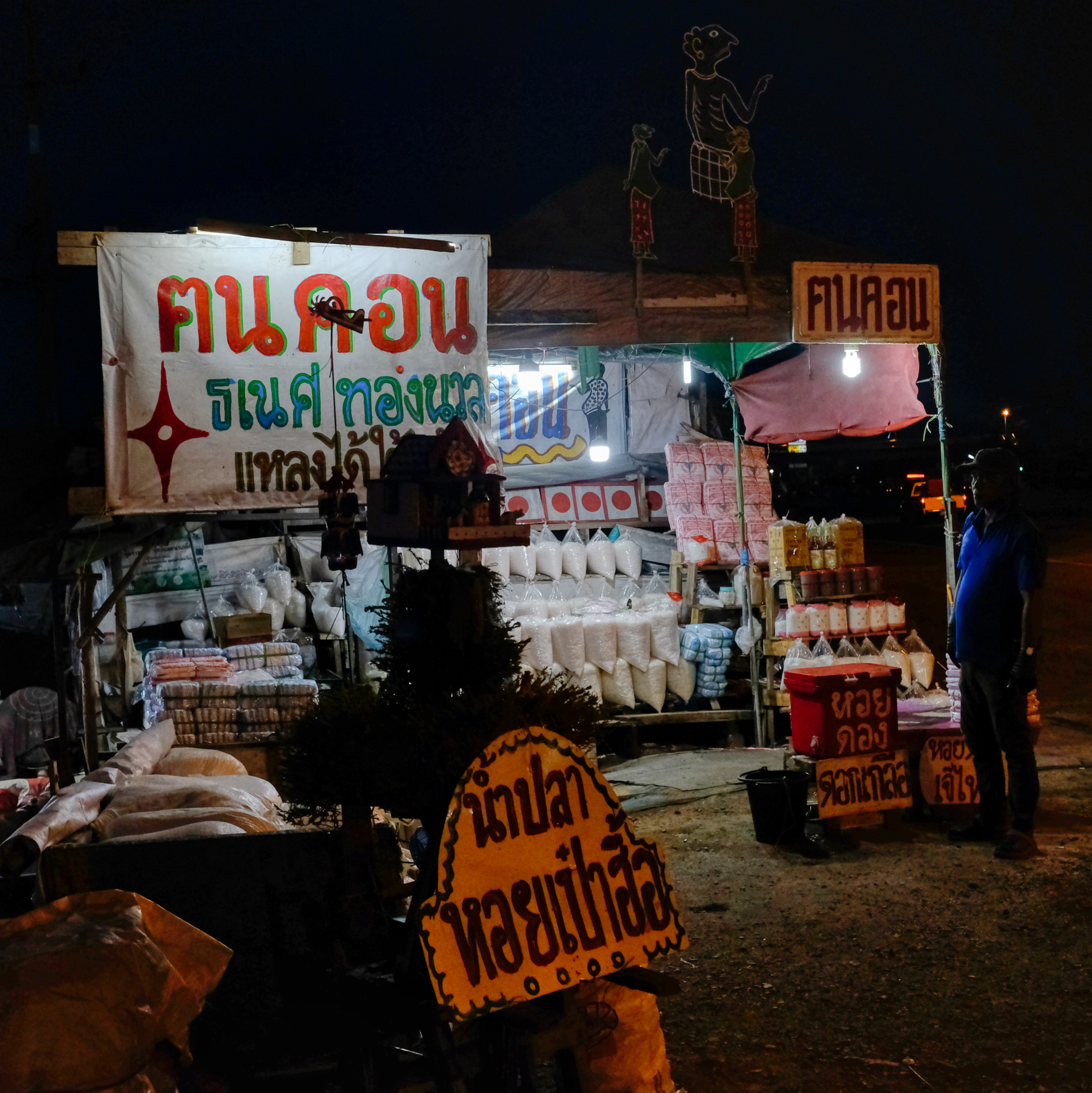 Roadside salt sales before sunset.
Roadside salt sales before sunset.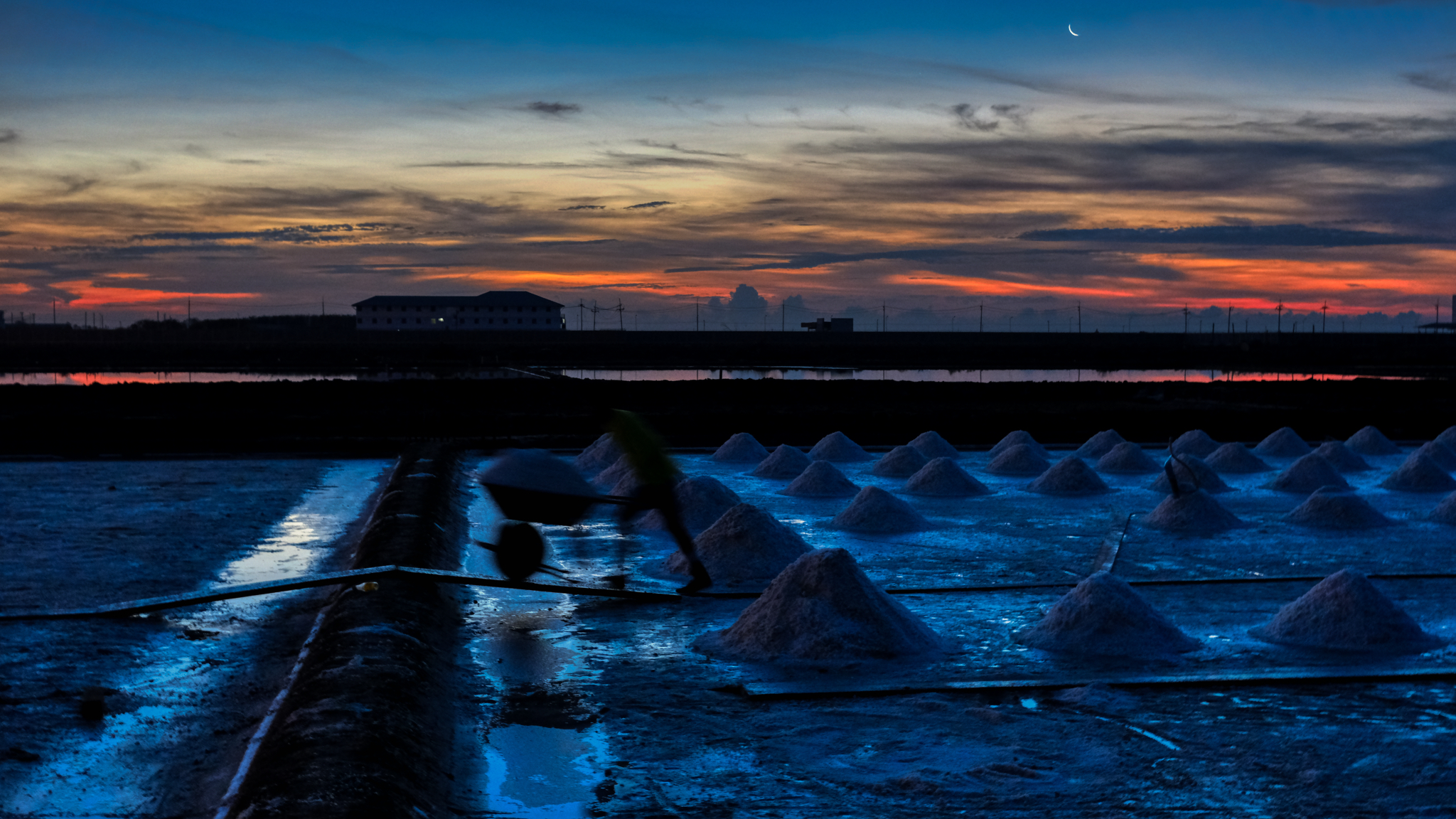 A workman is a blur in first light.
A workman is a blur in first light.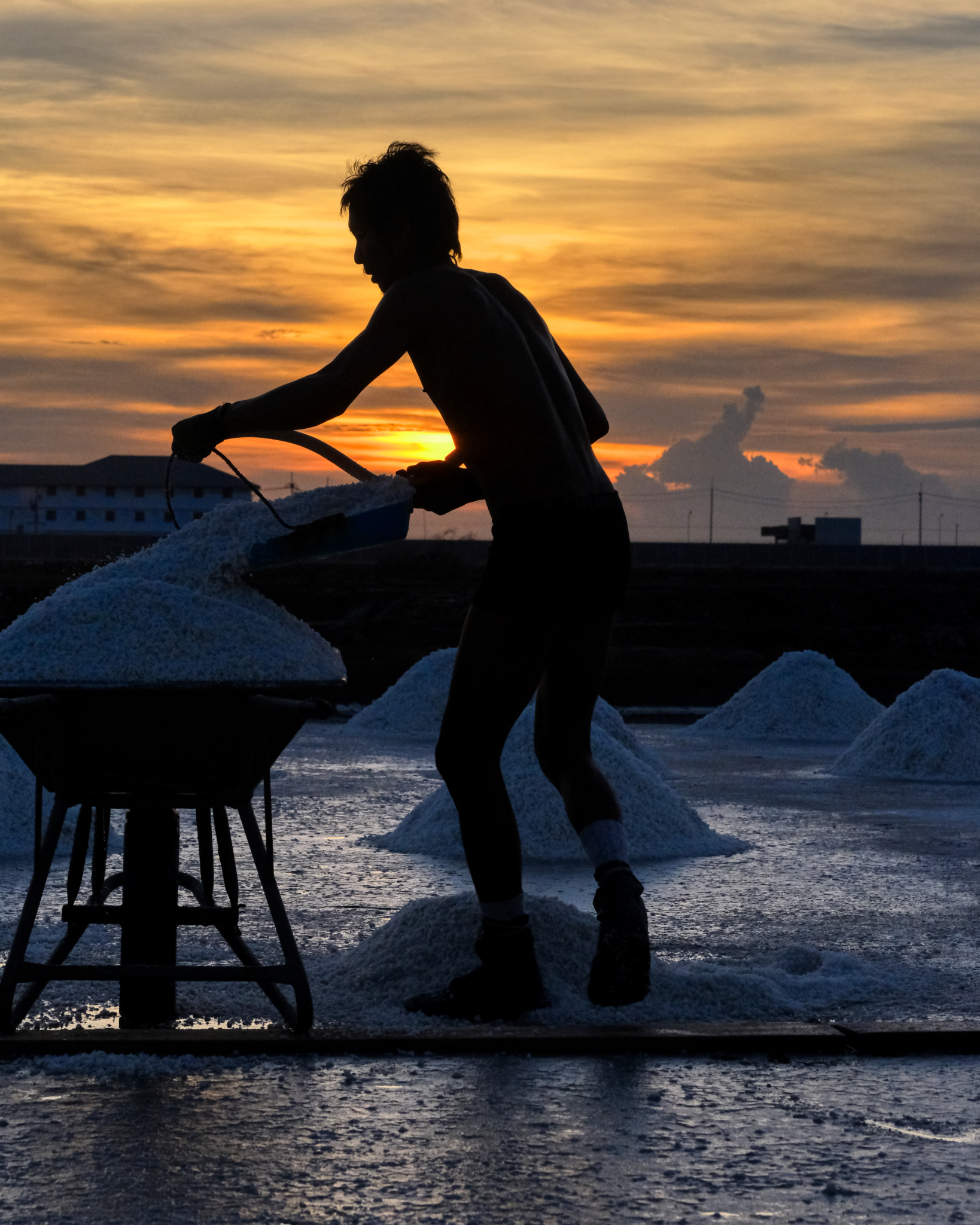 At 5:45am the ambient temperature was already 89f . . with a heat index of 105f!
At 5:45am the ambient temperature was already 89f . . with a heat index of 105f!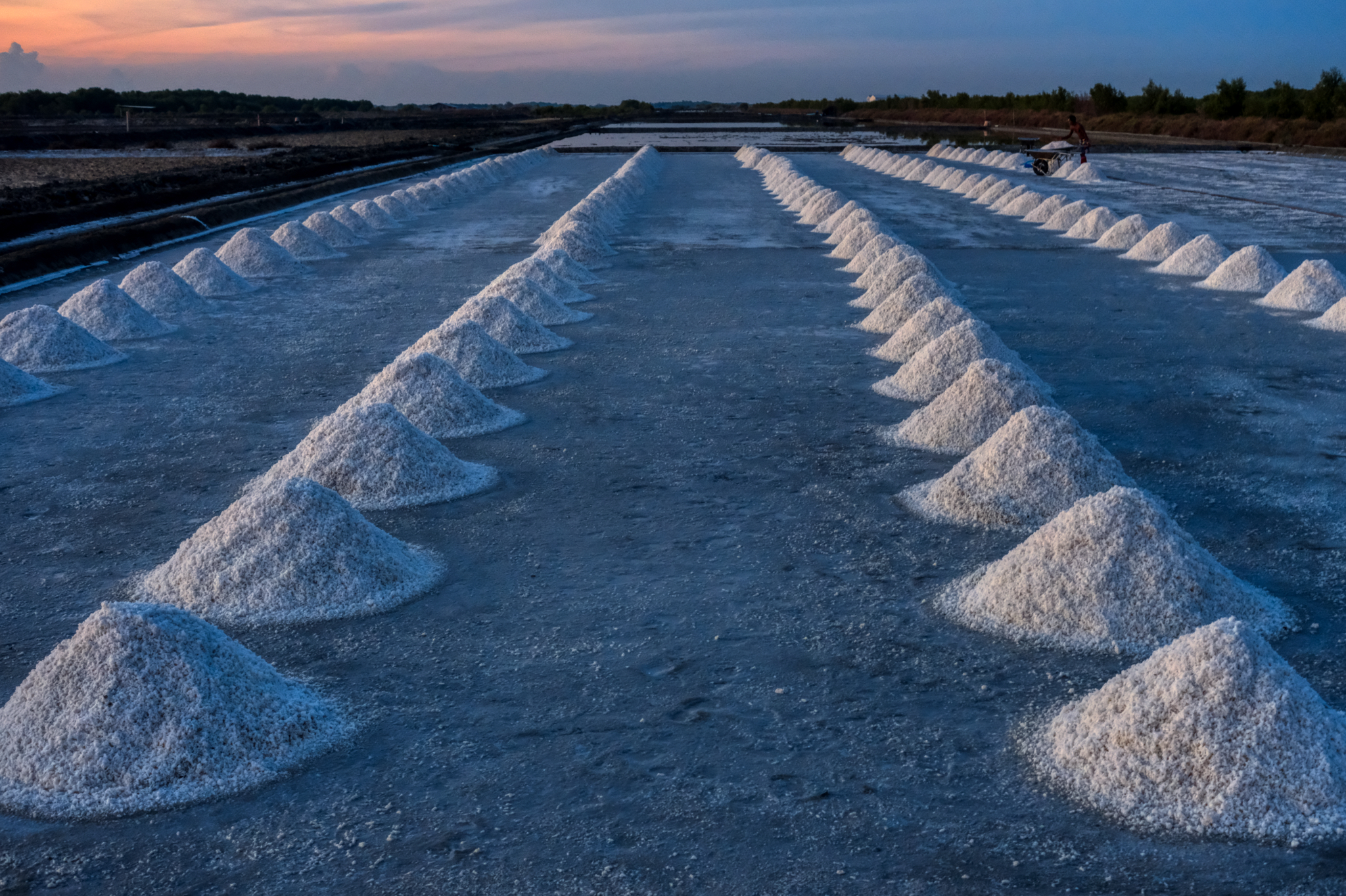 Early morning salt pan. The salt is raked up into cones by one crew, and picked up and hauled by wheelbarrow to a large pile near the highway for transportation.
Early morning salt pan. The salt is raked up into cones by one crew, and picked up and hauled by wheelbarrow to a large pile near the highway for transportation.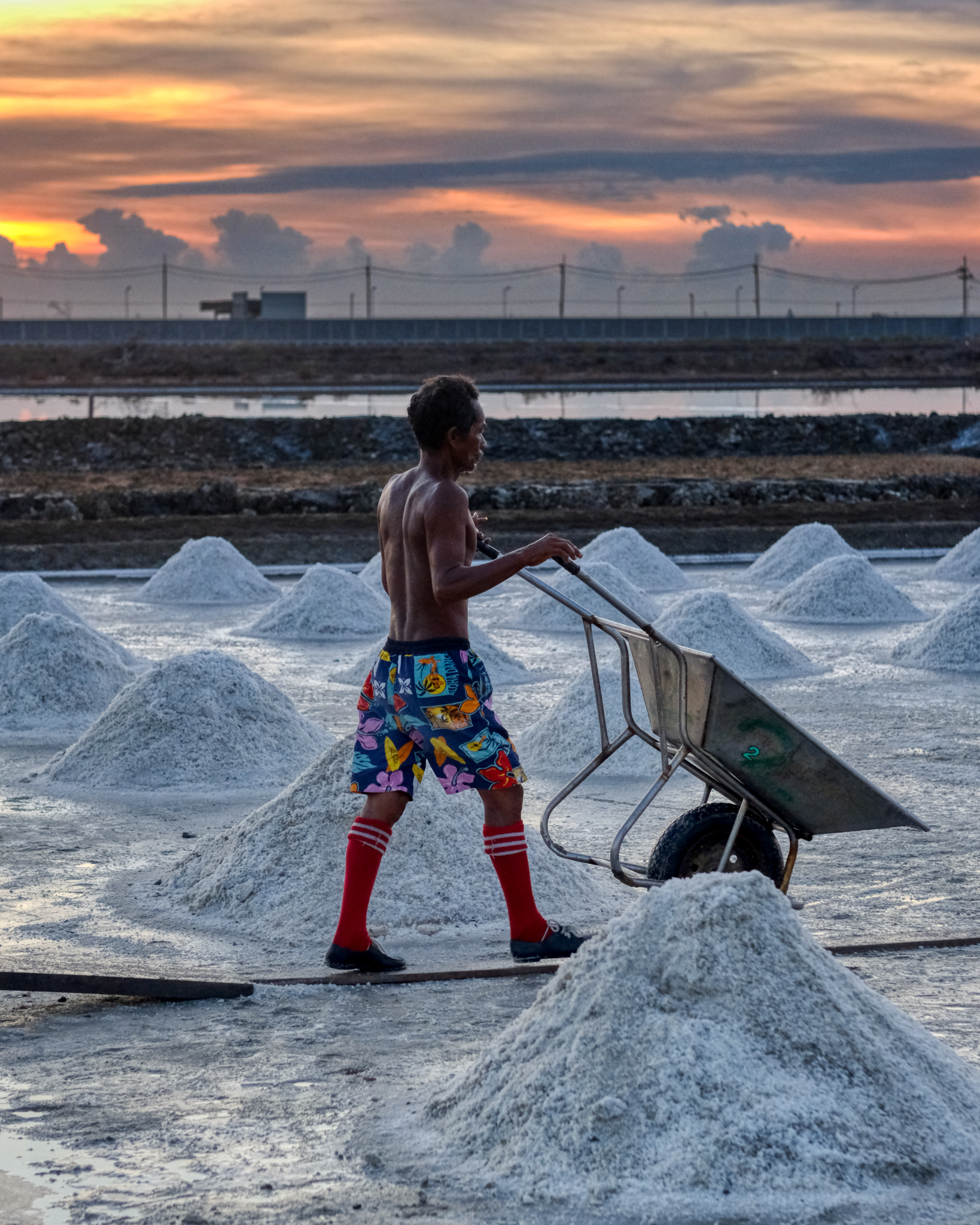 The salt workers were working hard at first light to get as much done before the blistering heat to come.
The salt workers were working hard at first light to get as much done before the blistering heat to come.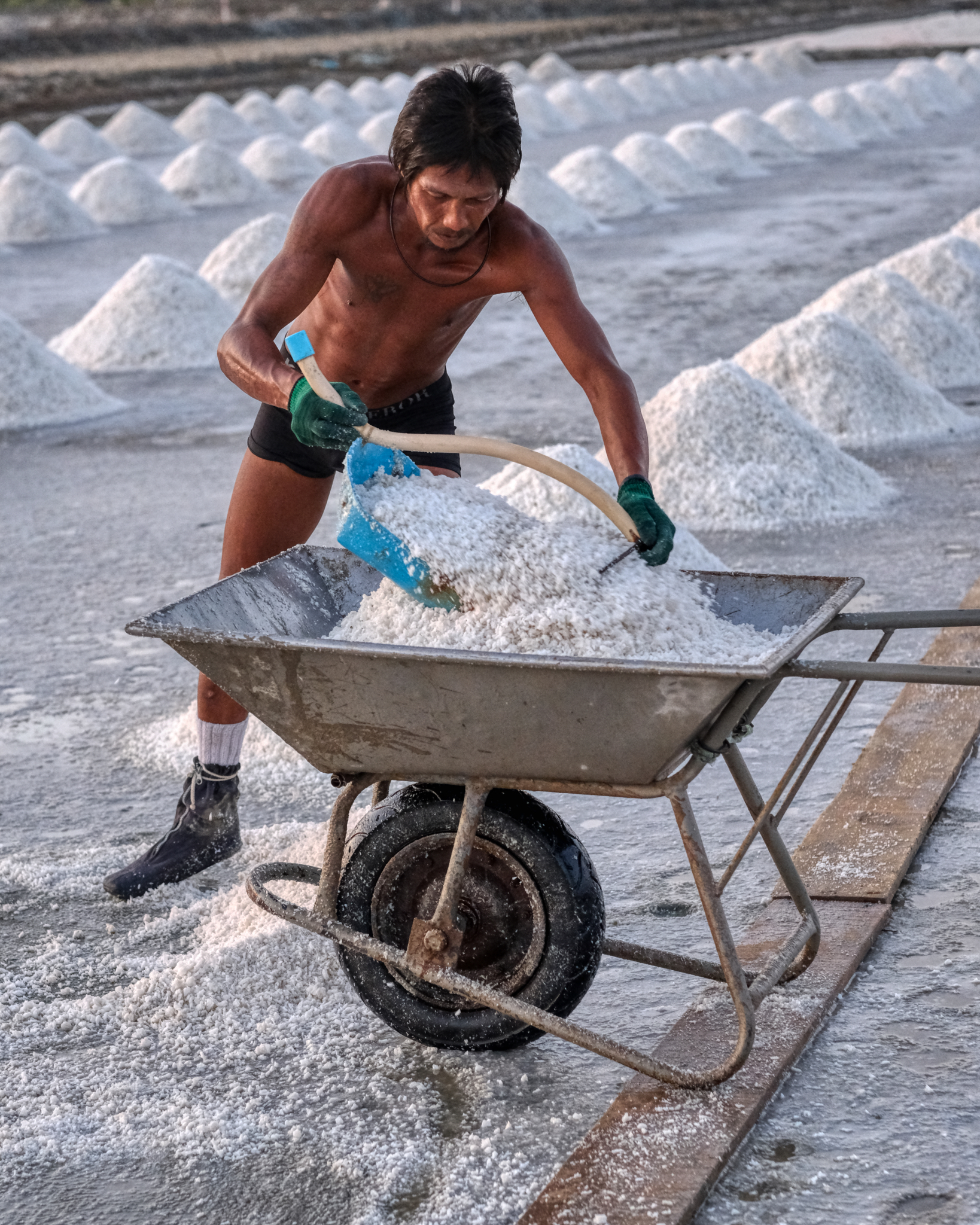 Scooping heavy, damp salt.
Scooping heavy, damp salt.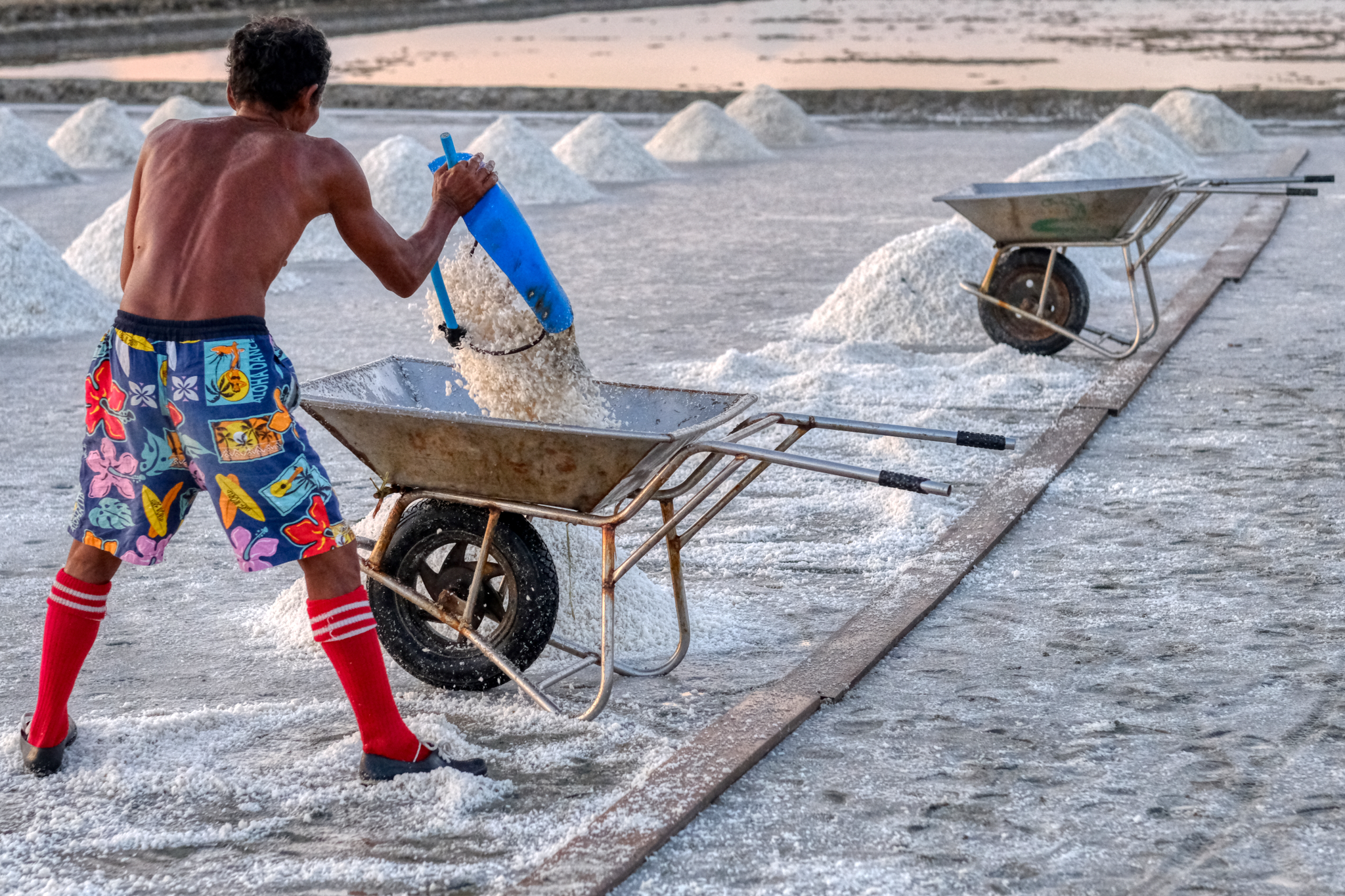 Loading the wheelbarrow for another trip to the highway.
Loading the wheelbarrow for another trip to the highway.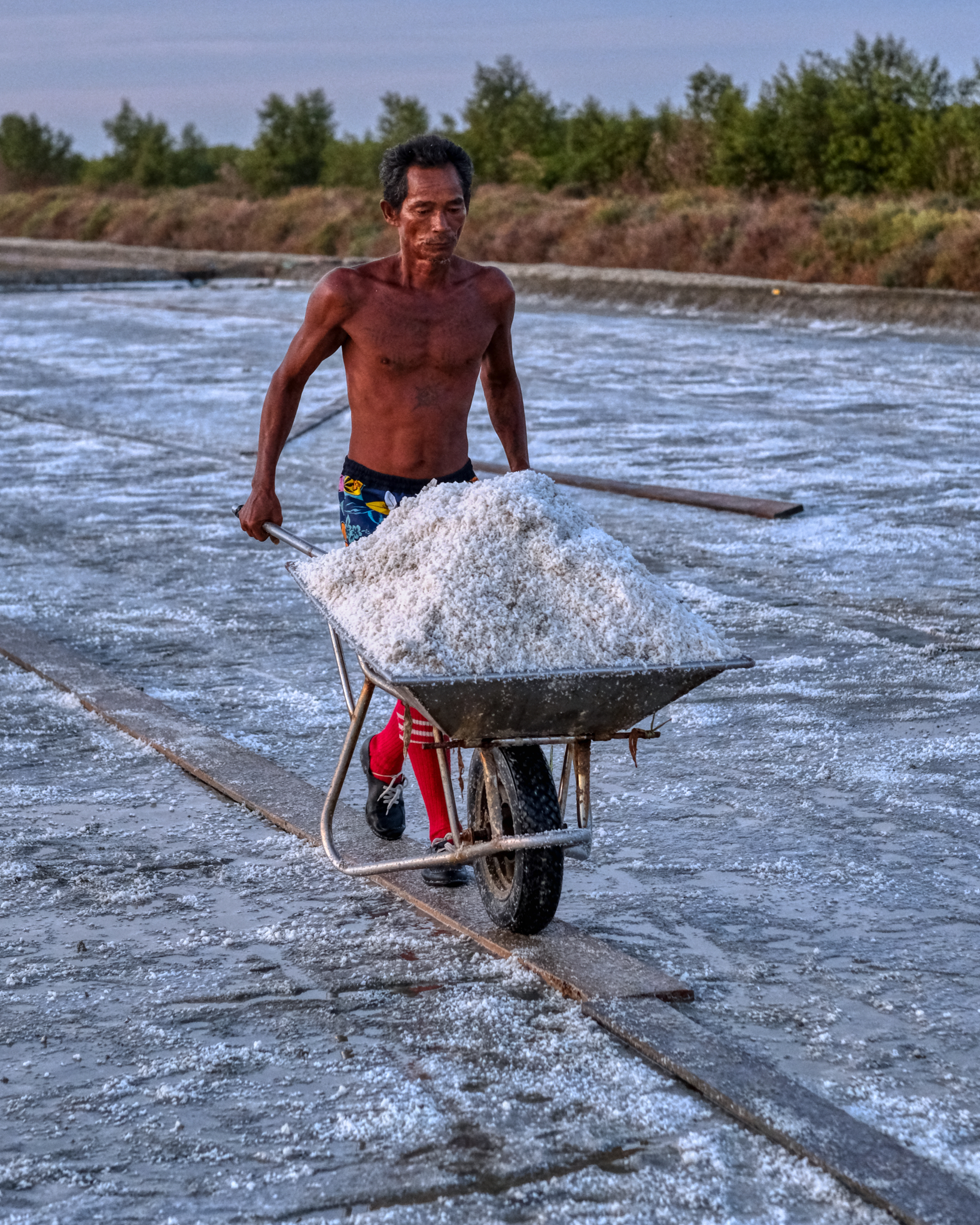 Another load full to wheel out . . .
Another load full to wheel out . . .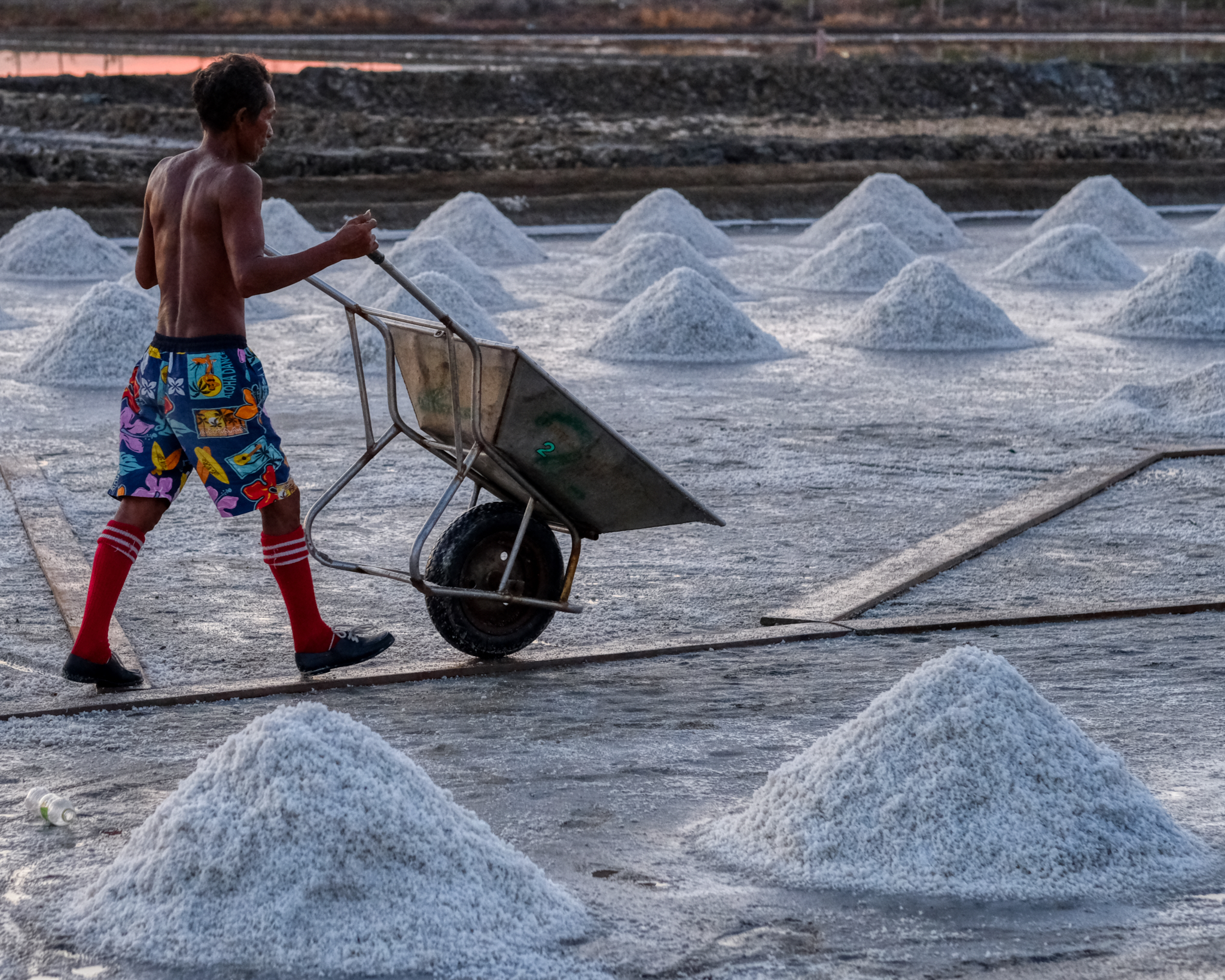 . . . and then back again in an endless loop of scoop, haul, return, scoop . . .
. . . and then back again in an endless loop of scoop, haul, return, scoop . . . Marvelous patterns of salt cones in the morning magic hour light.
Marvelous patterns of salt cones in the morning magic hour light.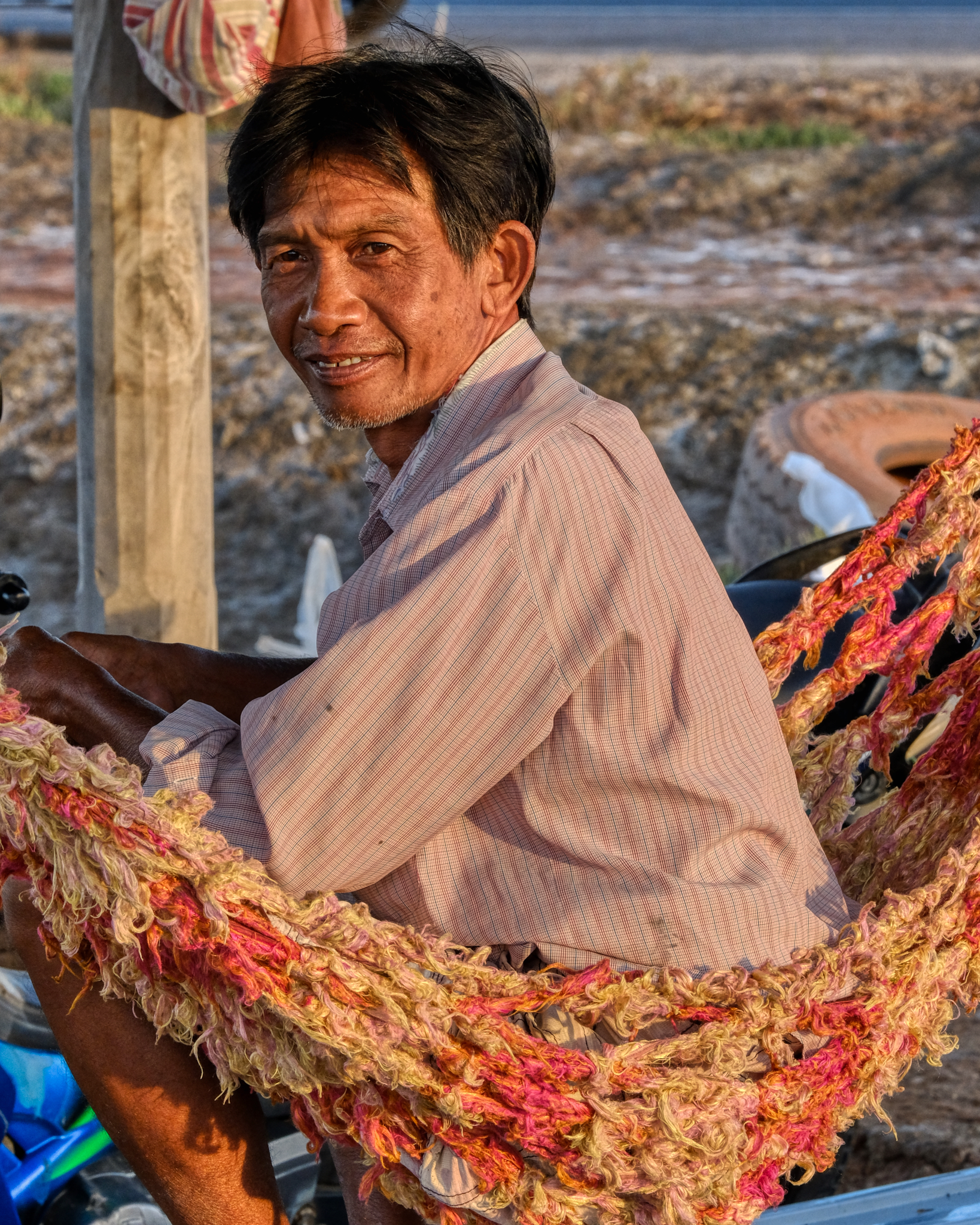 A kindly looking salt worker on a hammock.
A kindly looking salt worker on a hammock.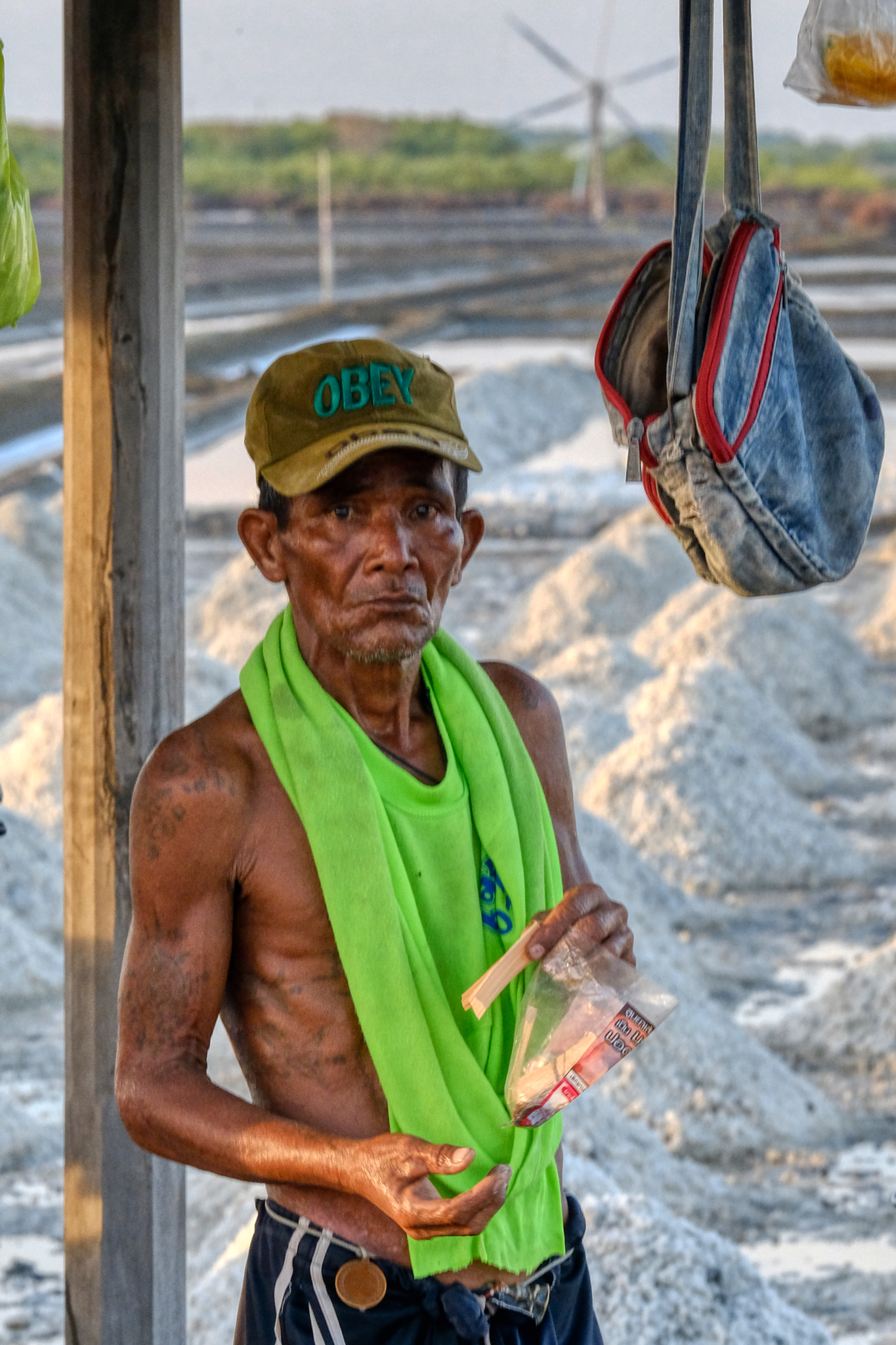 Obey. Indeed.
Obey. Indeed. Meanwhile, in another salt pan down the road . . .
Meanwhile, in another salt pan down the road . . .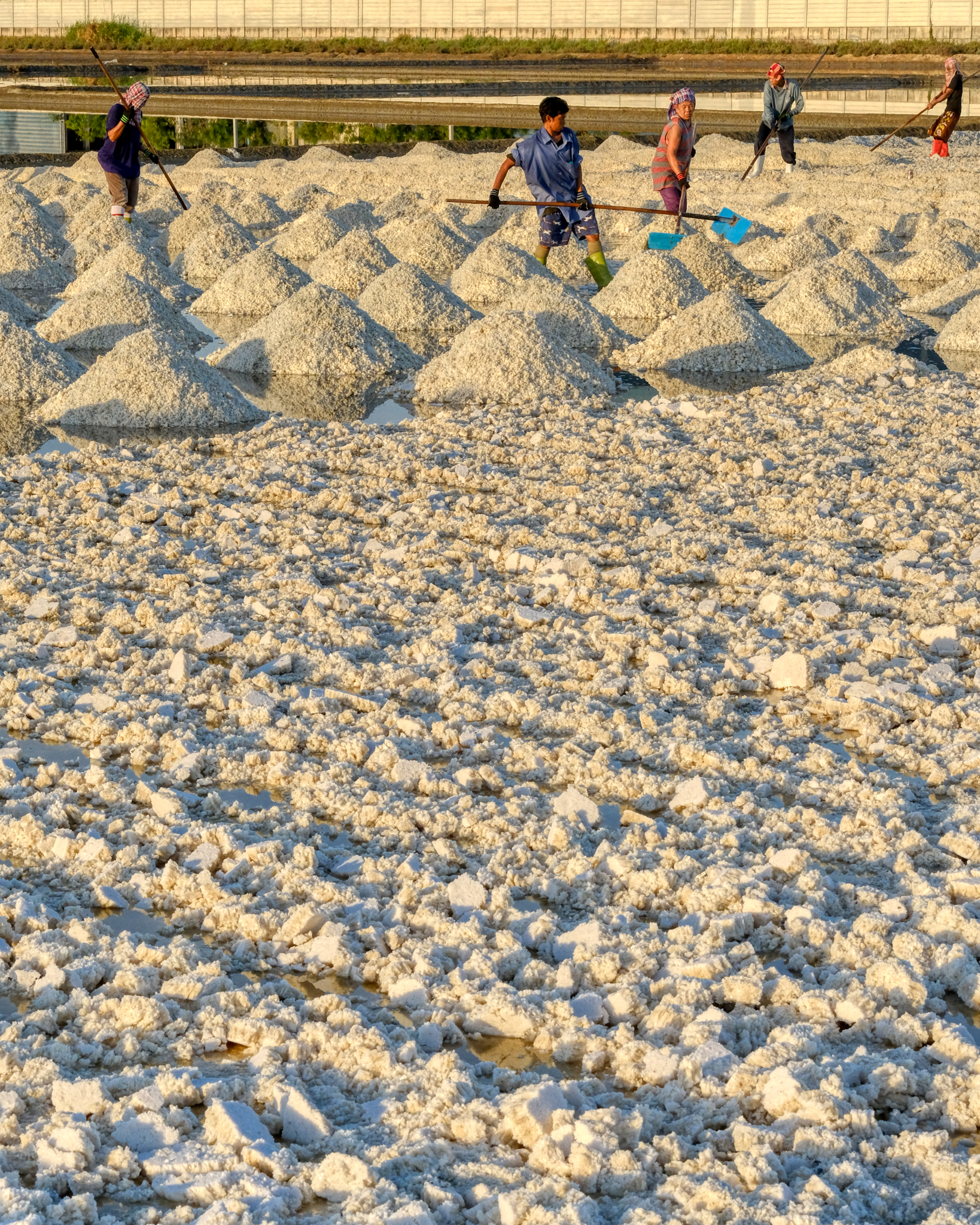 After an hour at the sunrise pans, we drove a kilometer up the road and found a big crew out in a damp pan raking the salt into the cones. Hard work in the morning sun.
After an hour at the sunrise pans, we drove a kilometer up the road and found a big crew out in a damp pan raking the salt into the cones. Hard work in the morning sun.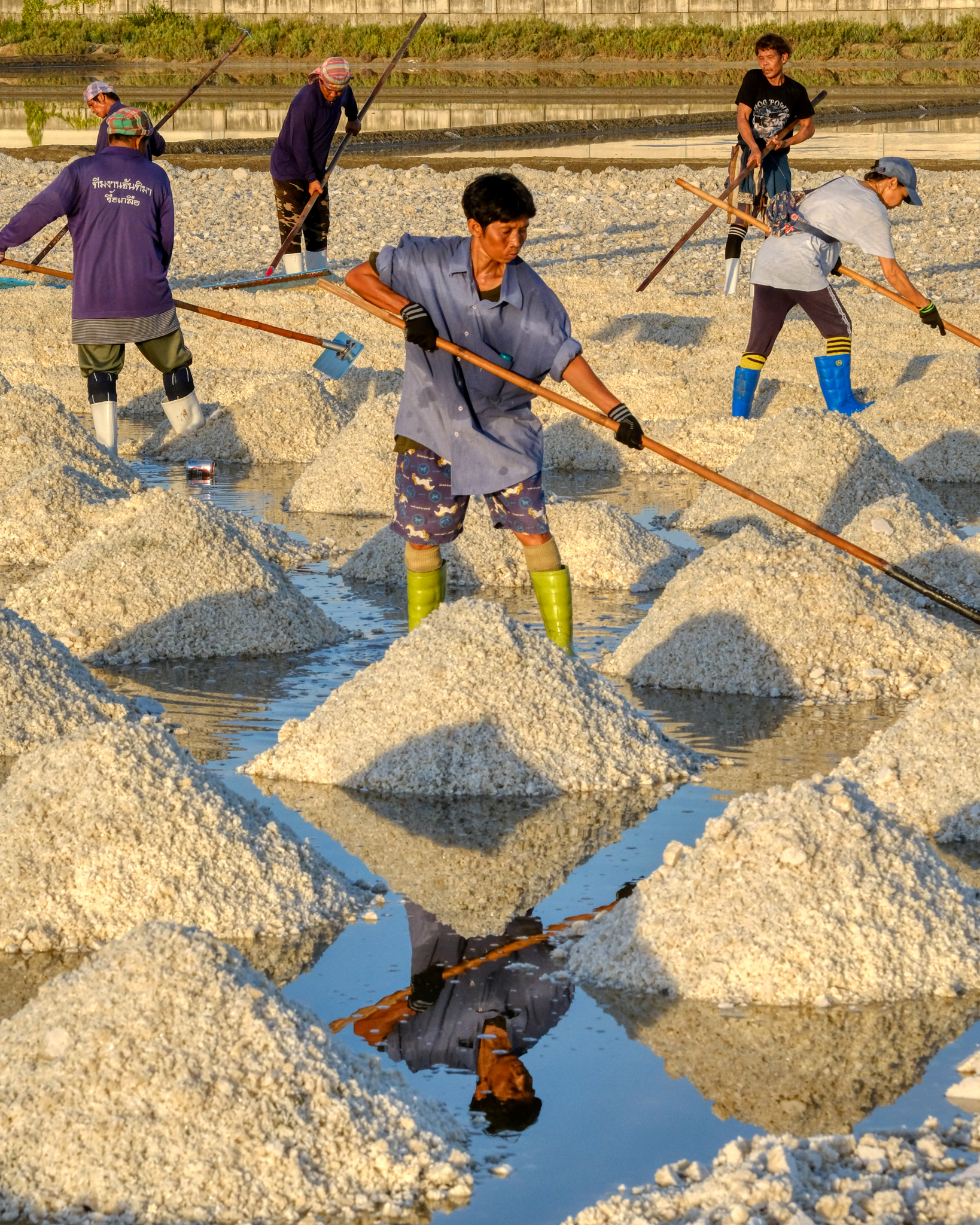 Hard at work while standing in supersaturated salt water.
Hard at work while standing in supersaturated salt water.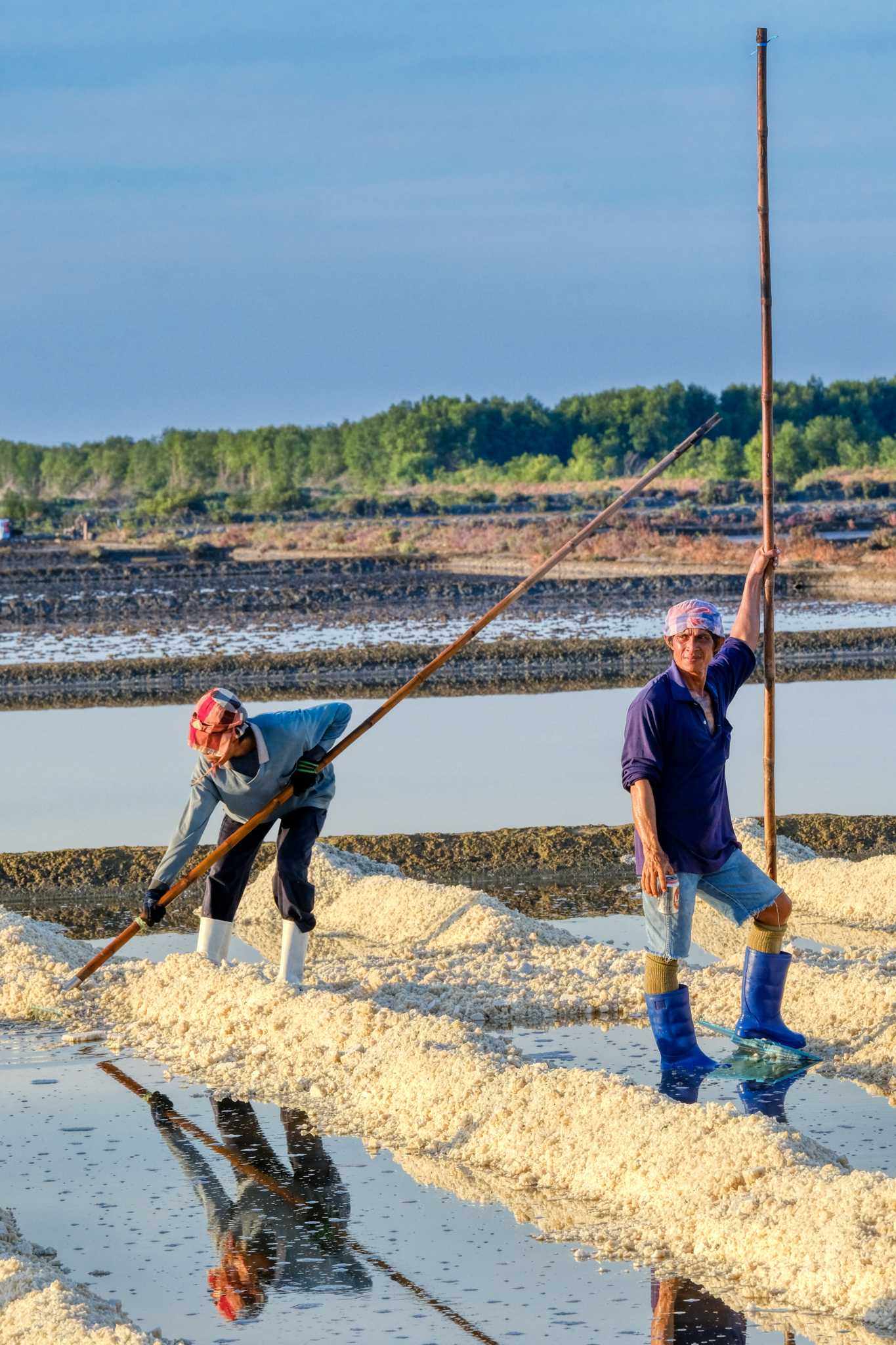 Such a photogenic scene . . . especially when the salt workers pose for you!!!
Such a photogenic scene . . . especially when the salt workers pose for you!!!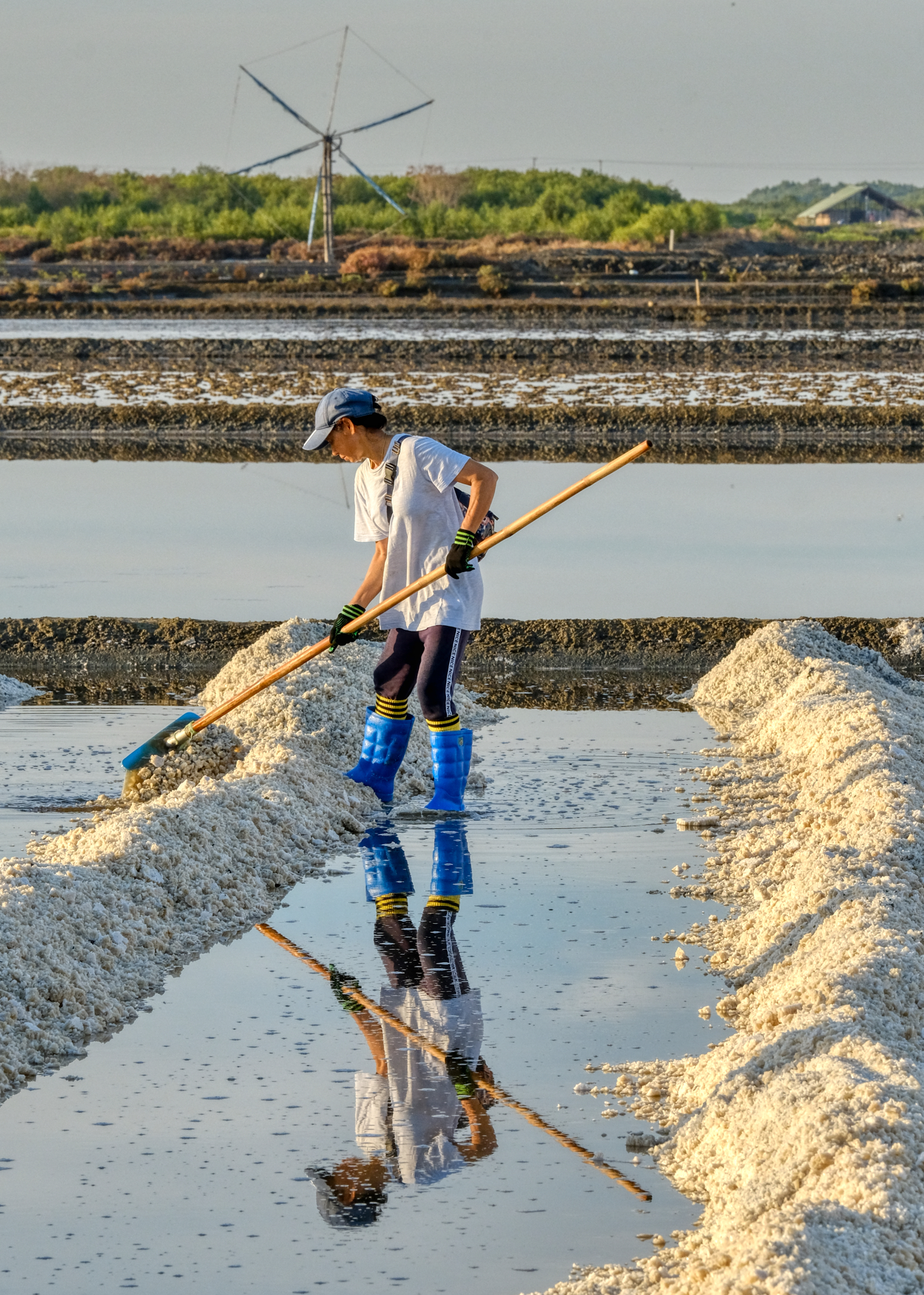 Windmills, salt, humanity, reflections . . .
Windmills, salt, humanity, reflections . . .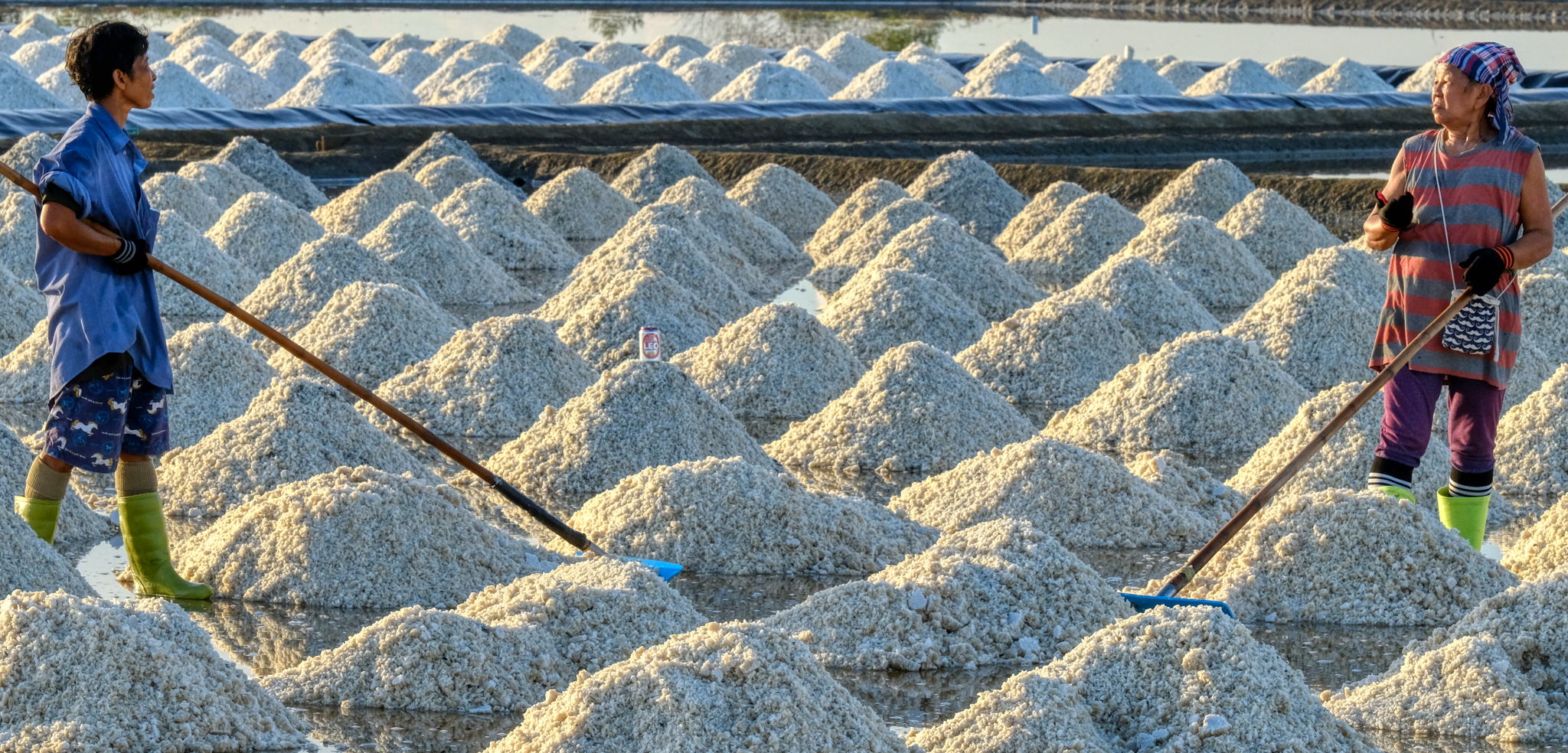 Having a chat while working . . .
Having a chat while working . . . 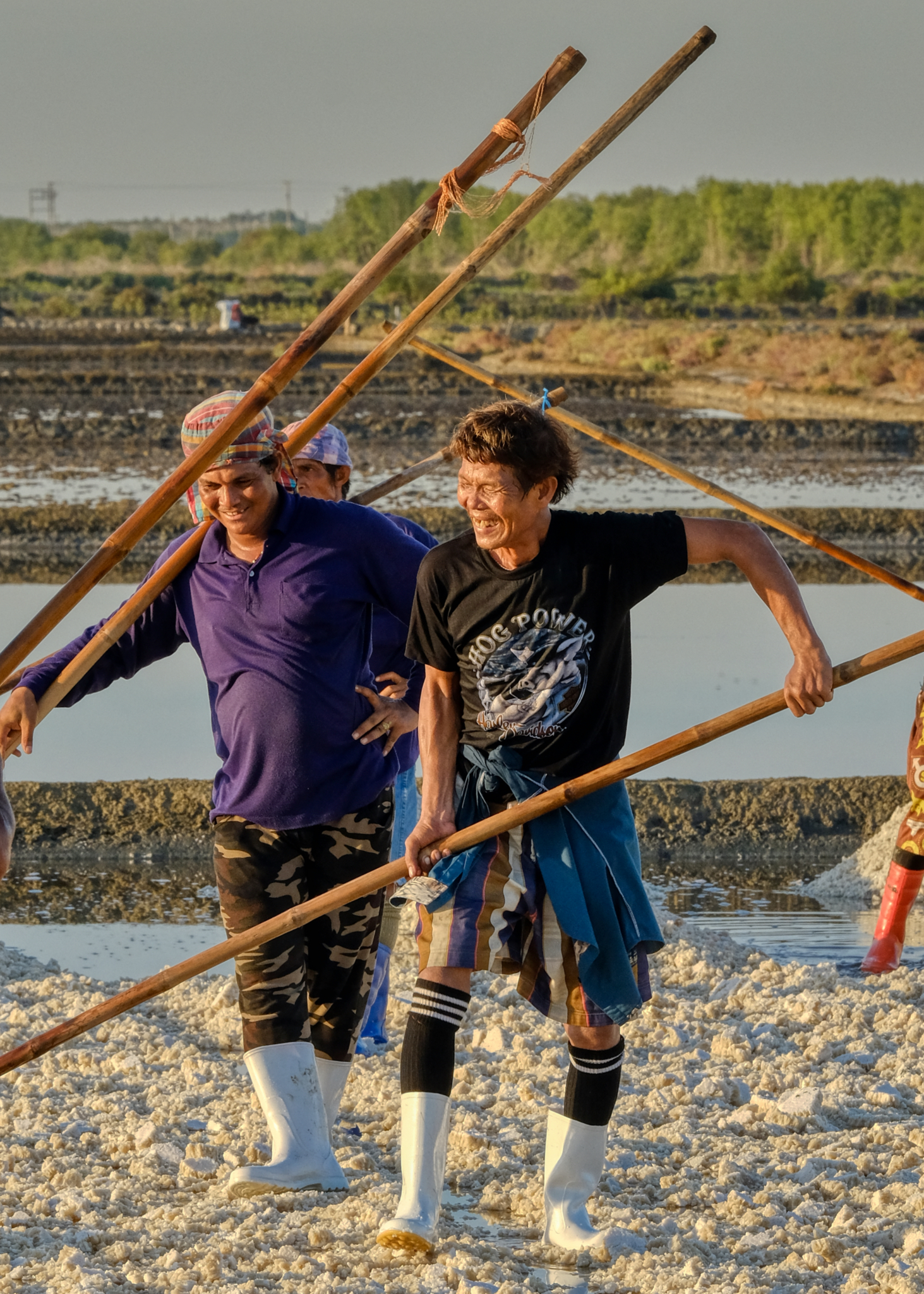 The salt workers seemed to know each other well . . . it's more enjoyable to work while sharing a joke with your friends.
The salt workers seemed to know each other well . . . it's more enjoyable to work while sharing a joke with your friends.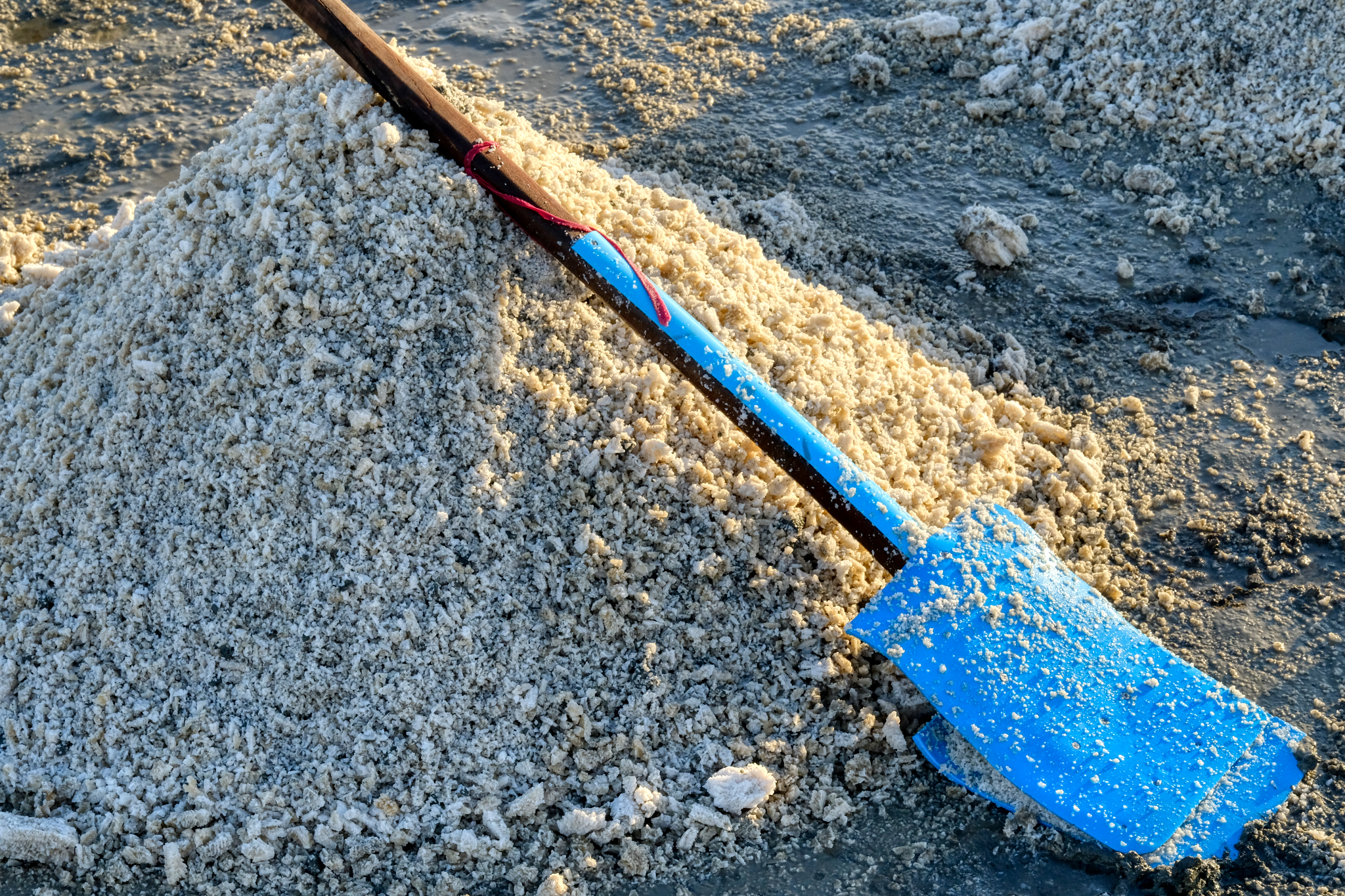 Home made crude scrapers for piling the salt into cones.
Home made crude scrapers for piling the salt into cones.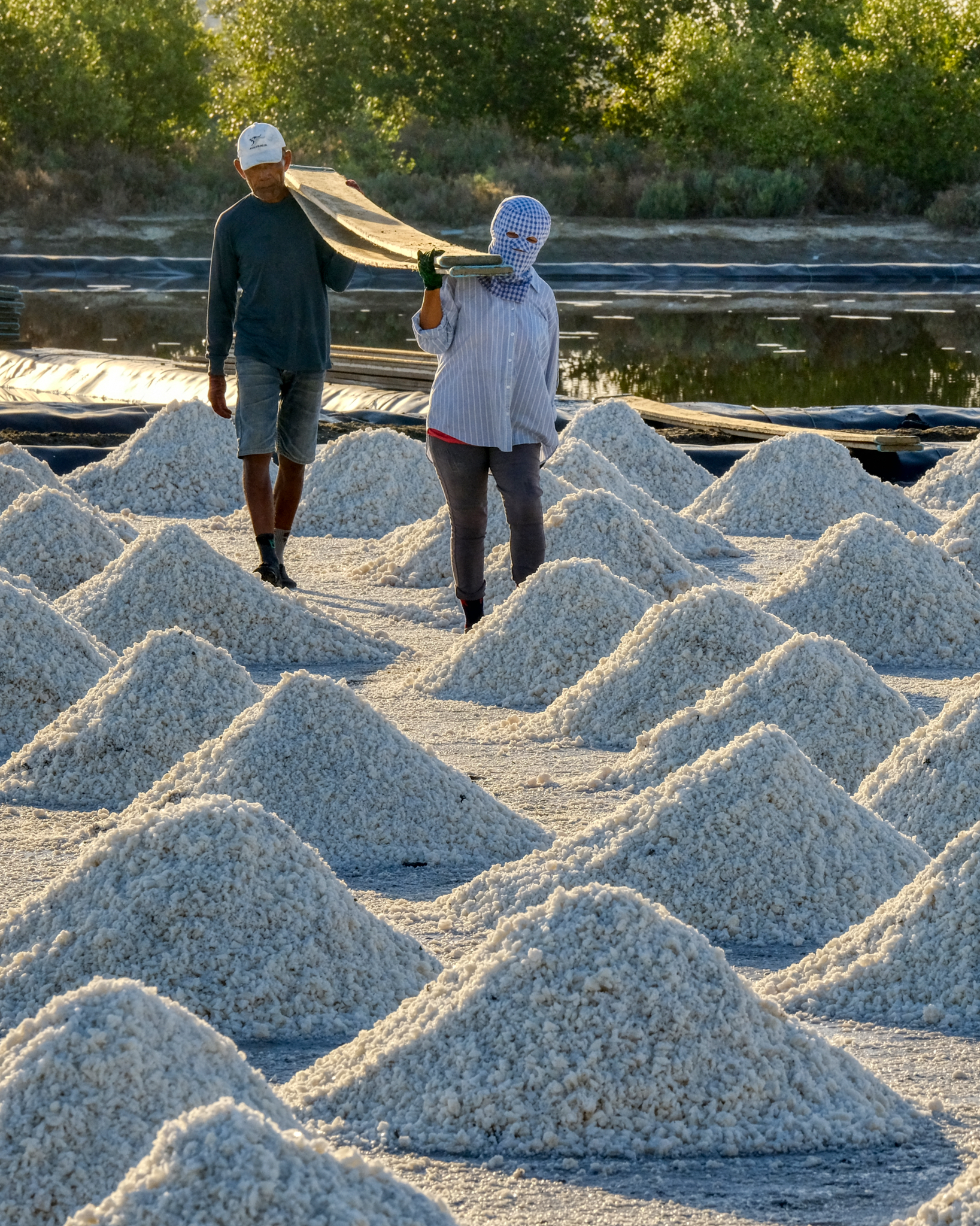 Moving and placing heavy planks for the wheelbarrows that will come to remove the salt from the pans.
Moving and placing heavy planks for the wheelbarrows that will come to remove the salt from the pans.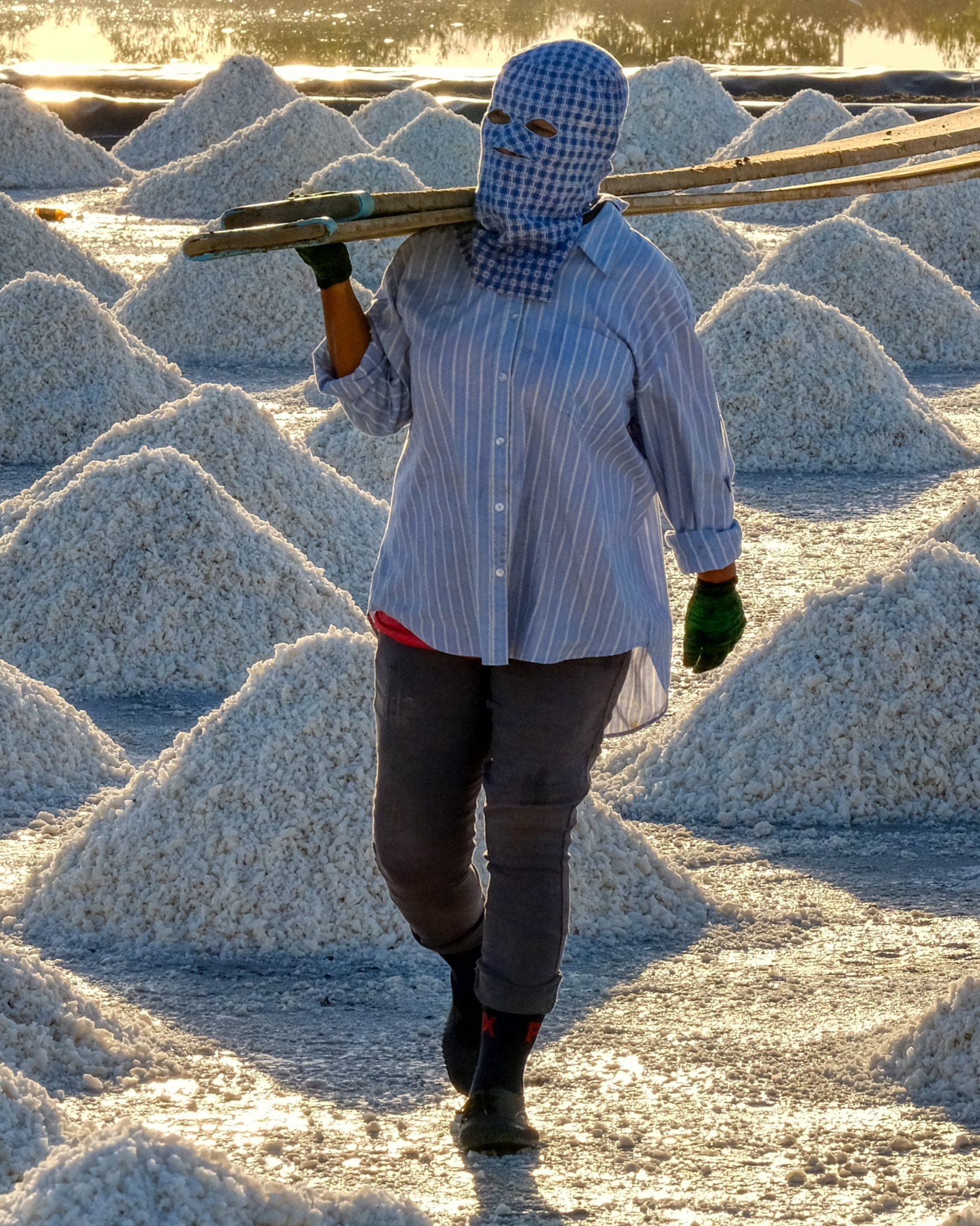 Protection from the sun . . . .
Protection from the sun . . . .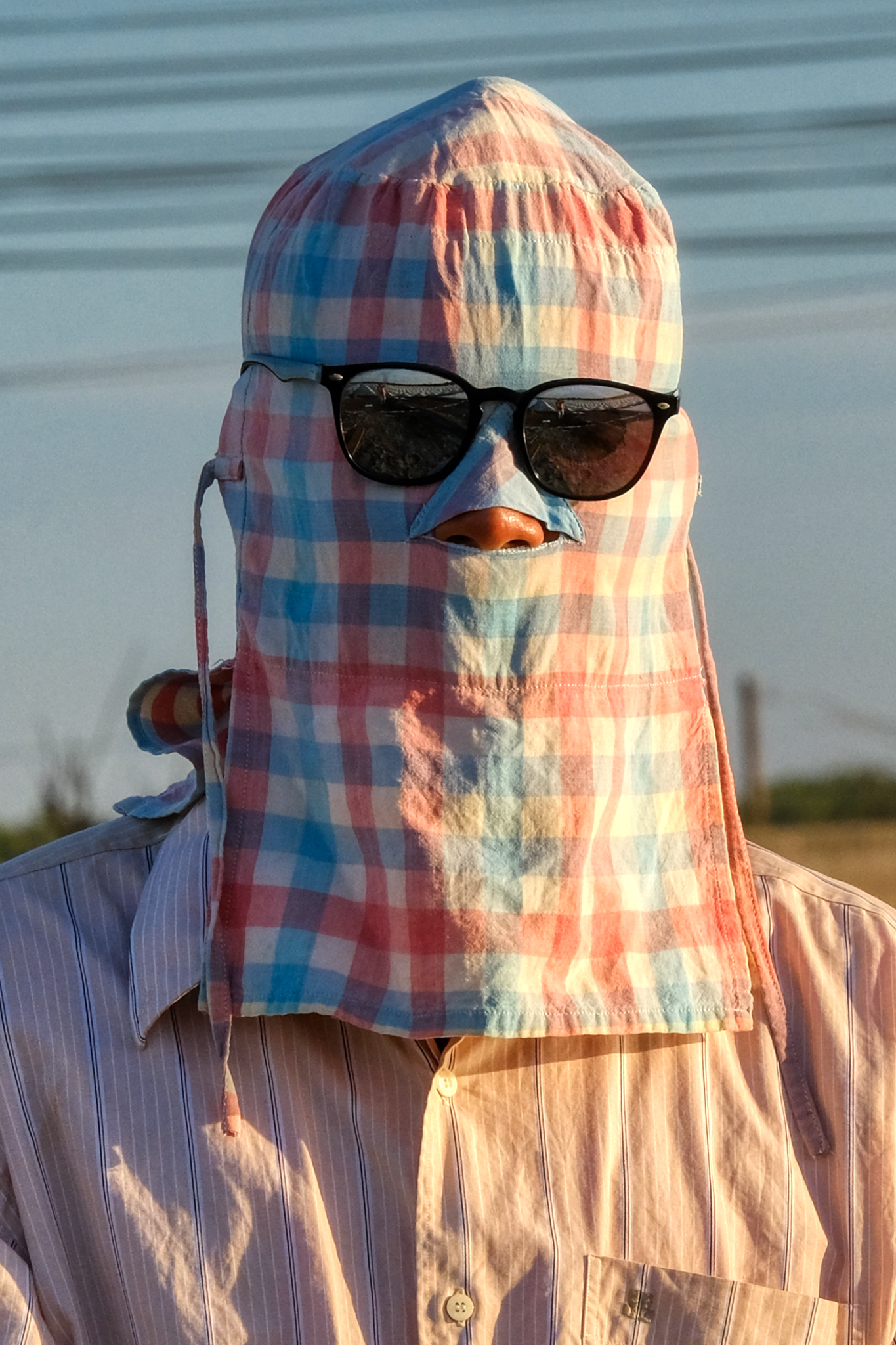 Extreme sun protection . . . it must be very hot under that hood in this oppressive heat and humidity.
Extreme sun protection . . . it must be very hot under that hood in this oppressive heat and humidity.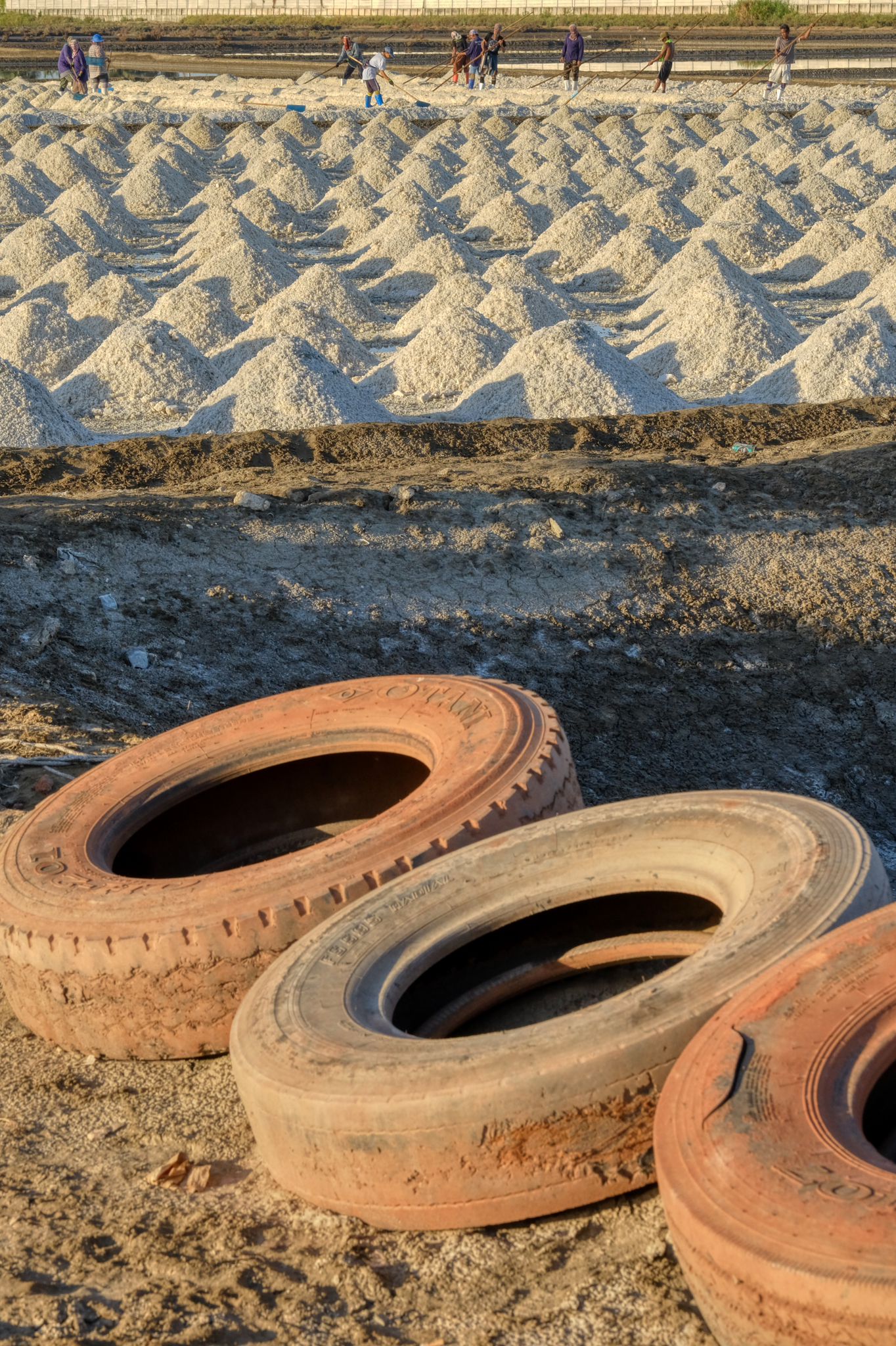 The is much to see in the area, so we moved on . . .
The is much to see in the area, so we moved on . . .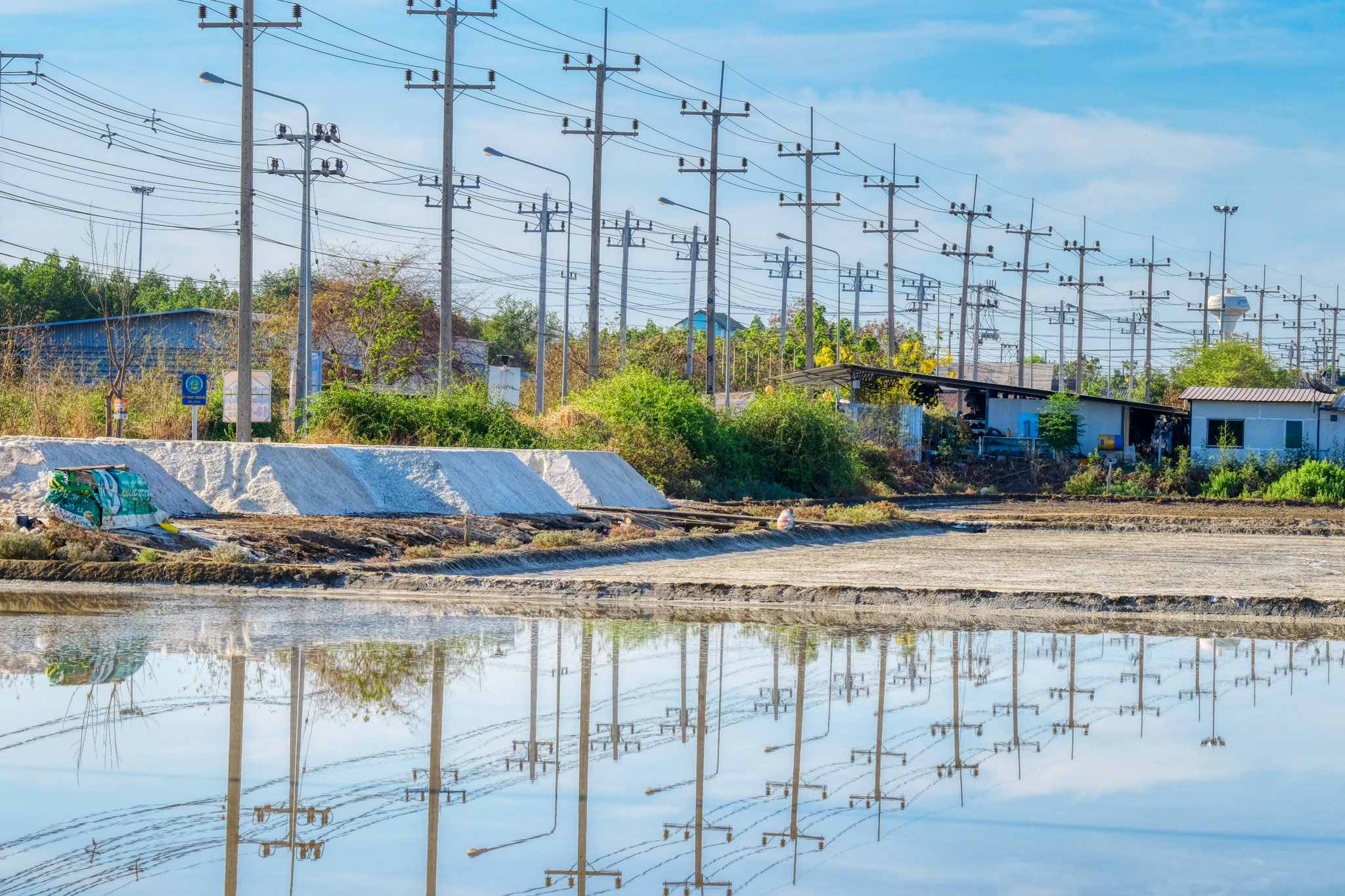 Rural roads are few and far between - valuable land is not used up for roads. As such, the roads that do exist serve for arterials for power, phone, and water. This is Thai local highway 2001.
Rural roads are few and far between - valuable land is not used up for roads. As such, the roads that do exist serve for arterials for power, phone, and water. This is Thai local highway 2001.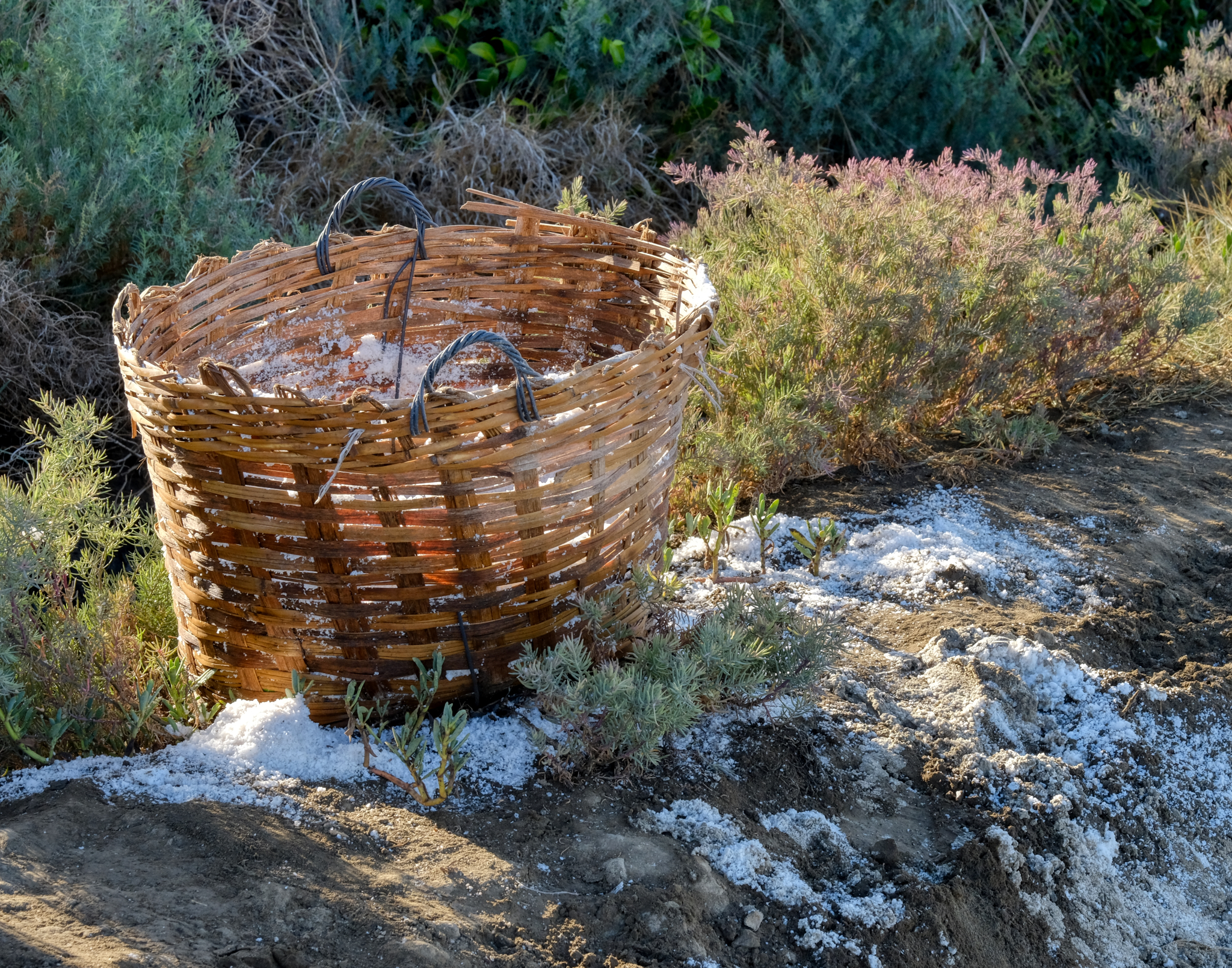 In the next salt pan, baskets were used to collect a special salt from the surface.
In the next salt pan, baskets were used to collect a special salt from the surface.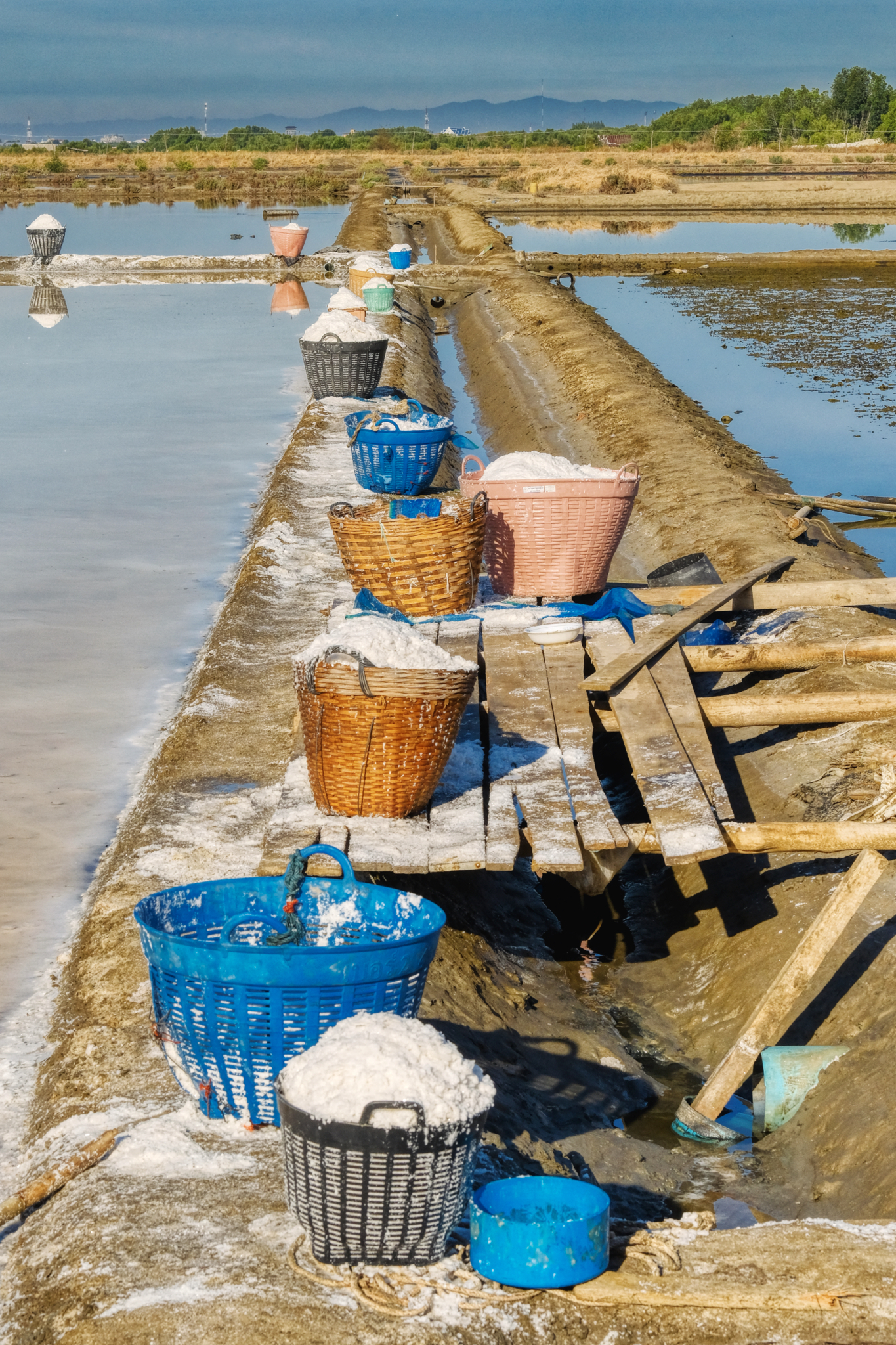 Ongoing salt harvesting.
Ongoing salt harvesting.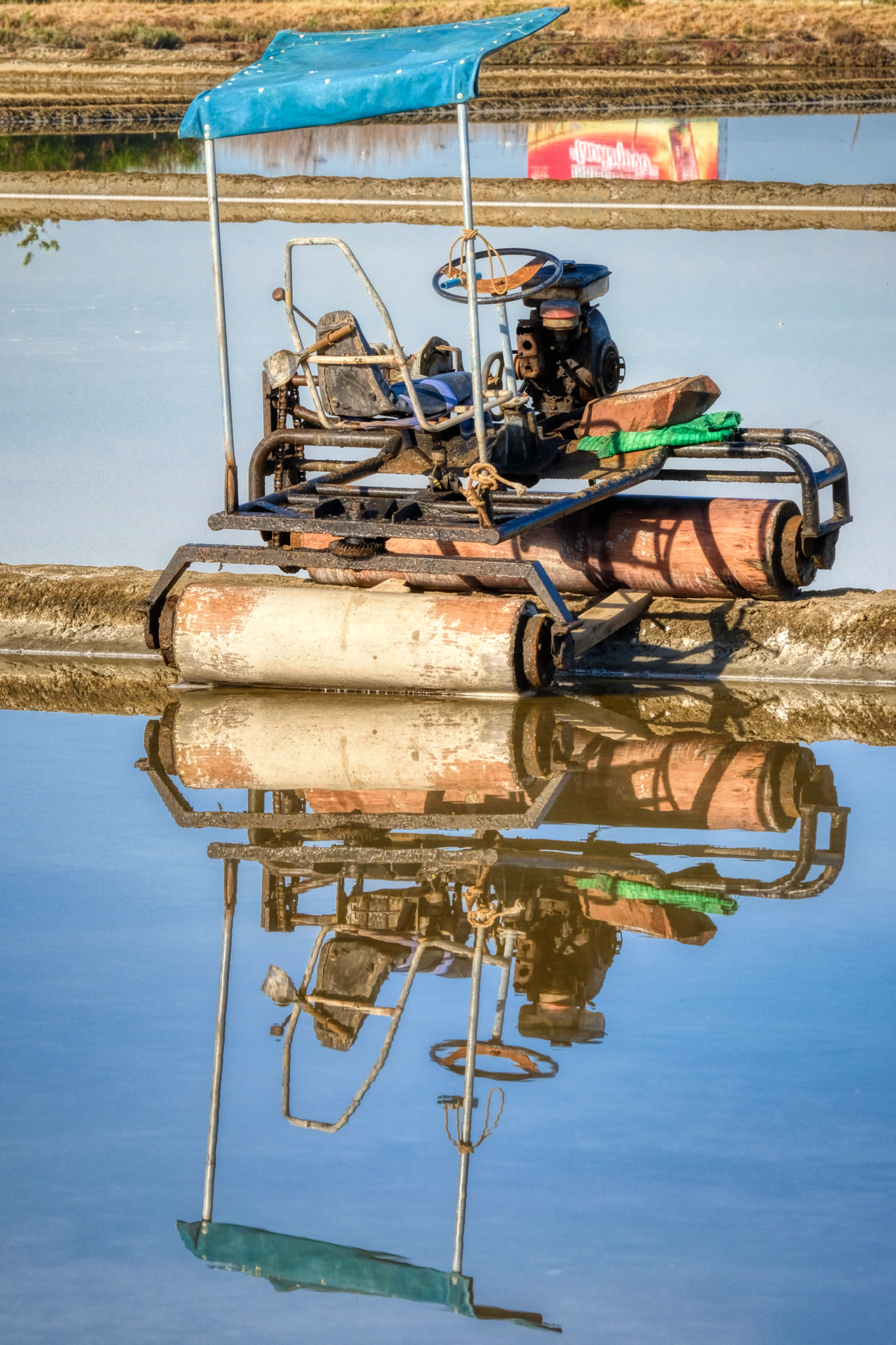 I love these amazing contraptions . . . used to flatten the pans after the salt has been removed.
I love these amazing contraptions . . . used to flatten the pans after the salt has been removed. This is a rare (and valuable) form of flake salt favored by chefs . . . it floats on top of the supersaturated pans and is harvested in baskets (above).
This is a rare (and valuable) form of flake salt favored by chefs . . . it floats on top of the supersaturated pans and is harvested in baskets (above).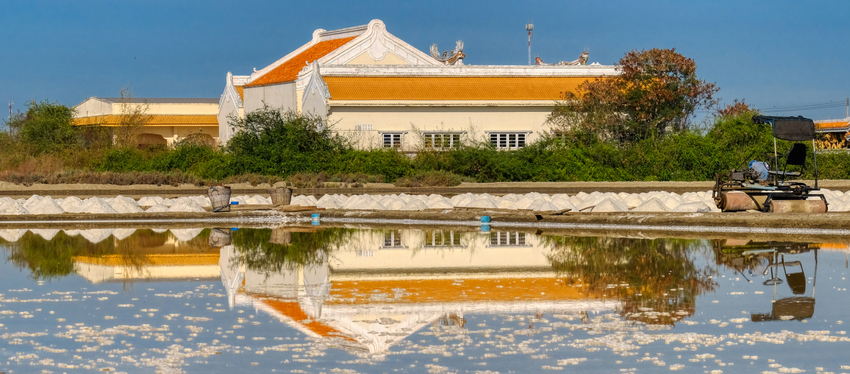 A beautiful Chinese-style Buddhist temple reflected in the salt pans.
A beautiful Chinese-style Buddhist temple reflected in the salt pans.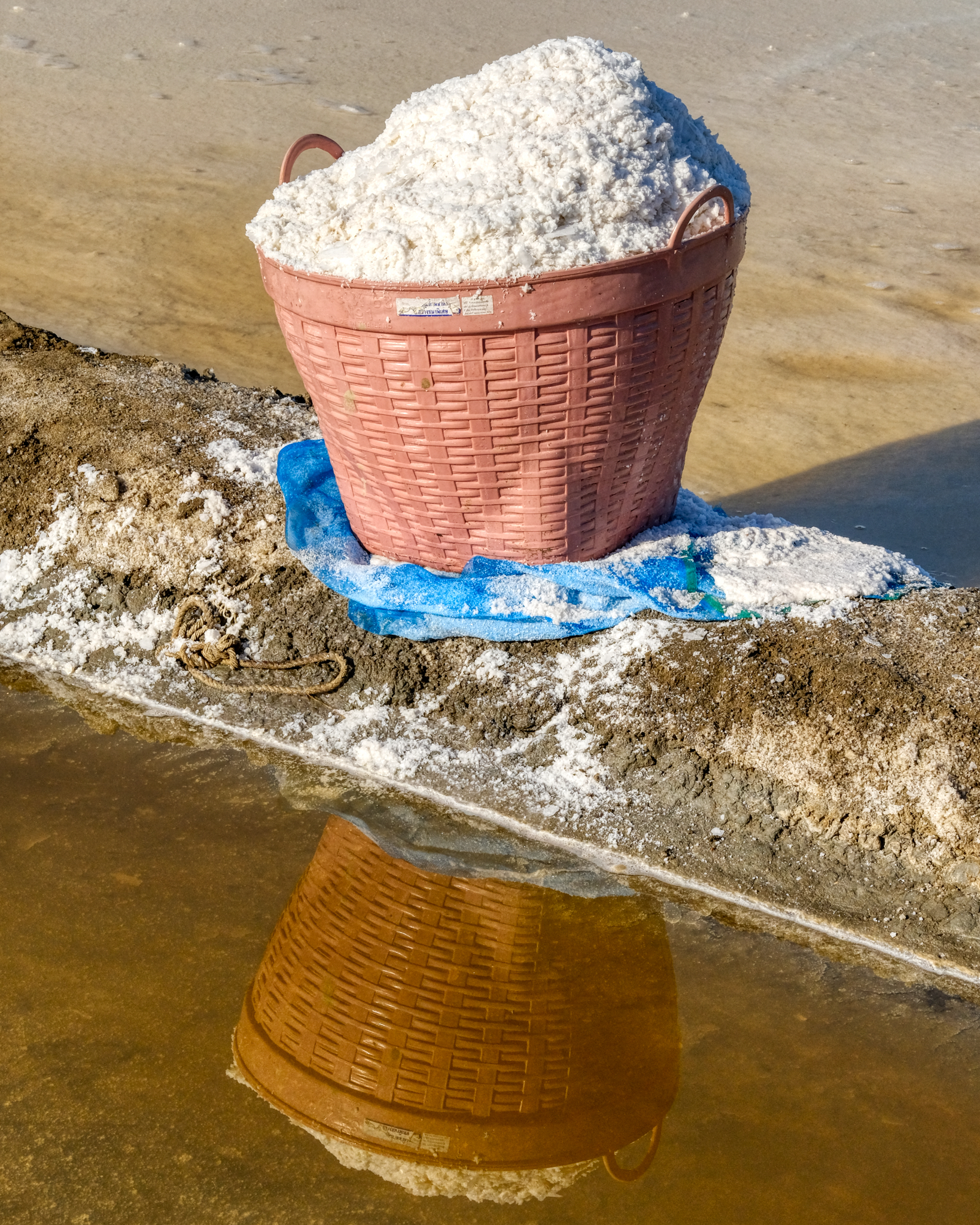 Light and flakey salt -- very valuable and sought after.
Light and flakey salt -- very valuable and sought after.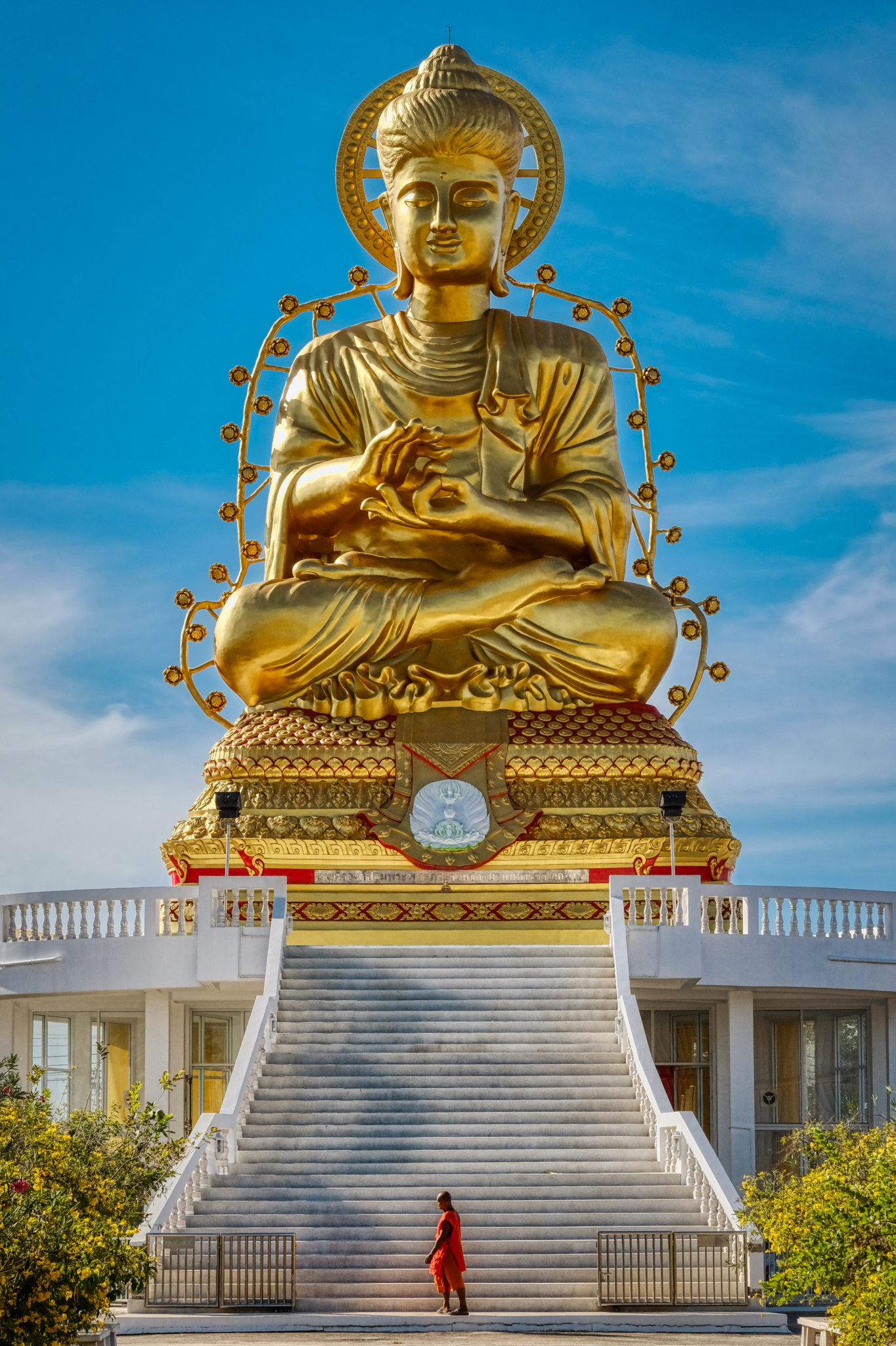 Directly across from the flake salt gathering was the Buddhist Wat I came to see after 5 years . . . . Wat Lat Yai with the Buddha colossus.
Directly across from the flake salt gathering was the Buddhist Wat I came to see after 5 years . . . . Wat Lat Yai with the Buddha colossus. 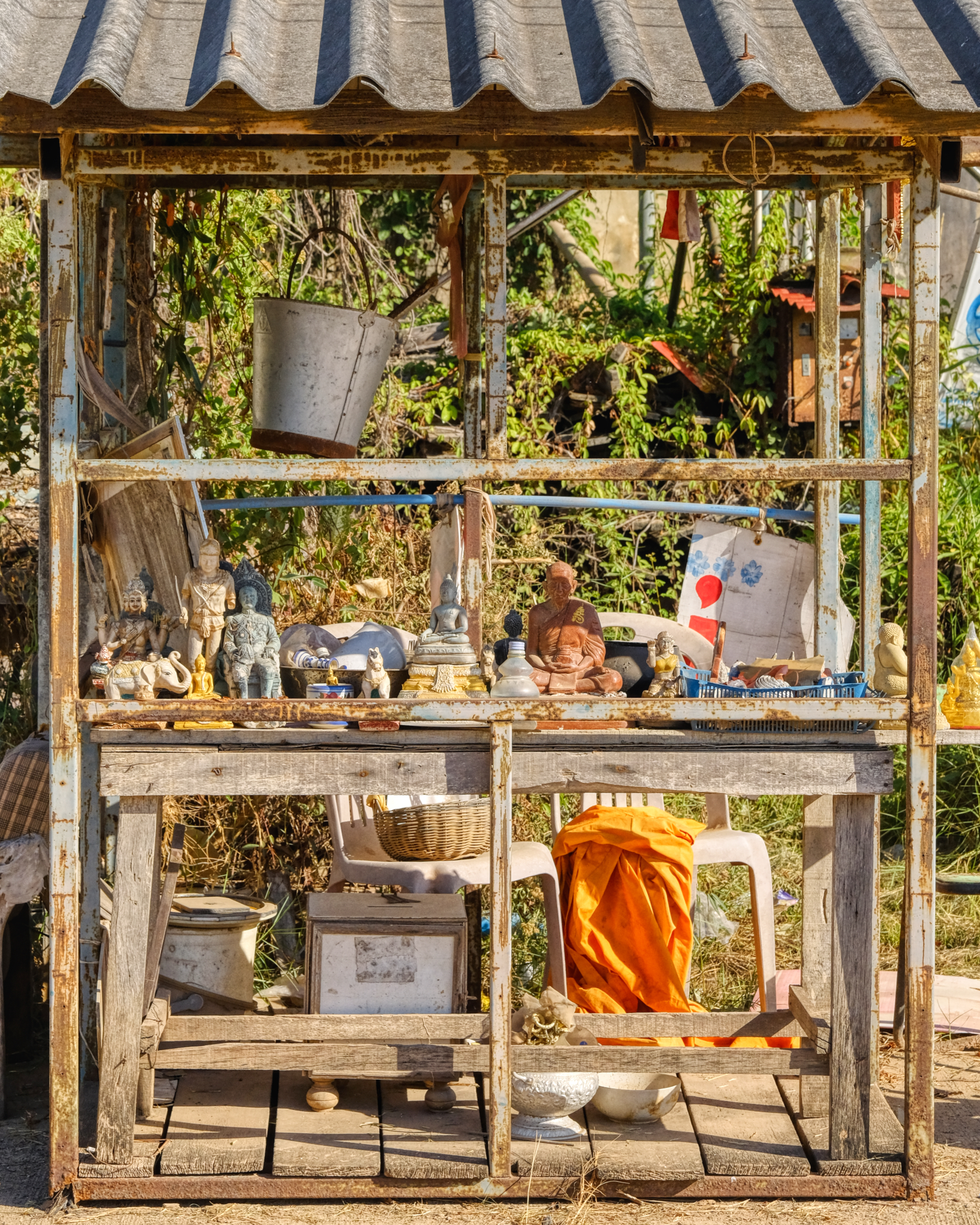 I had such wonderful memories of the spirituality of this Wat when I last visited. There are always interesting and unexpected things to see in a Wat. Some of what you see are what the monks themselves have arranged (like this small altar), but most of what is seen in a Wat are the results of what the big, rich donors want there to be.
I had such wonderful memories of the spirituality of this Wat when I last visited. There are always interesting and unexpected things to see in a Wat. Some of what you see are what the monks themselves have arranged (like this small altar), but most of what is seen in a Wat are the results of what the big, rich donors want there to be.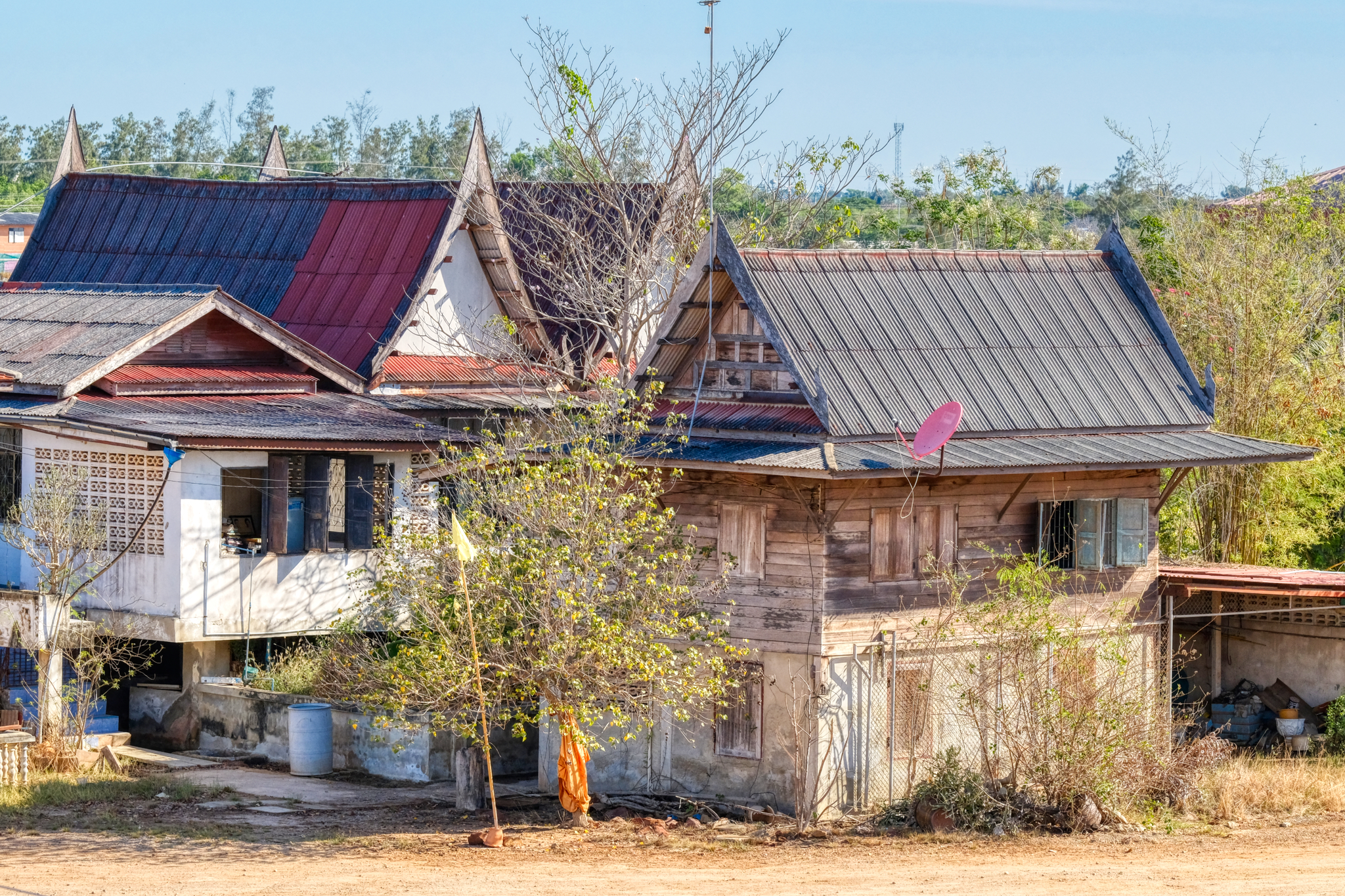 The surviving old monk quarters. I am always amazed to see a satellite dish in a Buddhist temple . . .
The surviving old monk quarters. I am always amazed to see a satellite dish in a Buddhist temple . . .  Always beautiful flowers to be seen in a Wat.
Always beautiful flowers to be seen in a Wat.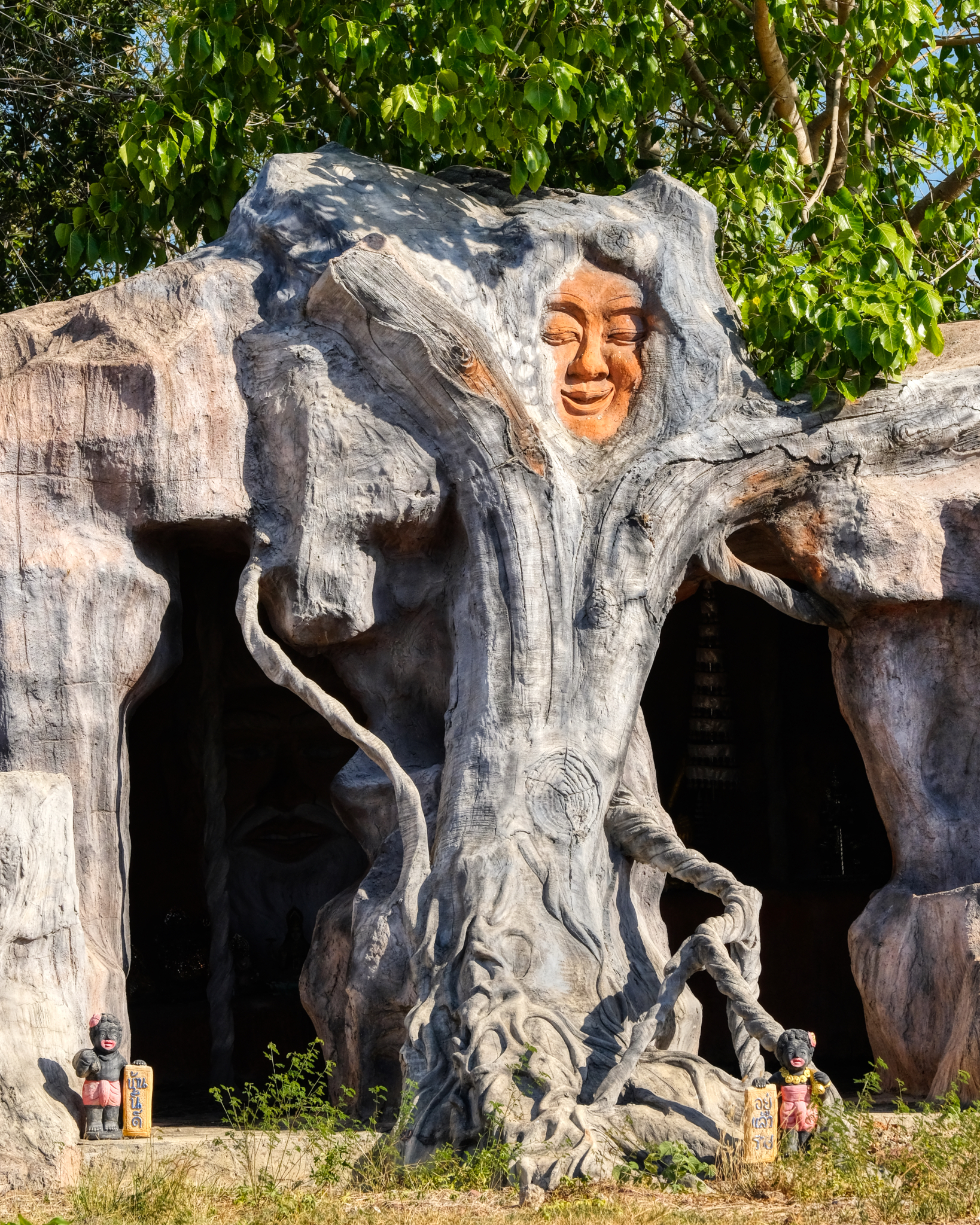 Wat Lat Yai has some of the strangest 'grottos' I have ever seen. From the outside they are just plain weird . . .
Wat Lat Yai has some of the strangest 'grottos' I have ever seen. From the outside they are just plain weird . . .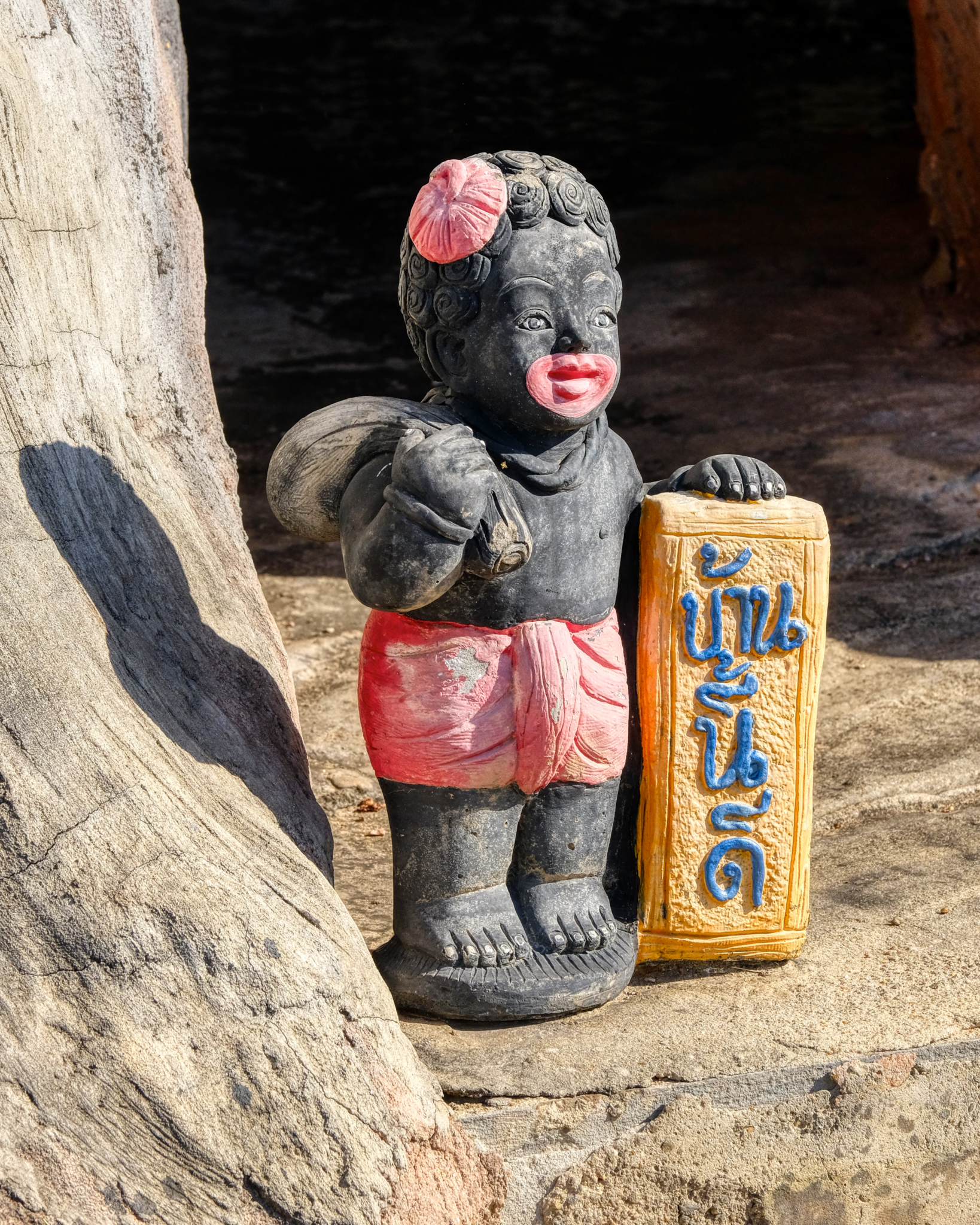 What exactly is going on here? Remember, these things are placed in temples by the doners, not by the monks, who renounce material things. But still . . . .
What exactly is going on here? Remember, these things are placed in temples by the doners, not by the monks, who renounce material things. But still . . . .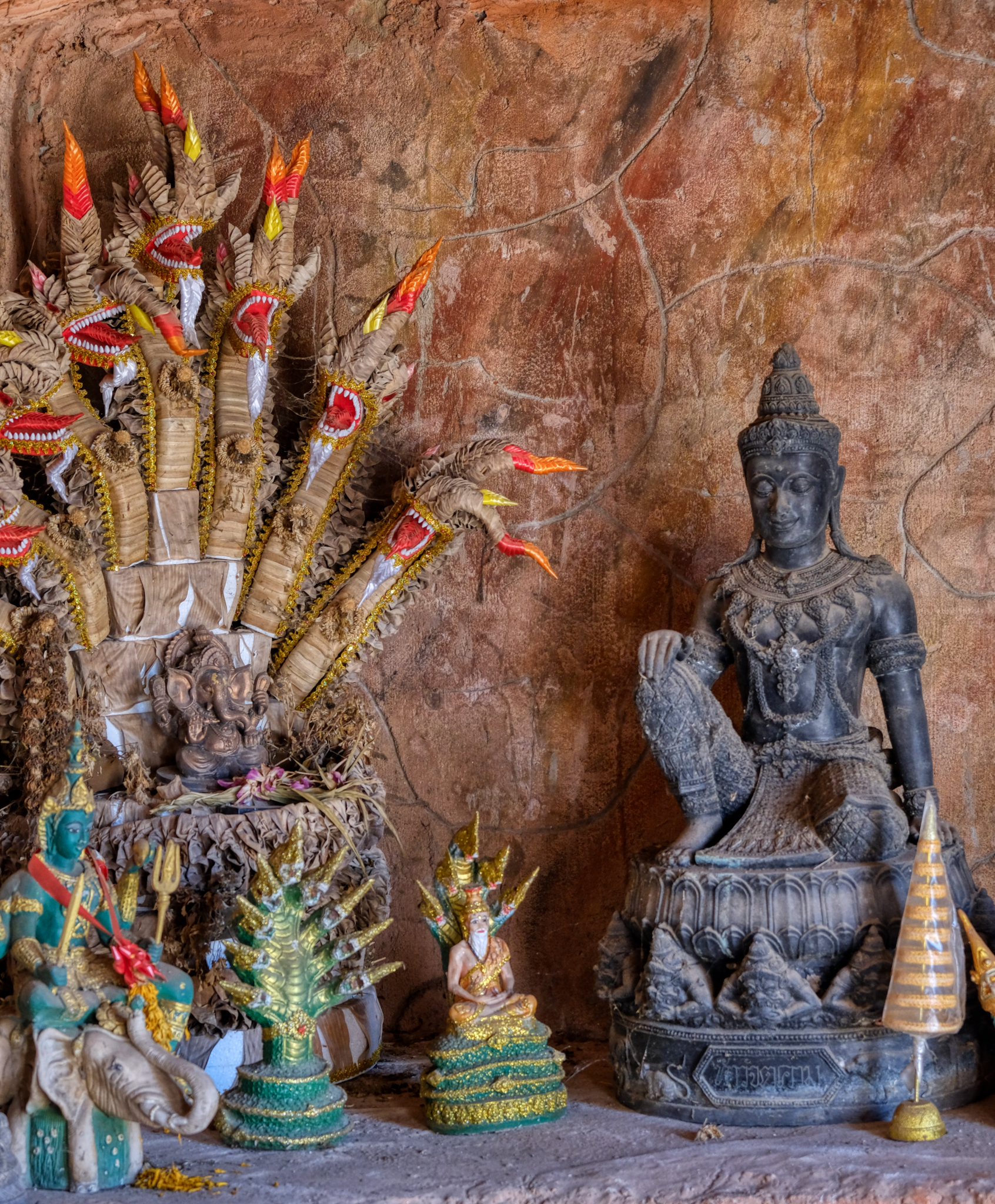 Although the outside of this man-made grotto was a little strange, the inside was magic.
Although the outside of this man-made grotto was a little strange, the inside was magic.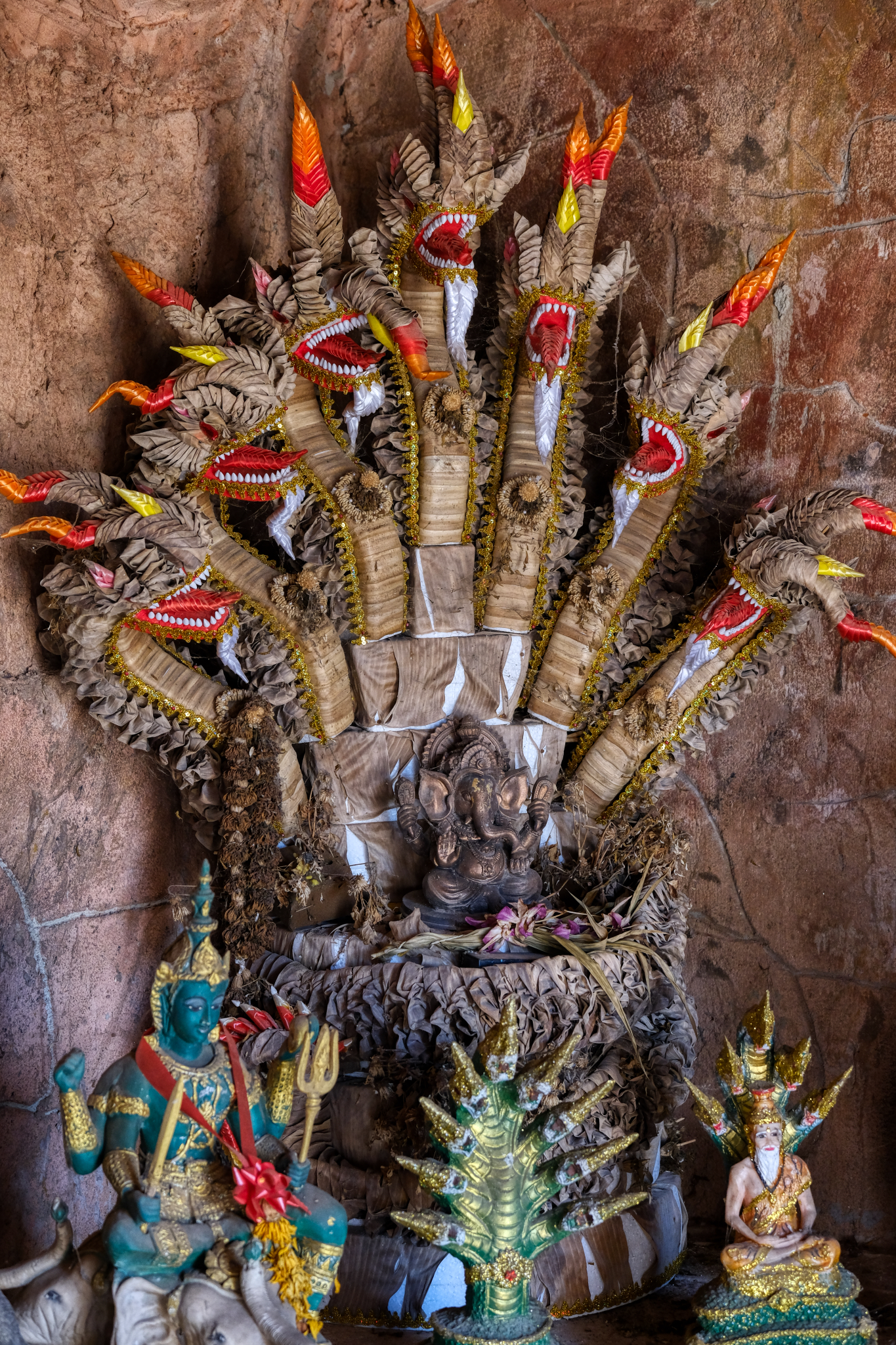 The banana leaf origami on this altar piece was stunningly beautiful. I felt a little like Indiana Jones discovering a lost tomb or ancient temple never seen before. These are Hindu religious items revered in Thailand along side The Buddha.
The banana leaf origami on this altar piece was stunningly beautiful. I felt a little like Indiana Jones discovering a lost tomb or ancient temple never seen before. These are Hindu religious items revered in Thailand along side The Buddha.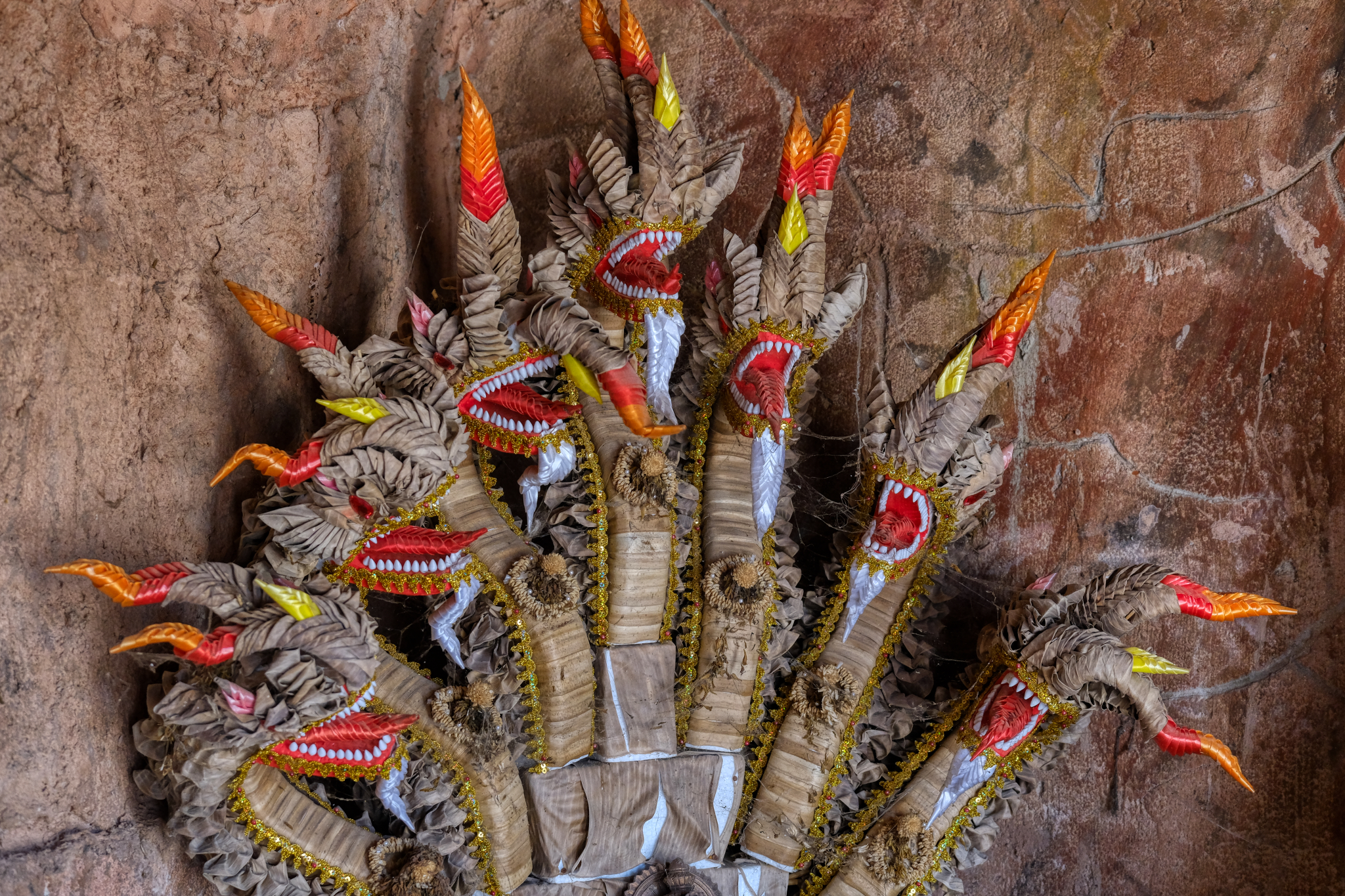 Remarkable fine detailing.
Remarkable fine detailing. Even the cobwebs seem to belong; adding to the spiritual power of this votive object.
Even the cobwebs seem to belong; adding to the spiritual power of this votive object.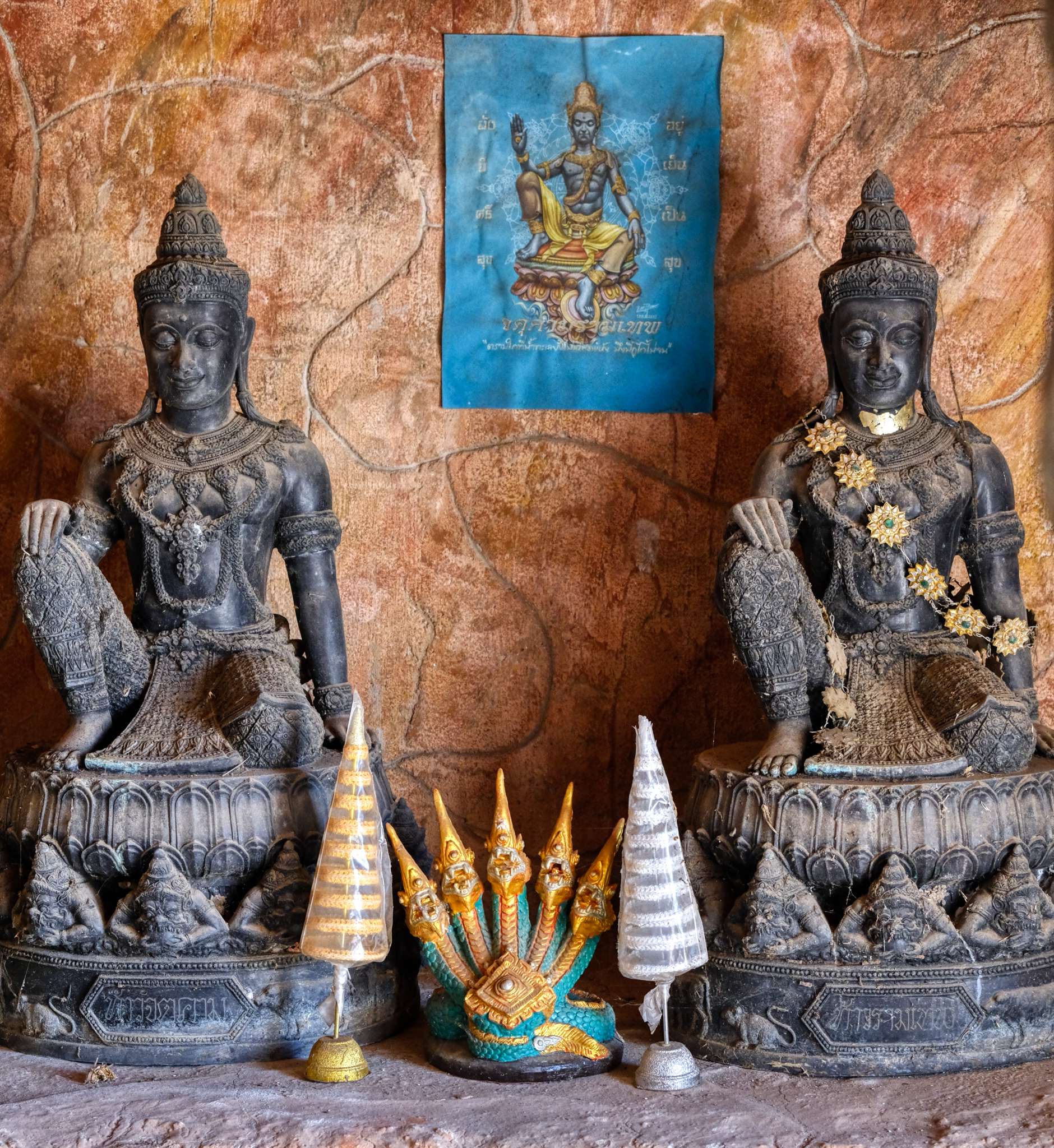 Bikkus, listeners of the Buddha teaching the dharma.
Bikkus, listeners of the Buddha teaching the dharma.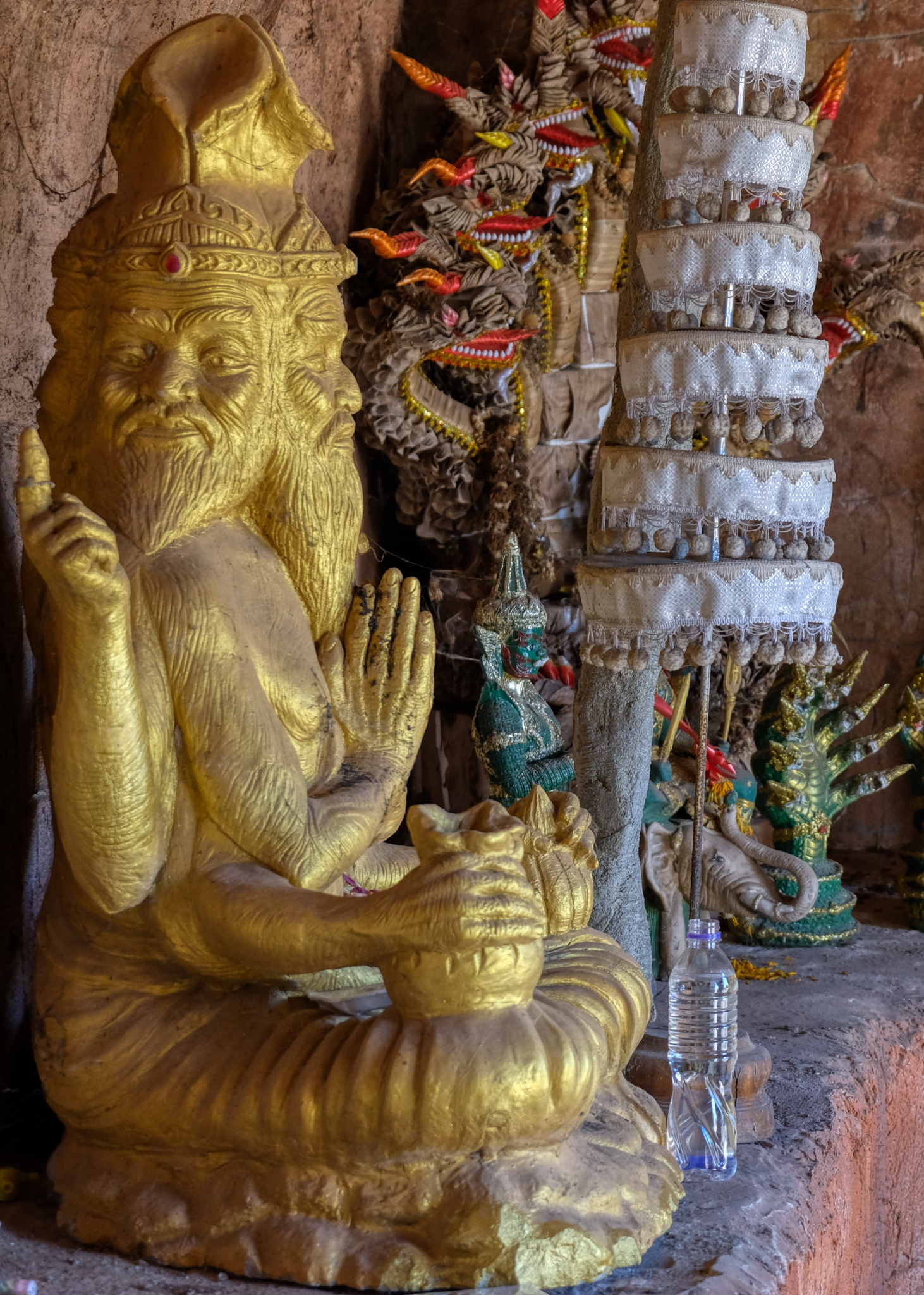 Another Hindu reference . . . a four face sadhu.
Another Hindu reference . . . a four face sadhu.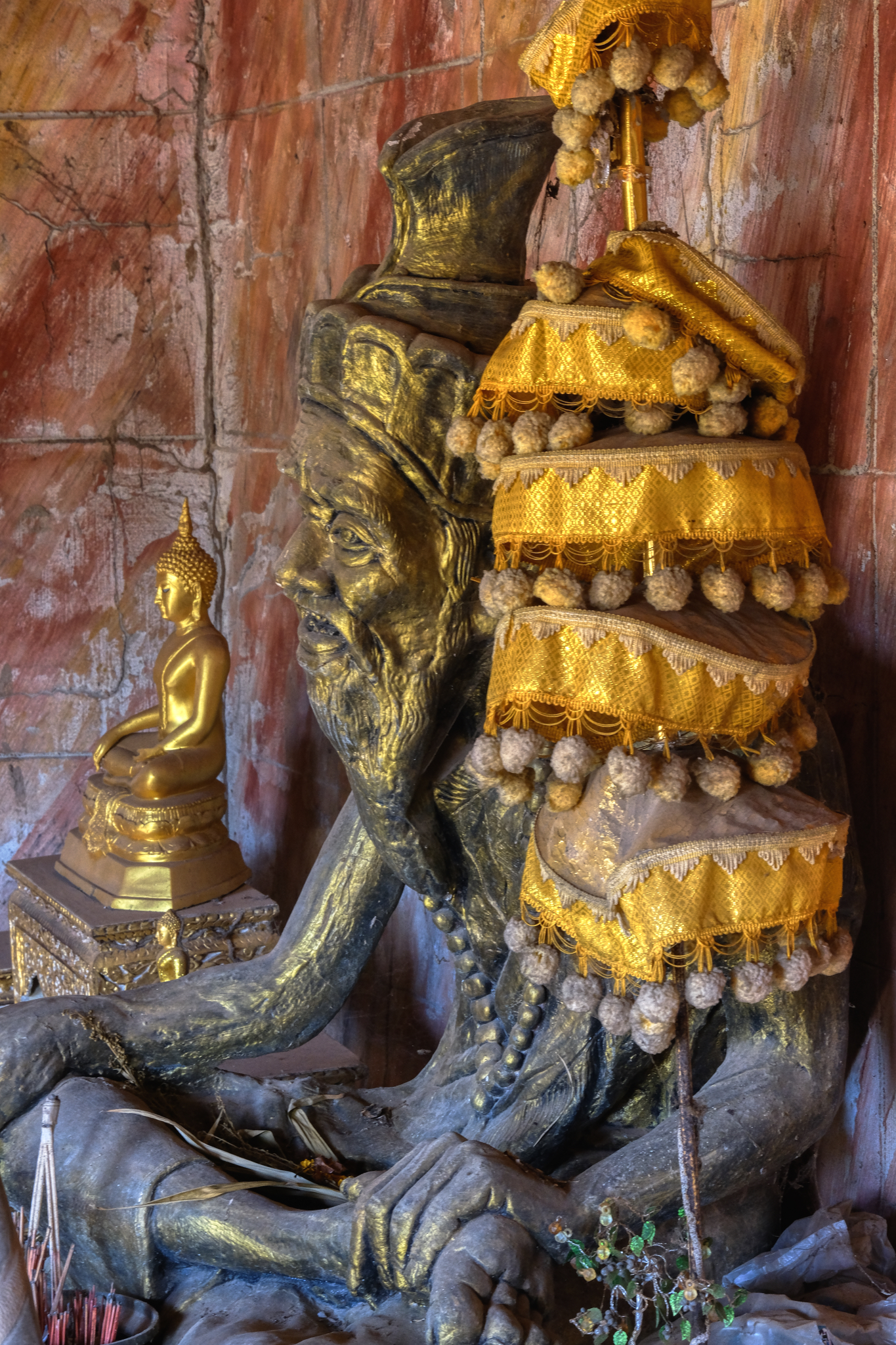 Sadhu and Buddha images in the grotto. I loved being in that space . . .
Sadhu and Buddha images in the grotto. I loved being in that space . . .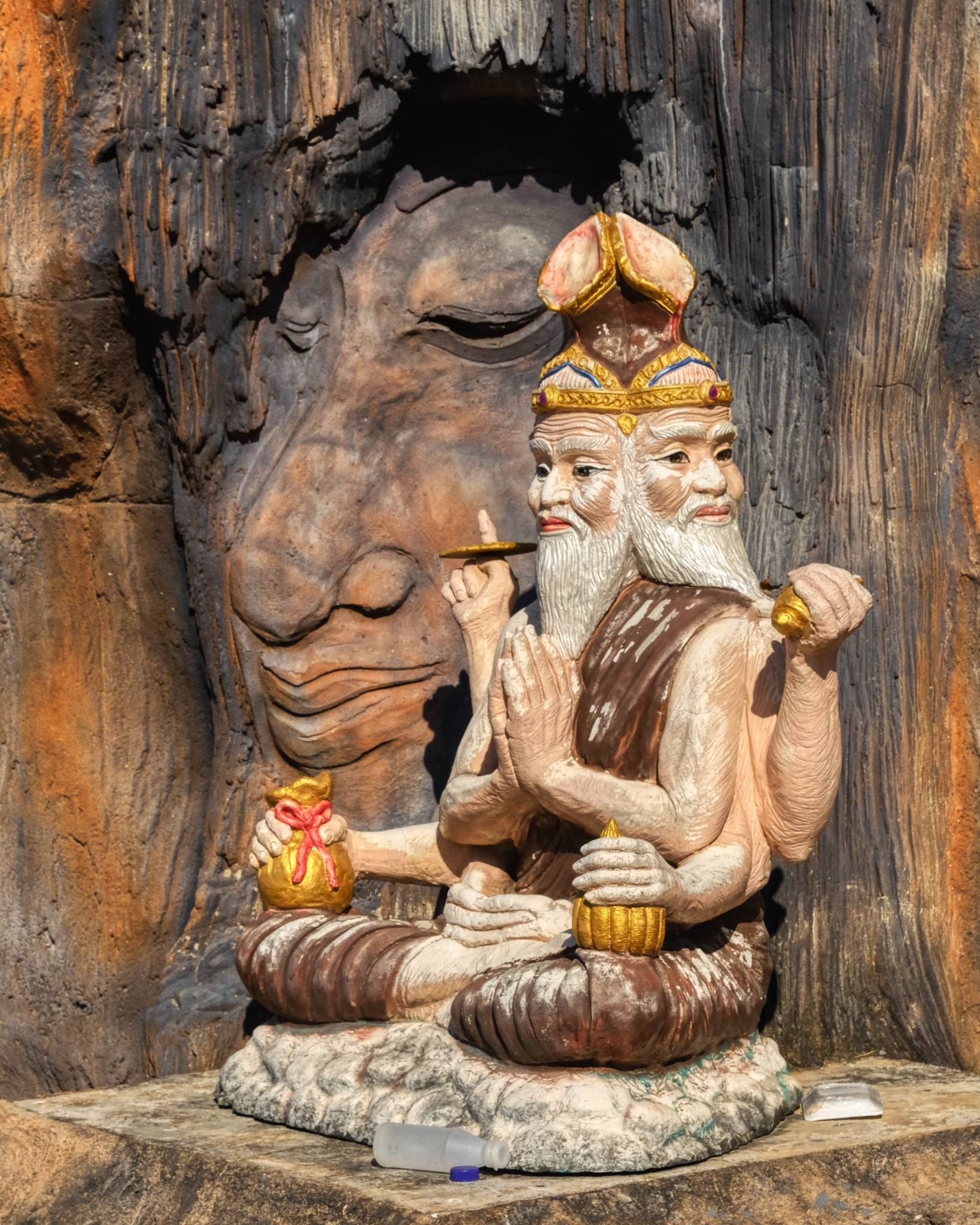 There were also a series of enclave altars around the outside and back of the grotto structure.
There were also a series of enclave altars around the outside and back of the grotto structure.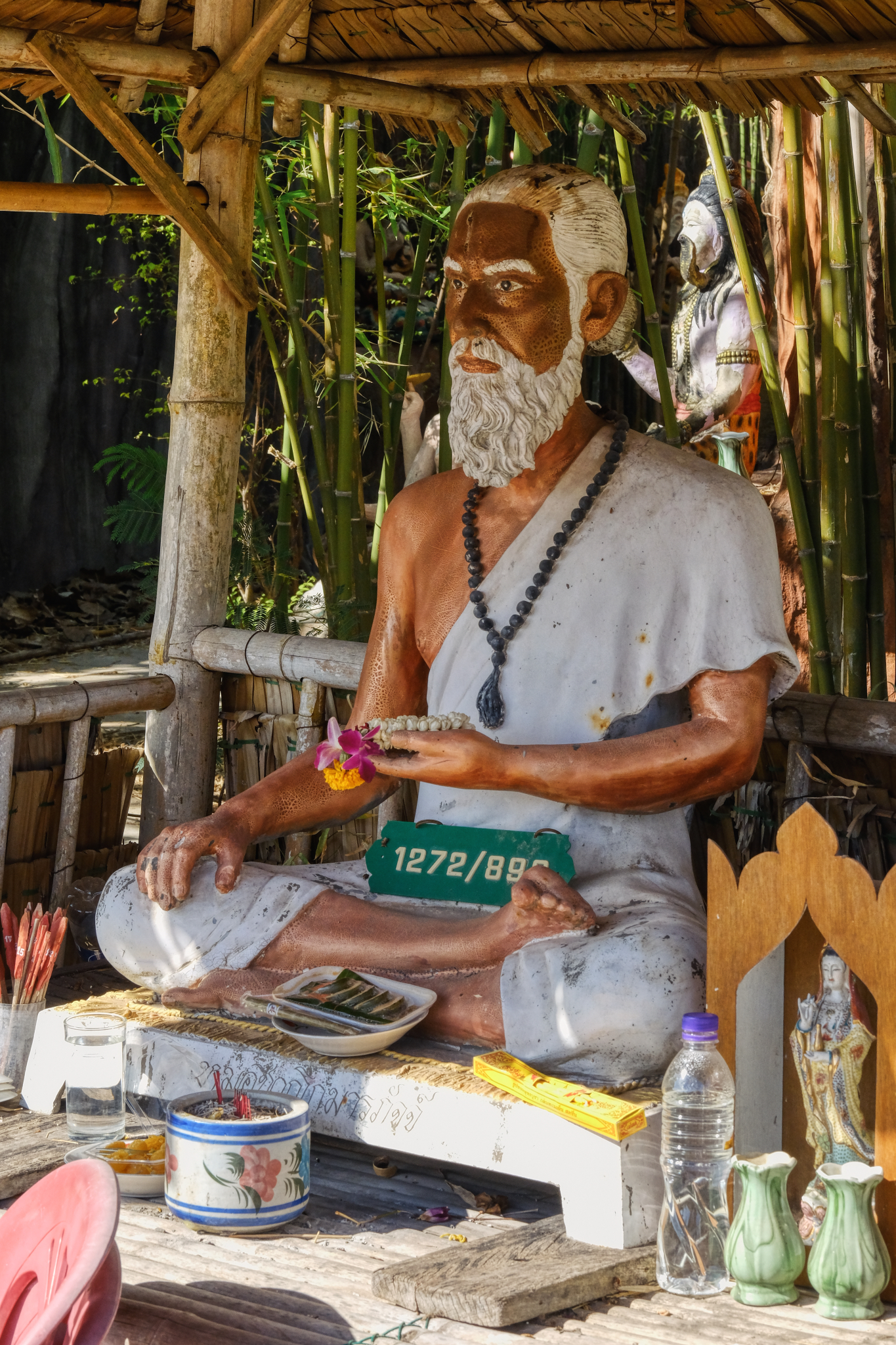 These are living altars. As can be seen, people bring offerings, usually wishing or hoping for good luck. Notice that someone has left the address plate from their house on the altar . . .
These are living altars. As can be seen, people bring offerings, usually wishing or hoping for good luck. Notice that someone has left the address plate from their house on the altar . . .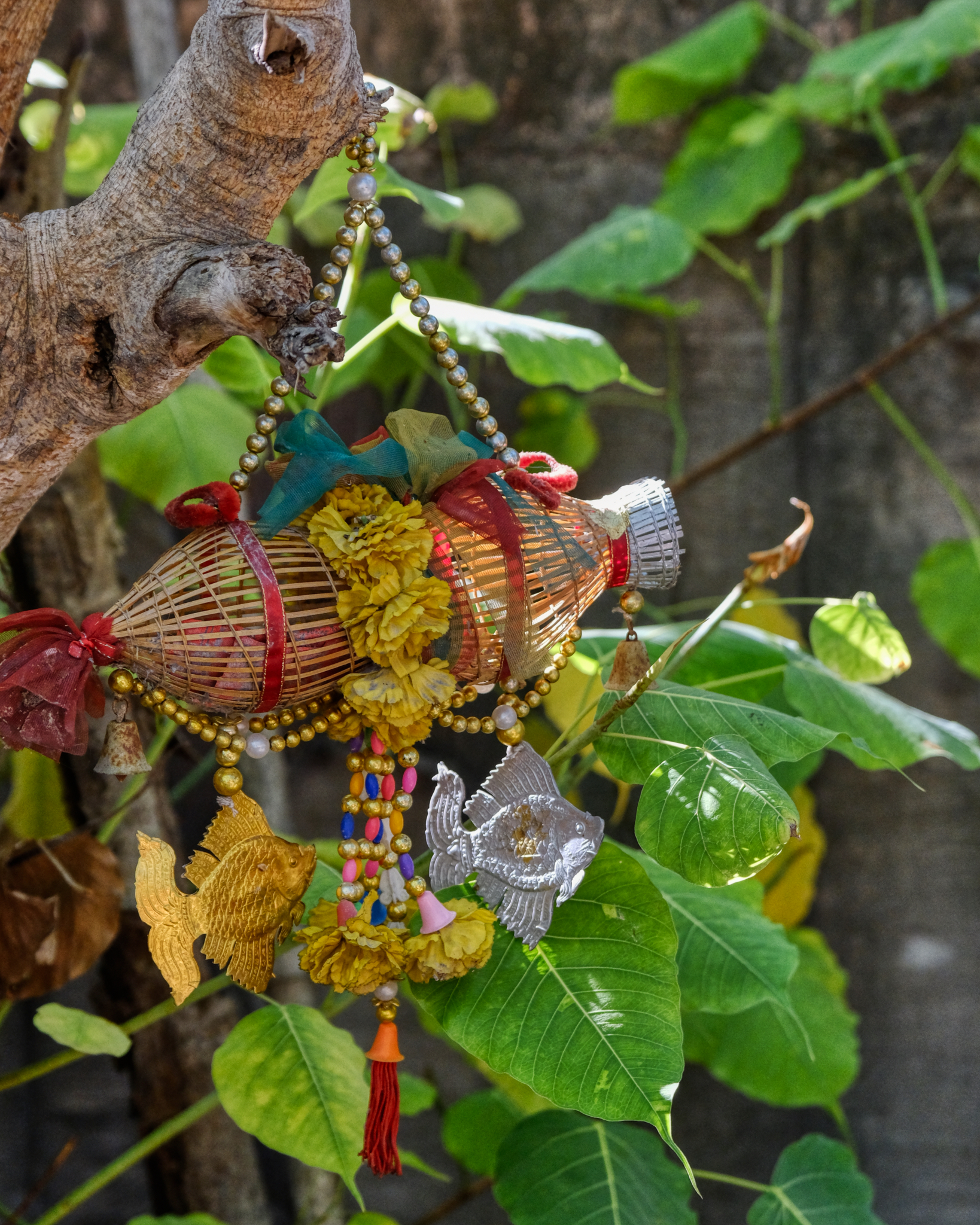 Slung here and there, votive charms festoon the temple trees.
Slung here and there, votive charms festoon the temple trees.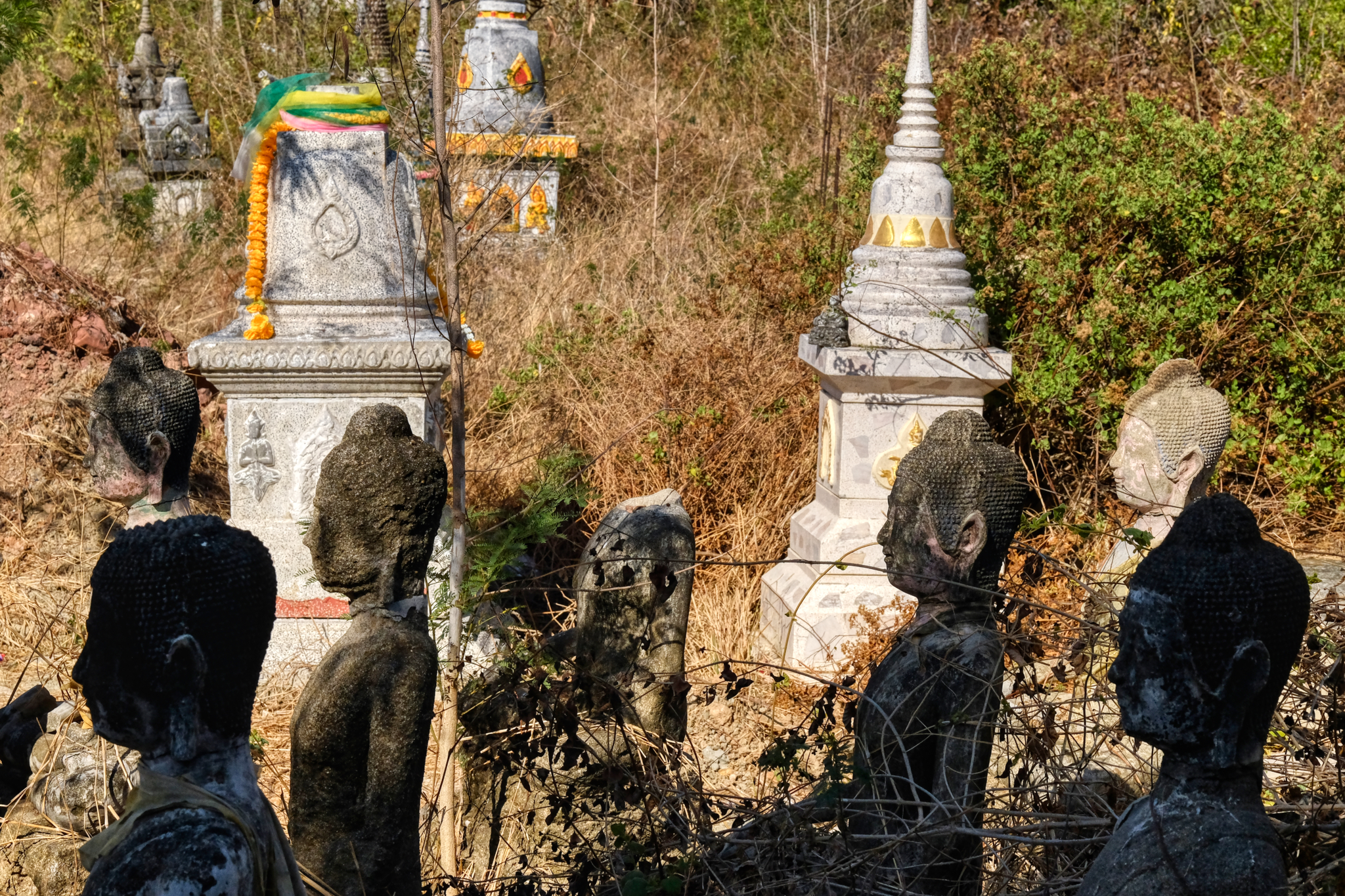 The reason I wanted to return to this Wat and bring friends, was because there used to be a tropical pine grove with old Buddha images in it . . . covered in pine needles. The pine forest is gone: slashed because they did not fit the plan of a doner with a new vision for this temple. The old Buddhas were still there, but looking like they have been 'mothballed' . . .
The reason I wanted to return to this Wat and bring friends, was because there used to be a tropical pine grove with old Buddha images in it . . . covered in pine needles. The pine forest is gone: slashed because they did not fit the plan of a doner with a new vision for this temple. The old Buddhas were still there, but looking like they have been 'mothballed' . . .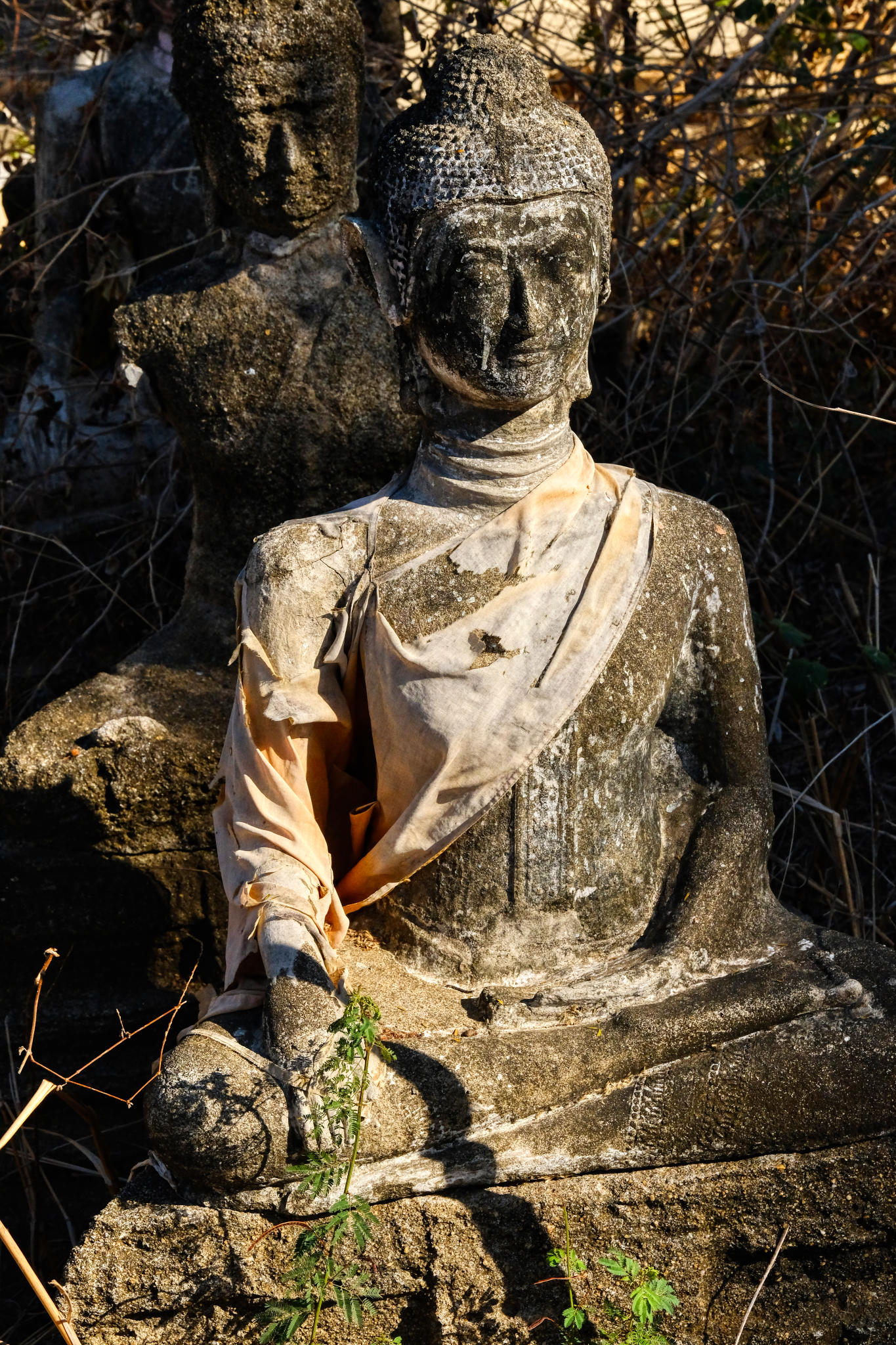 These old, and seemingly discarded, Buddha images seemed to me to be highly spiritual reminders of the project that the Buddha called us to try.
These old, and seemingly discarded, Buddha images seemed to me to be highly spiritual reminders of the project that the Buddha called us to try.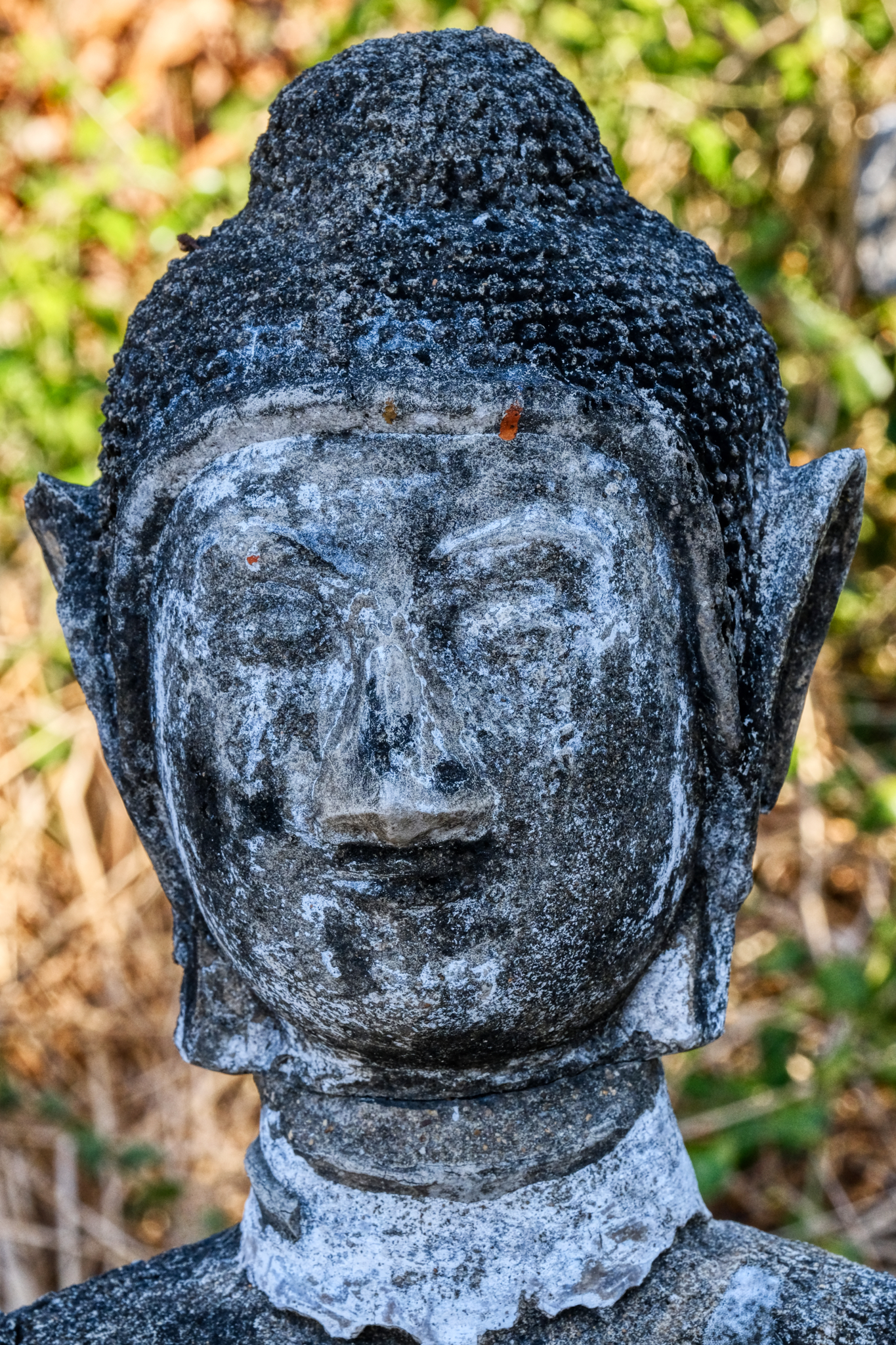 It seems like someone has taken a scraper to clean some of the moss of of this Buddha image.
It seems like someone has taken a scraper to clean some of the moss of of this Buddha image.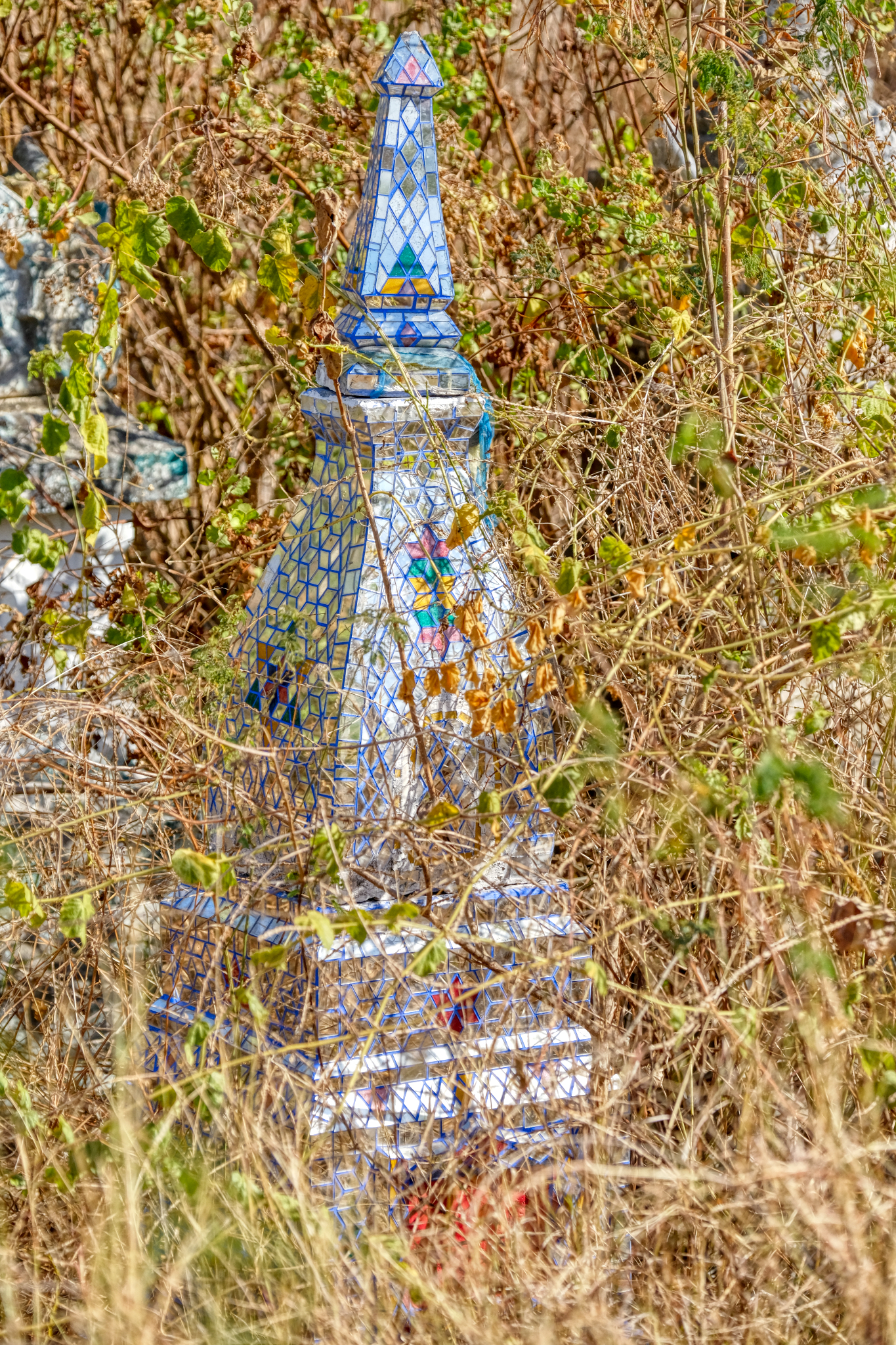 Still bright and shiny . . . an overgrown mirror chedi.
Still bright and shiny . . . an overgrown mirror chedi.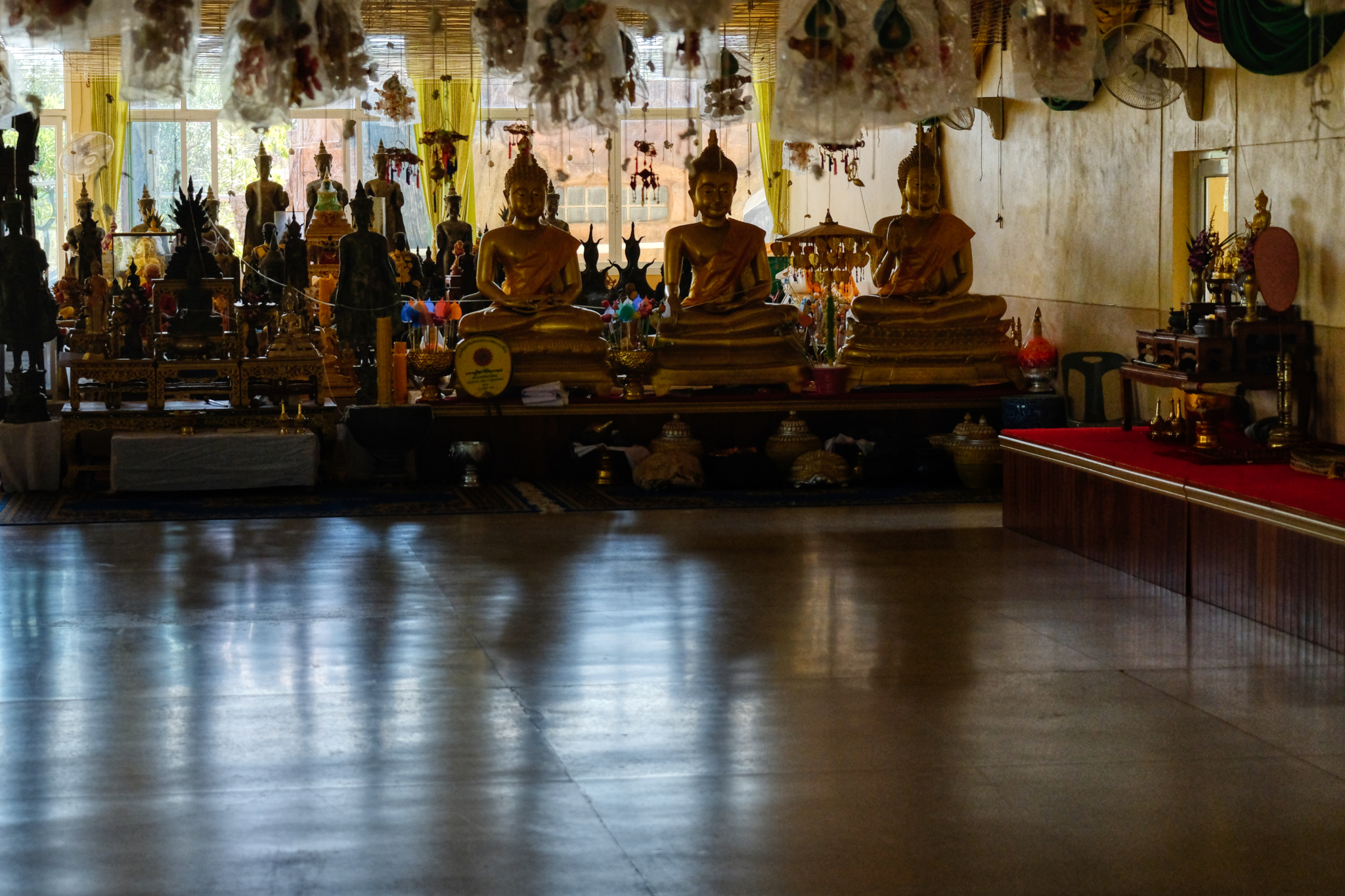 By this time of the morning (9:00am) it was already devilishly hot: well over 40c. We went inside to the shaded hall where two nice old ladies (helpers) brought us bottled water. The hall seemed temporary, perhaps being used until some other structure was being built.
By this time of the morning (9:00am) it was already devilishly hot: well over 40c. We went inside to the shaded hall where two nice old ladies (helpers) brought us bottled water. The hall seemed temporary, perhaps being used until some other structure was being built.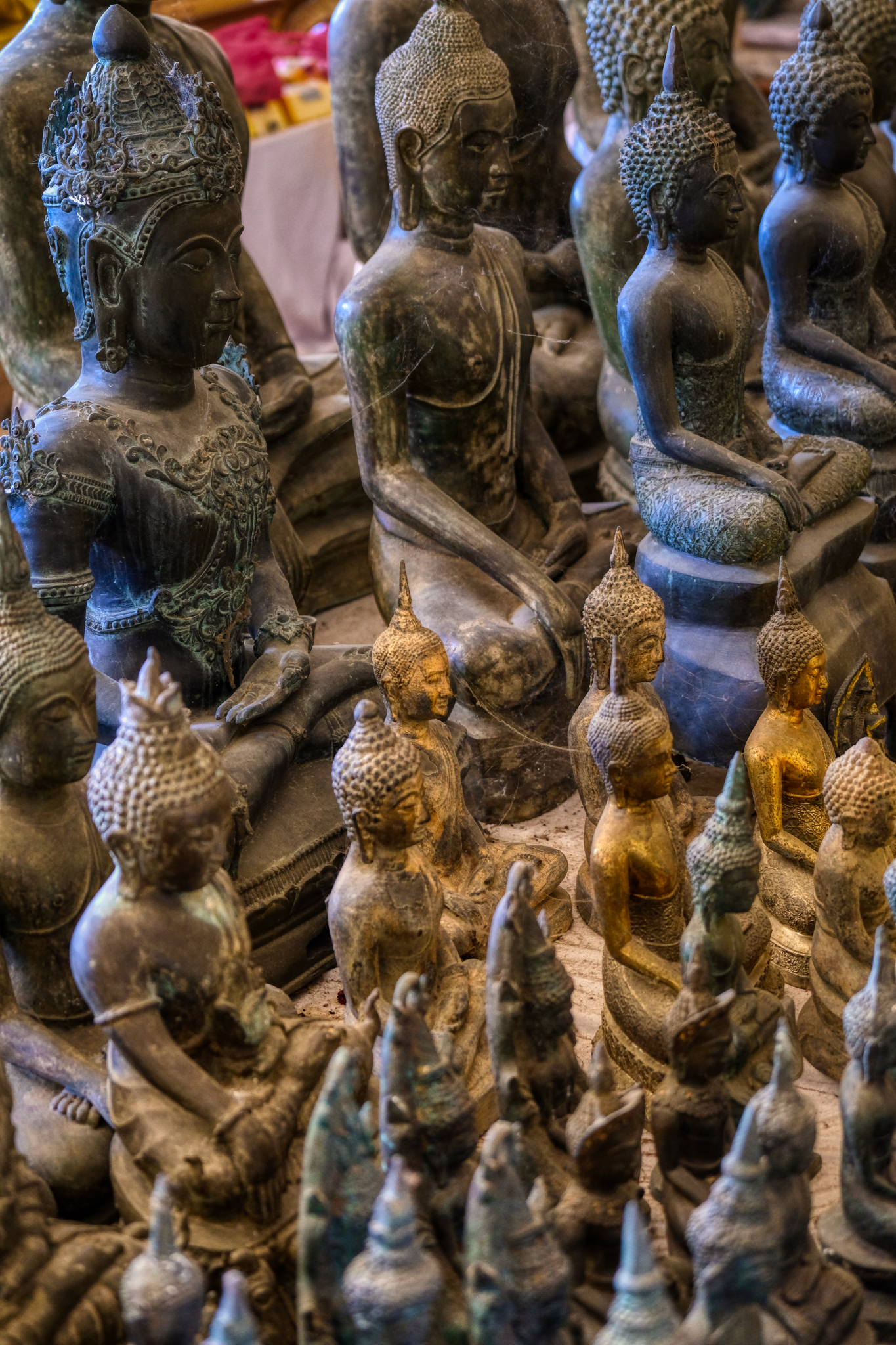 The altar was crowded with Buddha images. Fascinating.
The altar was crowded with Buddha images. Fascinating.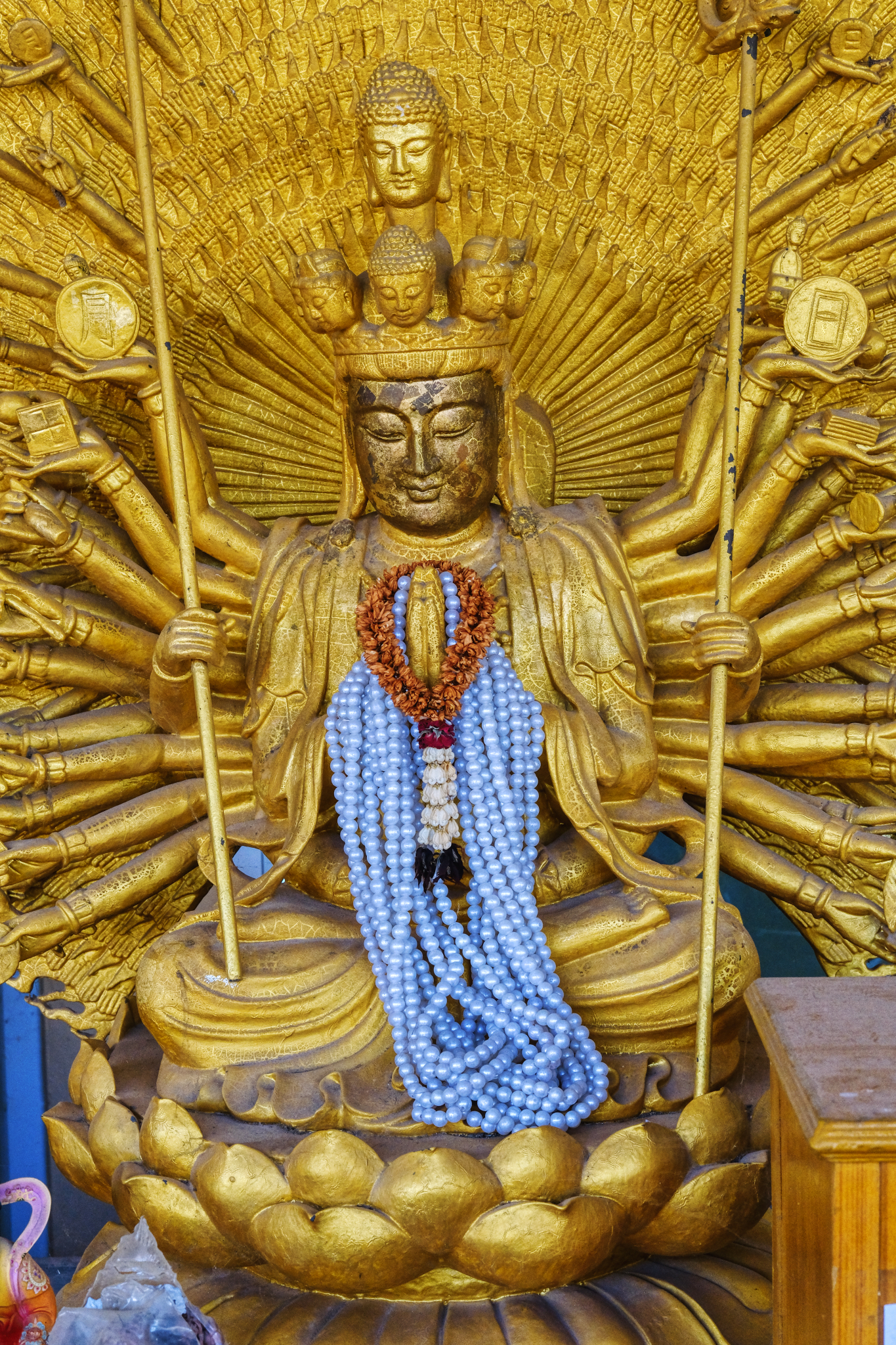 There seemed to be many more Hindu symbols in this Wat than others I have visited. I want a hat like this!
There seemed to be many more Hindu symbols in this Wat than others I have visited. I want a hat like this!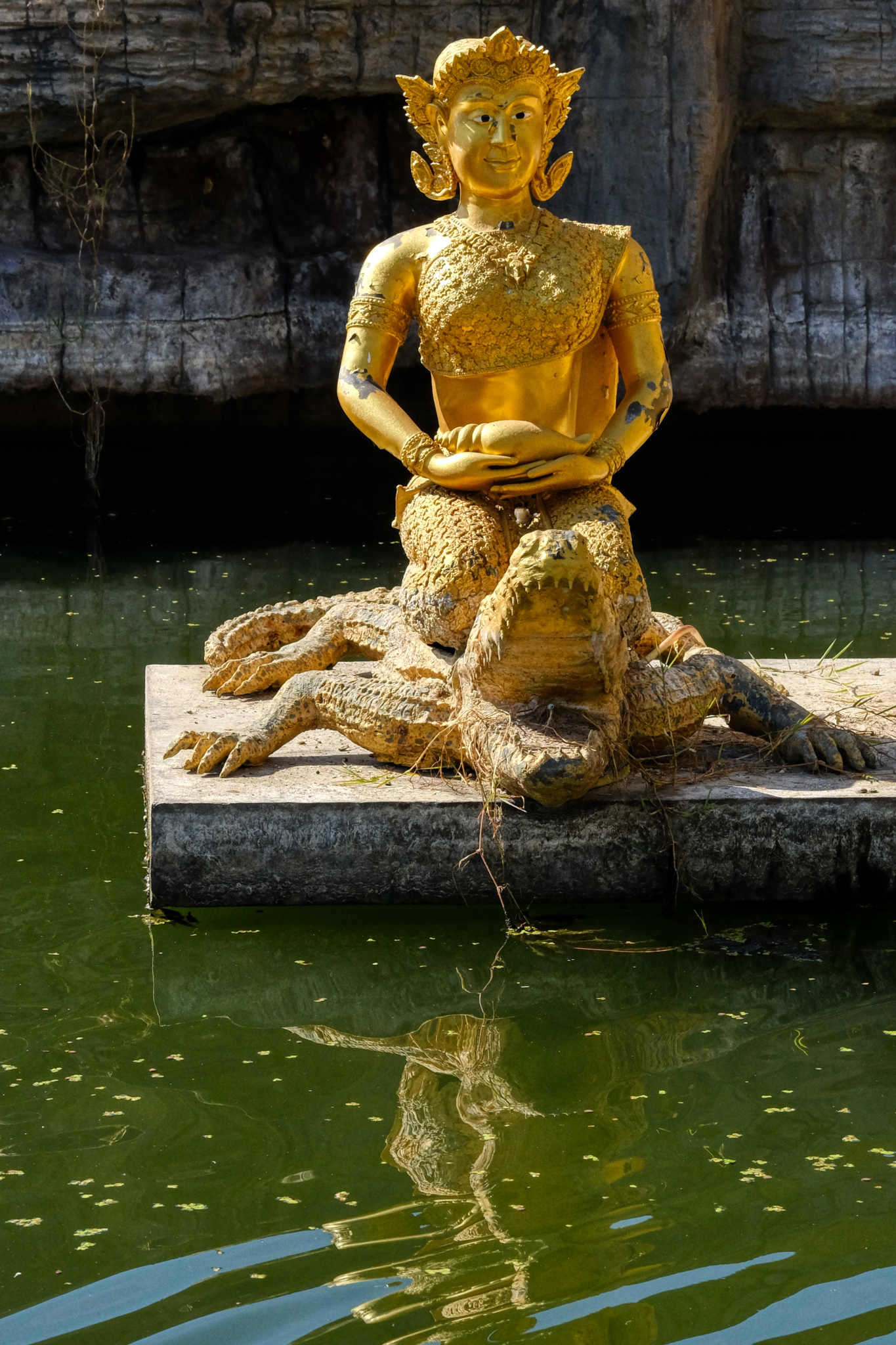 "What, me worry?" Supreme detachment. We left the Wat and headed back to the highway where we saw a sign pointing to small road and the name of another Wat . . .
"What, me worry?" Supreme detachment. We left the Wat and headed back to the highway where we saw a sign pointing to small road and the name of another Wat . . .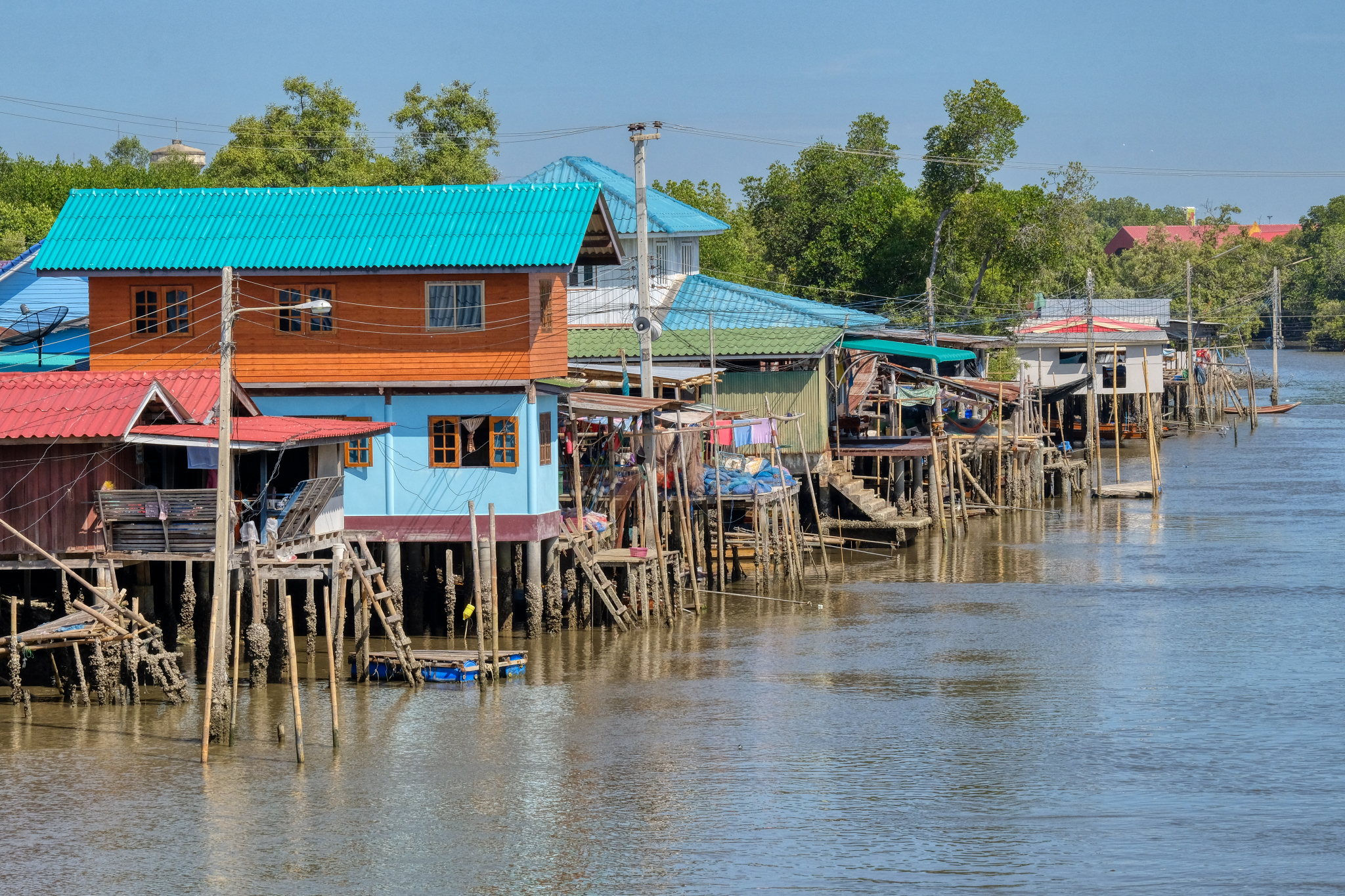 A short drive up a small rural road in search of another Buddhist temple to explore. We didn't find the temple, but we did find this wonderful village built on a canal not far from where it emptied into the Gulf of Thailand.
A short drive up a small rural road in search of another Buddhist temple to explore. We didn't find the temple, but we did find this wonderful village built on a canal not far from where it emptied into the Gulf of Thailand.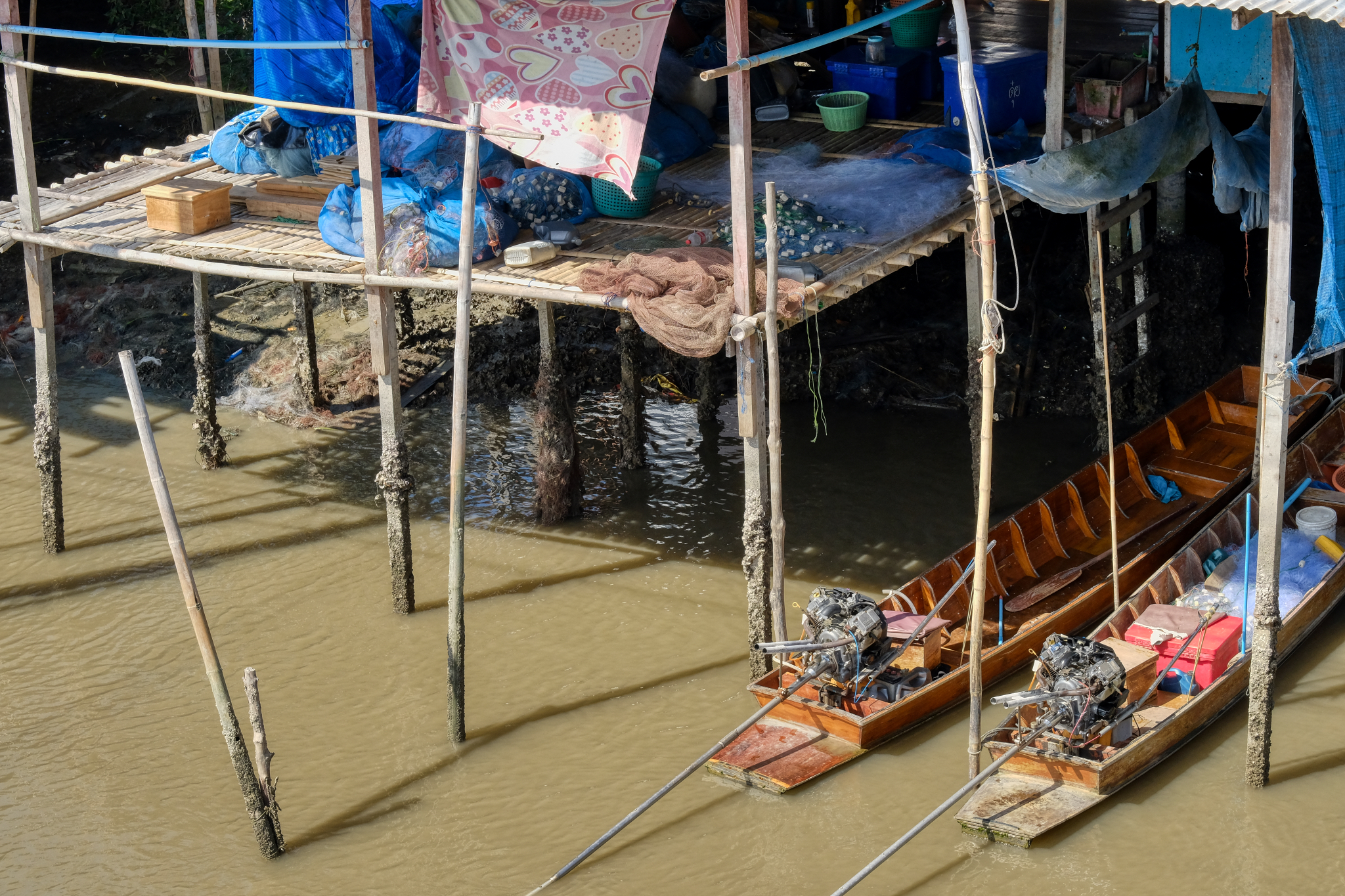 I love these canal side fishing villages . . . they are so picturesque . . . and visually complex.
I love these canal side fishing villages . . . they are so picturesque . . . and visually complex.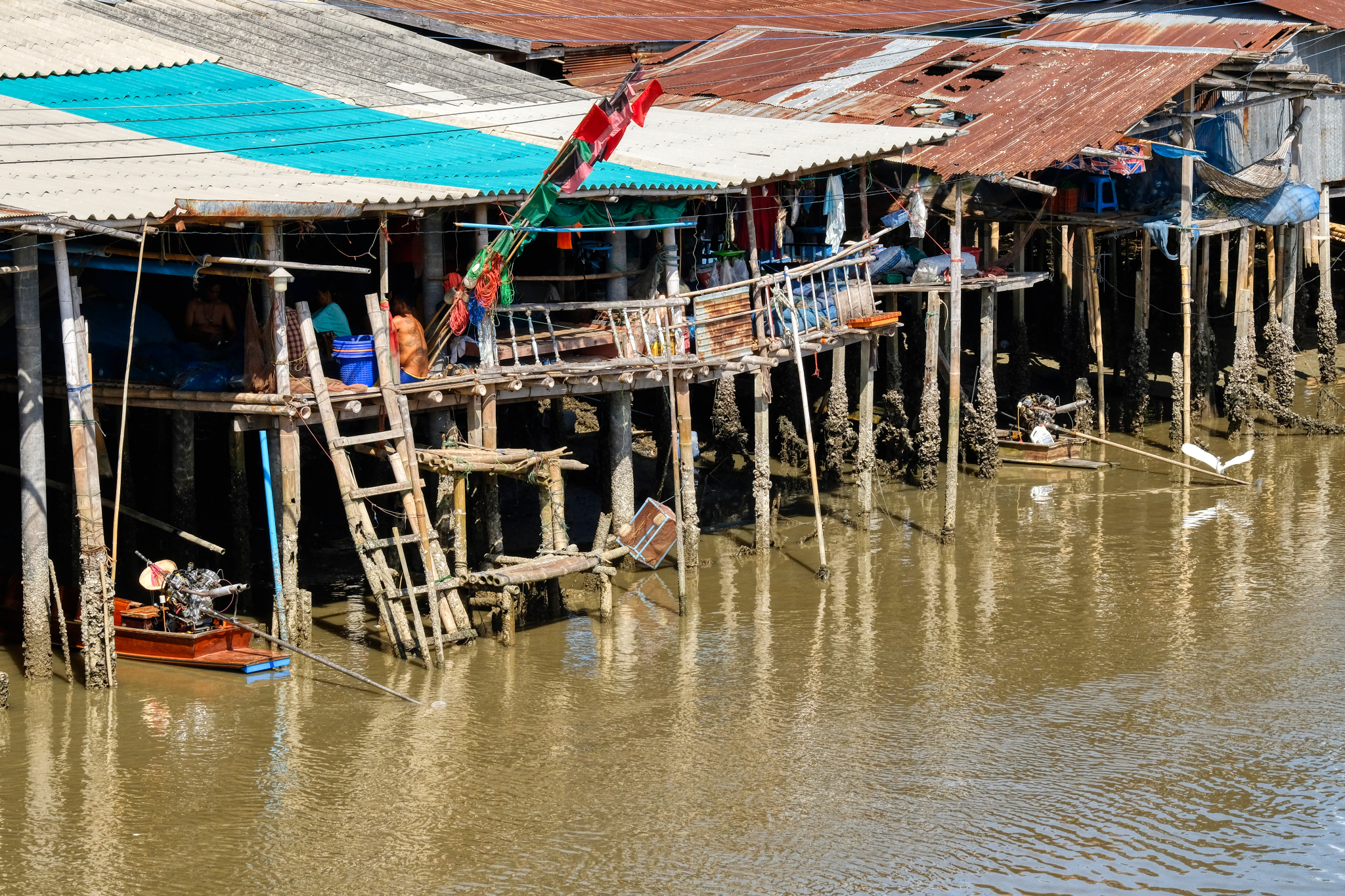 Too hot to do anything other than to sit around with your friends and family and mend nets . . . unless you are a falang photographer, that is!
Too hot to do anything other than to sit around with your friends and family and mend nets . . . unless you are a falang photographer, that is!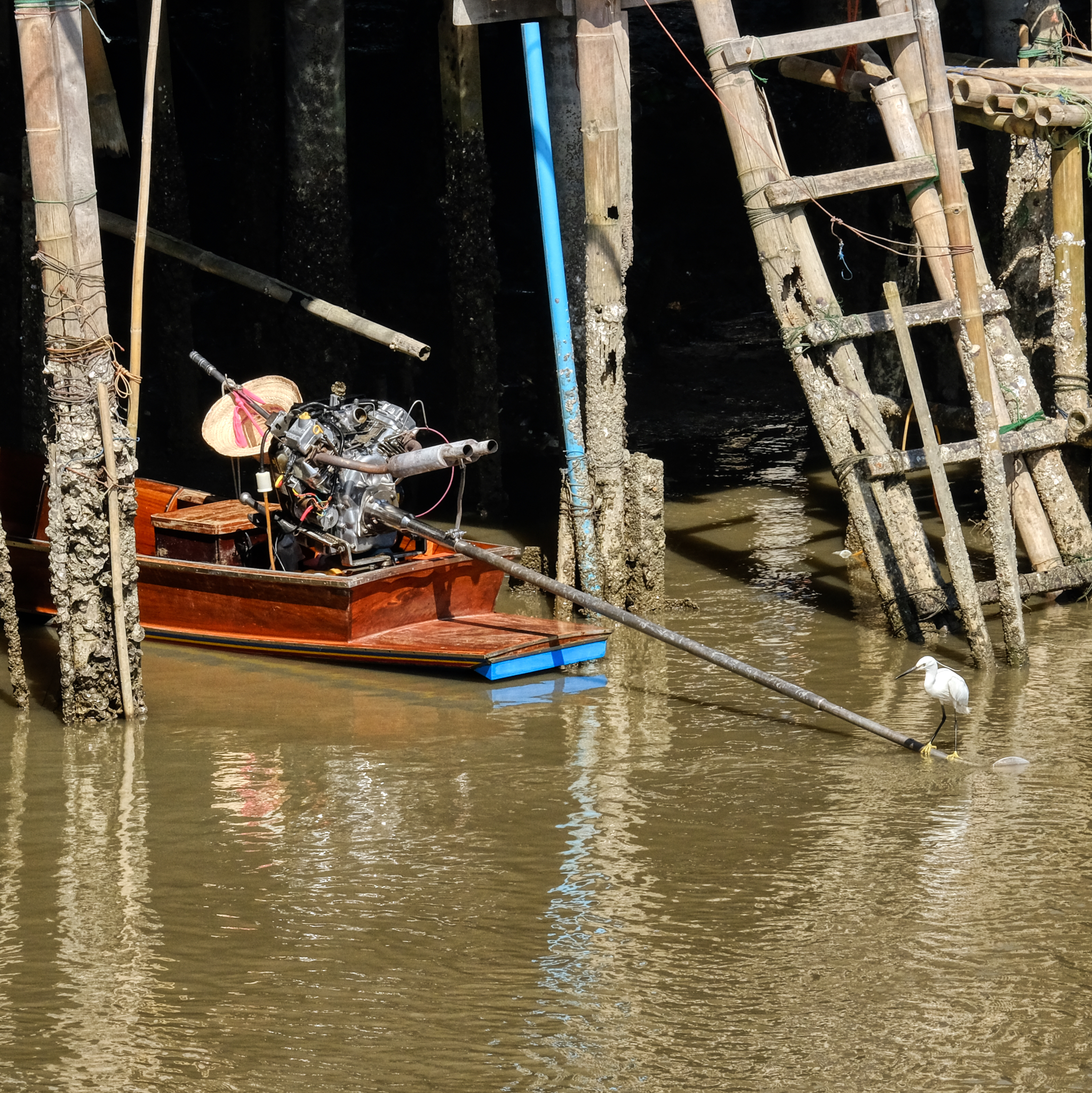 I'm not sure what the make of this V-2 long-tail boat engine is, but it was a beautiful scene.
I'm not sure what the make of this V-2 long-tail boat engine is, but it was a beautiful scene.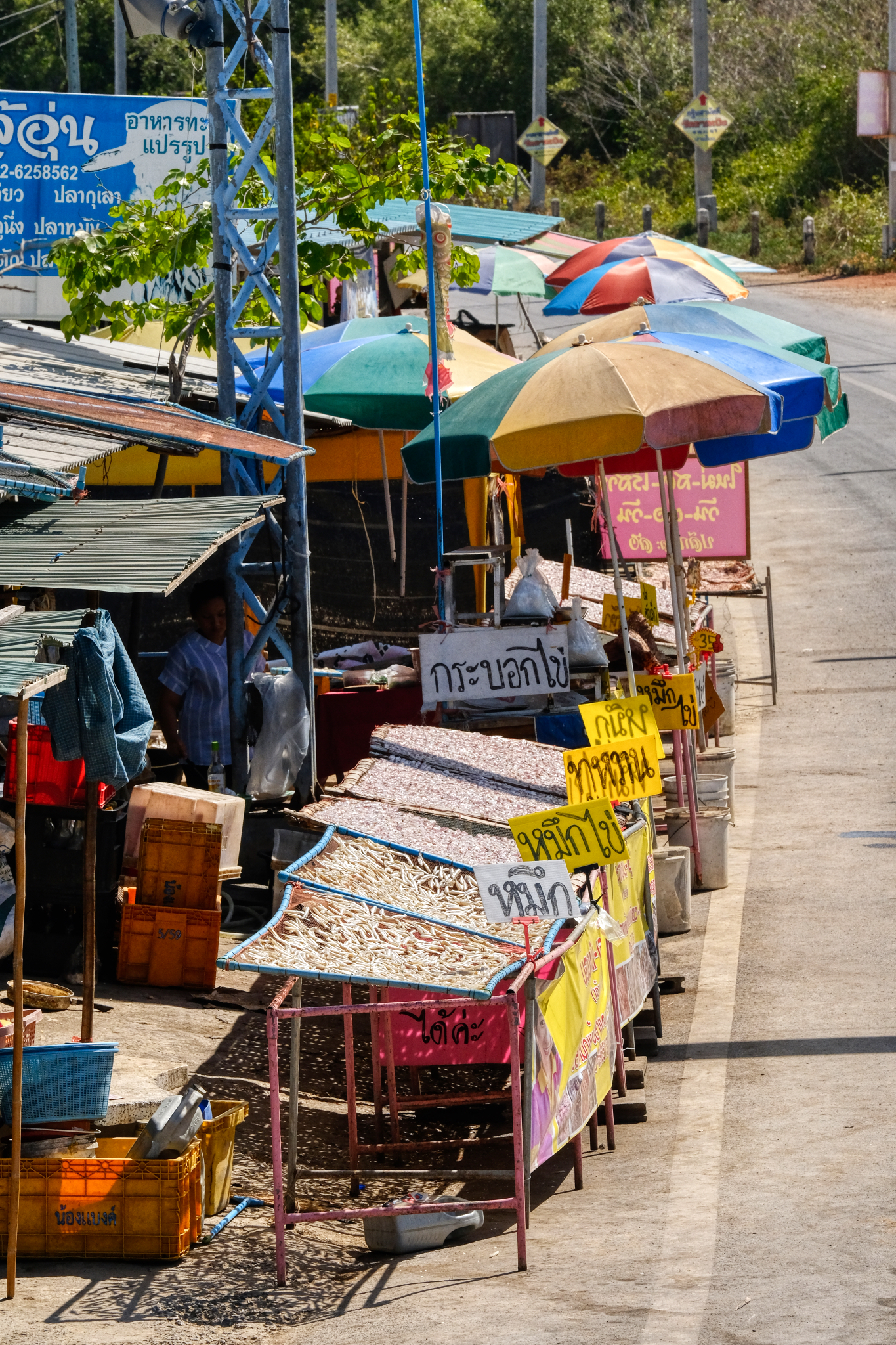 There was a lovely roadside fish market just outside the hamlet.
There was a lovely roadside fish market just outside the hamlet.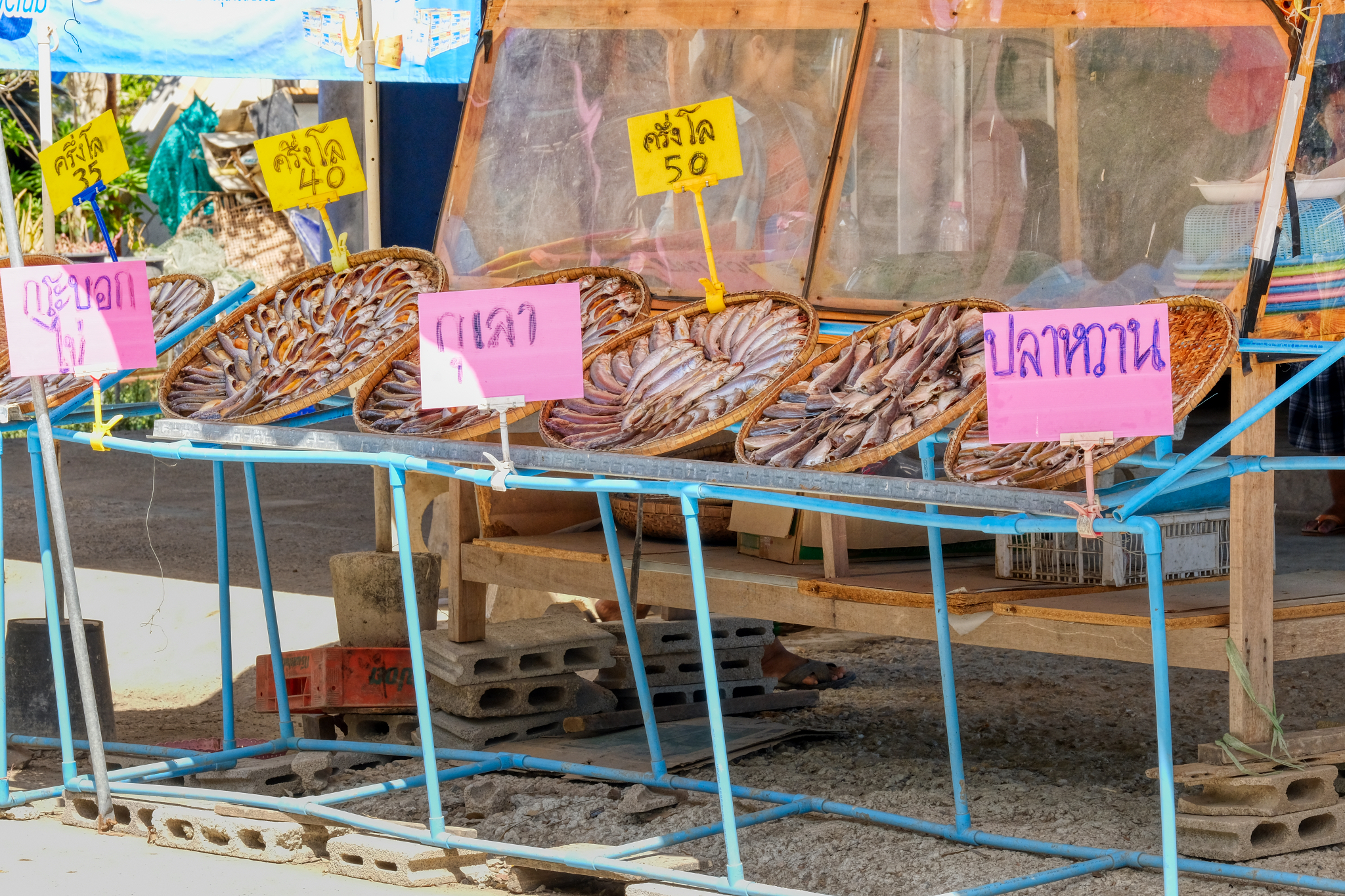 Many different kinds, sizes, and colors of fish . . . all inviting visual exploration.
Many different kinds, sizes, and colors of fish . . . all inviting visual exploration.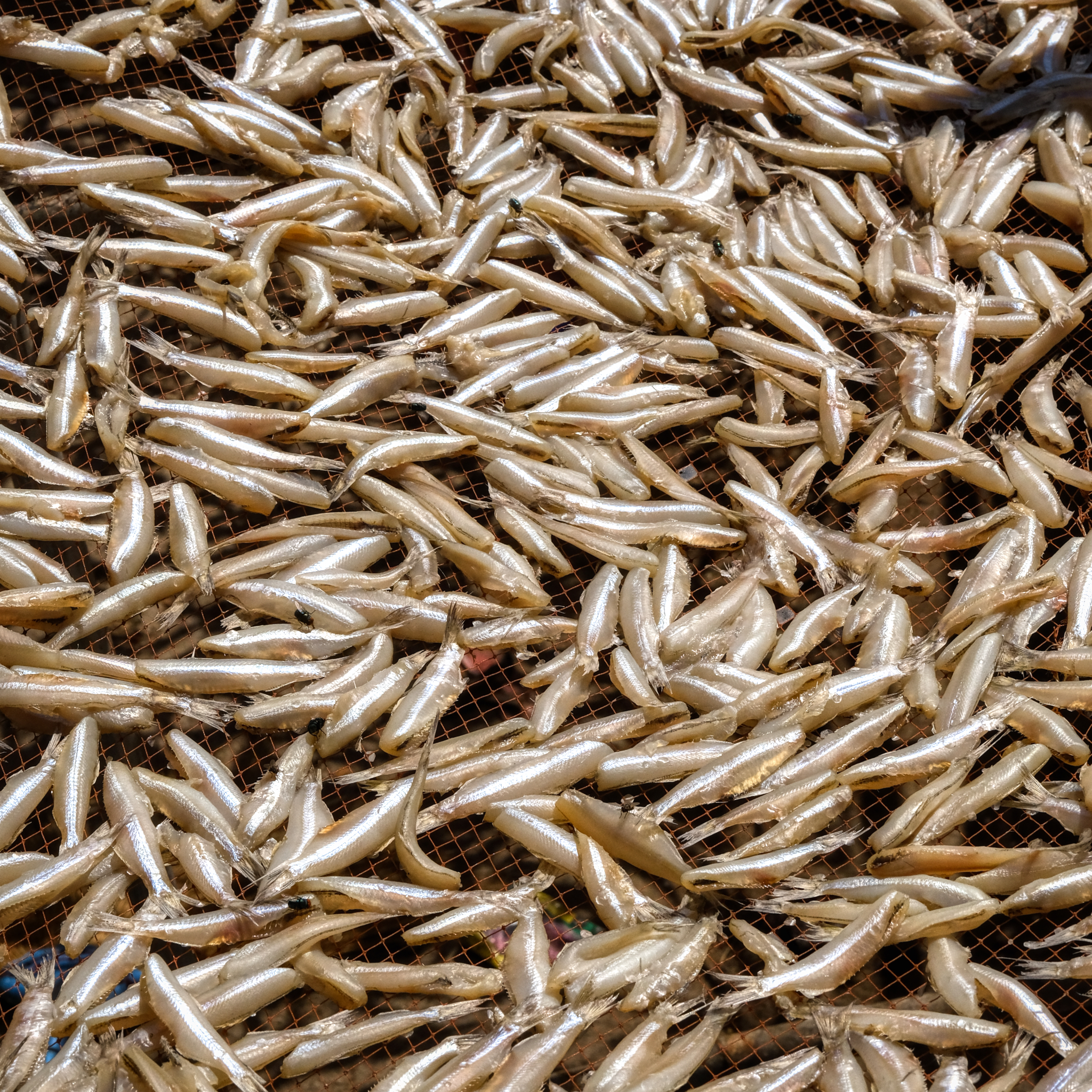 These small 'smelt' are very tasty when deep fat fried. One of my favorites.
These small 'smelt' are very tasty when deep fat fried. One of my favorites.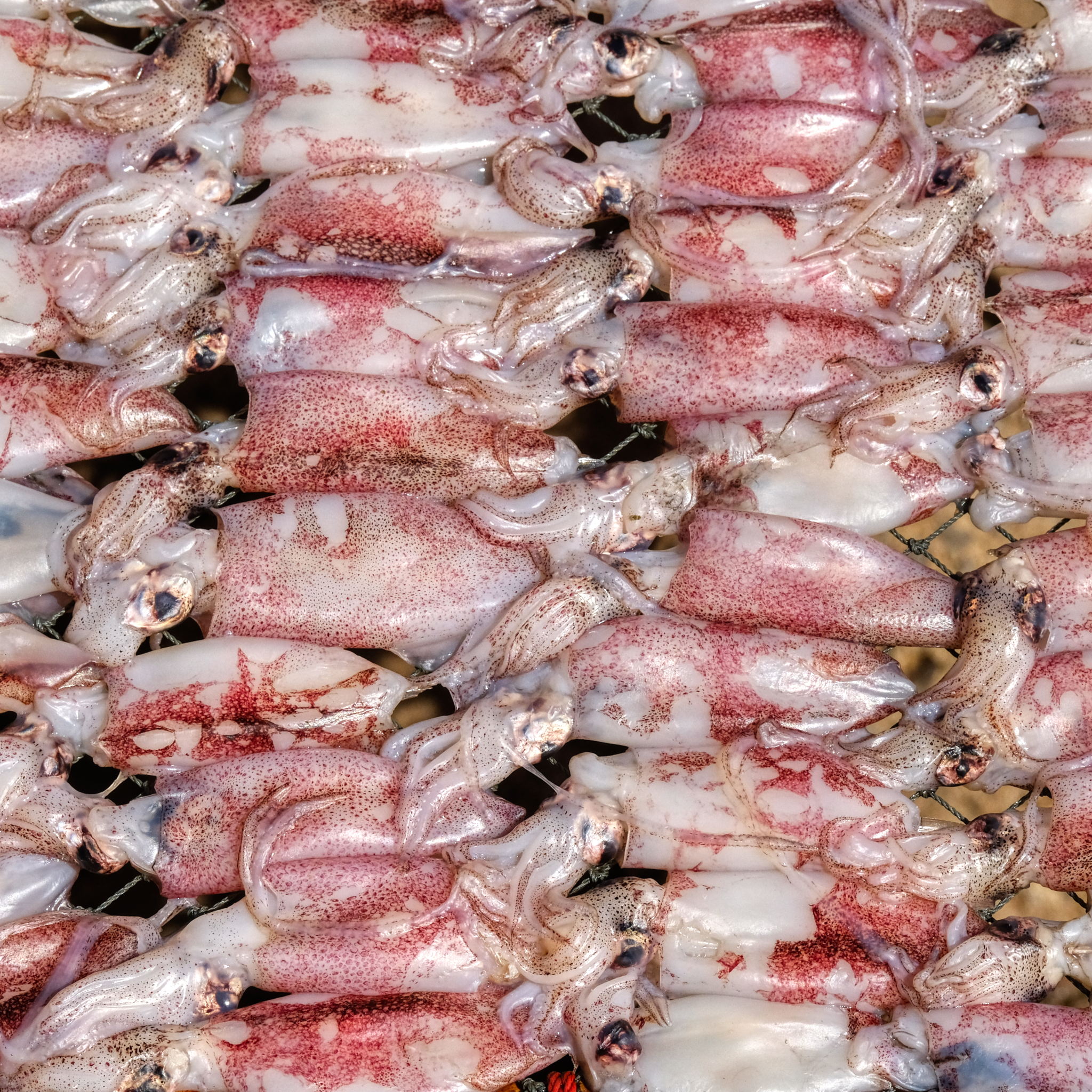 Delicious-looking baby squid. My favorite.
Delicious-looking baby squid. My favorite.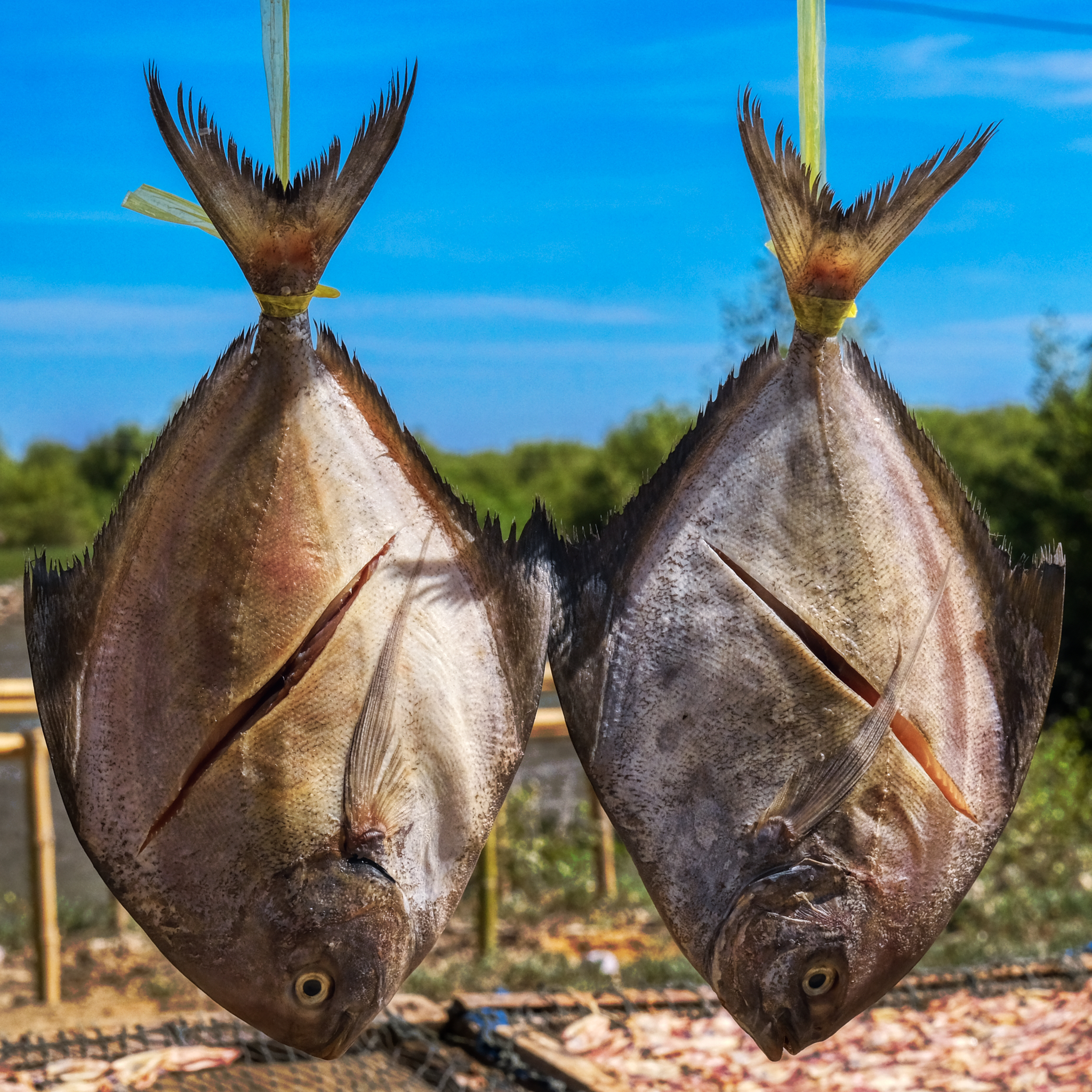 Good looking fish.
Good looking fish.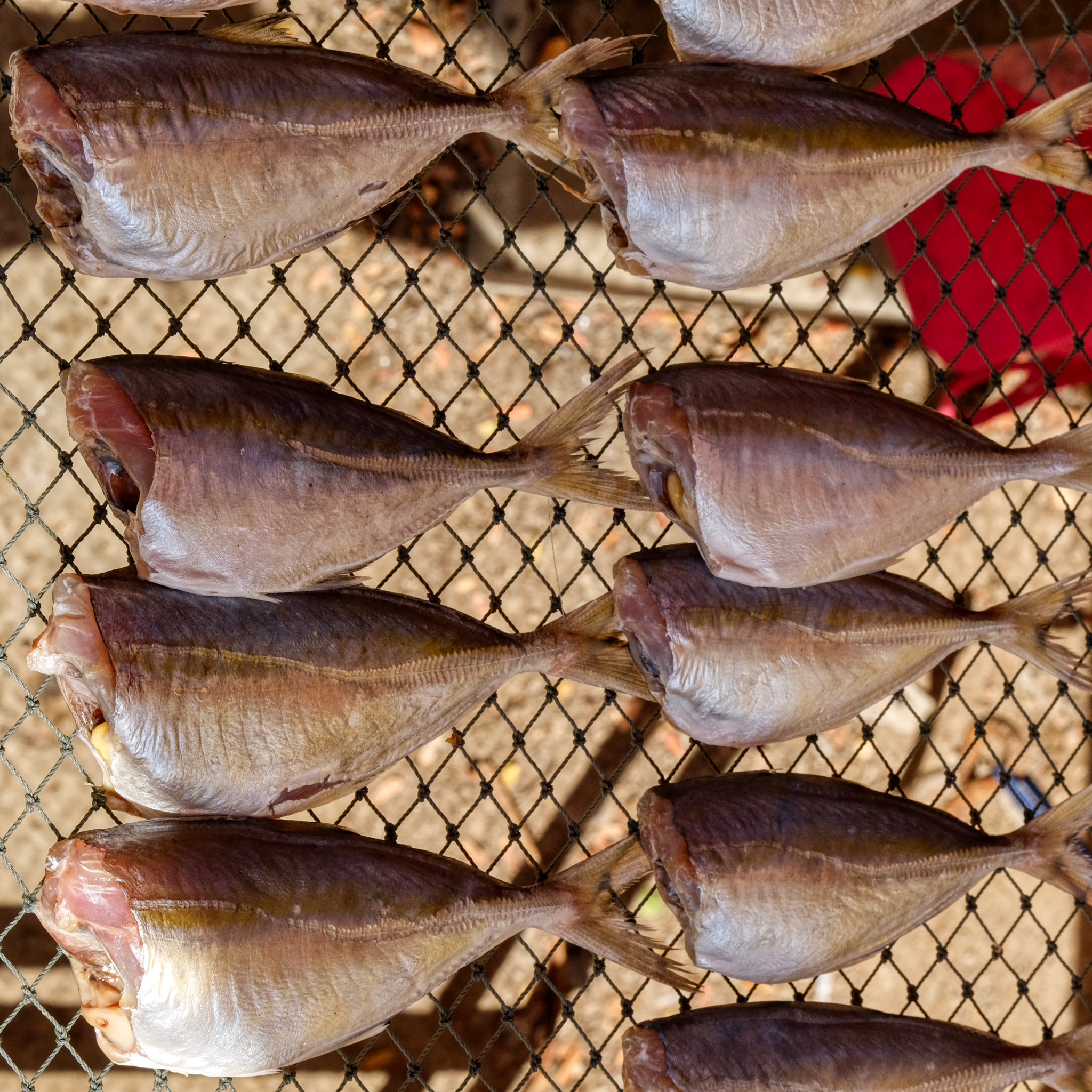 The drying fish are meant to be used in soups and curries.
The drying fish are meant to be used in soups and curries. But, of course, the most visually interesting fish were the baskets with their intricately patterned fish on display.
But, of course, the most visually interesting fish were the baskets with their intricately patterned fish on display. While I was photographing these fish baskets, I was thinking that these would print and frame very beautifully as a set.
While I was photographing these fish baskets, I was thinking that these would print and frame very beautifully as a set. Perhaps I should come back here with a big tripod and reflectors for more professional, and better framed, shots . . .
Perhaps I should come back here with a big tripod and reflectors for more professional, and better framed, shots . . .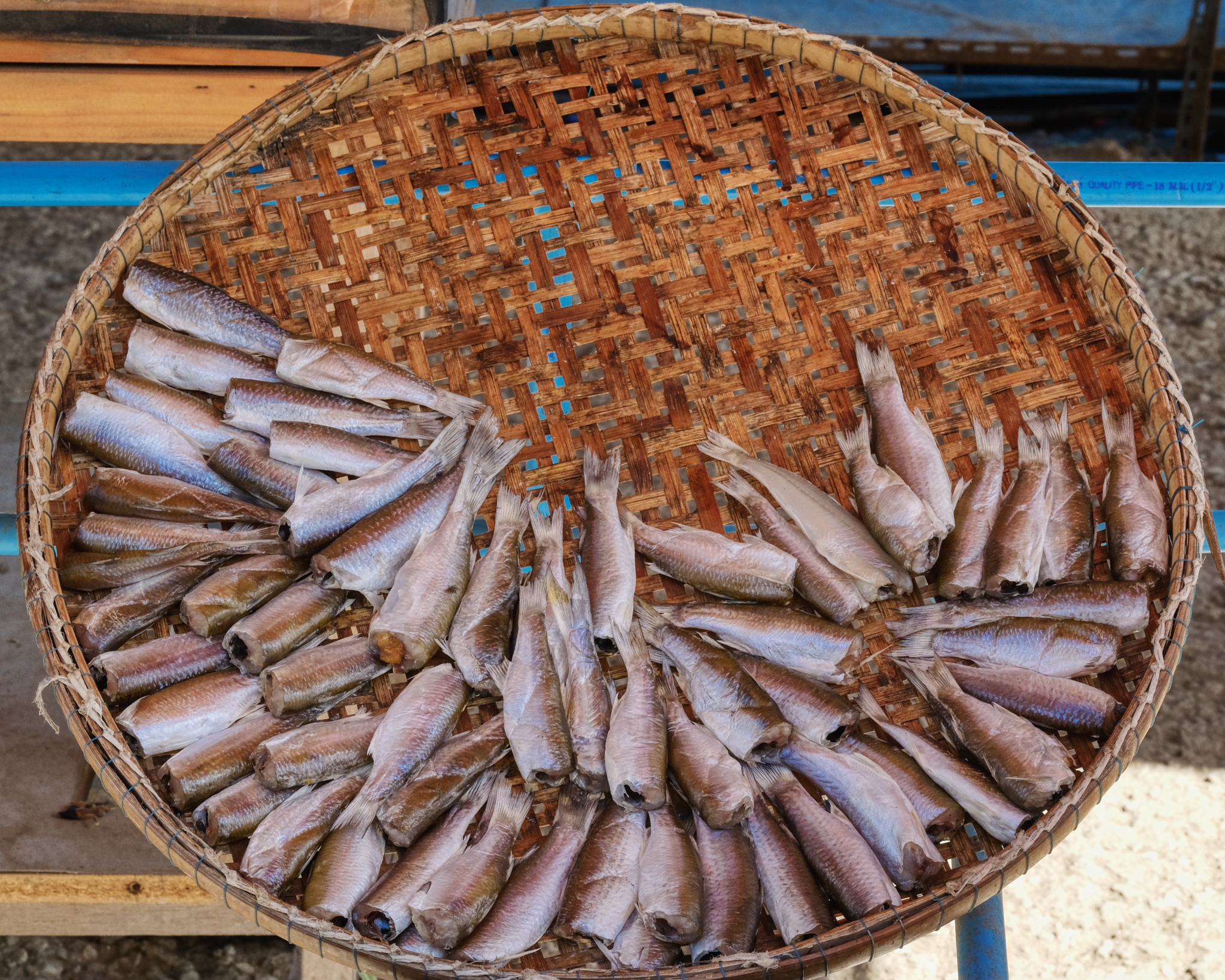 I took many, many photos of these beautiful fish baskets, but only post a few here.
I took many, many photos of these beautiful fish baskets, but only post a few here.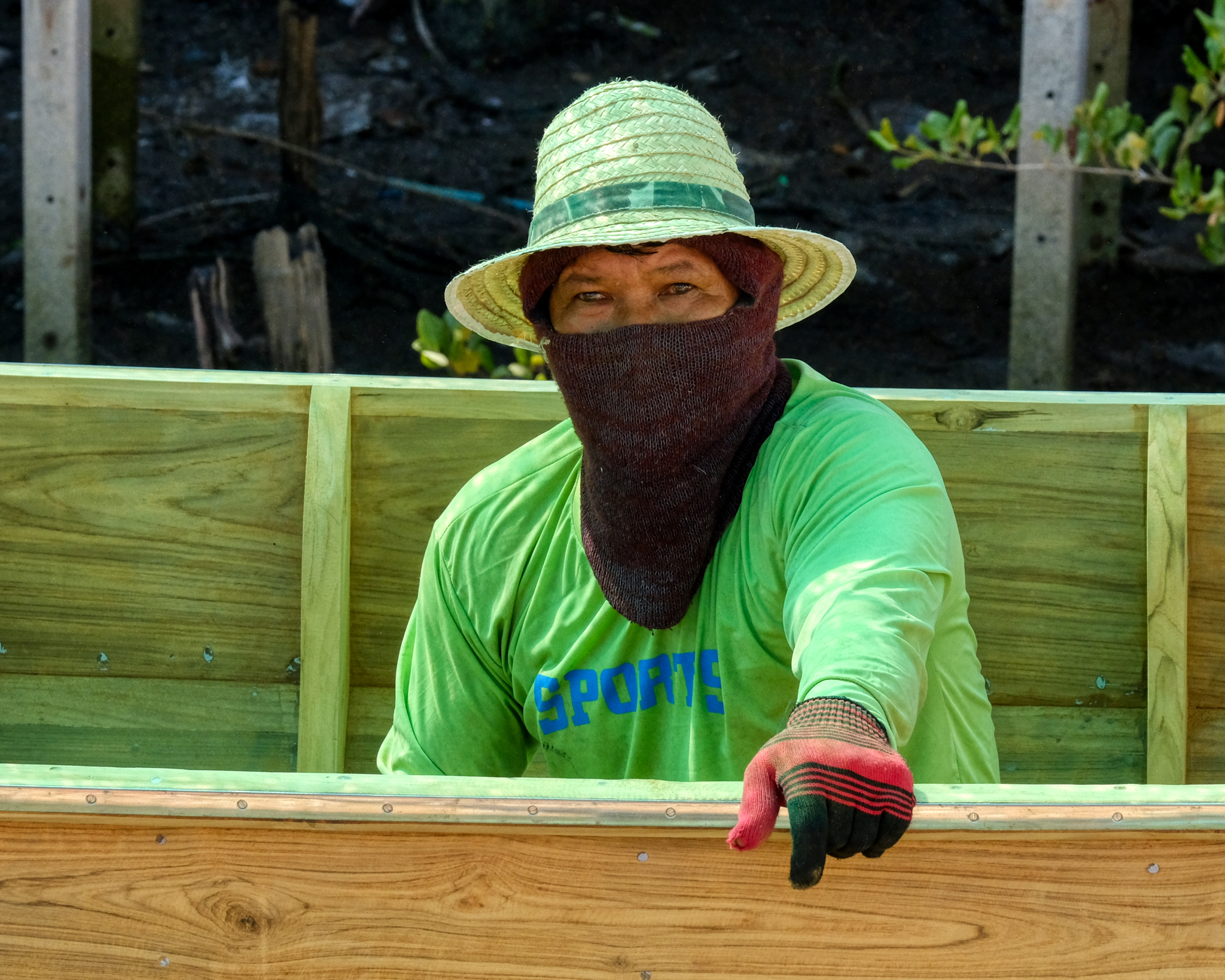 We asked one of the fish hawkers how to get to the seashore and they pointed to a small road. We passed this woman busily building a boat on the roadside in tremendous heat and humidity.
We asked one of the fish hawkers how to get to the seashore and they pointed to a small road. We passed this woman busily building a boat on the roadside in tremendous heat and humidity.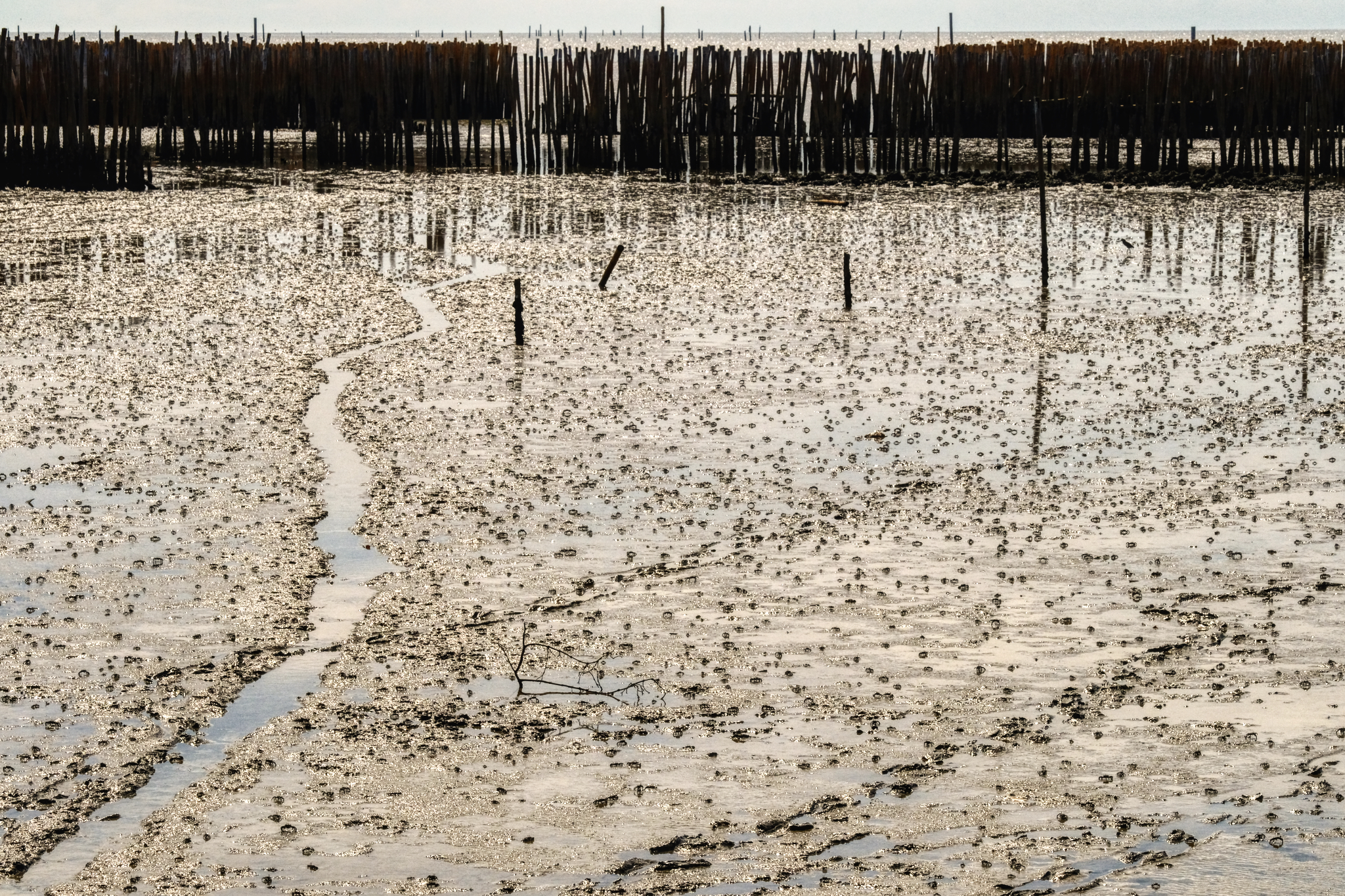 The small dirt road dumped us out at the foot of these mud flats . . . crawling with small crabs. These are the mud flats famous for a particular type of small clam that the Thais absolutely love to eat.
The small dirt road dumped us out at the foot of these mud flats . . . crawling with small crabs. These are the mud flats famous for a particular type of small clam that the Thais absolutely love to eat. 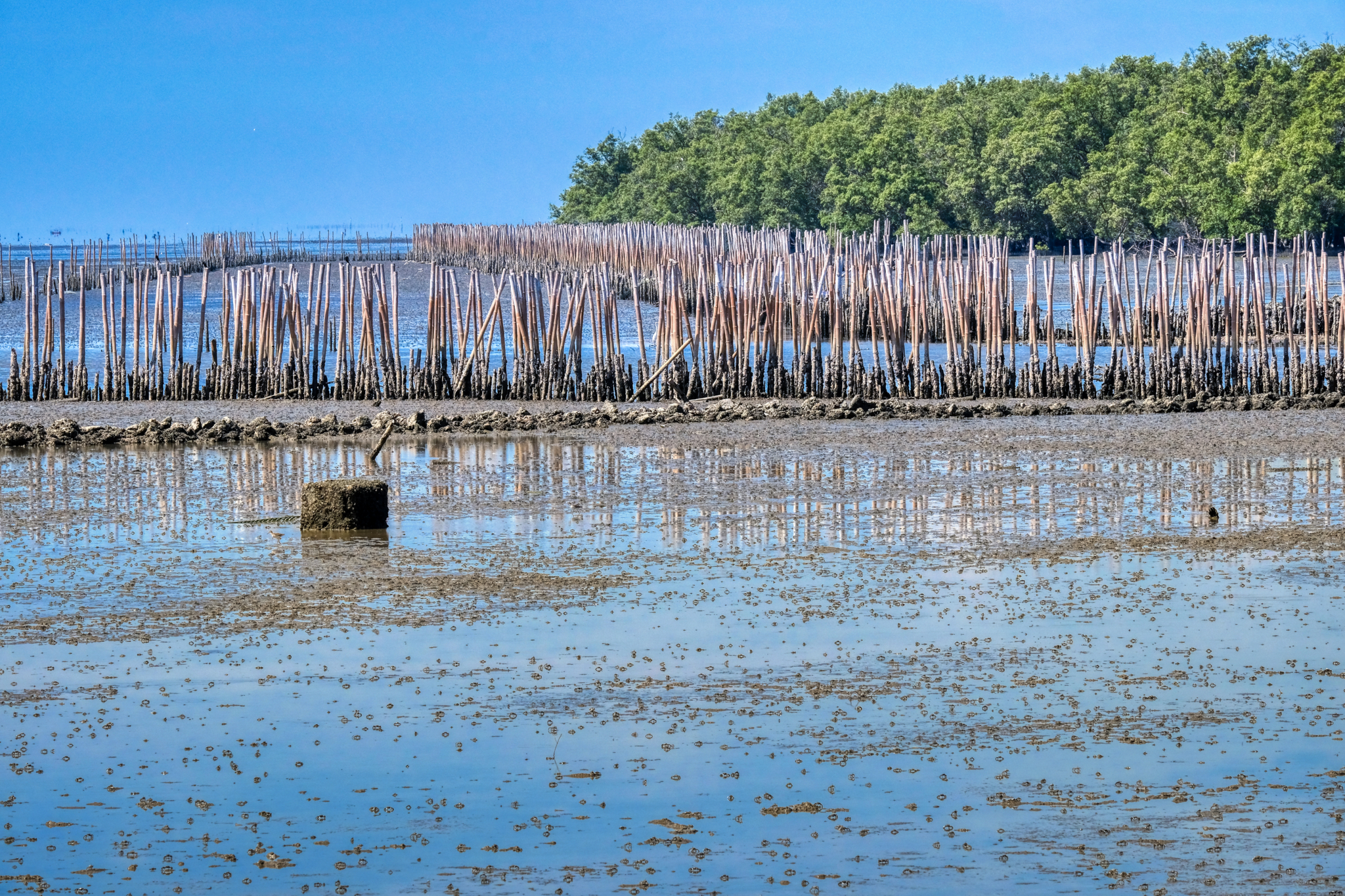 The elaborate bamboo barrier works extended for miles and miles along these mud flats . . . and off into the horizon of the Gulf of Thailand.
The elaborate bamboo barrier works extended for miles and miles along these mud flats . . . and off into the horizon of the Gulf of Thailand.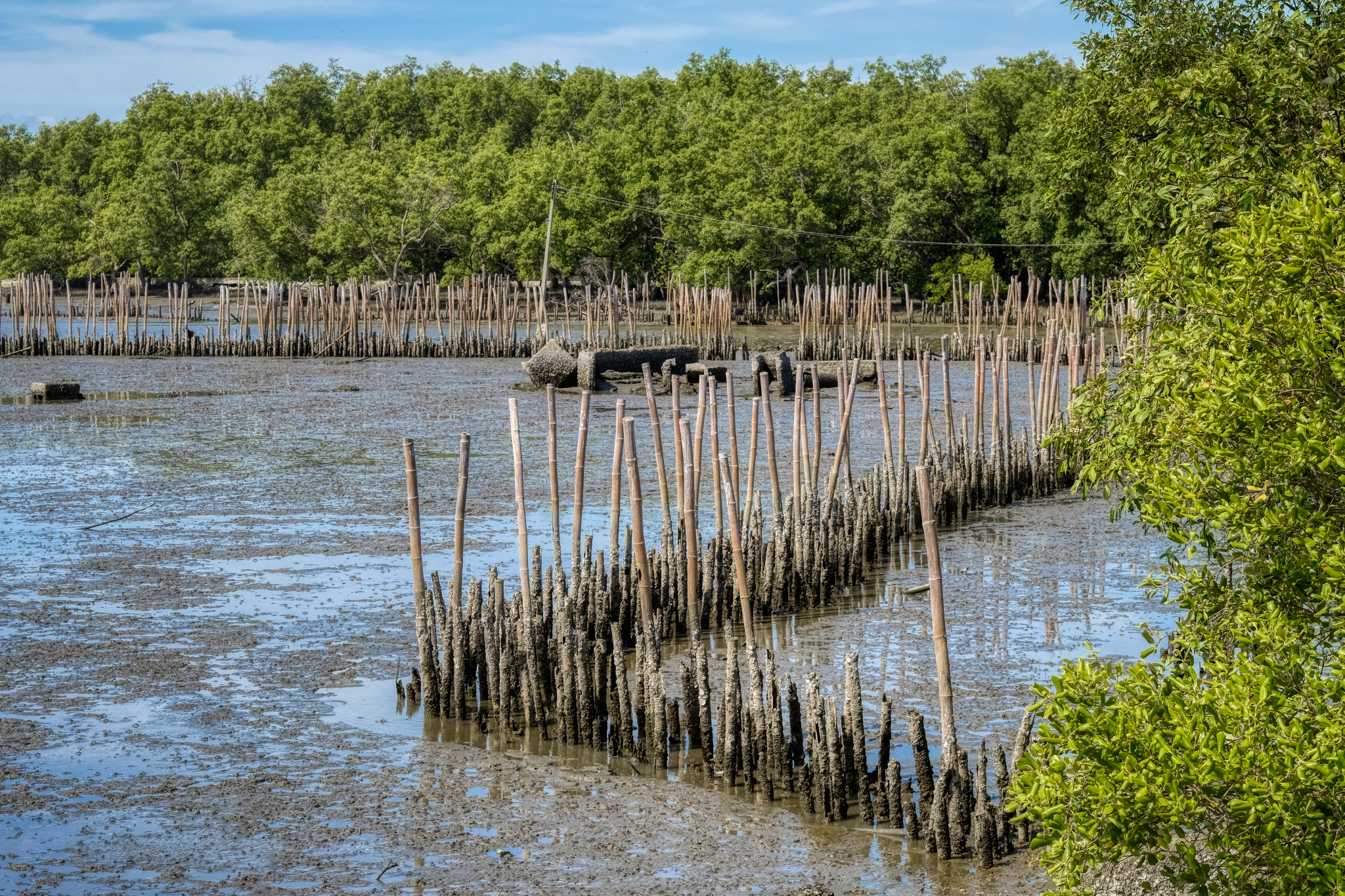 At a point of a small canal entering the mud flats there were many kinds of barrier works.
At a point of a small canal entering the mud flats there were many kinds of barrier works.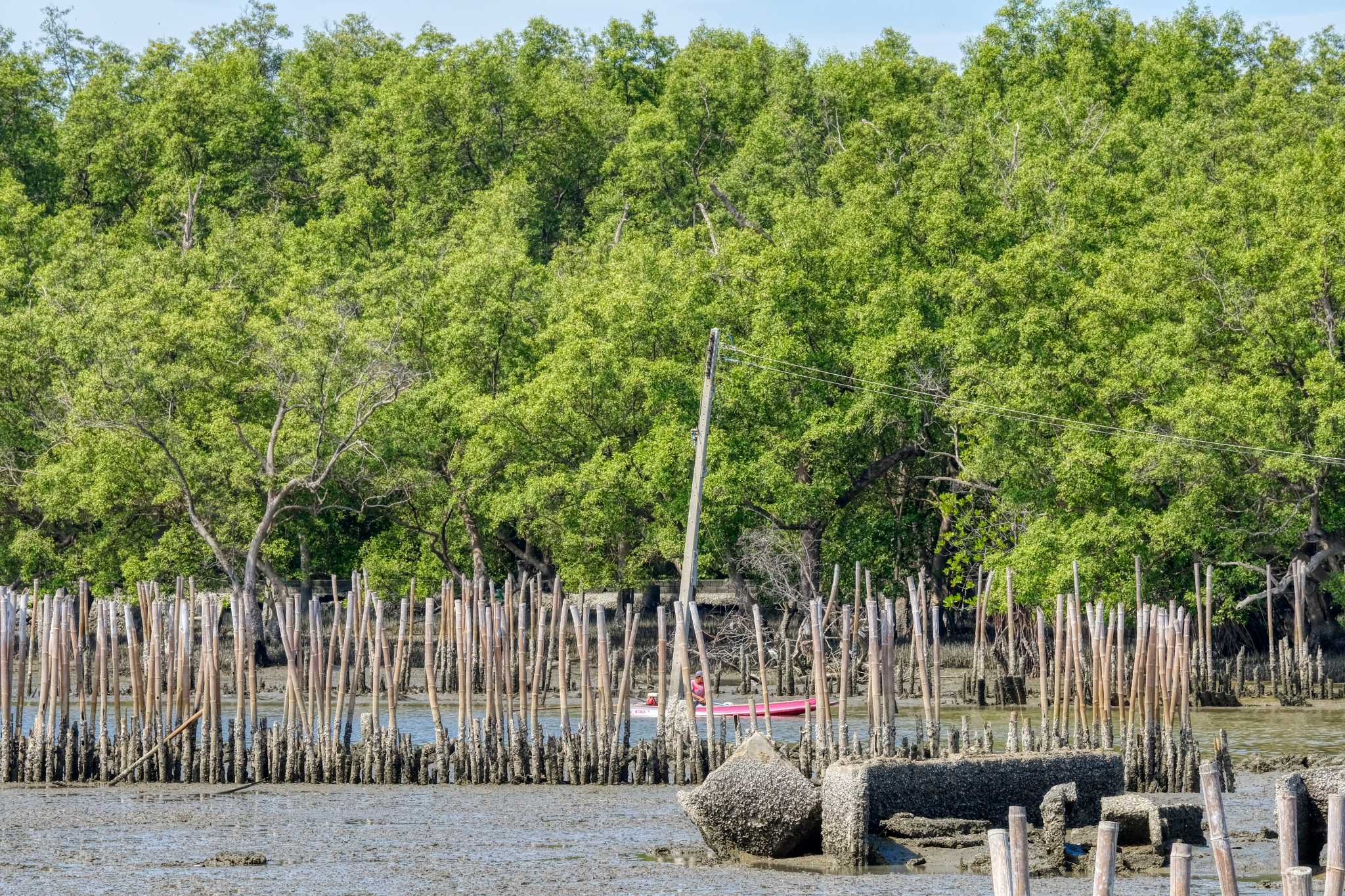 A workman out doing maintenance on the bamboo works.
A workman out doing maintenance on the bamboo works.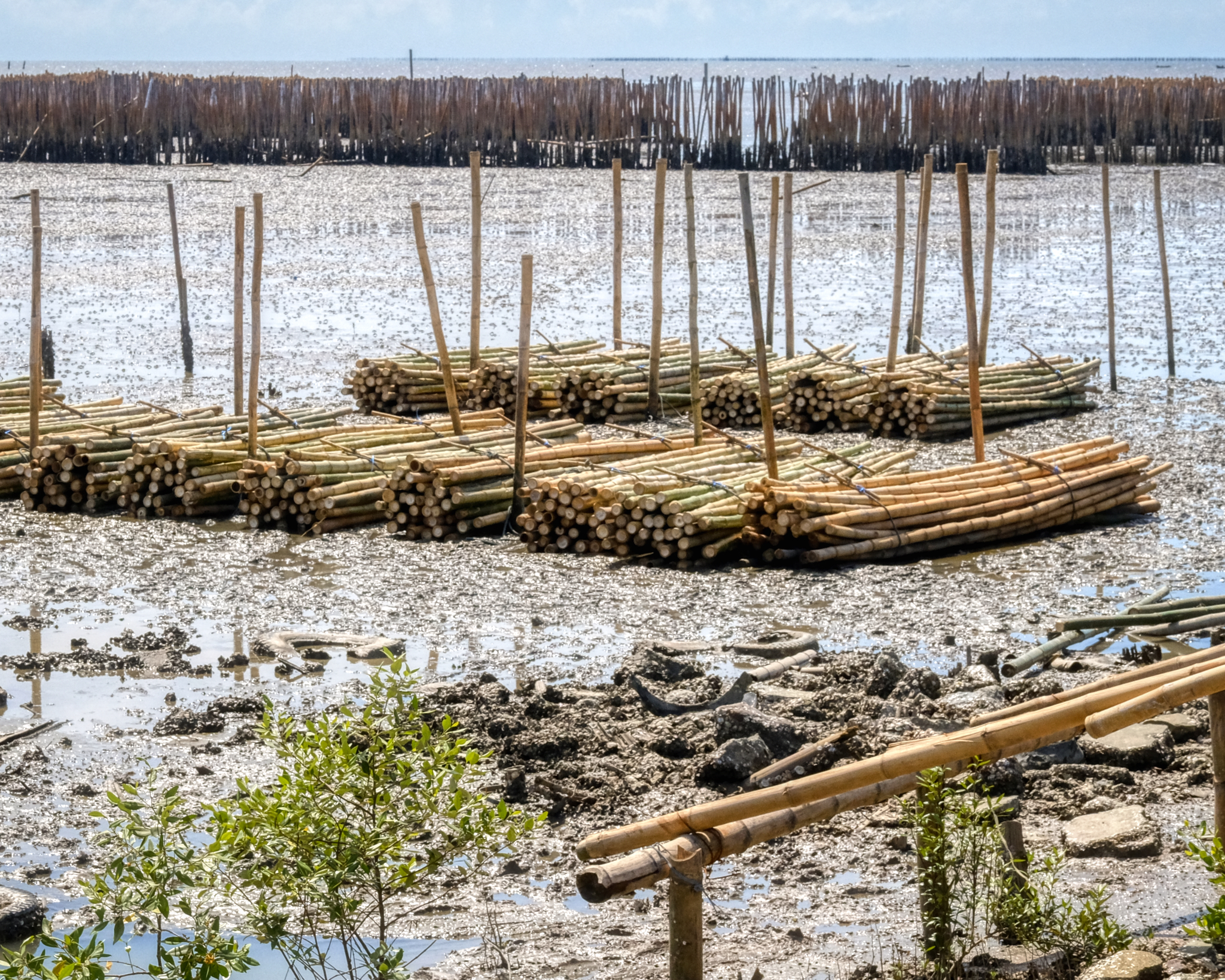 Fresh cut bamboo was being unloaded and made into rafts to bring out into the sea. This was a huge project . . .
Fresh cut bamboo was being unloaded and made into rafts to bring out into the sea. This was a huge project . . .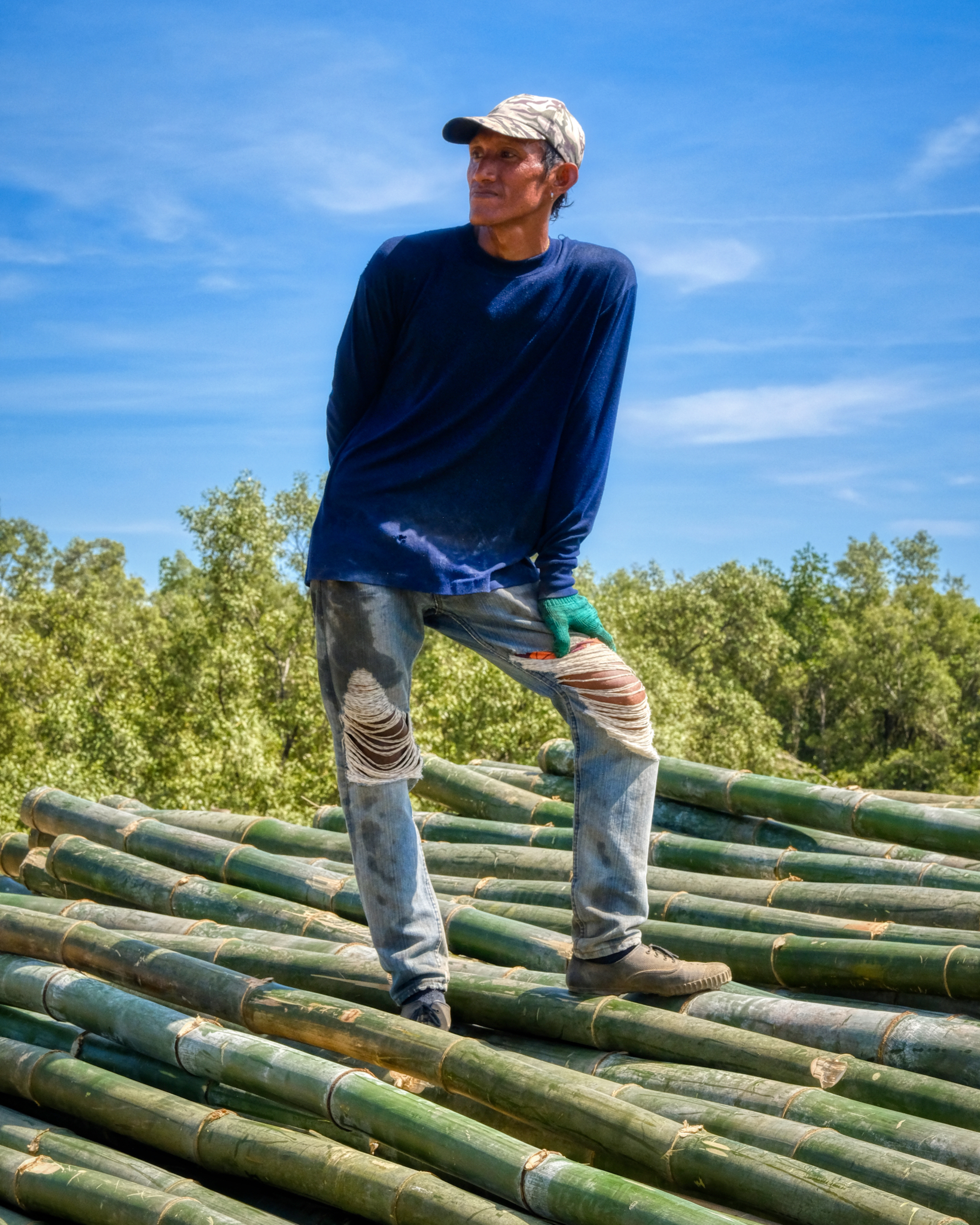 A Samut bamboo wrangler.
A Samut bamboo wrangler.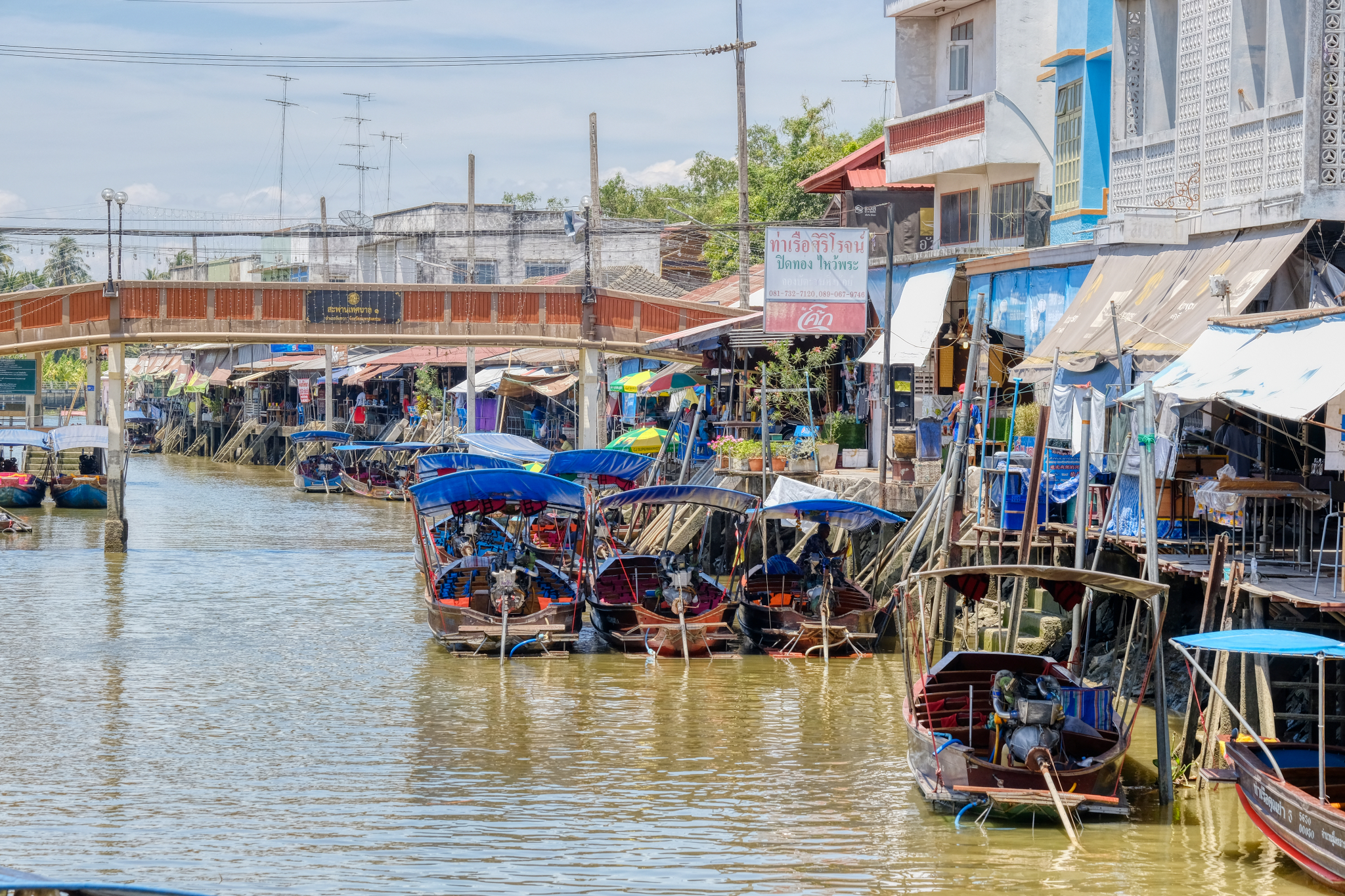 Our next stop was at the village of Amphawa, a floating market. Too much tourism has changed the feeling of this place since I last visited it nearly 20 years ago. It is still very charming . . . and visually interesting.
Our next stop was at the village of Amphawa, a floating market. Too much tourism has changed the feeling of this place since I last visited it nearly 20 years ago. It is still very charming . . . and visually interesting.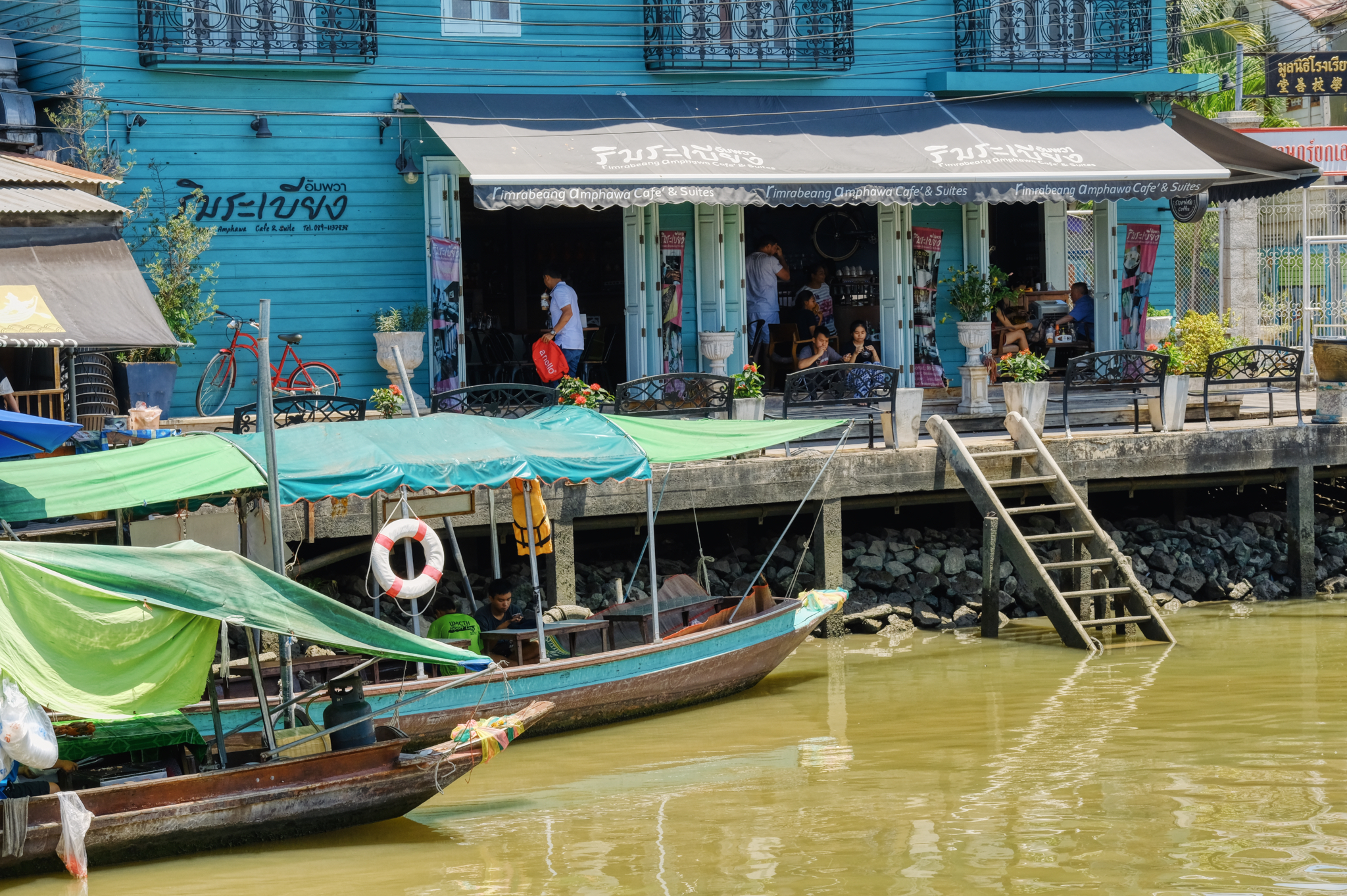 There are many very nice, upscale coffee shops and nice restaurants . . . a big change from an authentic fishing and market village.
There are many very nice, upscale coffee shops and nice restaurants . . . a big change from an authentic fishing and market village. 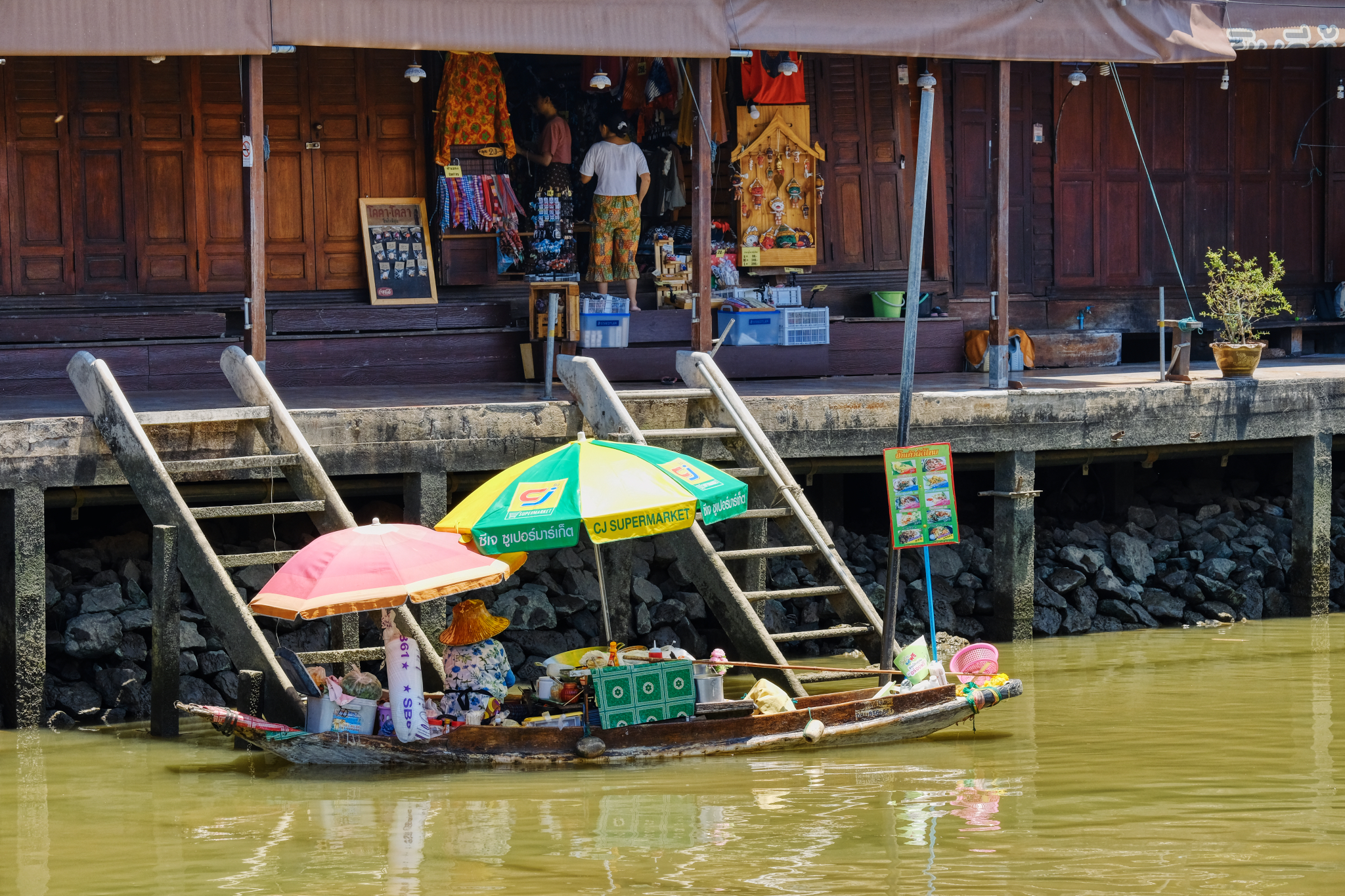 With the ambient temperature above 105(f) with high humidity, it was little wonder there were few people out and about.
With the ambient temperature above 105(f) with high humidity, it was little wonder there were few people out and about.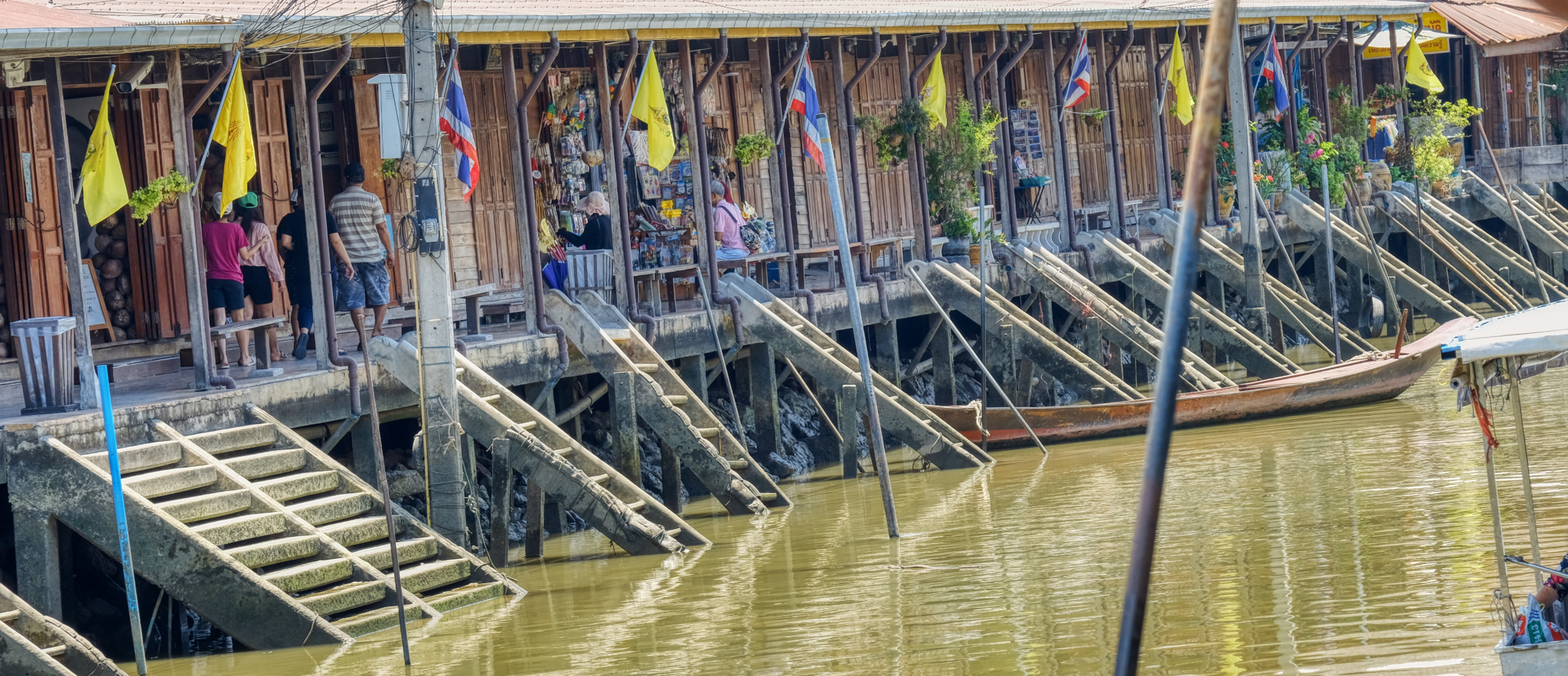 The repeating patterns of the klong access steps made for a fascinating study.
The repeating patterns of the klong access steps made for a fascinating study.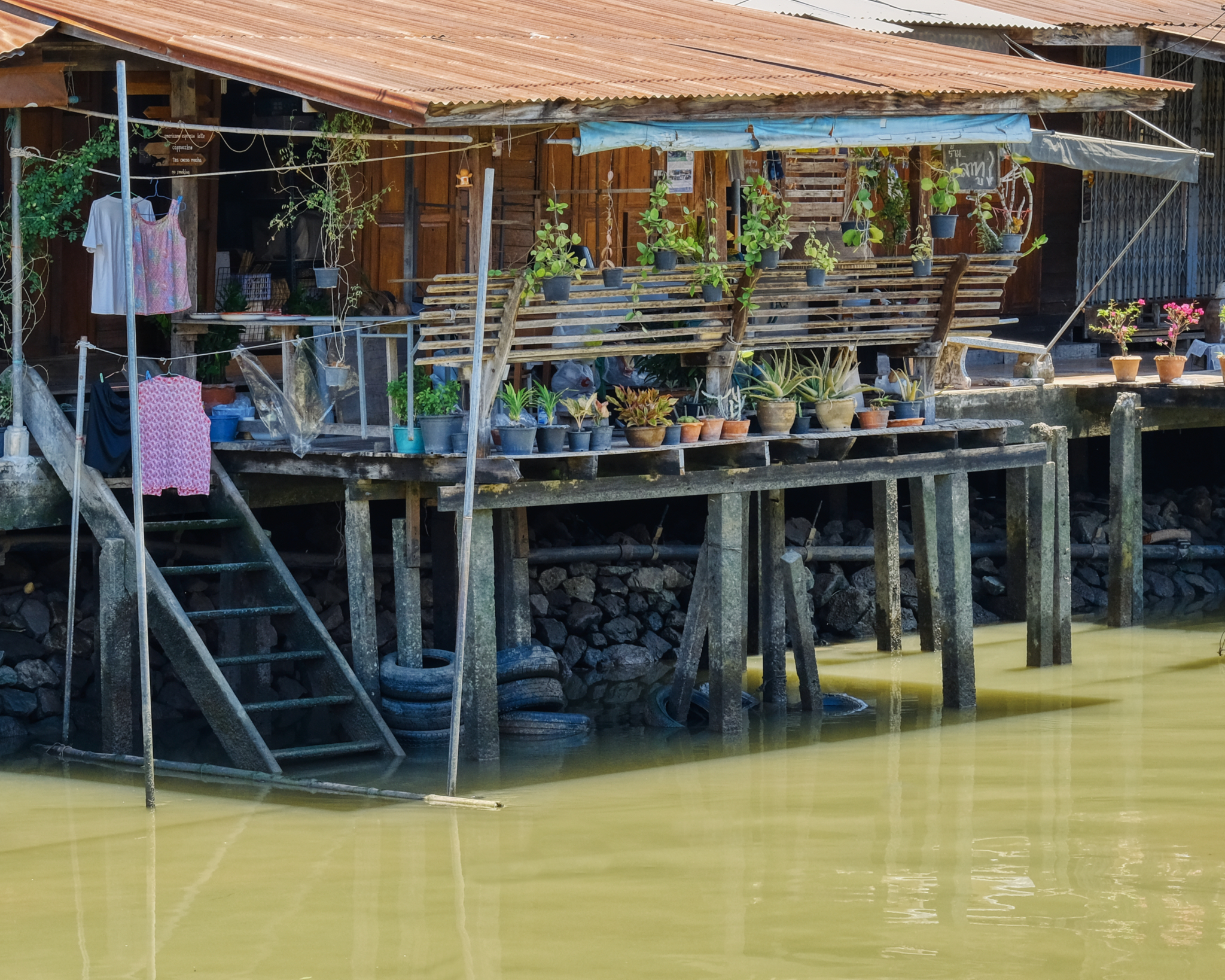 Life along the canal (klong) . . .
Life along the canal (klong) . . .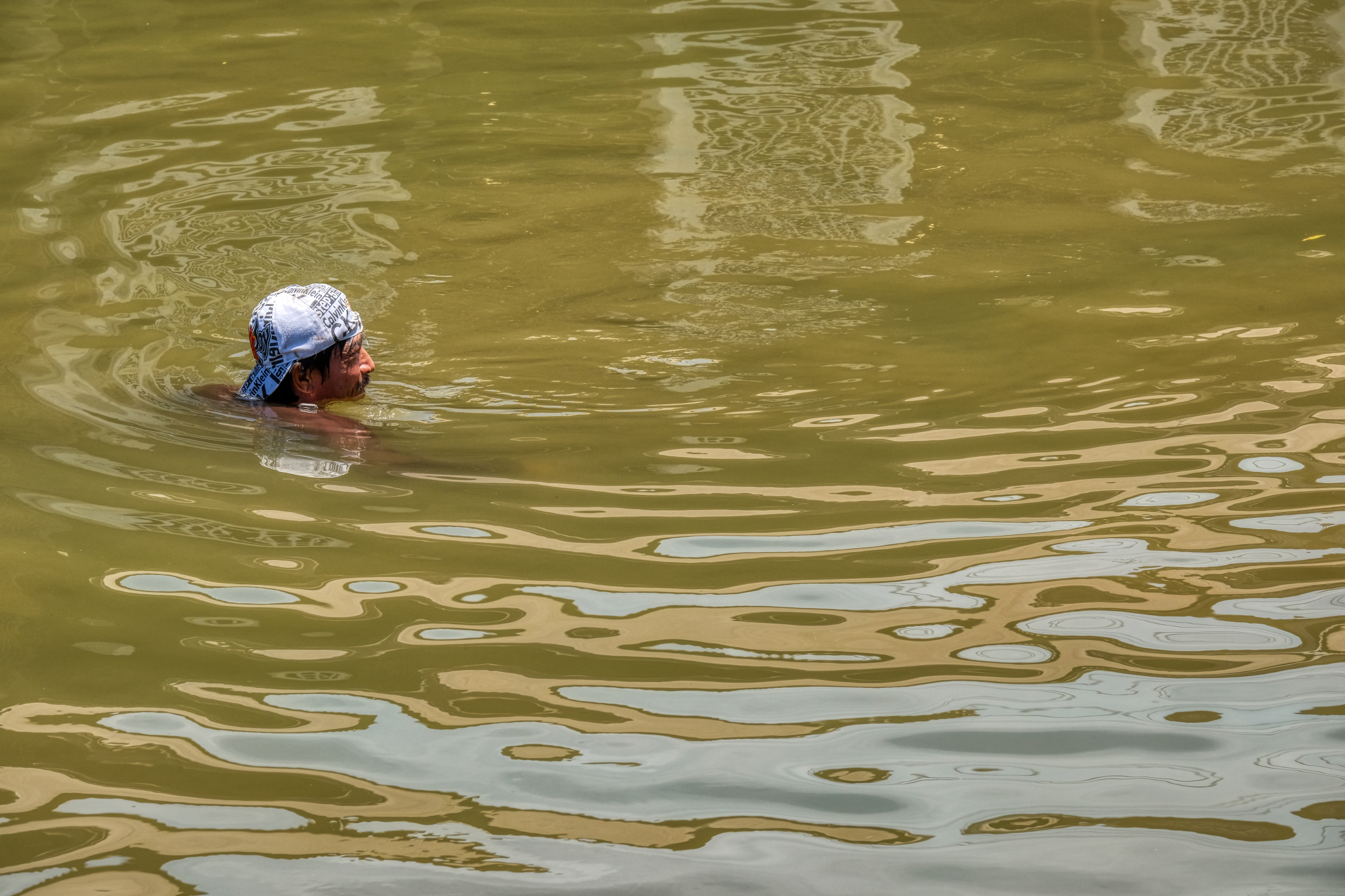 Swimming to beat the heat? No . . . fishing for bottom feeders with a long-handled net.
Swimming to beat the heat? No . . . fishing for bottom feeders with a long-handled net.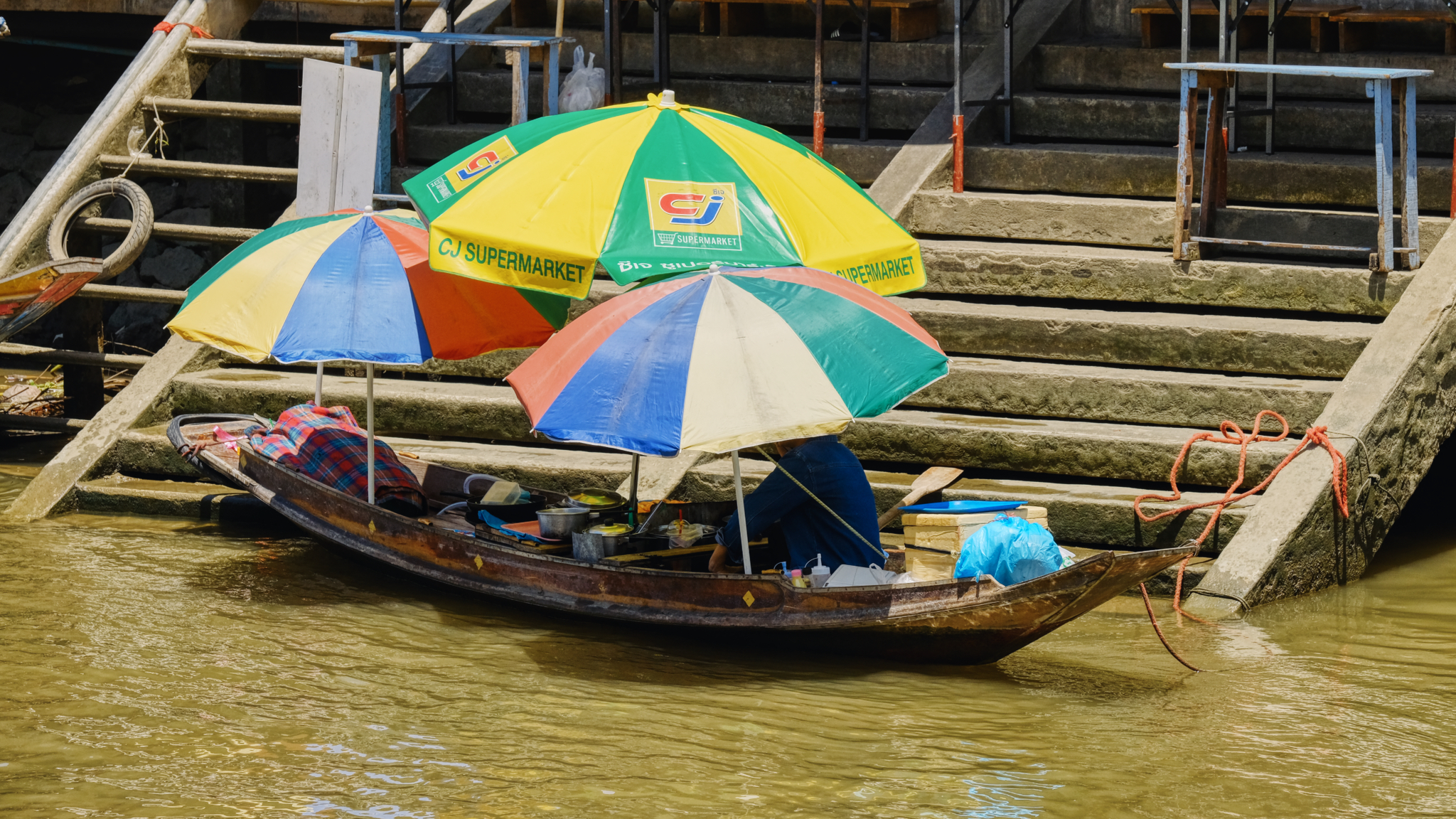 With few tourists around, and crushing heat, the boat vendors sat in quiet repose . . . waiting for a sale.
With few tourists around, and crushing heat, the boat vendors sat in quiet repose . . . waiting for a sale. When the canal is full of tourists in their small boats, these floating restaurants serve the water traffic.
When the canal is full of tourists in their small boats, these floating restaurants serve the water traffic.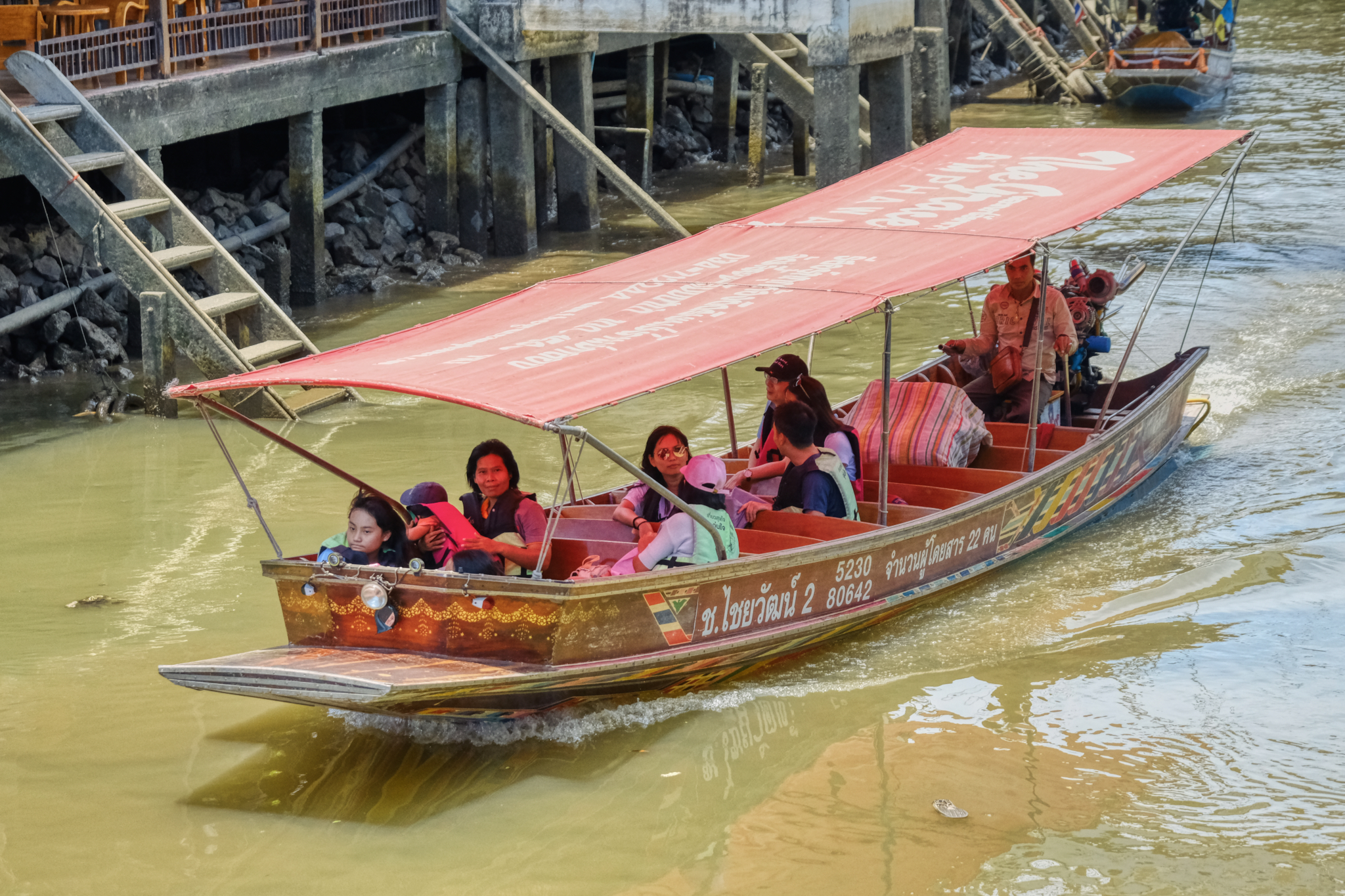 This was the only tourist boat we say all afternoon . . . and they looked HOT!
This was the only tourist boat we say all afternoon . . . and they looked HOT!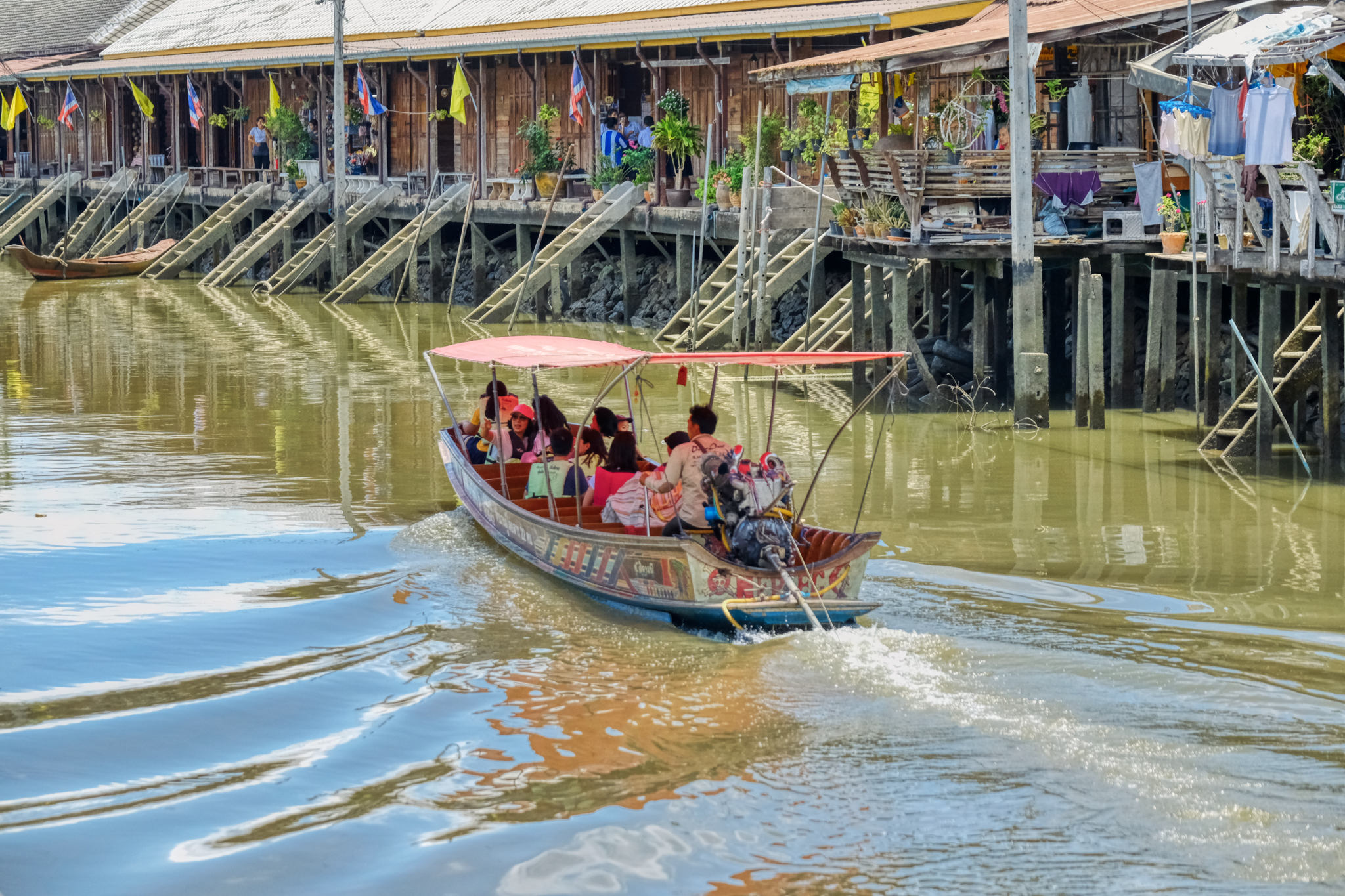 In some respects, this might be the best time of year to visit Amphawa . . . the rest of the year it is overcrowded with tourists. They had the place to themselves.
In some respects, this might be the best time of year to visit Amphawa . . . the rest of the year it is overcrowded with tourists. They had the place to themselves.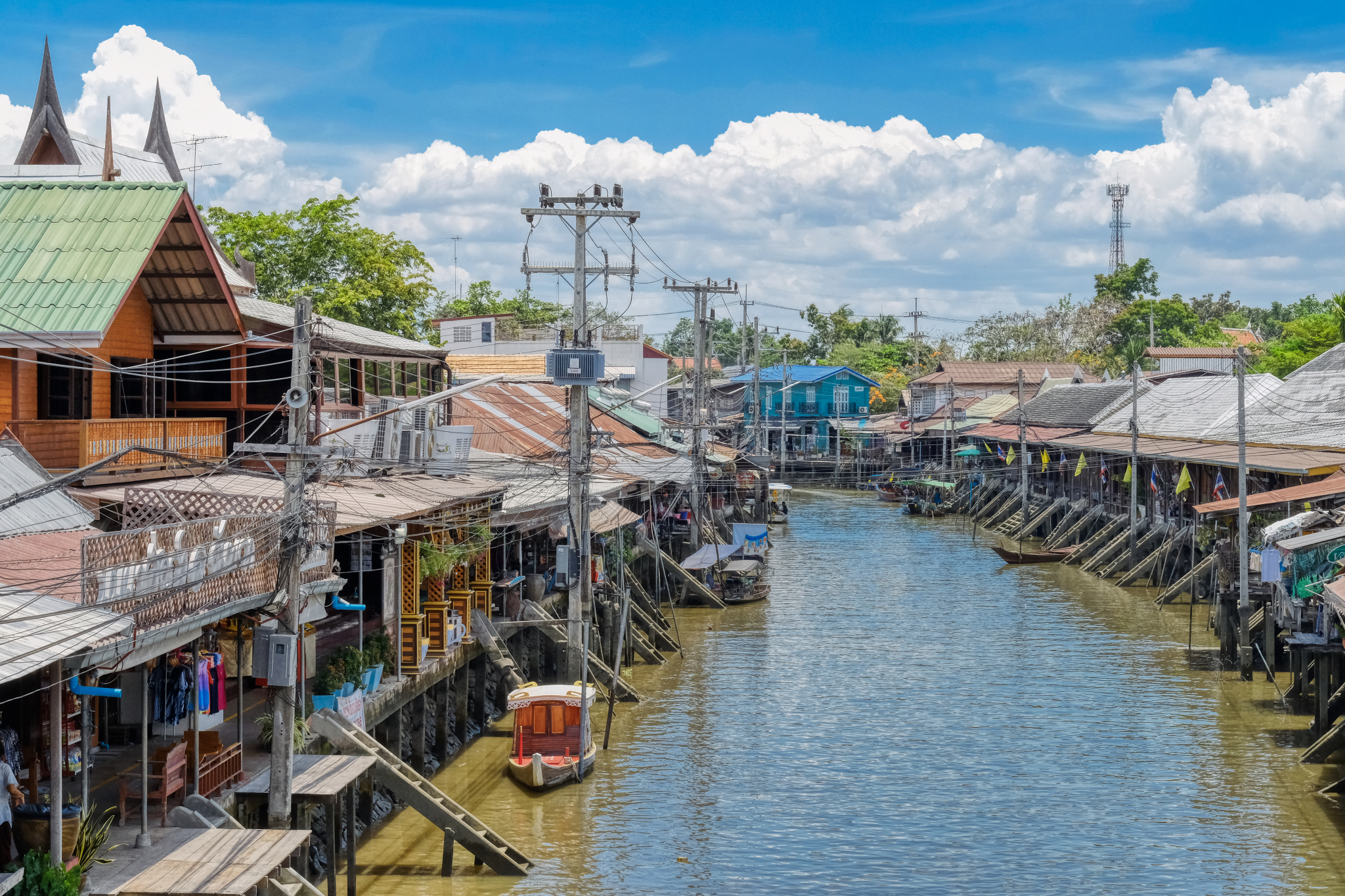 Standing on a bridge over the canal . . and a view one way . . . and . . .
Standing on a bridge over the canal . . and a view one way . . . and . . .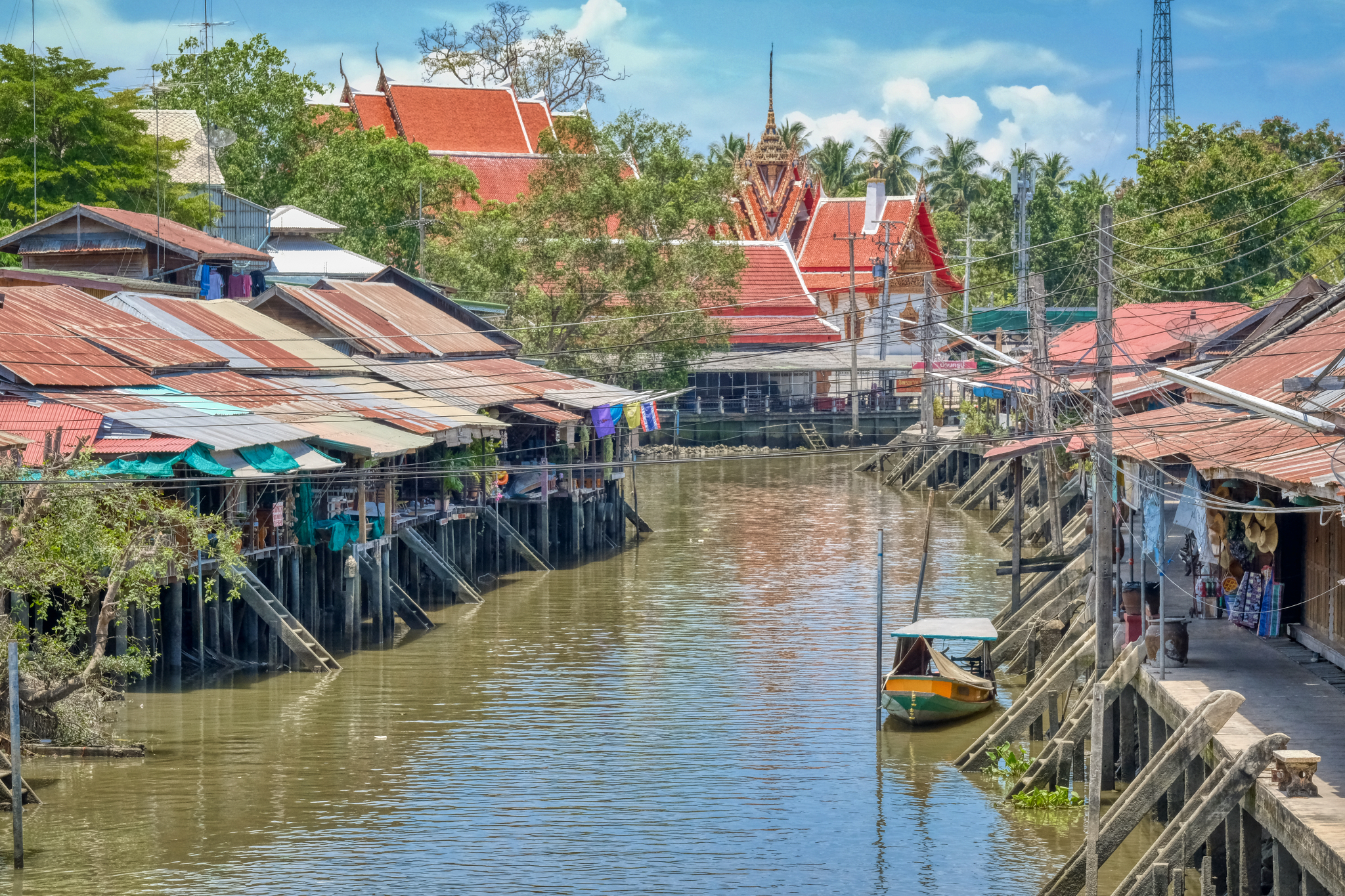 . . . the view in the other direction toward a Buddhist temple (wat).
. . . the view in the other direction toward a Buddhist temple (wat).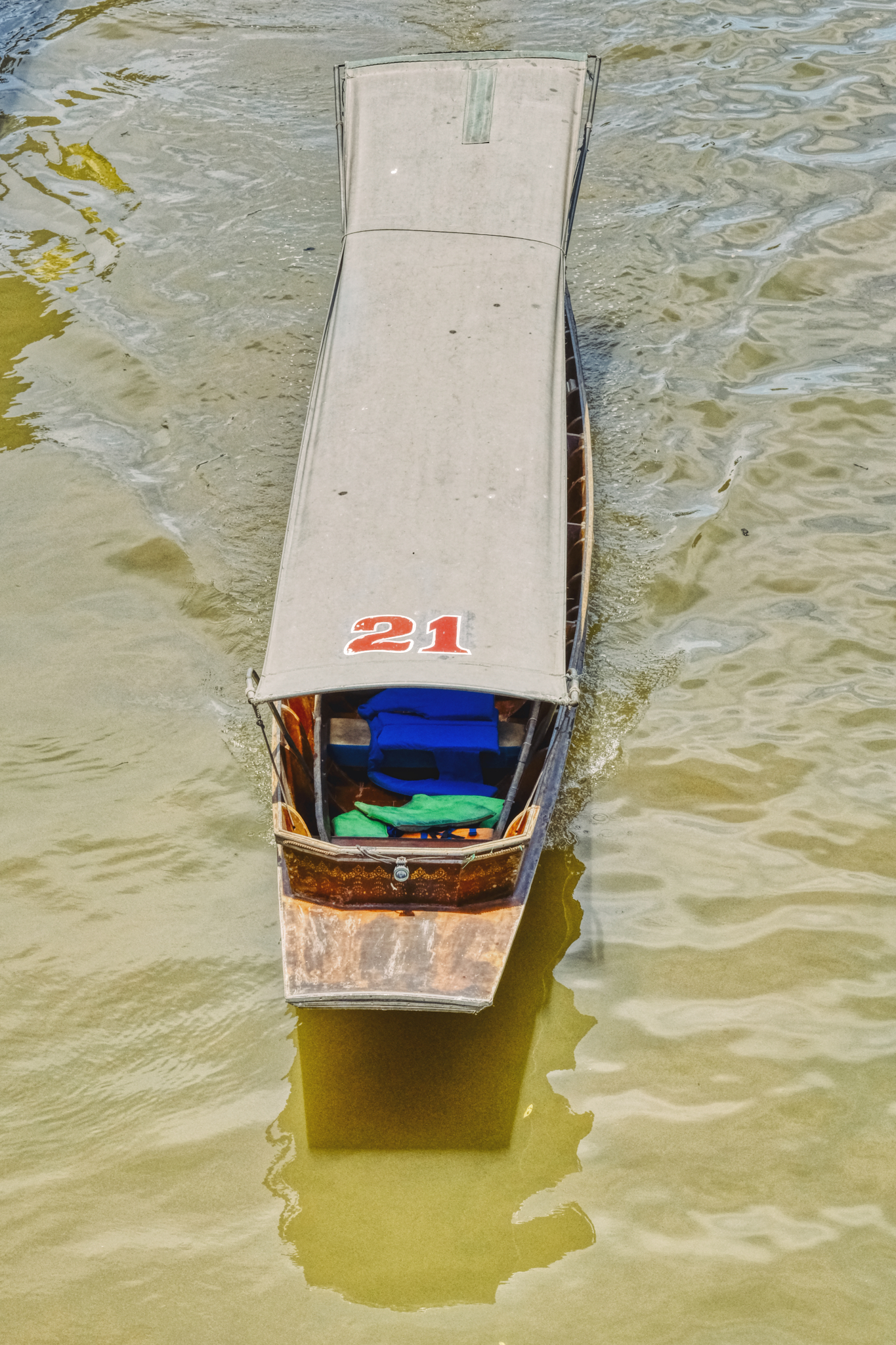 A tourist boat cruising for a fare . . . unsuccessfully.
A tourist boat cruising for a fare . . . unsuccessfully.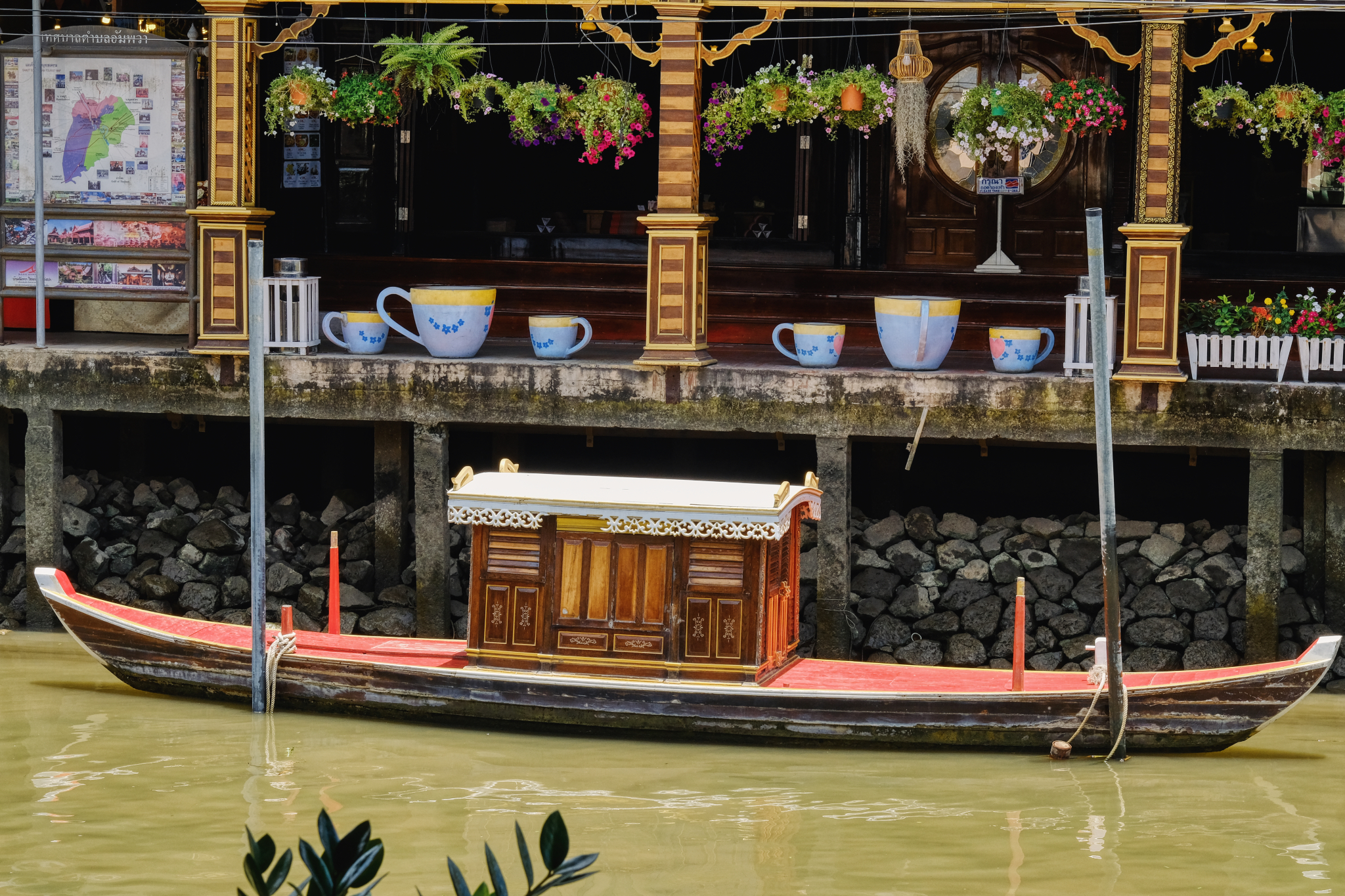 That looks inviting. We went over to this marvelous Old Thai style coffee house for some ice coffee and cold water.
That looks inviting. We went over to this marvelous Old Thai style coffee house for some ice coffee and cold water.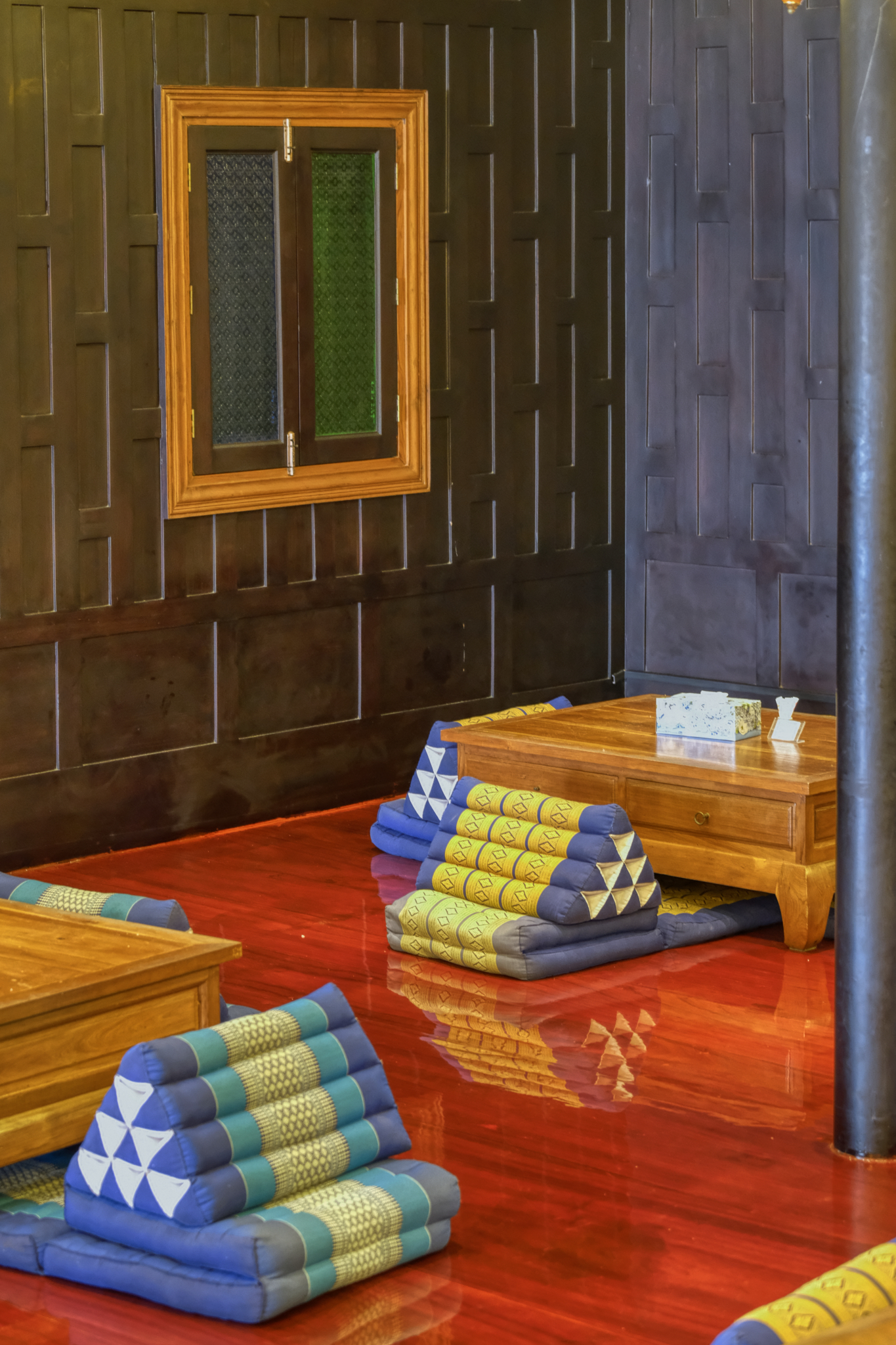 Such a beautiful place to rest, replenish, hydrate, and sit in front of some fans.
Such a beautiful place to rest, replenish, hydrate, and sit in front of some fans.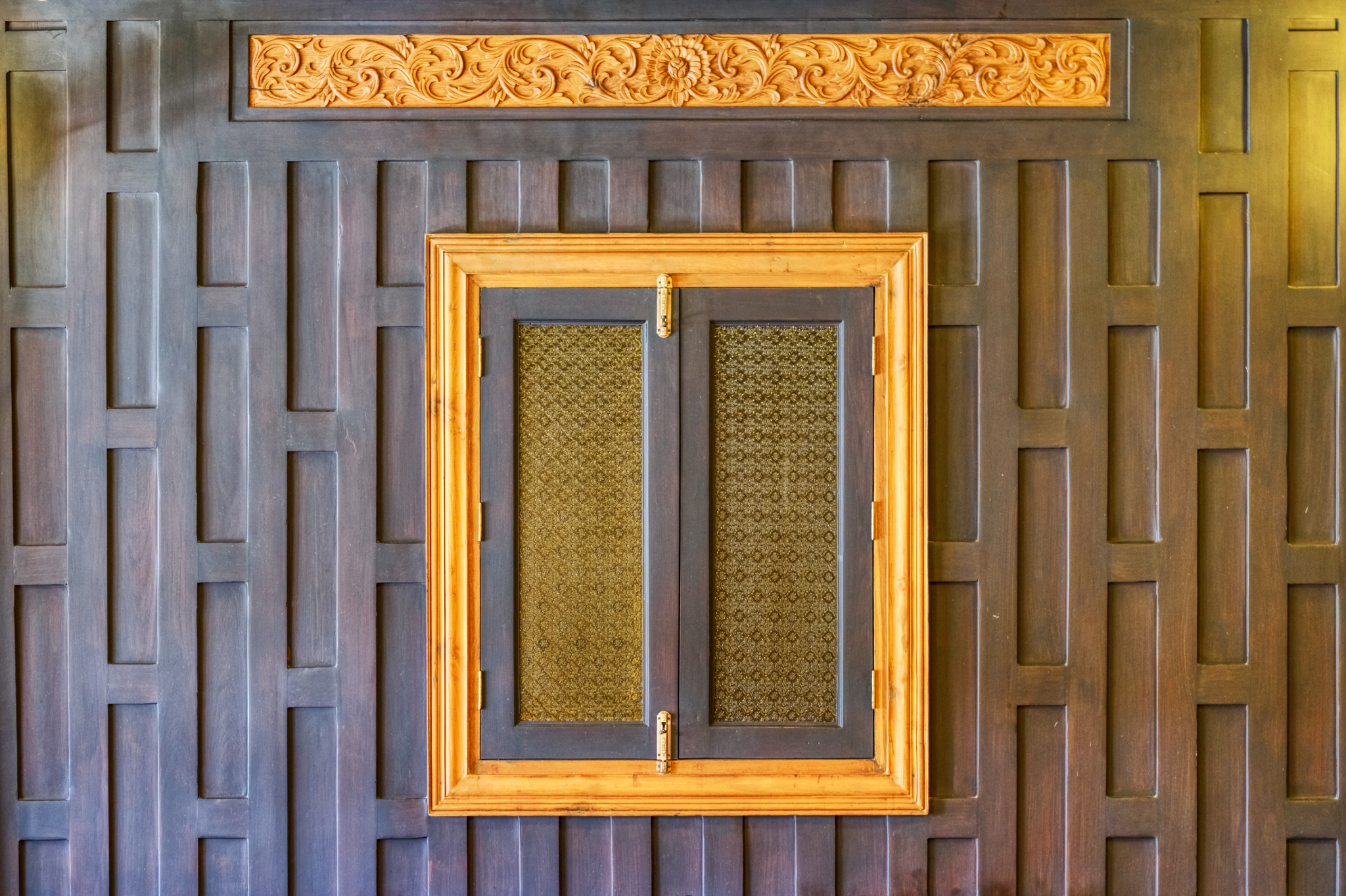 Old Thai style wood panels are so beautiful.
Old Thai style wood panels are so beautiful.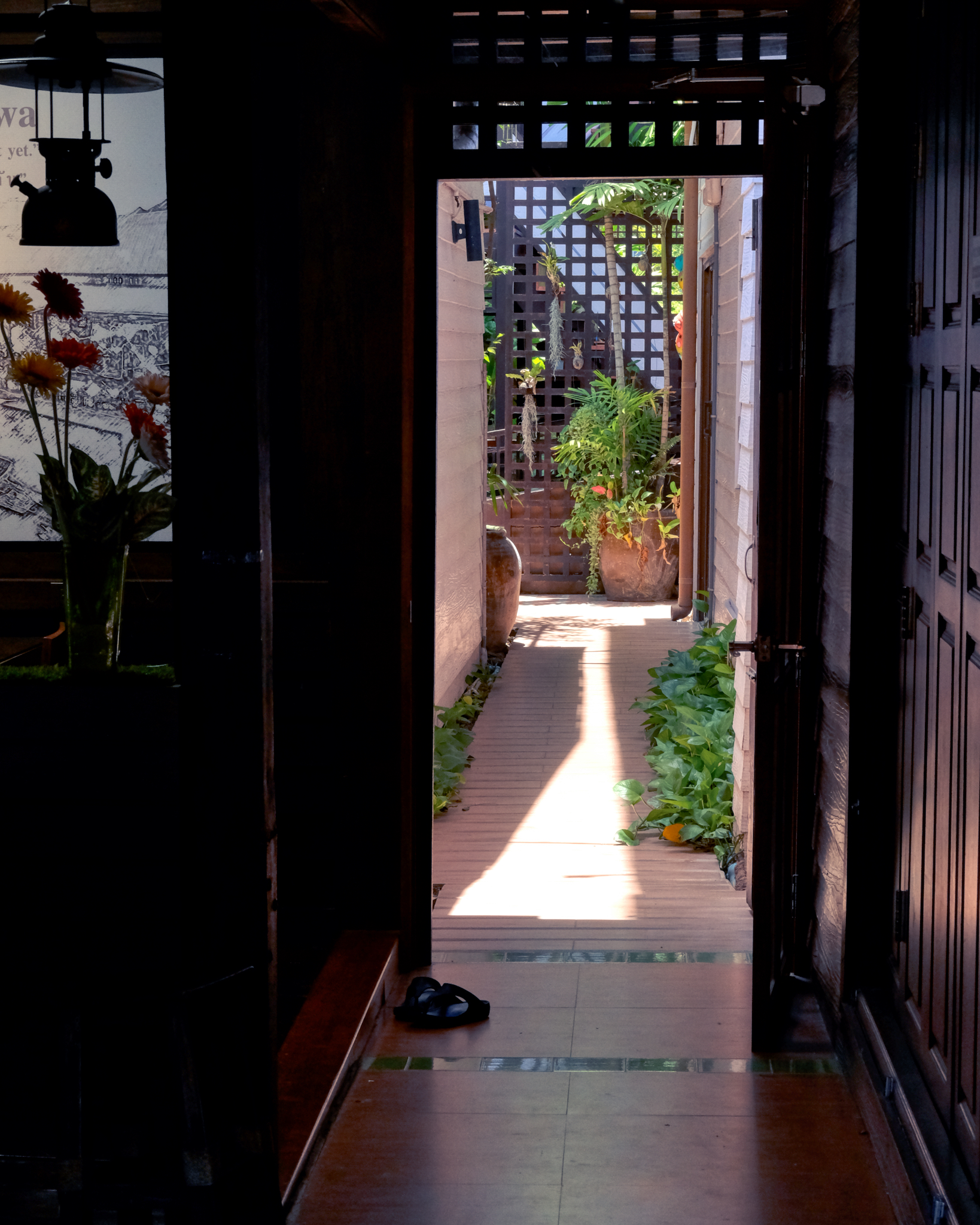 After a break we walked along he wooden boardwalks and secretly peaked into the houses. Such serene stillness in the oppressive heat and humidity.
After a break we walked along he wooden boardwalks and secretly peaked into the houses. Such serene stillness in the oppressive heat and humidity.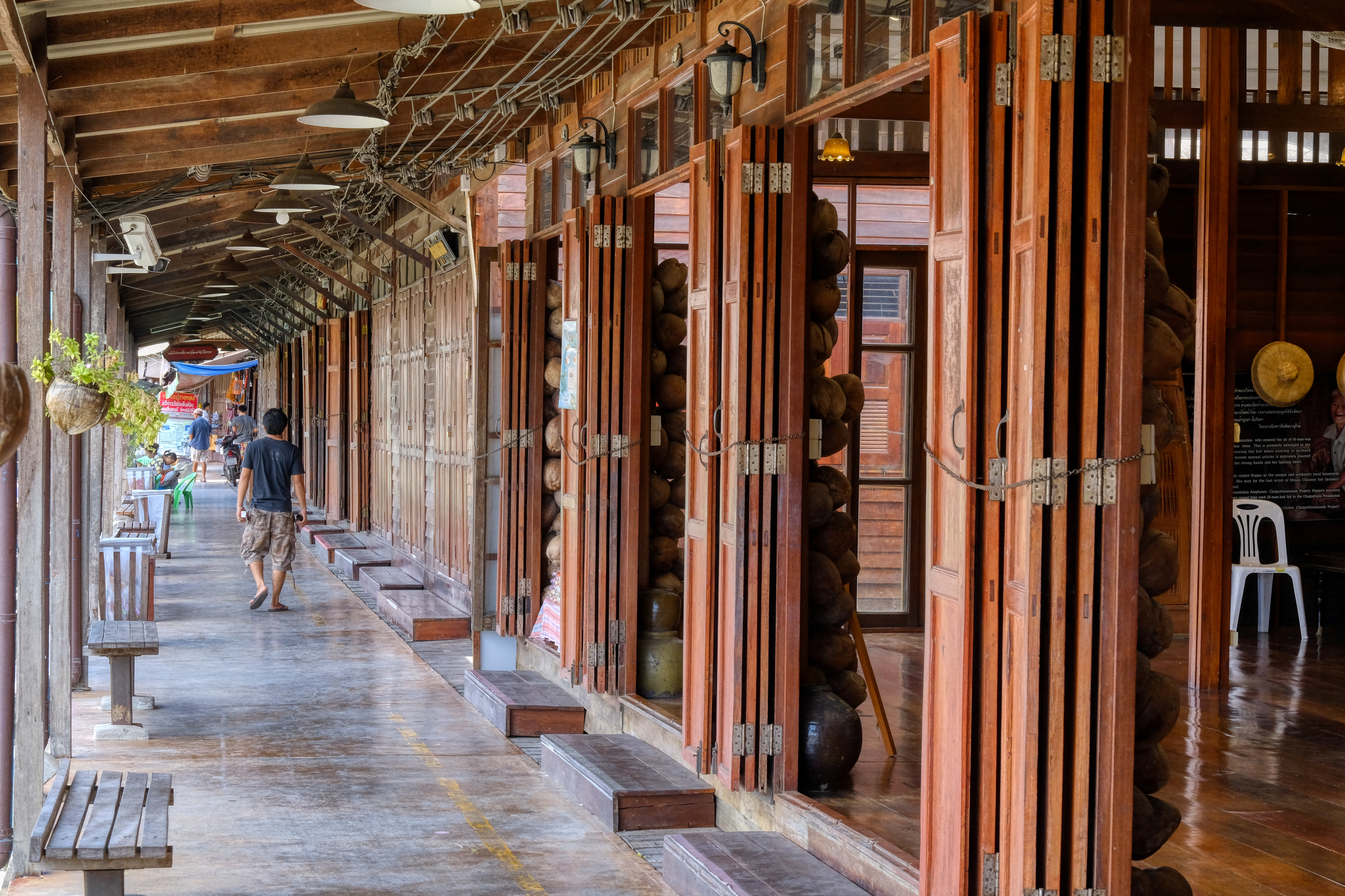 We took our time meandering along the shops . . . and this nice museum of the history of canal life.
We took our time meandering along the shops . . . and this nice museum of the history of canal life.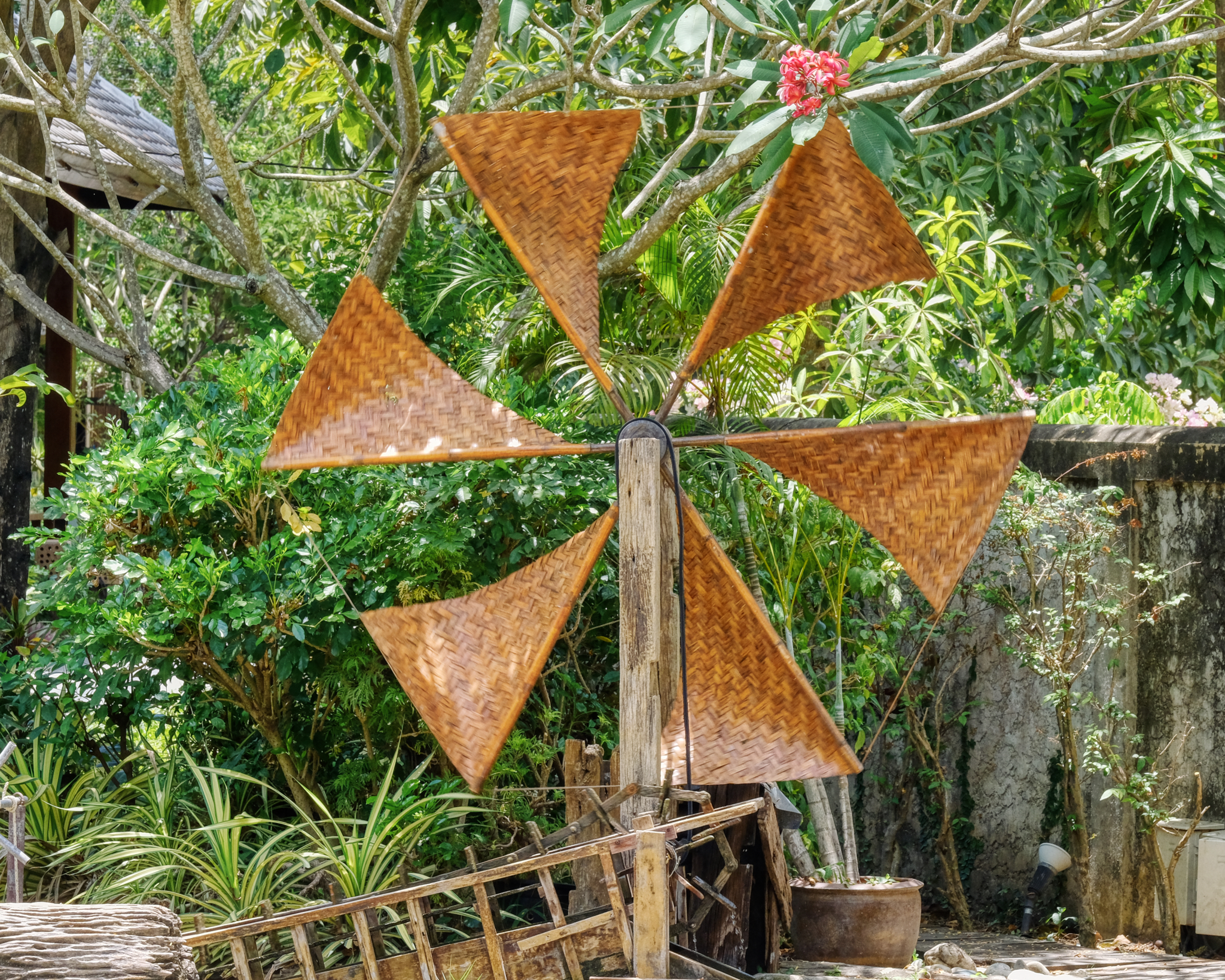 A spinning windmill behind the museum.
A spinning windmill behind the museum.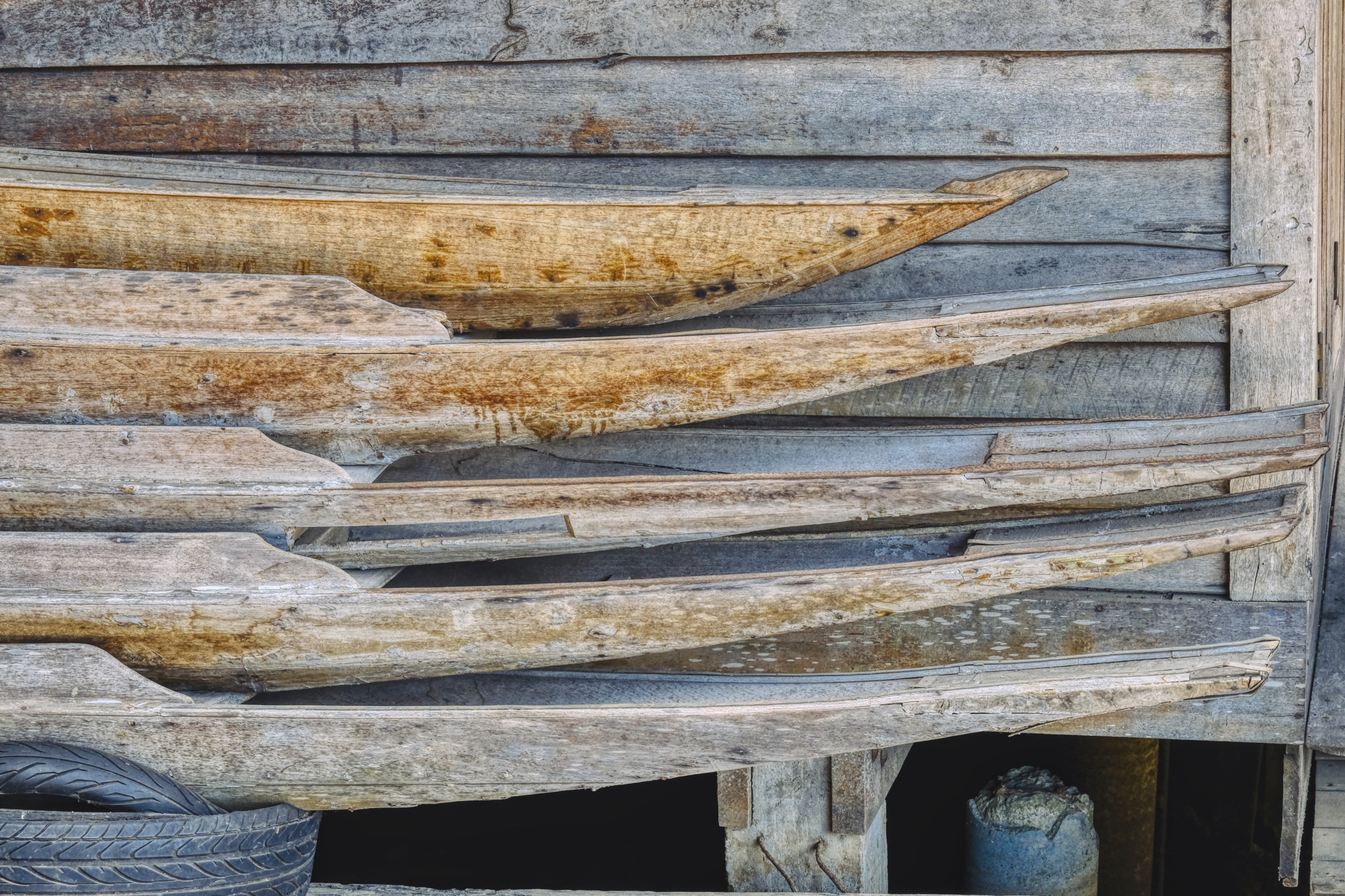 Antique canoes stacked along side the museum.
Antique canoes stacked along side the museum.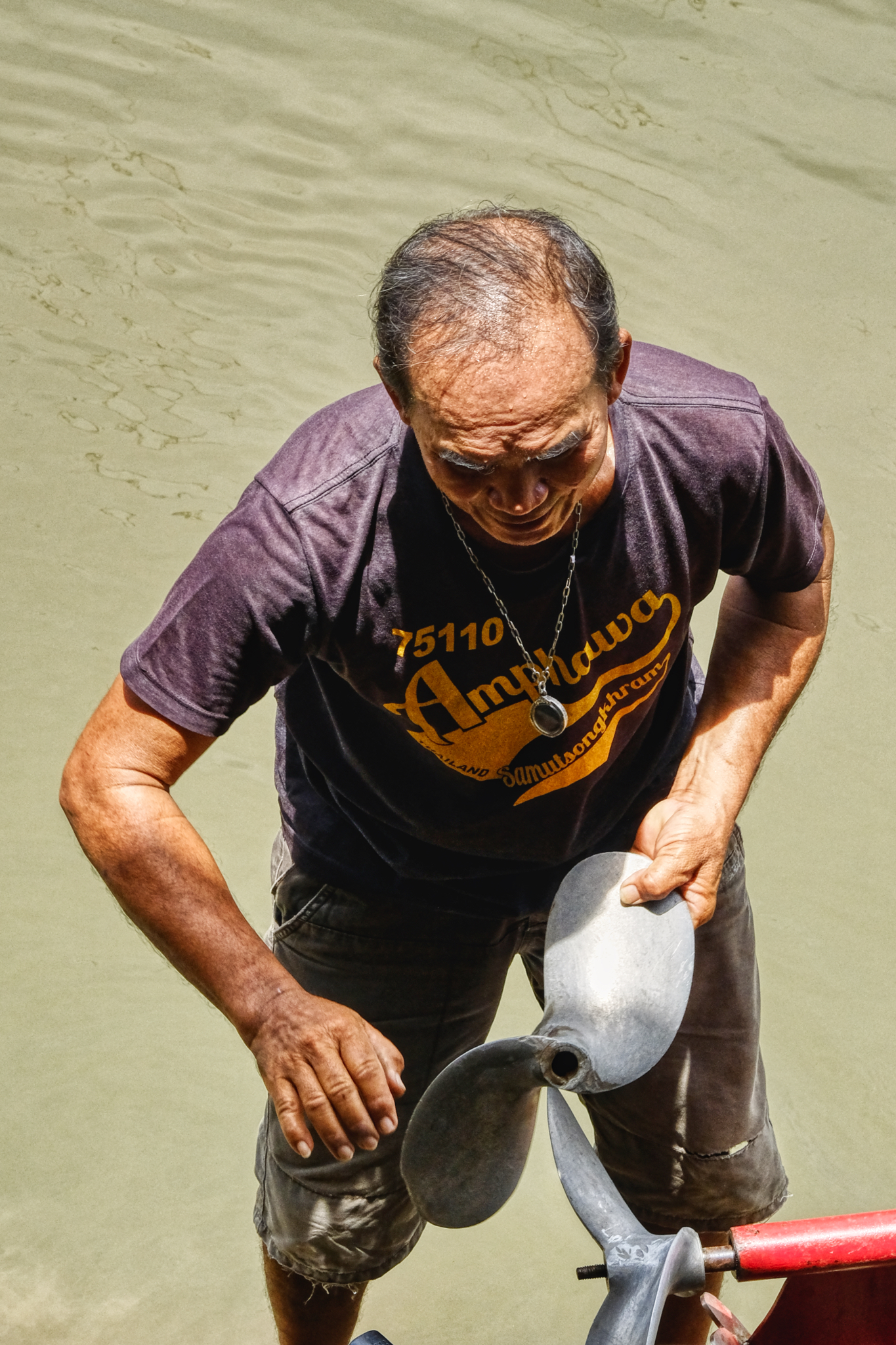 Even as hot as it was, the propeller still needed repairing.
Even as hot as it was, the propeller still needed repairing. The tourist boas were beautifully decorated . . . in hopes of attracting business . . . which never came on this scorching day.
The tourist boas were beautifully decorated . . . in hopes of attracting business . . . which never came on this scorching day. The ladies in their food stall boats congregated to swat flies and swap lies, as they say. Not much else to do.
The ladies in their food stall boats congregated to swat flies and swap lies, as they say. Not much else to do.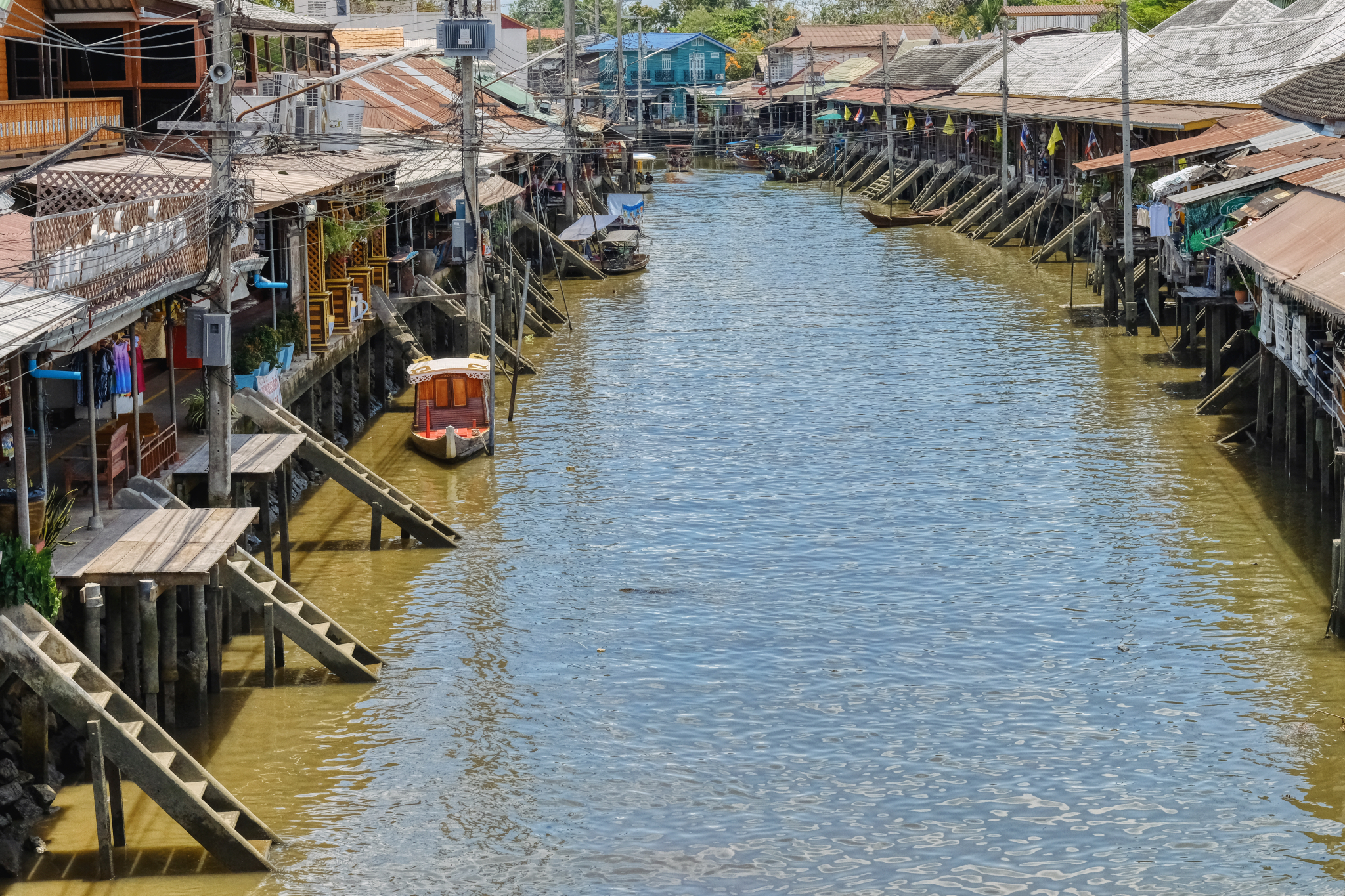 Back over the bridge toward the car. The hot day nearly over . . . the car air-conditioner is calling.
Back over the bridge toward the car. The hot day nearly over . . . the car air-conditioner is calling.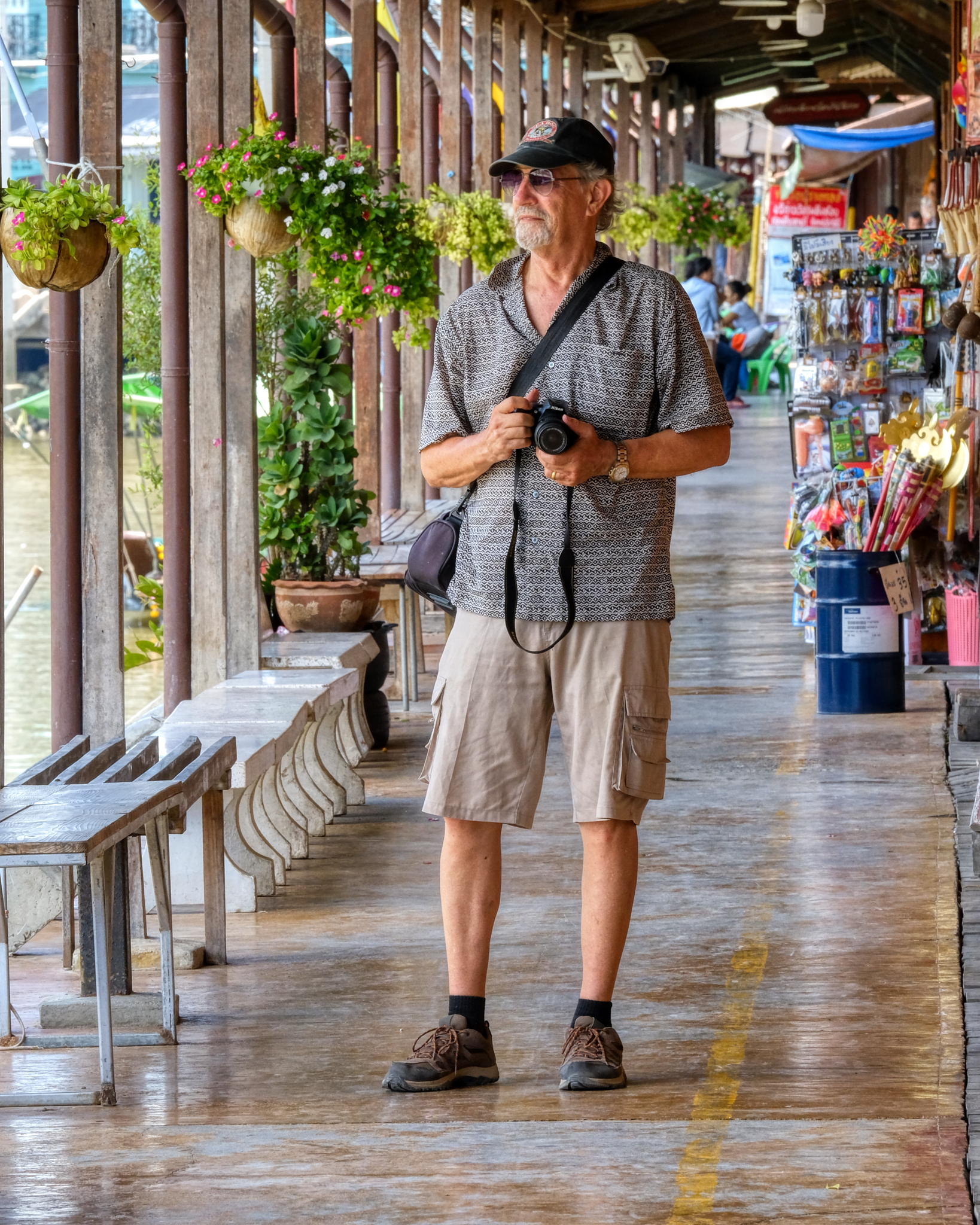 My friend John always on the look out for an amazing image.
My friend John always on the look out for an amazing image. We descended down into the sea of sun parasols and the tourist curios.
We descended down into the sea of sun parasols and the tourist curios.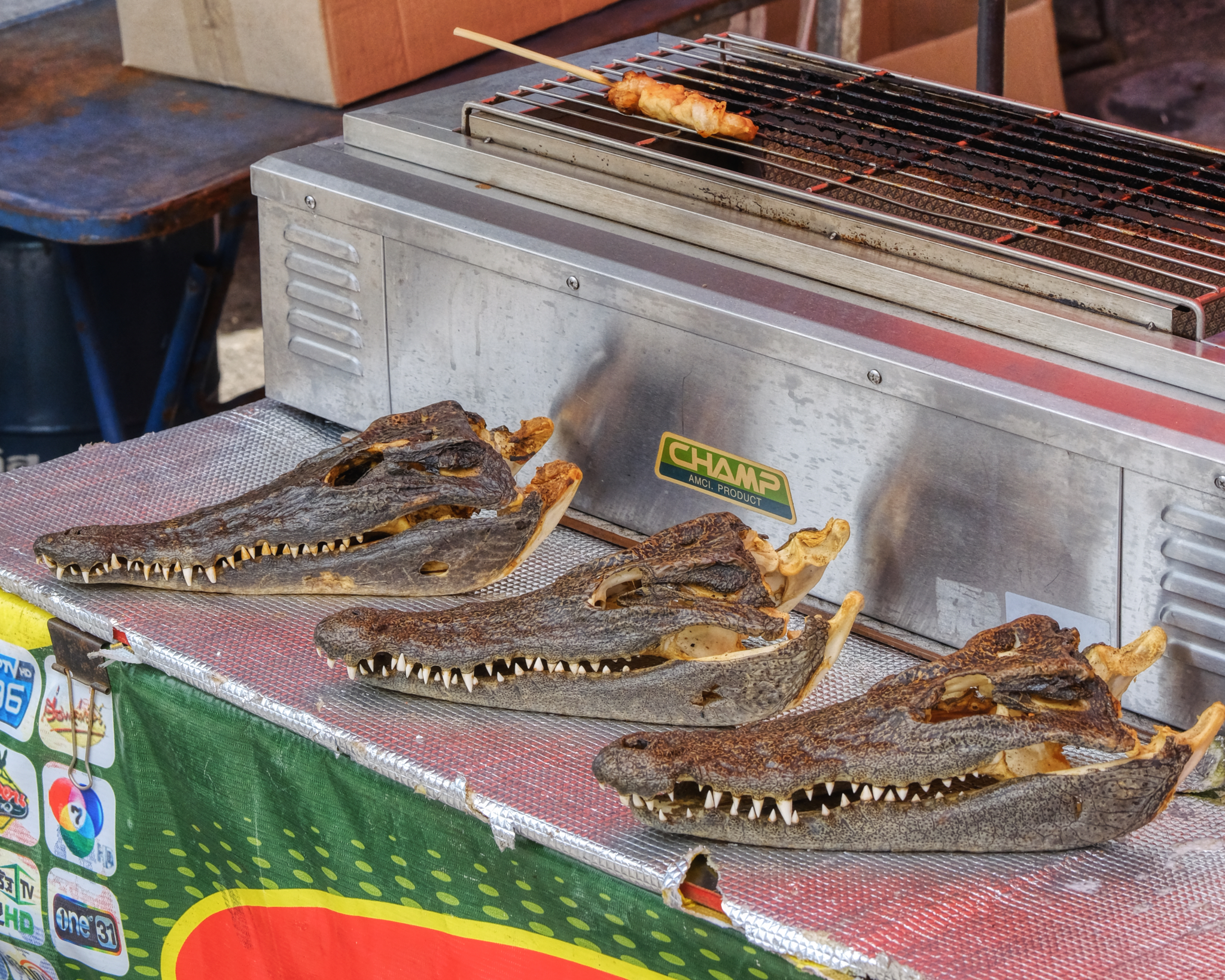 Our last act was to buy a 'croc-on-a-stick' brochet . . . Yes, it did taste like chicken, which makes a kind of sense since crocodiles are actually surviving dinosaurs . . . and birds are dinosaur descendants. We worried all the way back home that we could have eaten 'bad crocodile' . . . . but we were fine . . . no intestinal turmoil after all.
Our last act was to buy a 'croc-on-a-stick' brochet . . . Yes, it did taste like chicken, which makes a kind of sense since crocodiles are actually surviving dinosaurs . . . and birds are dinosaur descendants. We worried all the way back home that we could have eaten 'bad crocodile' . . . . but we were fine . . . no intestinal turmoil after all. 